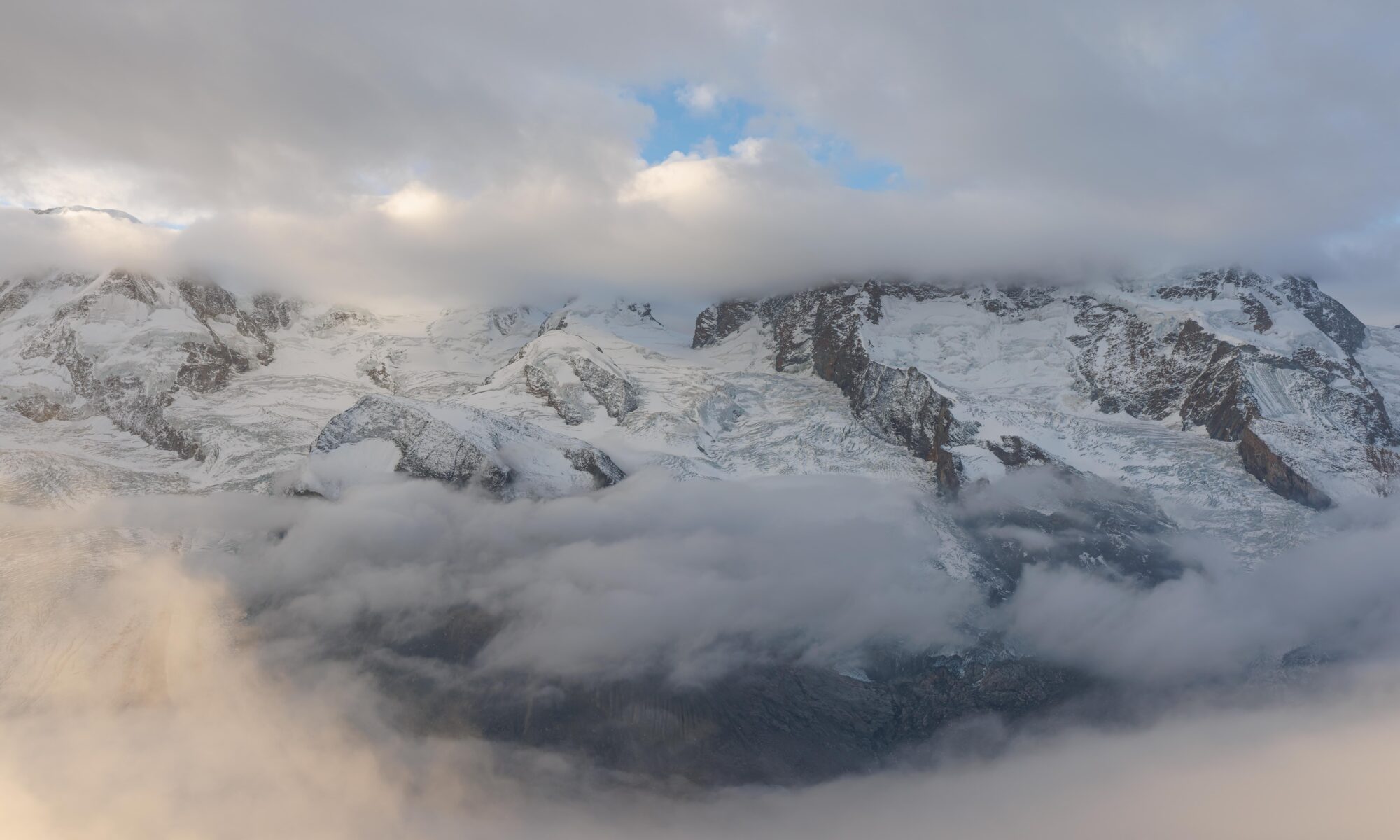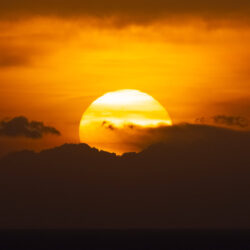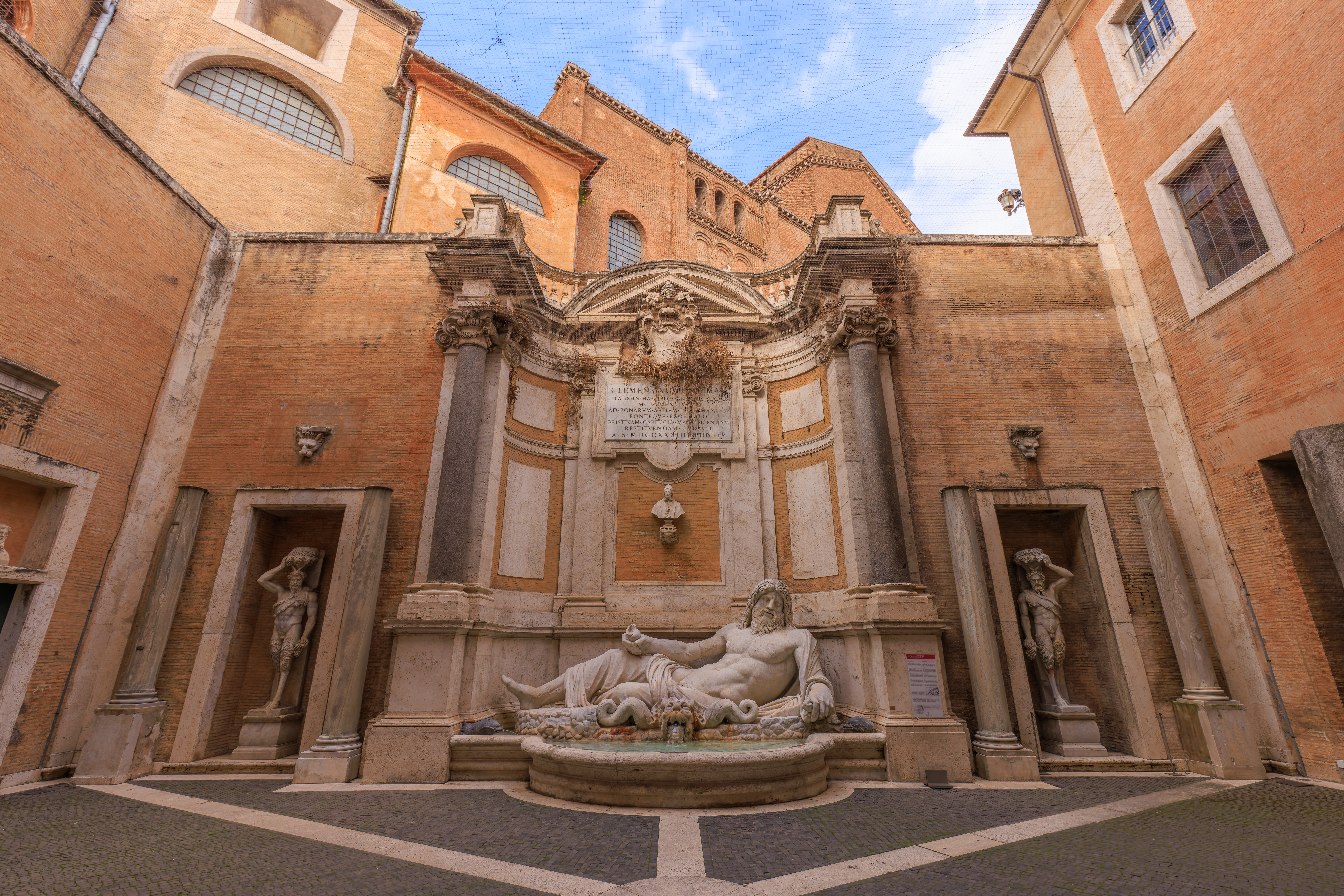After breakfast at the W, we visited the Basilica of Santa Maria Maggiore. After, we visited the Basilicas of San Silvestro in Capite and Santa Maria in Aracoeli before spending the afternoon at the Capitoline Museums. We then walked over to a restaurant by the Circus Maximus and below the Palatine for dinner, visiting two more churches on the way.
Morning
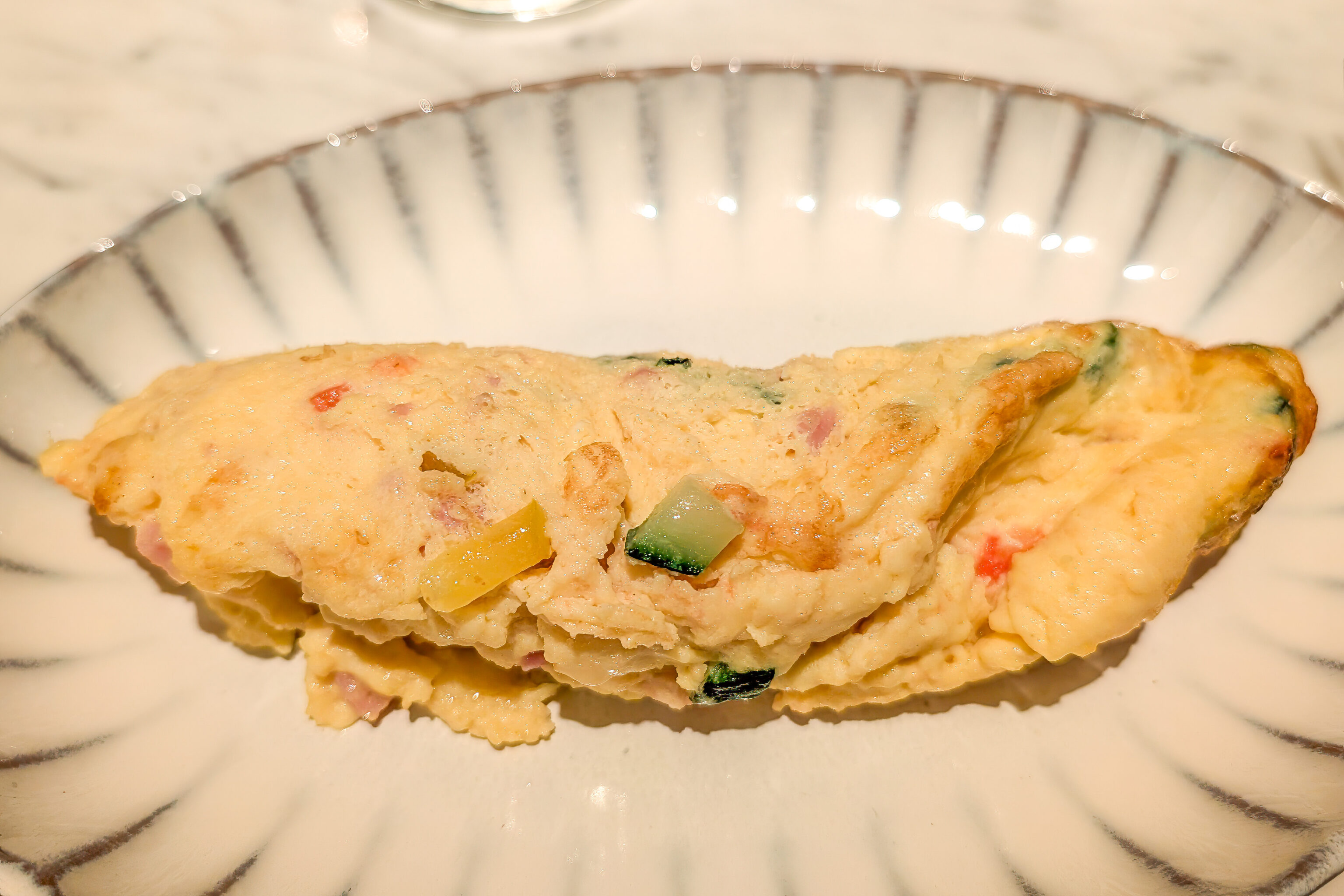
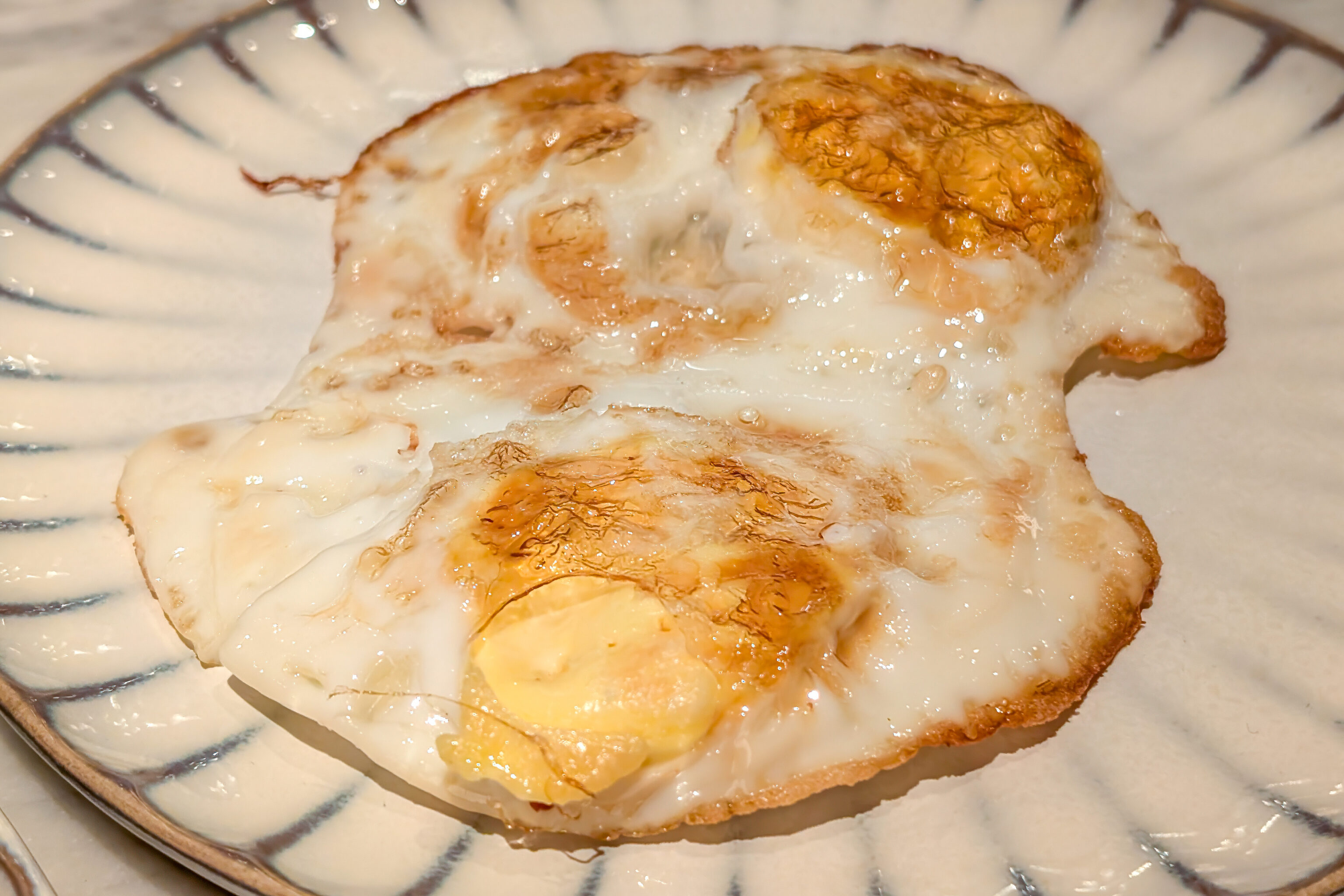

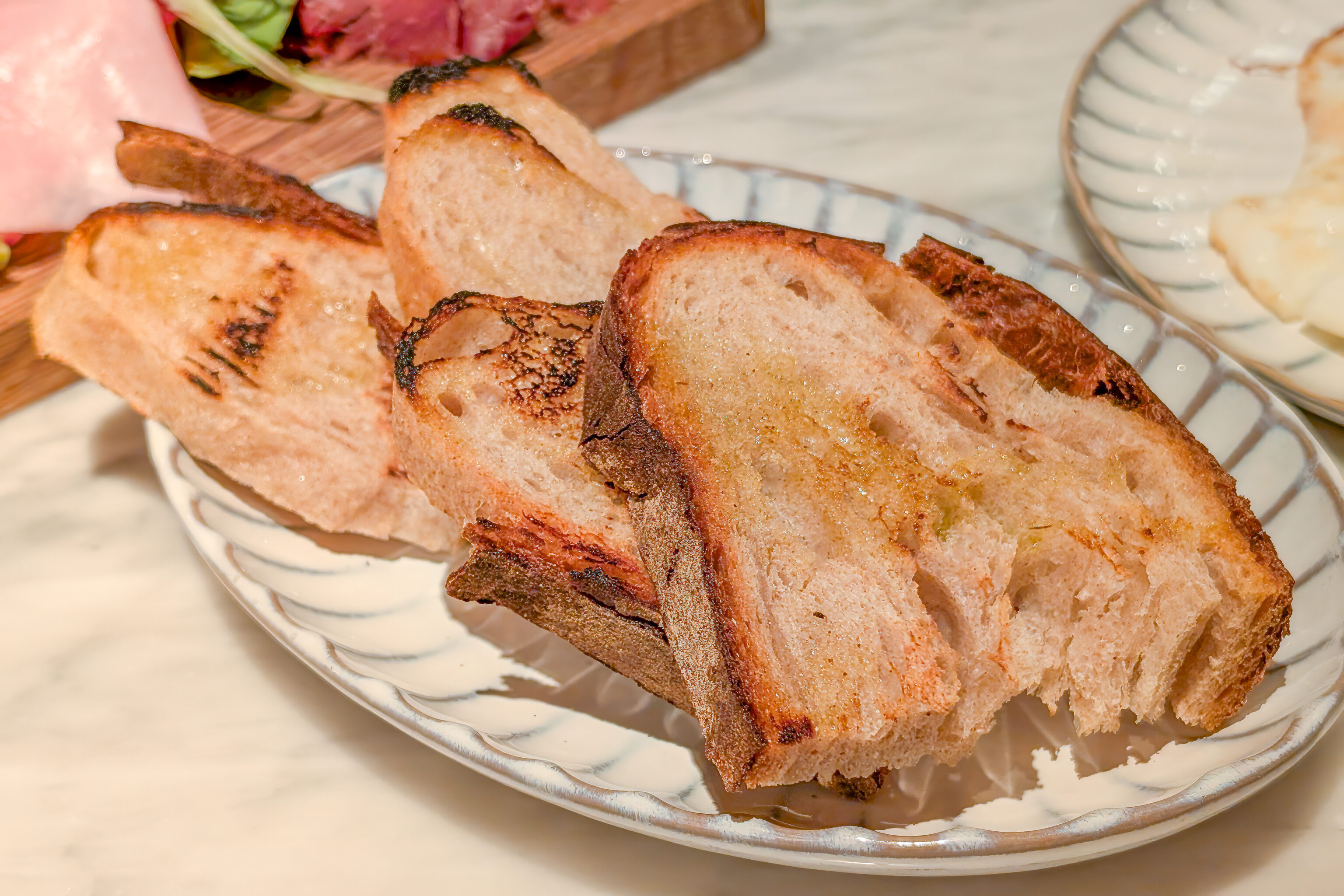
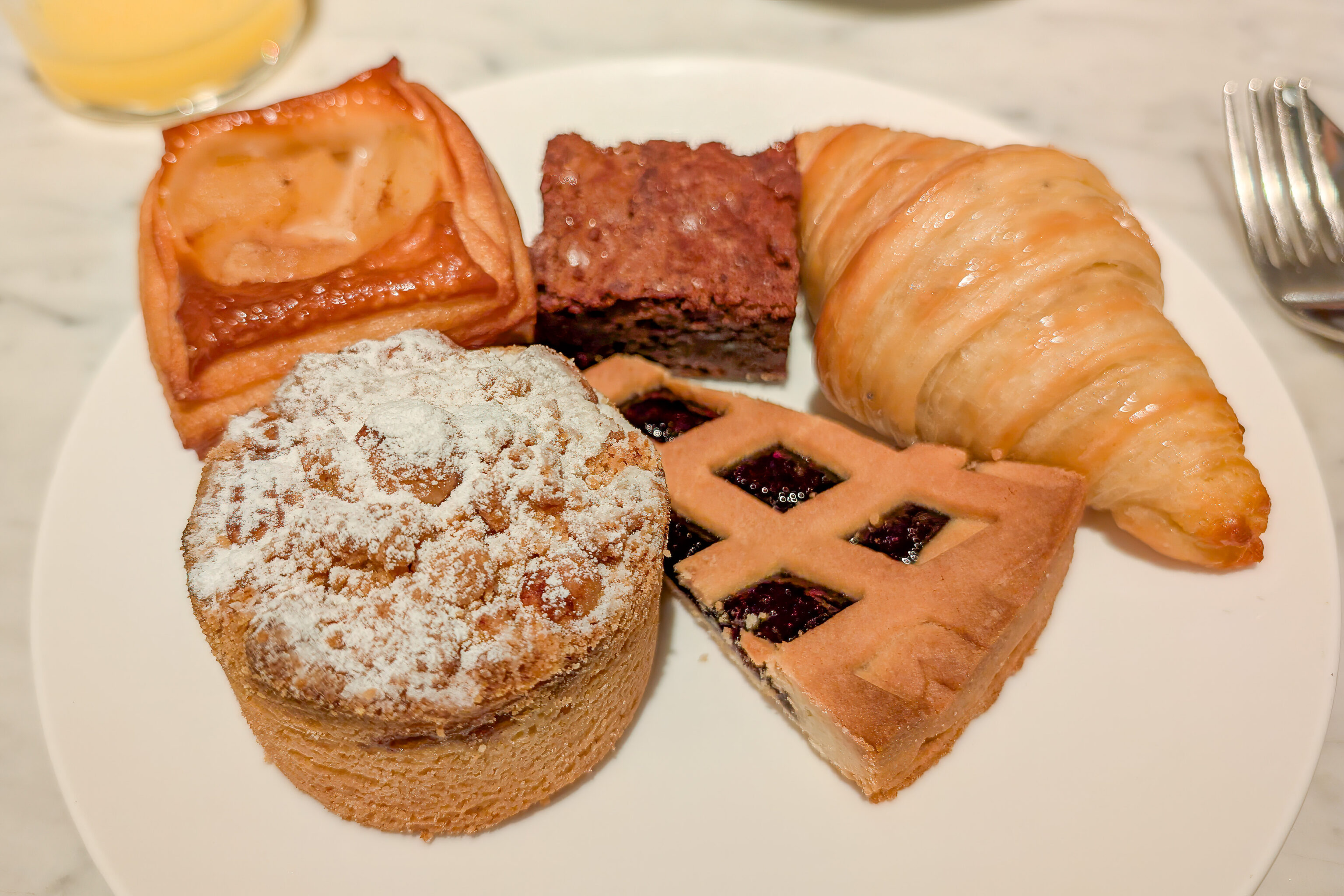
After waking up at the W Rome, we went downstairs to have our usual breakfast. We ordered an omelette and eggs as well as the charcuterie and toast.
Basilica of Santa Maria Maggiore
We decided to first visit the Basilica Papale di Santa Maria Maggiore (Papal Basilica of Saint Mary Major, or just the Basilica of Santa Maria Maggiore). We took a bus, though we could have also taken the Metro to Termini and then walked over a few short blocks.
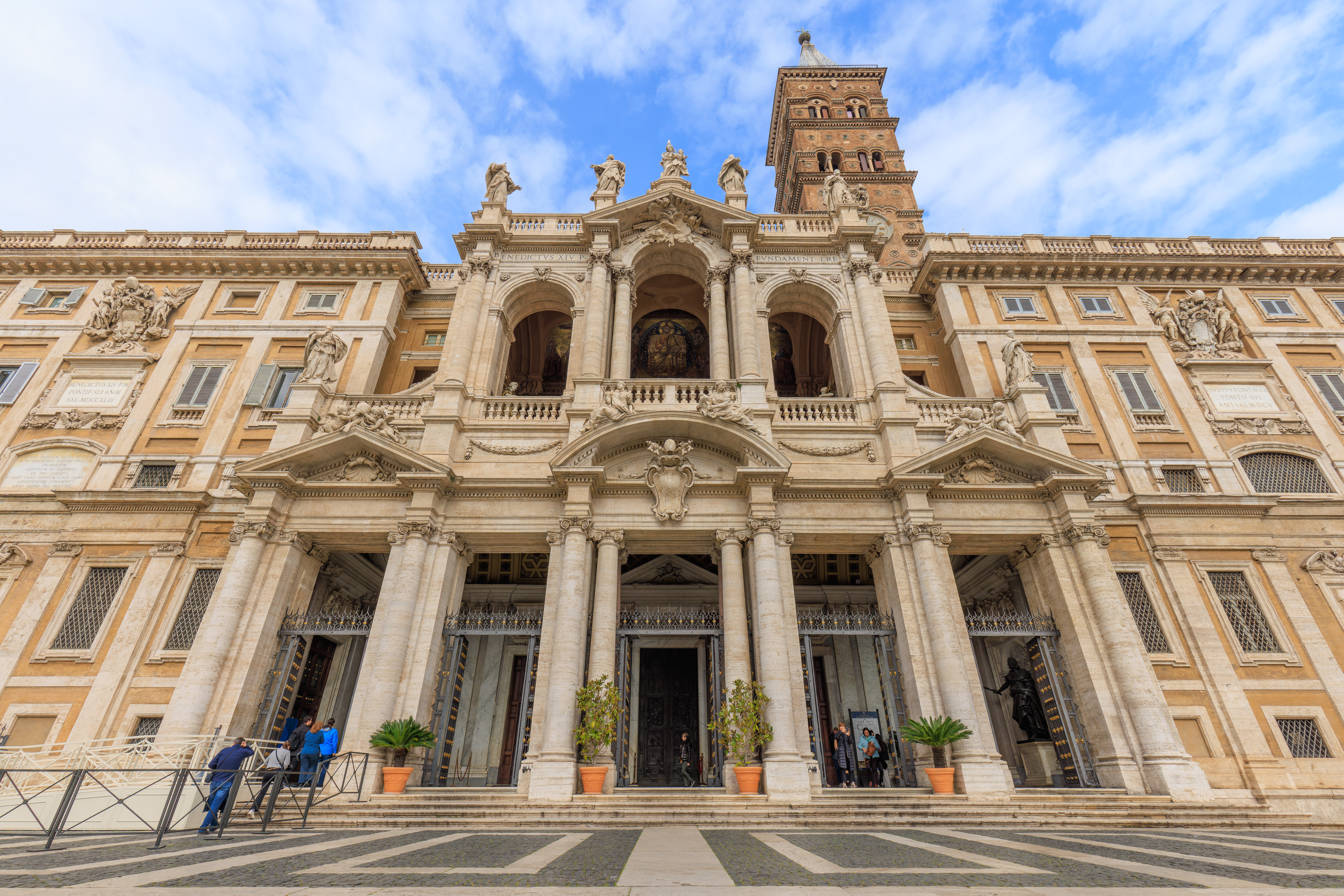
As the name suggests, this basilica is part of the Vatican. And like the Basilica di San Giovanni in Laterano, which we visited yesterday, we had to pass through a security checkpoint to enter.
In the Future: April 26th, 2025
Pope Francis died on Easter Monday, April 21st, 2025. He was buried here at Santa Maria Maggiore on April 26th, 2025.
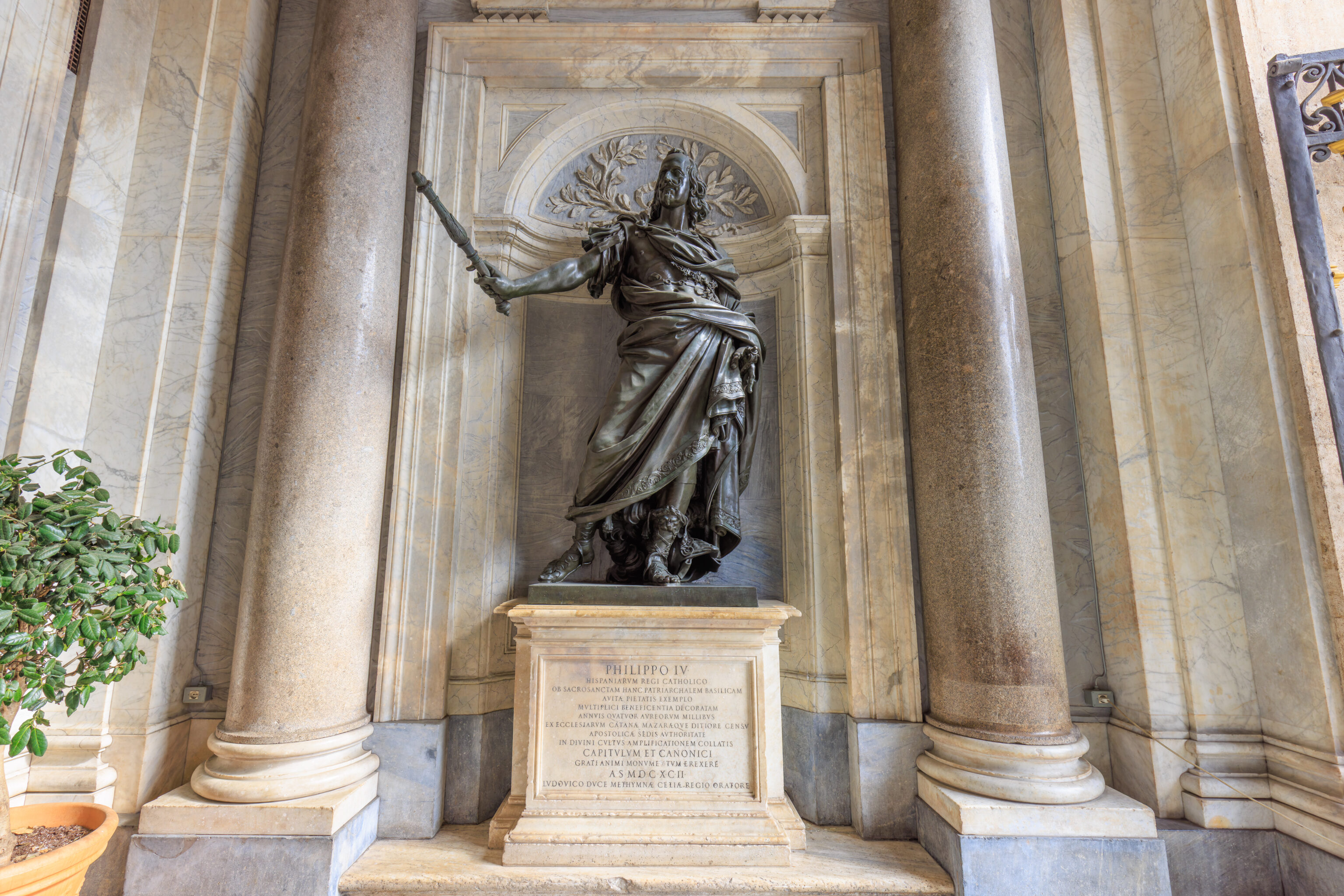
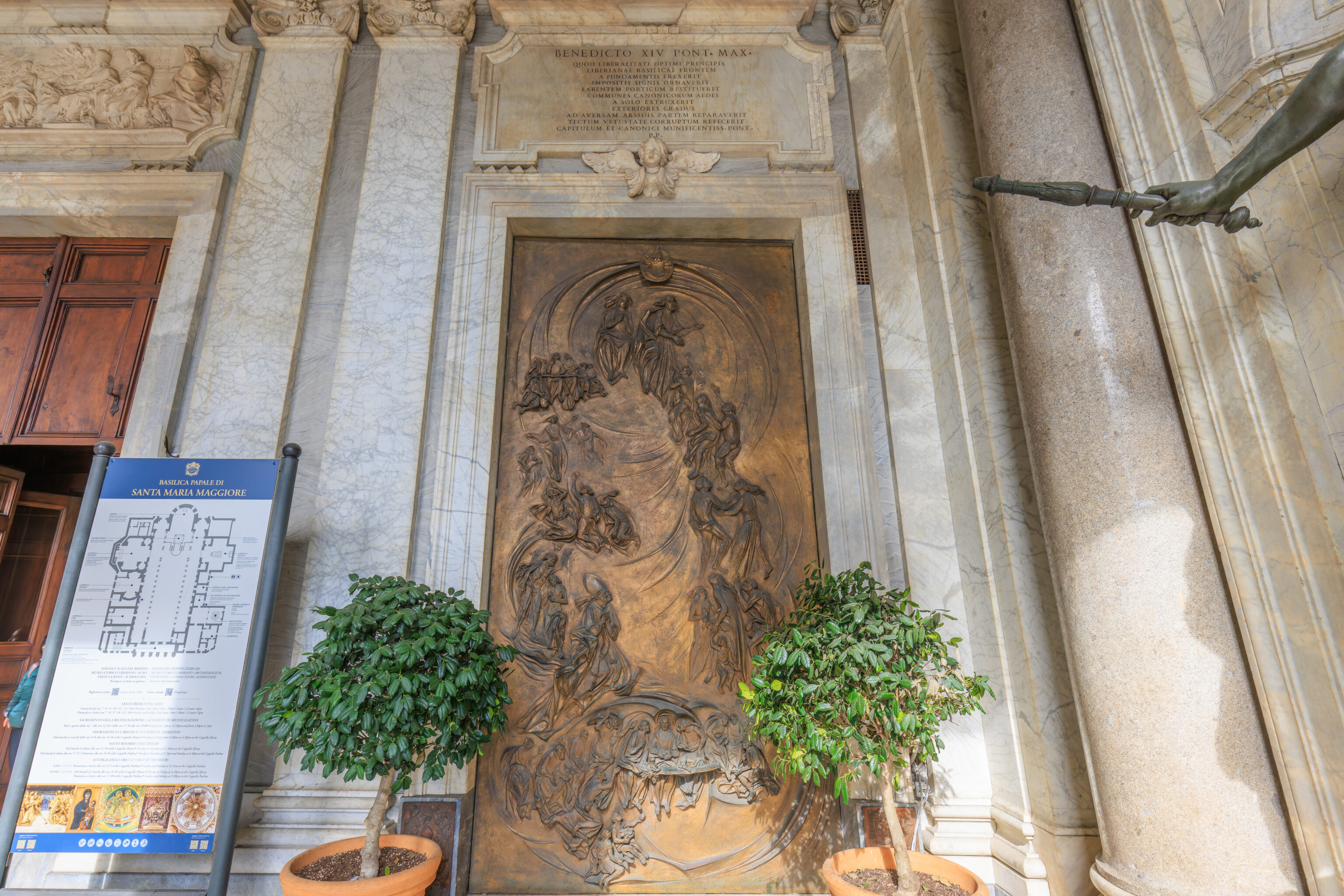
Like the Basilica di San Giovanni in Laterano, there is a portico, or narthex, at the entrance. We actually took these two photos on our way out but it makes sense to present them here at the start of our visit.
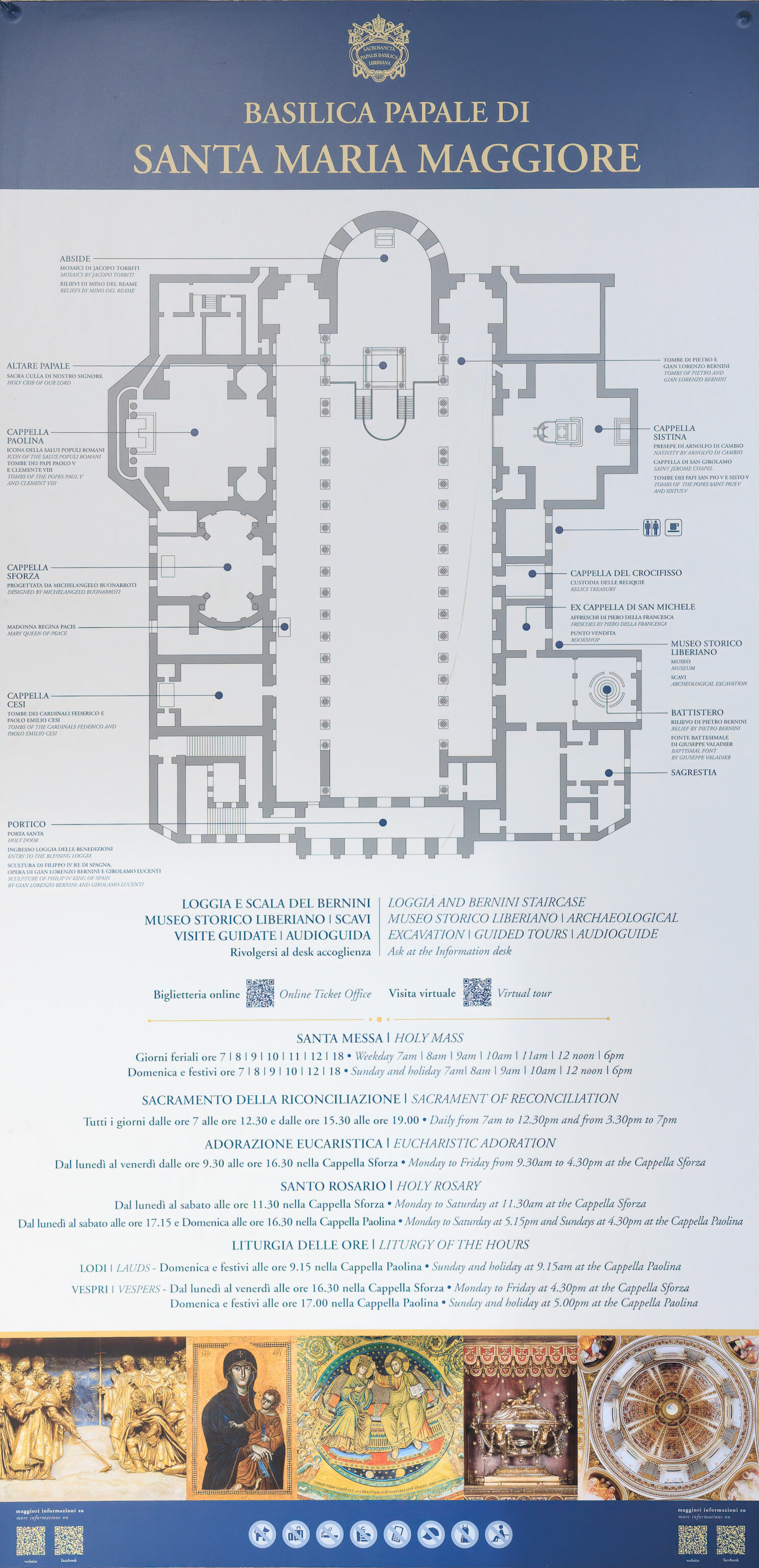
We also didn’t notice this rather useful sign until we were on our way out. It has a labelled map of the basilica!
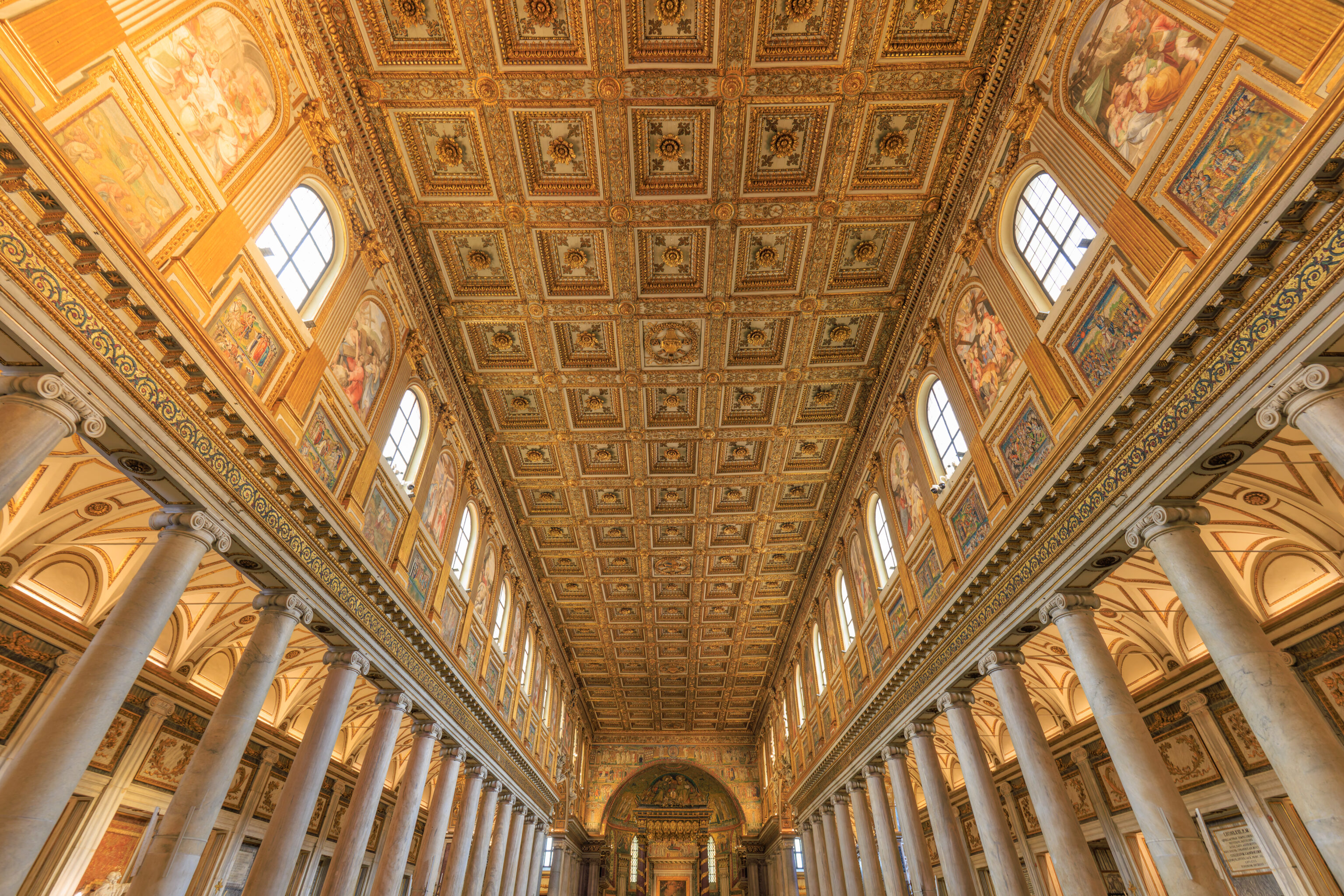
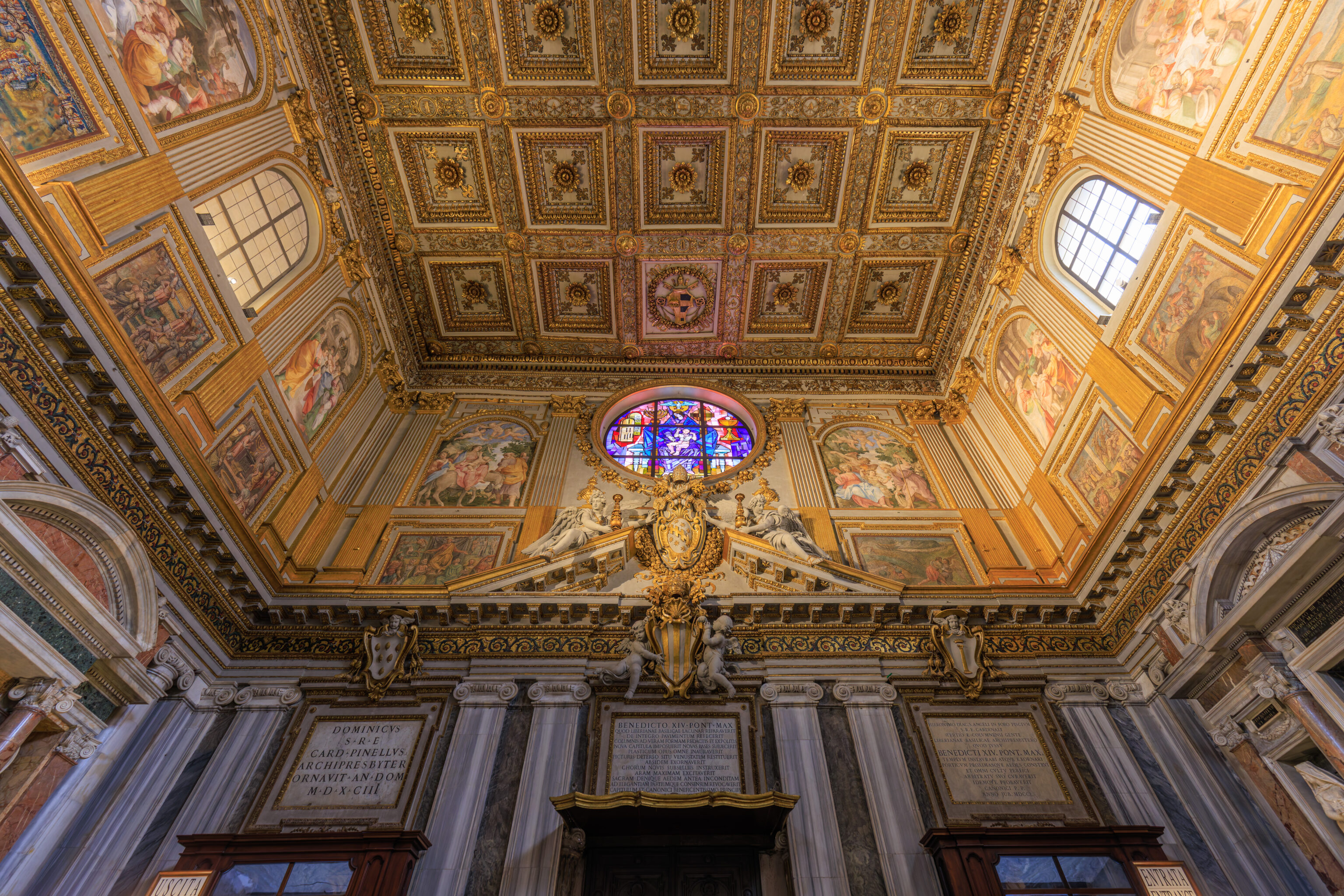
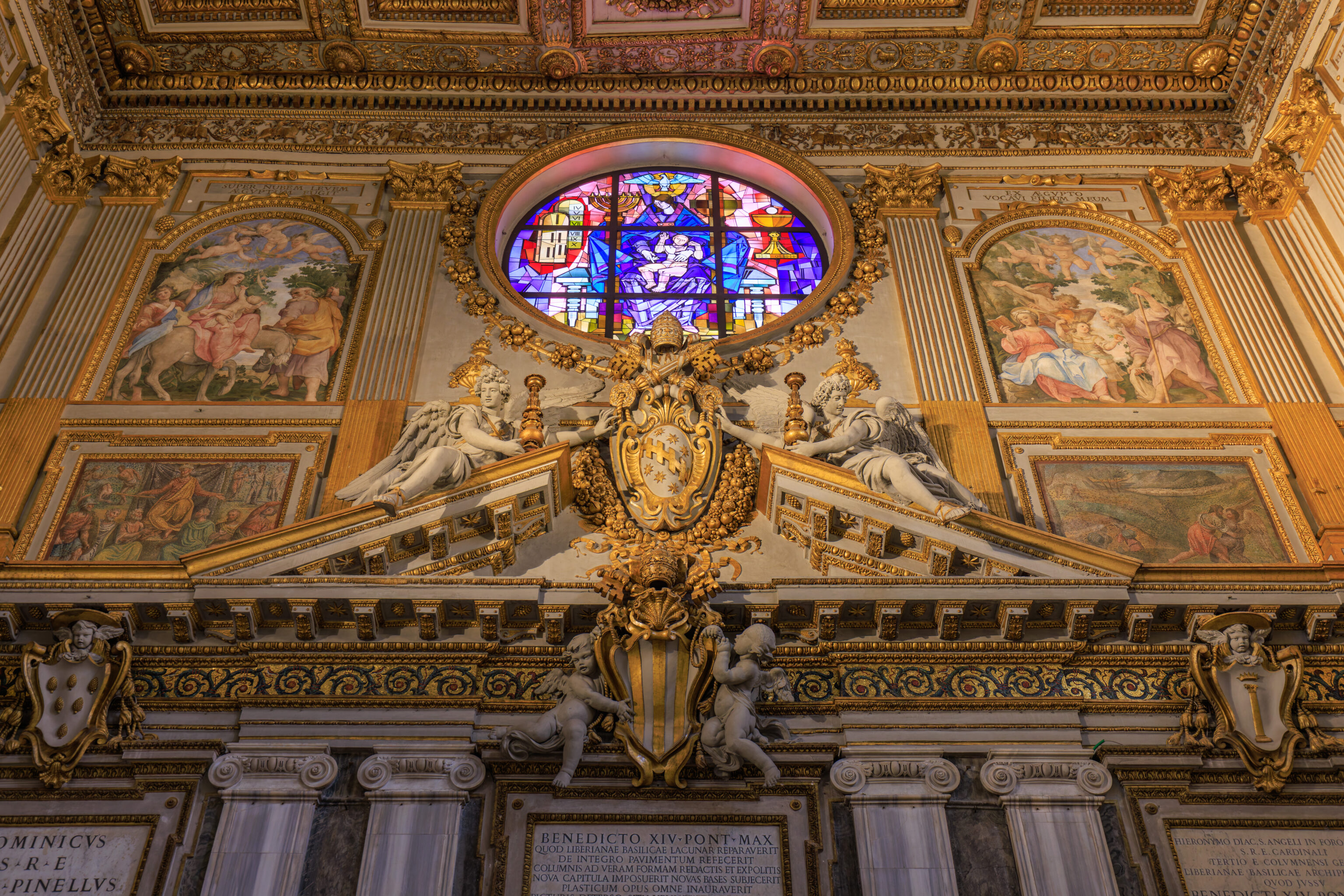
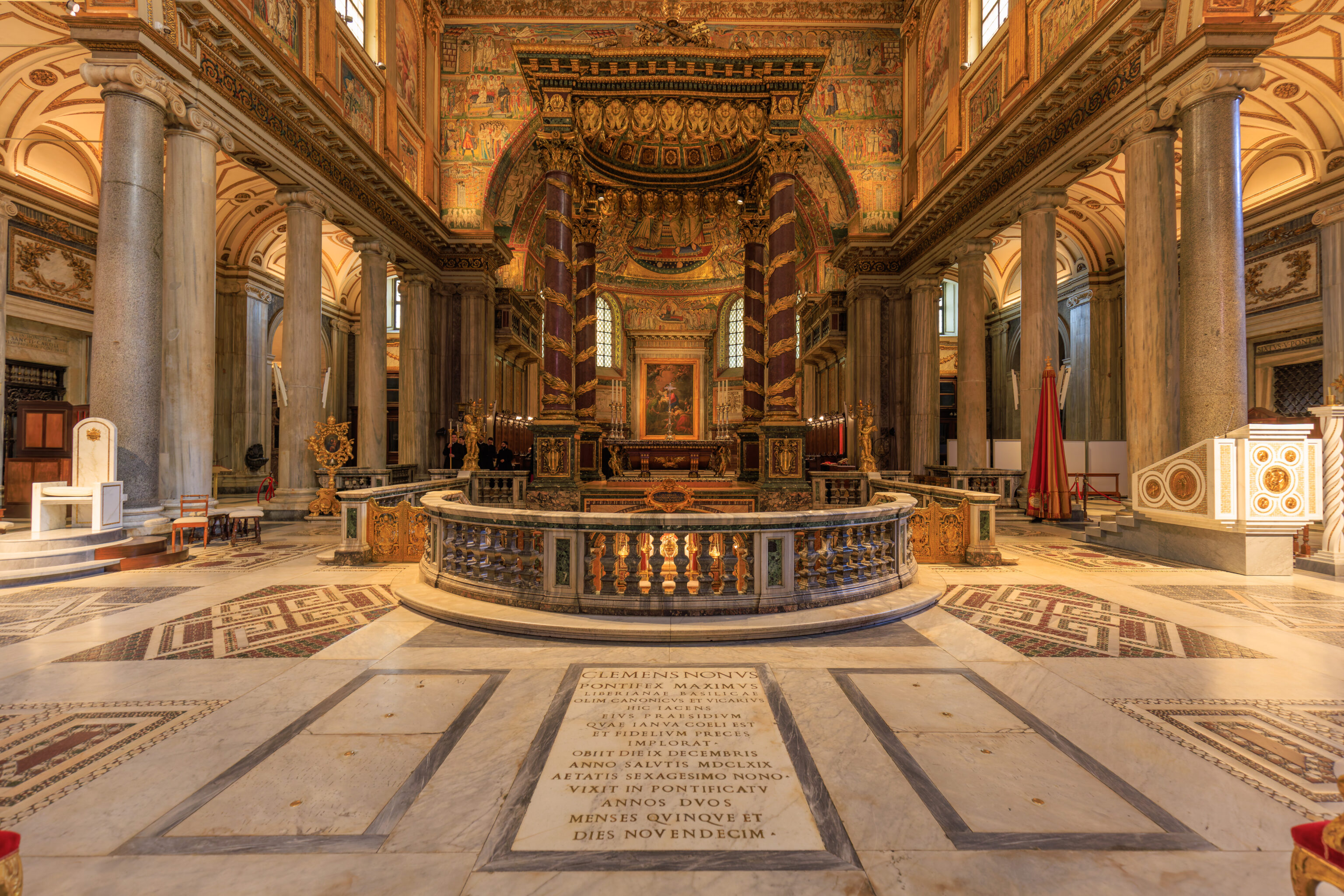
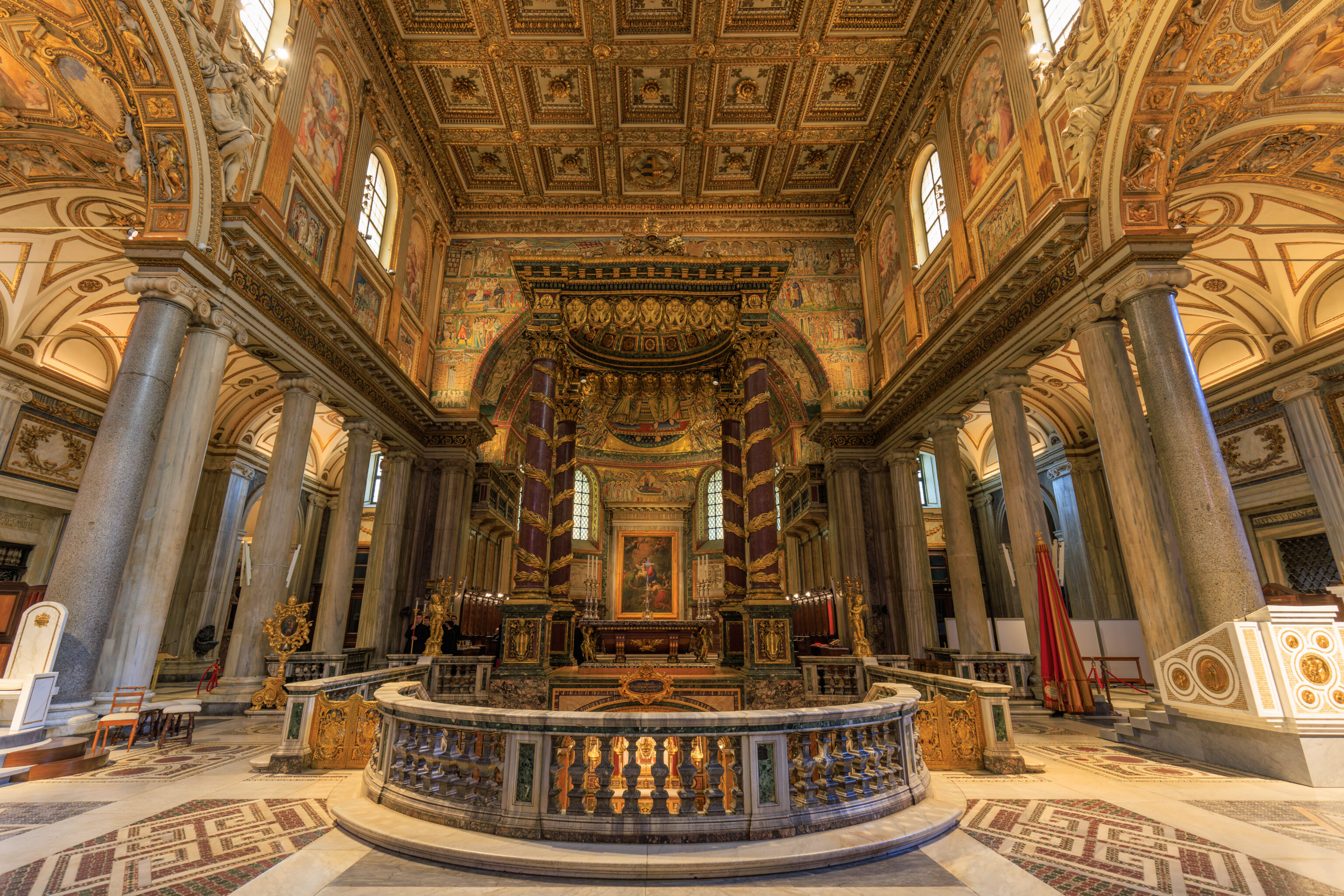
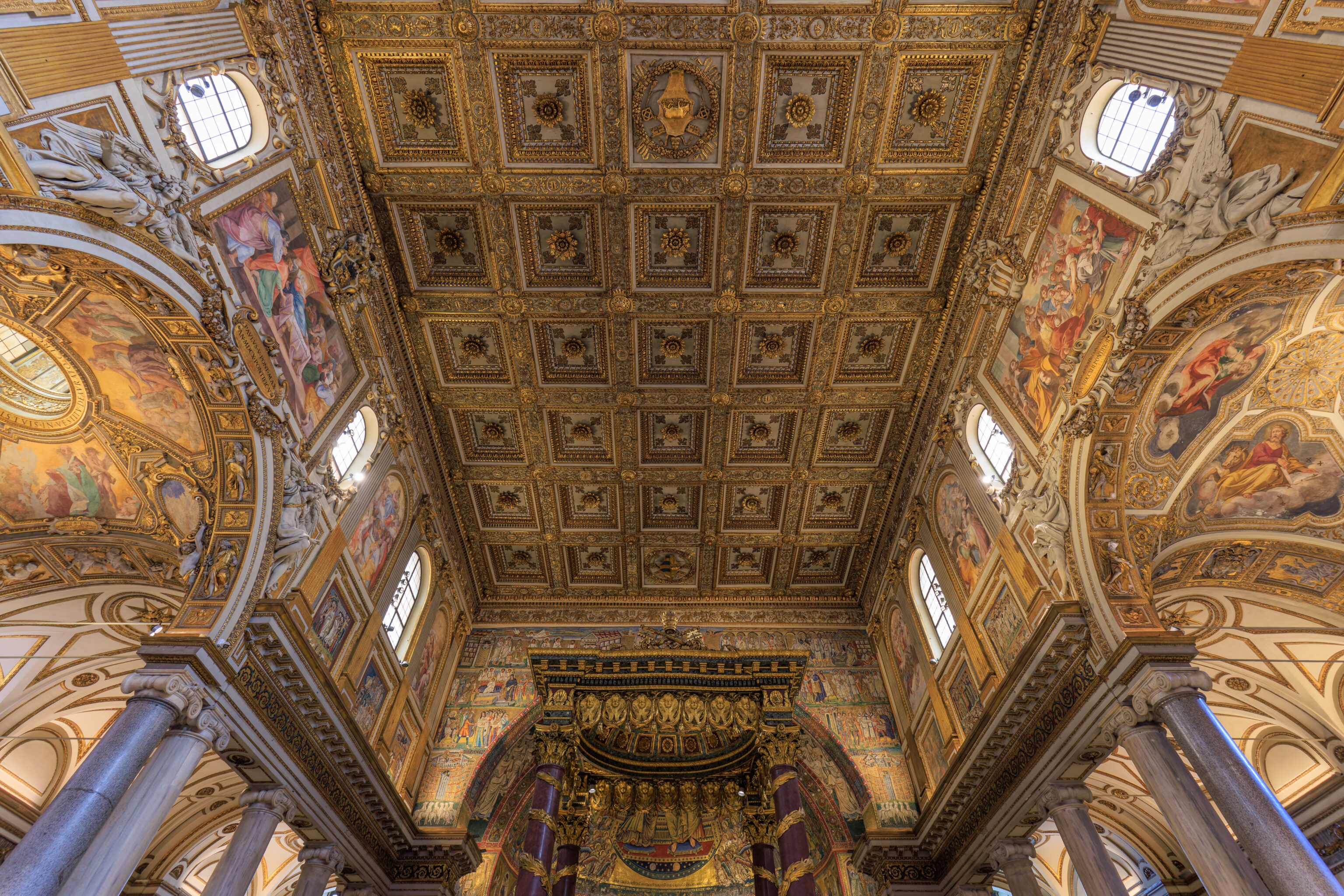
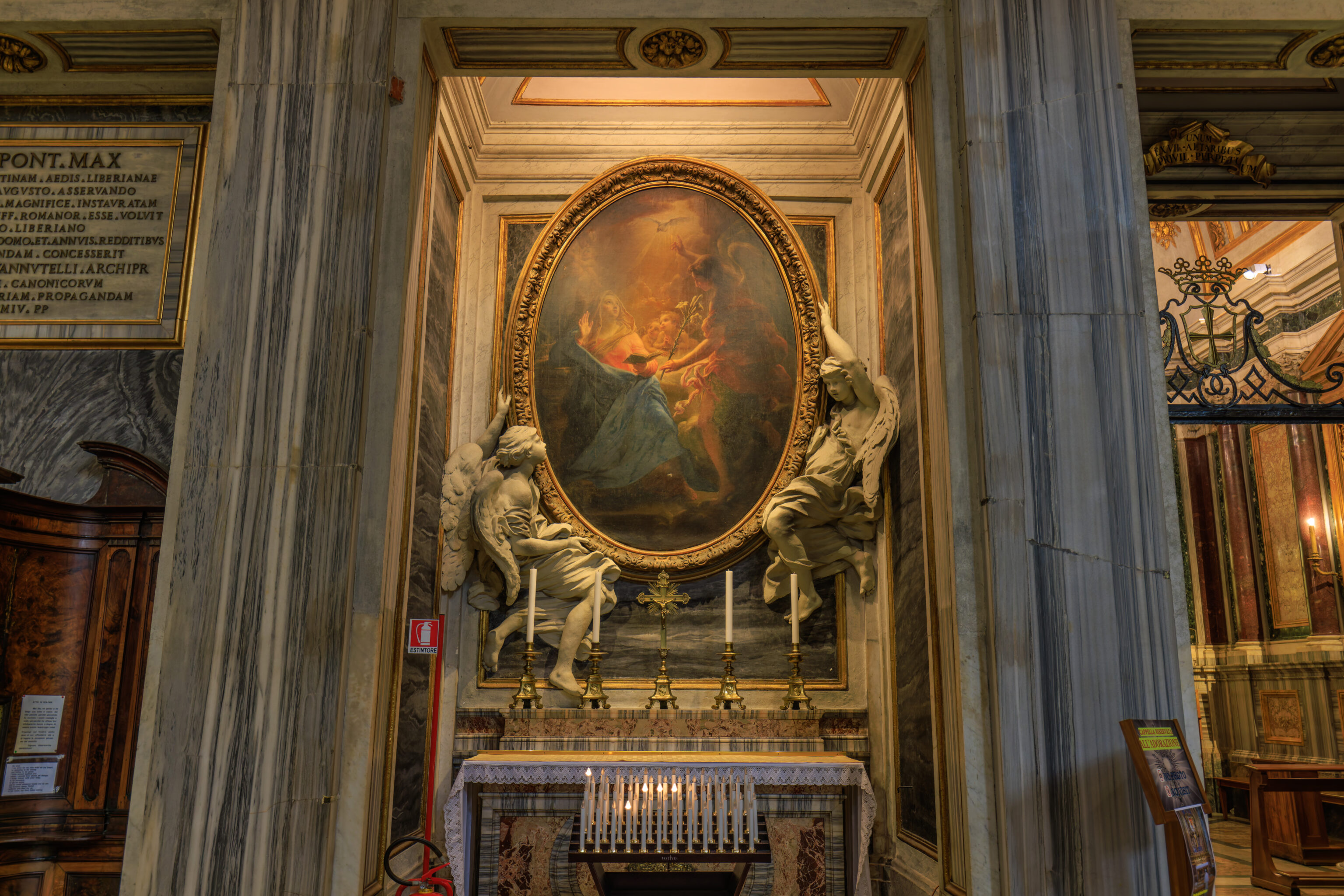
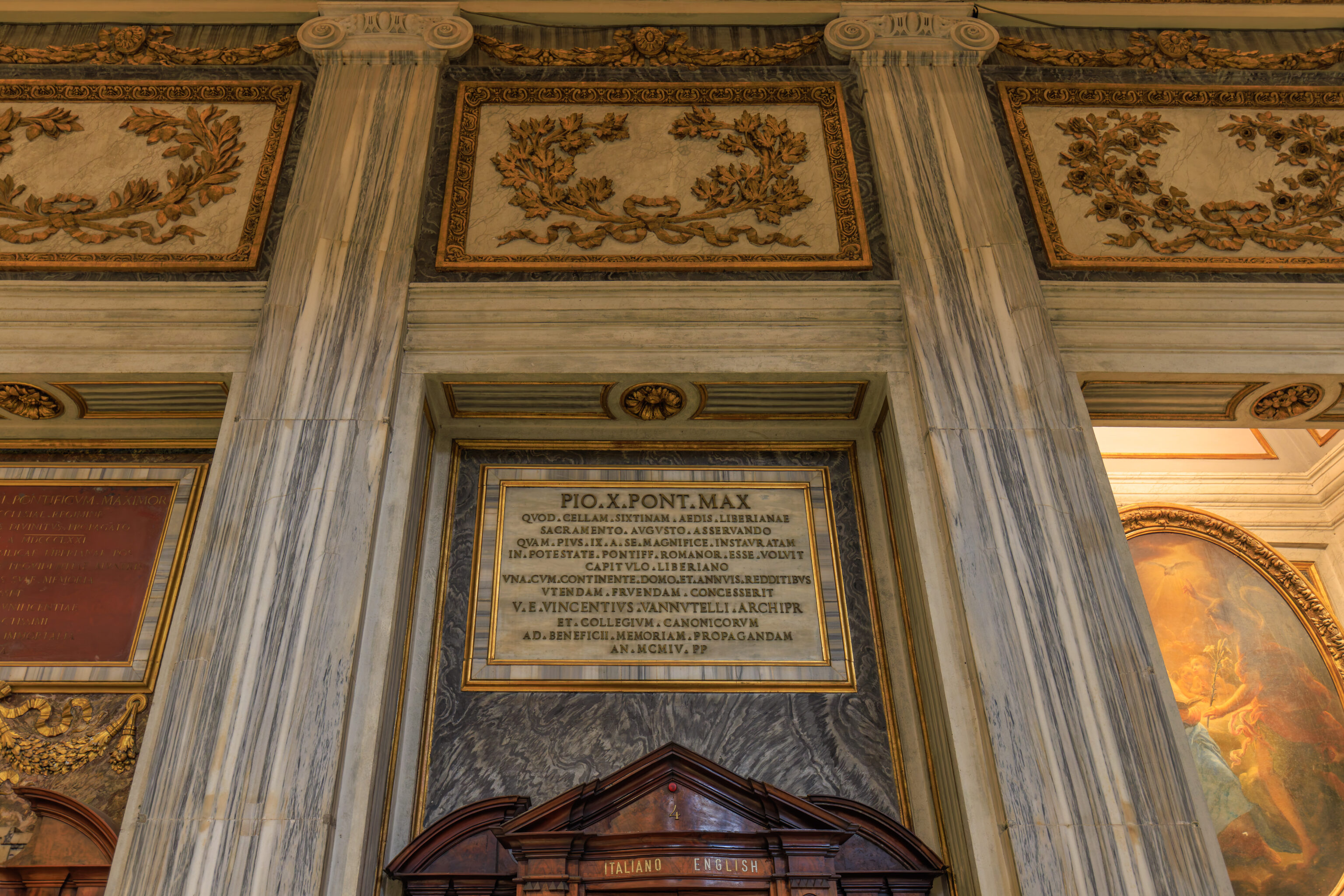
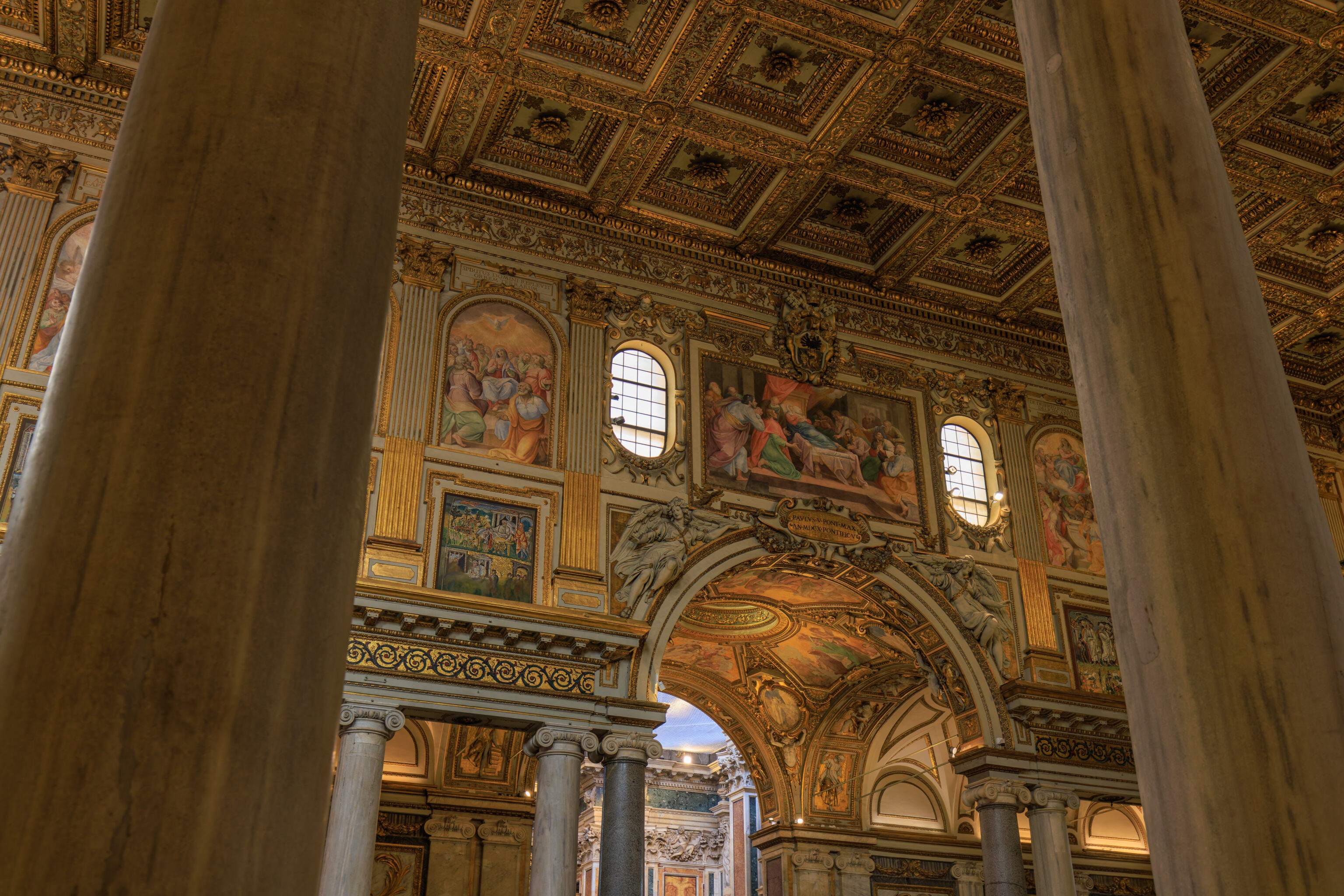
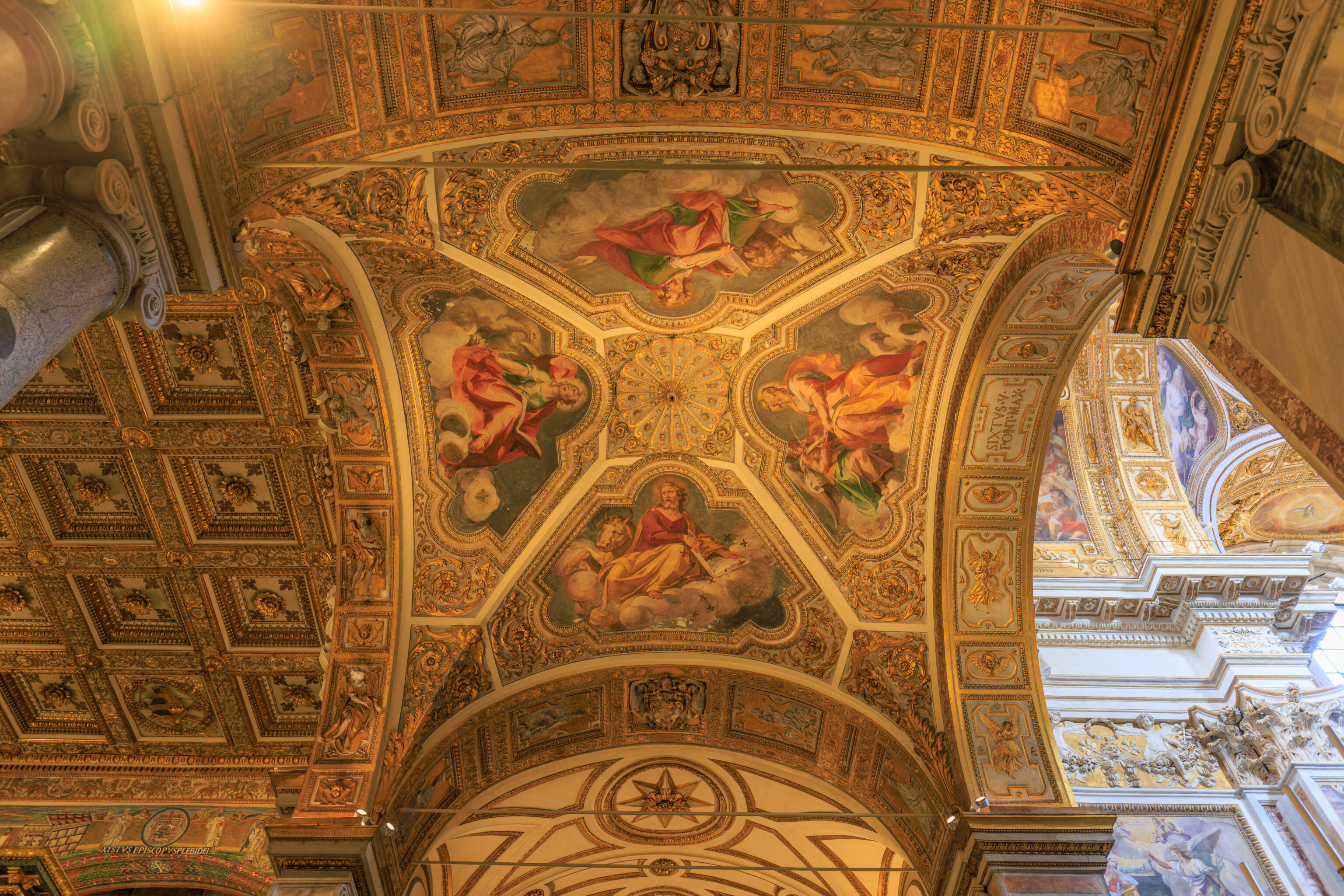
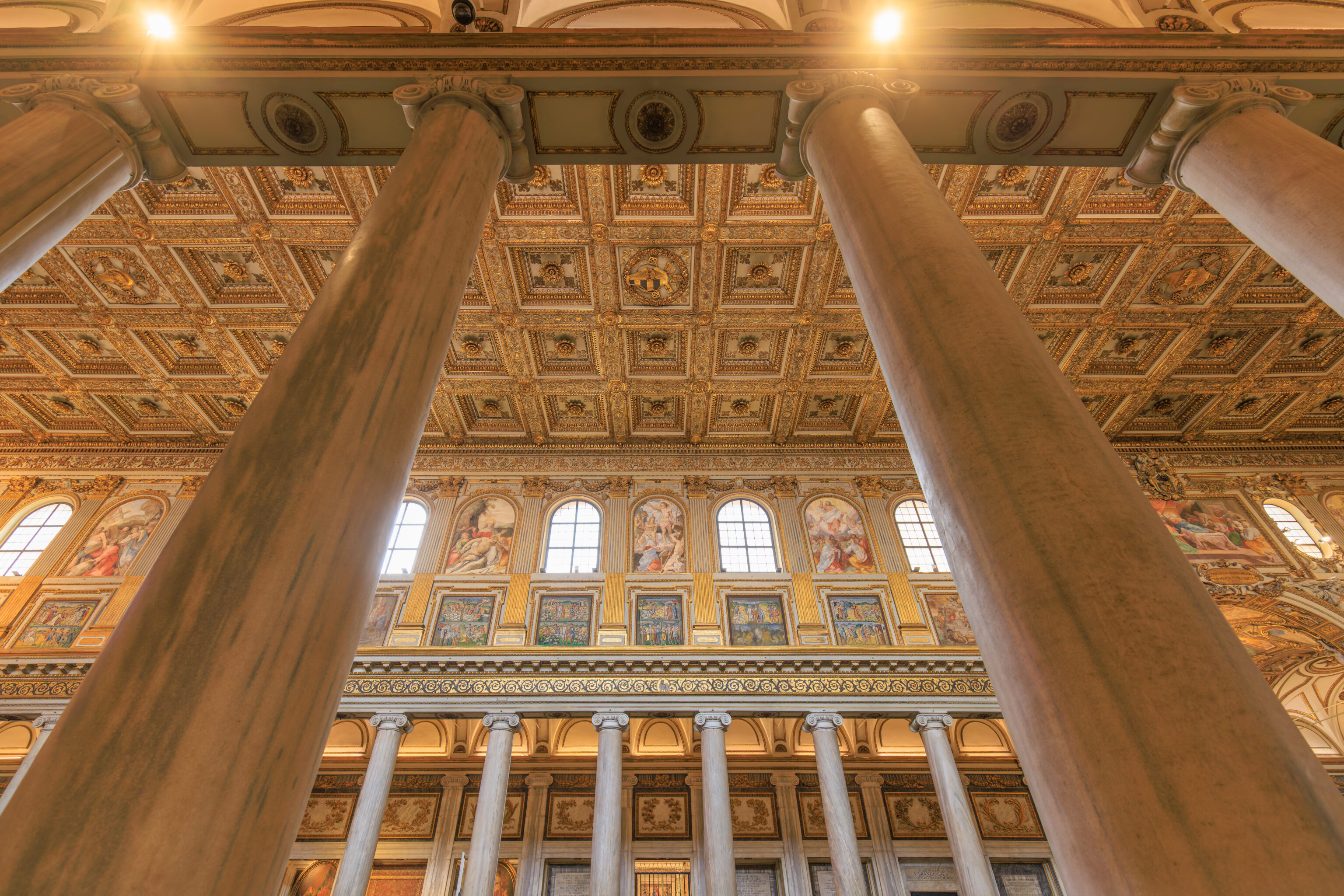
While this basilica wasn’t as big as Basilica di San Giovanni in Laterano, it was just as grand in its own different way.
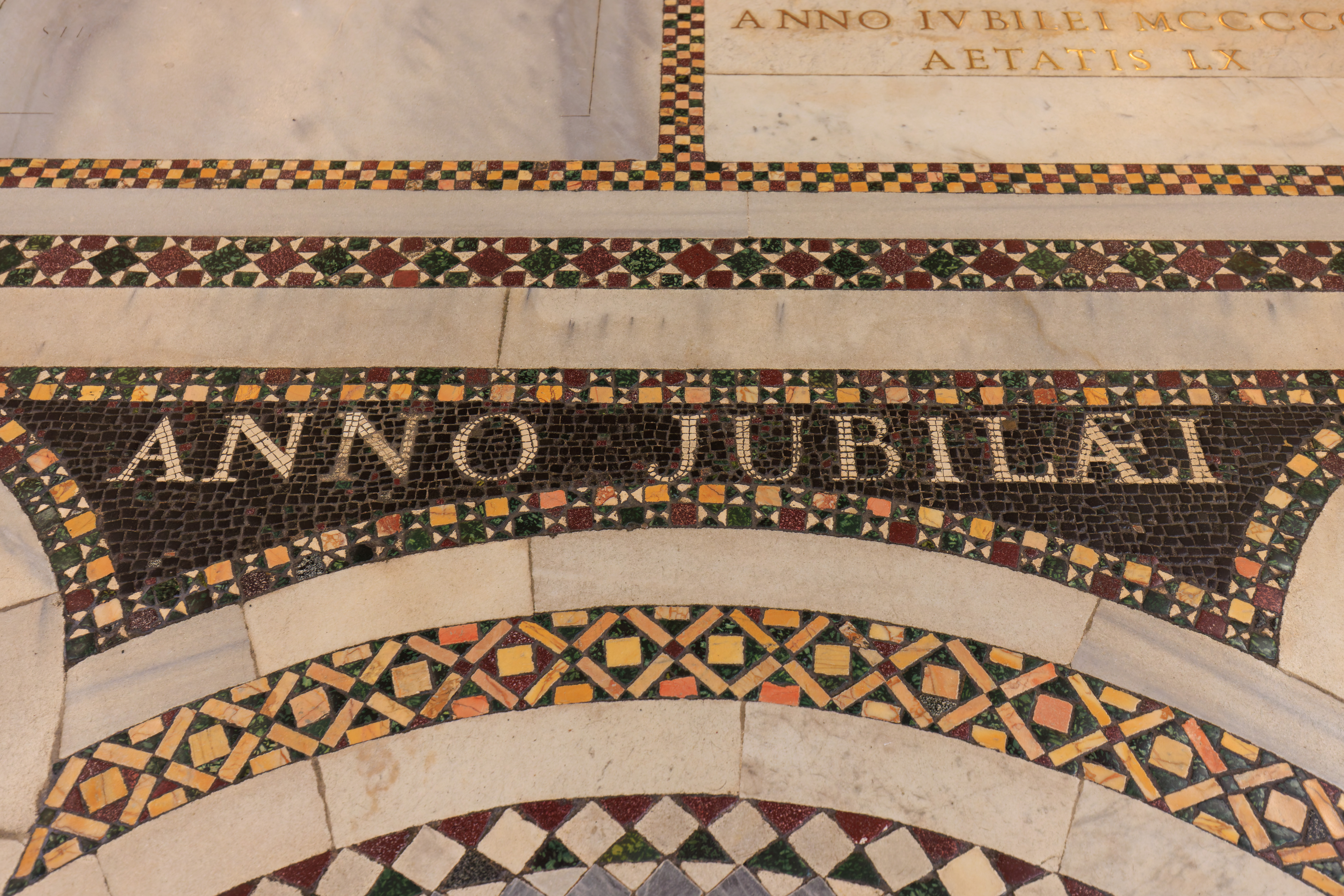
This year is actually a jubilee year for the Catholic Church, though presumably this mosaic of tiles is always present here. The jubilee originally occurred every 50 years but now occurs every 25.
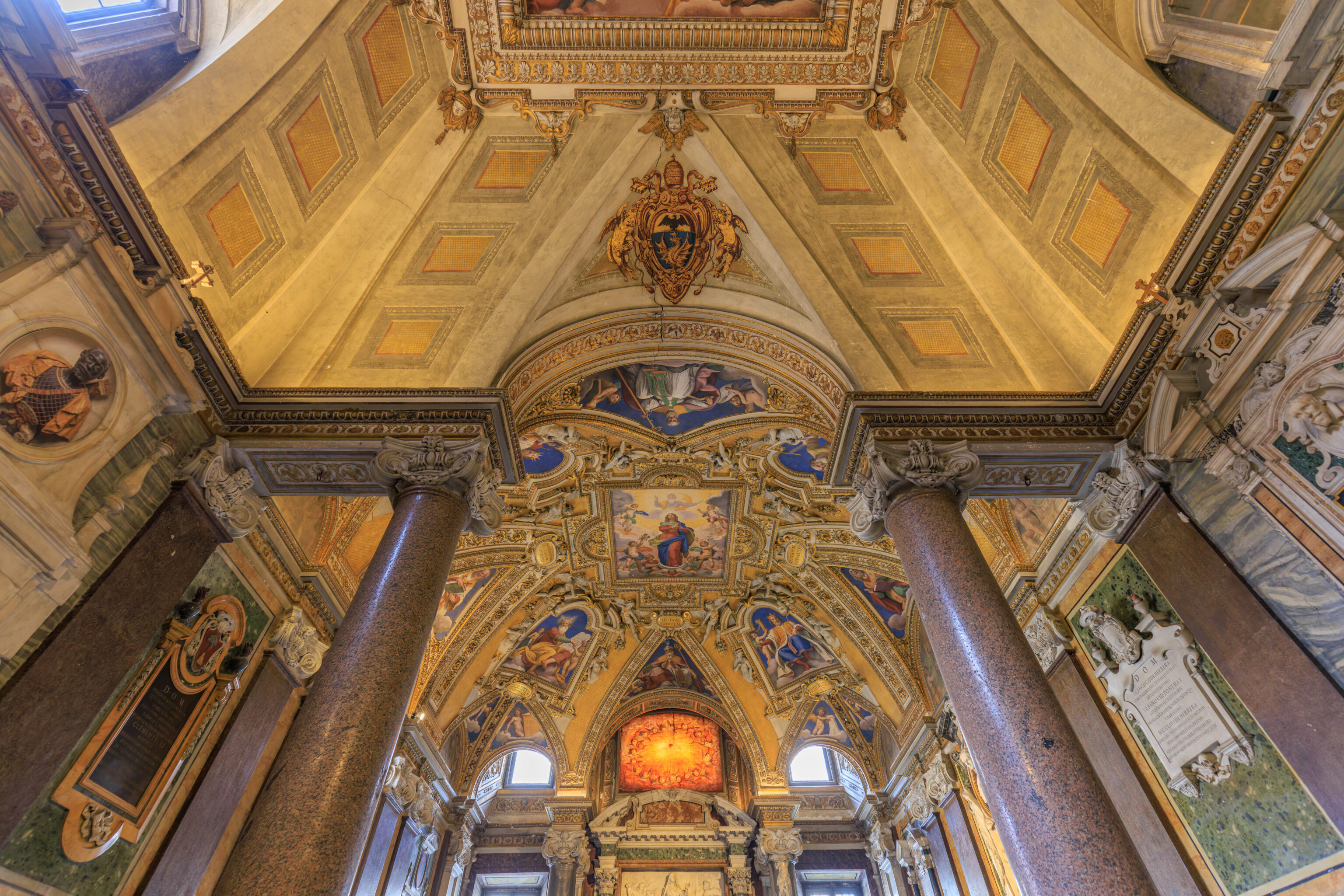
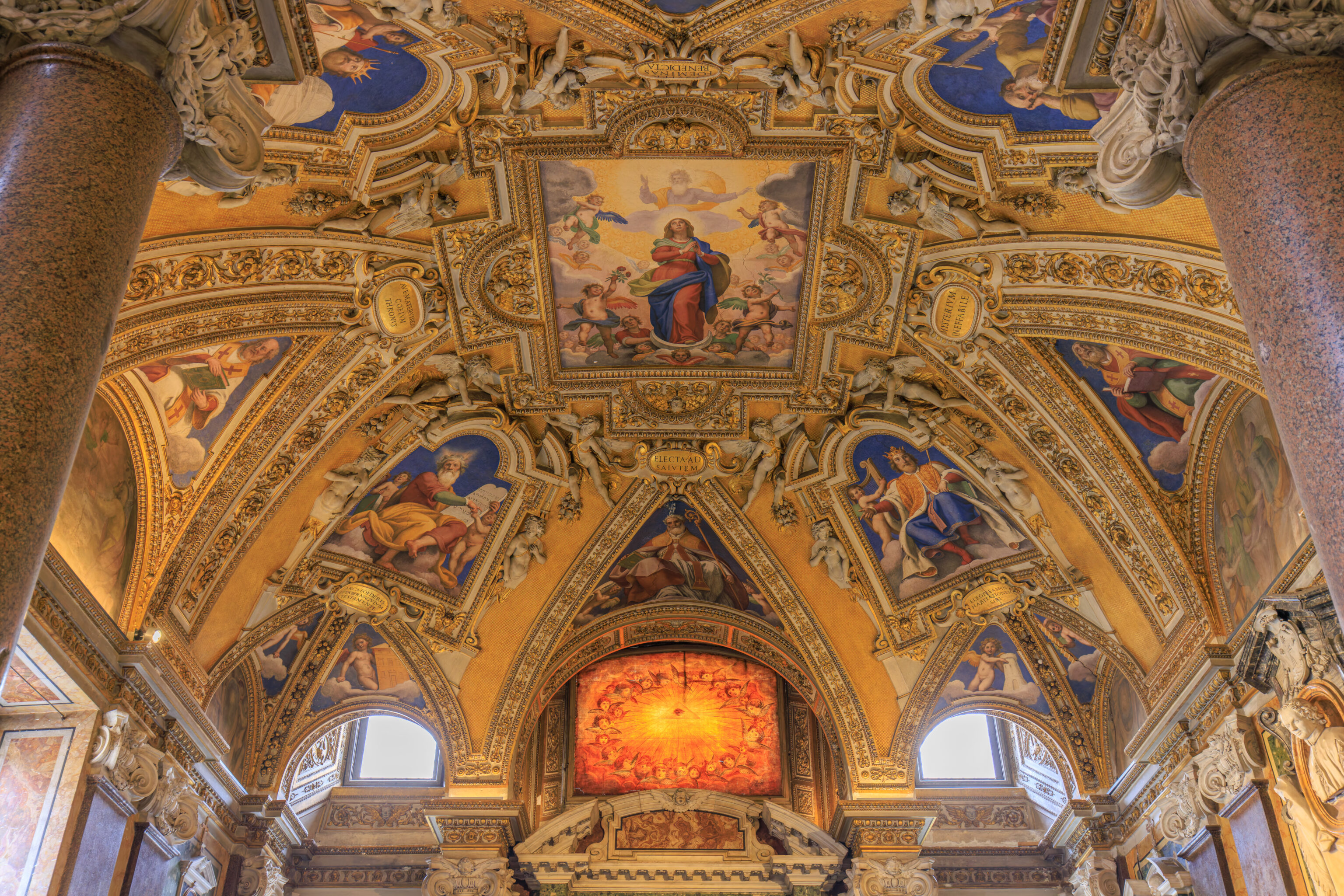
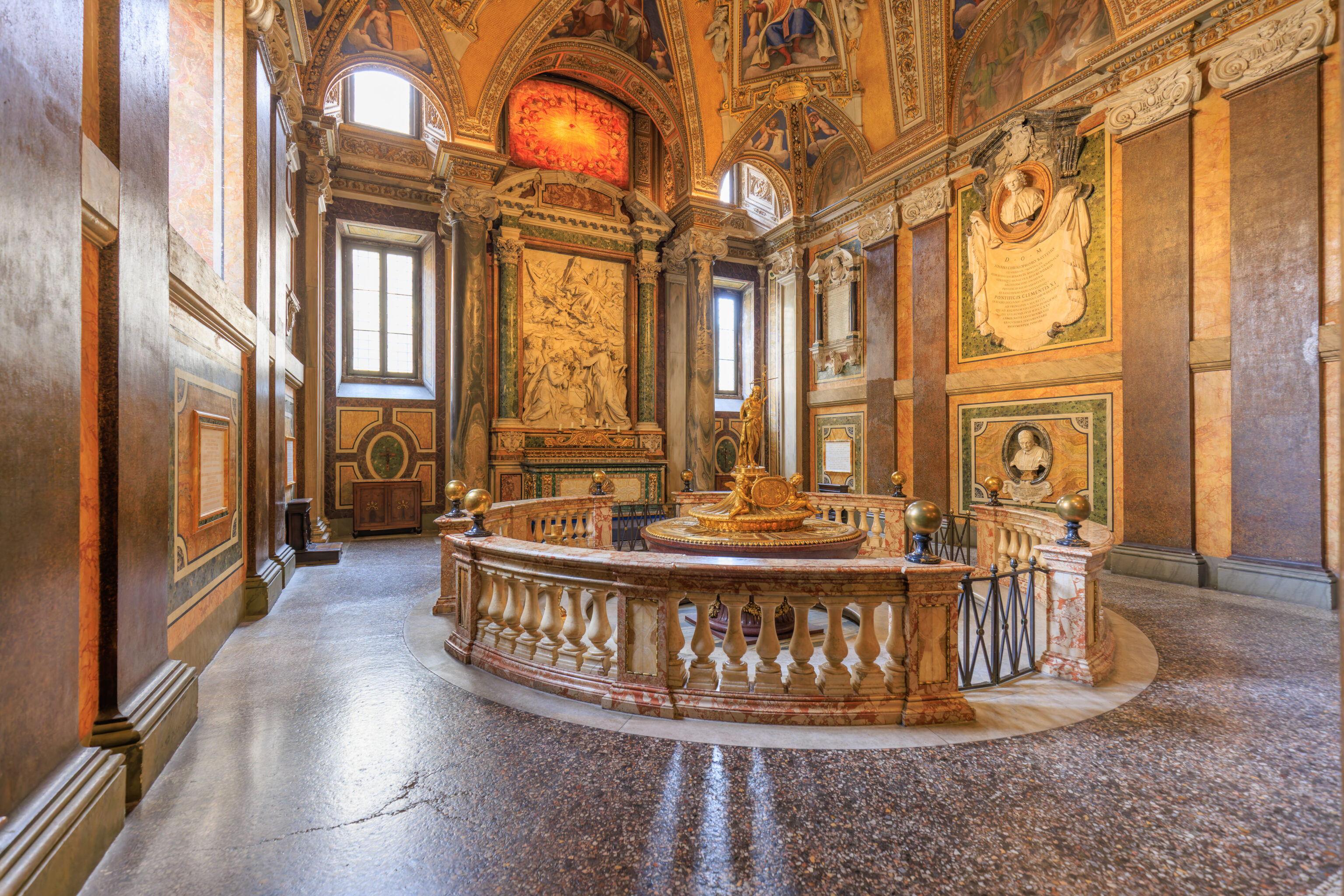
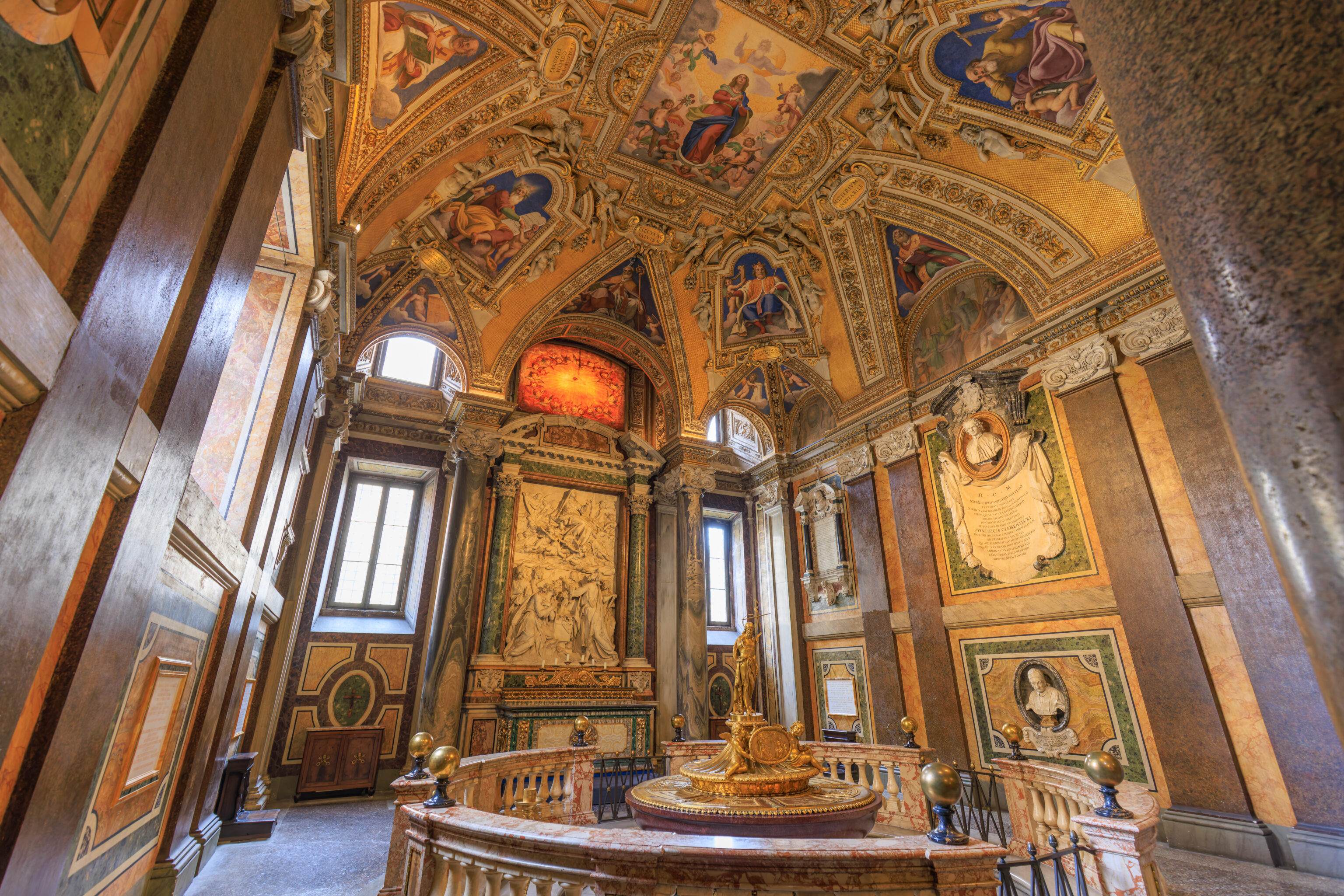
This seemingly glowing panel with eye on a pyramid may be familiar to our fellow Americans. The Eye of Providence, or All-Seeing Eye, is present on our one dollar bill.
The basilica’s gift shop is in a room to the side here. After browsing the shop, on our way back out into this room, we encountered clergy getting ready for what was likely the 10am Sunday mass. We waited for a few minutes until they walked out before continuing out as well.
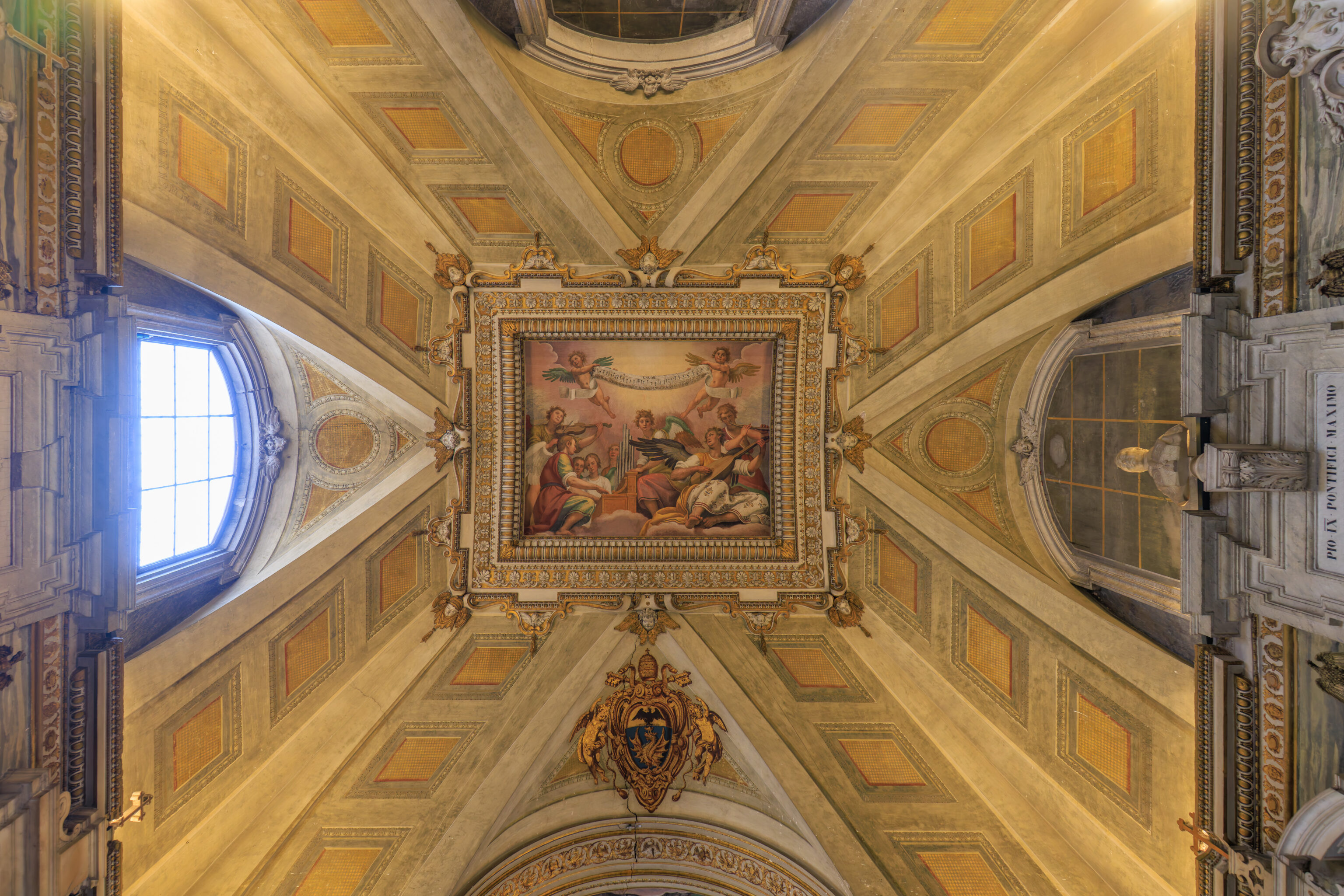
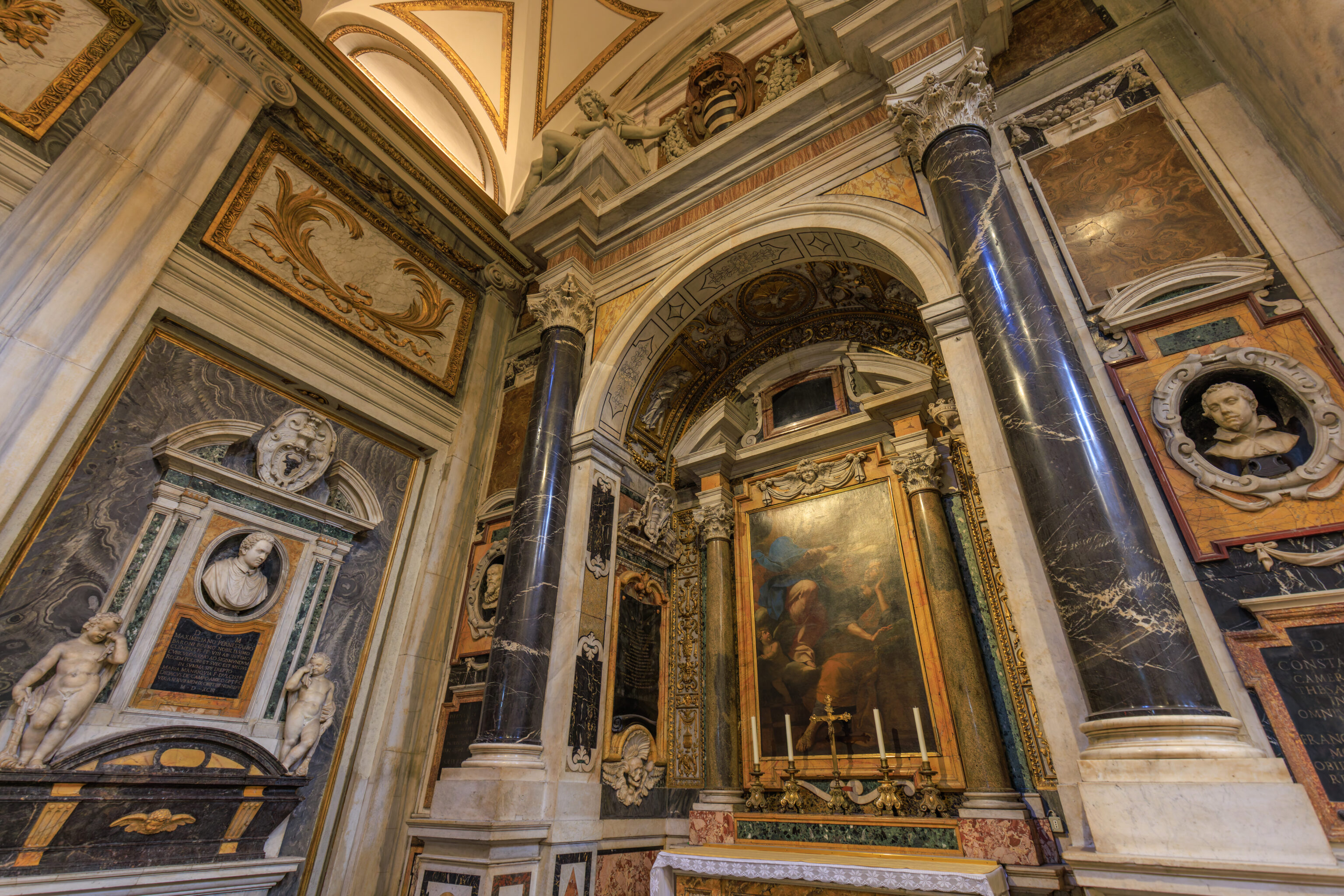
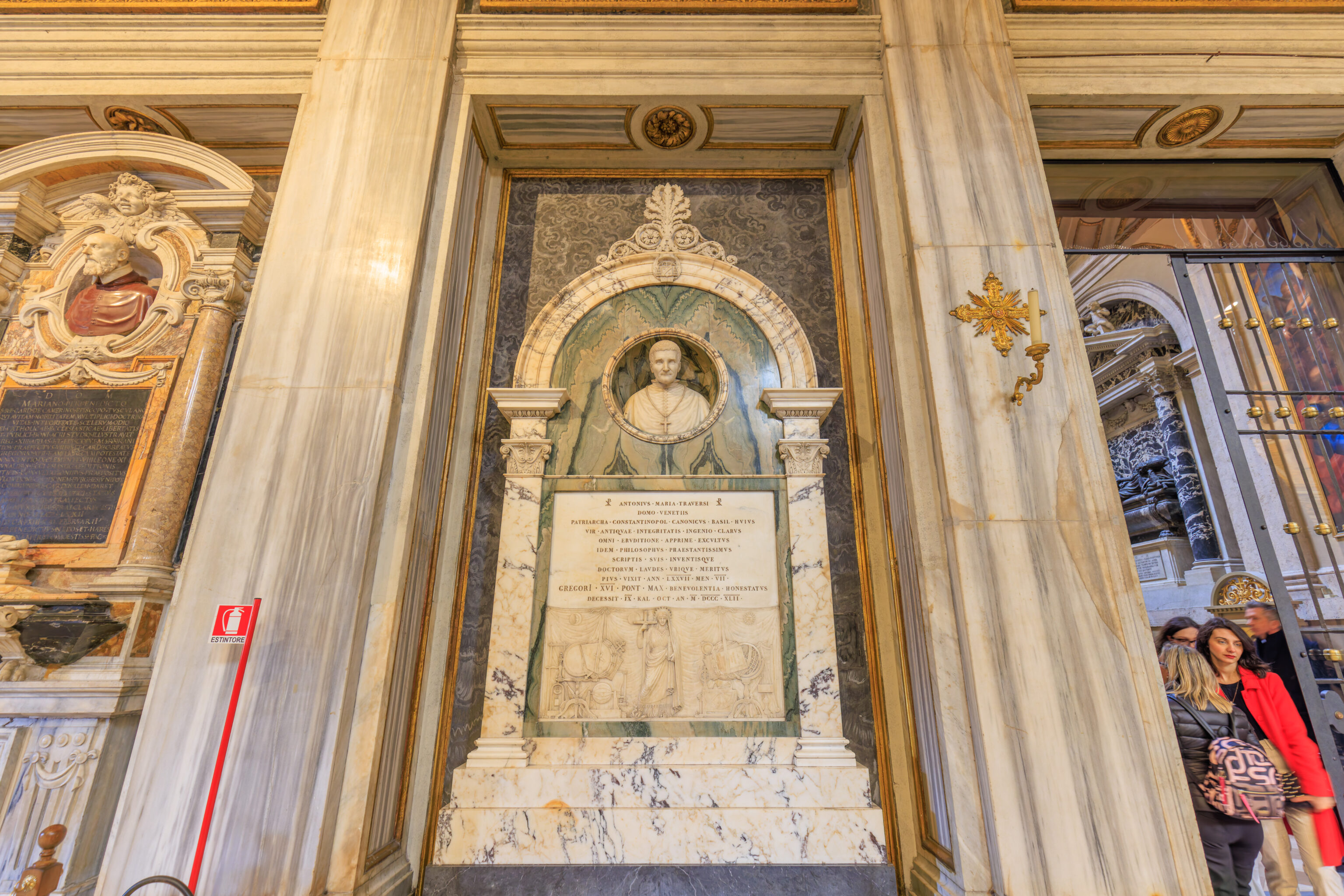
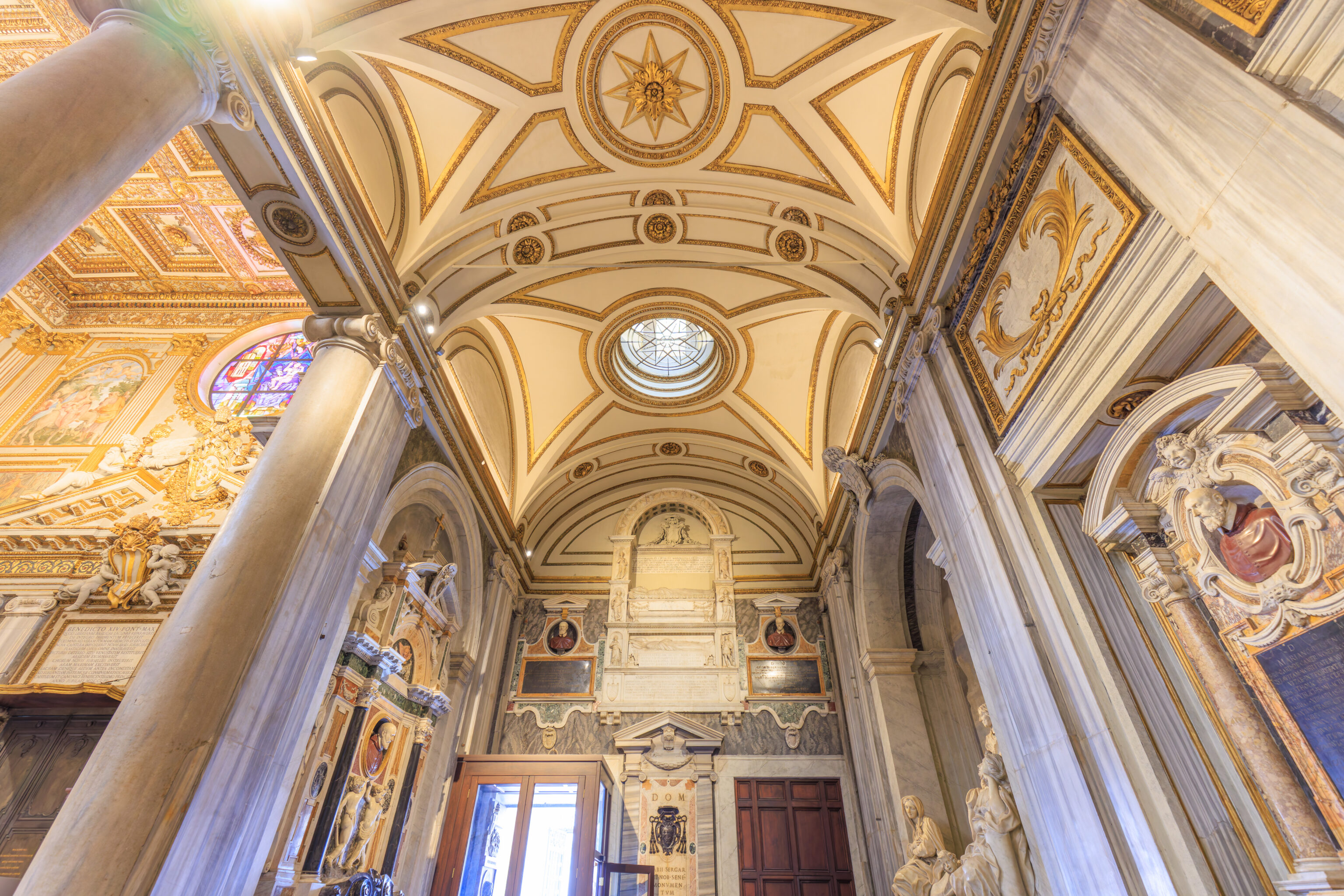
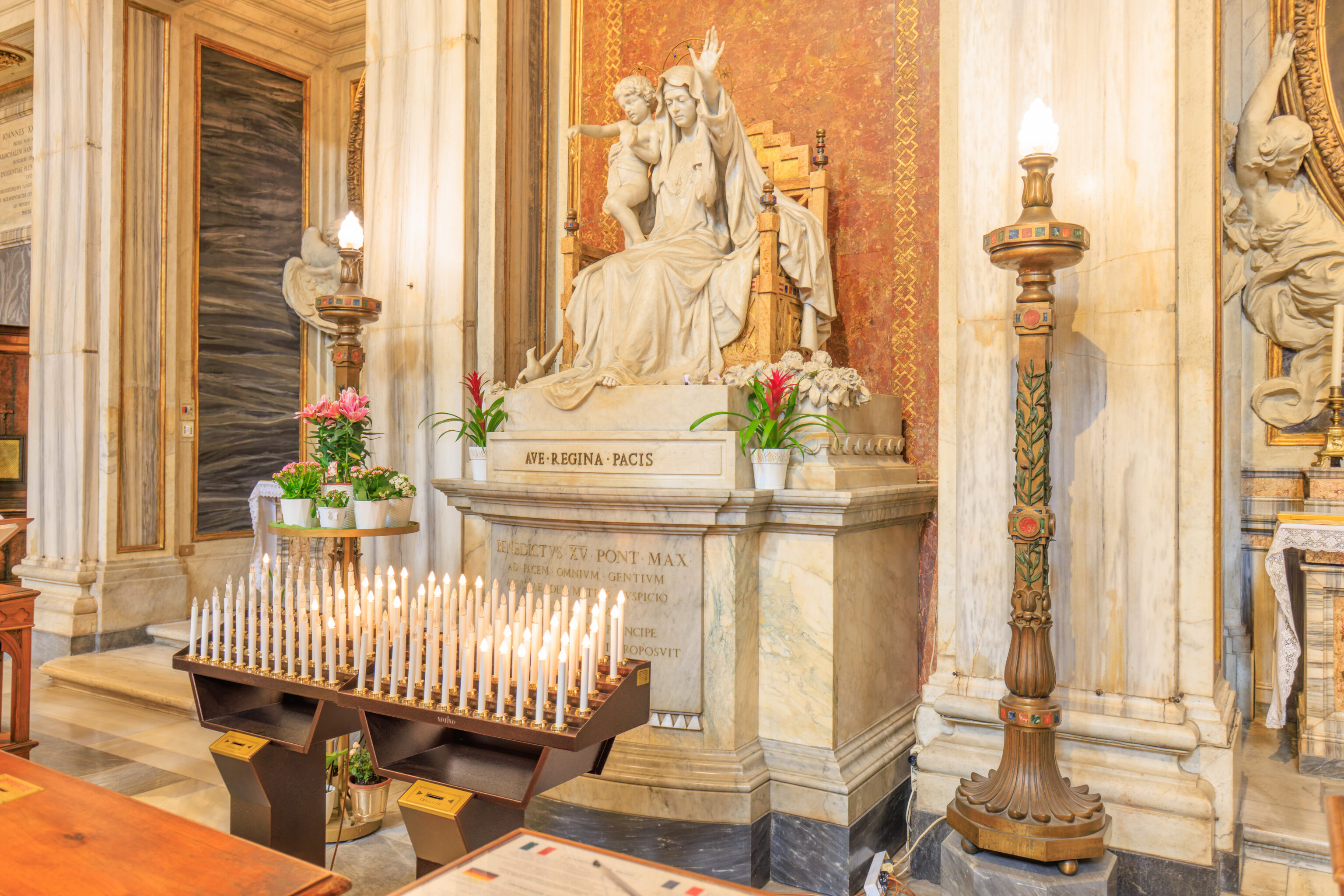
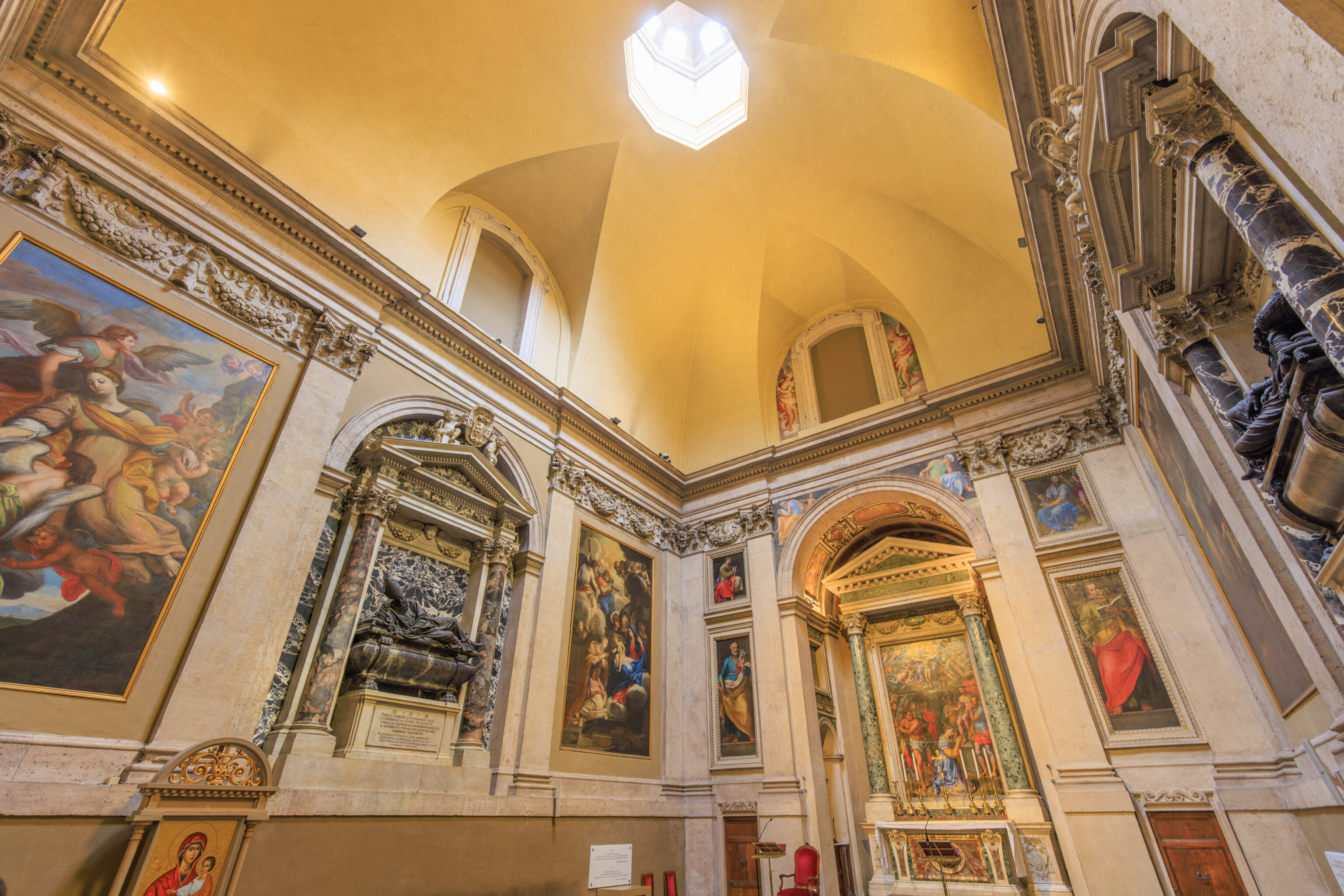
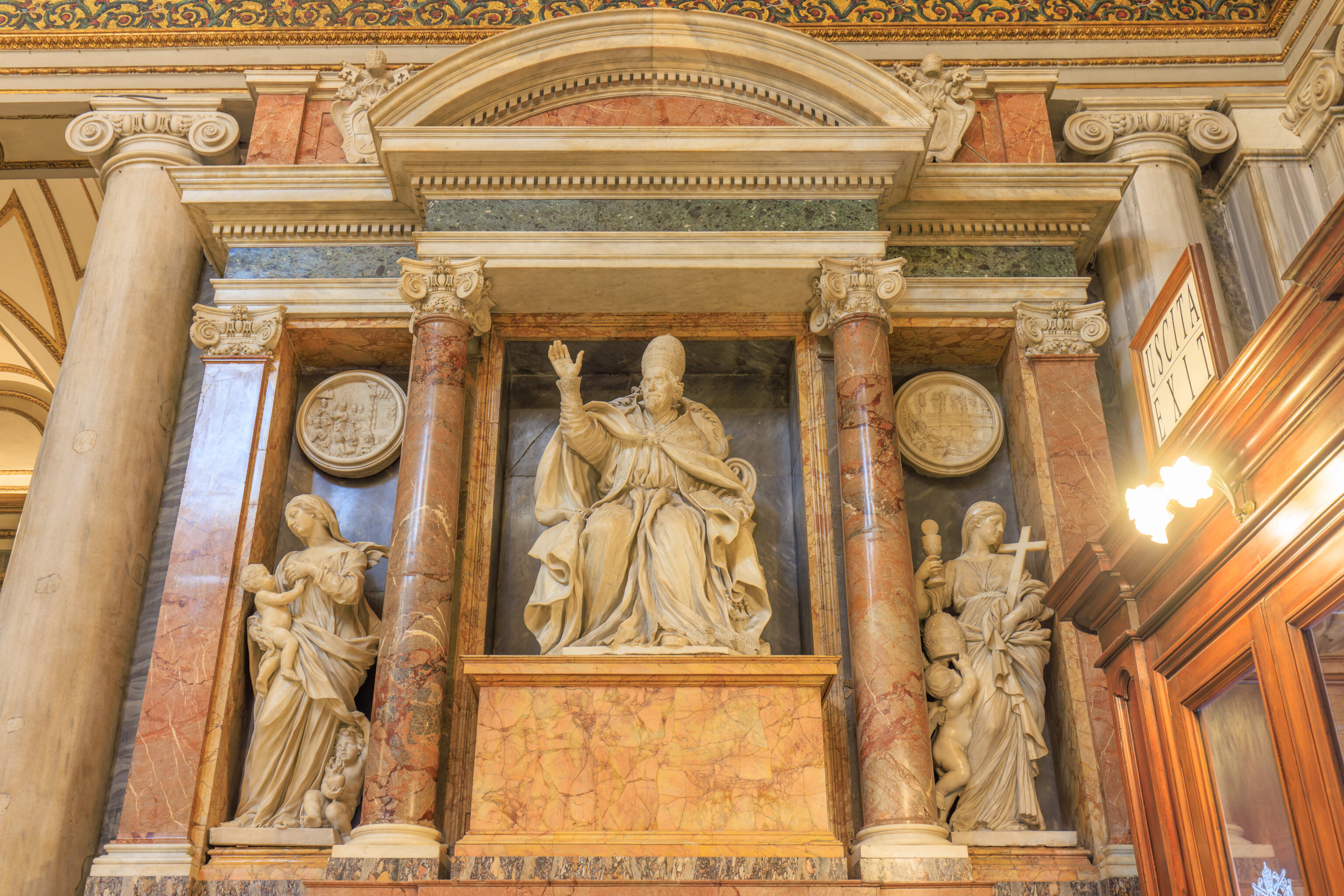
We continued walking through the basilica before heading back out at around 10:10am.

The sun was directly behind the Colonna della Pace (Column of Peace), which is located in front of the basilica, as we exited.
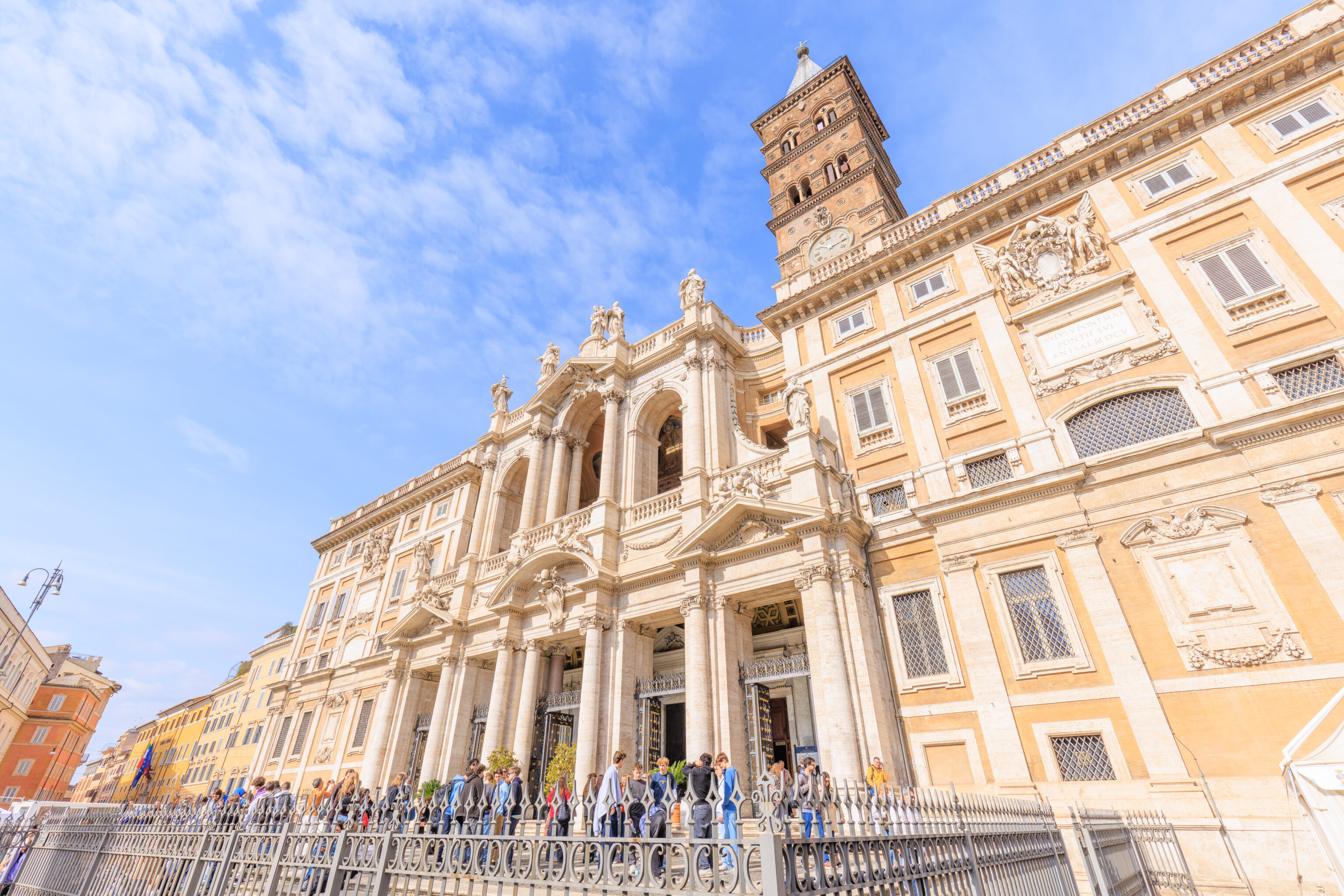
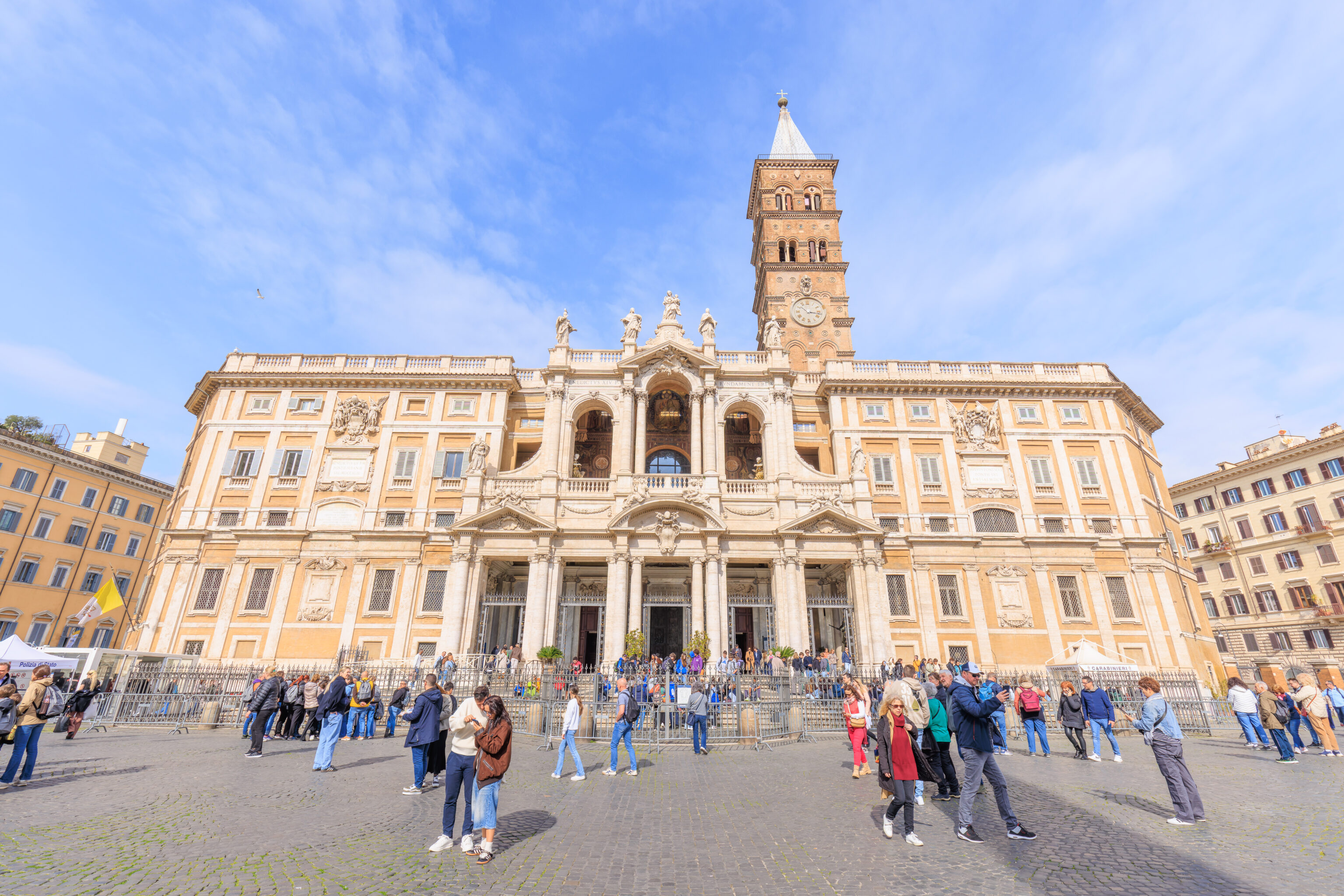
It was definitely busier in front of the basilica when we left compared to when we arrived.
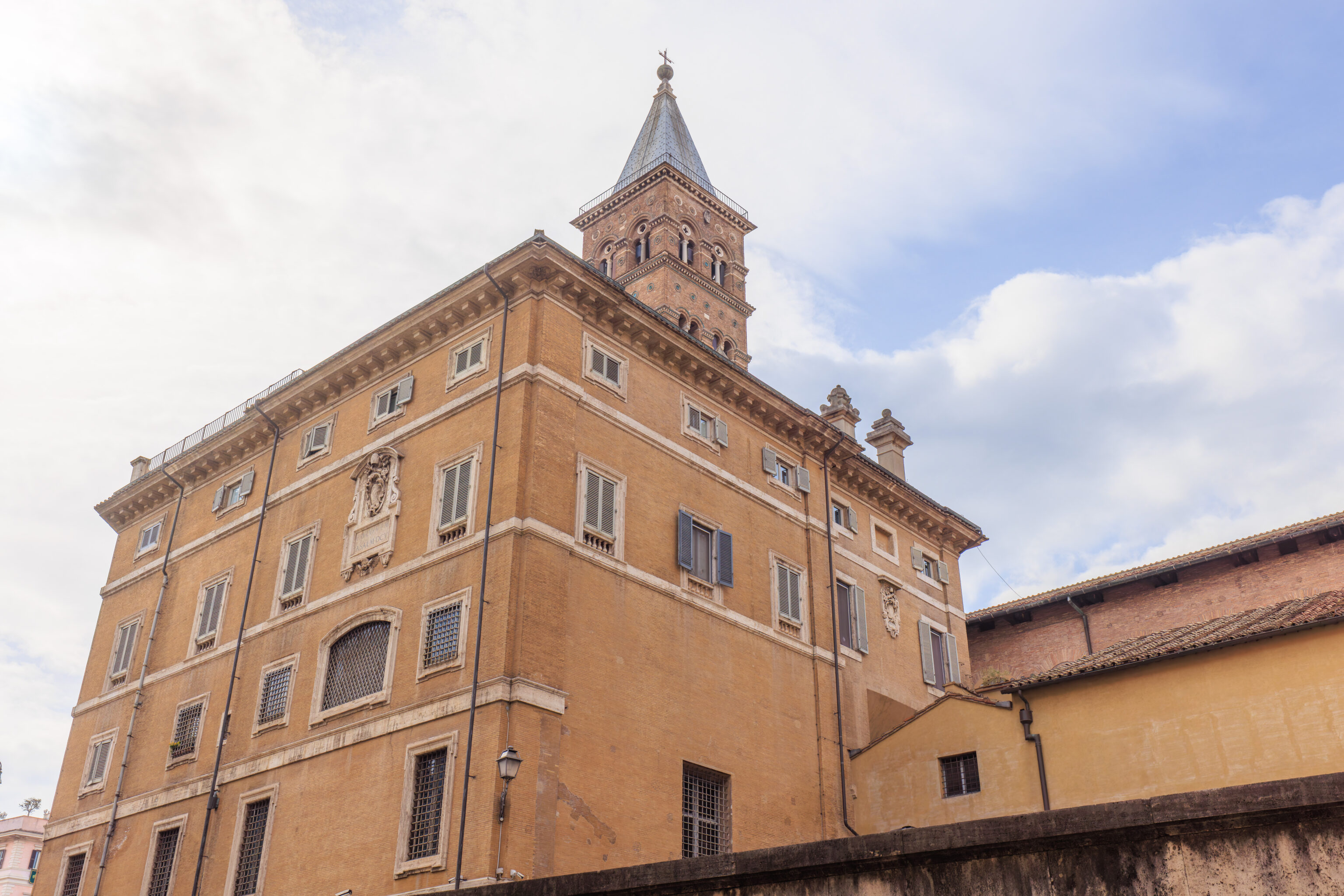

We walked around to the northeast side of the basilica to catch a bus at the Esquilino stop to our next destination, the Basilica of Santa Maria in Aracoeli. The most sensible option available that minimizes walking involves taking bus 71 to the northwest and then switching to a different bus to go south to the basilica, which is adjacent to the Monument to Victor Emmanuel II, which we visited yesterday.
San Silvestro
We got off the bus at the S. Claudio stop to change busses. This stop is at the south end of the Piazza San Silvestro.
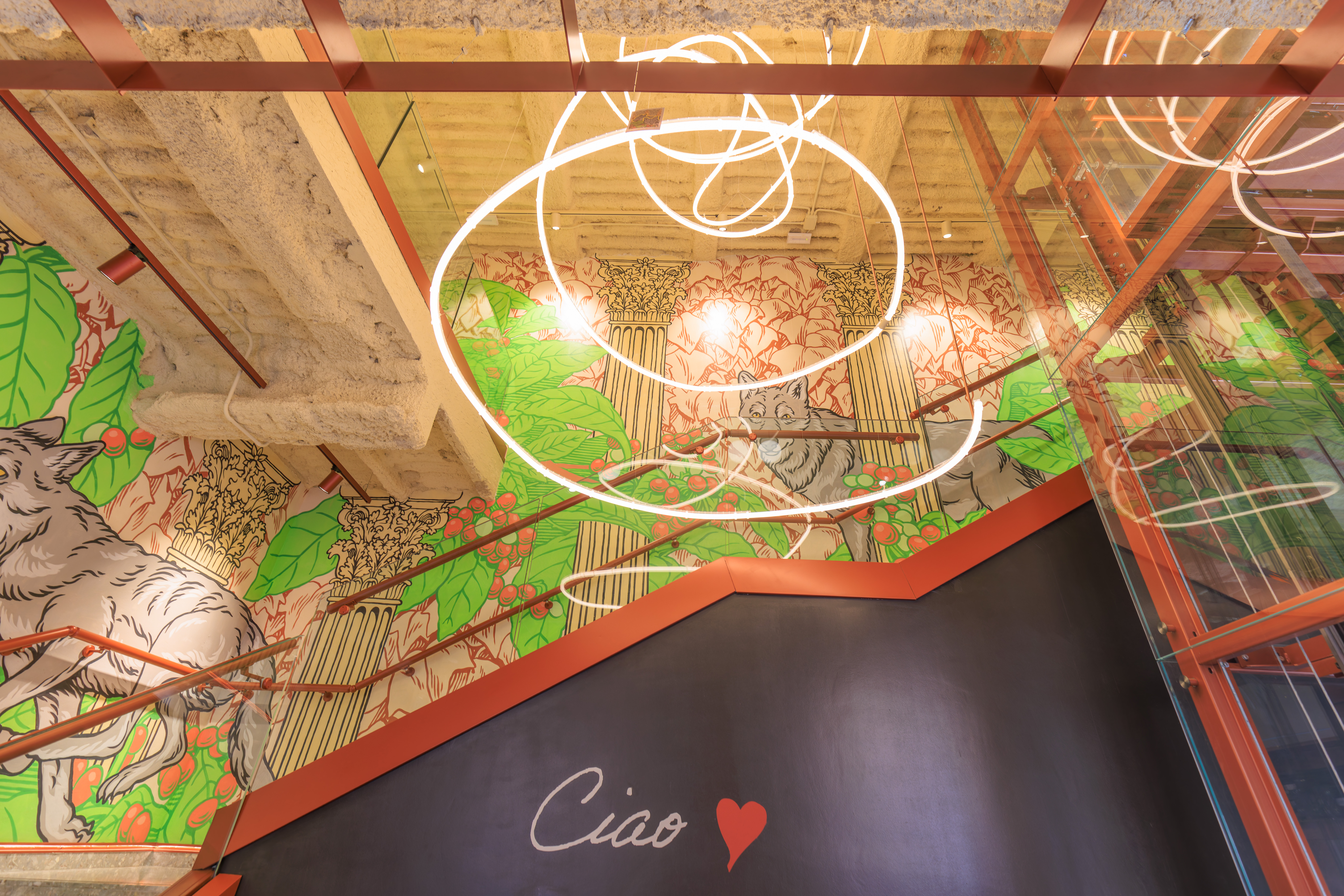
We noticed that there was a Starbucks across from the bus stop. We went in to take a look as we have quite a few of Starbucks’ location specific collectible mugs. We ended up buying a Piazza San Silvestro mug with a Starbucks Reserve-esque design. Although this shop isn’t branded as a Reserve location, it is Starbucks’ Rome Flagship store, a designation we haven’t encountered before.
We went upstairs to use the bathrooms as well. There was a Rome specific mural on the walls with a sign:
ODE TO ROME
LUCAMALEONTE
Acrylic Paint, 2024
Rome, Italy
Wolves are seen bounding between classical Corinthian columns amongst a lush backdrop of surreal coffee botanicals and ivy vines creating almost a trompe l'oeil effect. Luca celebrates his home city Rome with this mural steeped with rich symbolism - wolves hold deep symbolic significance in Roman history and mythology, particularly through the legend of Romulus and Remus, the twin founders of Rome. As well, Luca feels like wolves are sometimes misunderstood, amongst many other wild creatures he hopes humans can better protect and nurture in the future.
This is almost certainly the first time we’ve ever quoted a sign in a Starbucks here!
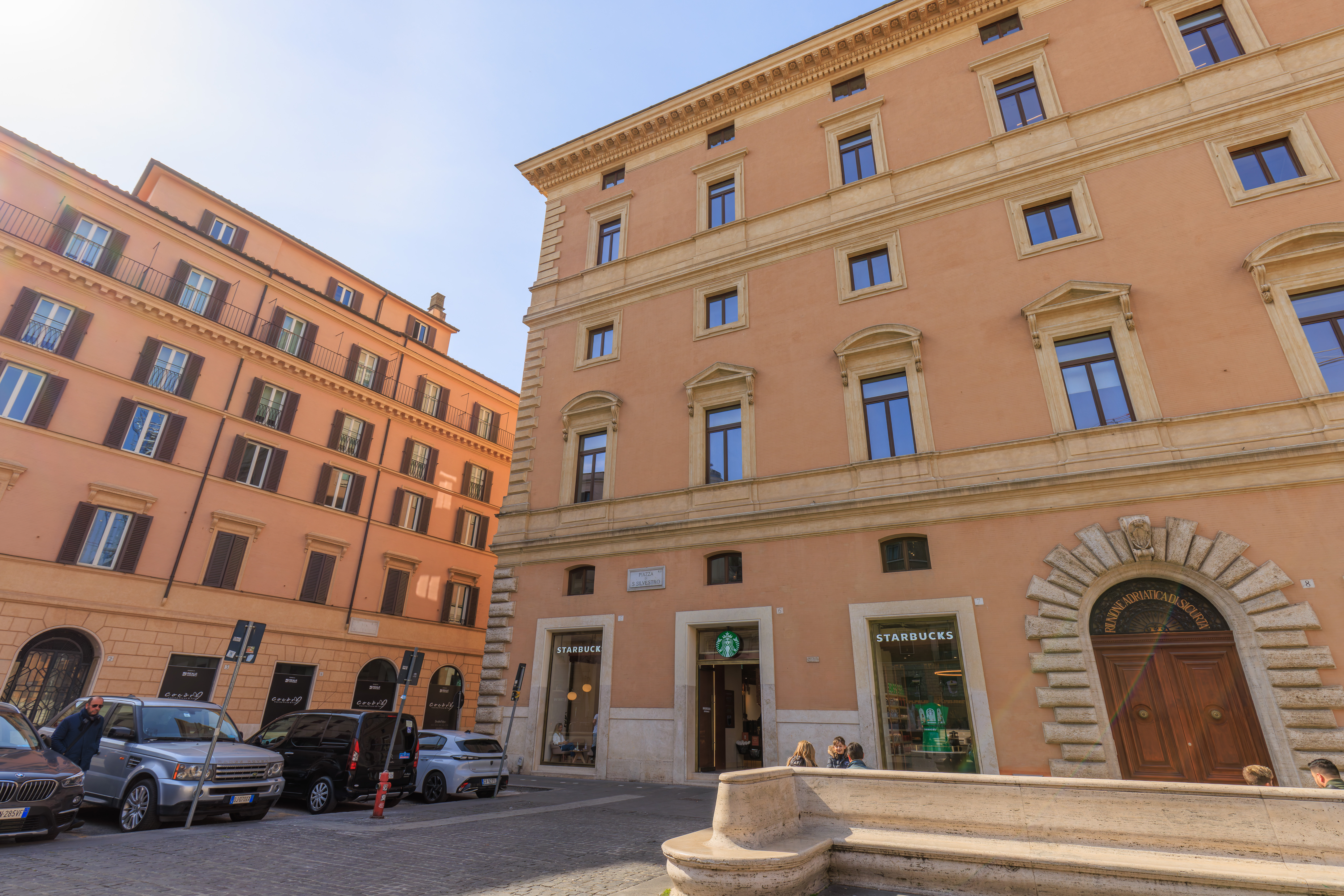
The Starbucks, as seen from the piazza.
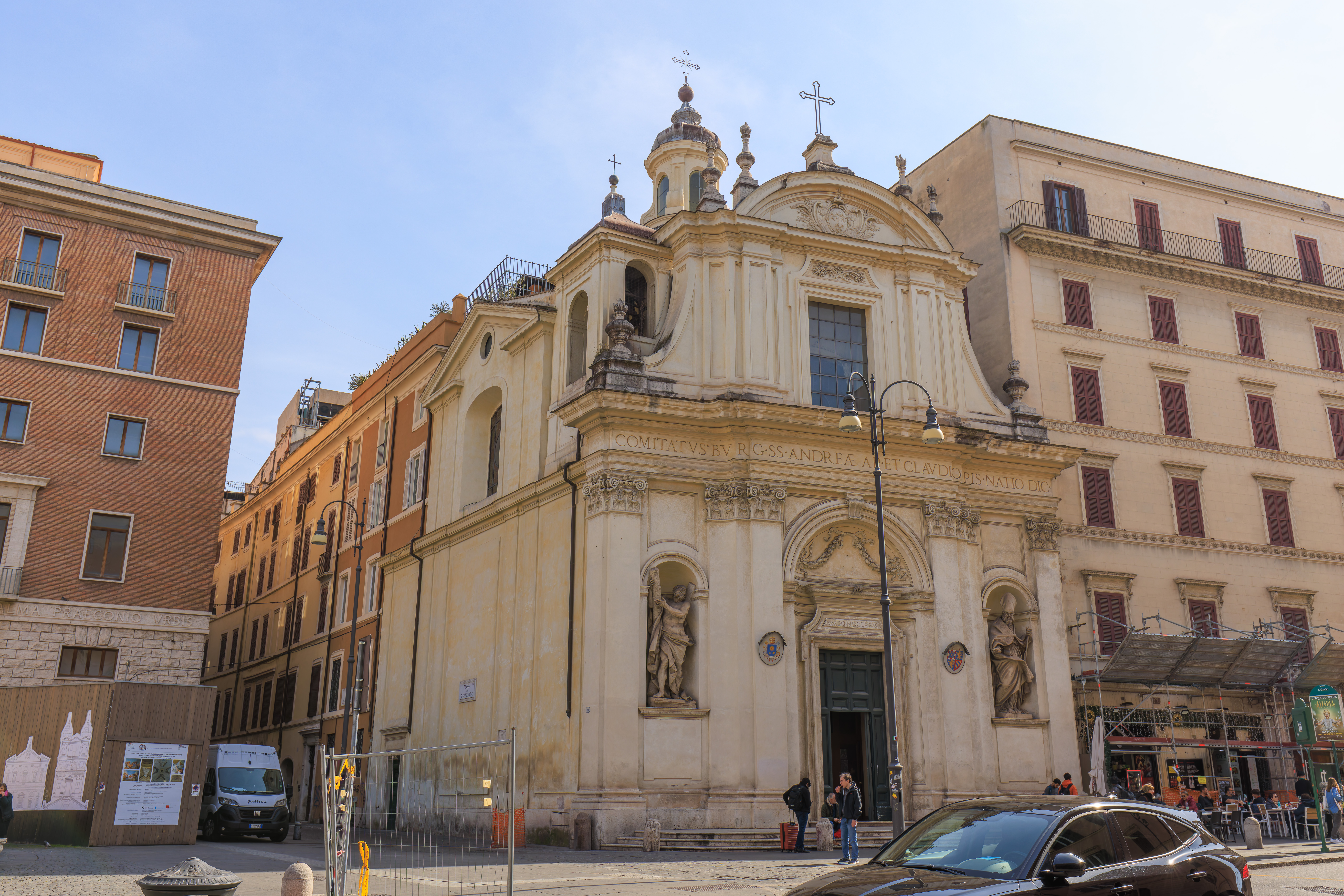
This church, across from the Starbucks and in front of the bus stop that we arrived at, is the Chiesa dei Santi Andrea e Claudio dei Borgognoni (Church of Saints Andrea and Claudio of the Burgundians). We did not go in to take a look as if we entered every church we saw in Rome, we would never make it anywhere!
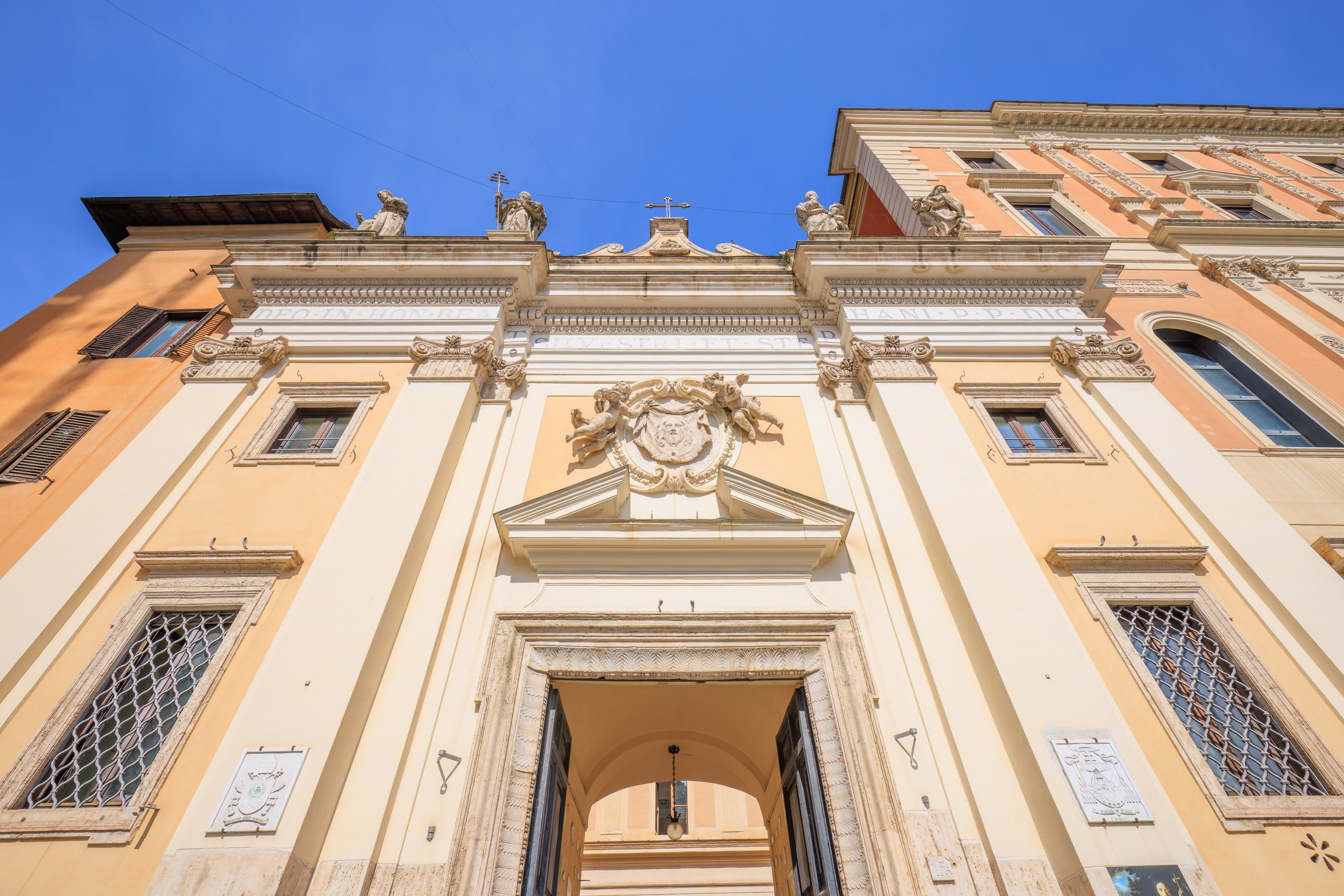
We decided to check out this church on the north side of the piazza, the Basilica San Silvestro in Capite (Basilica of San Silvestro in Capite). We were a bit intrigued as this church is supposed to contain the head of Saint John the Baptist, who was executed by beheading.
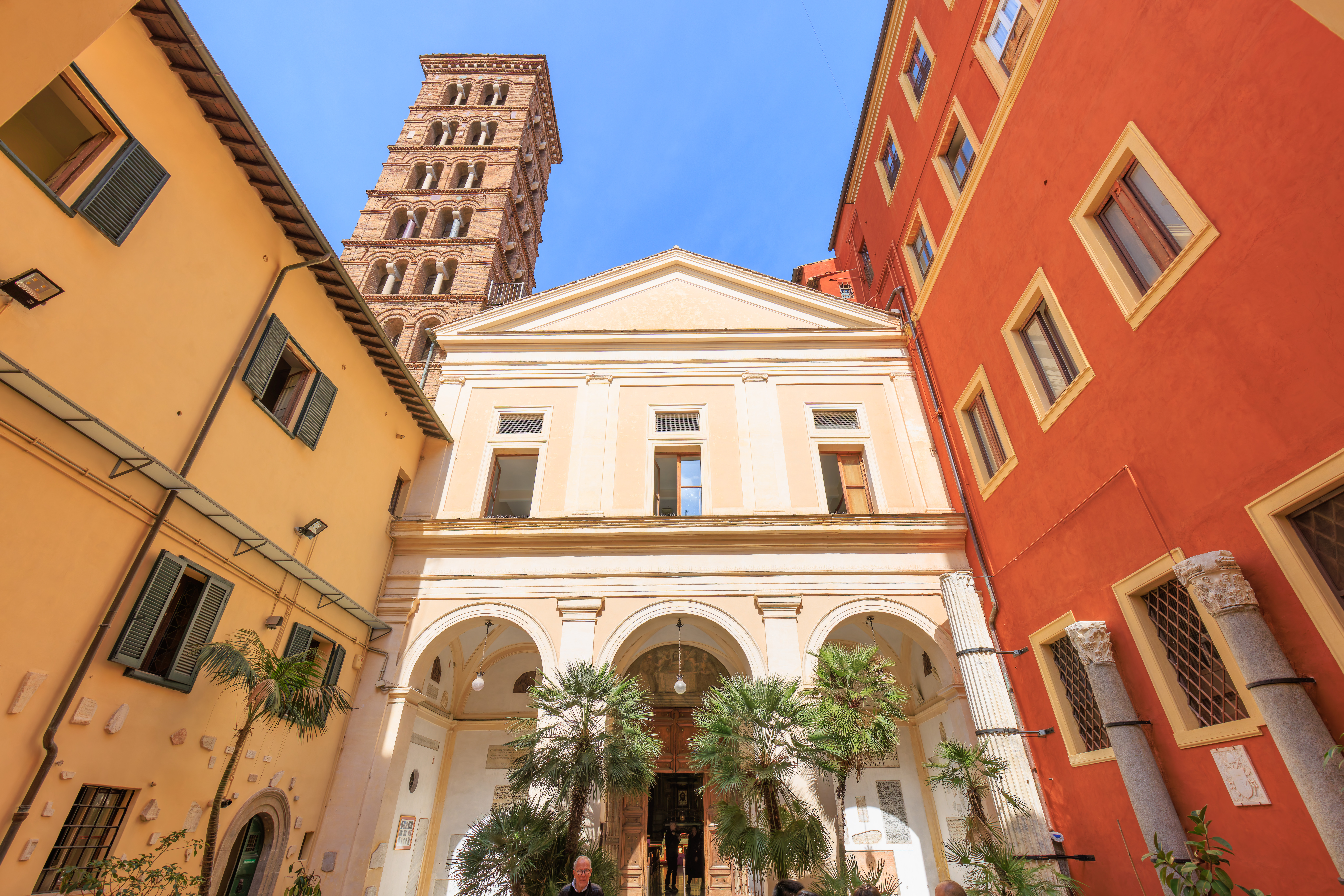
The entrance actually leads into a small courtyard.
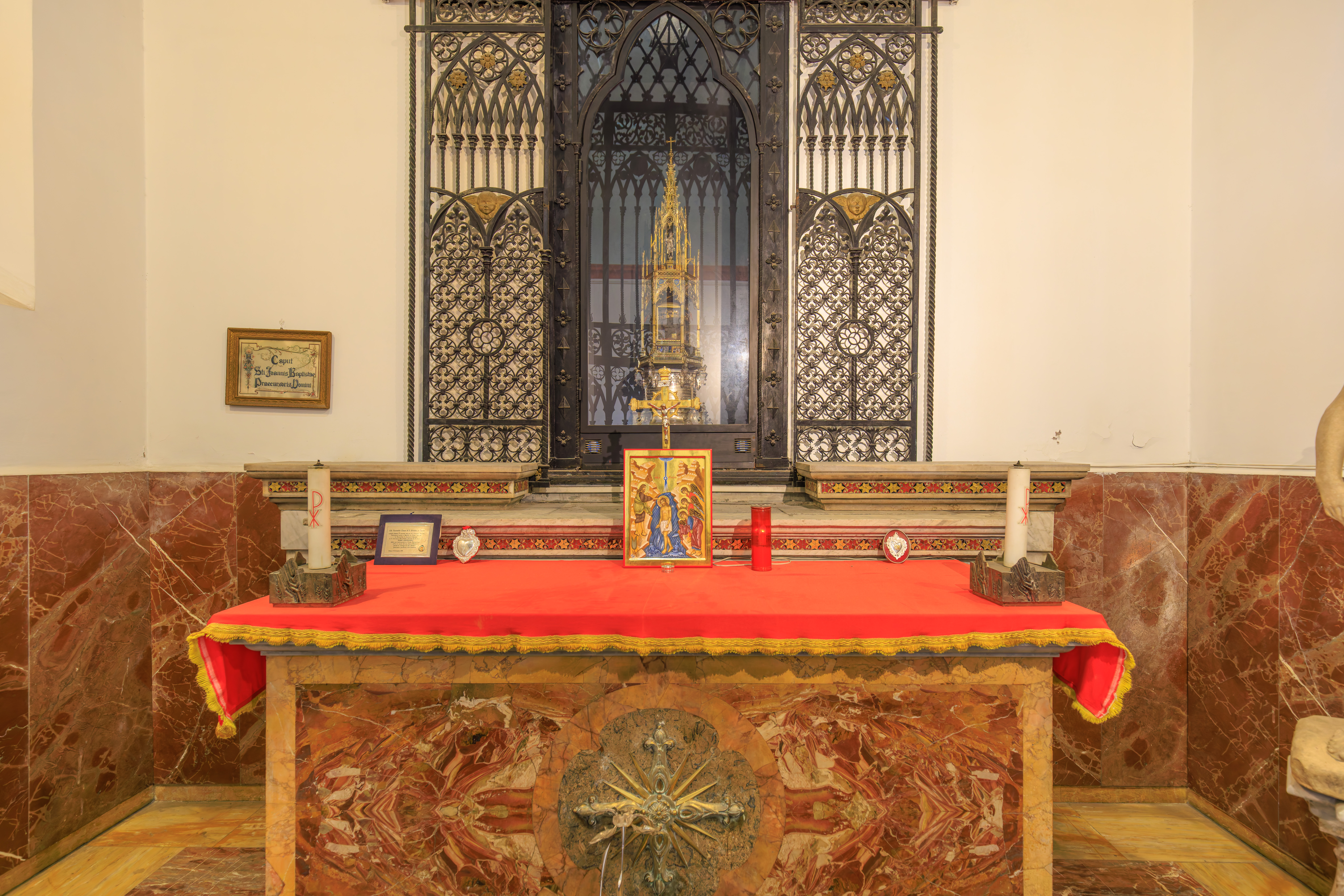
A description of the head being in the first chapel on the left made us think it is supposed to be here. There isn’t anything immediately obvious that indicates a head is stored here, though we didn’t really think it would just be on display on a table or something like that!
But, the sign on the left states in Latin, “caput sti ioannis baptistae praecursoris domini”. This translates to, “the head of Saint John the Baptist, the precursor of the Lord”. We’re not familiar with the specifics here but according to Wikipedia, John the Baptist was a prophet who foretold the coming of a messiah in the future, which ends up being Jesus. Thus, he is the precursor to Jesus.
The basilica’s website turns out to be pretty useful as it has a Relic of John the Baptist page. The head, really just part of a skull, has been encased in wax. It seems like it might be stored in the reliquary in the alcove behind the table.
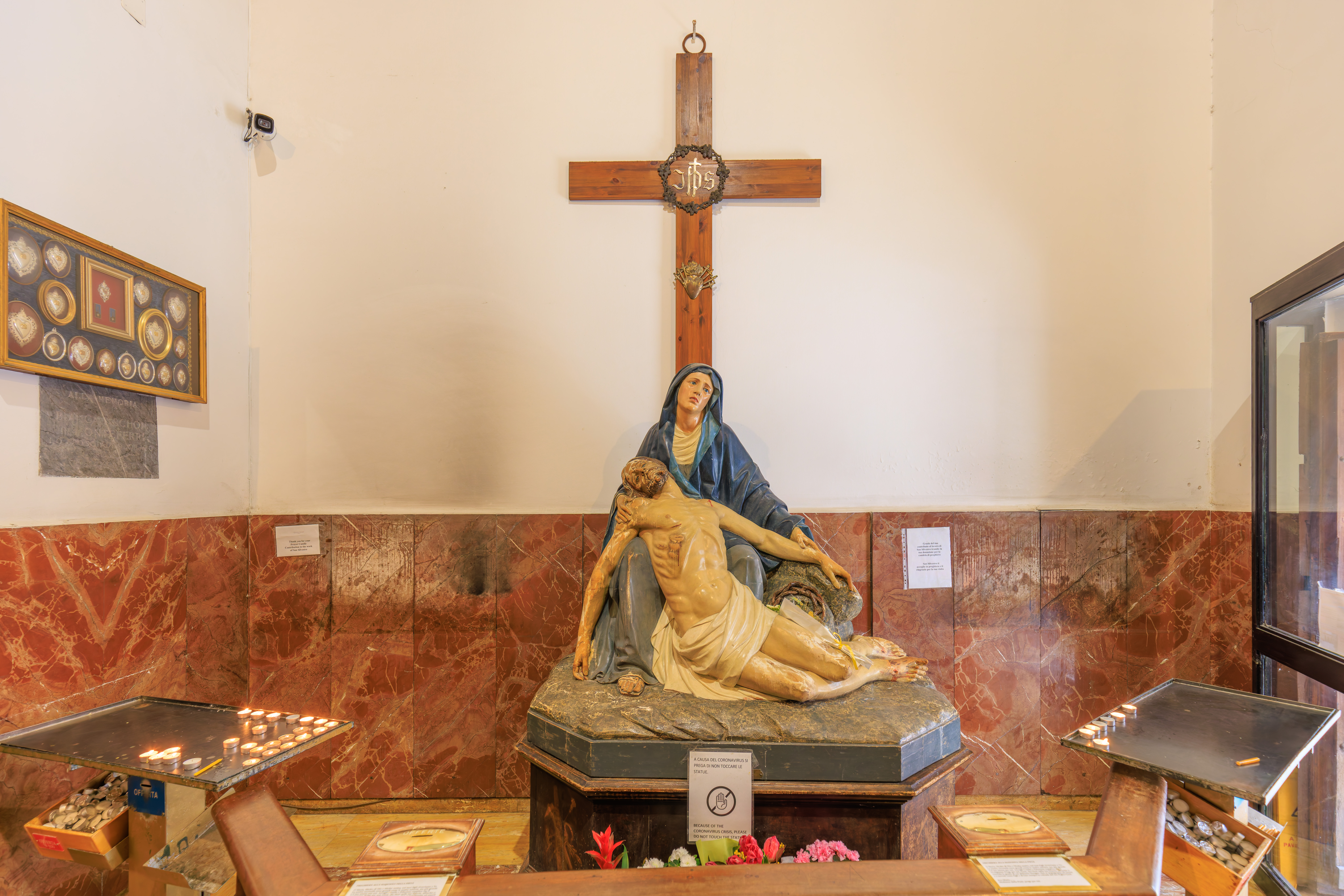
This chapel still carries a warning related to COVID-19.

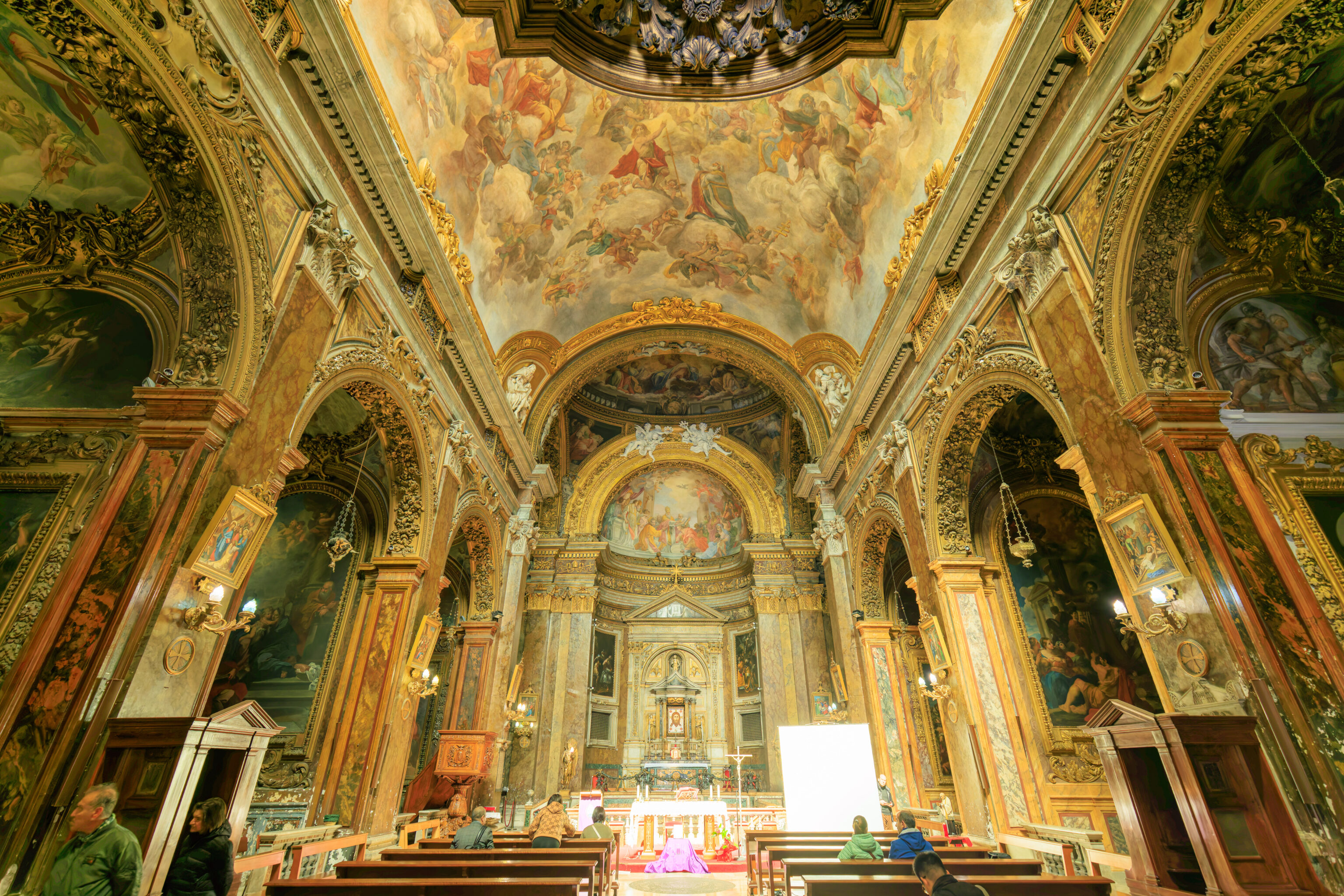

This basilica is considerably smaller than Santa Maria Maggiore. It was also pretty dark other than the altar area which was illuminated by natural sunlight.
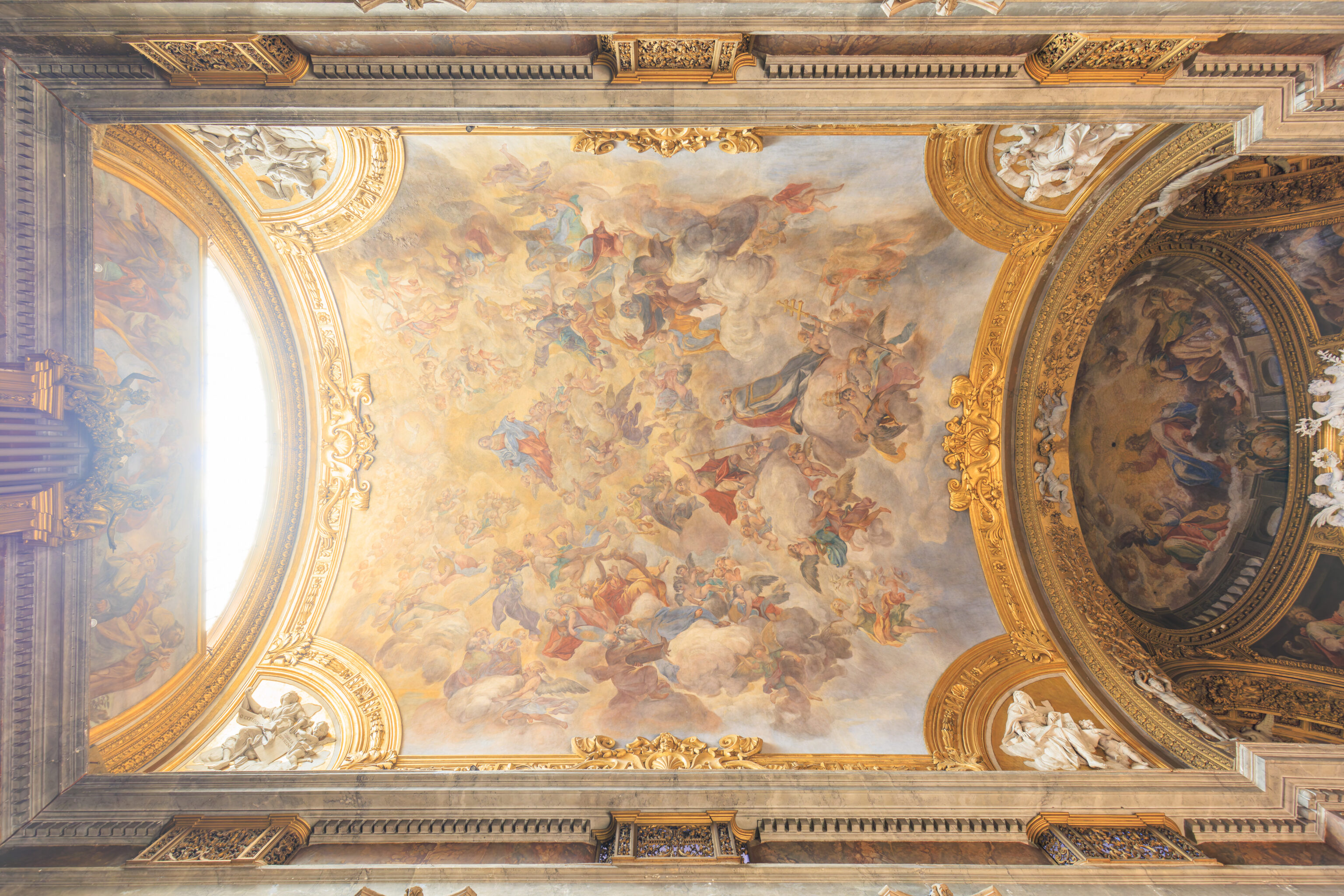
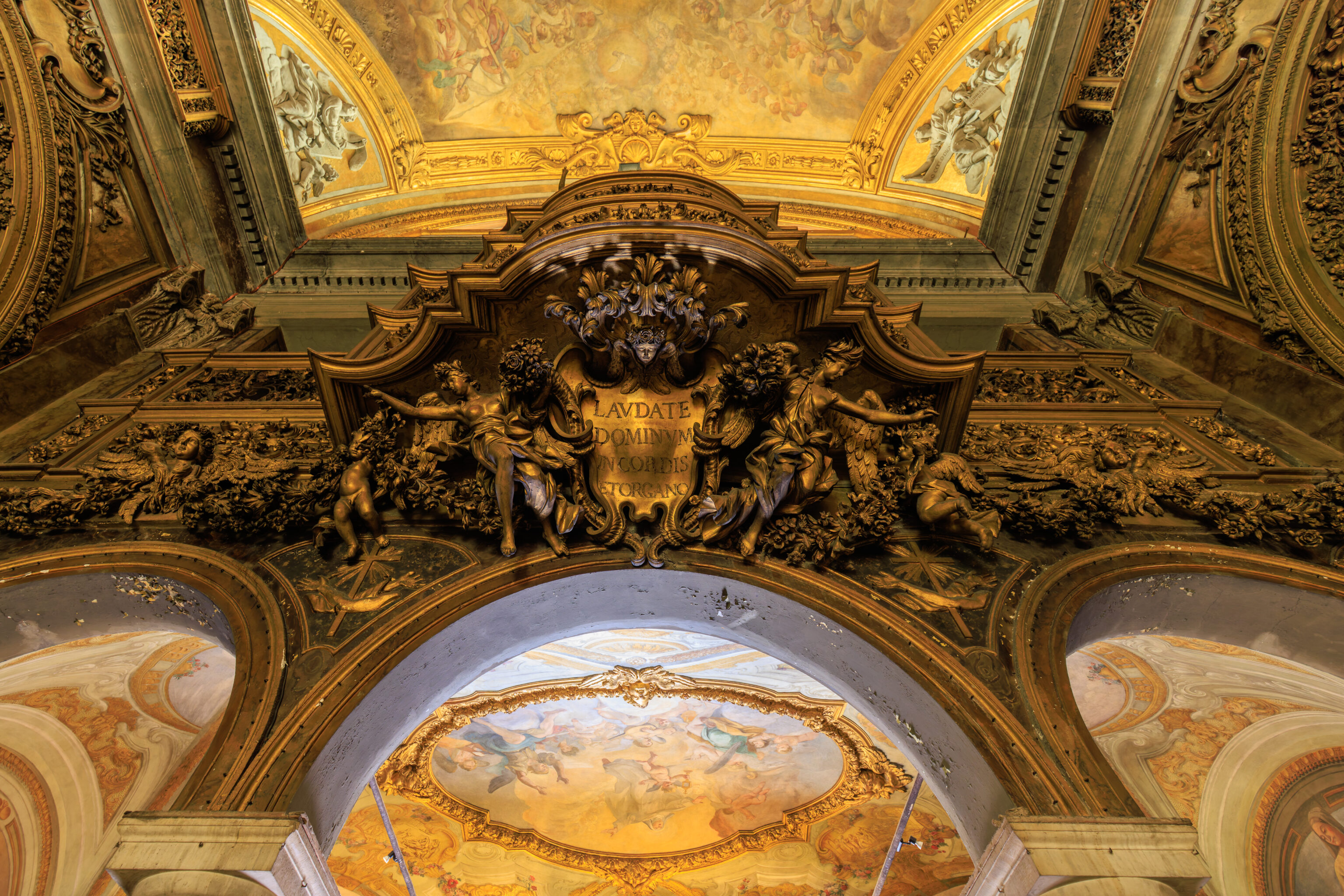
But like the larger basilicas that we’ve visited so far in Rome, there is quite a bit of detail everywhere, including above.
Piazza Colonna
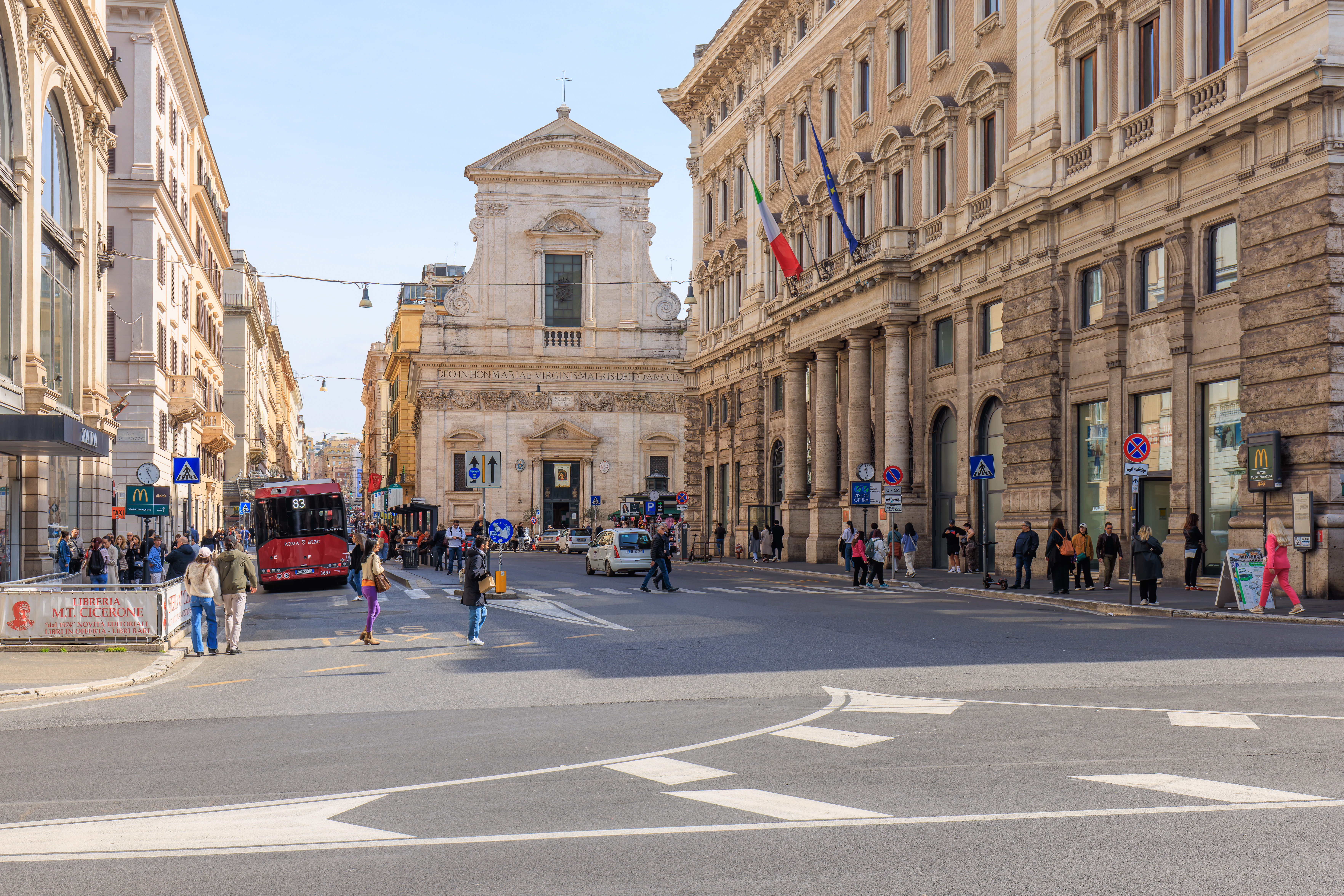
Rather than taking a bus to the Basilica of Santa Maria in Aracoeli as we had originally planned, we decided to walk as we would walk by the Piazza Colonna, which we’ve passed by now multiple times.
This was the view to the east from the northeastern corner of the piazza. The church in the background is the Chiesa di Santa Maria in Via (Church of Saint Mary on the Way). Again, another church that we aren’t planning on visiting due to insufficient time.
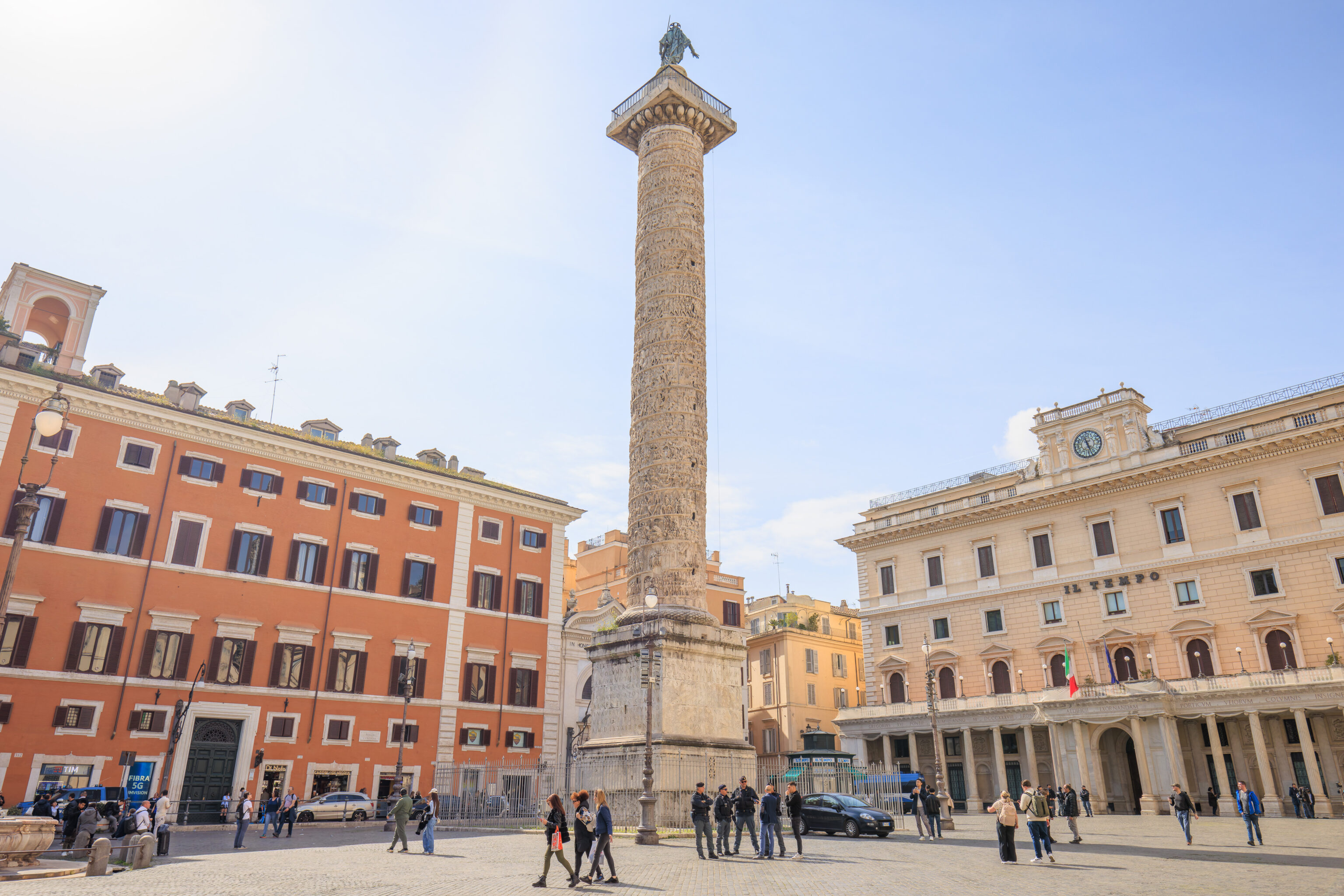
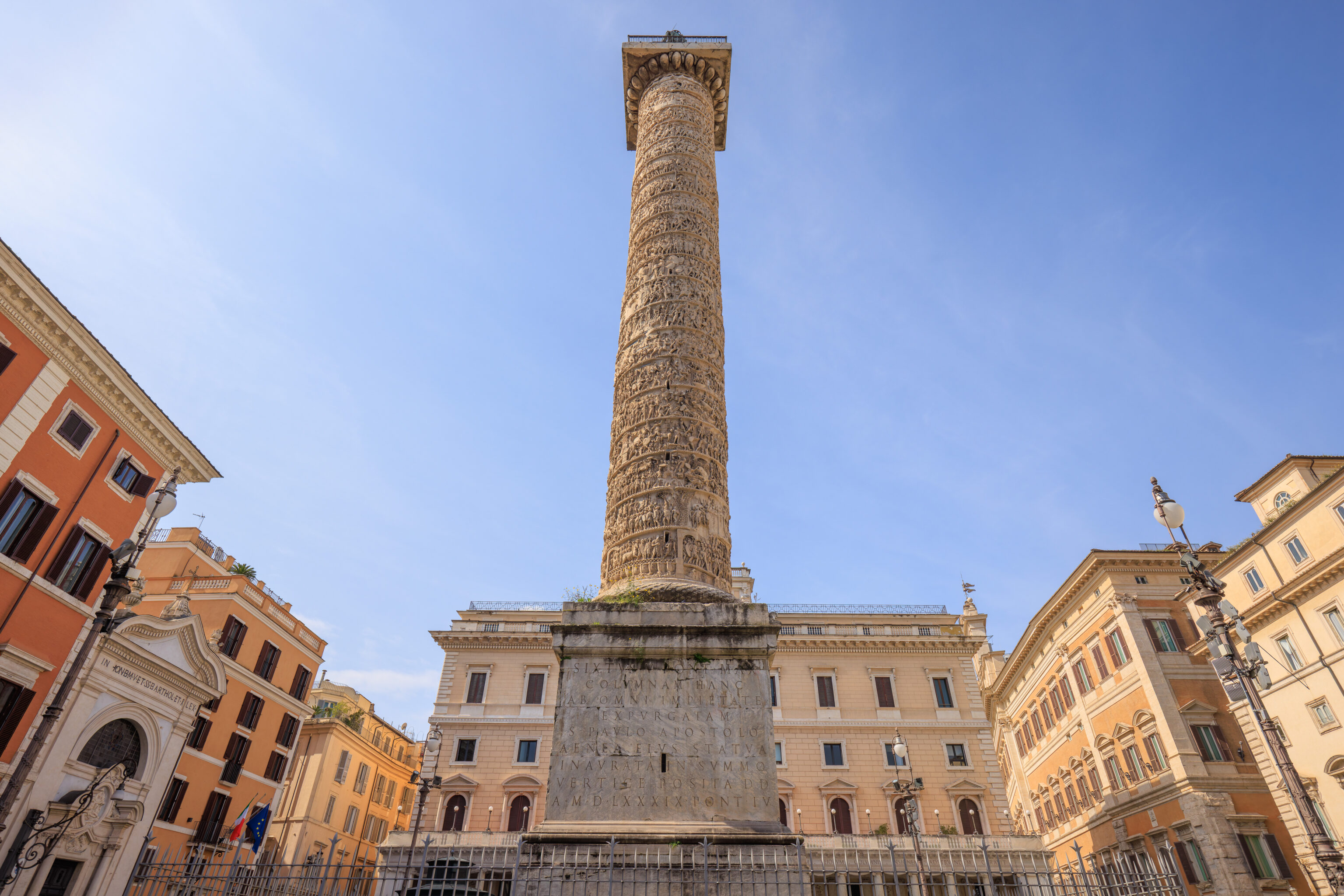
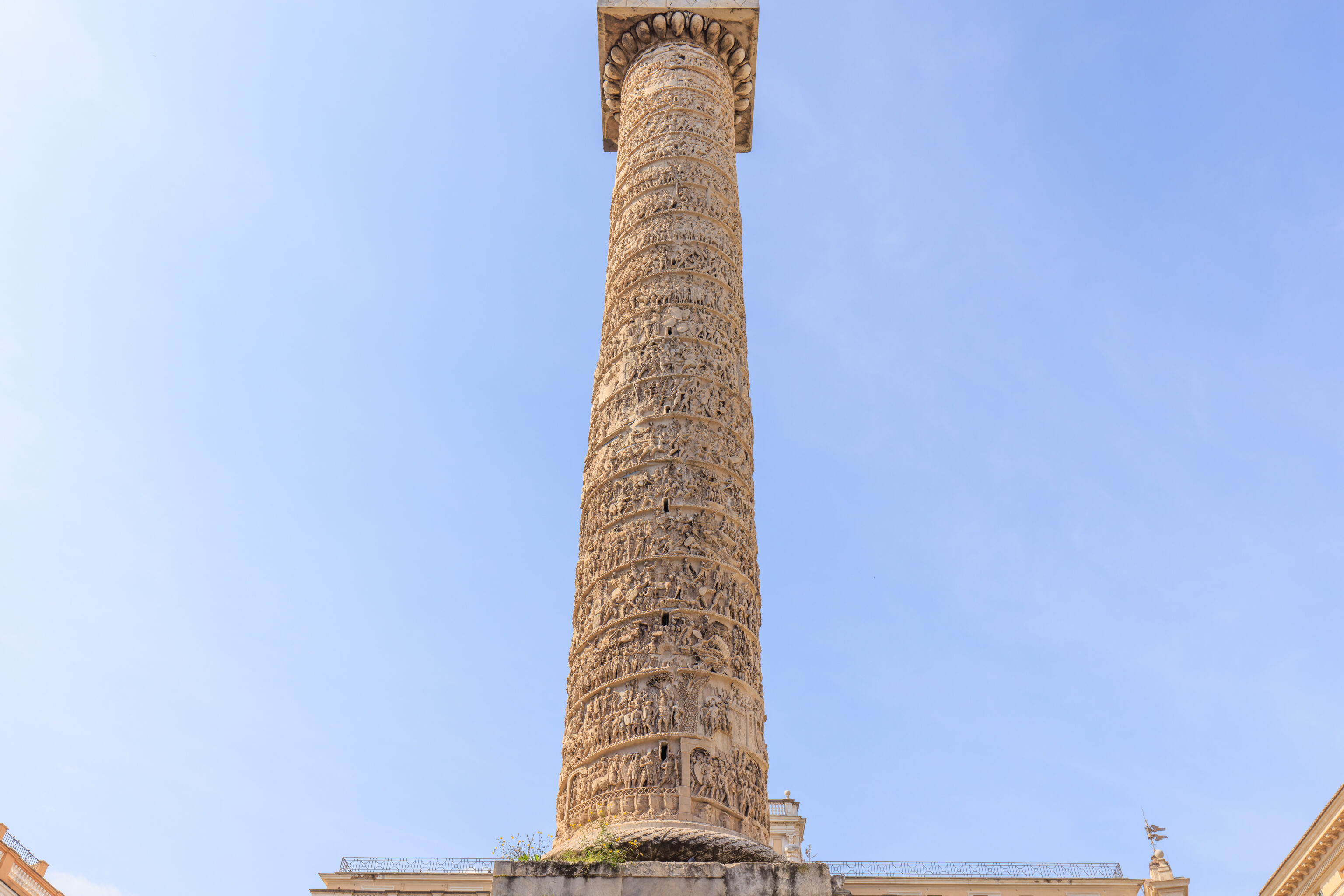
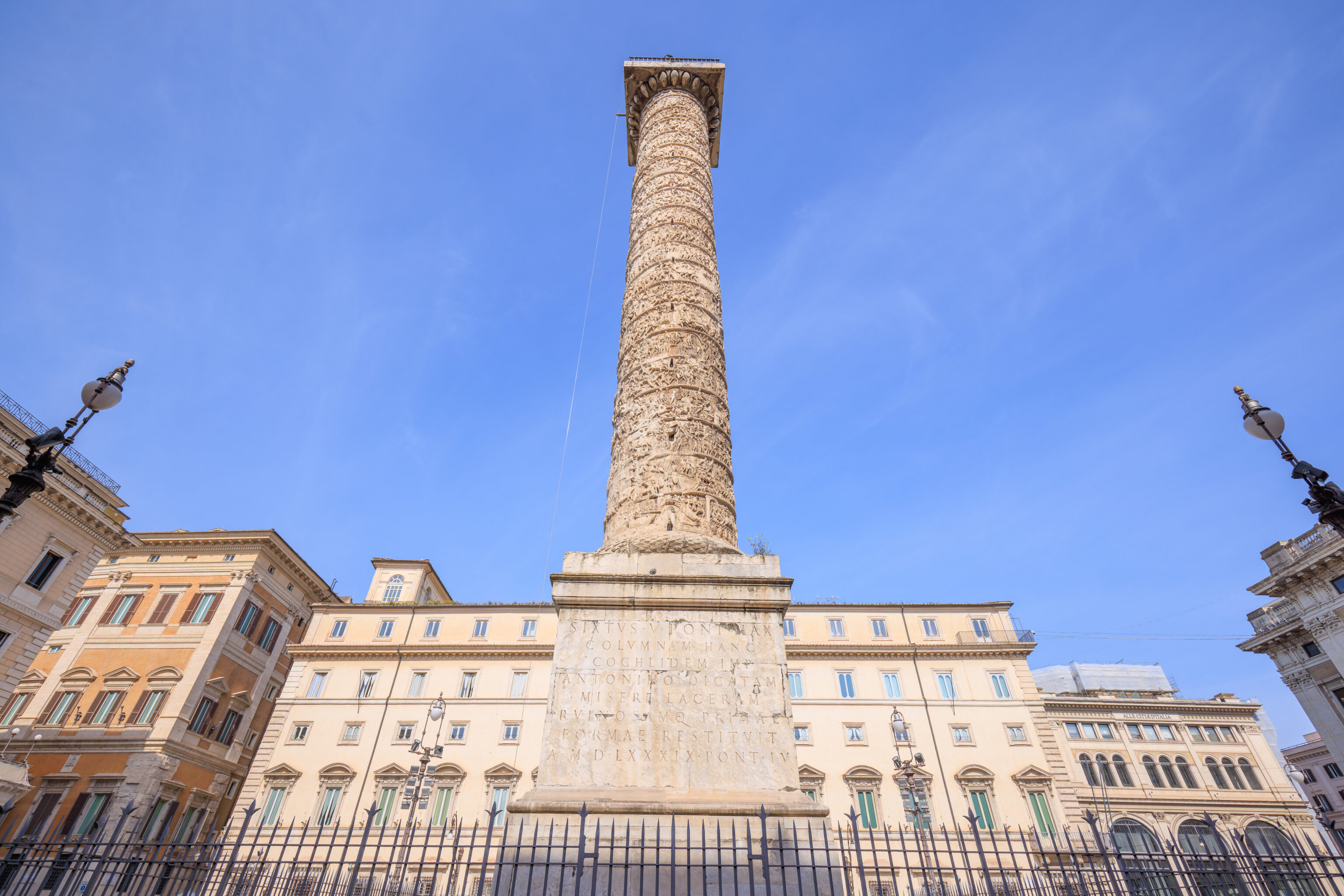
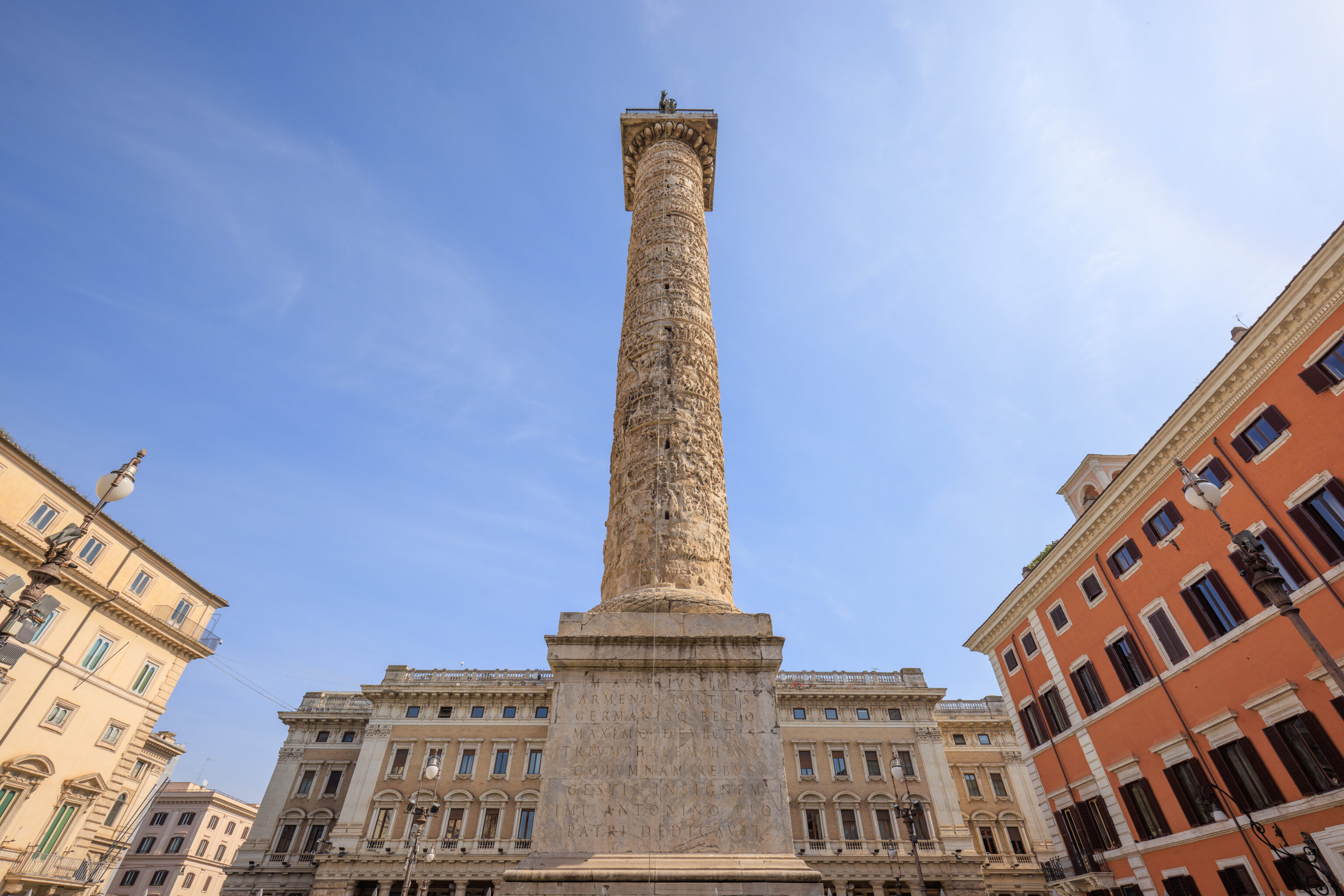
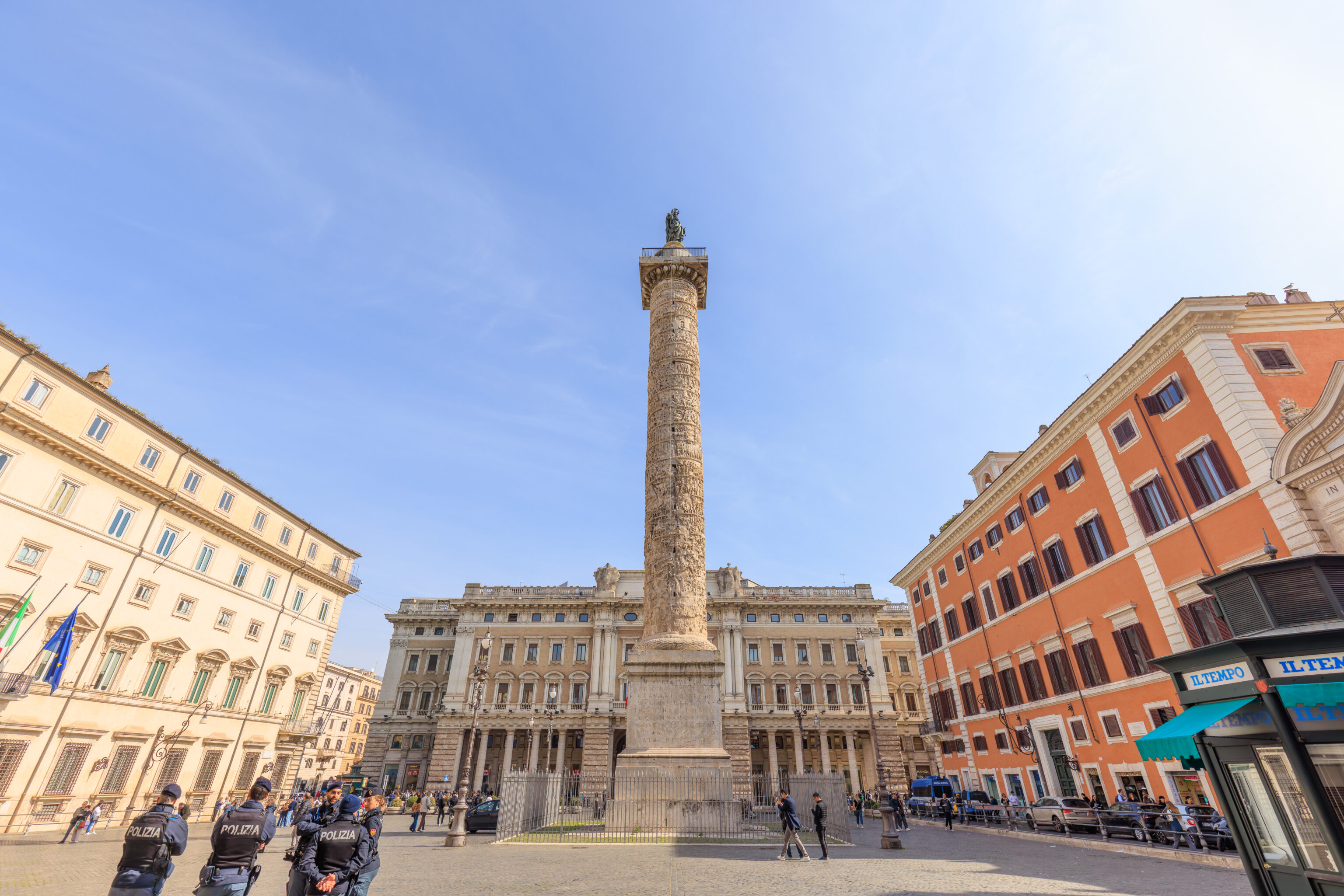
The column in the middle of the piazza is the Colonna di Marco Aurelio (Column of Marcus Aurelius). Marcus Aurelius was the Roman Emperor from 161 to 180 AD. This column was built by his son, Commodus, who was emperor until 192 AD. Both emperors are in the movie Gladiator, although the historical aspects are fictionalized with Commodus murdering Marcus Aurelius.
The scenes on this column depict scenes illustrating Marcus Aurelius’ victories in the Marcomannic Wars. Trajan’s Column, which we saw on the day we visited the Colosseum, predates this column and is of a similar design. Another column based on this design is the much newer Colonne Vendôme at Place Vendôme in Paris, which we visited in 2023.
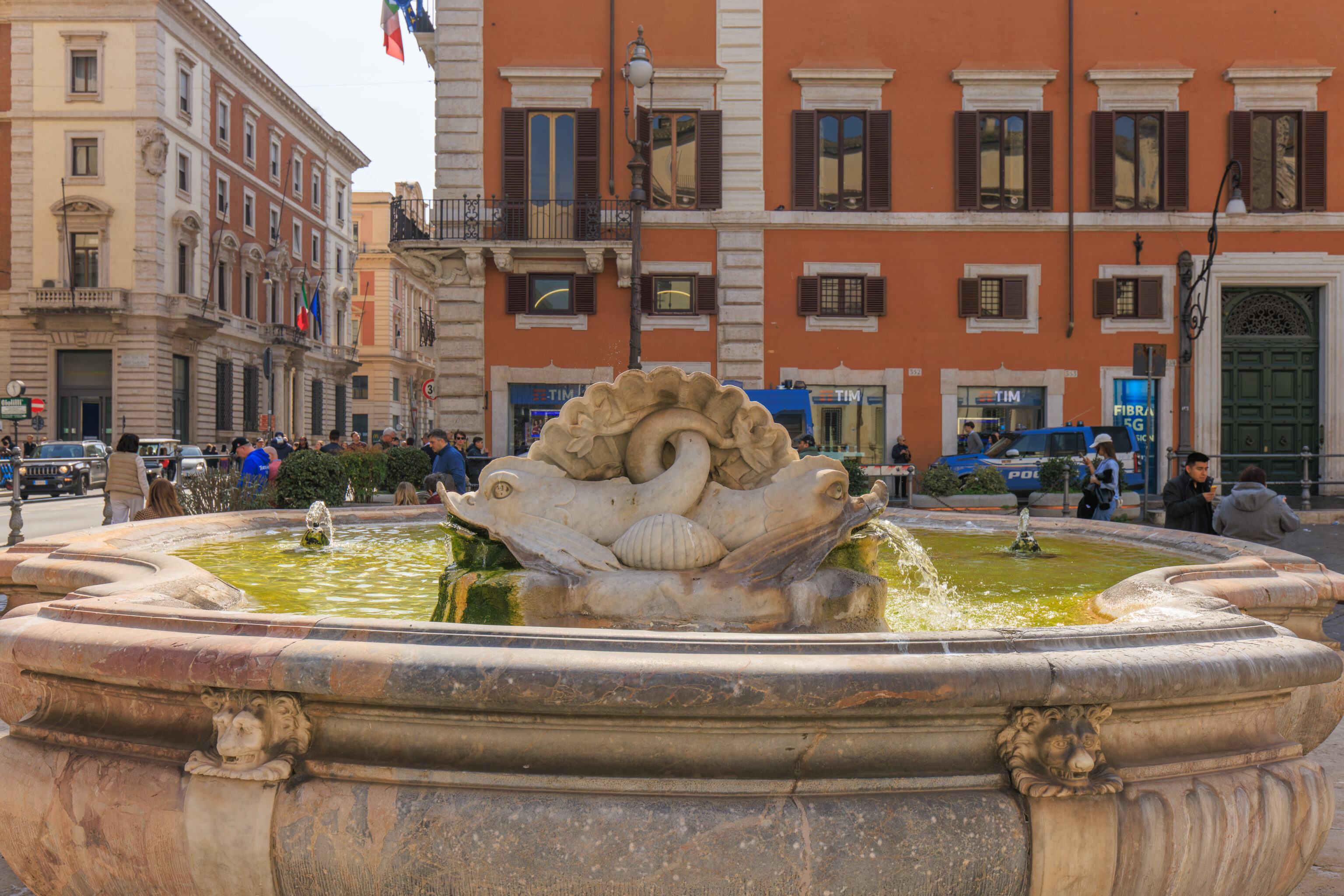
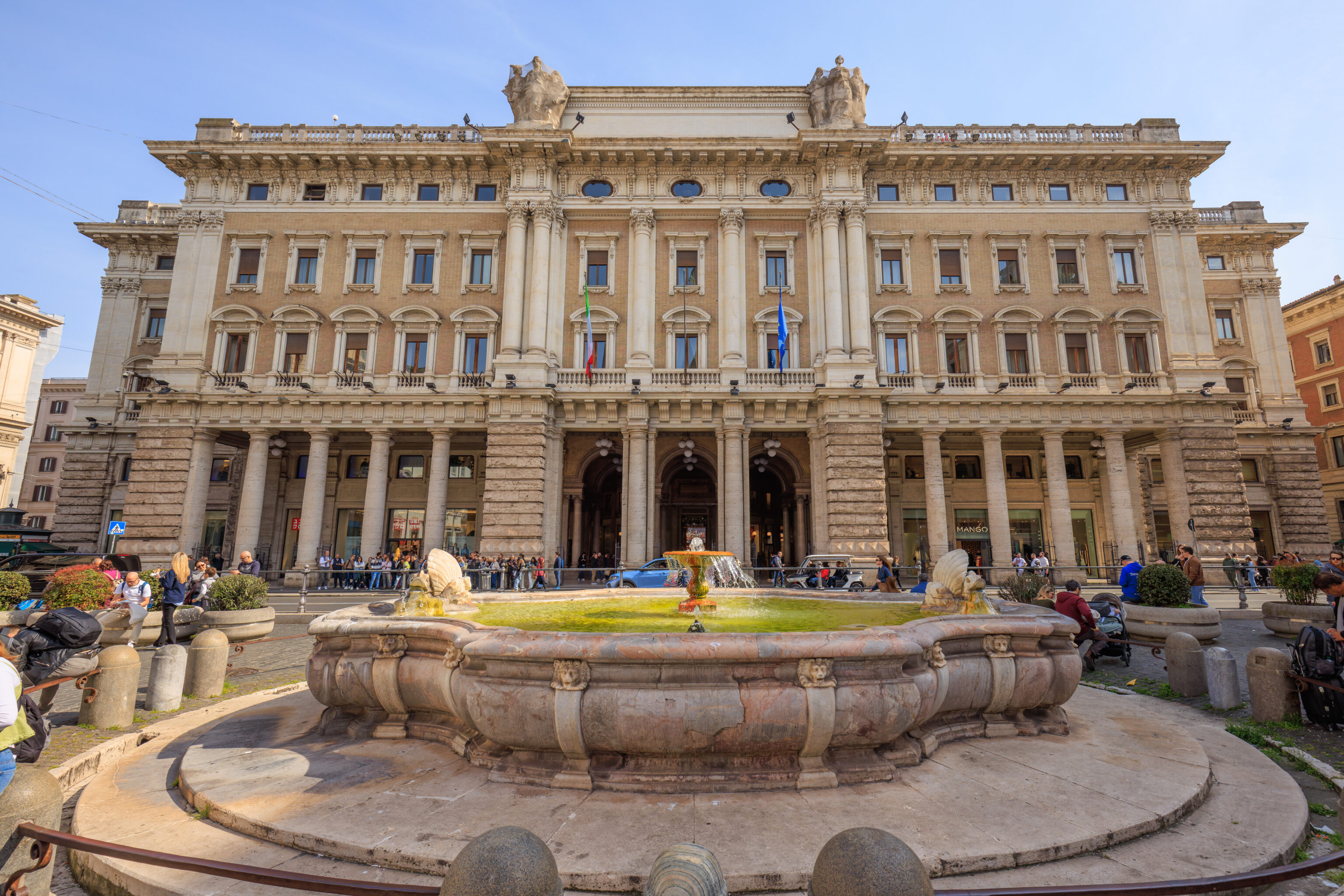
This fountain is from the 16th century, a relative new addition!
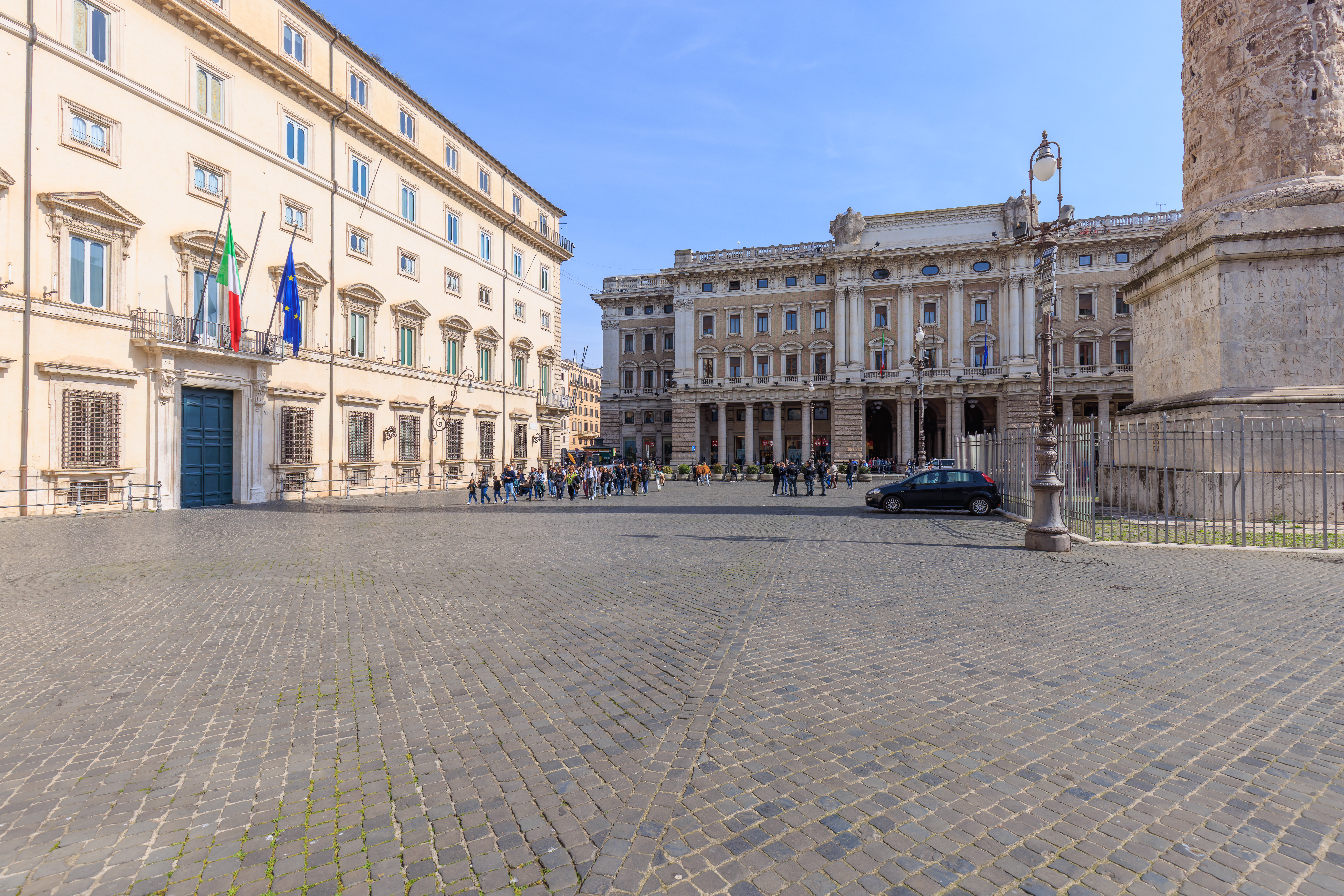
The building on the left is the Palazzo Chigi, official residence of the Prime Minister.

This building, on the west side of the piazza, houses Il Tempo (The Time), an Italian newspaper.
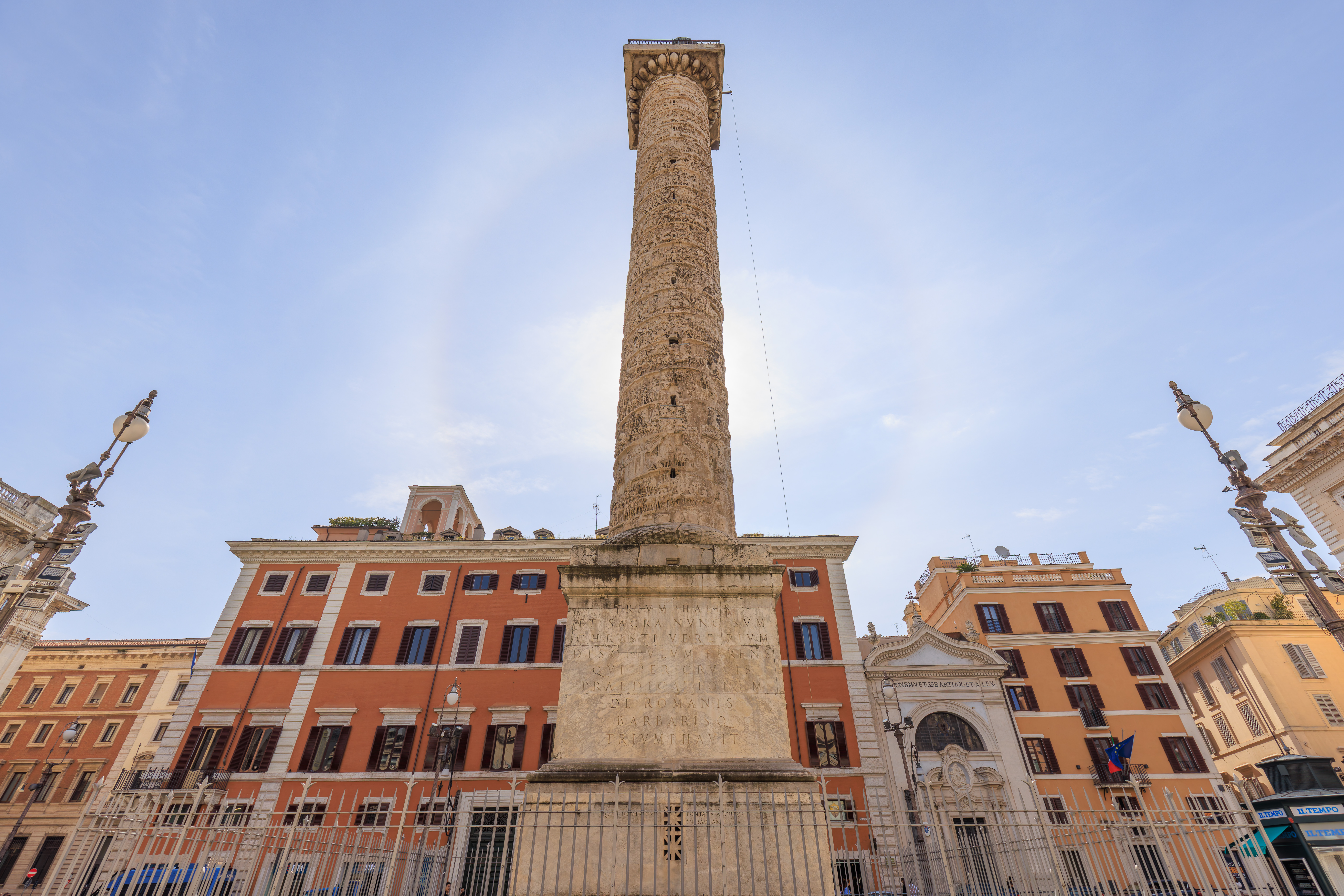
We didn’t notice it at the time but we captured a 22° halo.
Basilica of Santa Maria in Aracoeli
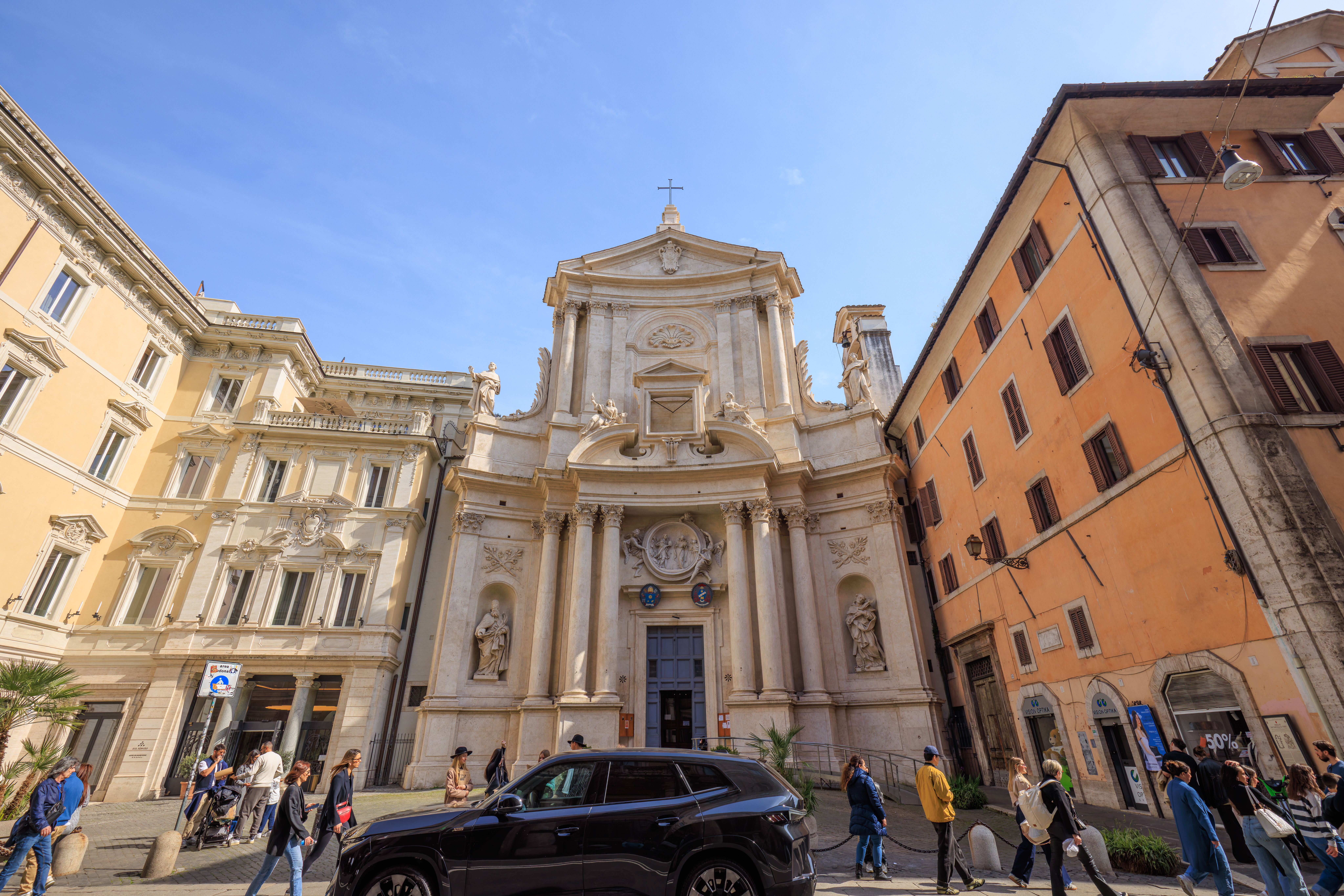
From the piazza, we walked to the south along the Via del Corso. This narrow church is the Chiesa di San Marcello al Corso (Church of Saint Marcellus on the Corso).
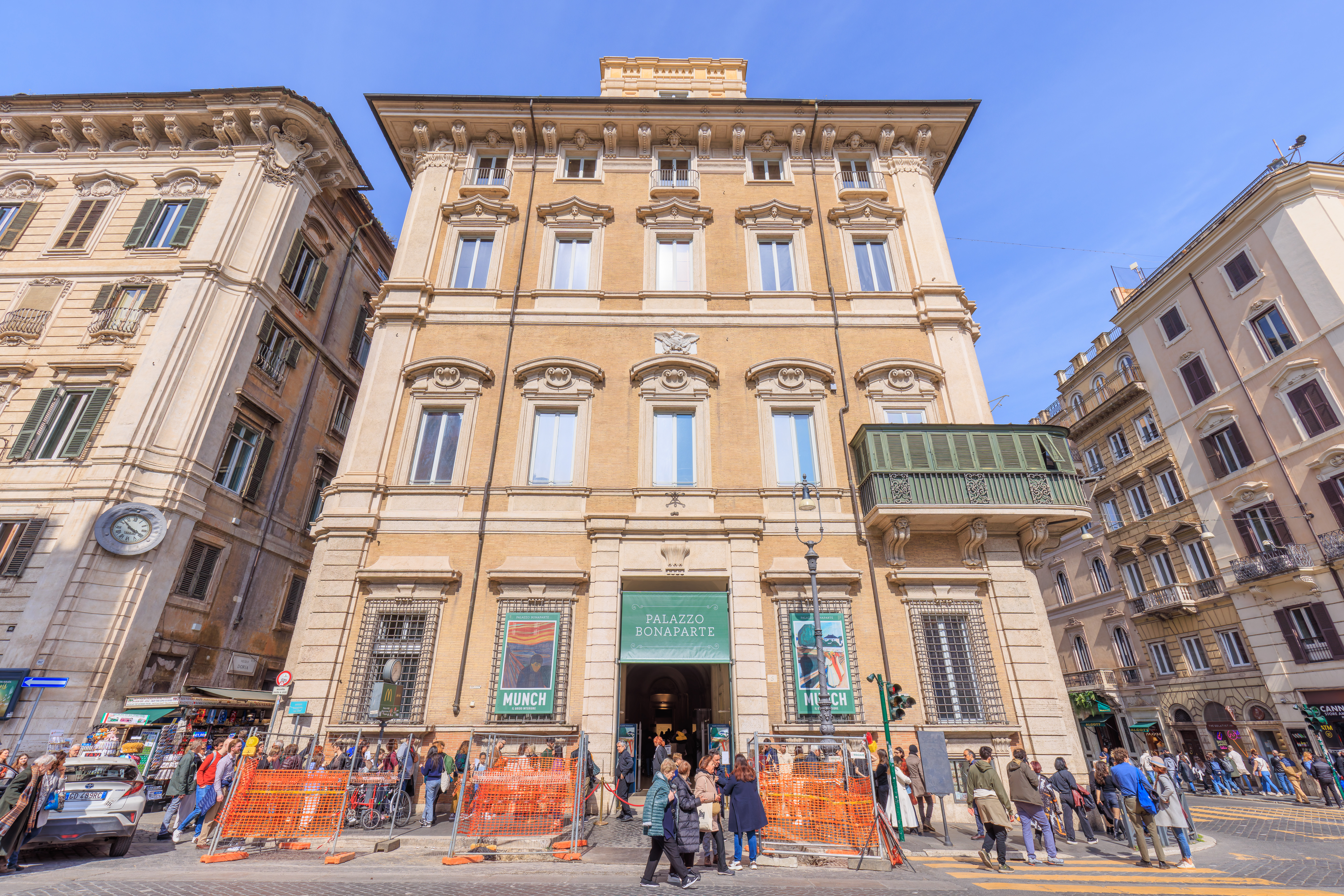
After reaching the corner opposite of the Palazzo Venezia, we were a bit surprised to find this building, the Palazzo Bonaparte. It was purchased by Maria Letizia Bonaparte, Napoleon‘s mother! She purchased the palazzo and lived there after Napoleon’s final defeat and exile to Saint Helena.
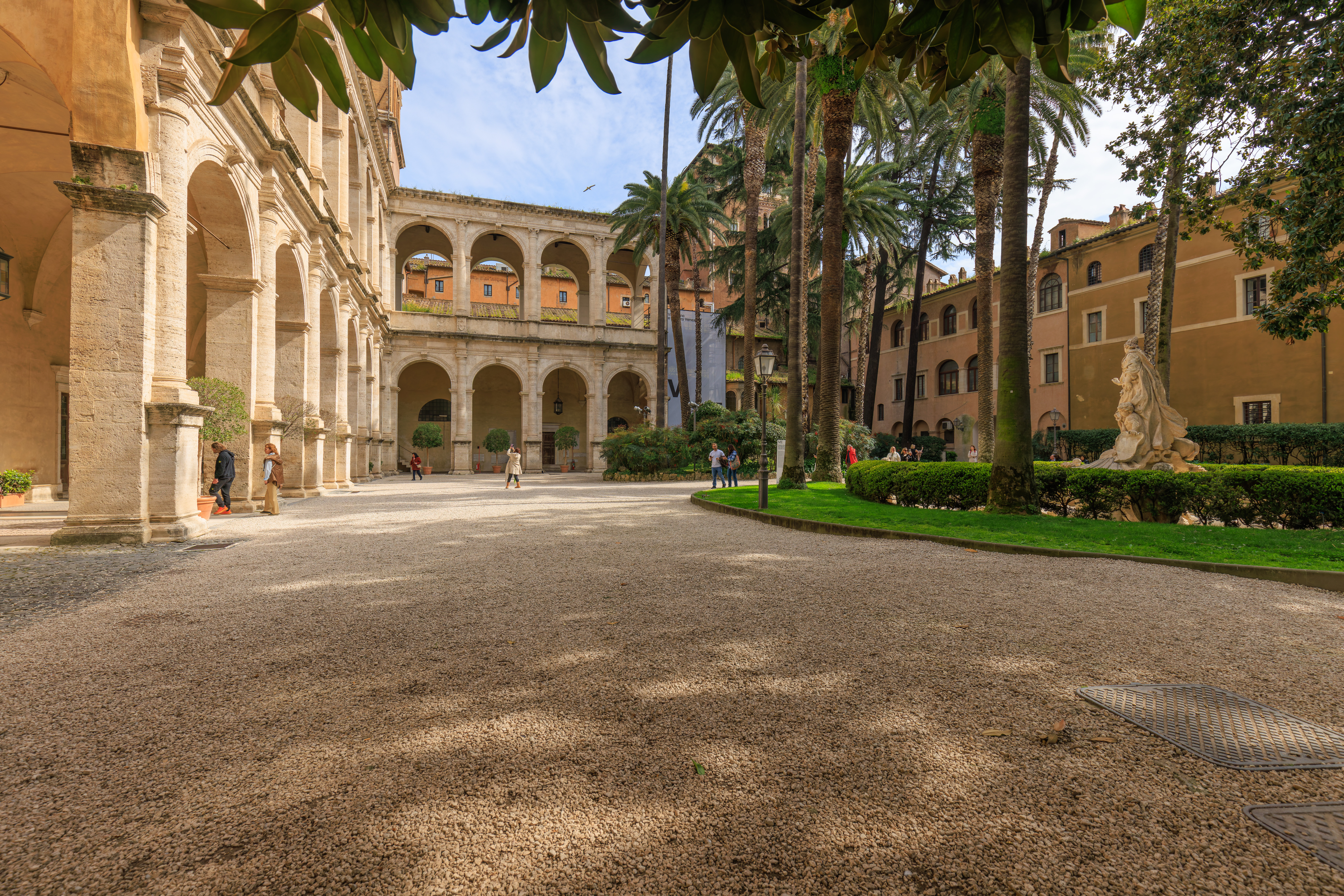
We returned, as we had visited yesterday, to the large park-like courtyard at the Palazzo Venezia to take a brief break.
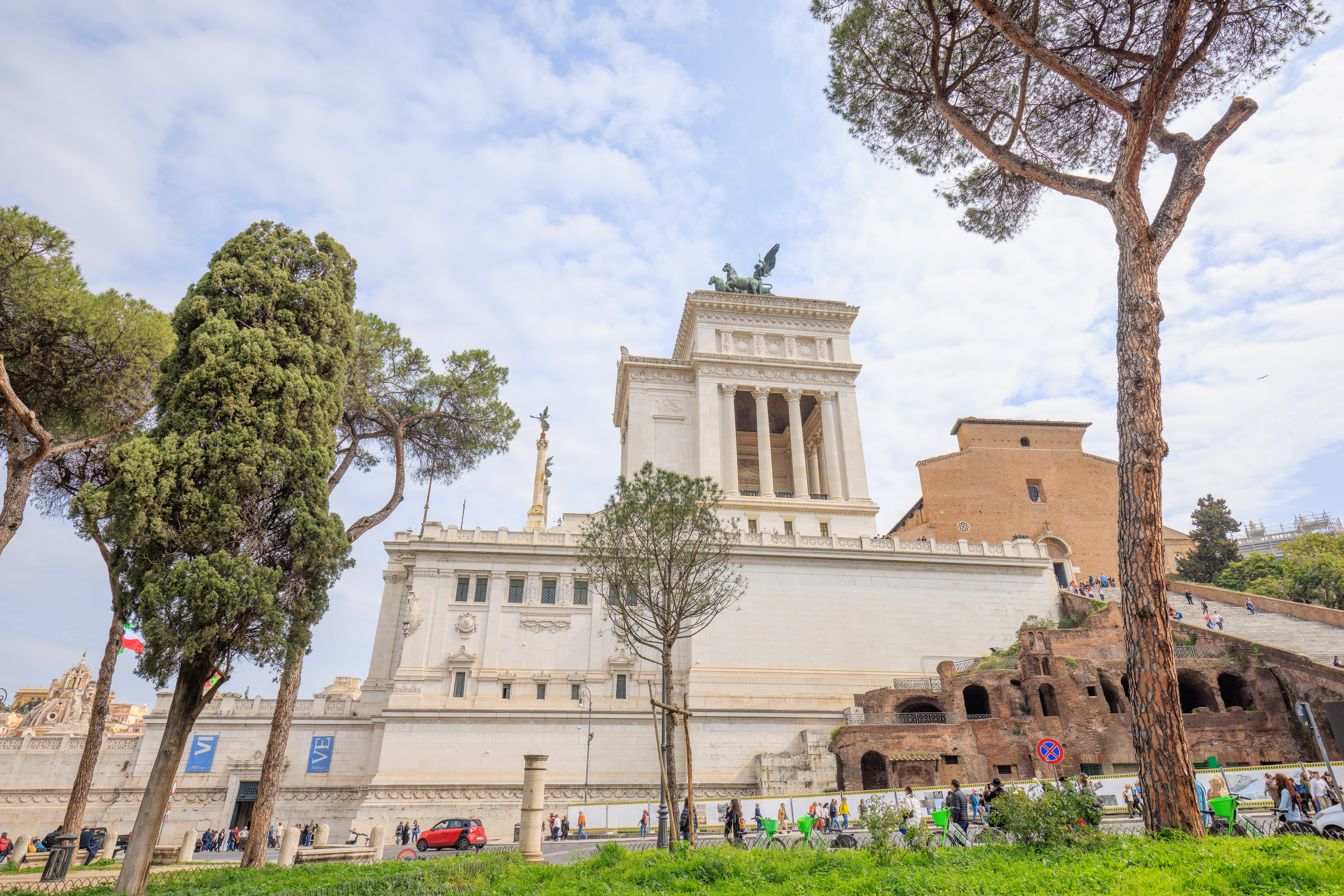
After, we walked over to the left, or west, side of the Monument to Victor Emmanuel II. Our destination, the Basilica di Santa Maria in Aracoeli (Basilica of Saint Mary of the Altar in Heaven), is finally in sight! It is the building to the right of the monument and is accessed via a long wide stairway.
We saw this basilica yesterday when visiting the Monument to Victor Emmanuel II as the structures are attached but did not have time to visit. We didn’t notice any way to access this basilica directly from the upper levels of the monument structure.

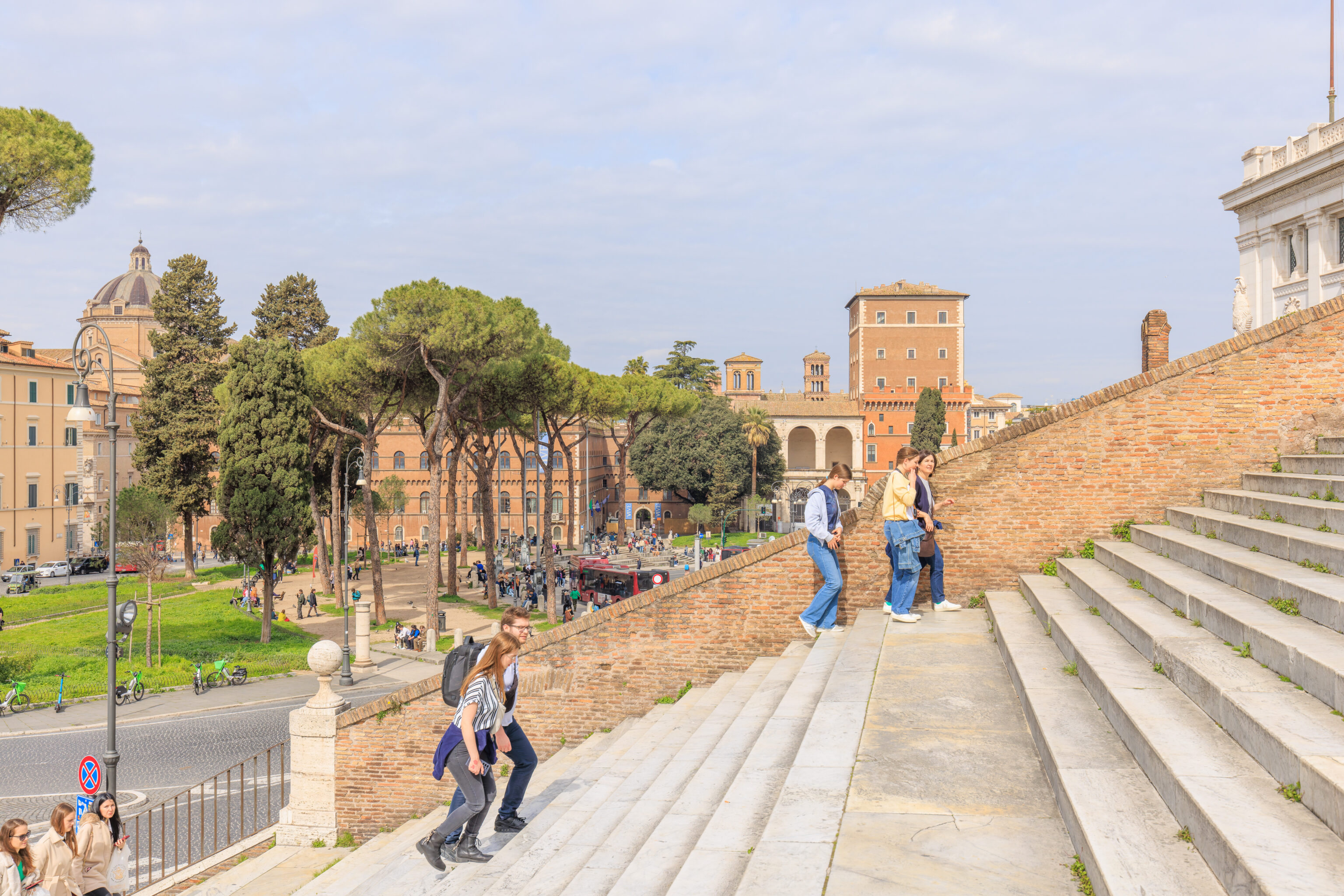
We ascended the stairs…
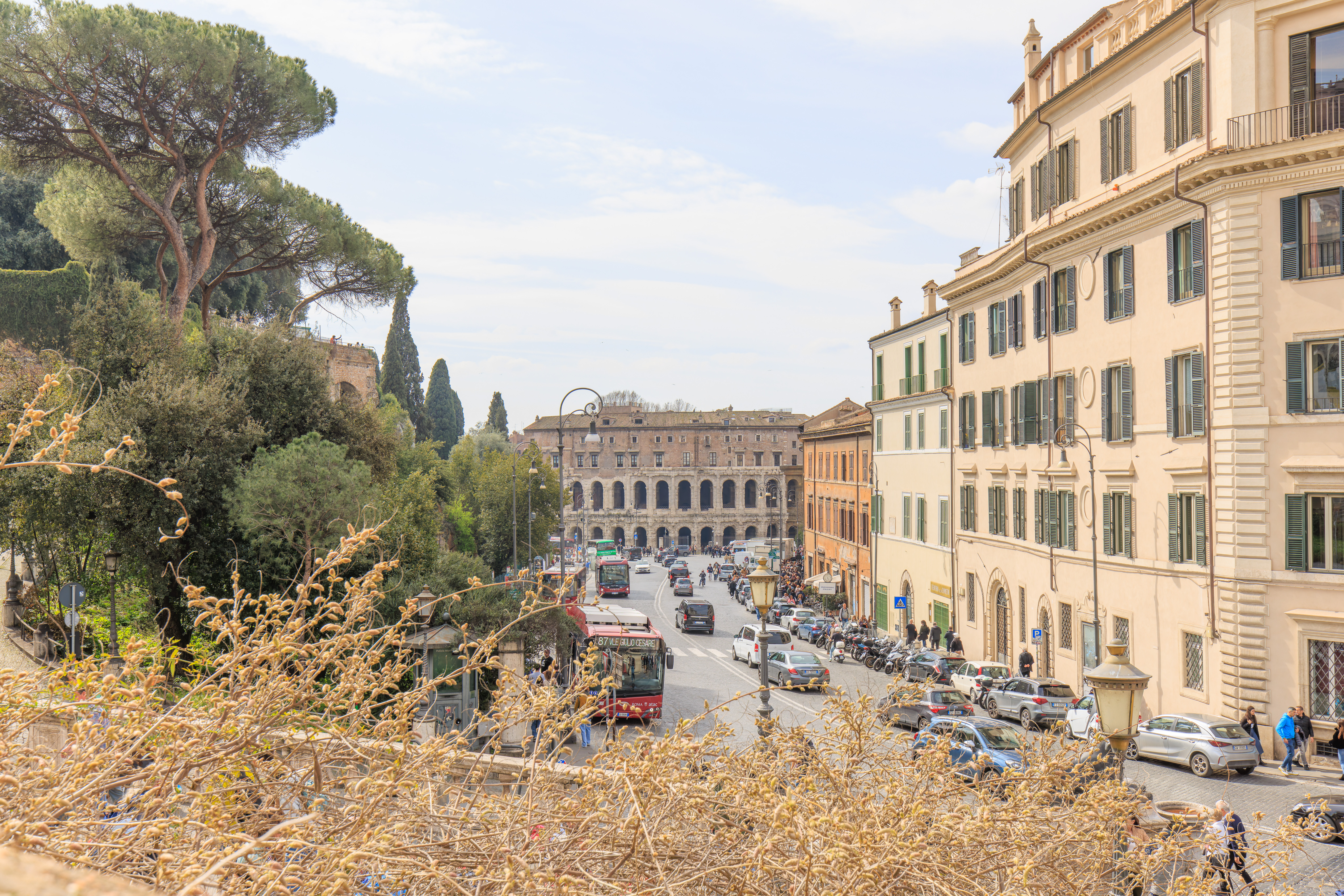
The remnants of the Teatro di Marcello to the southwest, which we noticed yesterday.
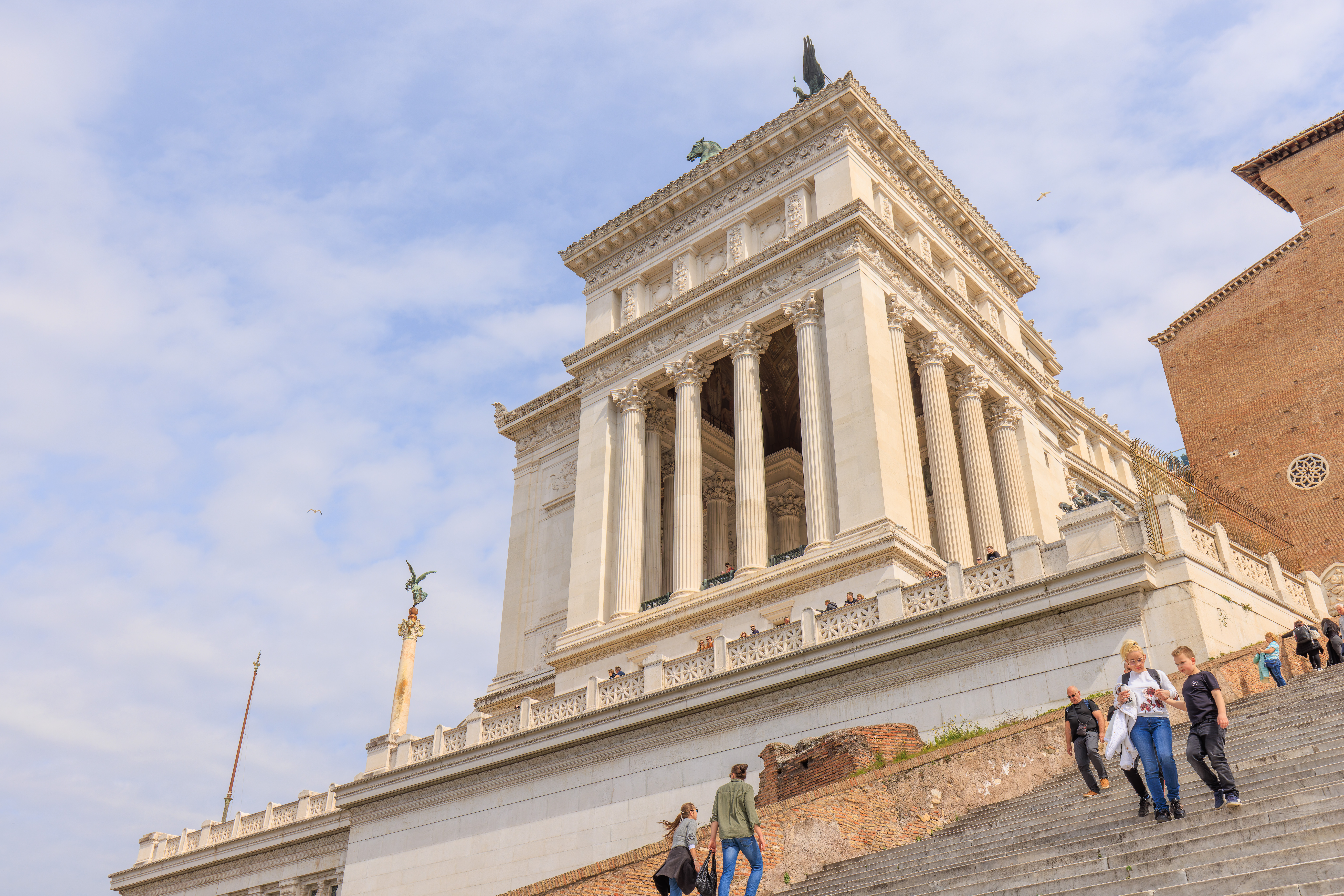
The monument, as seen from the stairs as we walked up.
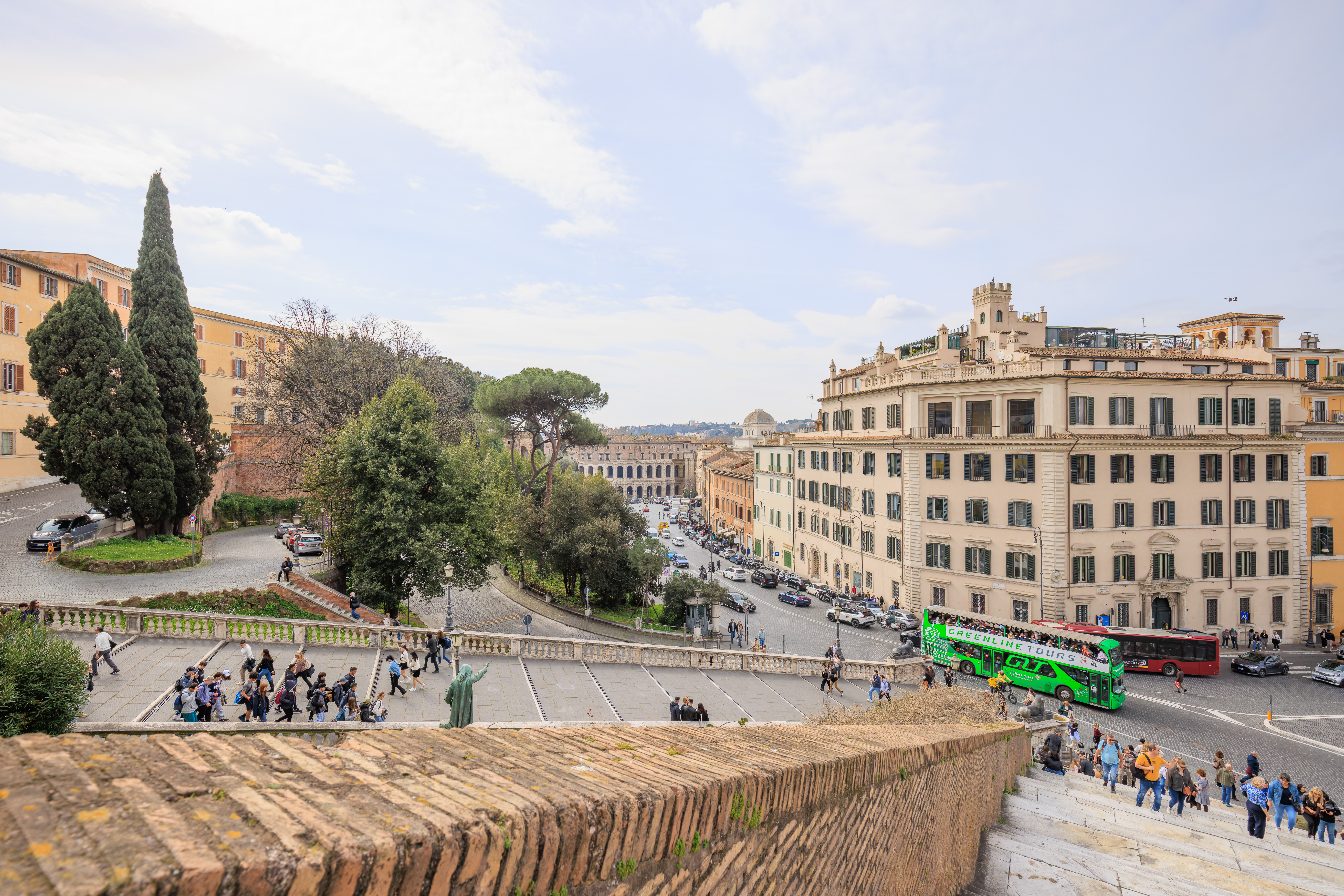
There is another set of stairs to the south which provides access to the Capitoline Hill. The basilica is technically on this hill as well but again, we aren’t sure if its possible to directly access the other buildings on this hill from the basilica.
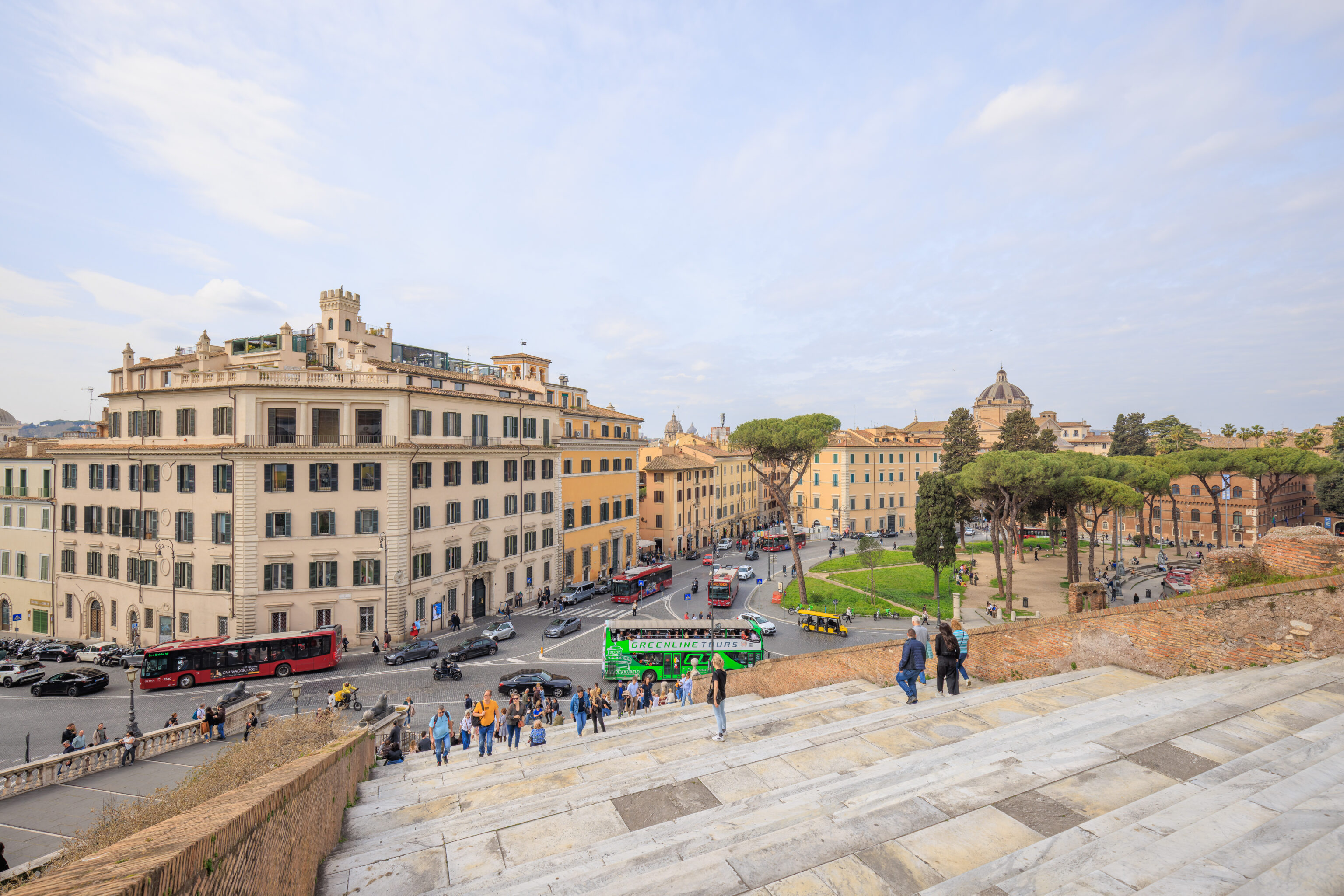
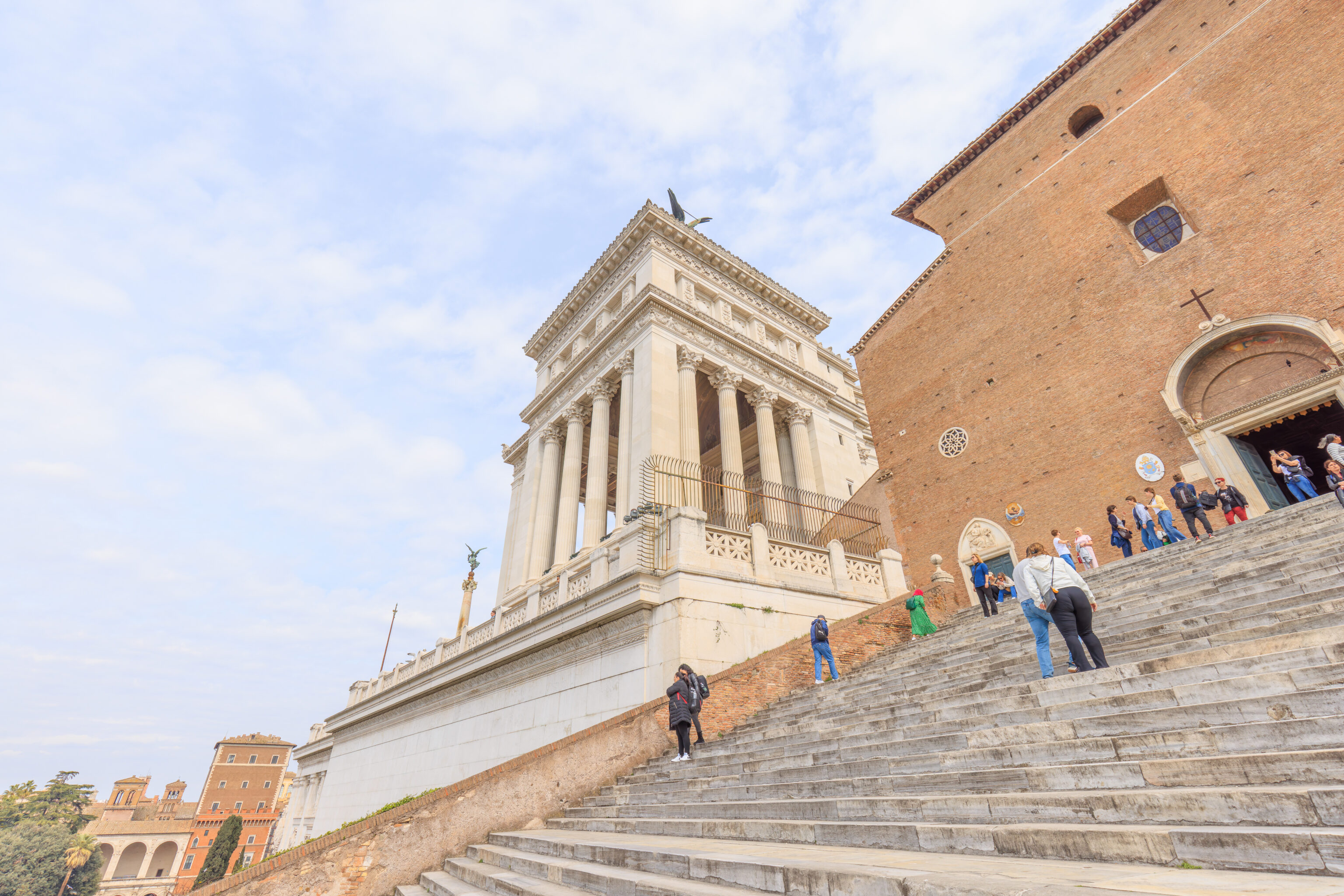
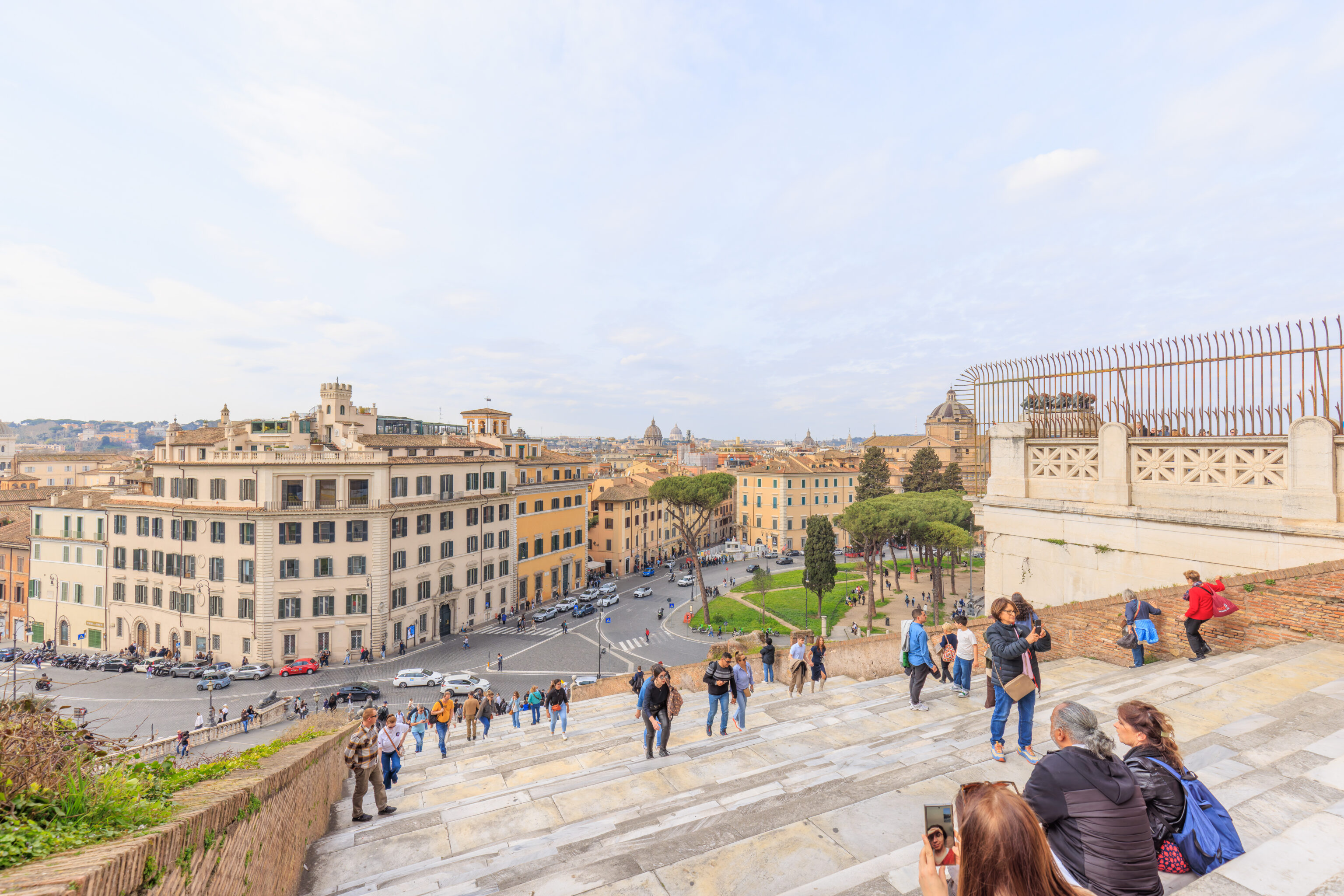
We continued until reaching the top of the stairs.
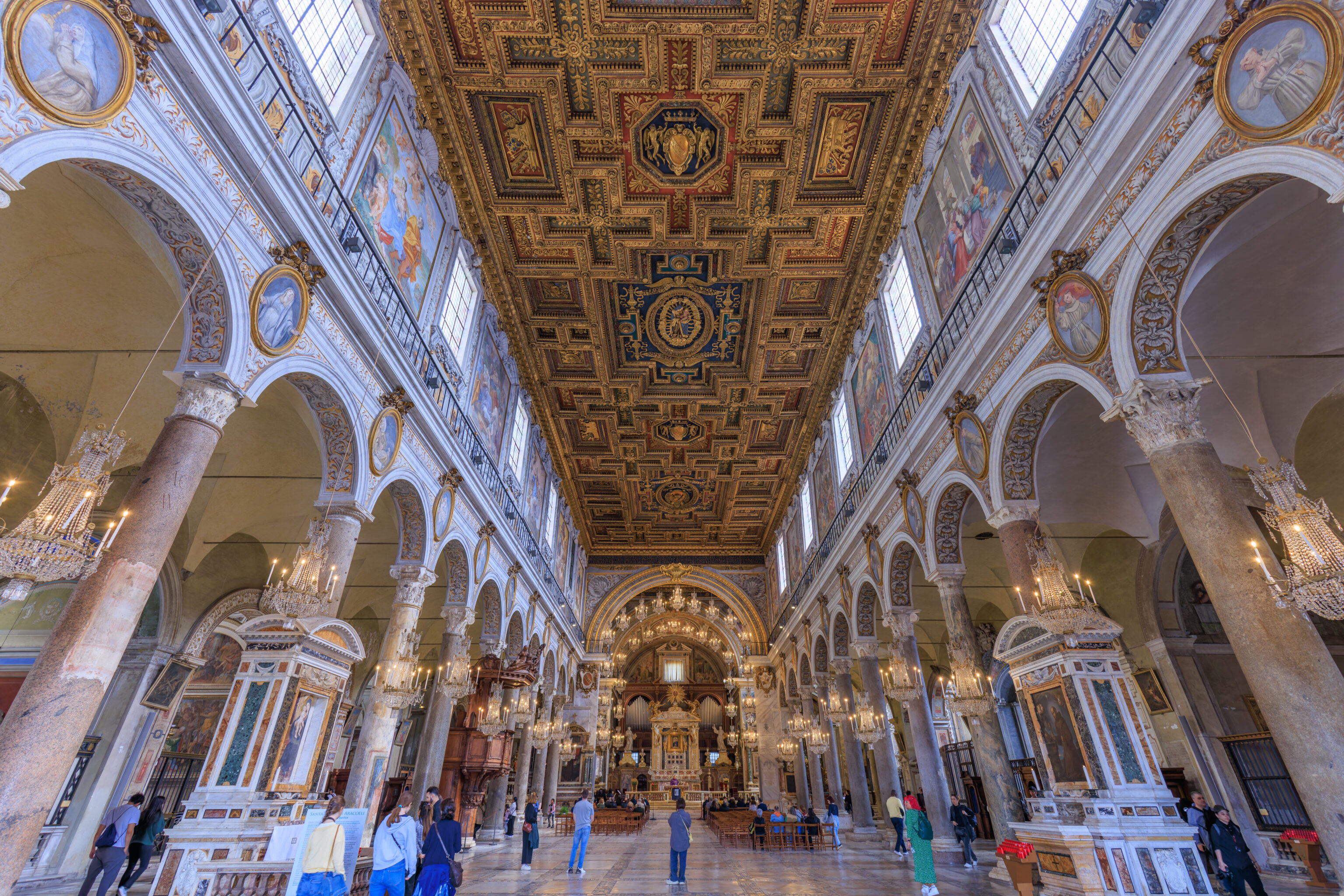
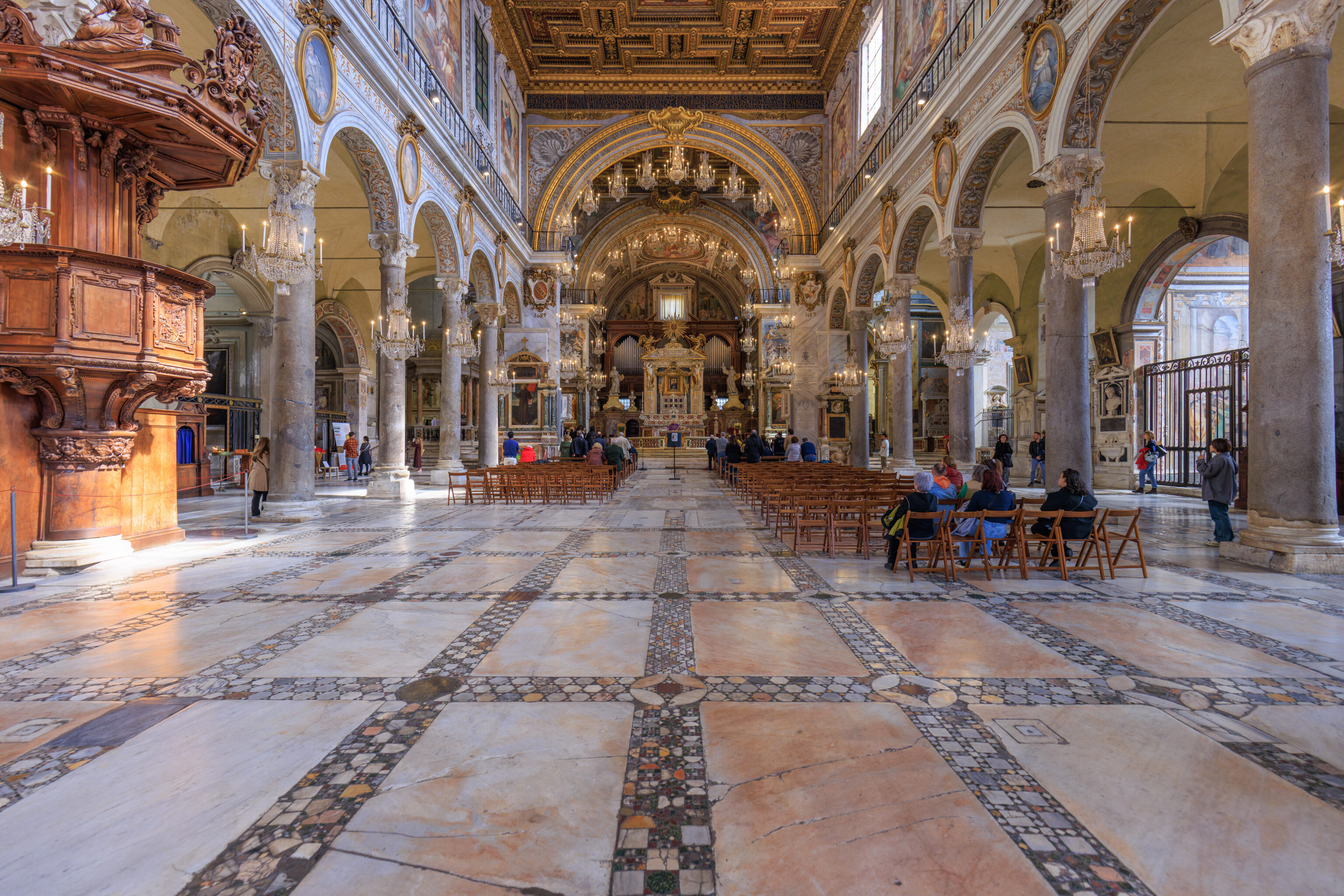
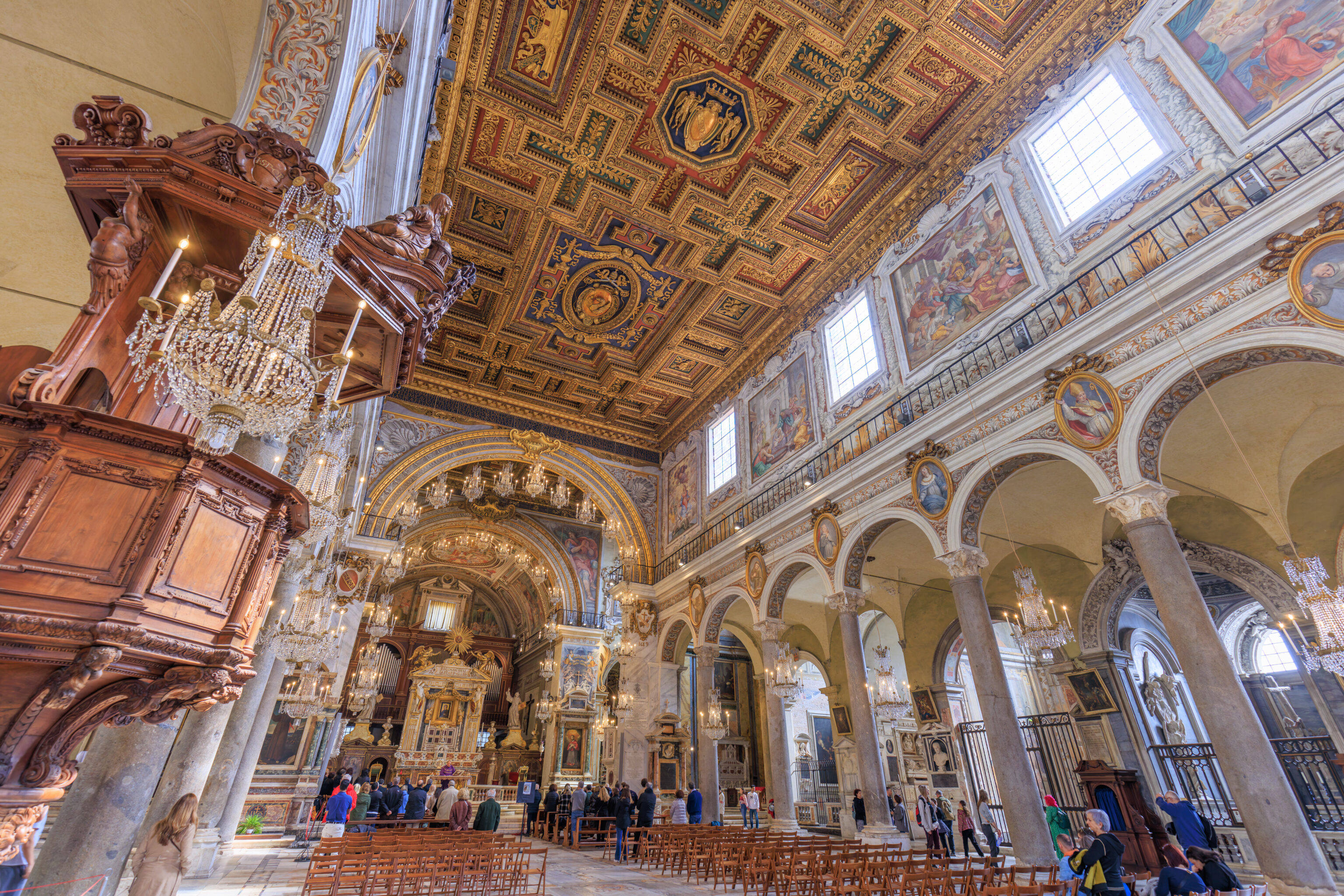
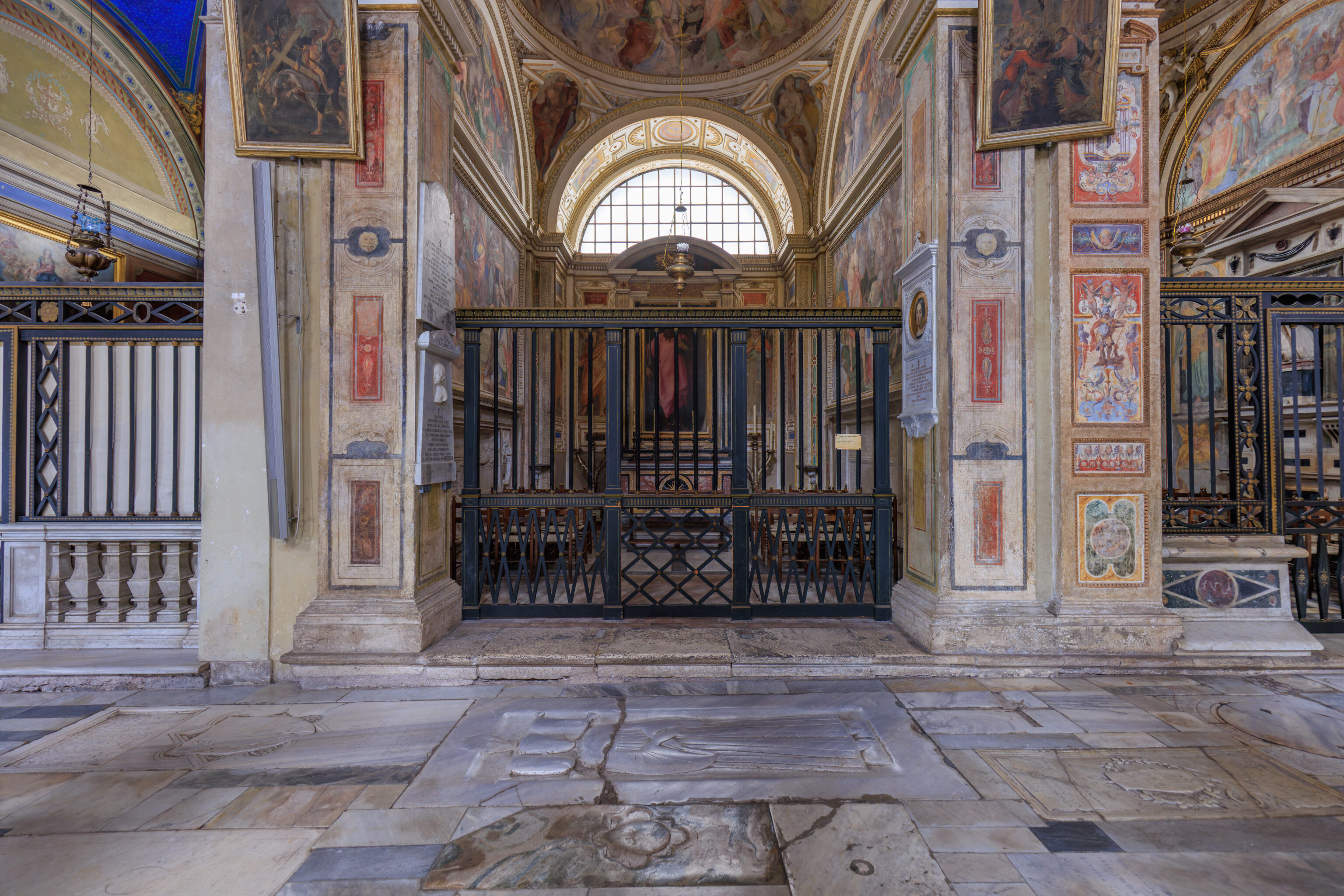
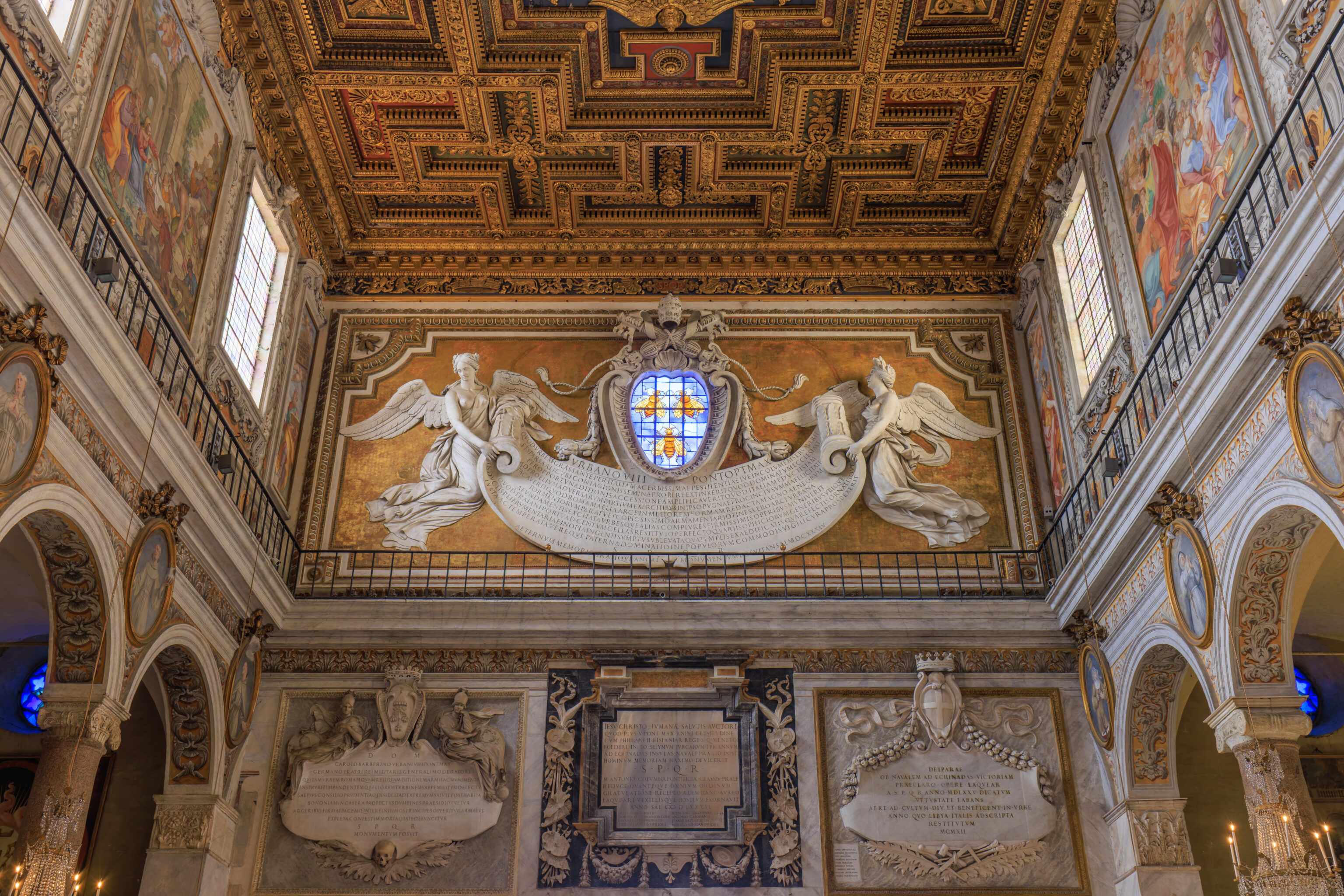
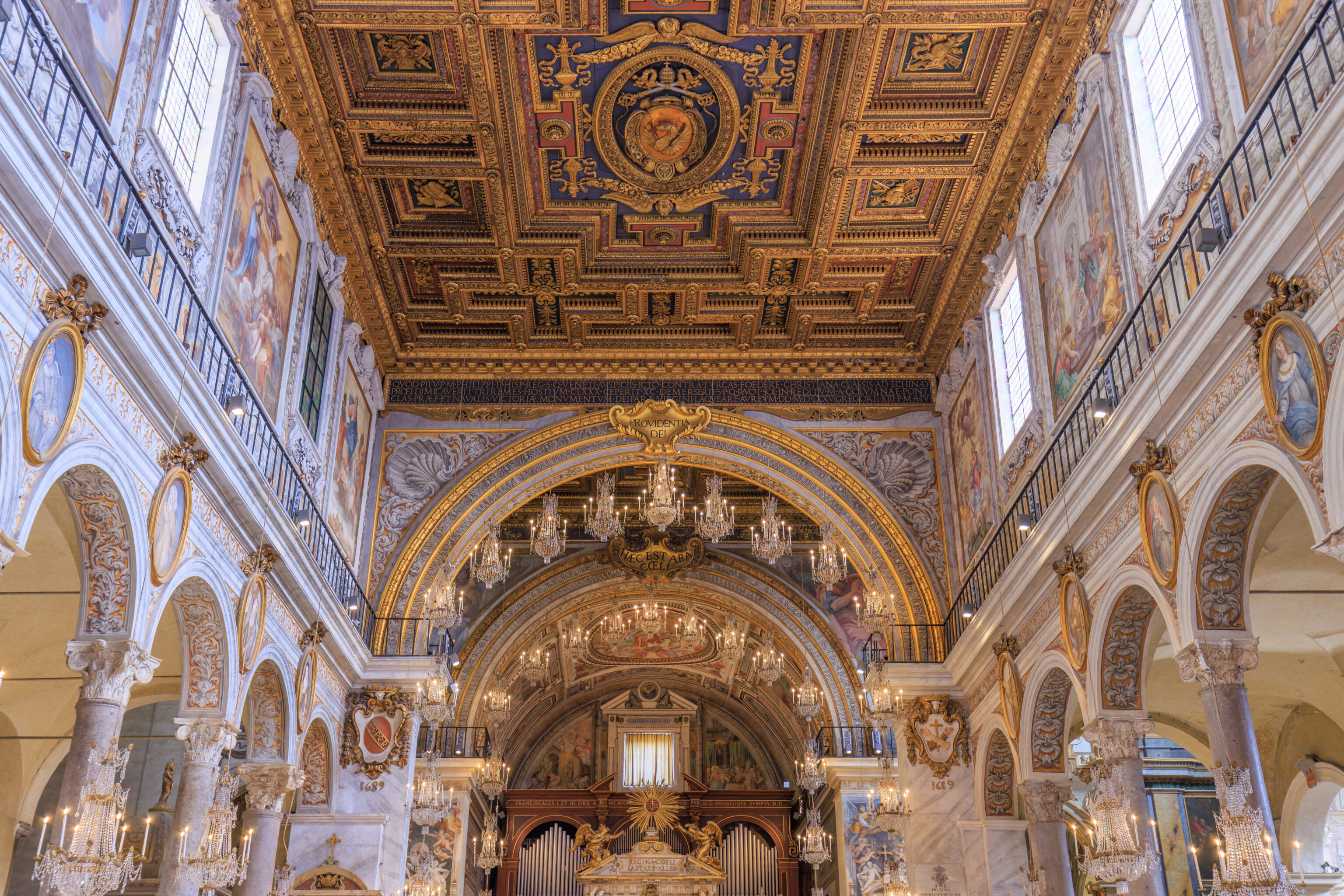
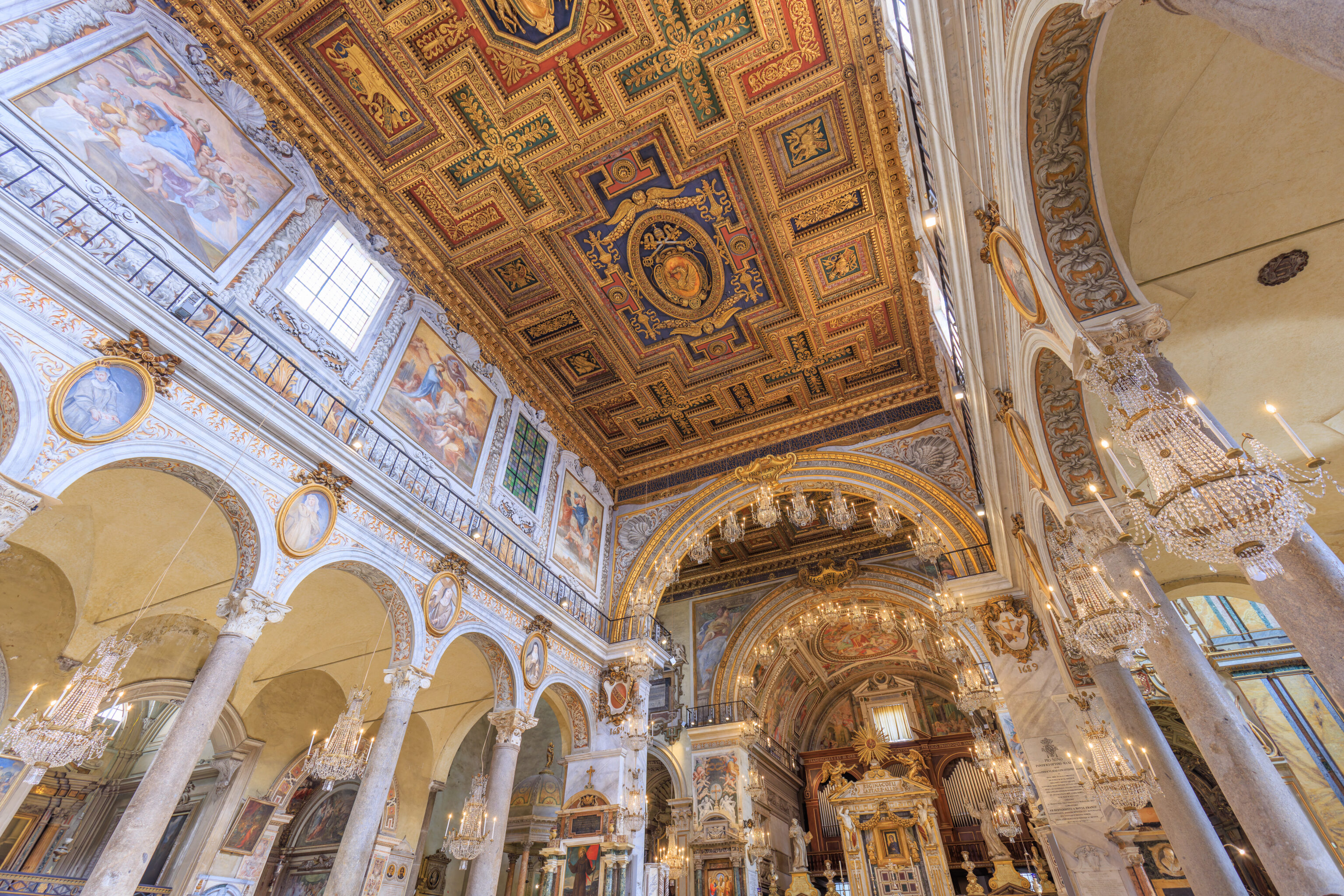
Another impressive church! While this basilica wasn’t a huge place compared to Santa Maria Maggiore and San Giovanni in Laterano, it was still quite grand! An interesting feature of this basilica is the inclusion of many chandeliers. In general they don’t seem to be a common feature in the Christian churches that we’ve been to. Not only does this church have them, they are all over the place!
We recorded a brief video, mainly for the audio.
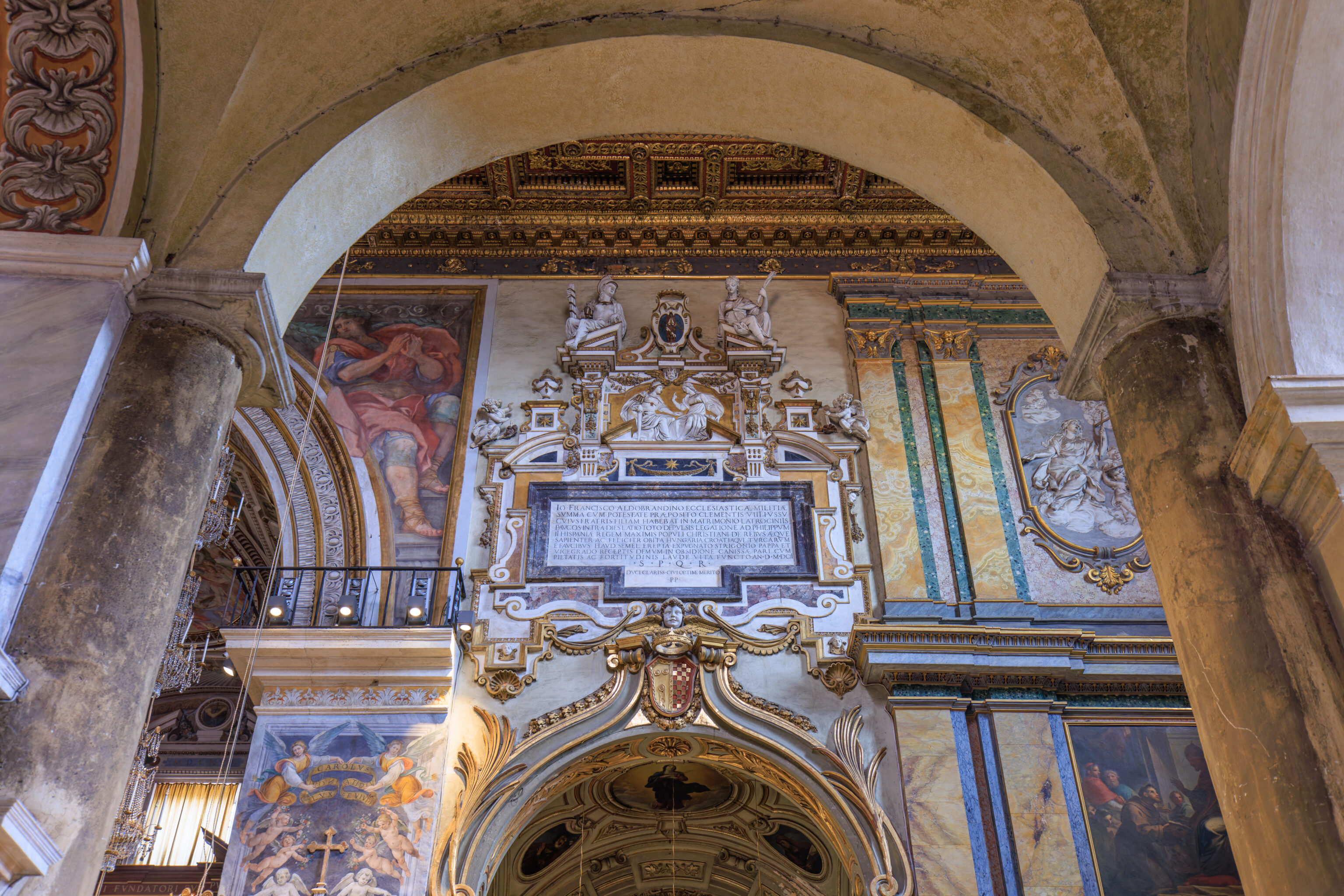
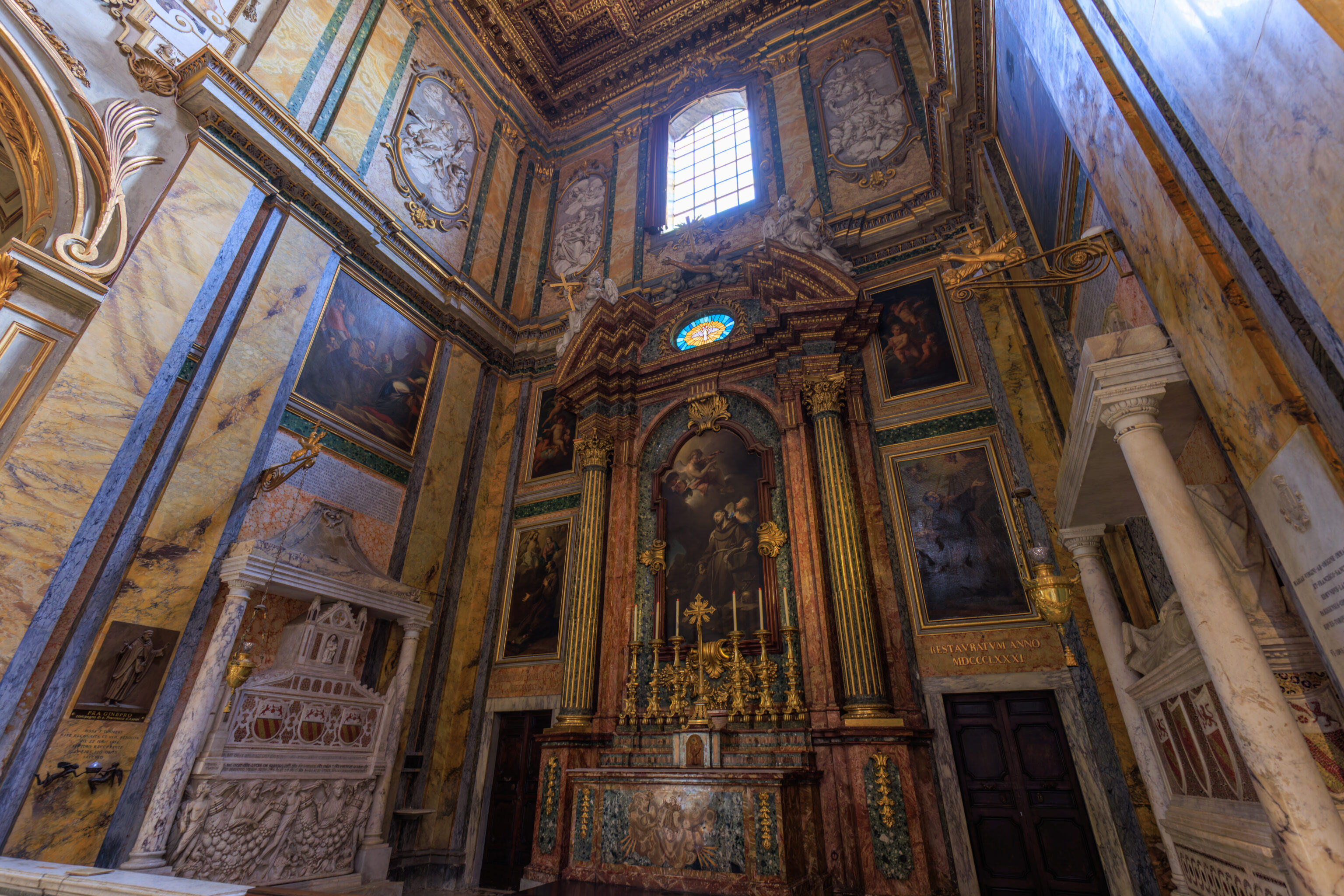
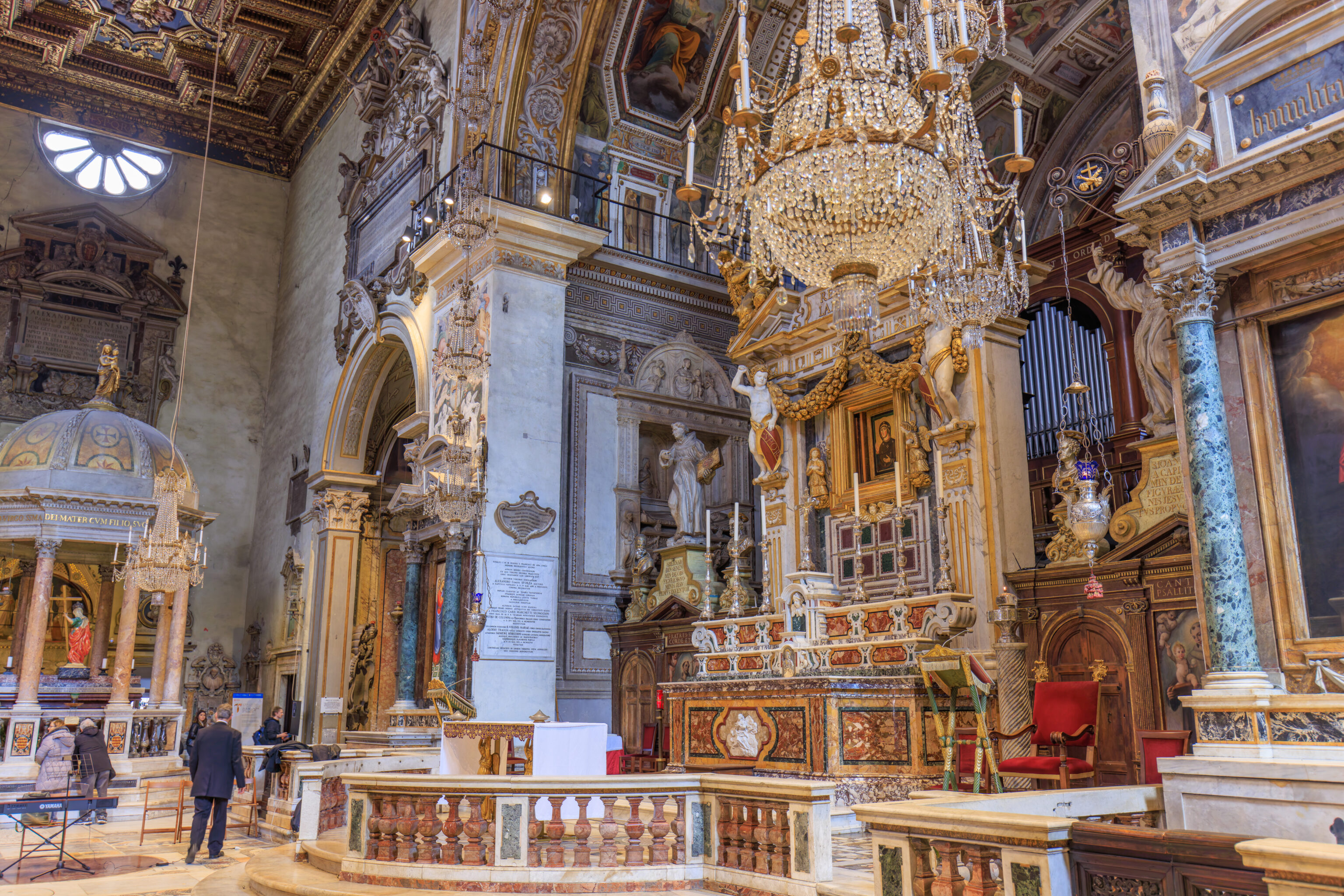
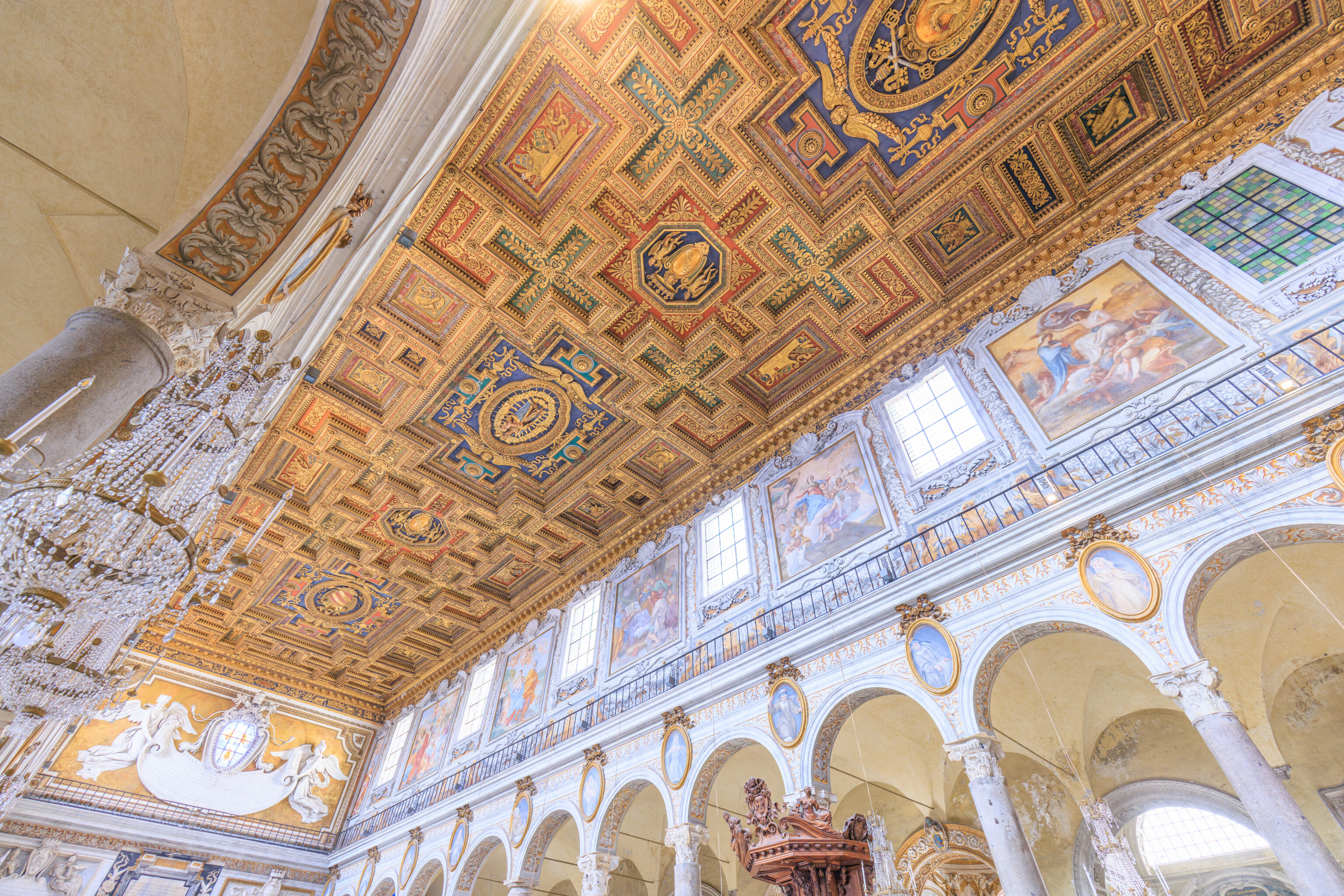
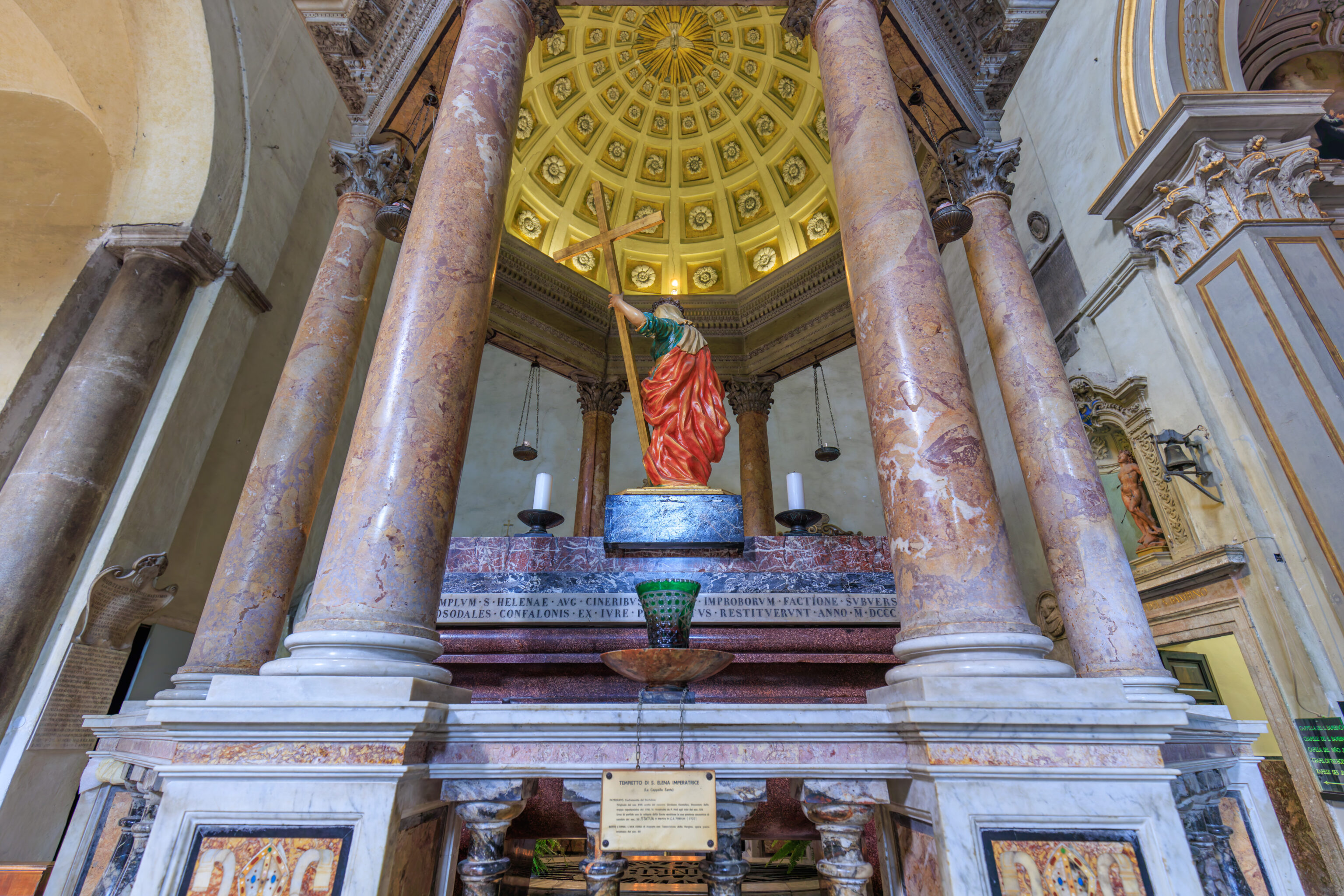
We continued walking through the basilica.
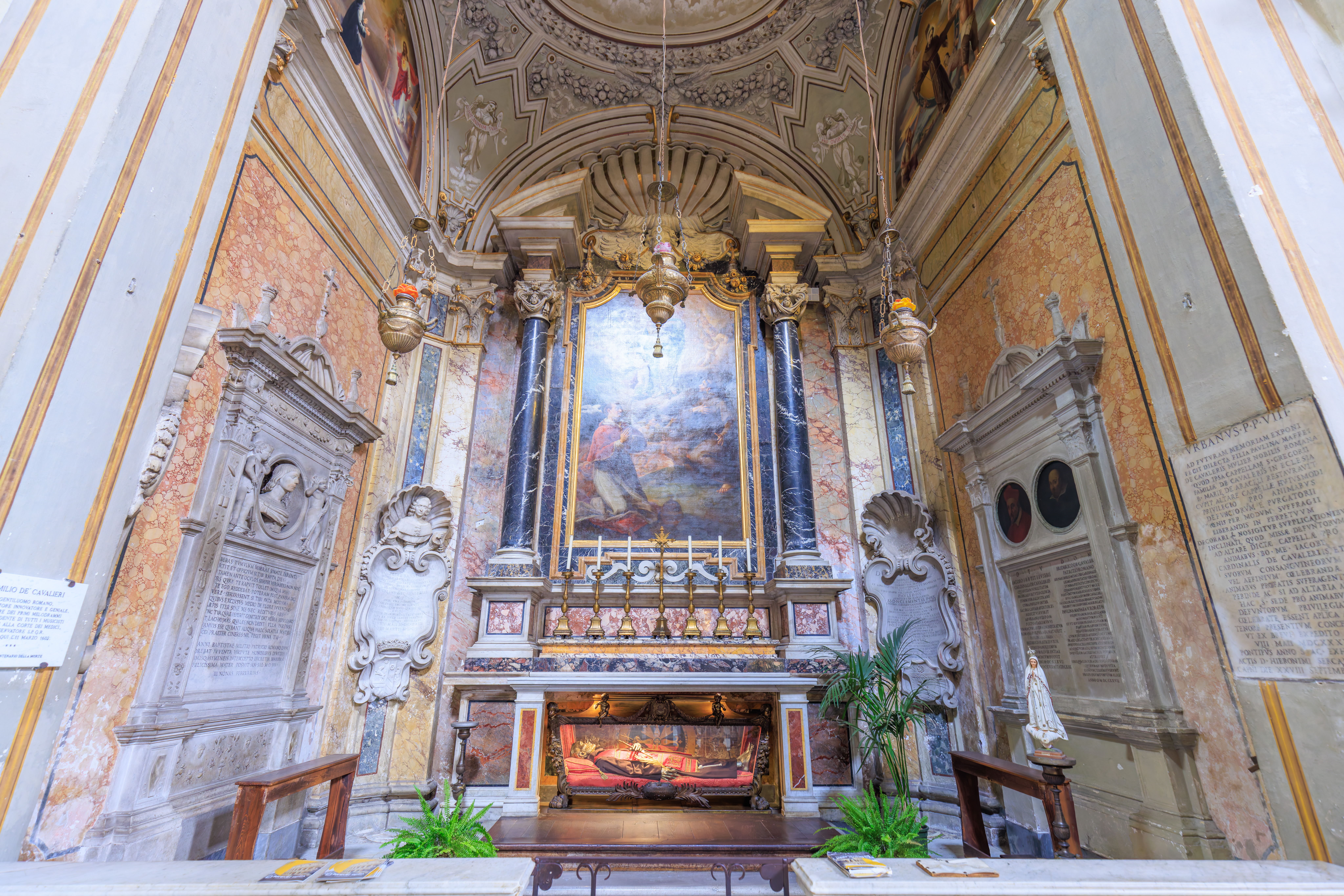
This seems like it should be a tomb. Unfortunately the text on the bottom of the display isn’t really legible from this distance.
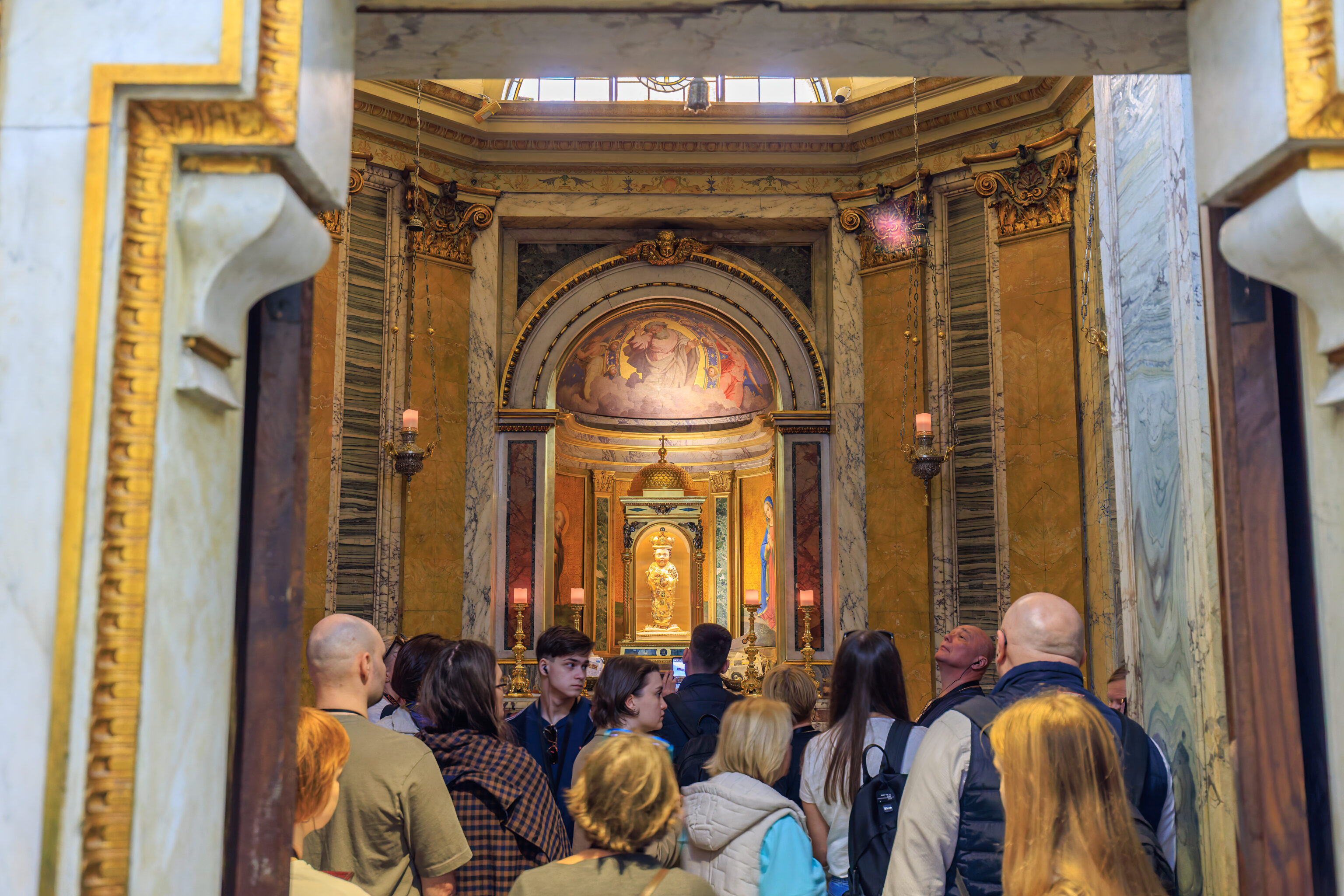
This wooden doll is the Santo Bambino di Aracoeli (Holy Child of Aracoeli). It depicts a baby Jesus and is unfortunately a bit creepy. Not because it is Jesus, just because it is a creepy doll. The original doll was created in the 15th century but was stolen in 1994. The one on display here is a replica.
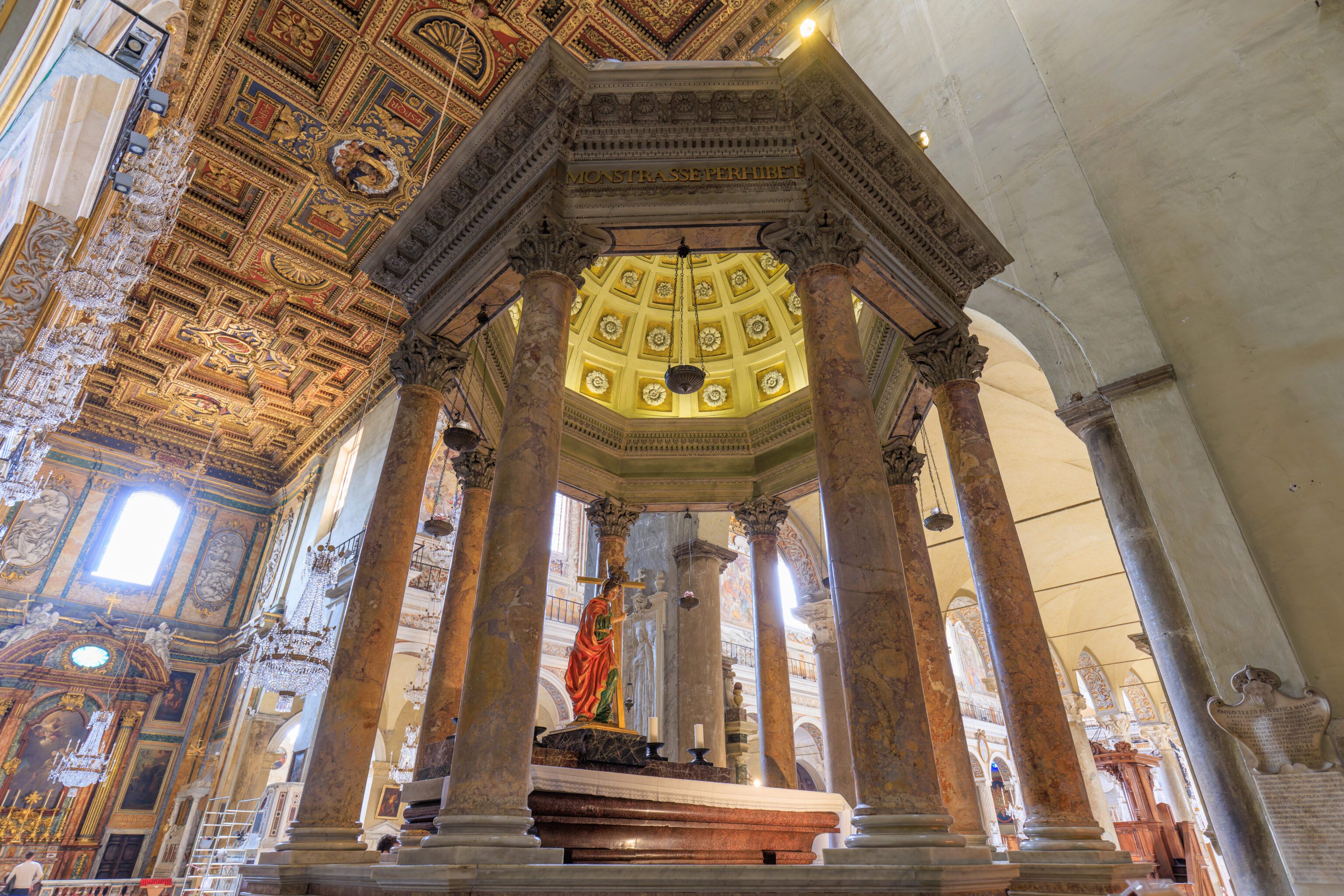
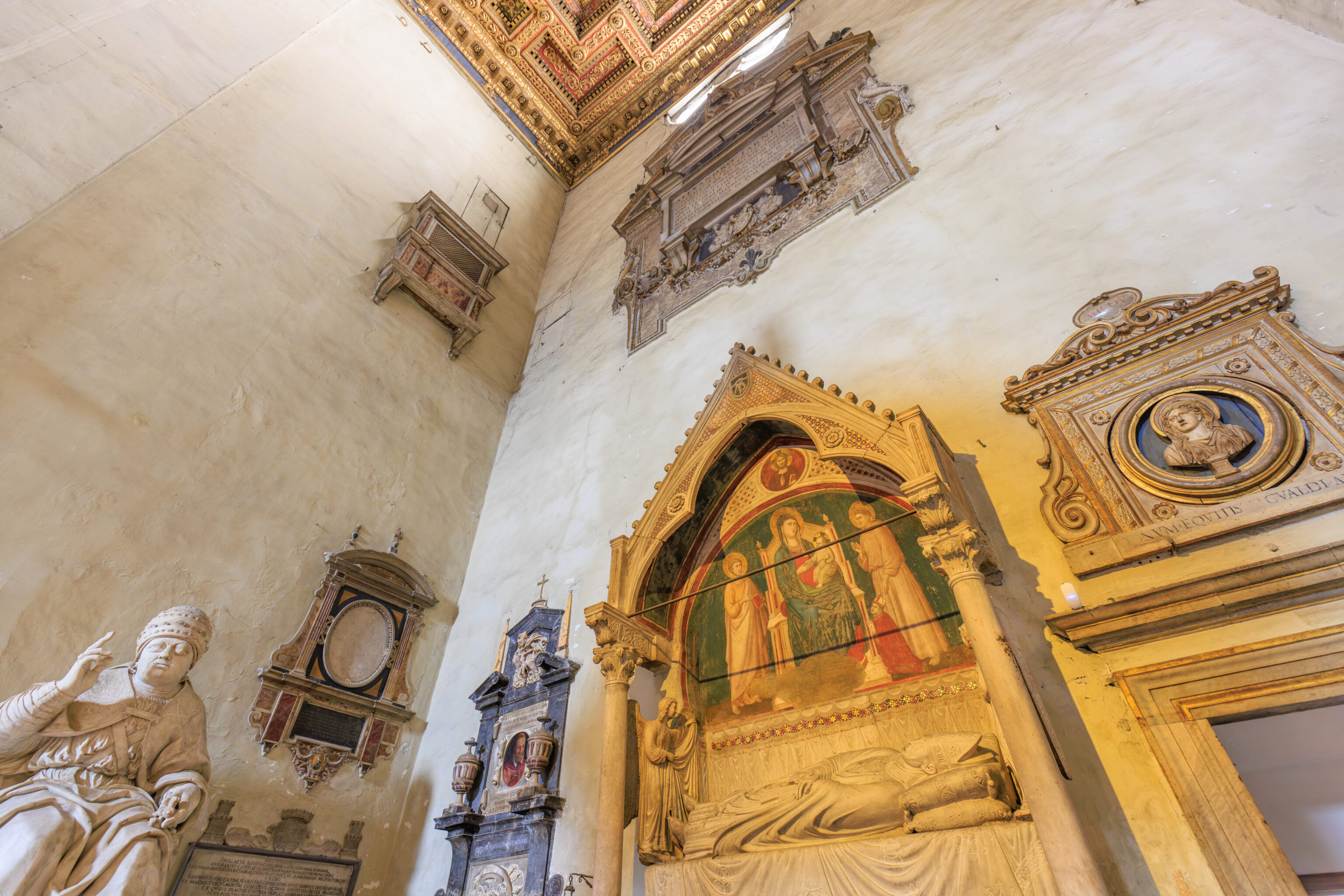
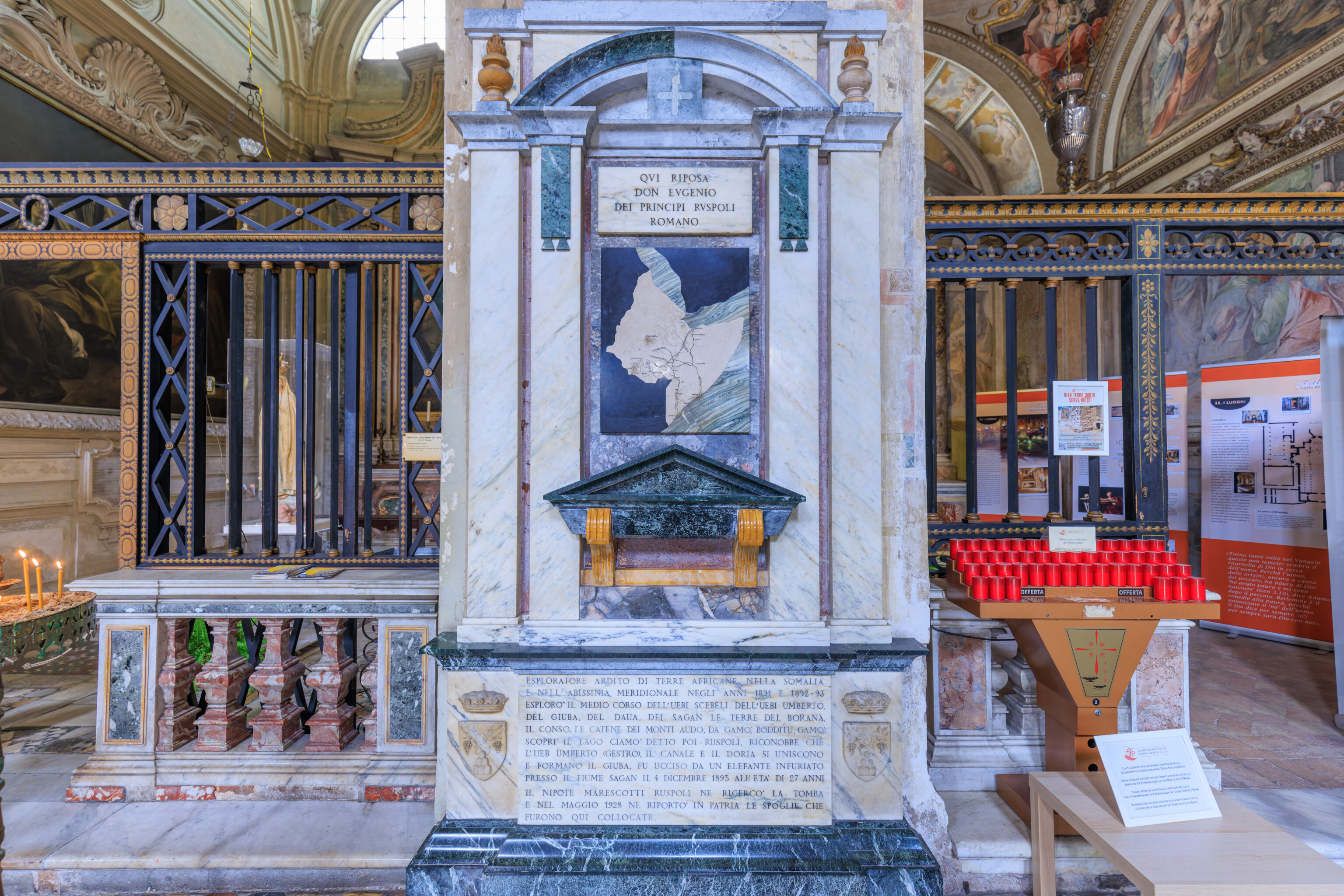
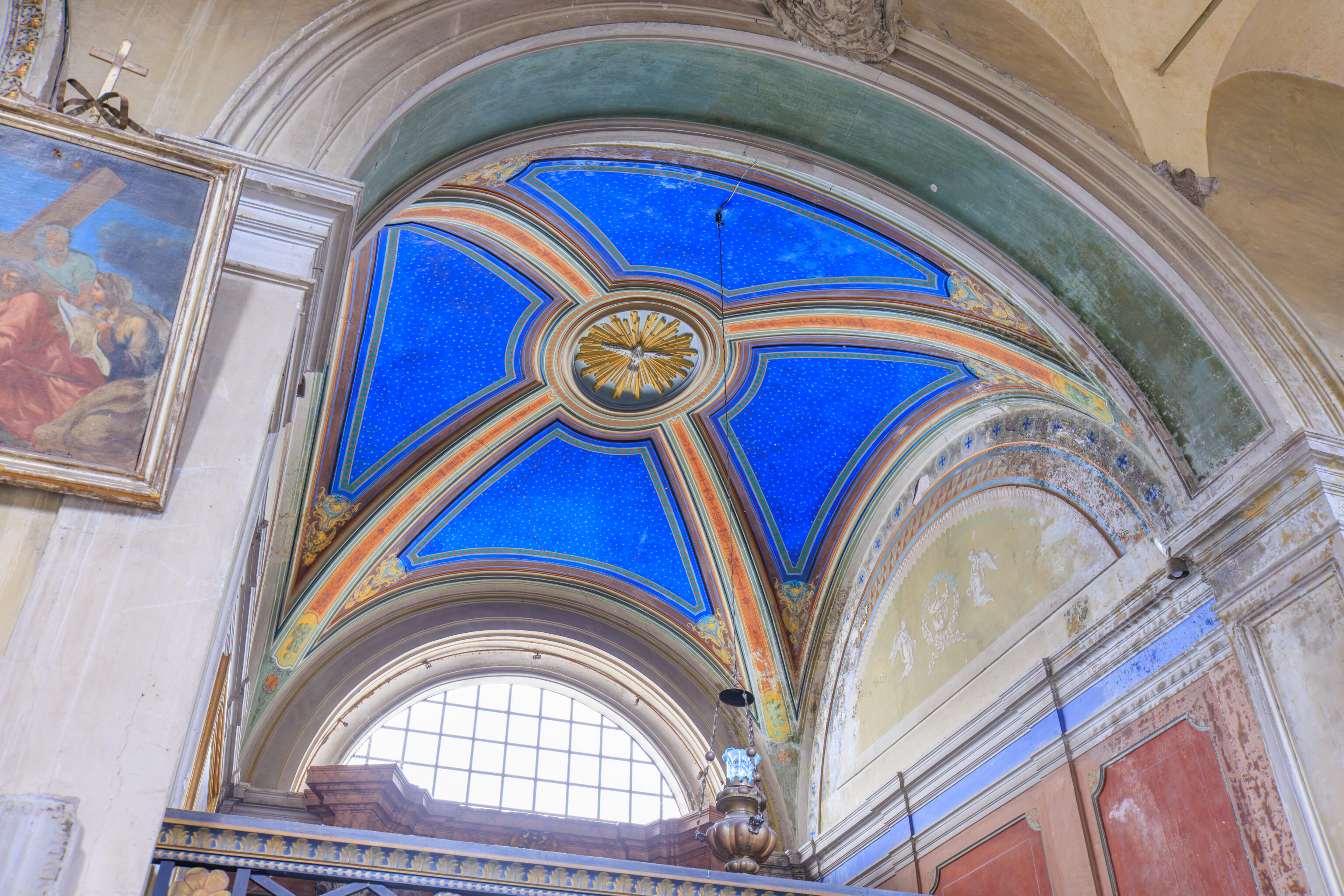
After spending about 45 minutes in the basilica, we headed back outside.
Musei Capitolini
Our next destination was the Musei Capitolini (Capitoline Museums). It gets its name from its location atop the Campidoglio (Capitoline Hill). It seems the name is plural because the museum is housed in multiple connected buildings, thus, multiple museums.
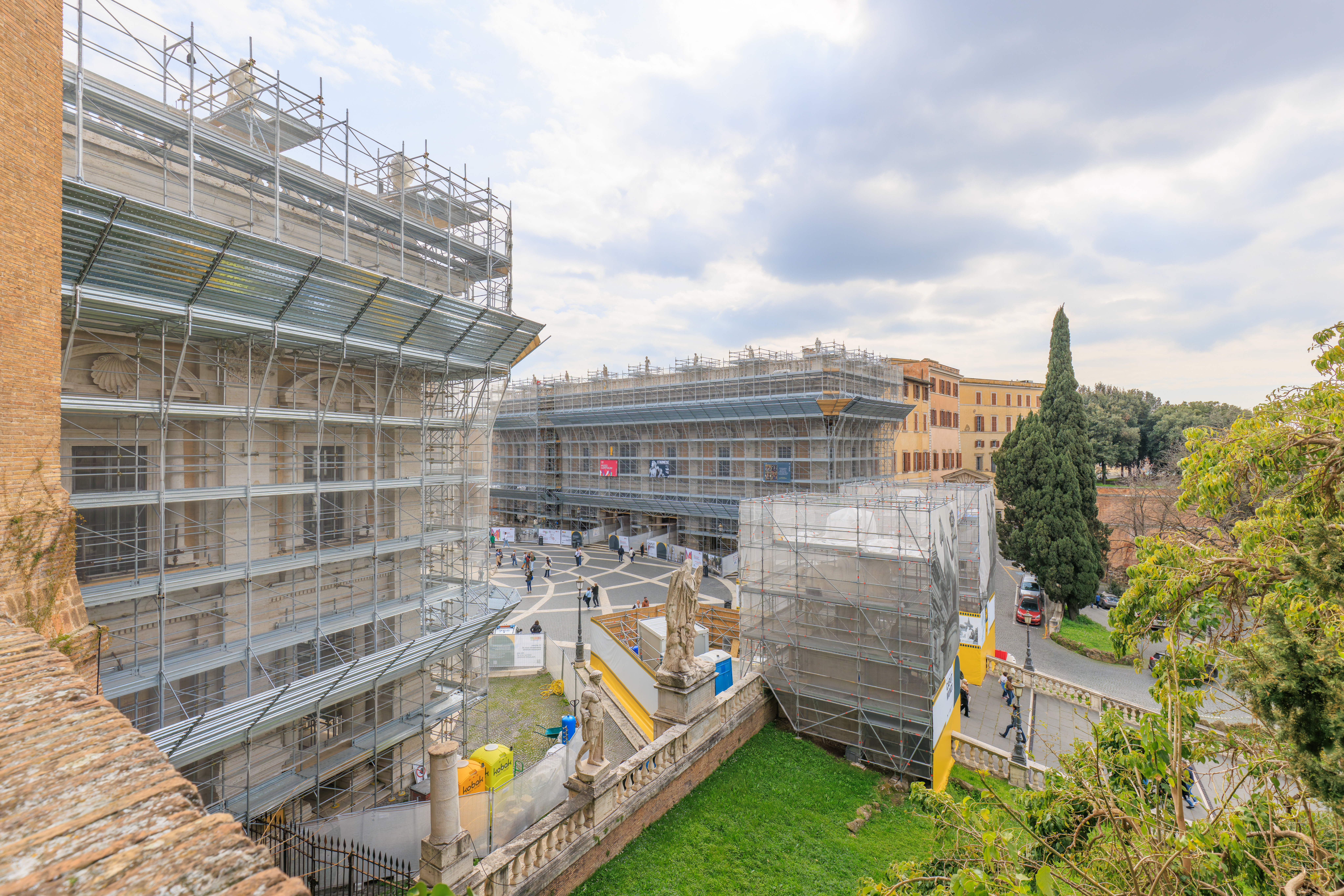
Some of museum buildings, in scaffolding due to renovations, could be seen to the south as we exited Santa Maria in Aracoeli. The piazza below is the Piazza del Campidoglio (Capitoline Square).
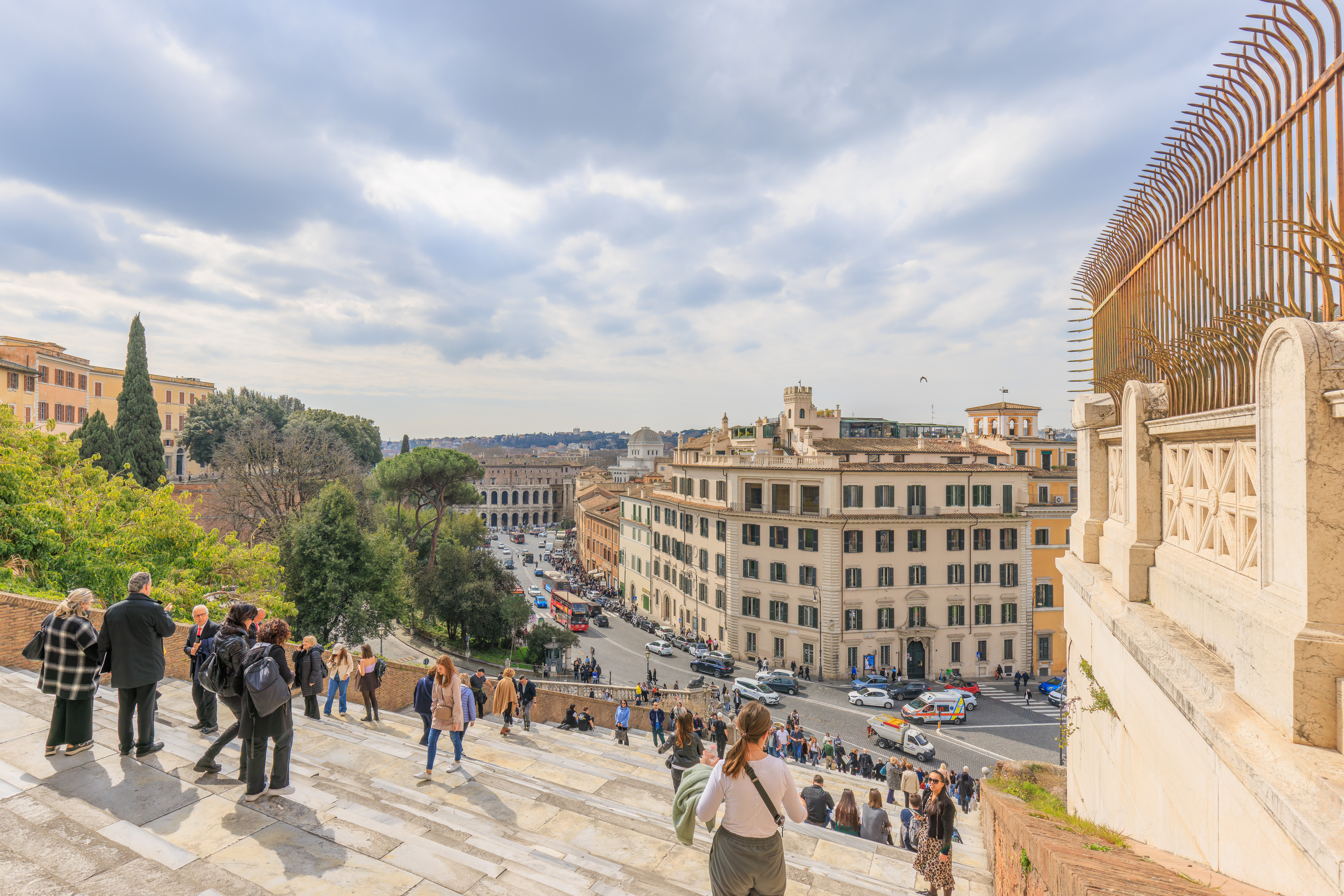
We headed back down the stairs so that we could walk up different stairs to reach the Piazza del Campidoglio.
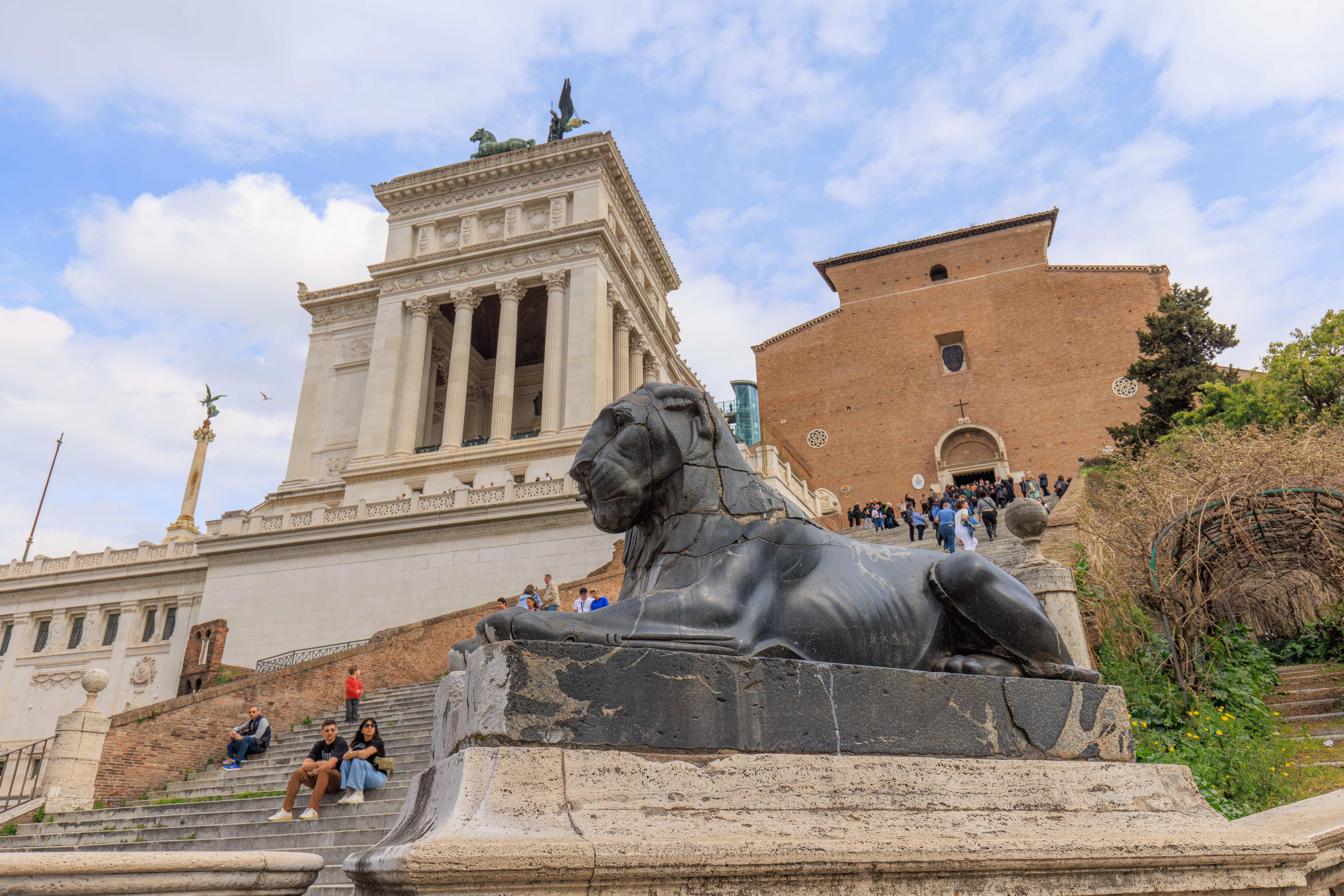
The view from the bottom of the stairs looking back up.
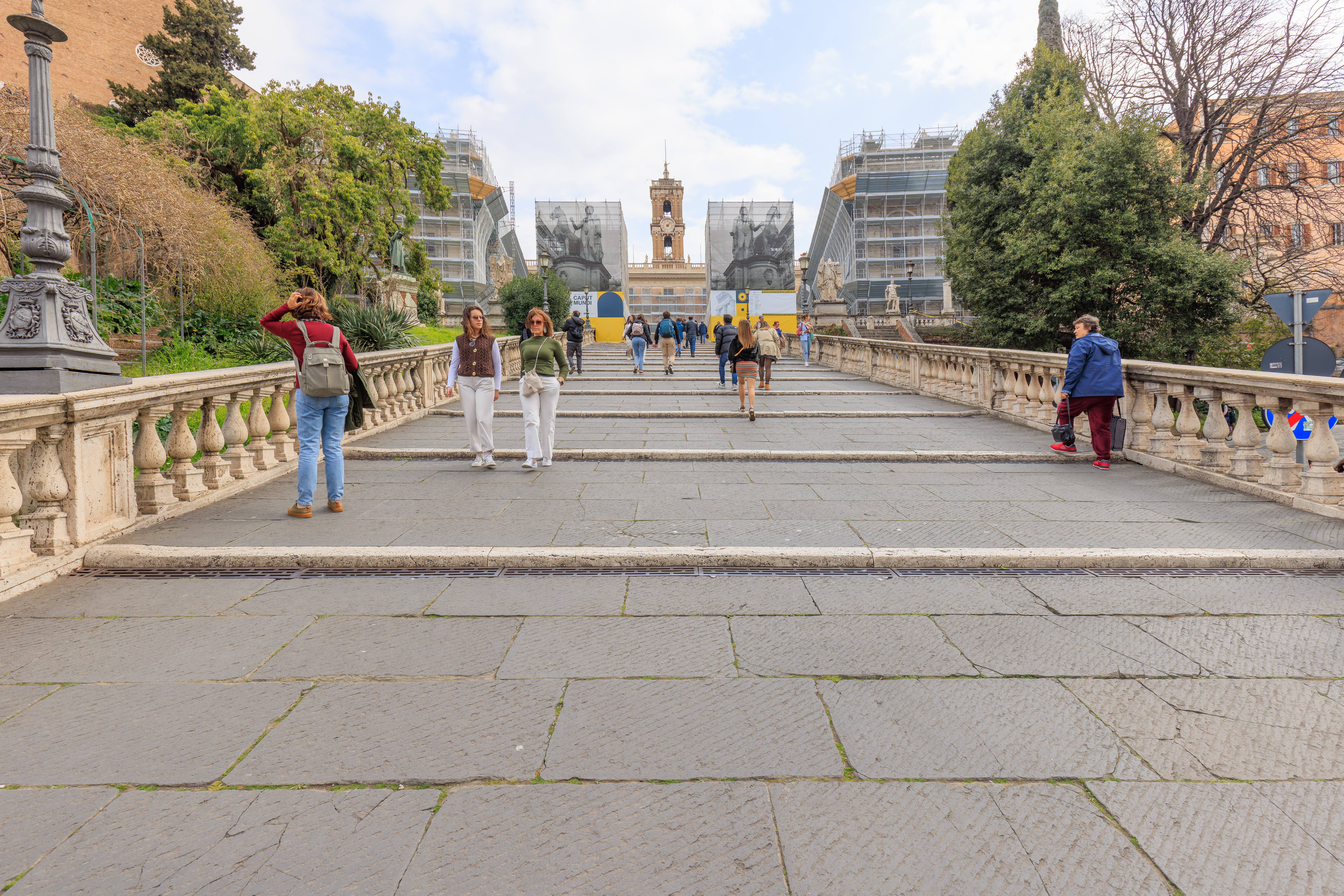
The stairs leading up to the Piazza del Campidoglio are quite different. It’s more of a ramp than actual stairs.

Santa Maria in Aracoeli, Monument to Victor Emmanuel II, and a statue were in view as we walked up.
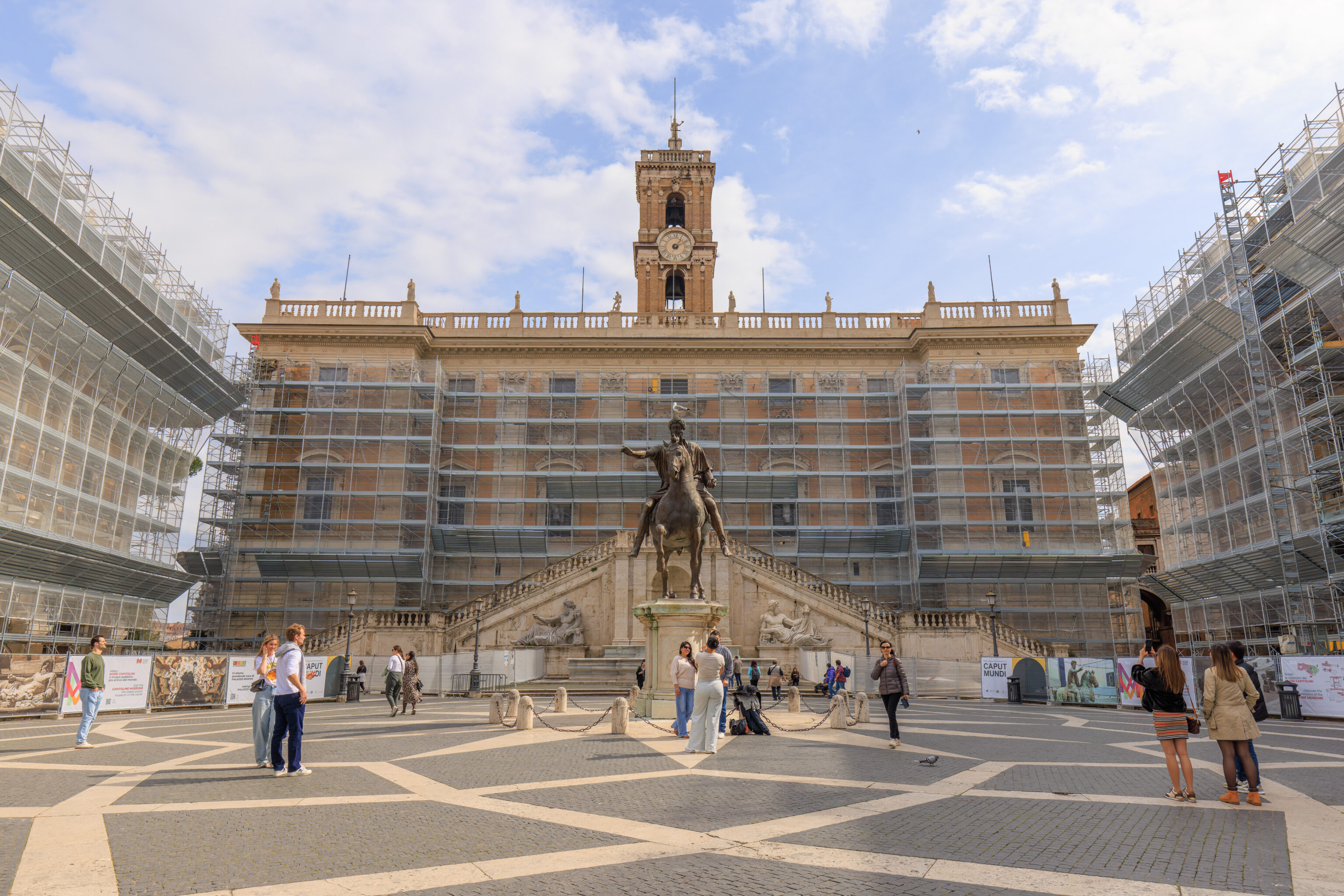
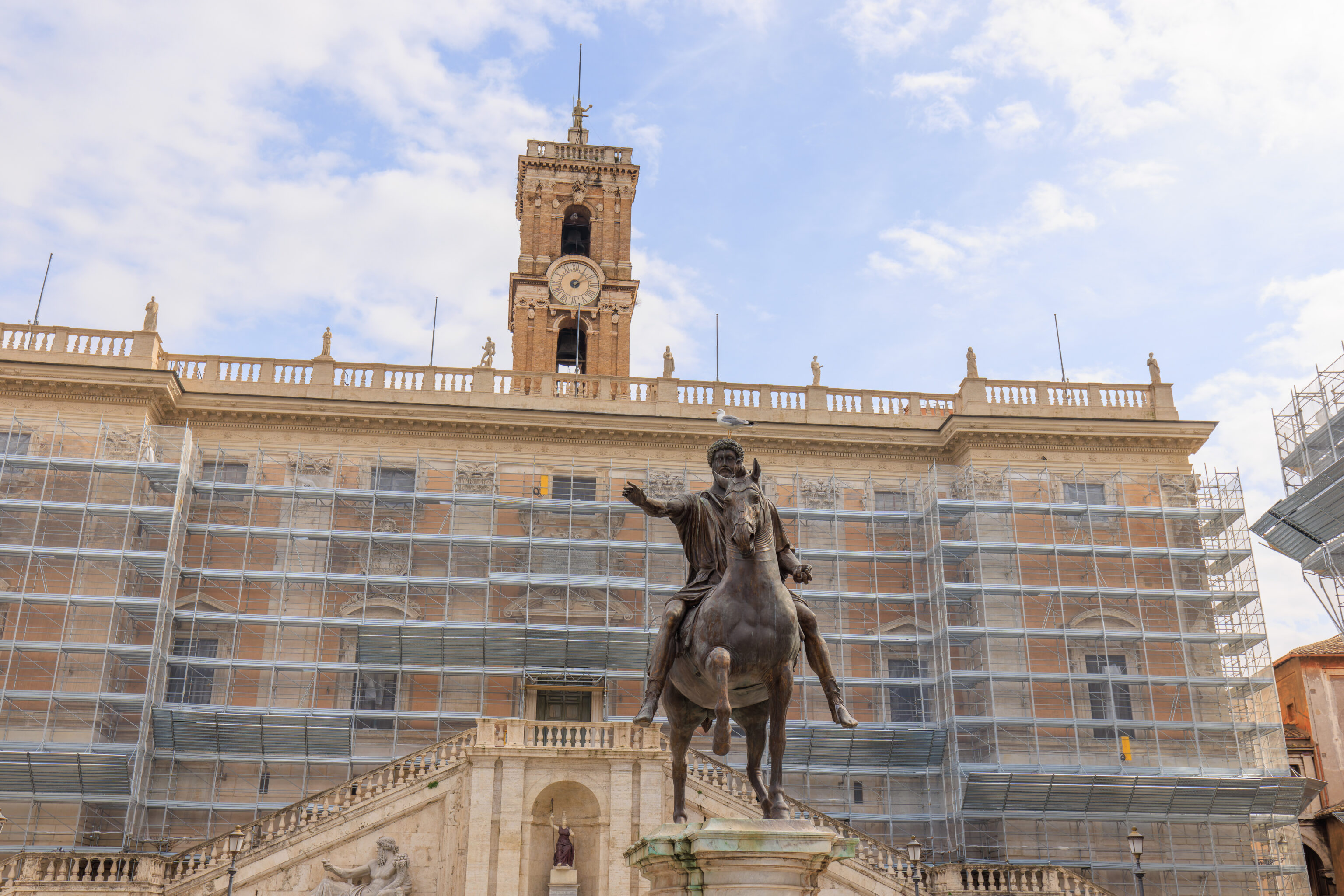
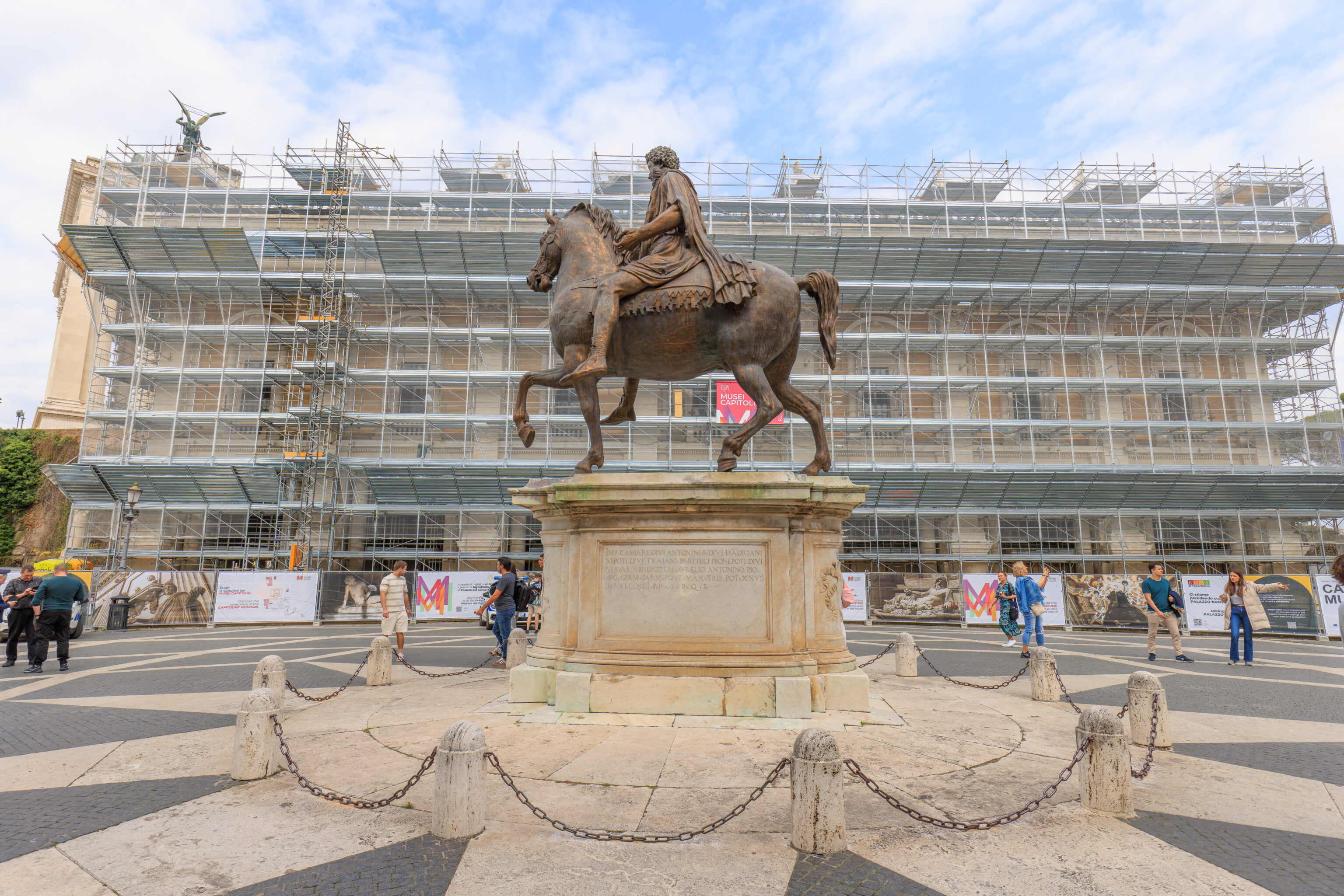
An equestrian statue of Marcus Aurelius is located at the center of the piazza. This piazza is particularly notable as it was designed by one of the four turtles, Michelangelo!
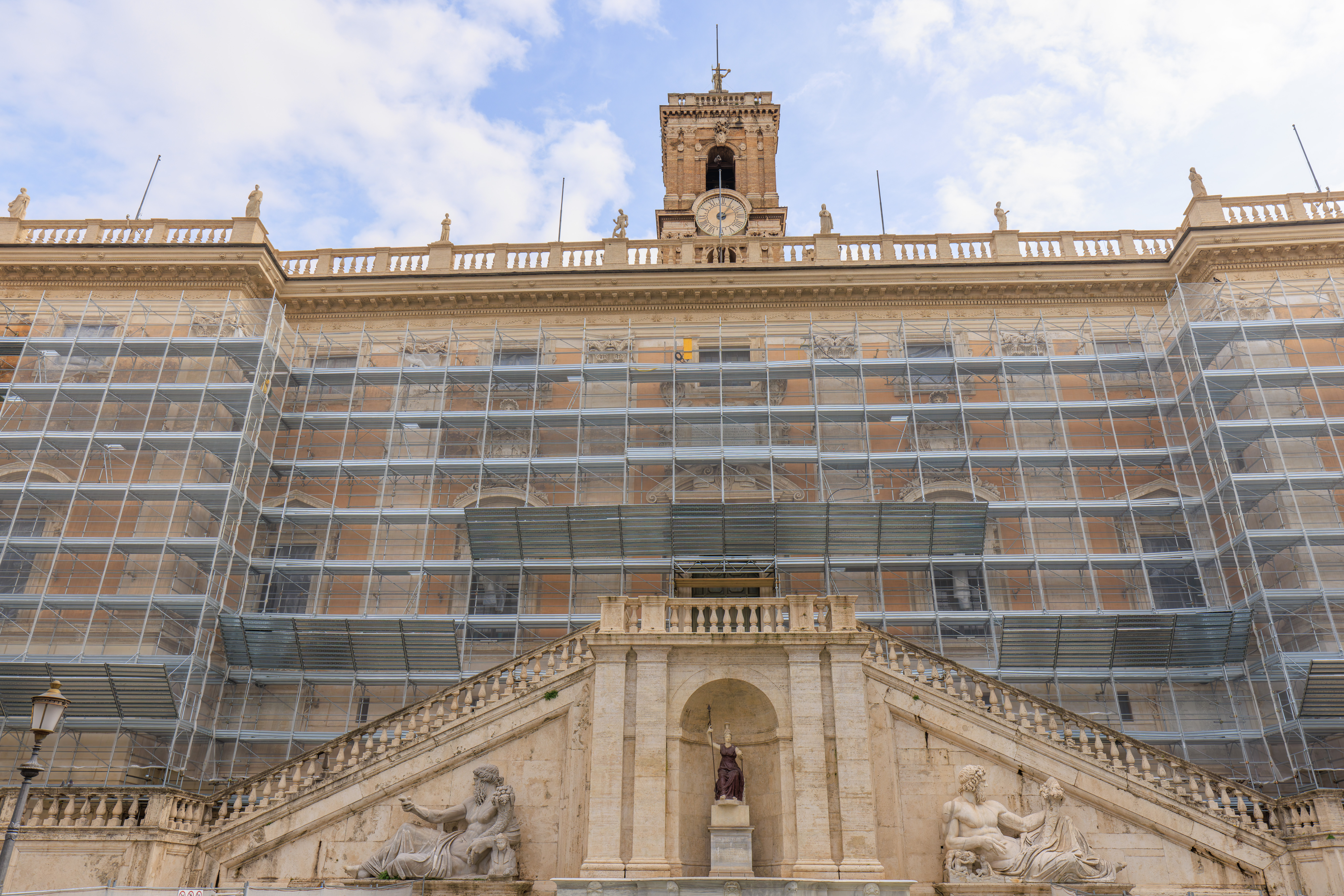
This building, which currently houses part of the Musei Capitolini, is the Palazzo Senatorio (Senatorial Palace). It was the Roman city hall. After locating the ticket office, which is in the building on the south side of the piazza, we headed in.
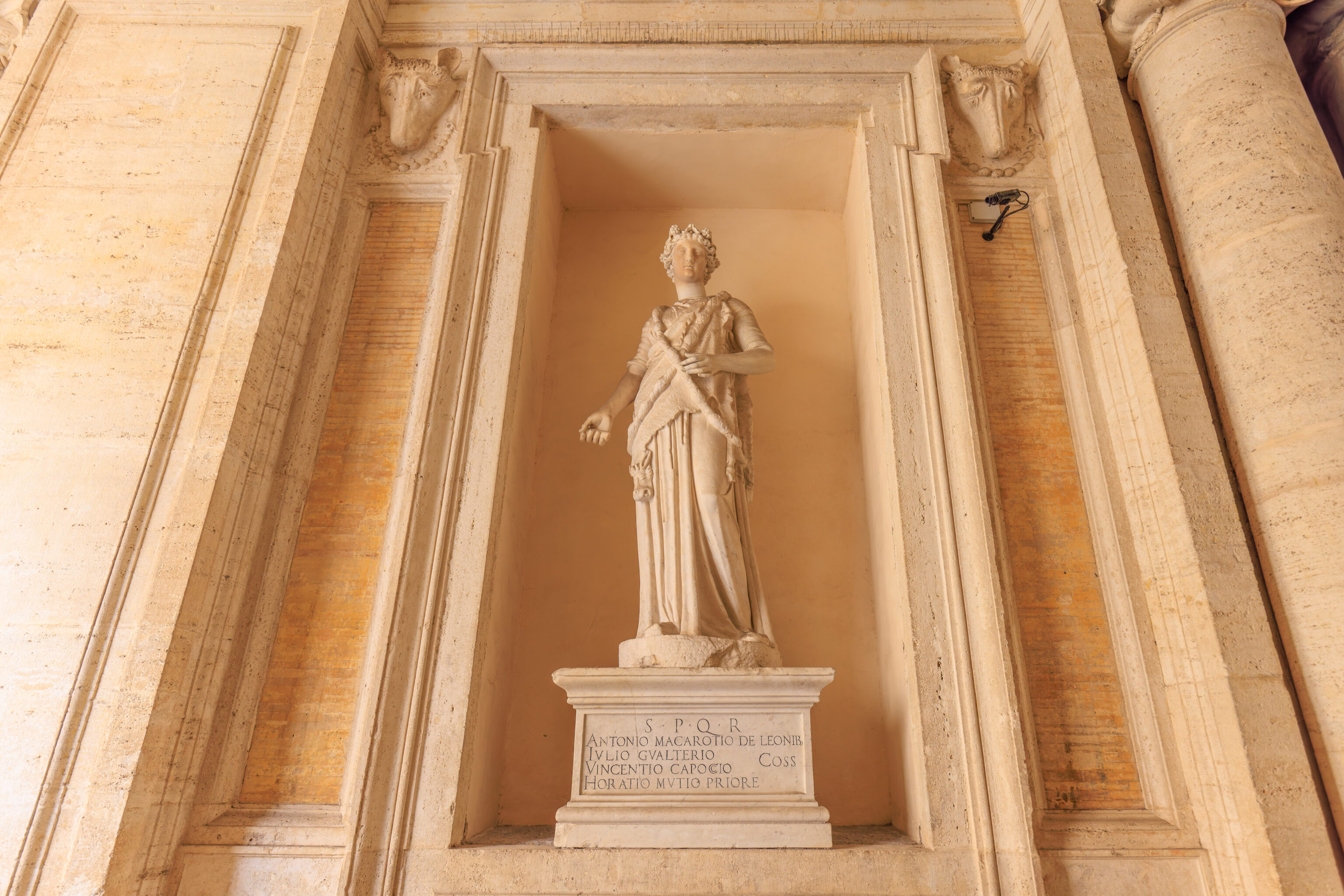
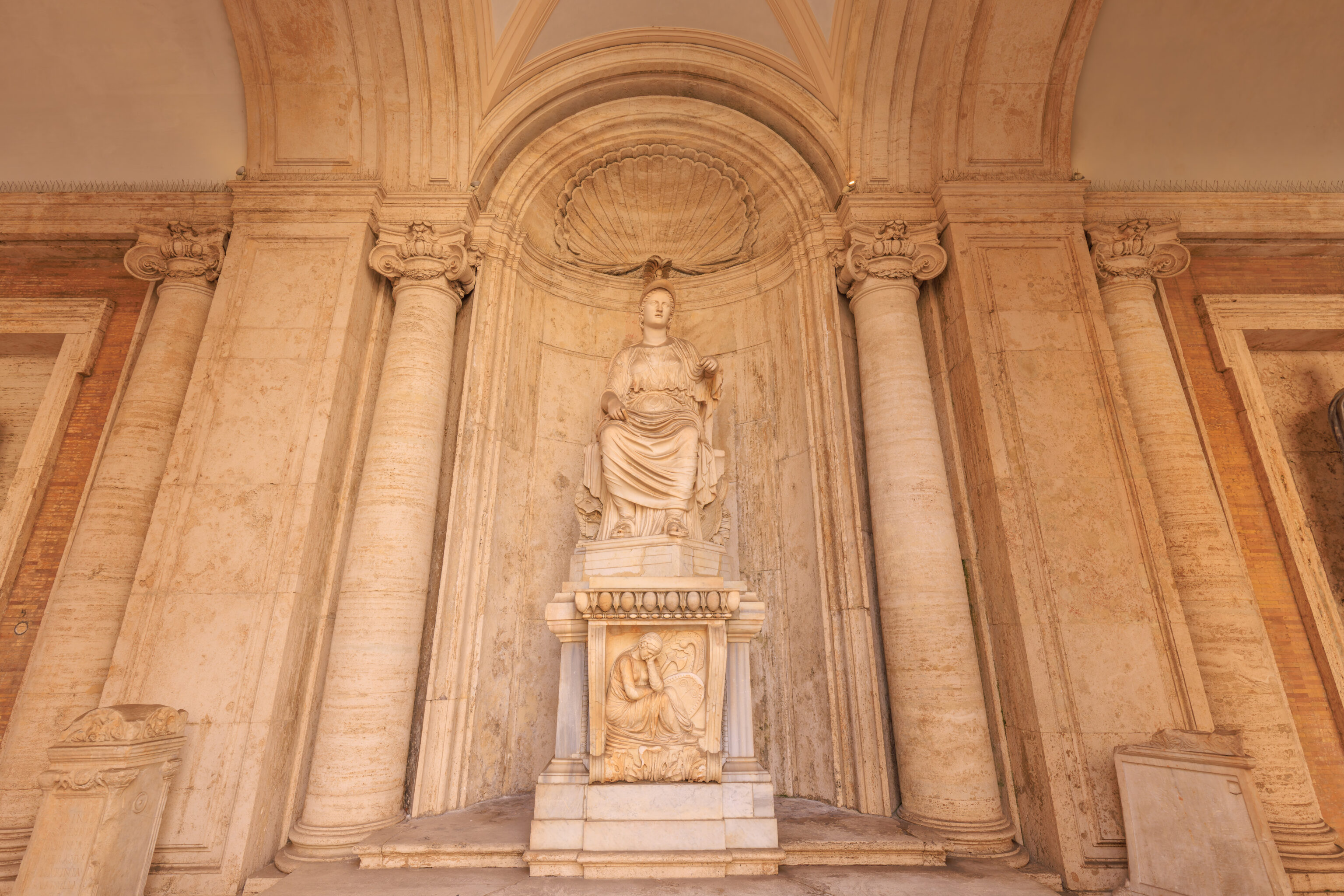
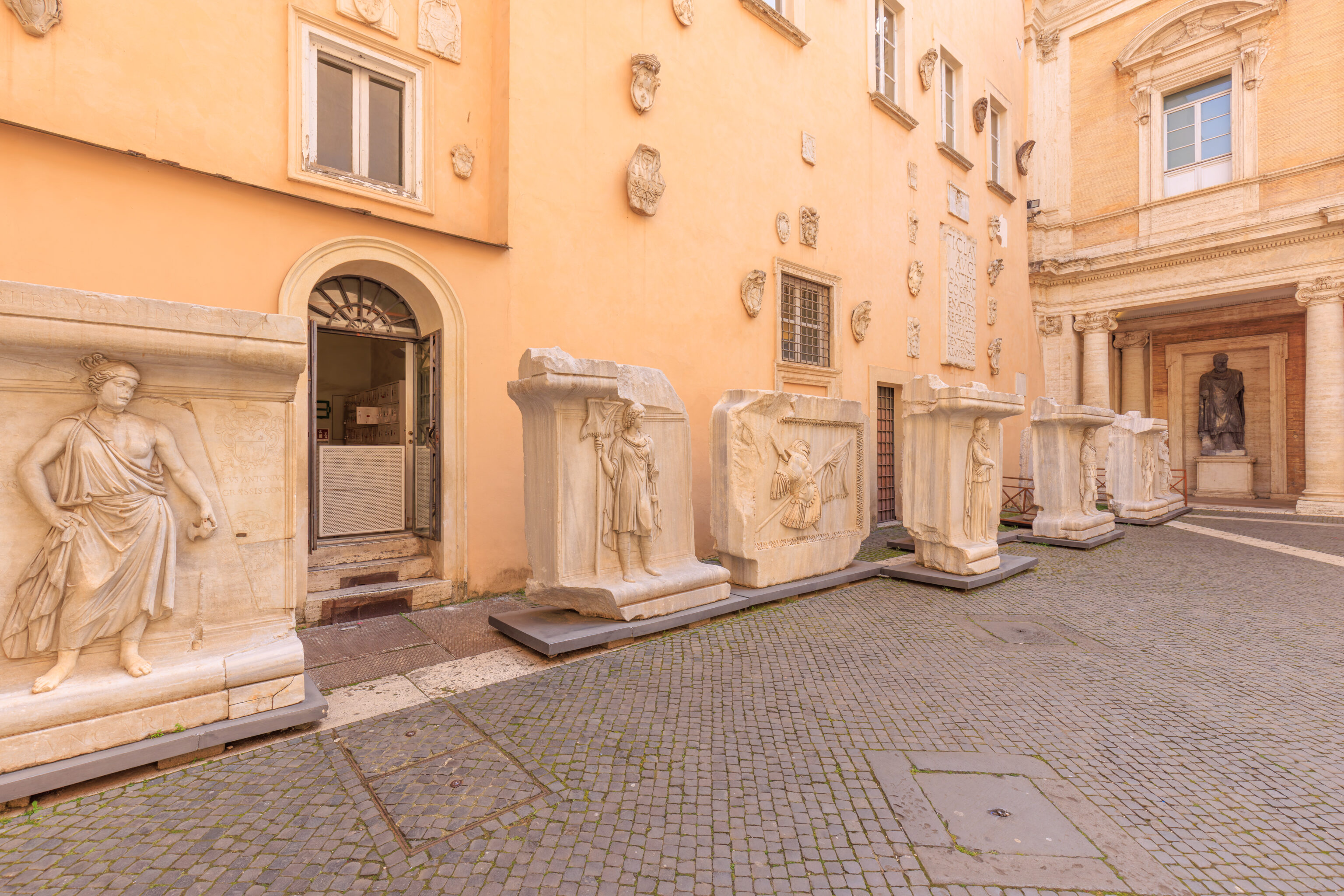
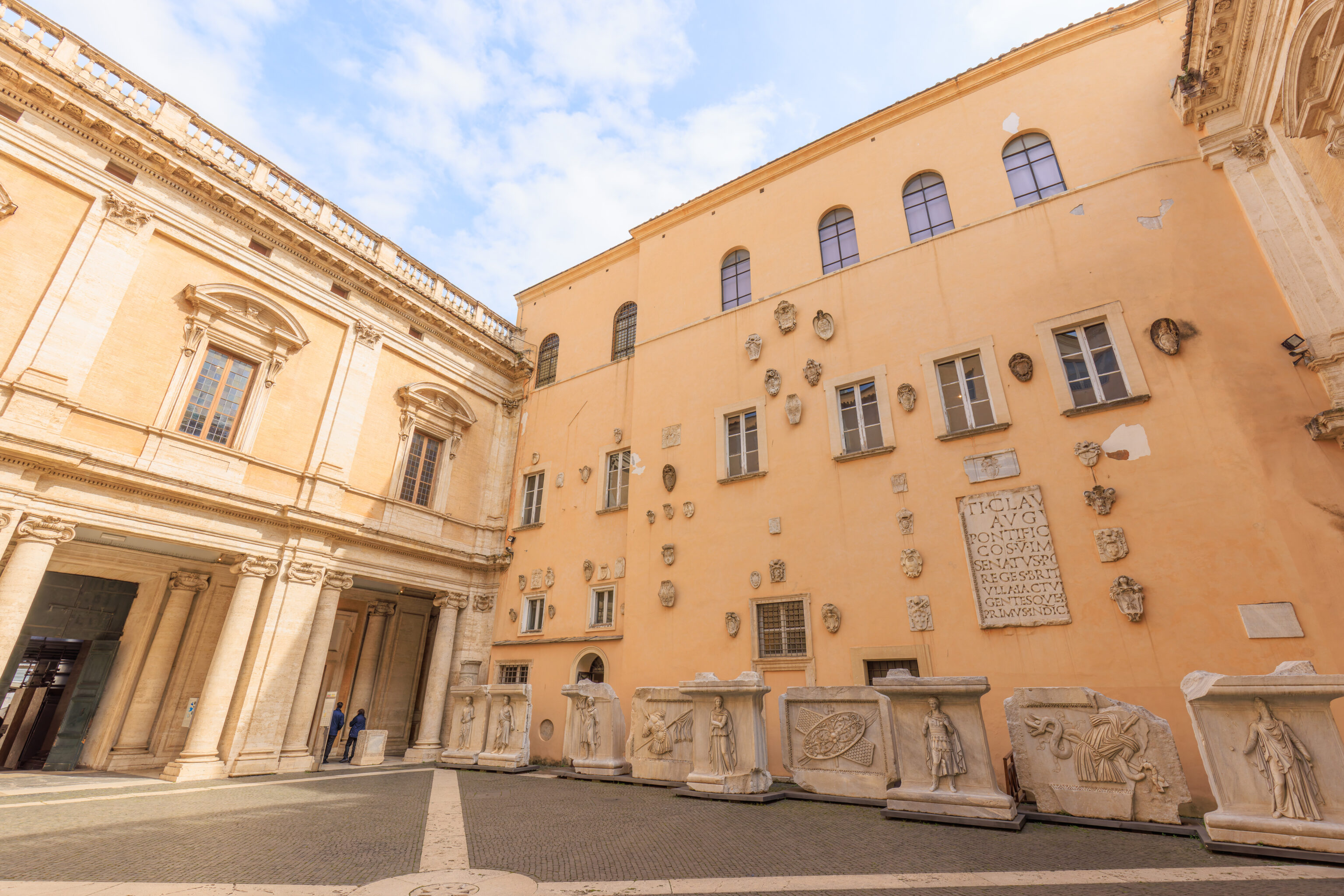
We first visited this outdoor area of the museum just beyond the entrance in a courtyard.
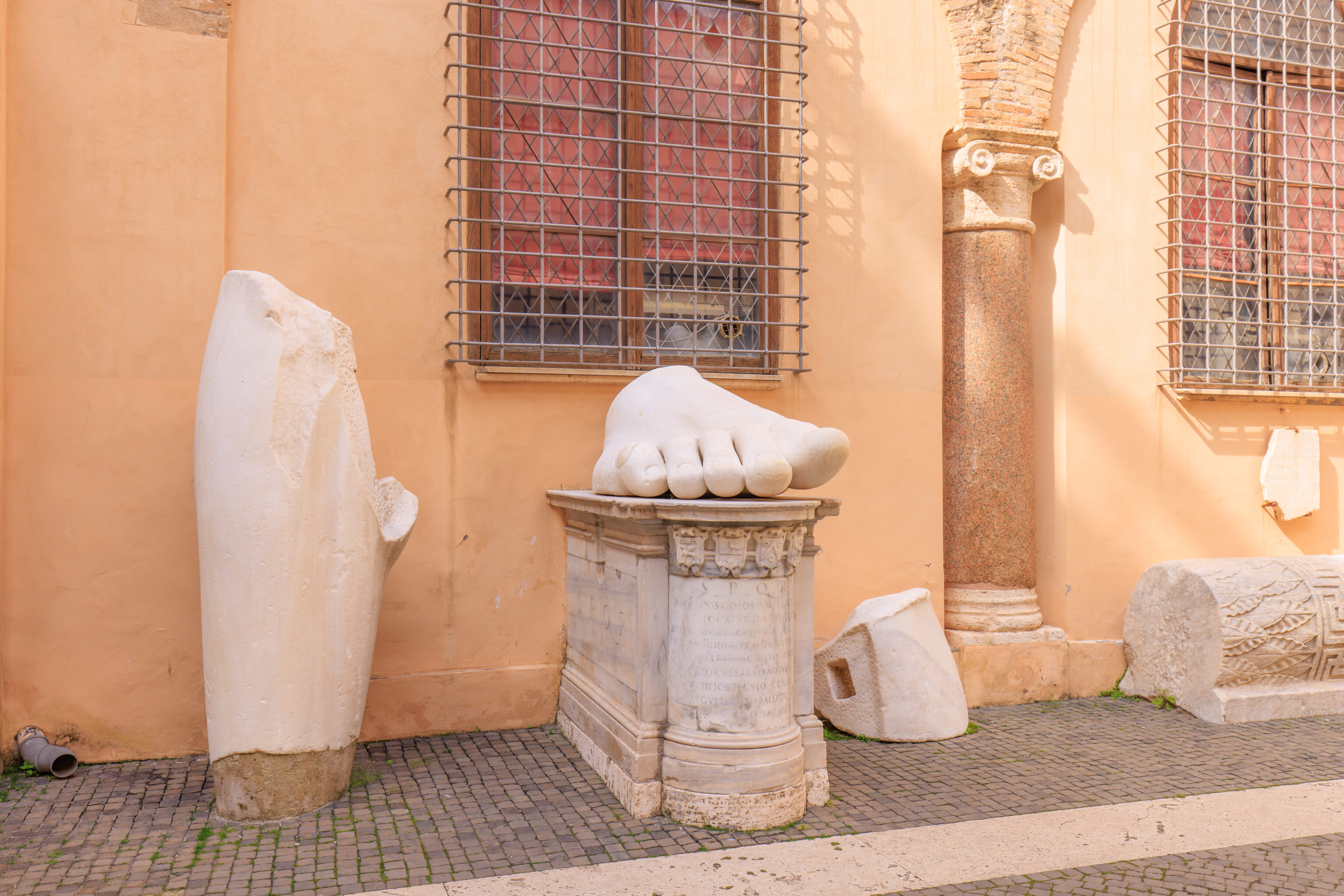
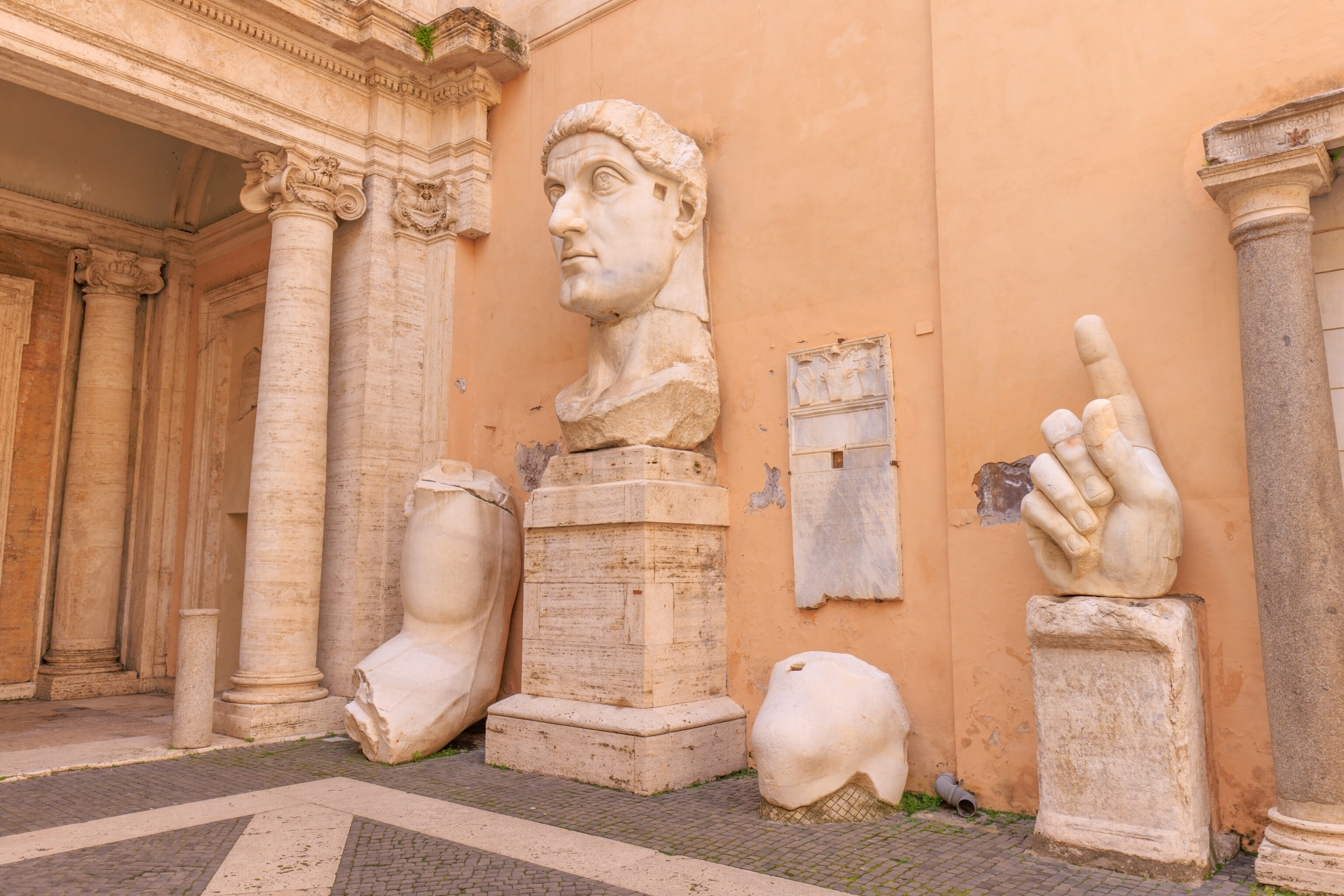
These parts belong to the Colossus of Constantine, a statue from the 4th century of Constantine the Great, the Roman Emperor that converted the empire to Christianity. He also moved the capital to Byzantium, renaming it Constantinople. This city is now known as Istanbul. This part of the Roman Empire became the Eastern Roman Empire. In more modern times, it became known as the Byzantine Empire, though that term was never used when it was still around.
We continued on, starting at the lowest level of the museum. There is too much here to try and go into detail about everything that we saw.

We ended up at a corridor with a series of large arched openings with a spectacular view of the Roman Forum to the southeast. This part of the museum is at the rear of the Palazzo Senatorio.
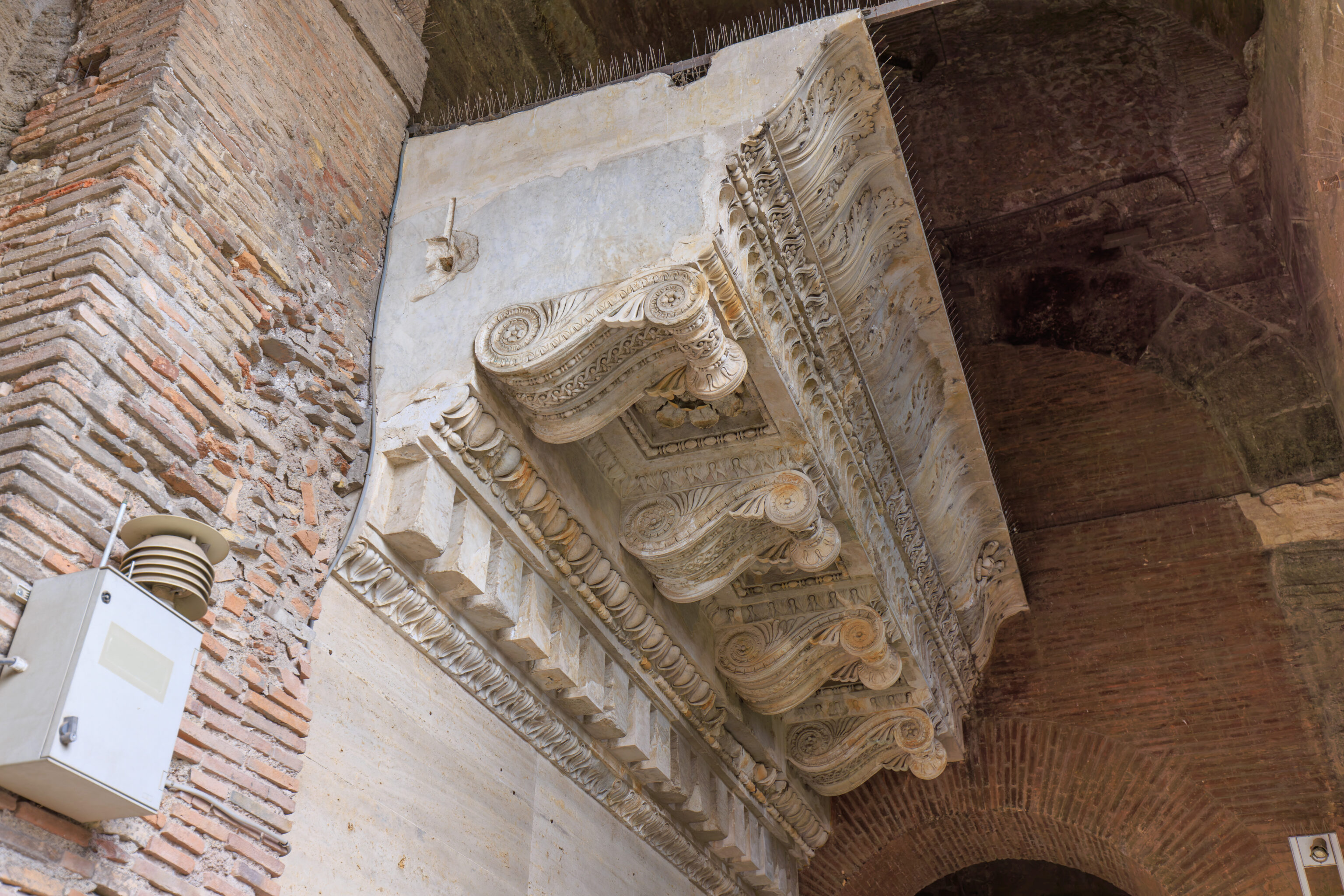
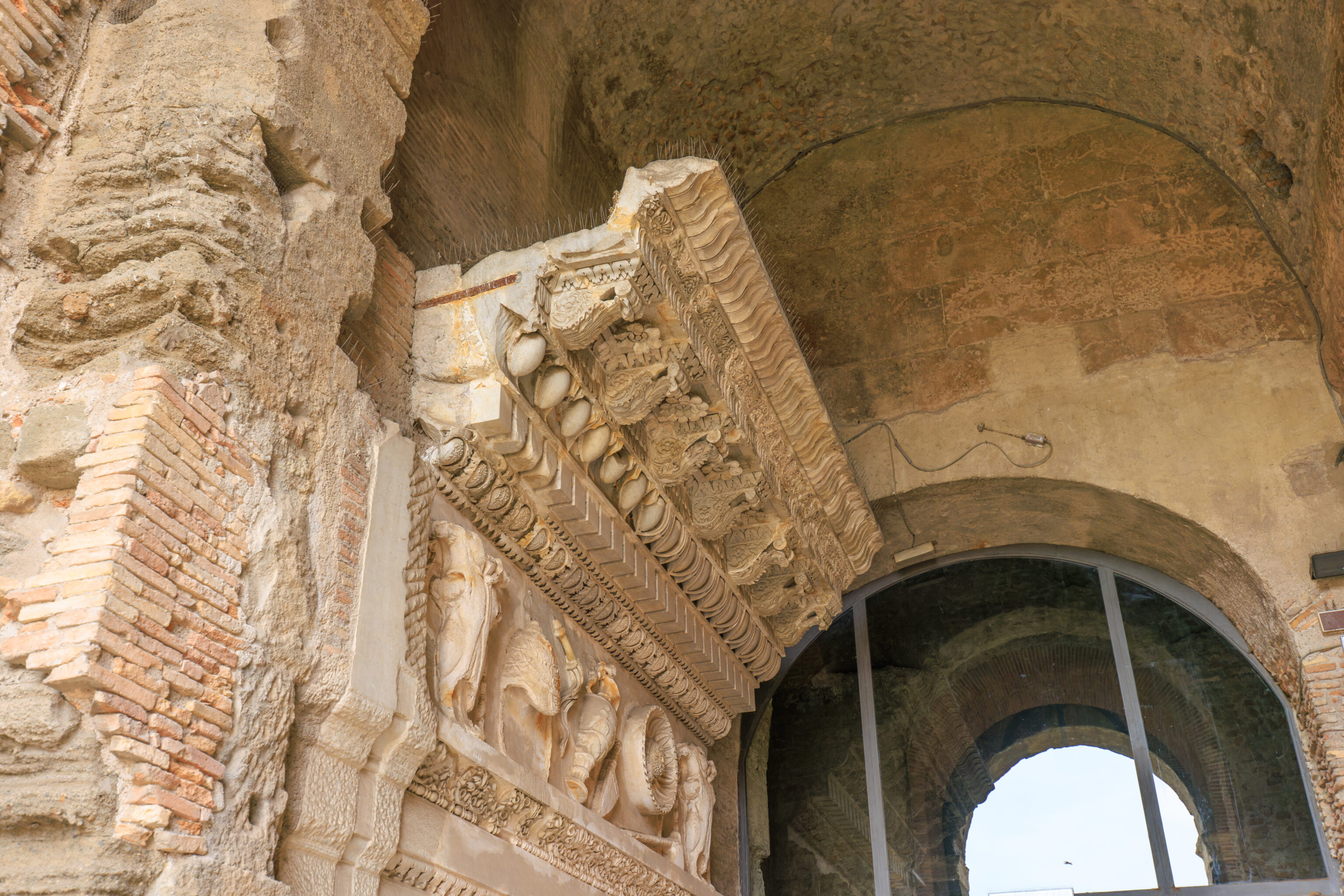
This area held some finely detailed wall pieces.
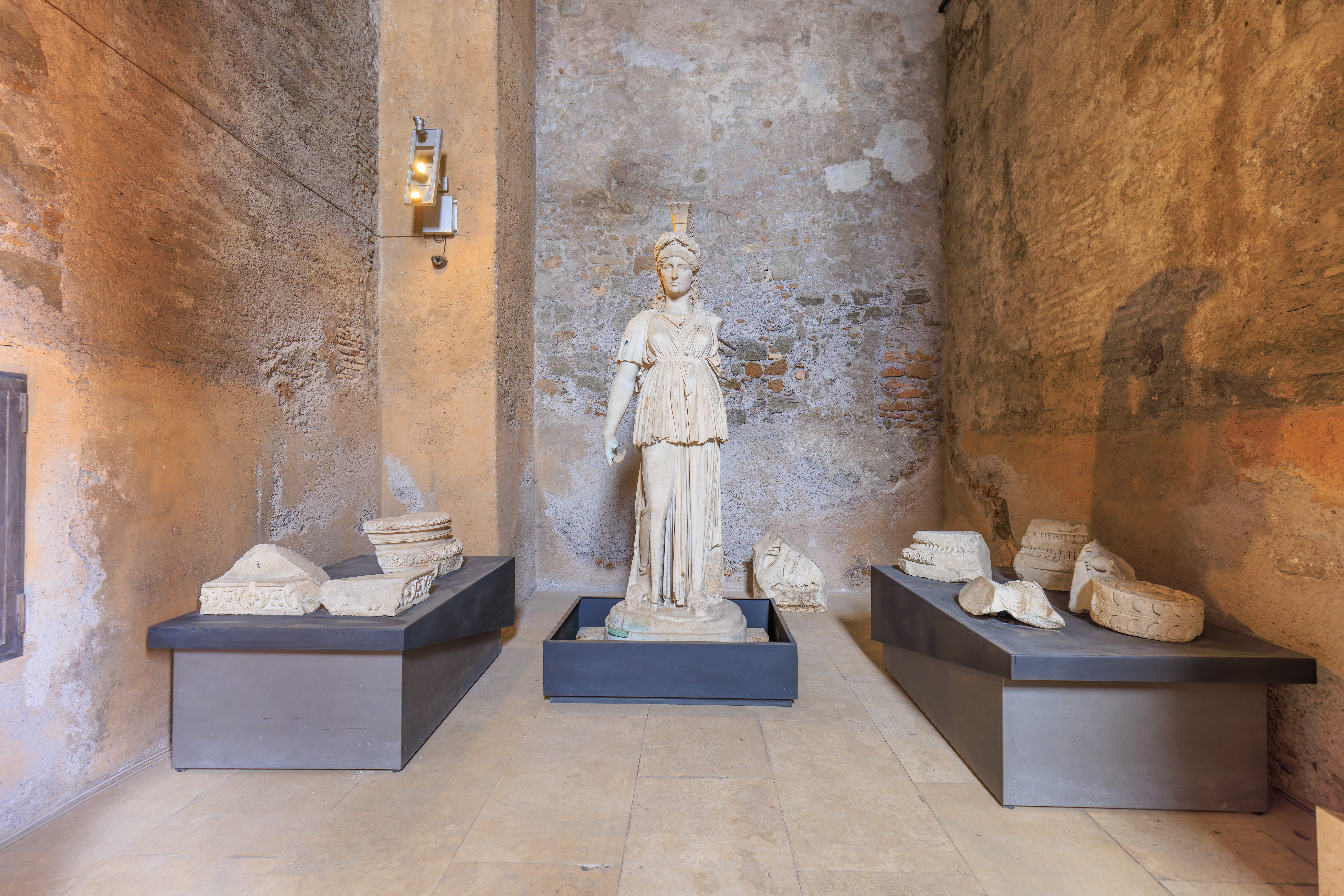
There were also other historical artifacts.

We walked through this corridor, perhaps best described architecturally as a loggia, to the southwest.
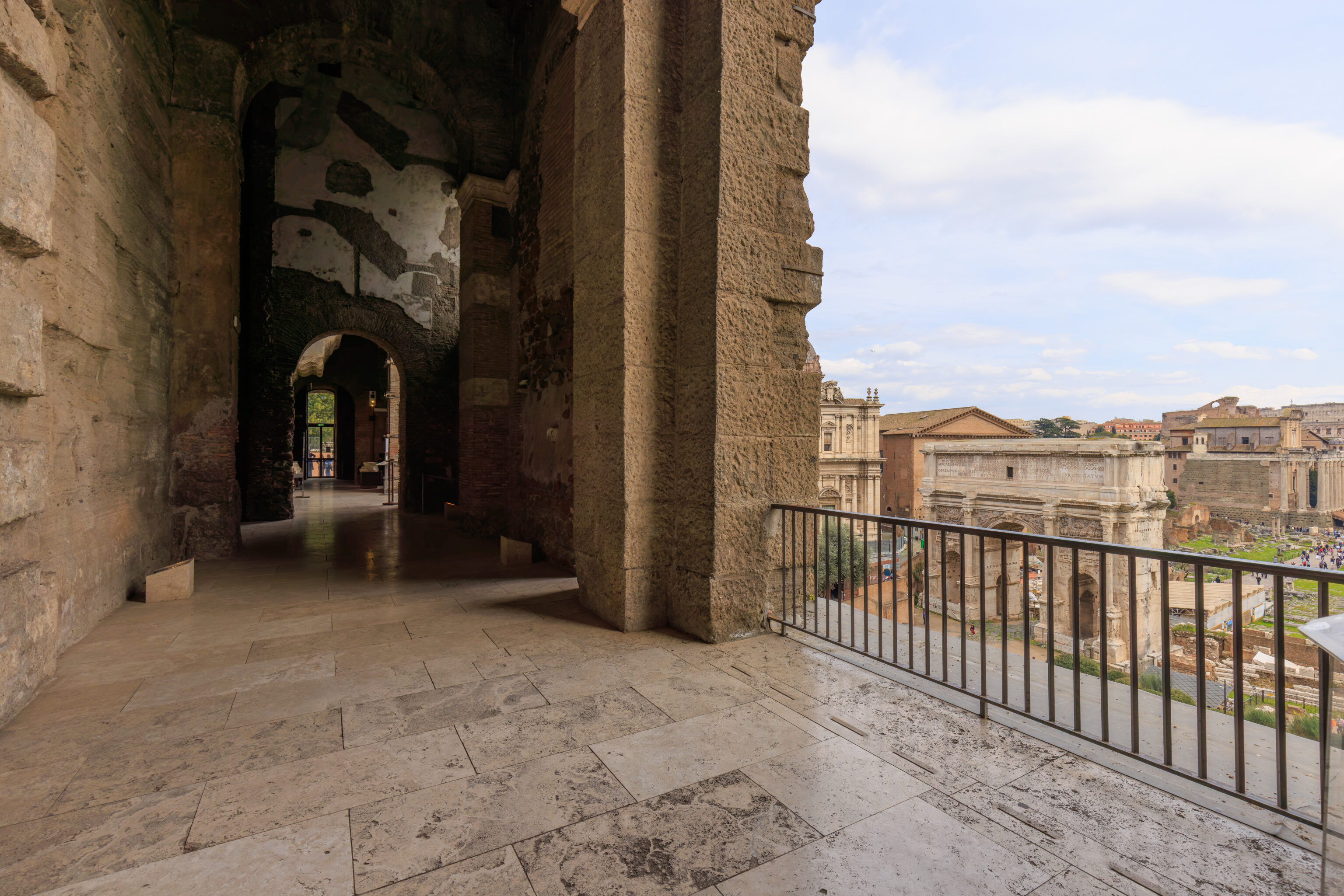
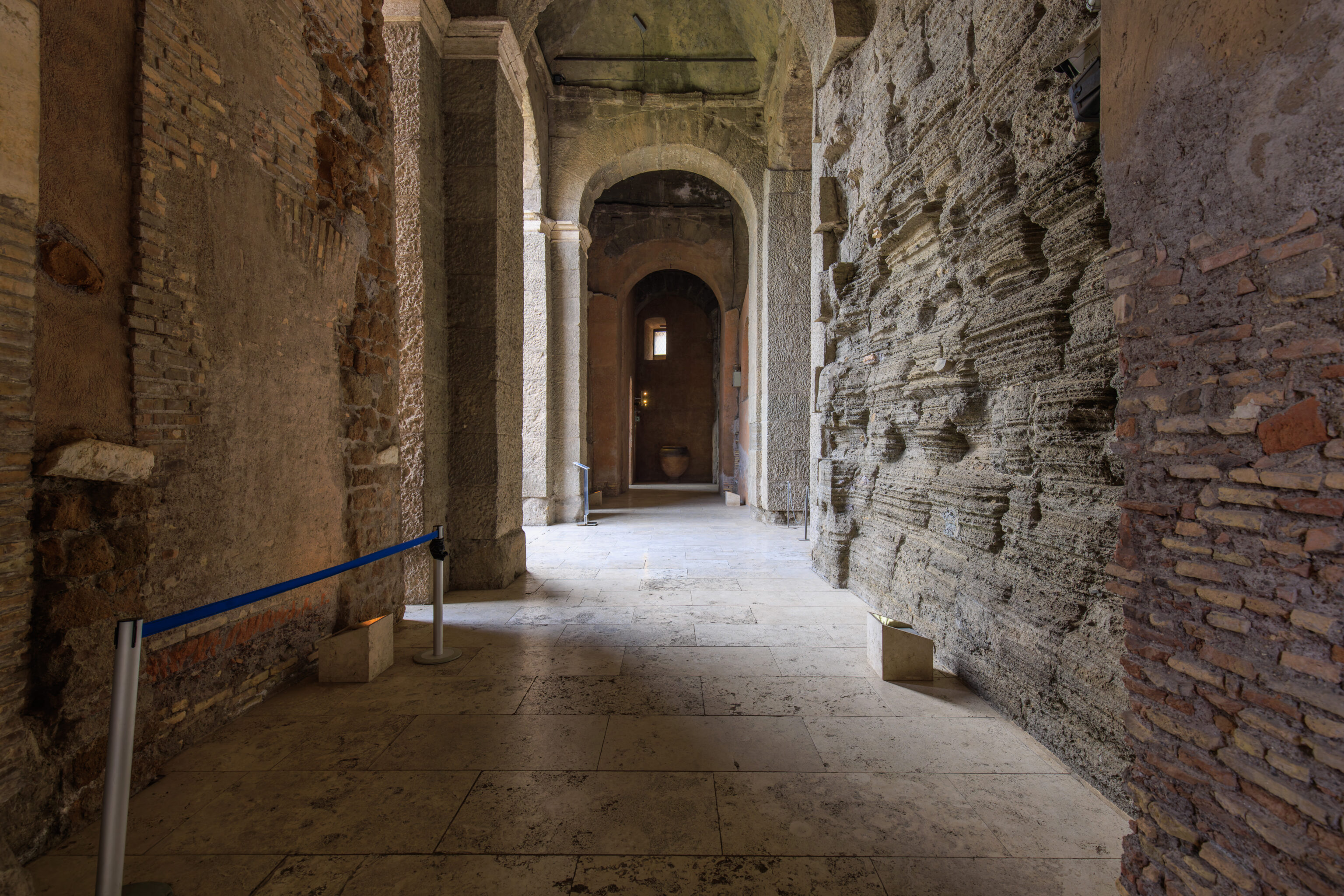
This corridor had a very high ceiling and the arched windows were extremely large.
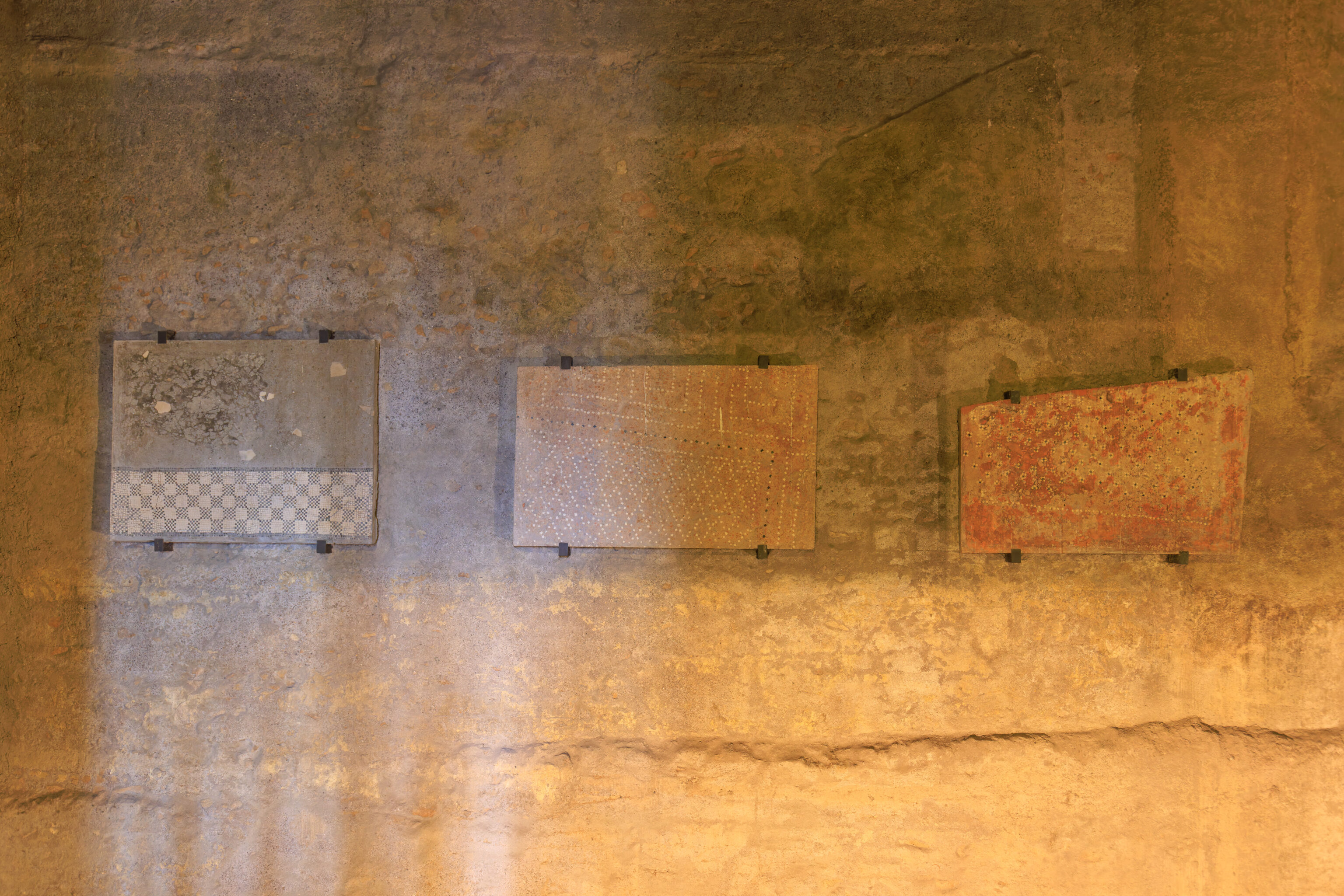
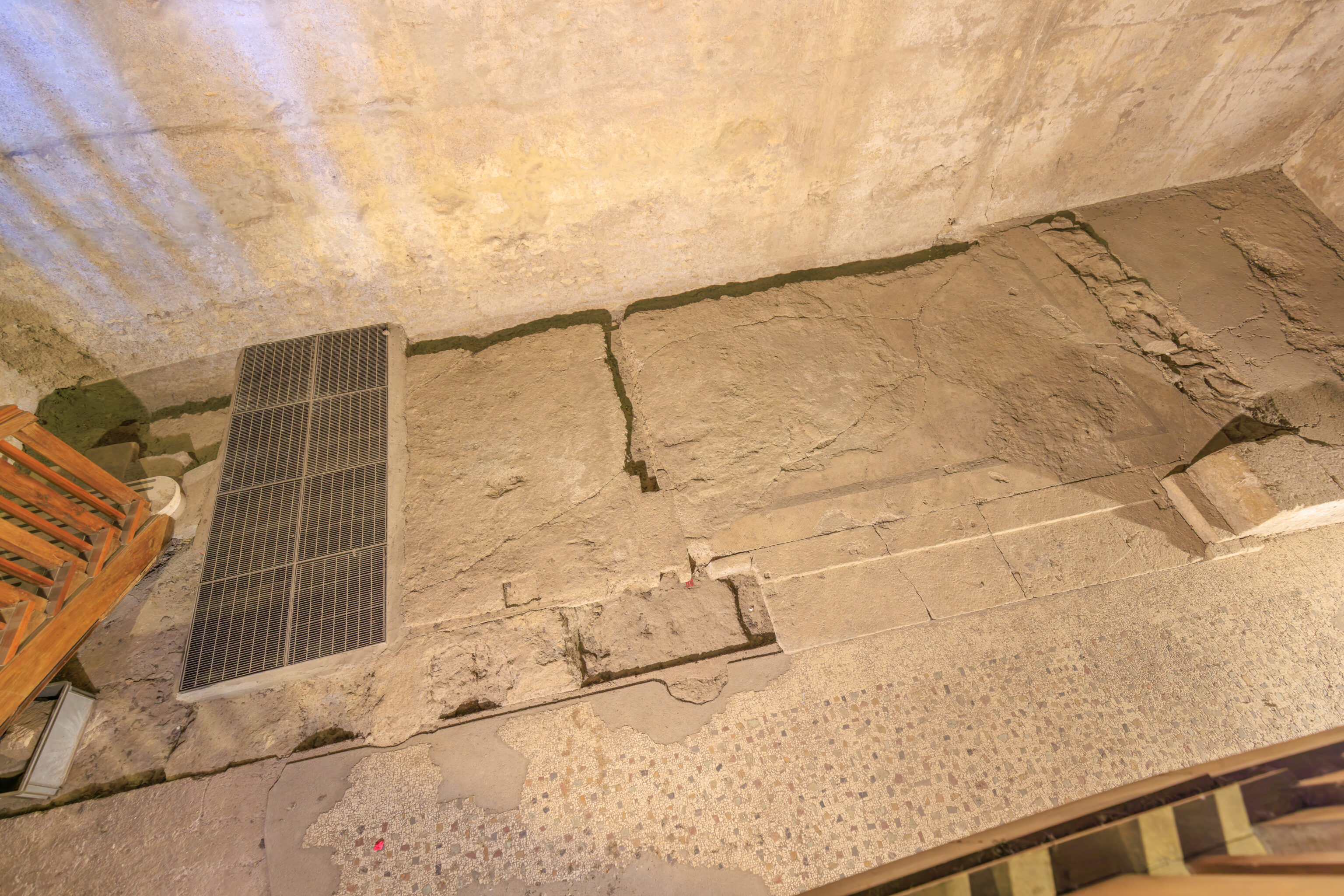
This room is described by a sign as the Executioner’s Room:
EXECUTIONER'S ROOM - The Tabularium was erected on the sites of older buildings that had risen on different levels along the slope of the Capitoline Hill and had probably burned down in the terrible fire that broke out in 83 B.C. and destroyed the Temple of Jupiter and a good deal of the surrounding area. Vestiges of these older buildings - mosaic and cocciopesto floors (cocciopesto was a water-resistant mortar made of lime and crushed pottery or brick) dating from the late second century B.C. - are still visible in this large foundation room. Looking down from the modern wooden staircase, one can see several rooms. The central one, whose fine white mosaic floor is bordered by a black strip, opens to another room or terrace with a floor made of fragments of colored stone on a white ground (lithostroton). Displayed on the opposite wall are parts of similar floors found in the remains of contemporary buildings behind the Temple of Veiovis.
Unfortunately, the sign fails to discuss why the room has its name!
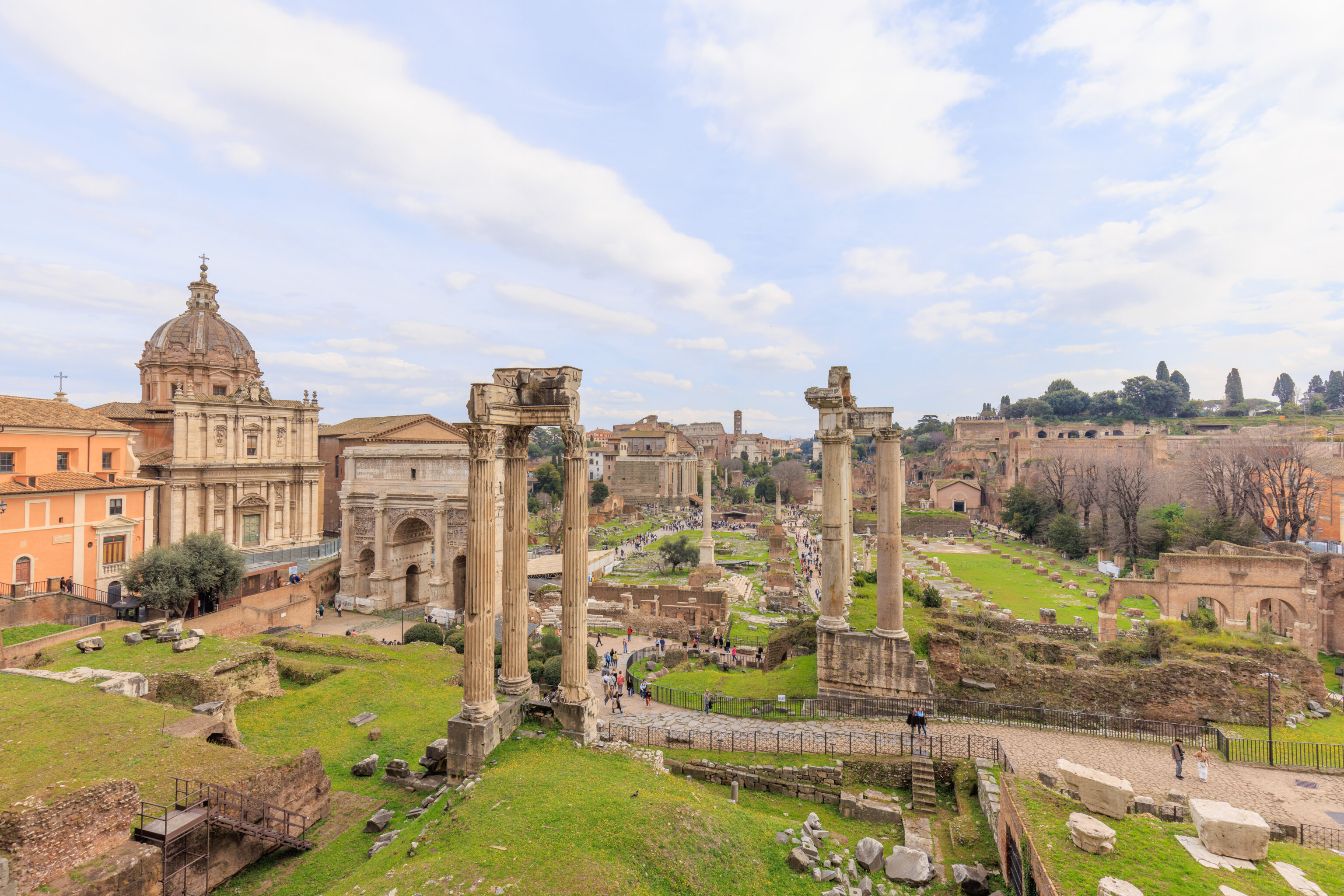
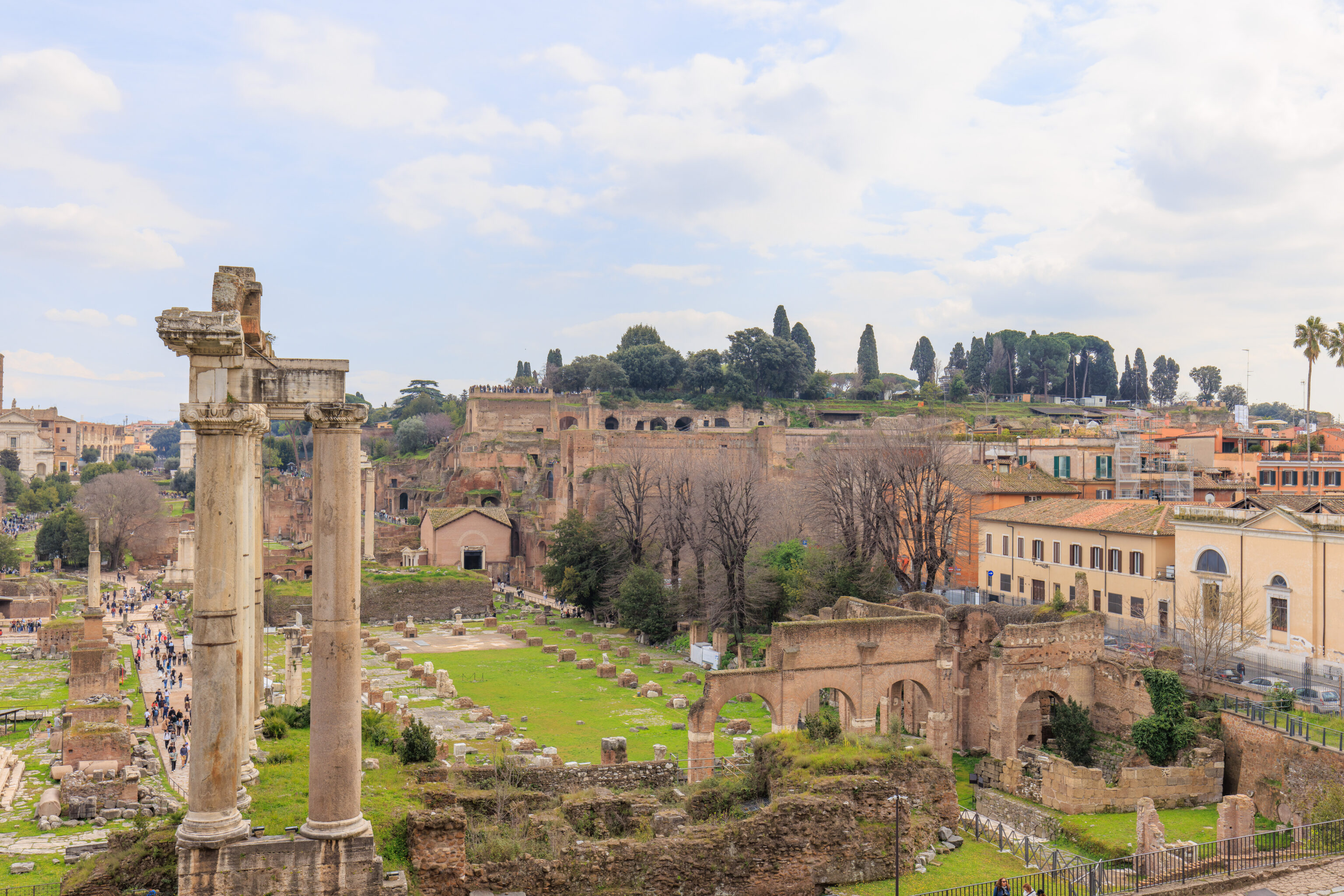
We walked to the end of the corridor before turning back as it was not possible to go any further.
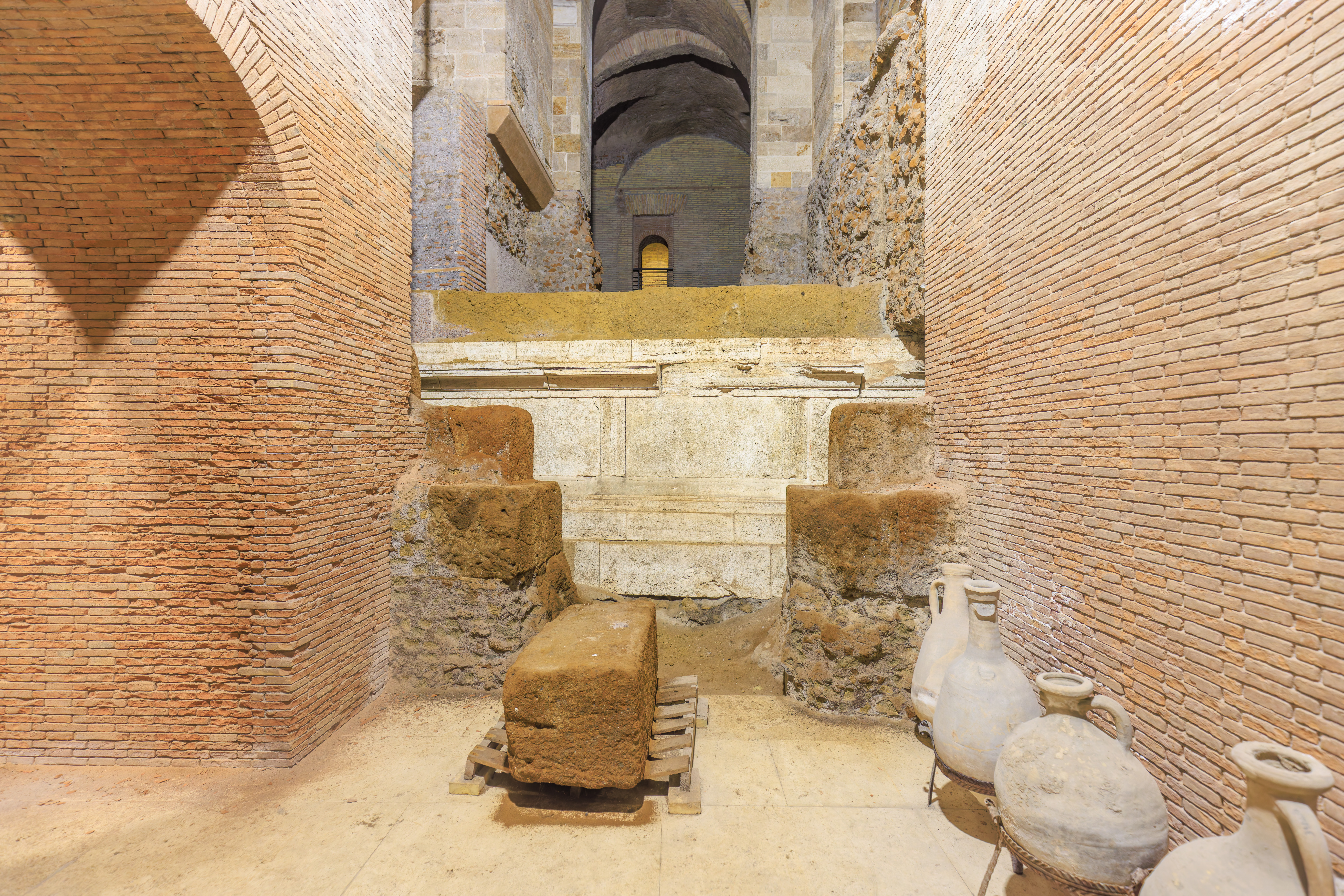
After backtracking out of the corridor, we went into a small side area along the route. There is more beyond but it is not accessible to visitors. This area was once the Temple of Veiovis:
THE TEMPLE OF VEIOVIS - Based on ancient literary sources, this temple was the one dedicated to Veiovis in 192 B.C., inter duos locus, inter Arcem et Capitolium ("between the two groves, between the Arx and the Capitolium"). It was rebuilt in the shape we see now by Sulla, in the early first century B.C. It consists of a cella (wider than it is deep) in front of which is a four-columned portico (pronaos). The high podium in travertine stone was typical of the time. The cella walls are made of blocks of tuff from Grotta Oscura (near Veii). The temple was restored in the Flavian period (late first century A.D.); the wooden roof was replaced with one in concrete and the interior of the cella was redecorated with colored marbles.
During the dig that brought the temple of Veiovis to light, the cult statue of the god (S 2446) was found inside the cella, minus the head. It portrays a standing nude youth about twice life-size, with a heavy cape draped over his left shoulder. A small bronze sculpture found near Viterbo and several coins minted in republican times show the statue (complete with its head) holding thunderbolts in its left hand. Stylistic studies suggest that the statue was made in the early first century B.C.
The ancient literary sources do not clarify the god's nature, nor his relationship to Jupiter/Jove. The two names are the same except for the prefix Ve/Ved before Iovis. The god was probably similar to a young Jupiter, perhaps with some malicious traits.
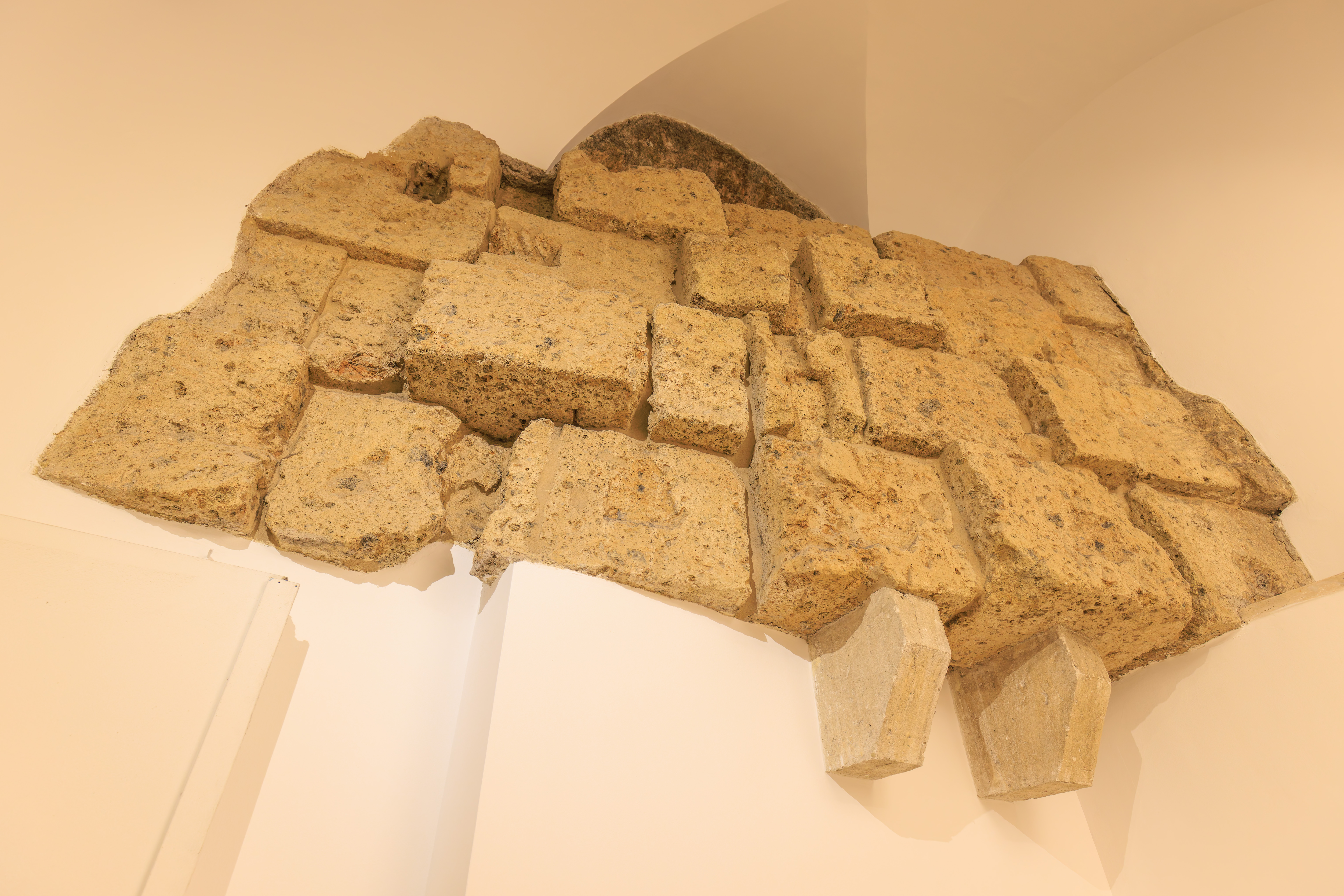
A bit of stone embedded into the modern wall of the building.
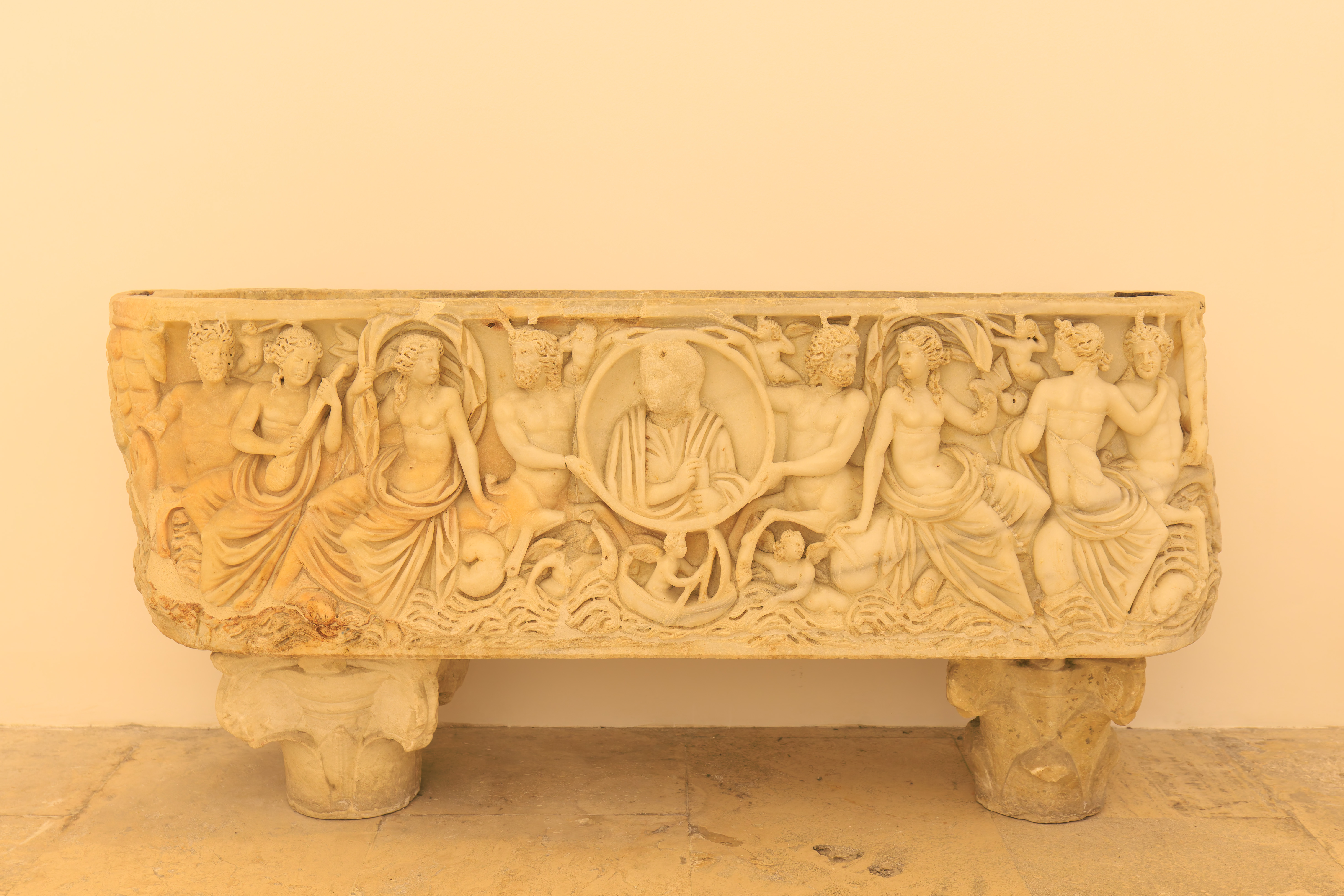
After backtracking a bit, we took a different path and headed upstairs one floor.
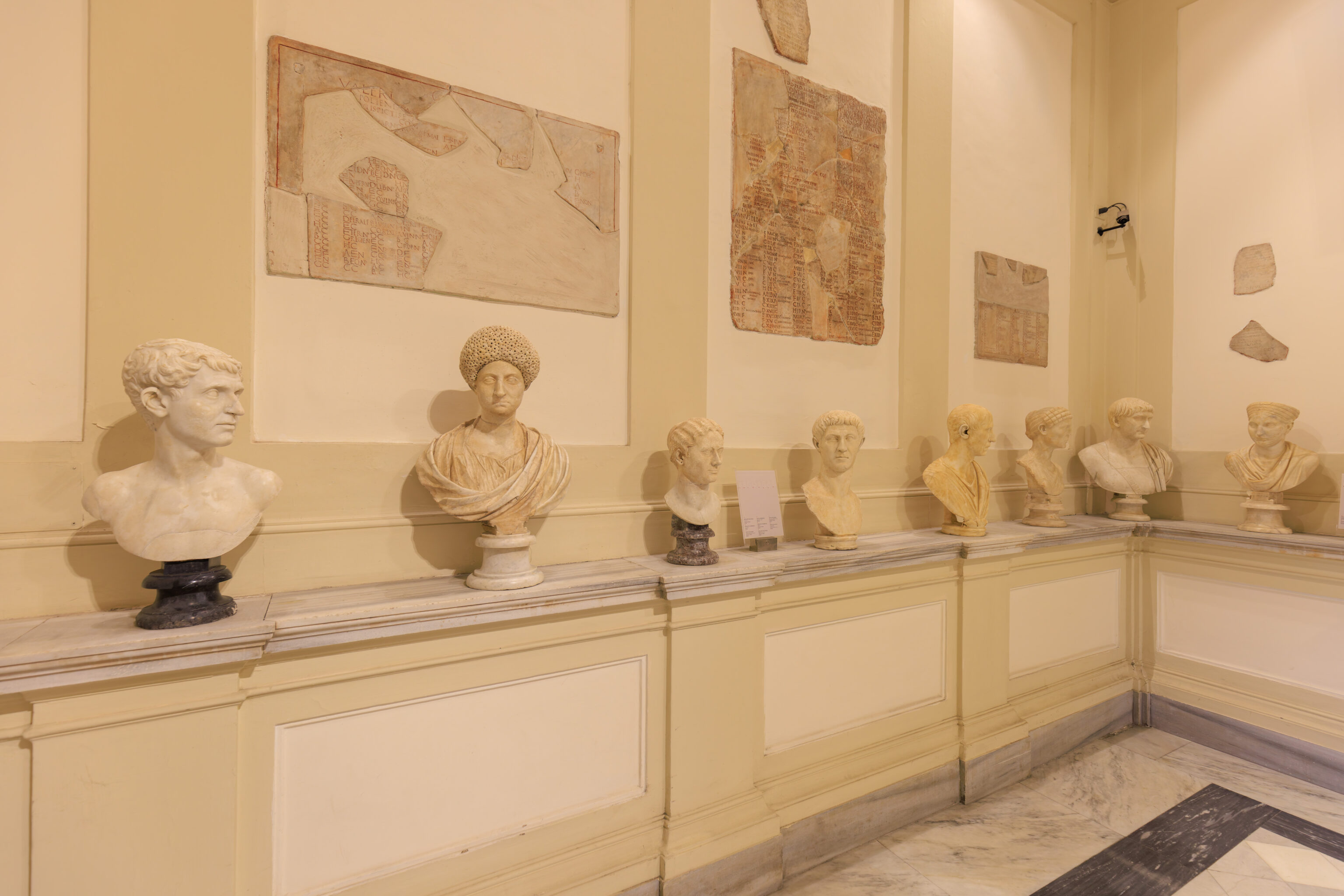
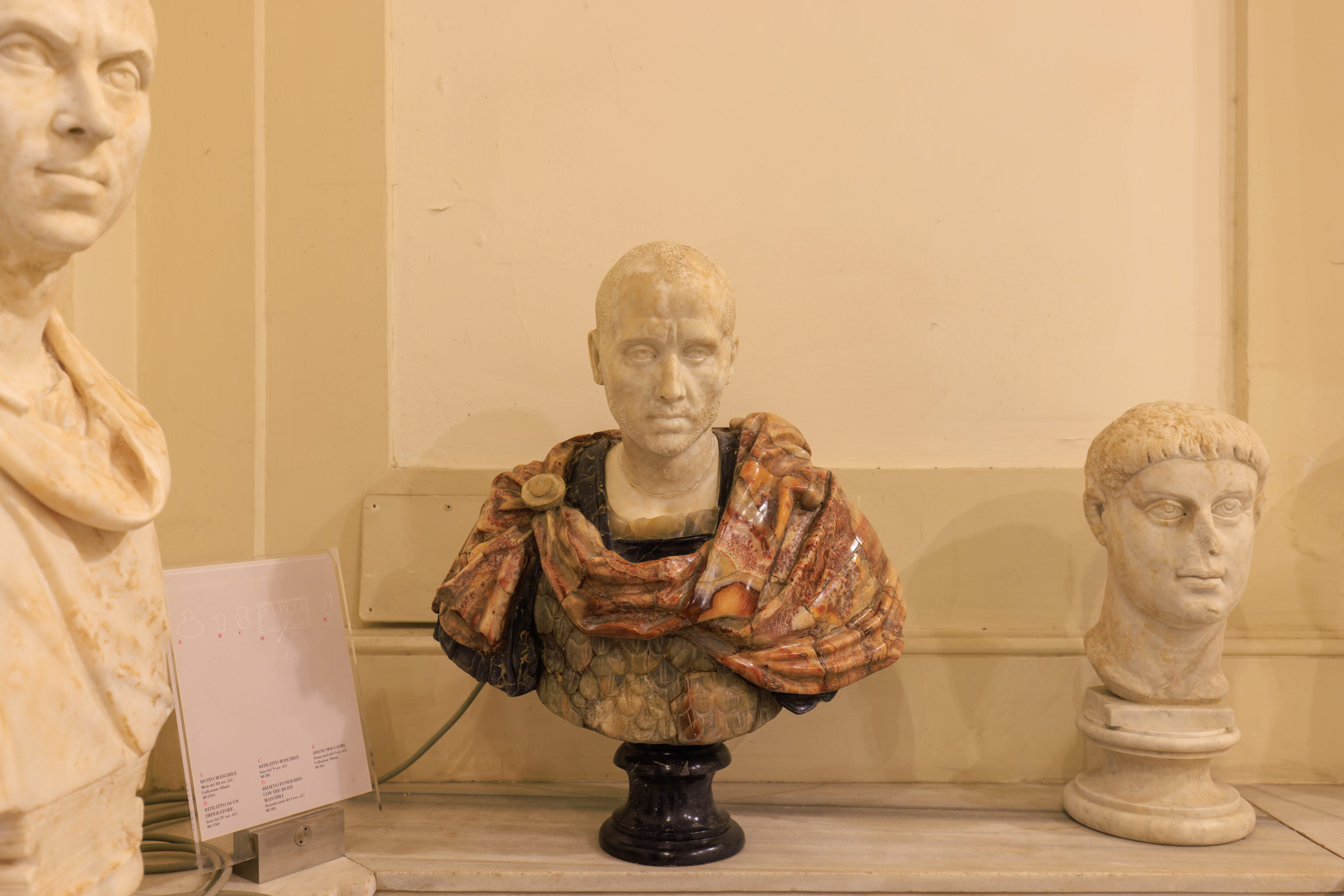
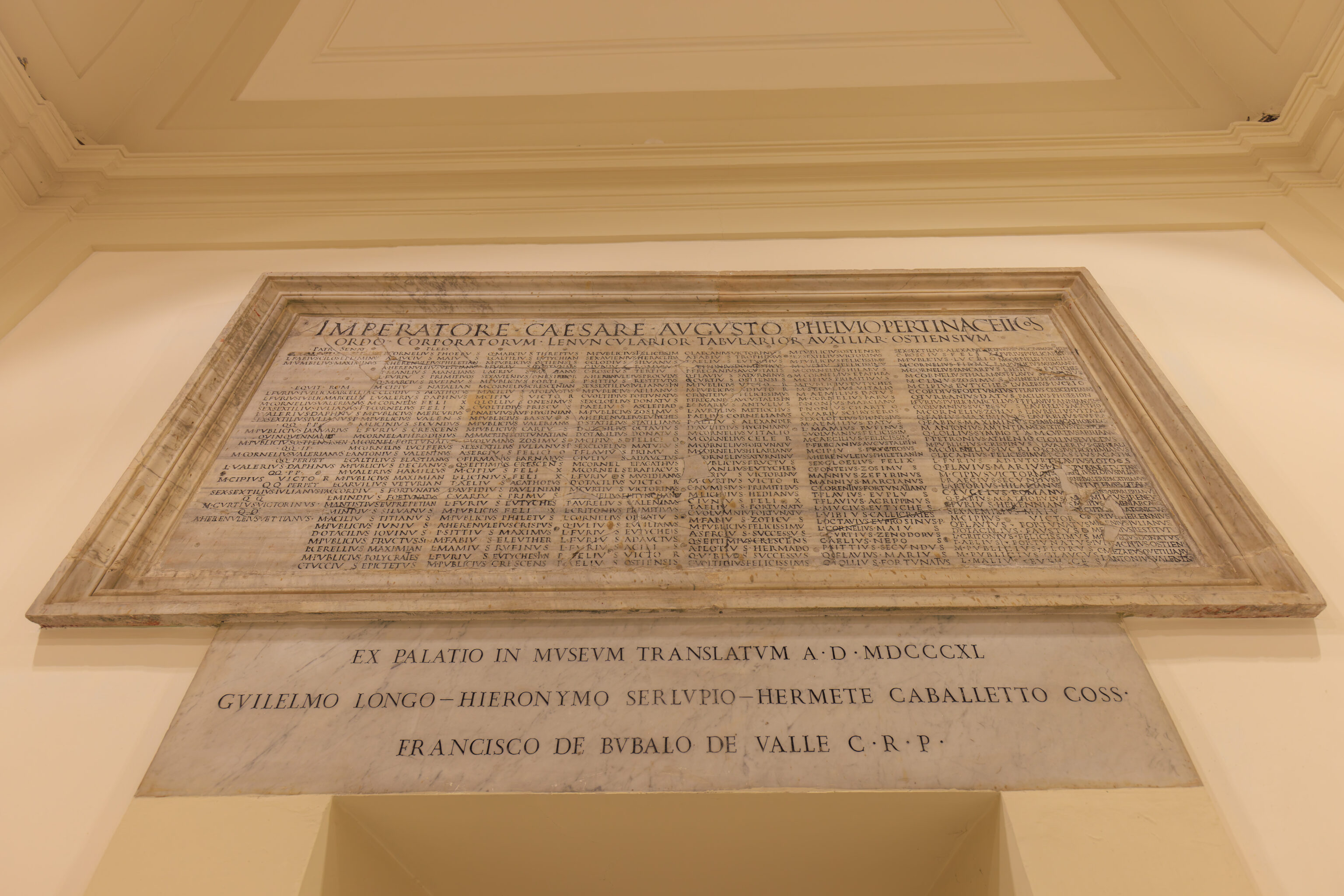
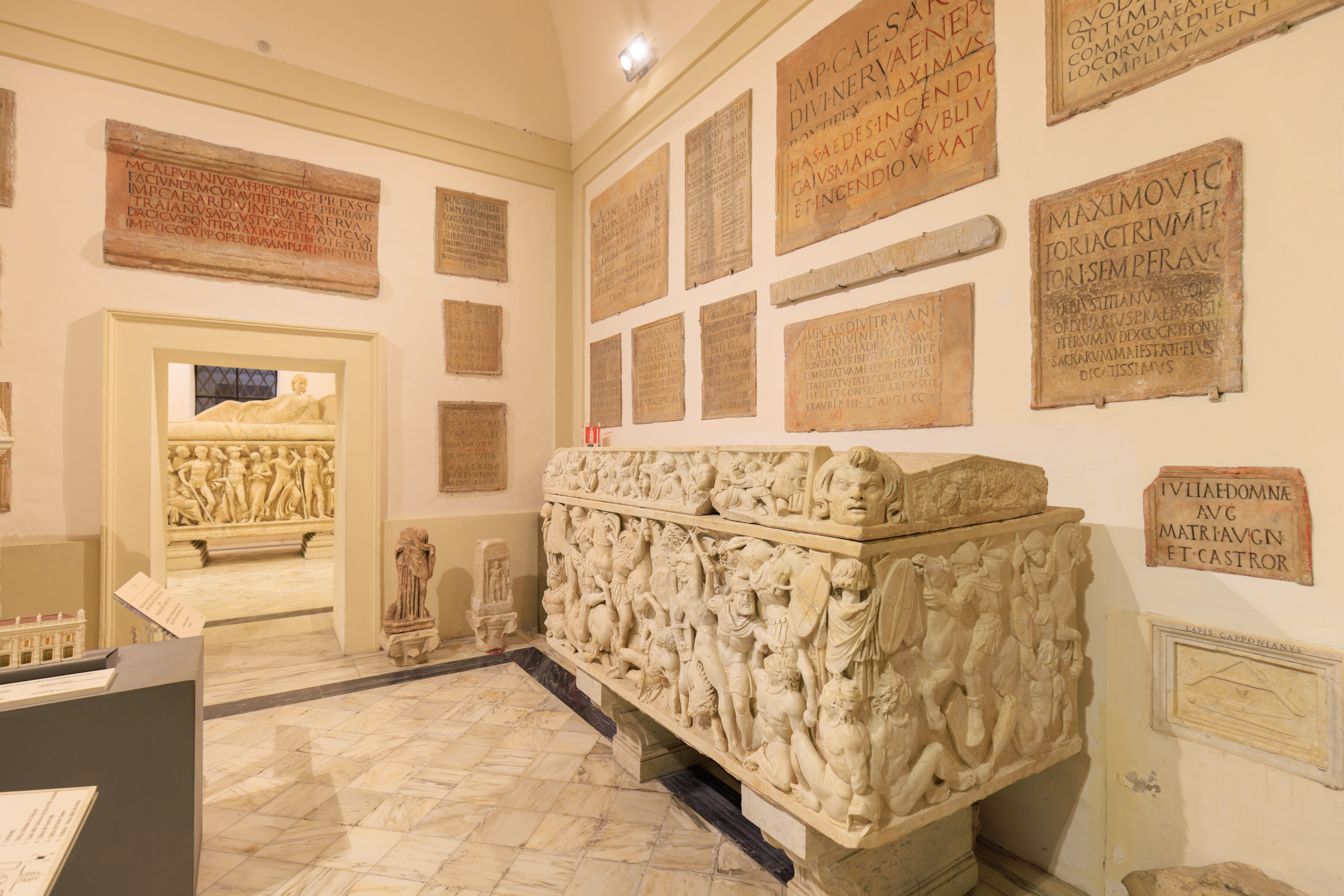

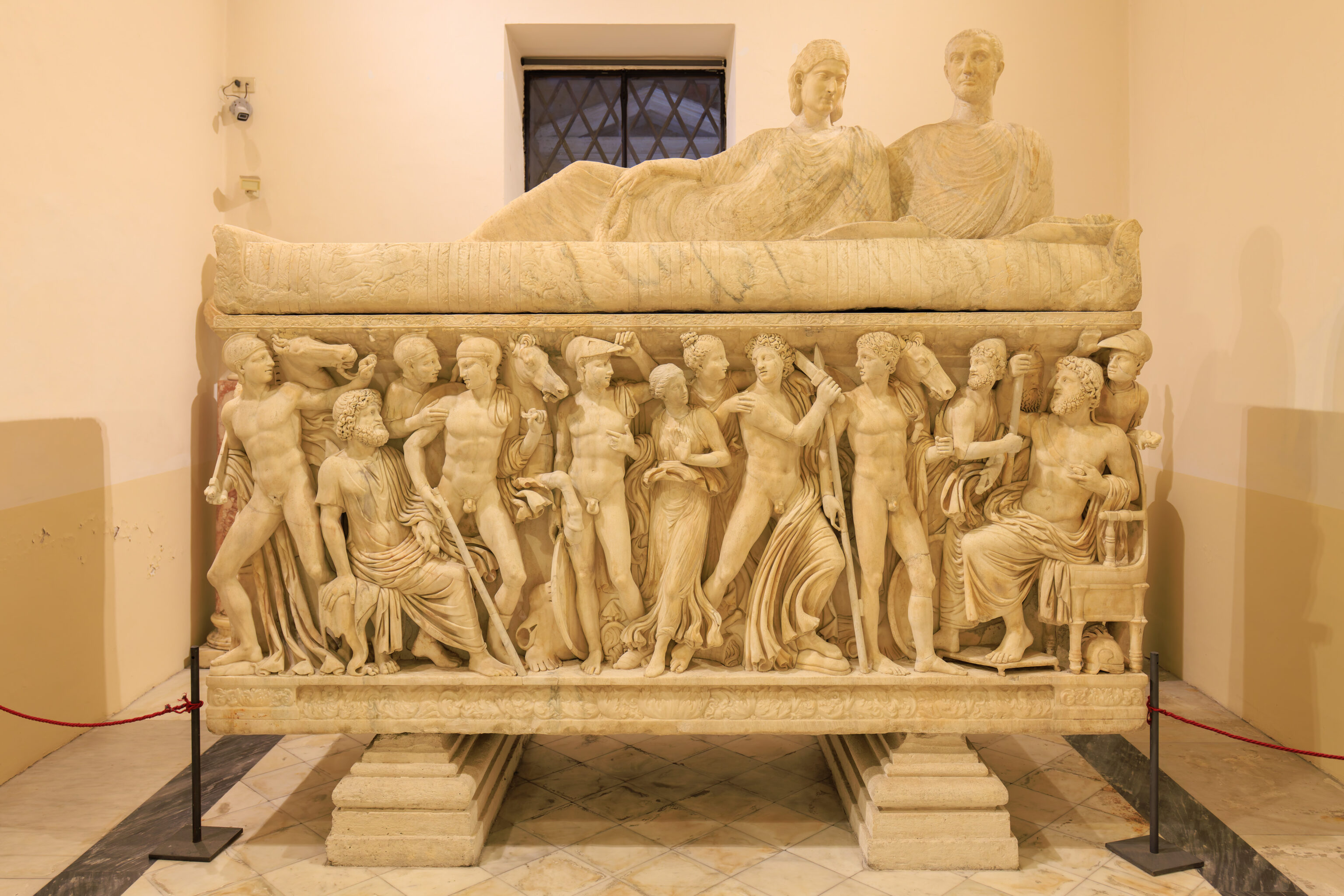
The rooms here are on the ground floor of the Palazzo Nuovo, the building on the north side of the Piazza del Campidoglio:
Palazzo Nuovo
Ground floor rooms (11 room)
The three halls on the ground floor to the right of the entrance and directly facing the external portico of the Palazzo were not originally conceived as exhibition space. Only as the collection increased, between the 18th and 19th centuries, the spaces were taken over by the Museum. Among the most important finds collected within these rooms one may consider the fragments of Roman calendars (Fasti), all referring to the period after Caesar's reform (46 B.C.), when it was established that the year was made up of 365 days. In the middle of the first room stands a base whith the exploits of Hercules (Il century A.D.), where the twelve labours of the Greek hero are illustrated, three on each side. On the shelves are displayed a series of portraits of public and private personages.
In the second room is the funeral altar destined to contain the ashes of the achitect Titus Statilius Aper, whose tools and instruments are represented on the sides of the altar.
At the back of the third room towers a monumental Attic sarcophagus, dating to the beginning of ll1 century A.D., that was found in 1582 in the big mausoleum called "Monte del Grano", on the Via Tuscolana. On the lid of the sarcophagus, which shows episodes from the life of Achilles, the two deceased are lying on a richly decorated bed.
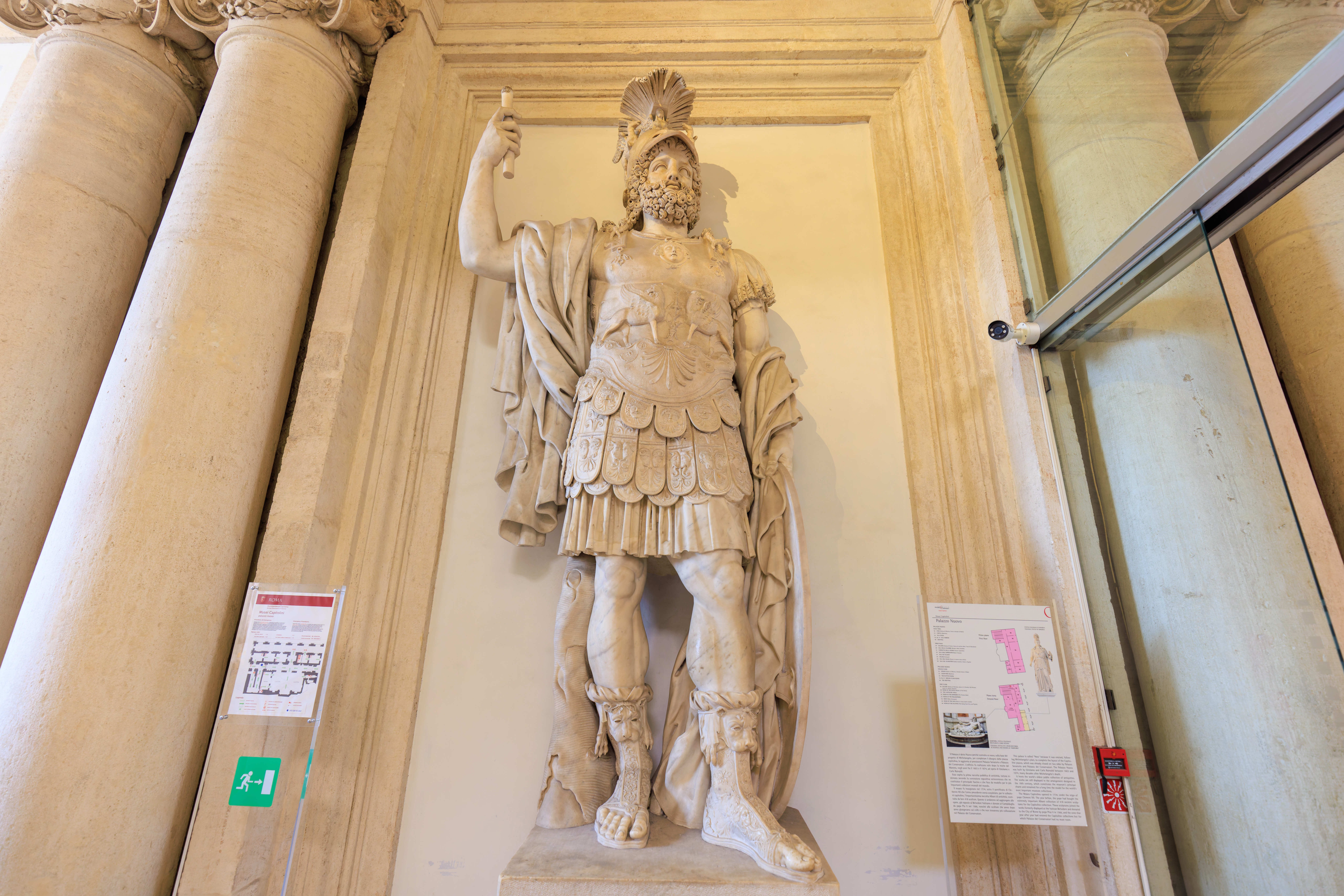
We ended up at this large sculpture at the bottom of the stairs that lead up to the next level. The sign here provides a brief history of the Palazzo Nuovo, the building we are in:
Palazzo Nuovo
This palace is called "New" because it was erected, following Michelangelo's plan, to complete the layout of the Capitoline piazza, which was already closed on two sides by Palazzo Senatorio and Palazzo dei Conservatori. The Palazzo Nuovo was built by Girolamo and Carlo Rainaldi between 1603 and 1674, many decades after Michelangelo's death.
It hosts the world's oldest public collection of antiquities. The works are still displayed in the arrangement designed in the 18th century, which constitutes the museum's principal charm and remained for a long time the model for the world's most important museum collections.
The Museo Capitolino opened in 1734, under the reign of Pope Clement XII. The year before, the pope had bought the extremely important Albani collection of 418 ancient sculp- tures for the Capitoline collection. These sculptures joined the works formerly displayed at the Vatican Belvedere and donated to the City of Rome by pope Pius V in 1566, and the ones that year after year had entered the Capitoline collections but for which Palazzo dei Conservatori had no more room.

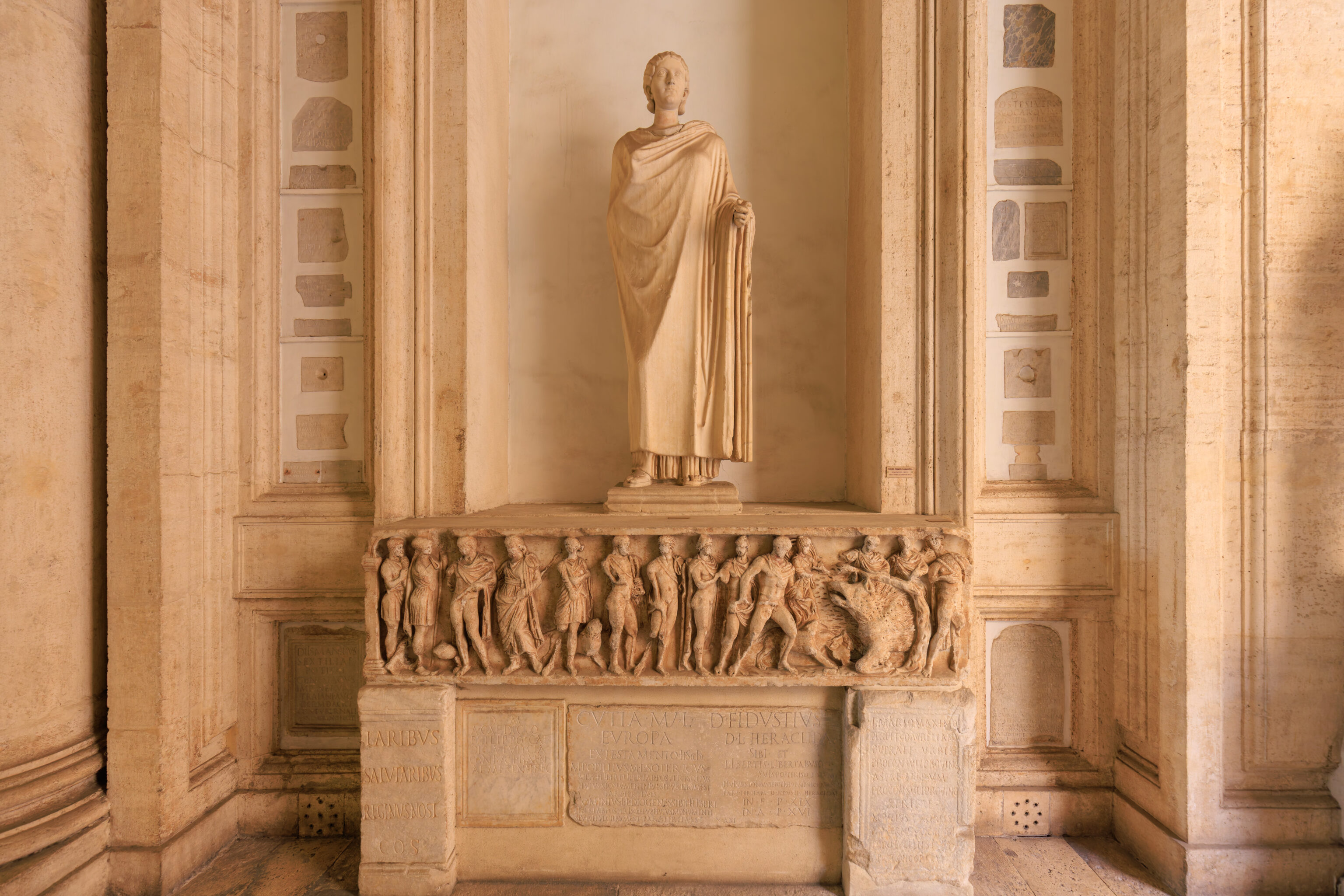
The hallway that we are in is the Atrium:
Palazzo Nuovo
Atrium
The atrium of the Museo Nuovo contains many very fine sculptures that gradually entered the city's collections from the 16th century on.
The architectural space is embellished with niches, false doors and columns set against the walls. Two large ornamental conch shells set at the ends of the vaulted ceiling complete the scenographic decoration. One of the most interesting sculptures is the so-called Pyrrhus [52 02], a colossal statue that actually represents Mars in military garb. It came from the Forum Transitorium and may be a copy made in the Flavian era of the original cult statue in the temple of Mars Ultor (the Avenger) in the nearby Forum of Augustus. Another is the statue of Minerva [52 11], which followed models inspired by Phidias's Athena Parthenos, from the fifth century B.C. This statue, likewise of colossal size, was brought to Capitol Hill during the papacy of Paul Ill (1534-1549). At first it was installed in the niche in the outside staircase of the Palazzo Senatorio; later on it was replaced by the porphyry Minerva that still stands there. Also especially worth noting are the statue of the emperor Hadrian, depicted in his role as Pontifex Maximus [52 15], with his head veiled; and the one of Faustina the Elder, shown with the attributes of the goddess Fortune [52 23].
Displayed on the walls are a number of Roman inscriptions, most of them from tombs.
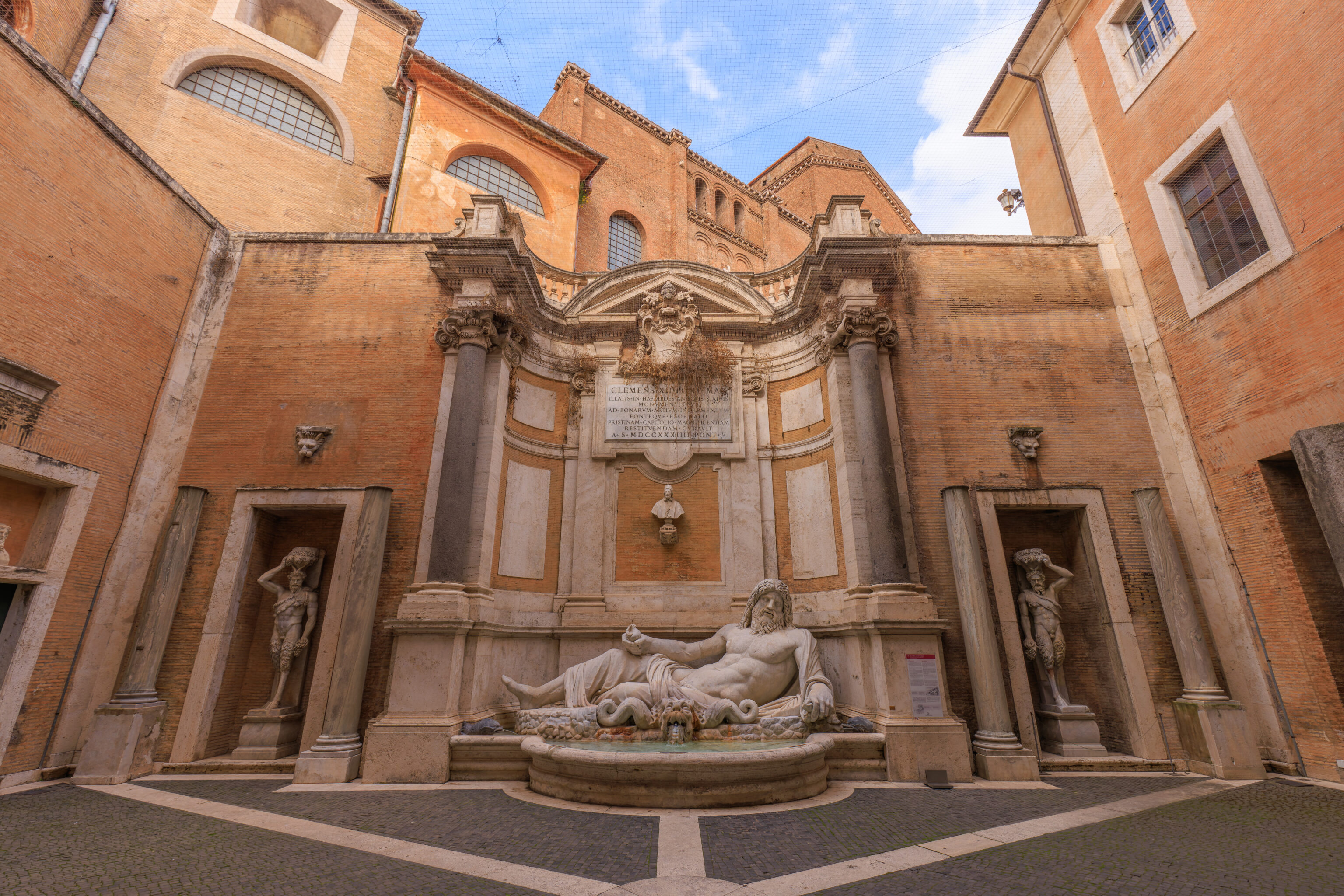
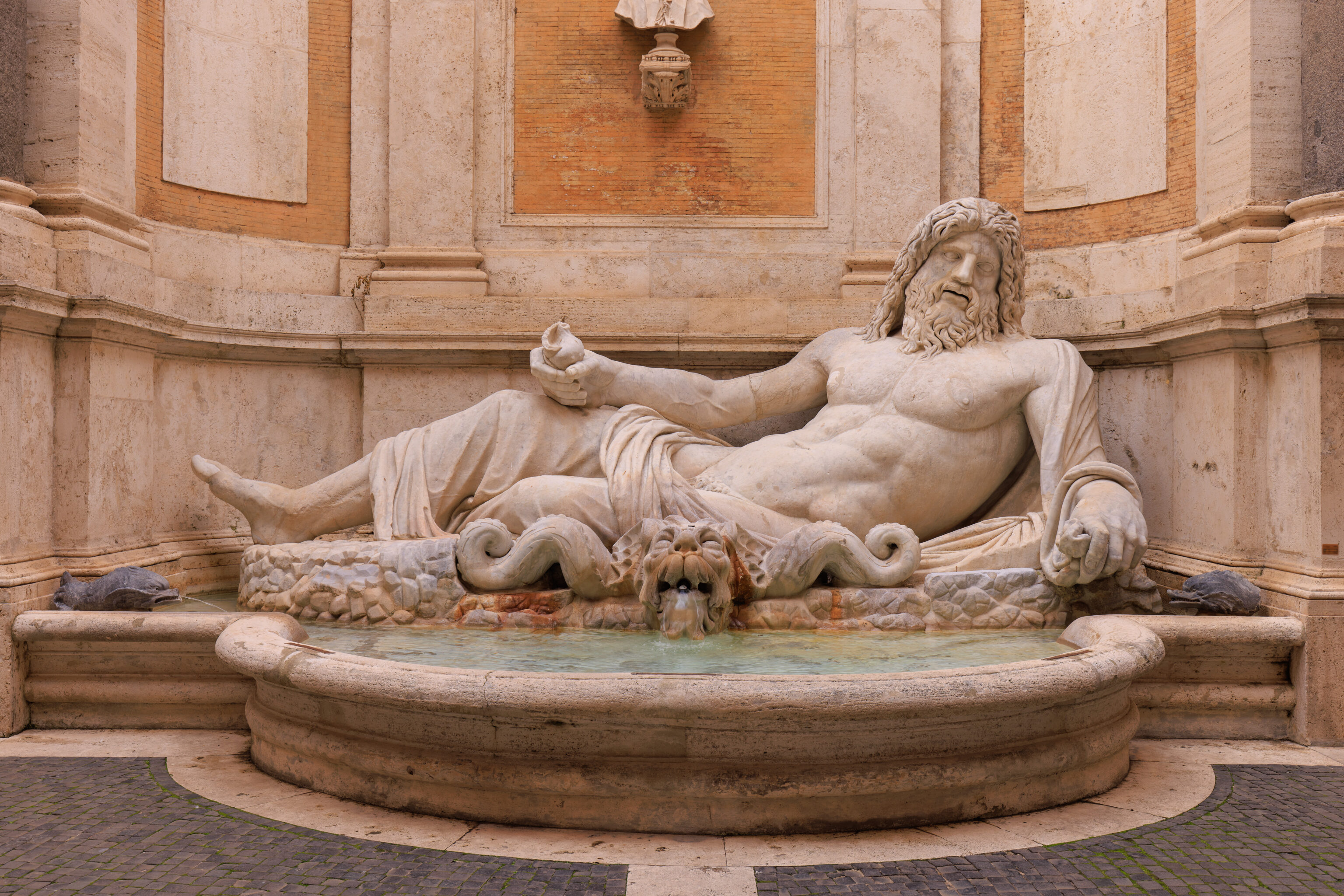
This large sculpture with fountain, placed outdoors in a courtyard, is the Marforio:
Marforio
This huge statue has been known as Marforio since the twelfth century. The name probably derives from its original location, which in medieval times was thought to have been a "Forum of Mars" (Martis Forum), in the area between the Roman Forum and the Imperial Forums.
The statue is more than six meters (nearly twenty feet) long. It probably represents the personification of Ocean, the god who reigned over all the world's waters, and dates from the second or third century A.D.
The statue was moved to Piazza del Campidoglio in 1592. Here it was given a new function as part of a fountain in an architectural setting designed by Giacomo Della Porta.
For centuries, Marforio was a "talking statue," like Pasquino, Madama Lucrezia and Abate Luigi, ancient sculptures on which discontented citizens used to post anonymous complaints or invectives against the authorities. (Pasquino was the most famous of the lot.)
When the Palazzo Nuovo was built, the Marforio Fountain became a feature of the courtyard of the newest palace on the Capitoline Hill (1644). When this building was transformed into the Capitoline Museum (1733), the fountain and the architectural perspective were revised by architect Filippo Barigioni, and the statue of Marforio was restored once again, this time by the Roman sculptor Carlo Antonio Napolioni.
Between September 2012 and February 2013, the ancient statue and the fountain, with its water supply and original water features, were restored. The fountain is now fully functional once again.
The restoration project was funded by Swarovski as part of its commitment to Art.
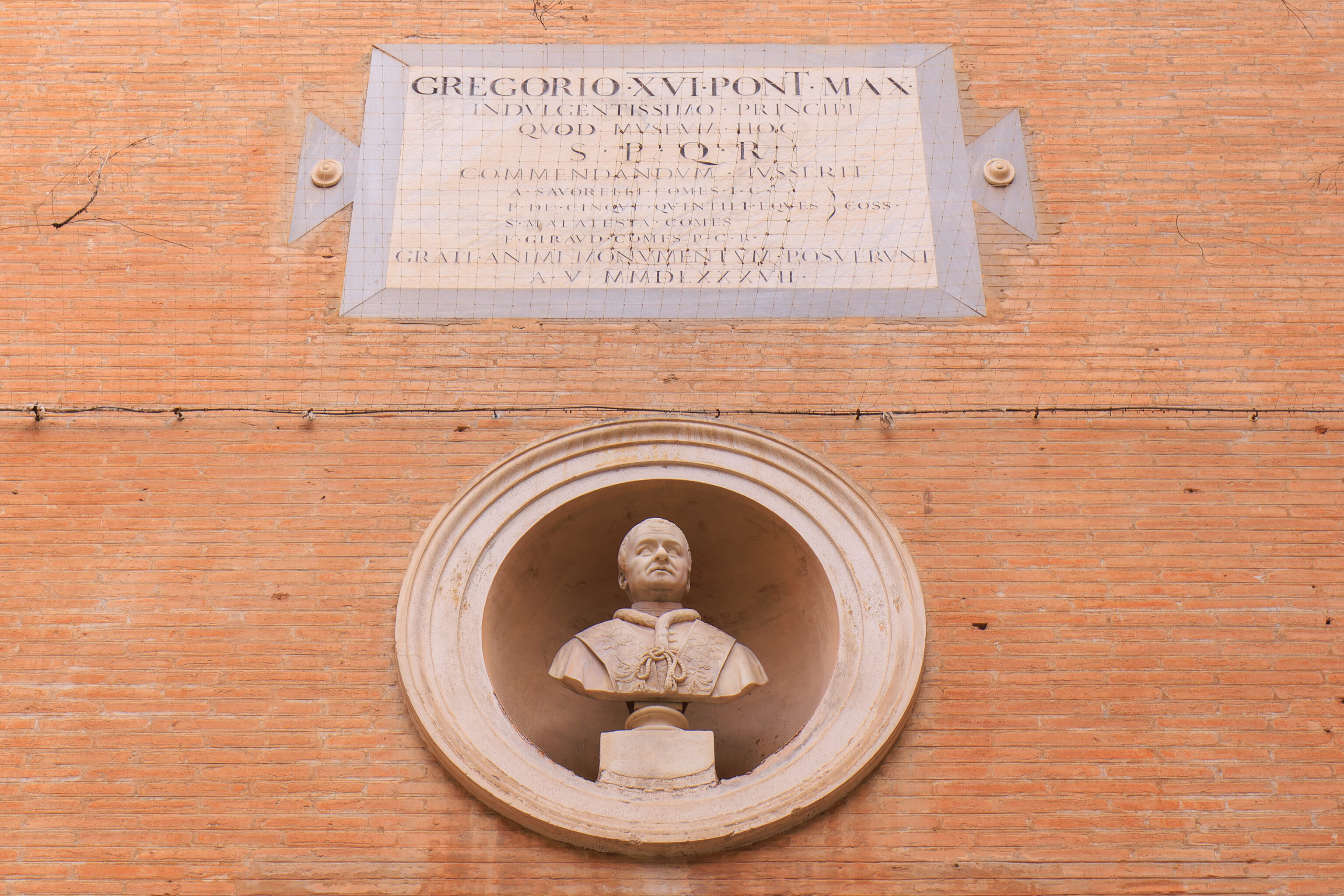
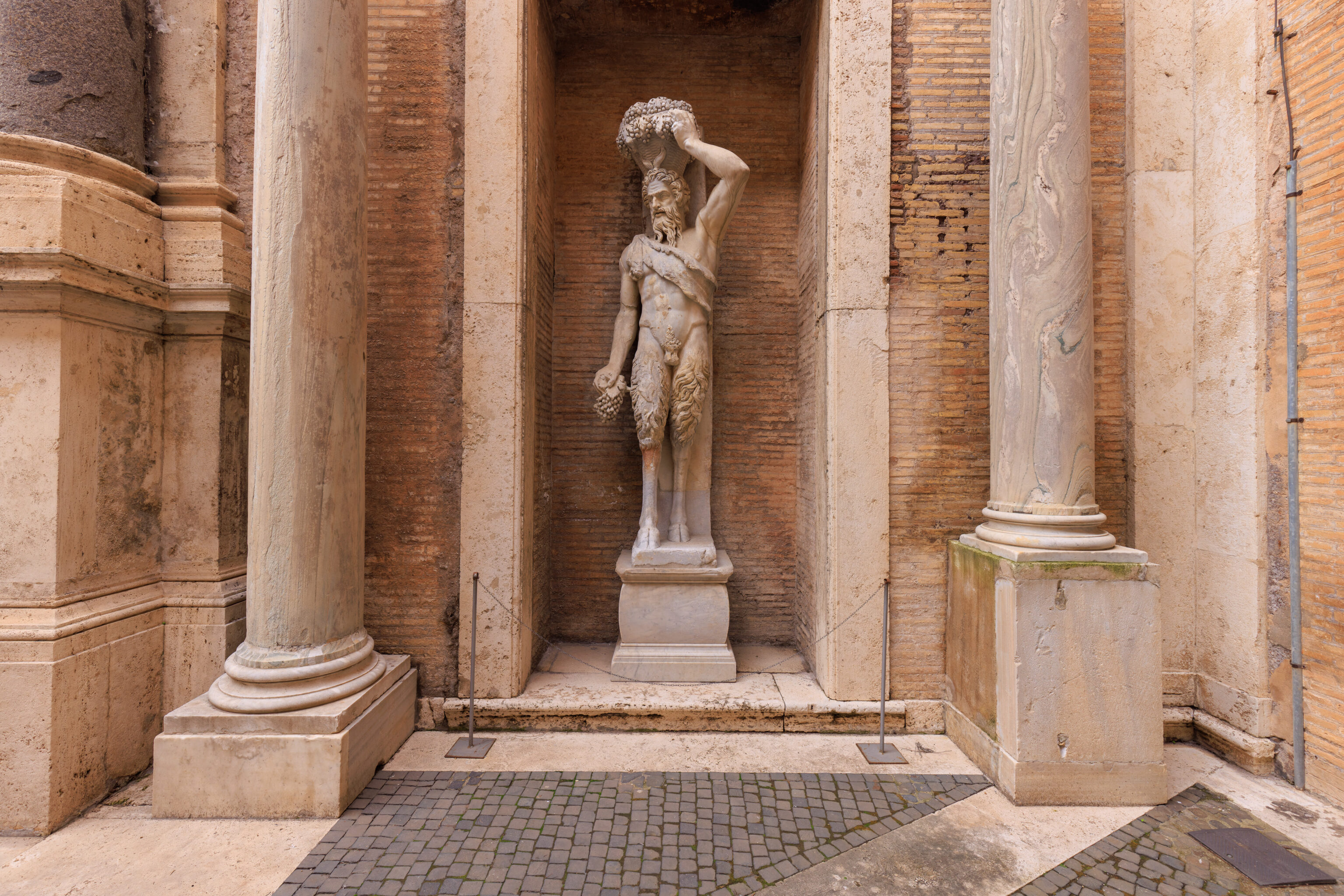
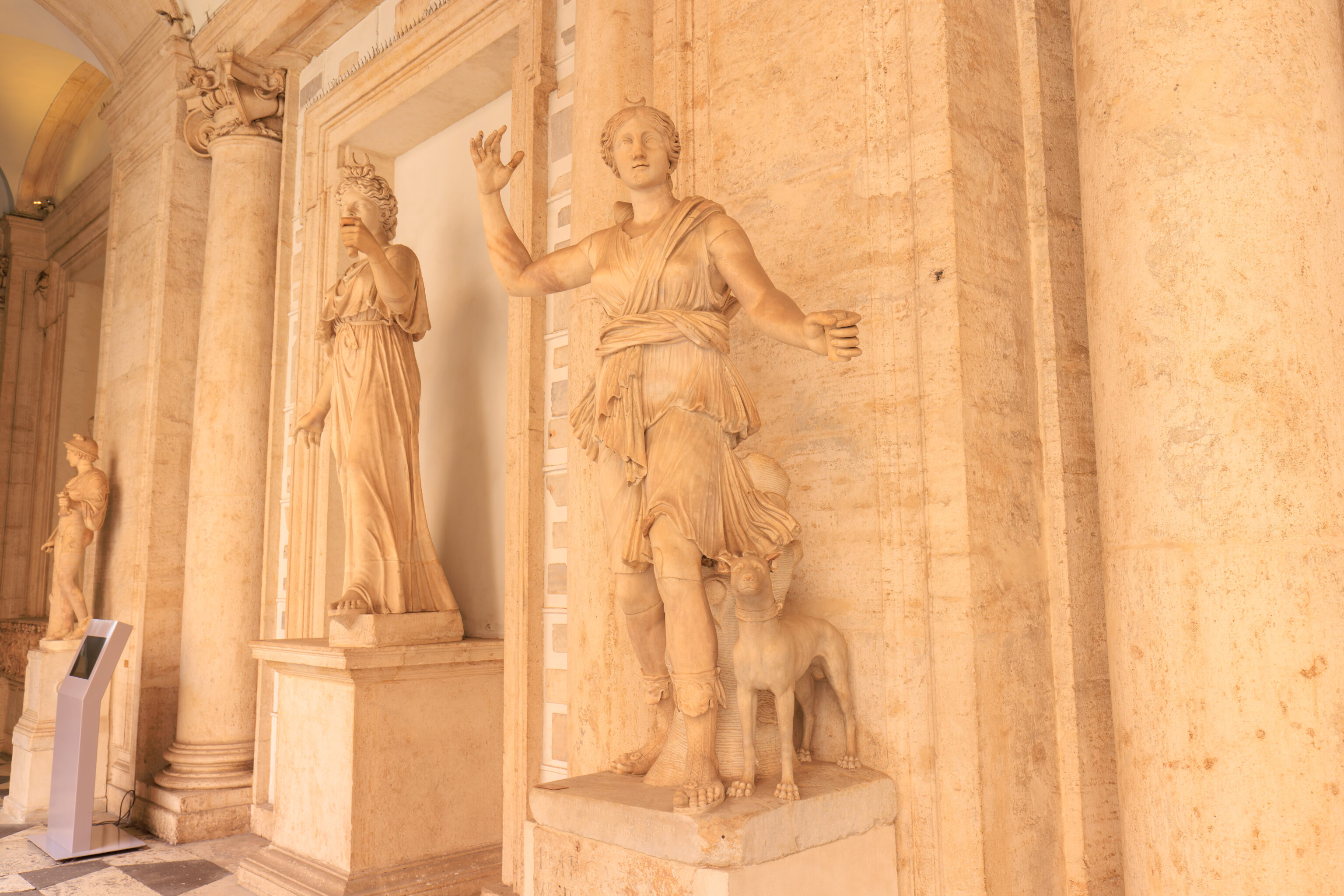
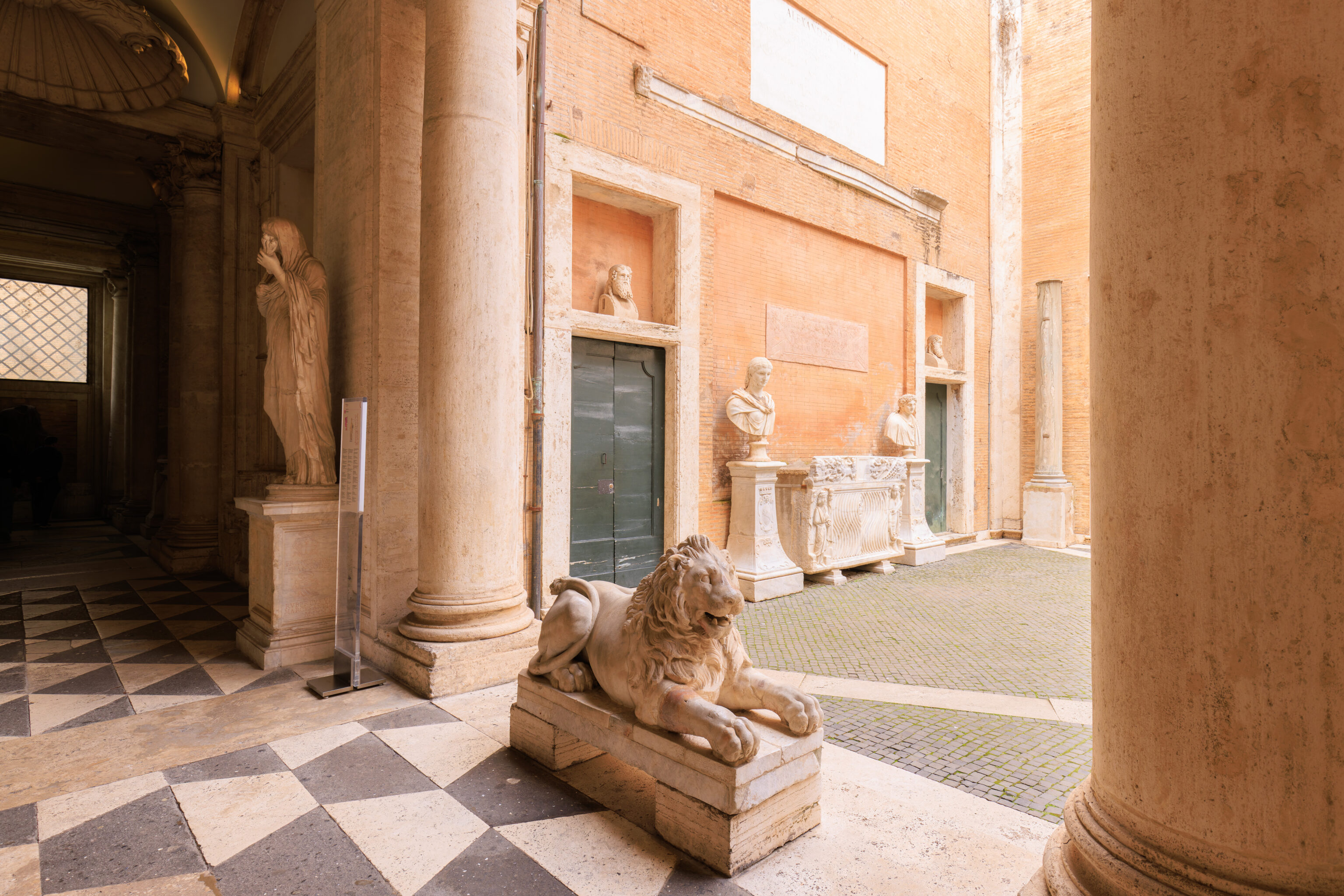
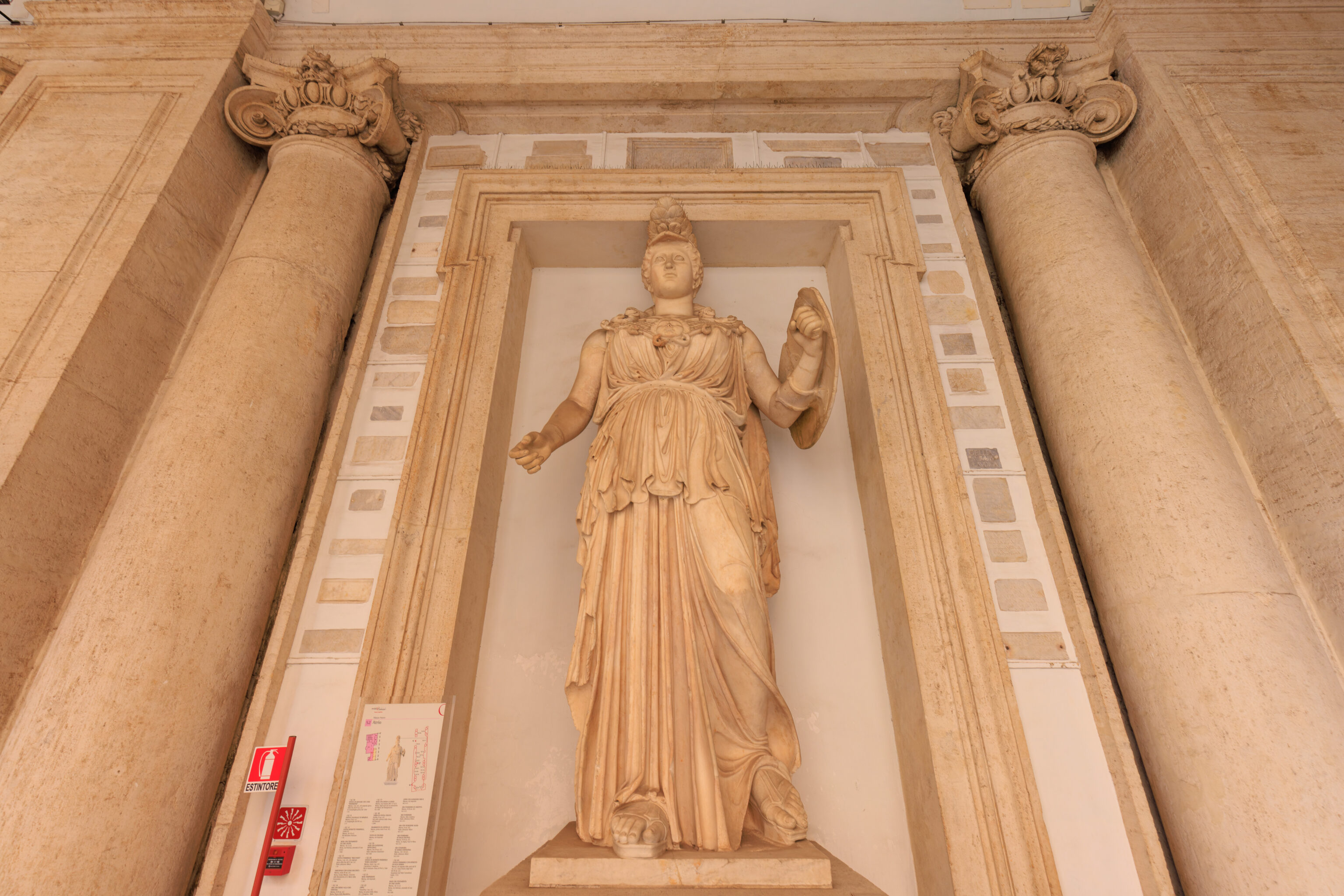
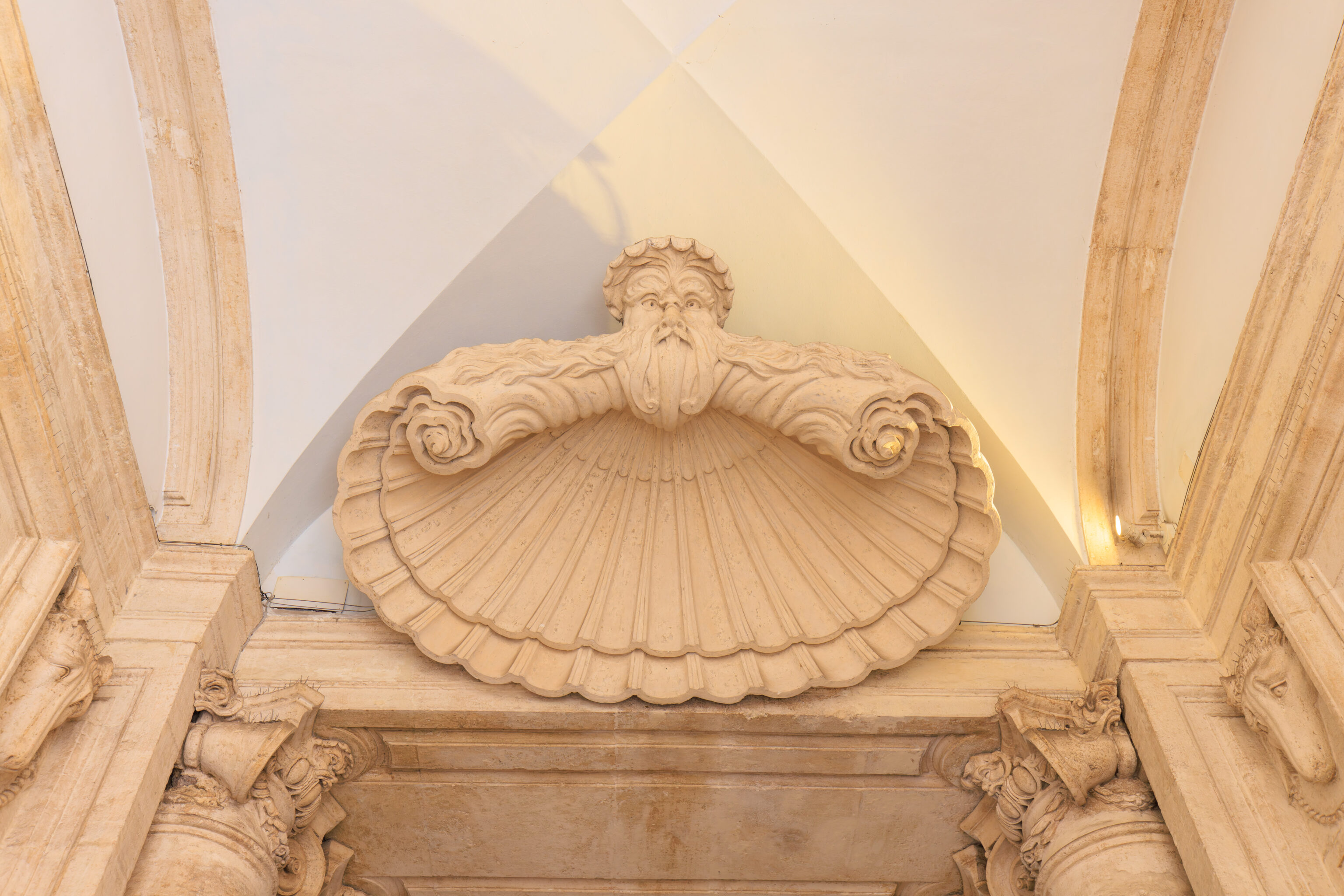
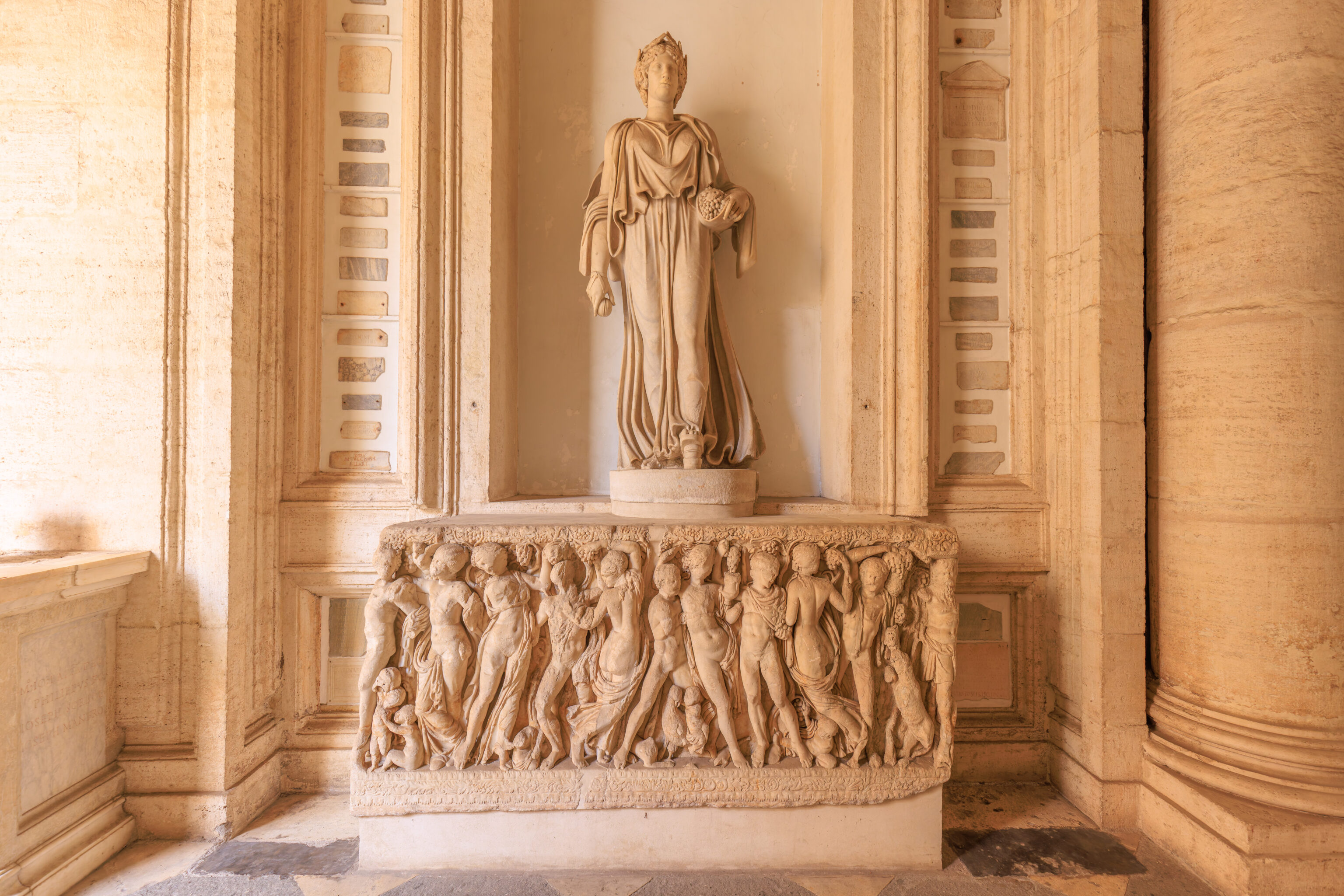
Just a sampling of the fine sculptures in this area of the museum.
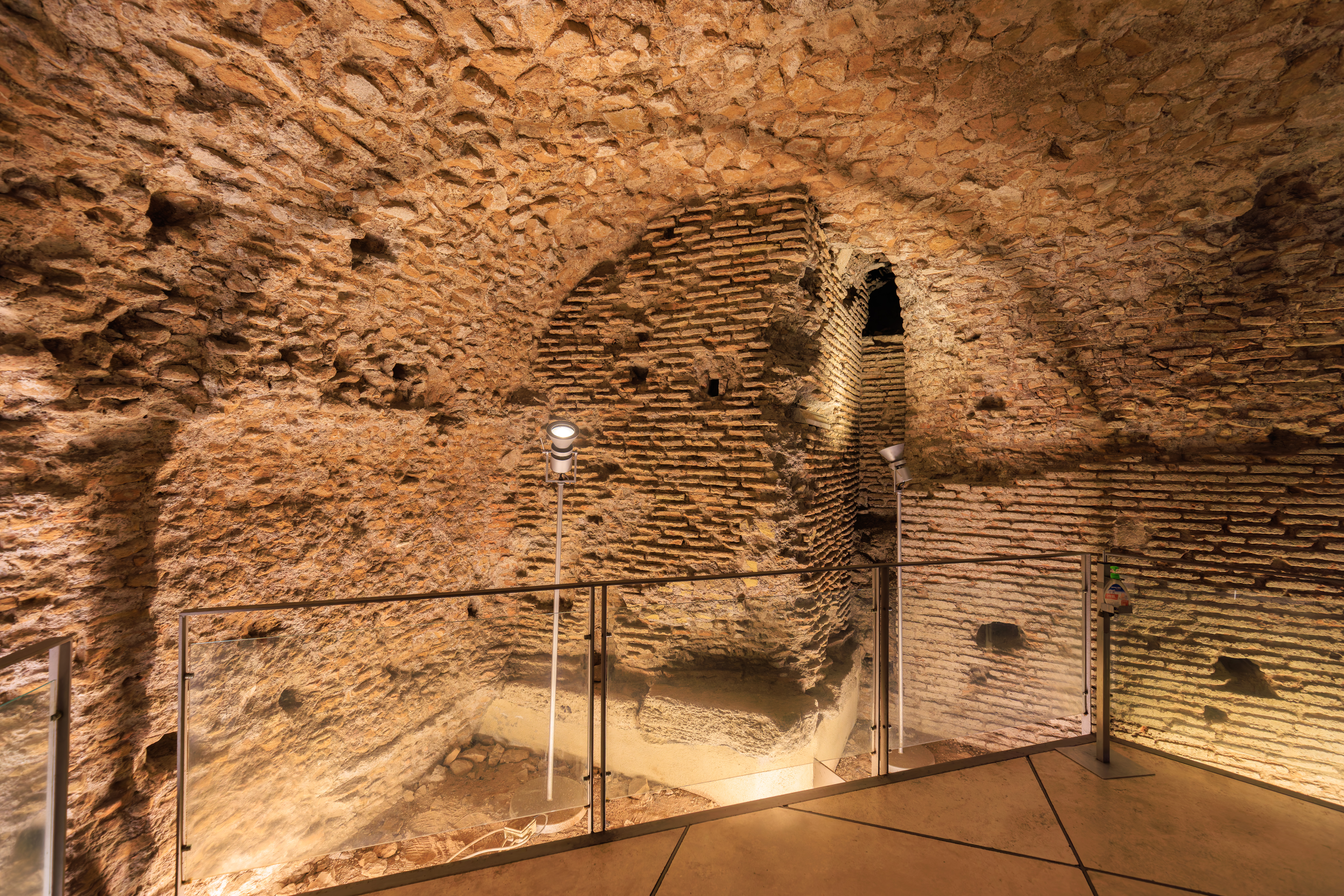
This interesting area is described as the Grottino:
THE GROTTINO - The Grottino (little cave) is a masonry structure that extends beneath the retaining wall that supports the church of Santa Maria in Aracoeli. It was partly destroyed in the 17th century to make way for the construction of the Palazzo Nuovo. Vestiges of its ancient Roman and medieval walls have been brought to light, as has a tunnel (likewise partly obliterated by the new building).
The tunnel was probably part of a drainage system; it dates from the Roman Republican period and had been dug through the tuff that constitutes the Capitoline Hill. It was roofed "a cappuccina", i.e., with double-pitched tiles (see drawing below, letter B); its surviving portion runs under the machine room of the present-day elevator.
Above the tunnel was a room whose concrete (opus caementicium) vault was supported by walls and relatively regular and uniform brick piers erected in Roman times. Traces of mortar and of a layer of coarse plaster are still visible on the walls, whose original brick facing has partly disappeared. Above the vault, corresponding to the level of the first floor of the Palazzo Nuovo, where the Museo Capitolino's Gallery is, are the remains of a carefully made floor laid in a herringbone pattern (opus spicatum). The room above this floor must have been quite large, and may have been located below a structure that contained a large amount of water (possibly a cistern).
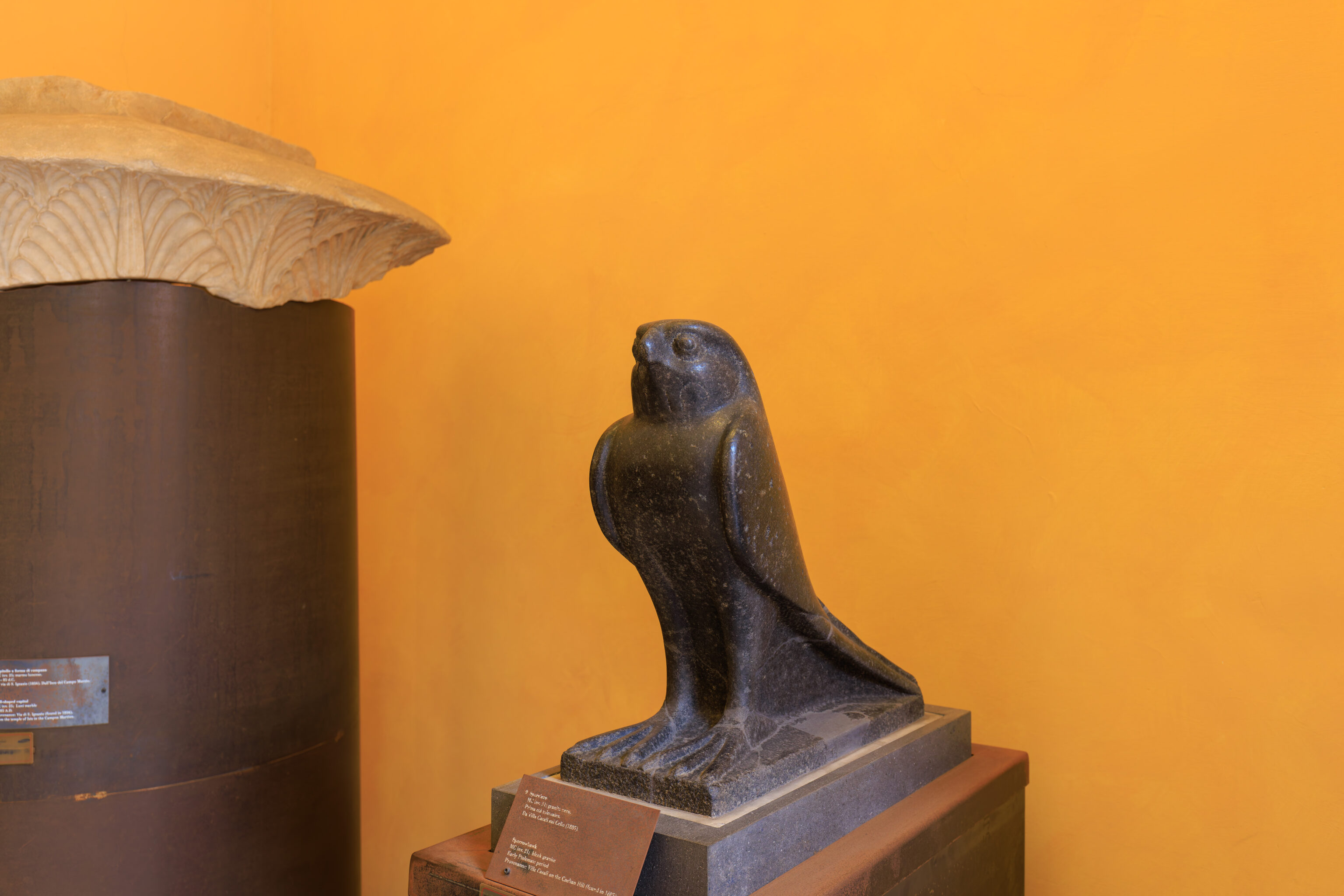
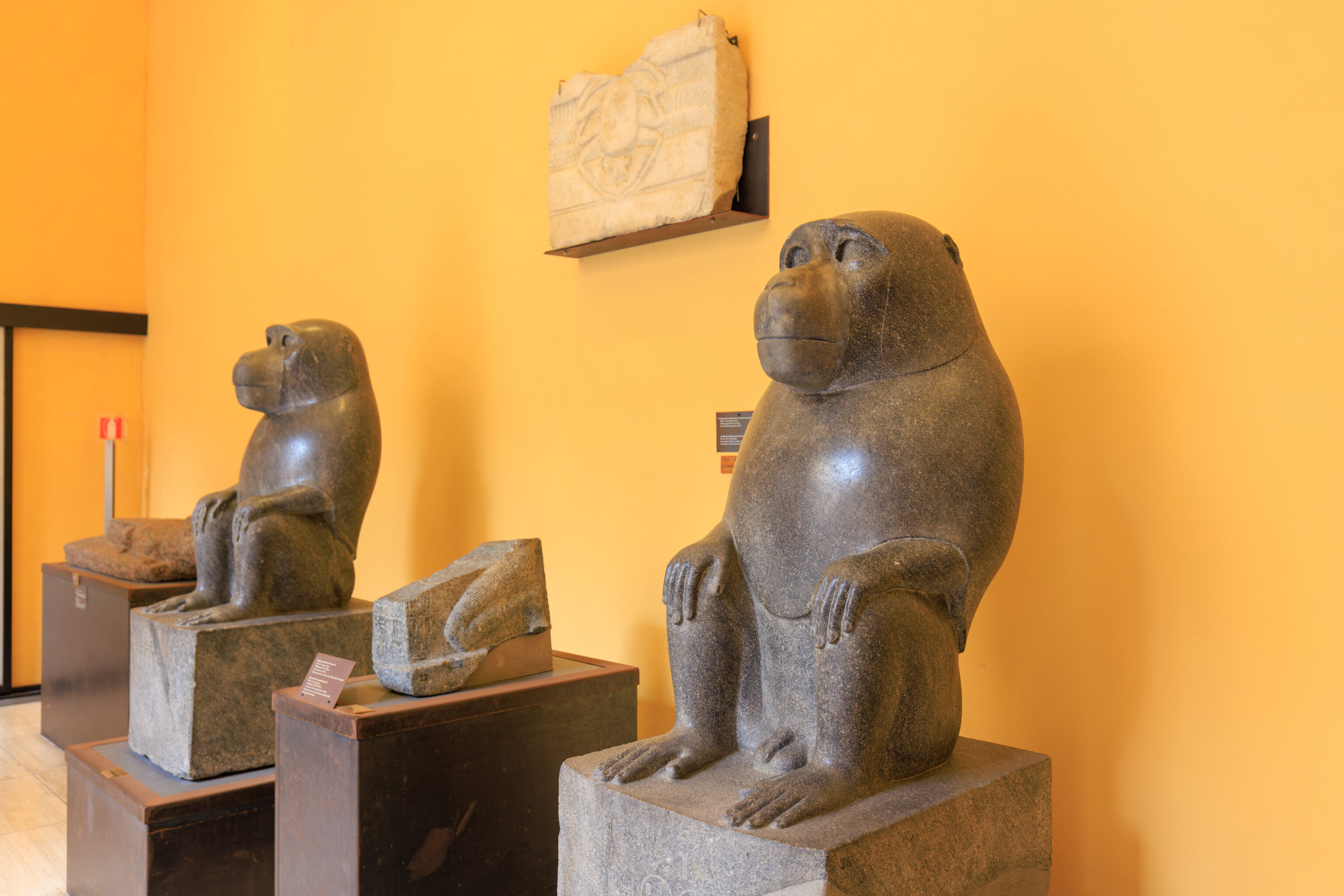
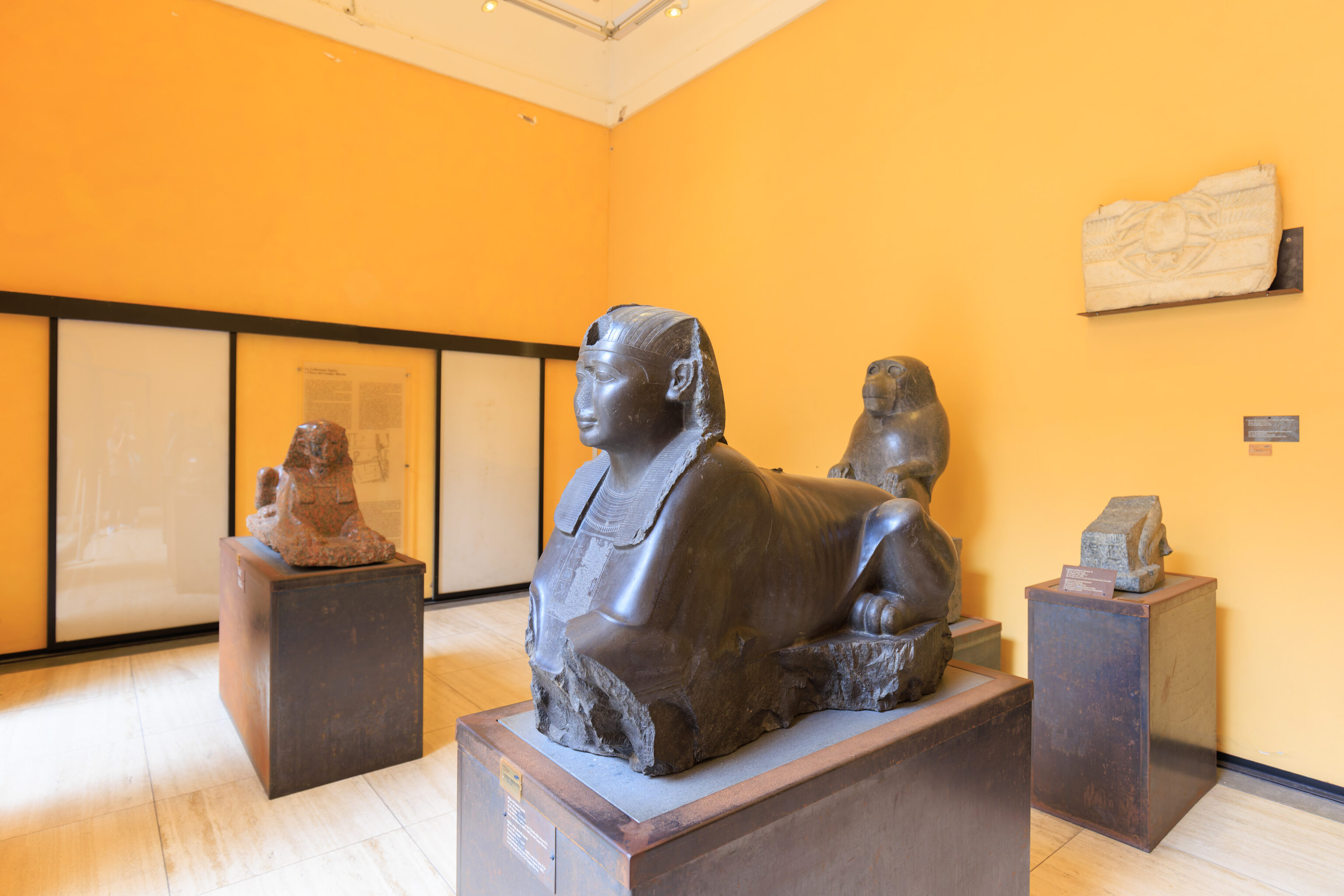
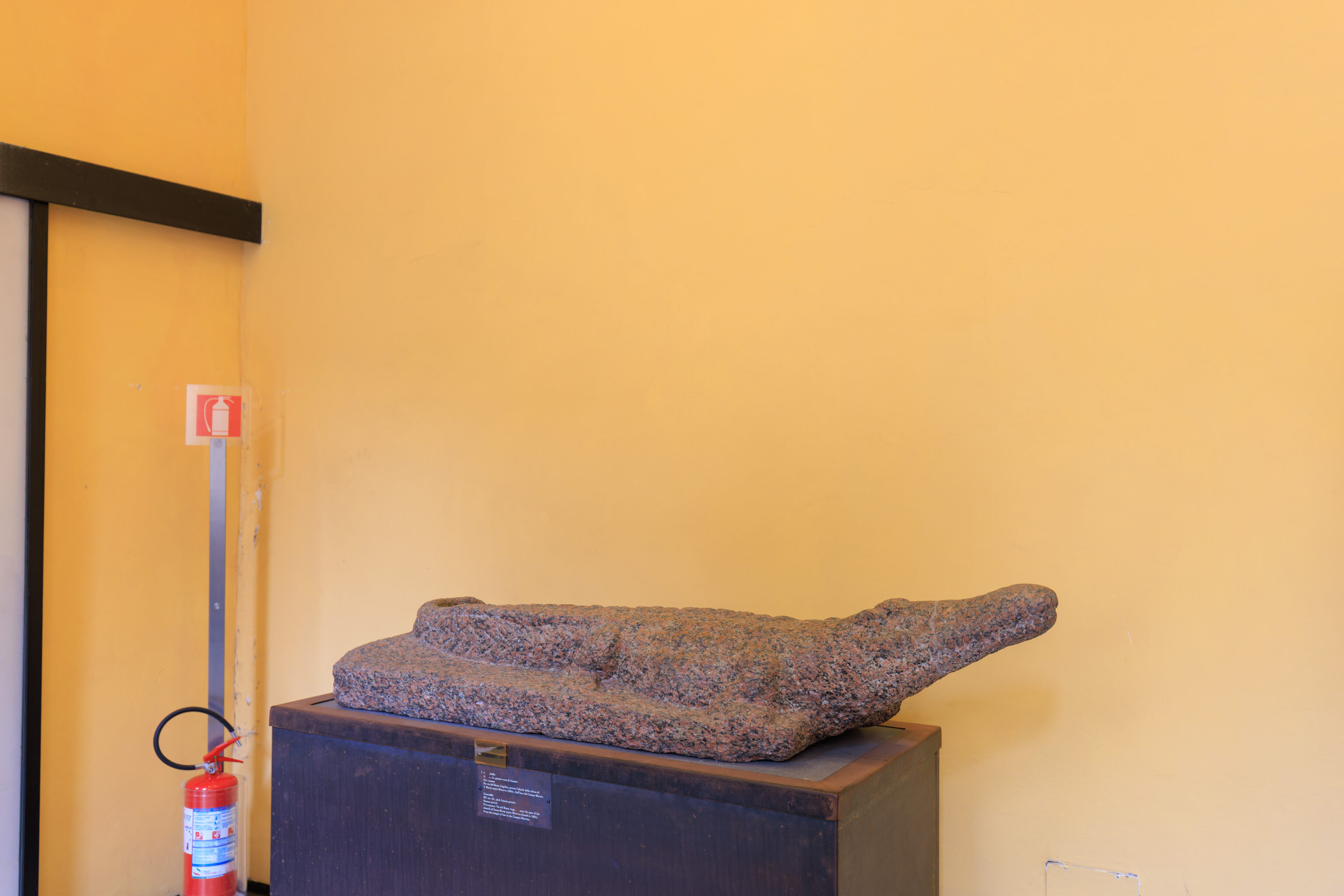
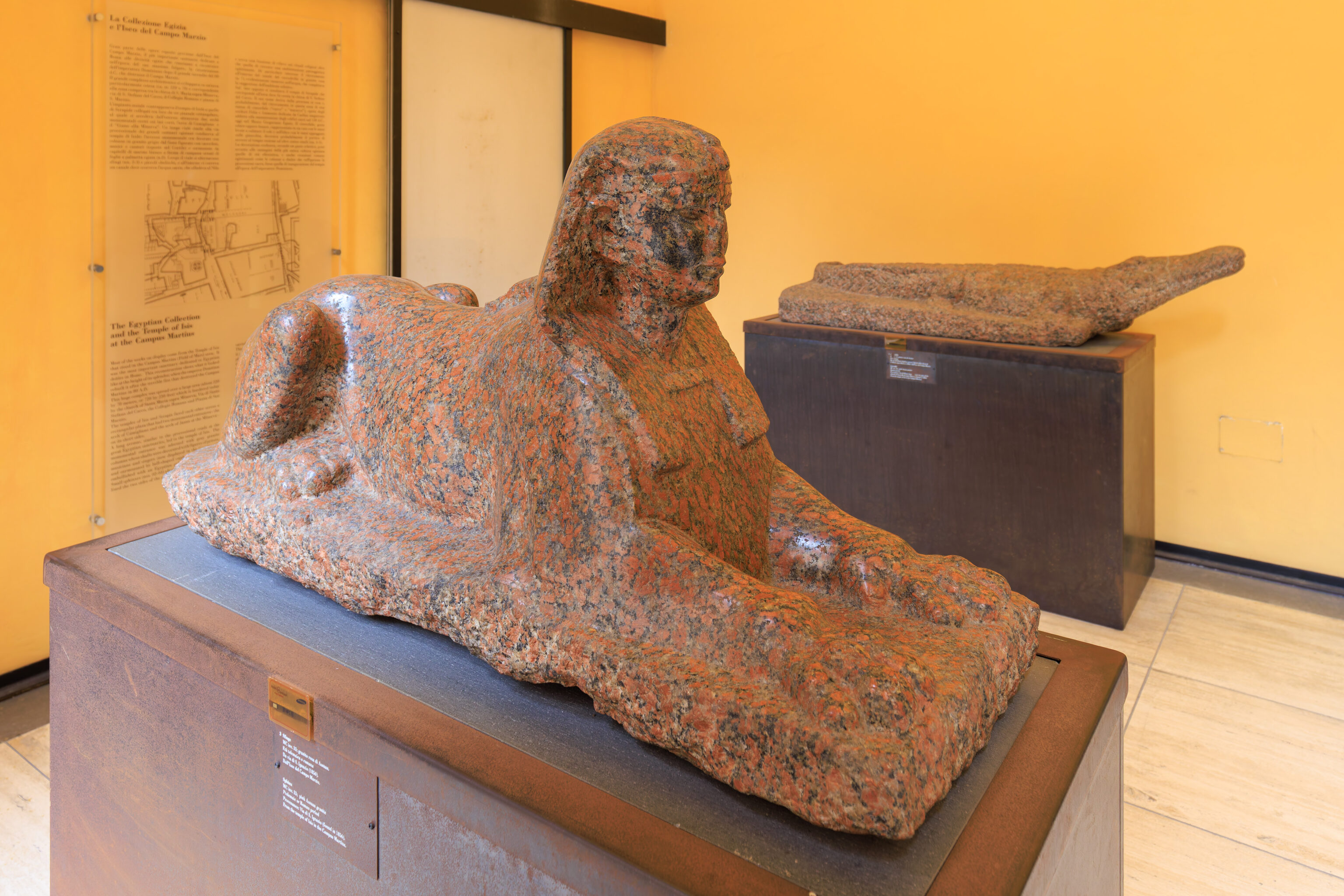
A small room next to the Marforio houses some Egyptian themed artifacts:
Palazzo Nuovo
The Egyptian Room
Most of the Egyptian antiquities now in the Capitoline Museums came from excavations conducted in 1883 in the area of the Temple of Isis and Serapis in the Campus Martius (Iseum Campense). Destroyed in the terrible fire of 80 A.D., the sanctuary was rebuilt by the emperor Domitian. One of the finest pieces found there is the sphinx carved in red Aswan marble with the facial features of Domitian [54 03].
The kneeling statue of the pharaoh Ramesses II (Nineteenth Dynasty), who ruled Egypt from 1298 to 1232 B.C., came from excavations along Via Nazionale before the construction of Palazzo delle Esposizioni [54 01].
Most of the works in the Capitoline Museums' Egyptian collection were not made in Egypt. They exemplify the dissemination and assimilation of Egyptian culture in Roman society in the imperial period.
At first the Egyptian sculptures were displayed in various parts of the Museum, but in 1907 archeologist Orazio Marucchi brought them together in this room, which opened directly onto the courtyard of the Palazzo Nuovo. In 1990 the room was closed off with a glass wall and adequately climatized in order to temporarily host the equestrian statue of the emperor Marcus Aurelius, which in 2005 was permanently installed in the new Exedra of the Palazzo dei Conservatori.
Egypt was once part of the Roman Empire. As described on the quoted sign, many of the items on display were actually of Roman origin.
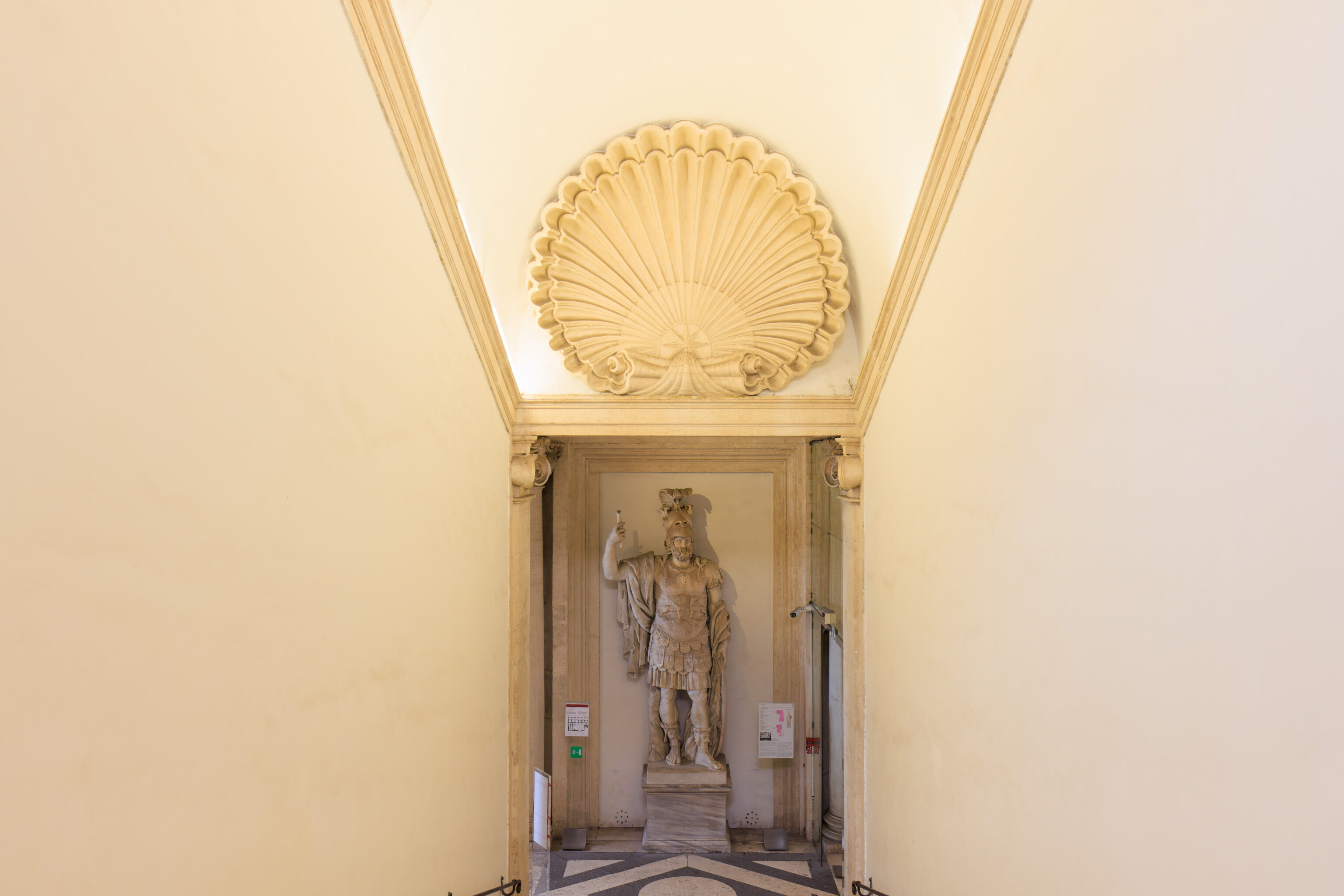
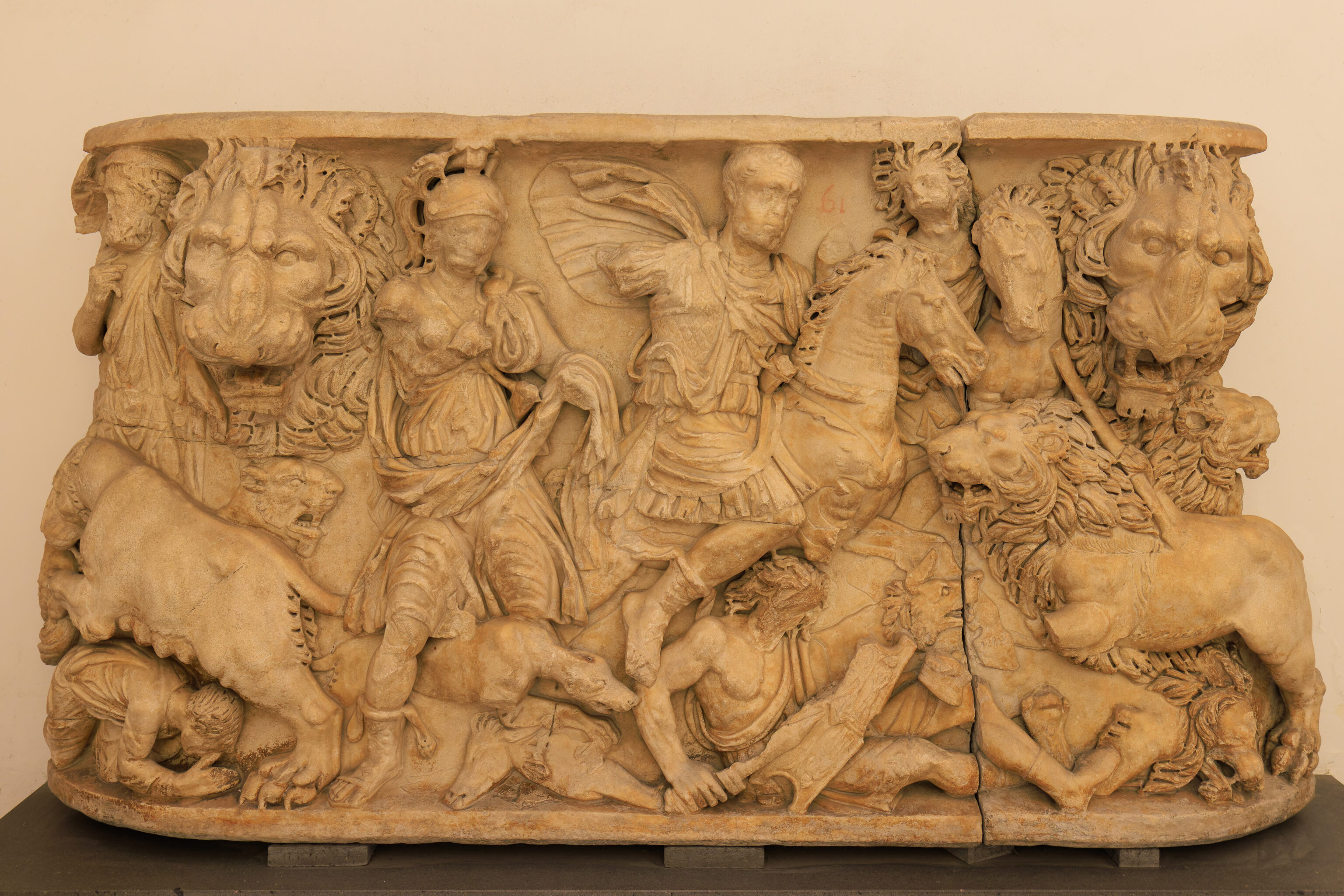
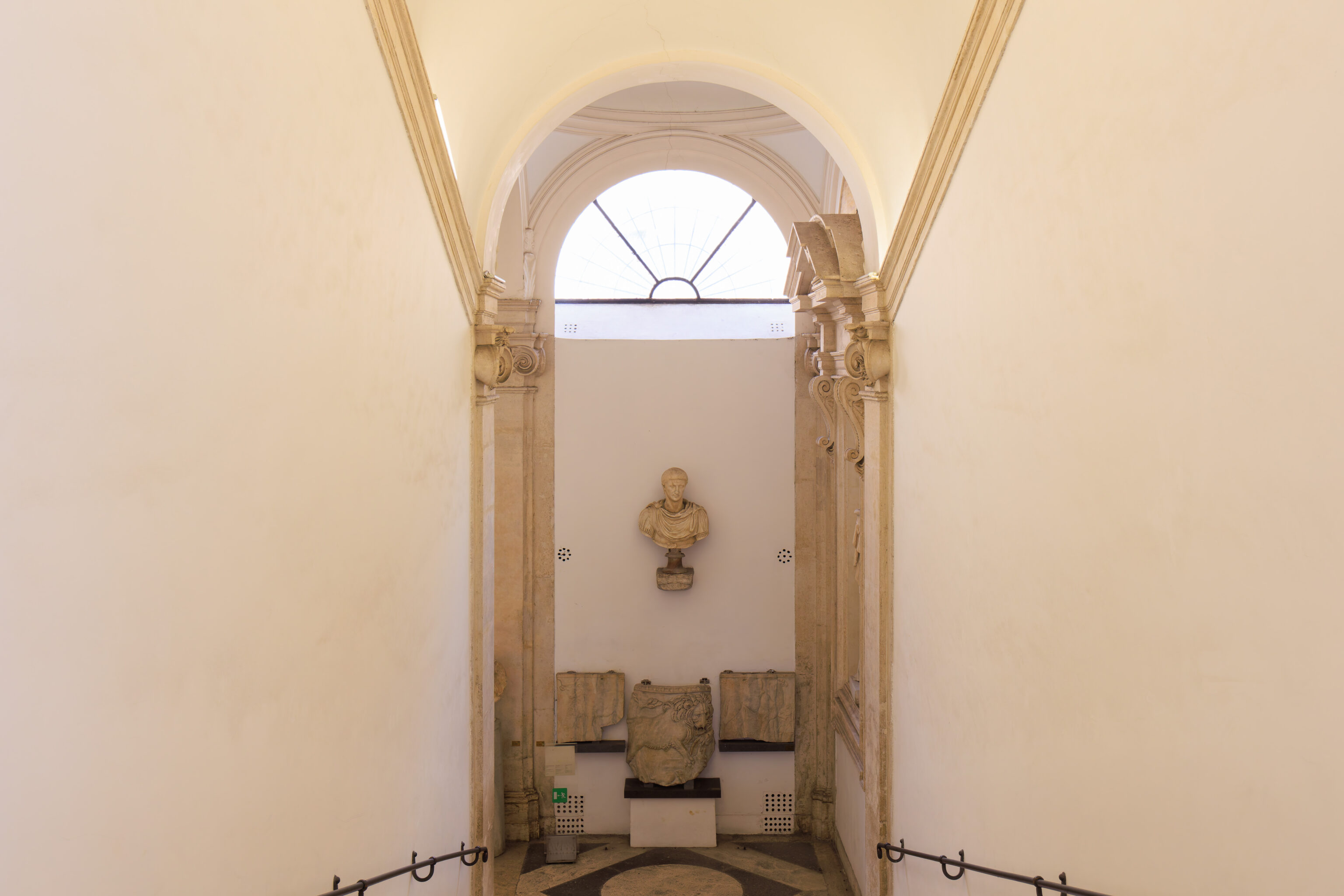
We walked up the stairs to reach the level above. This is the first floor as this is Europe where the ground floor is typically floor zero.
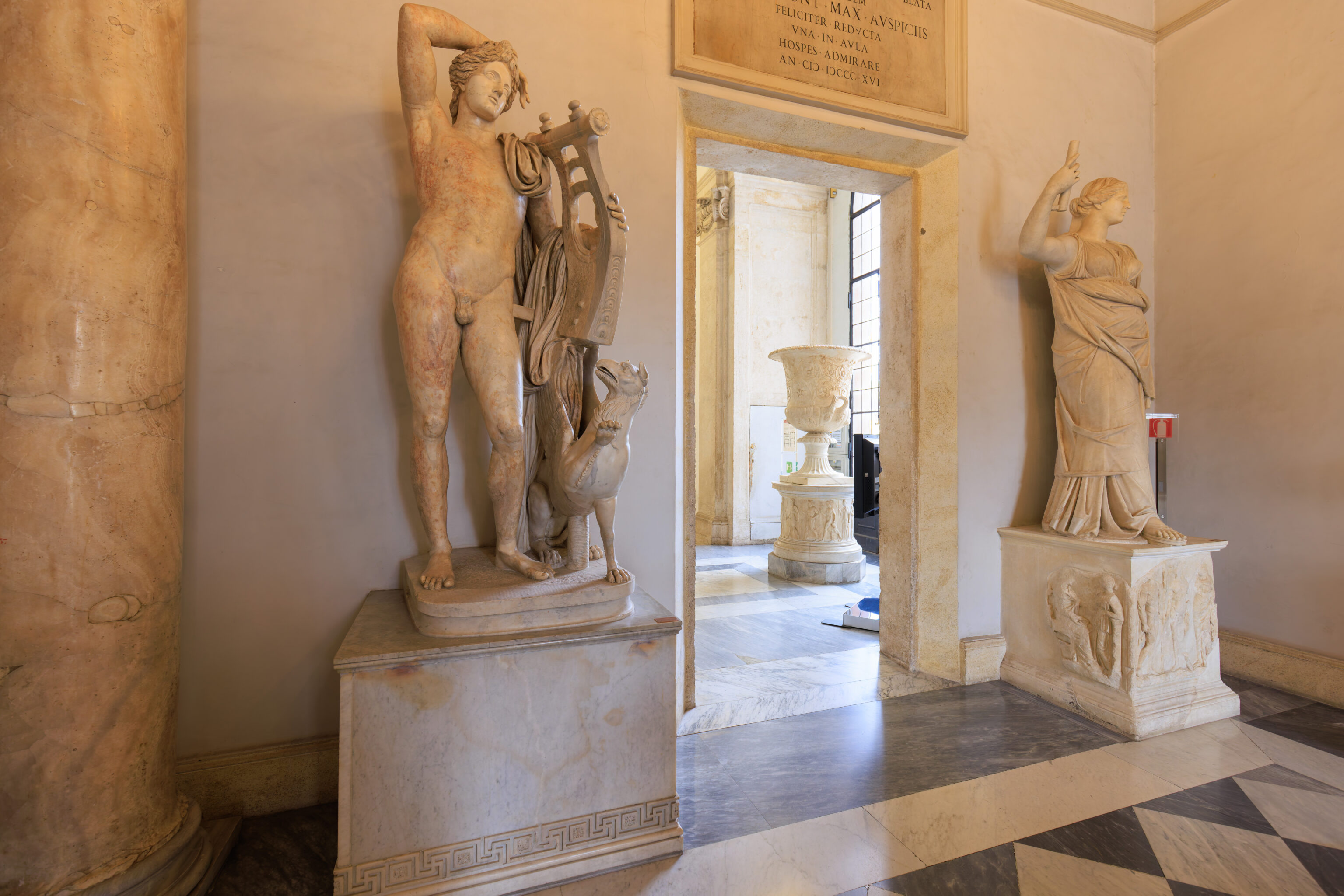
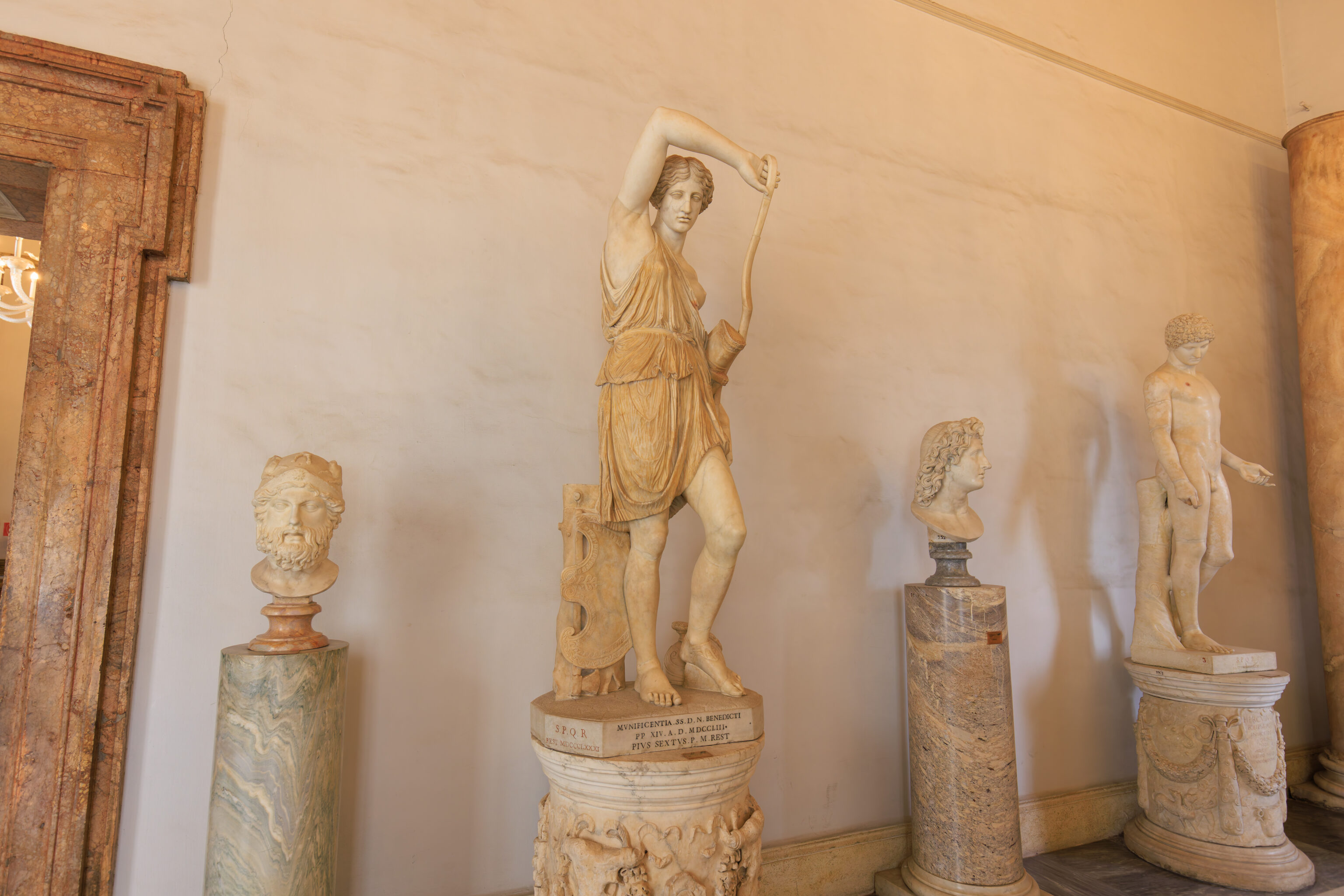
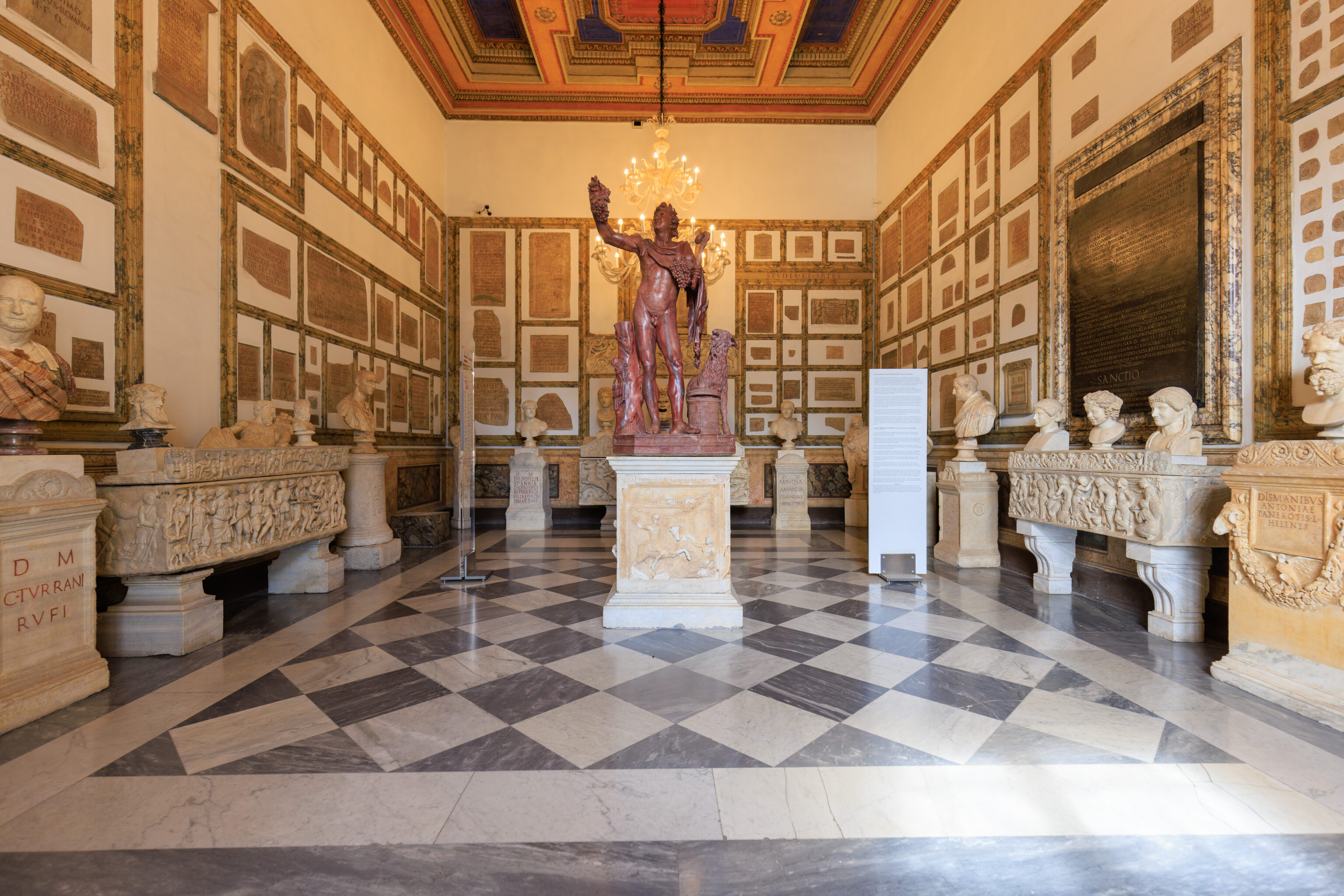
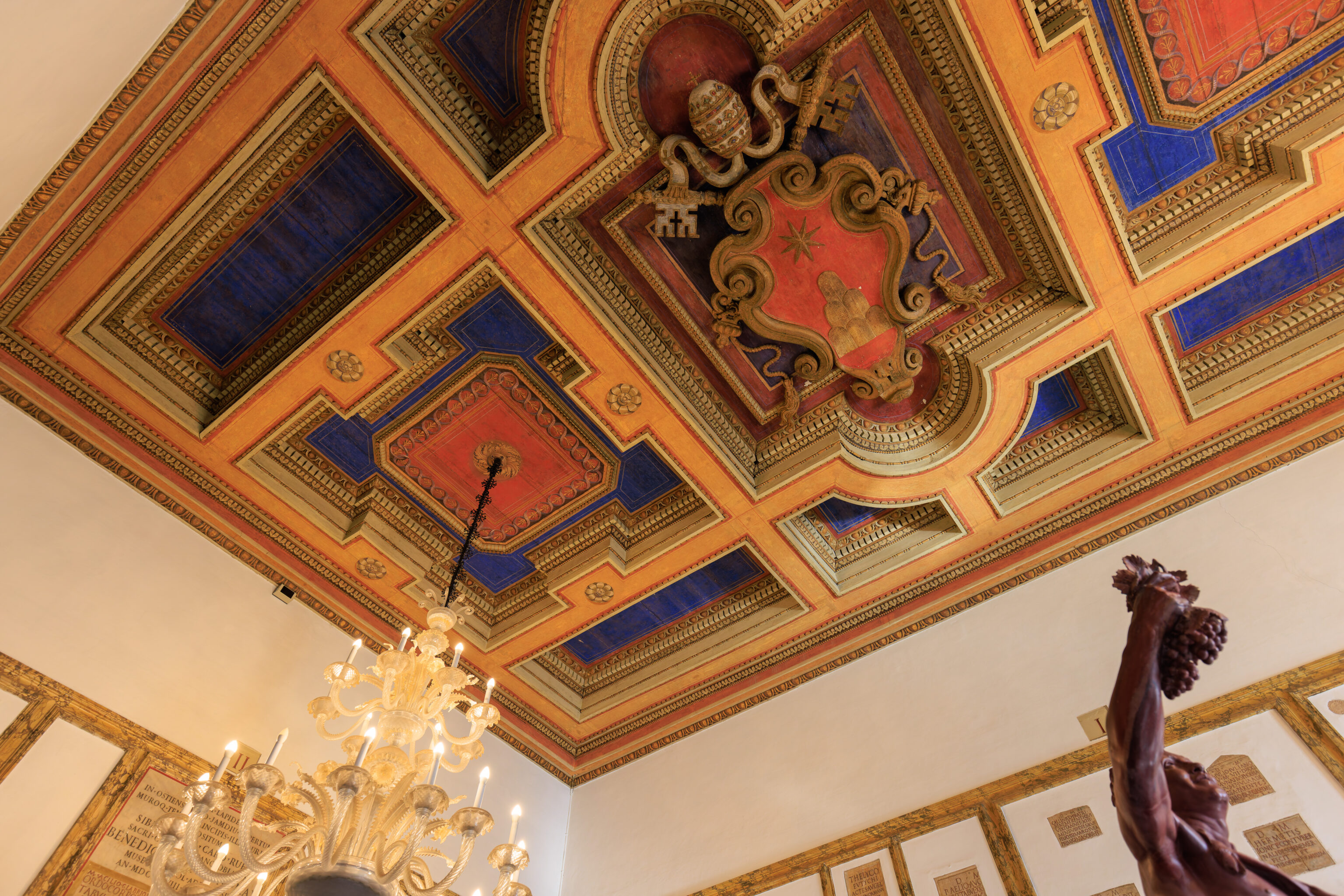
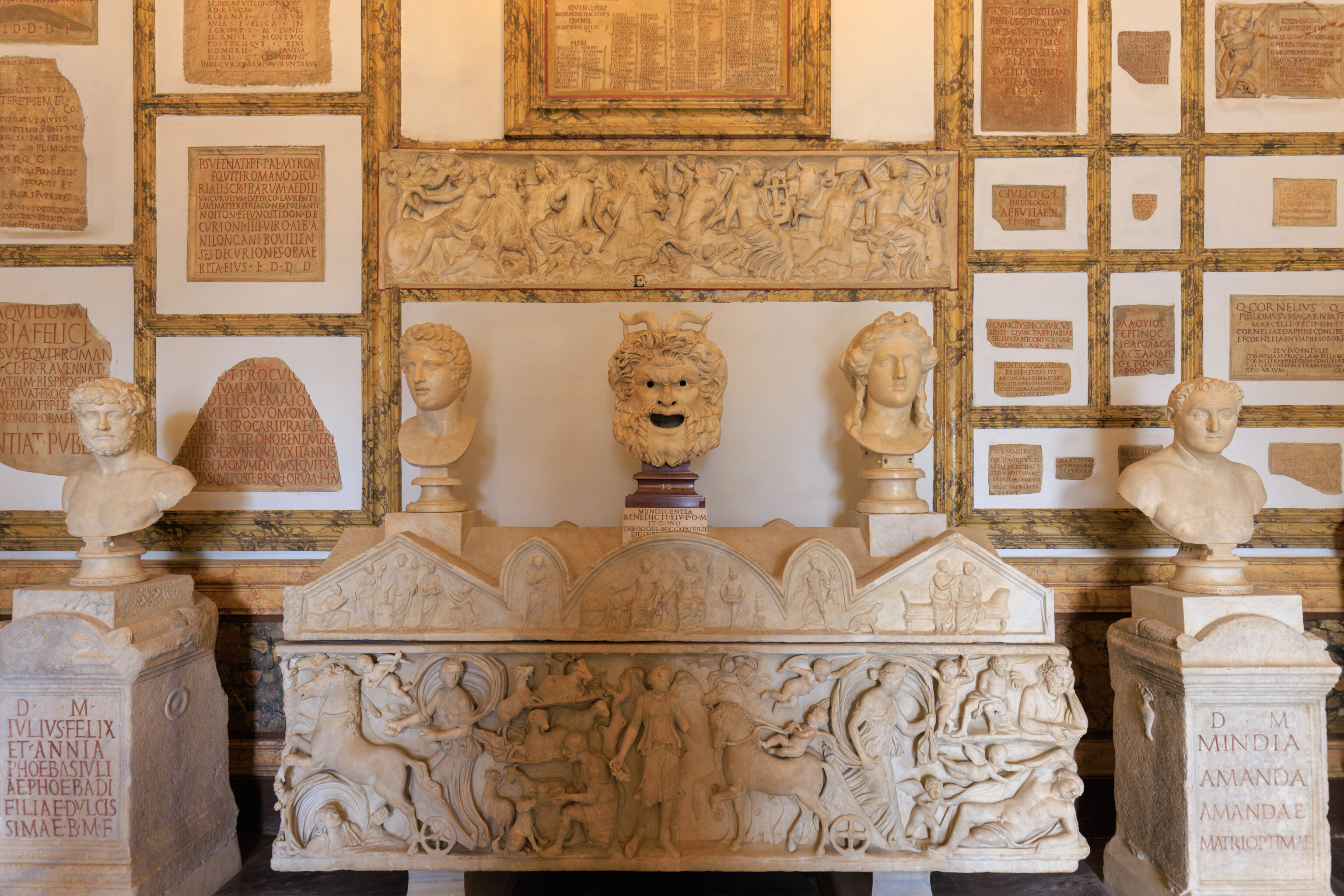
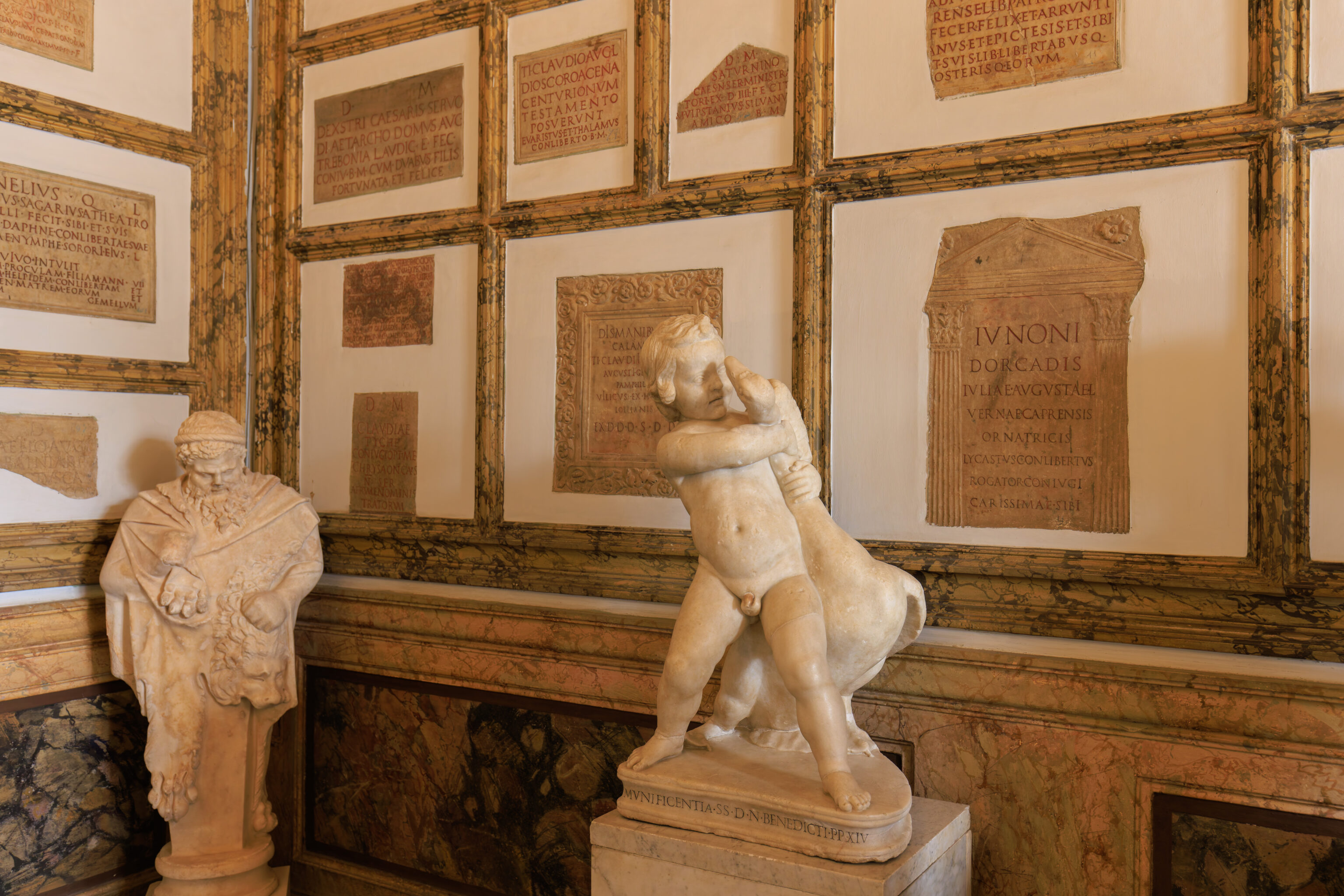
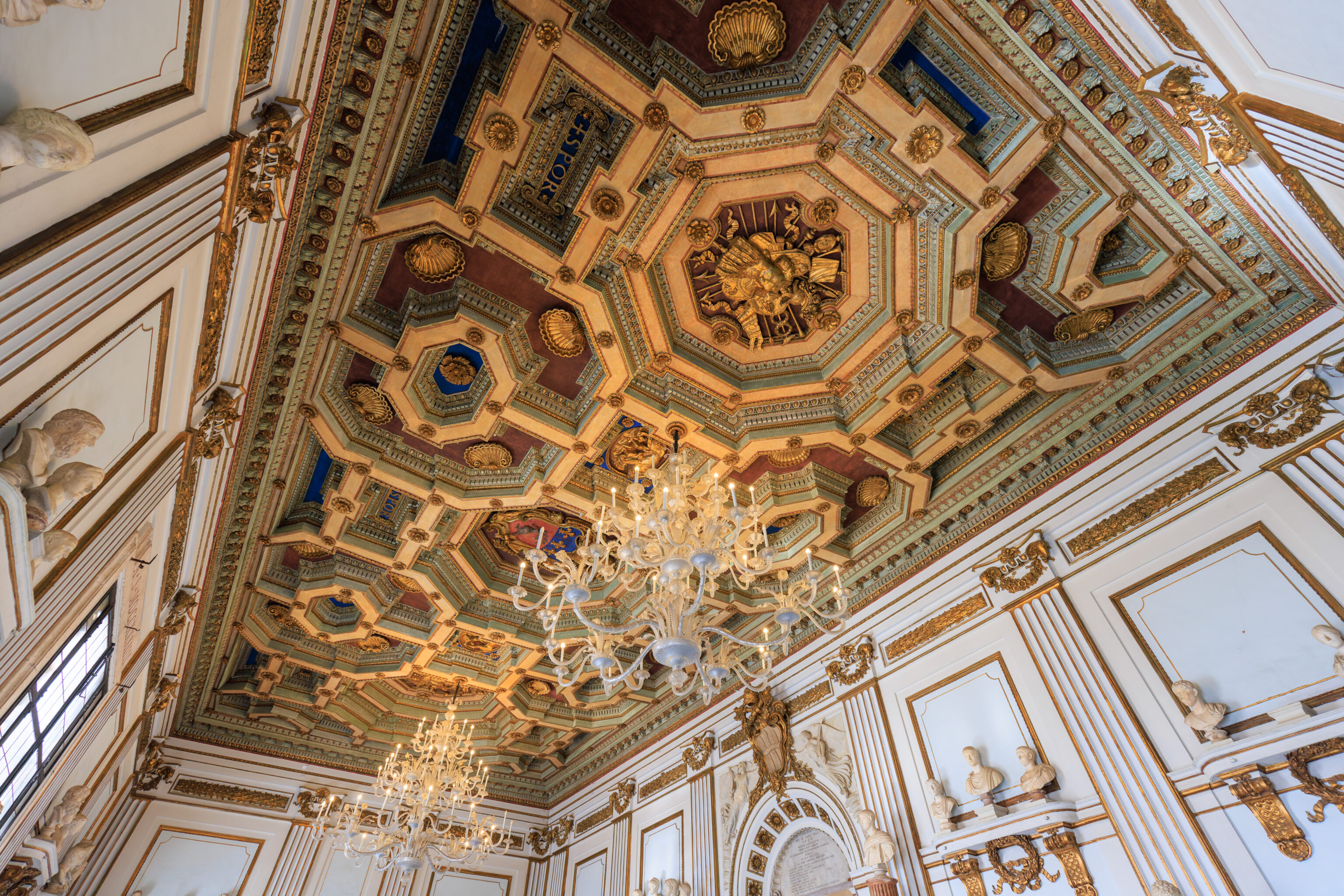
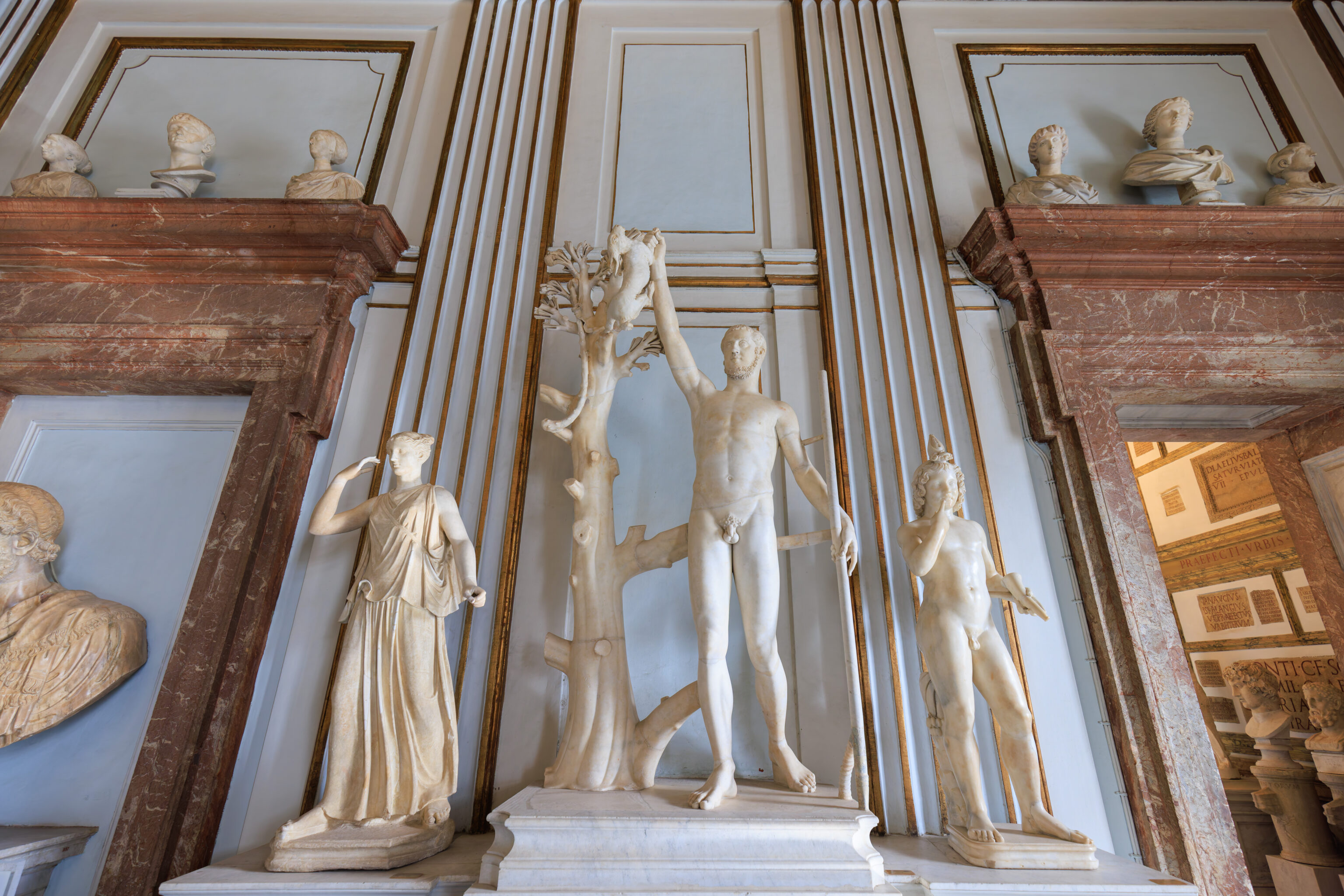
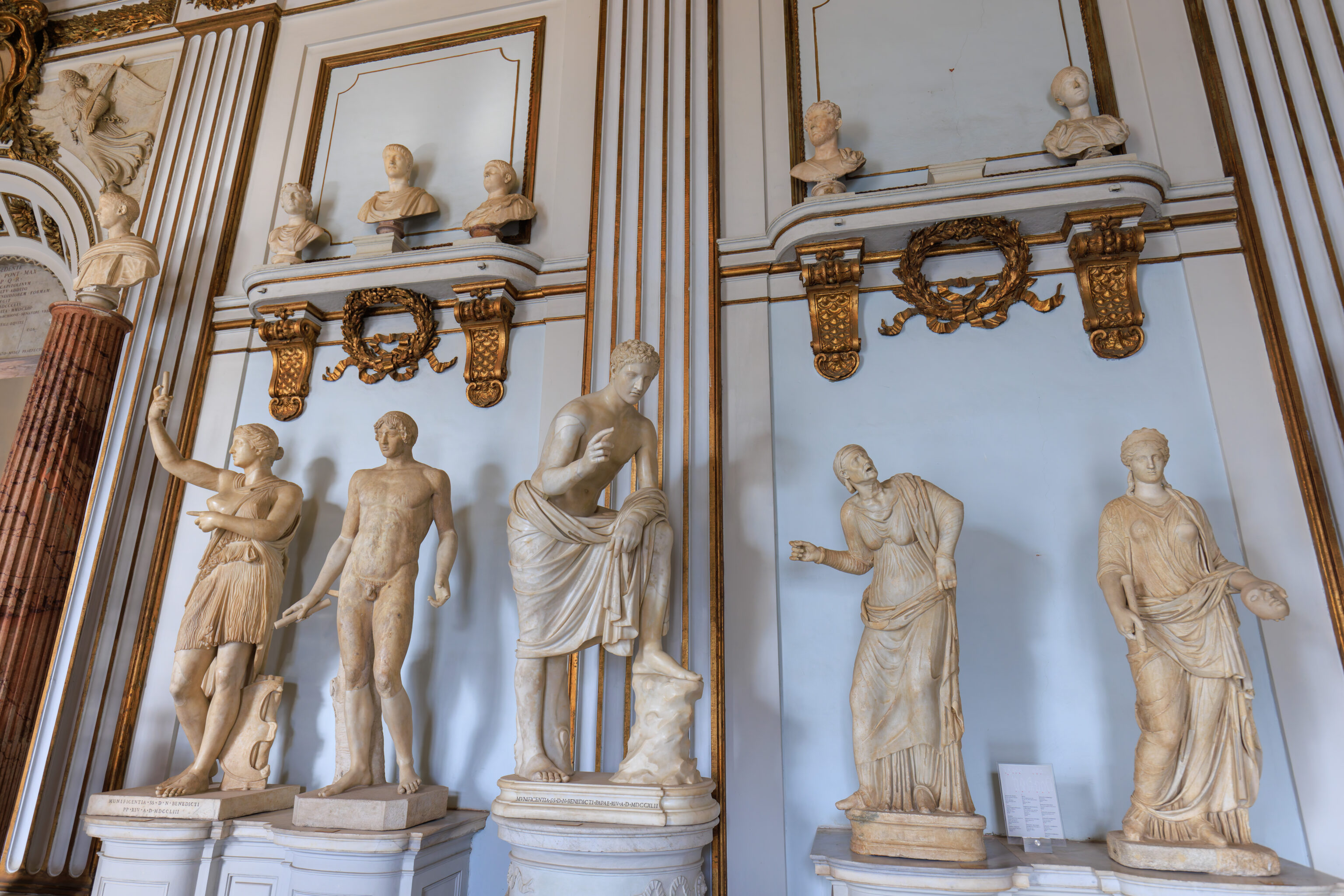
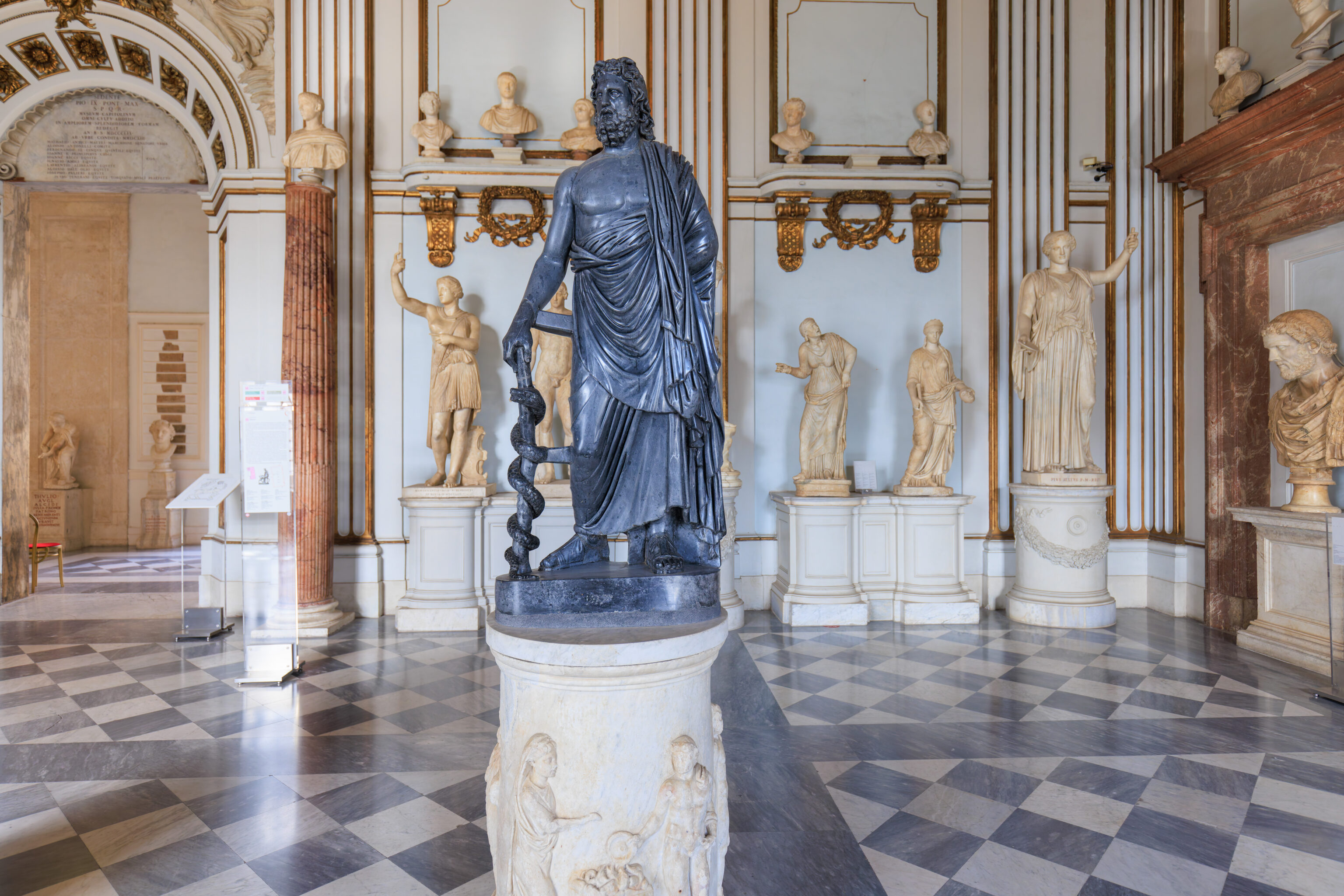
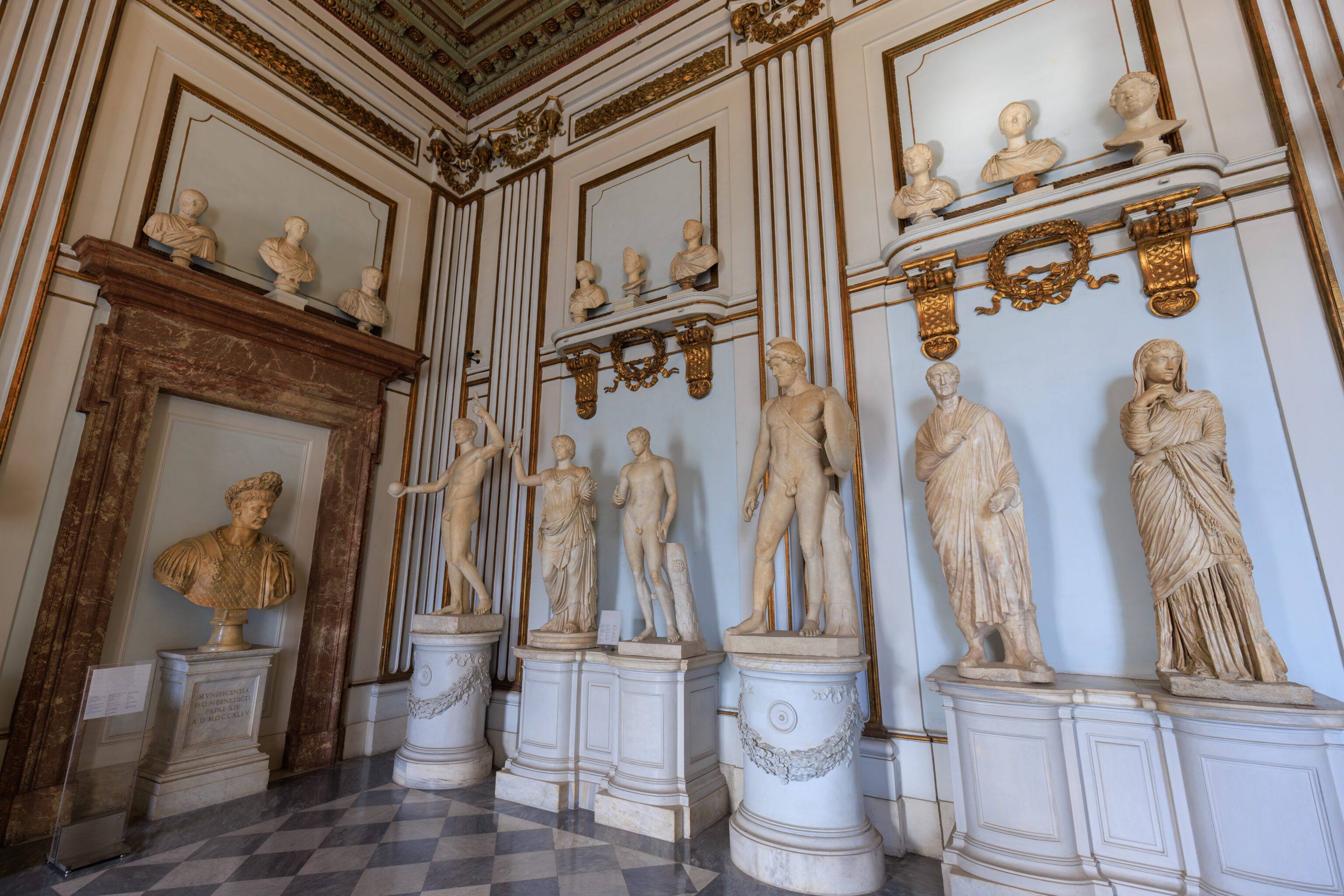
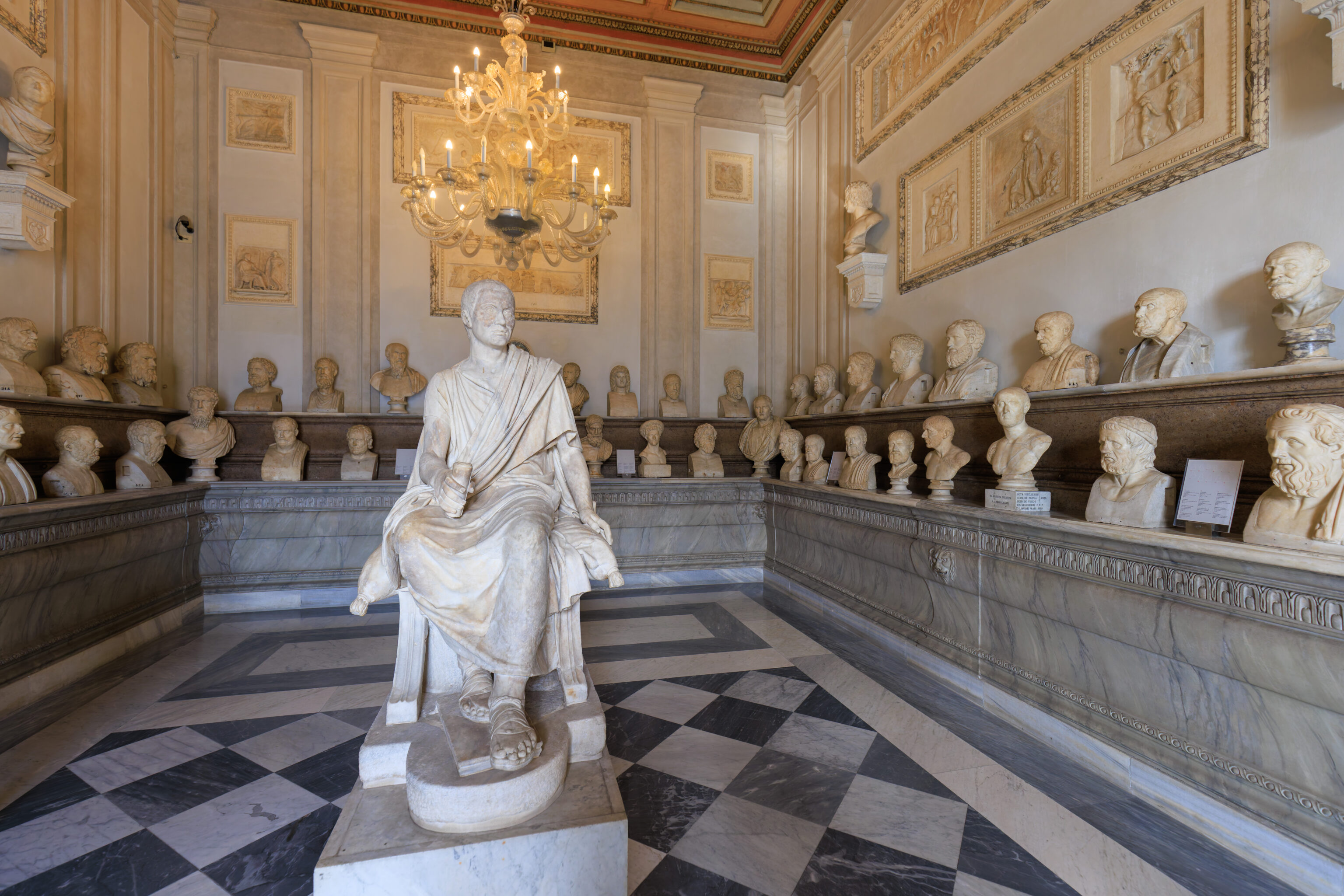
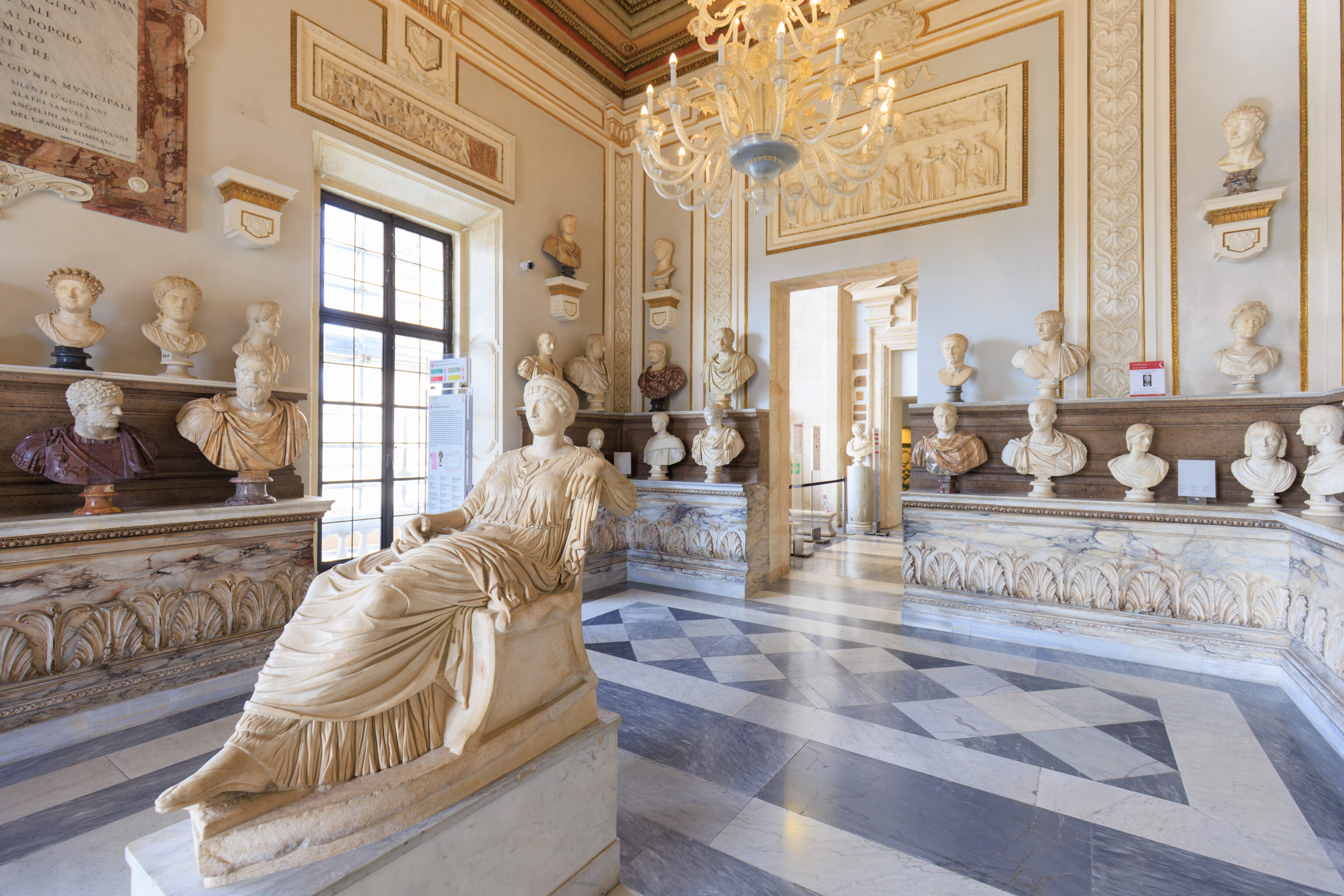
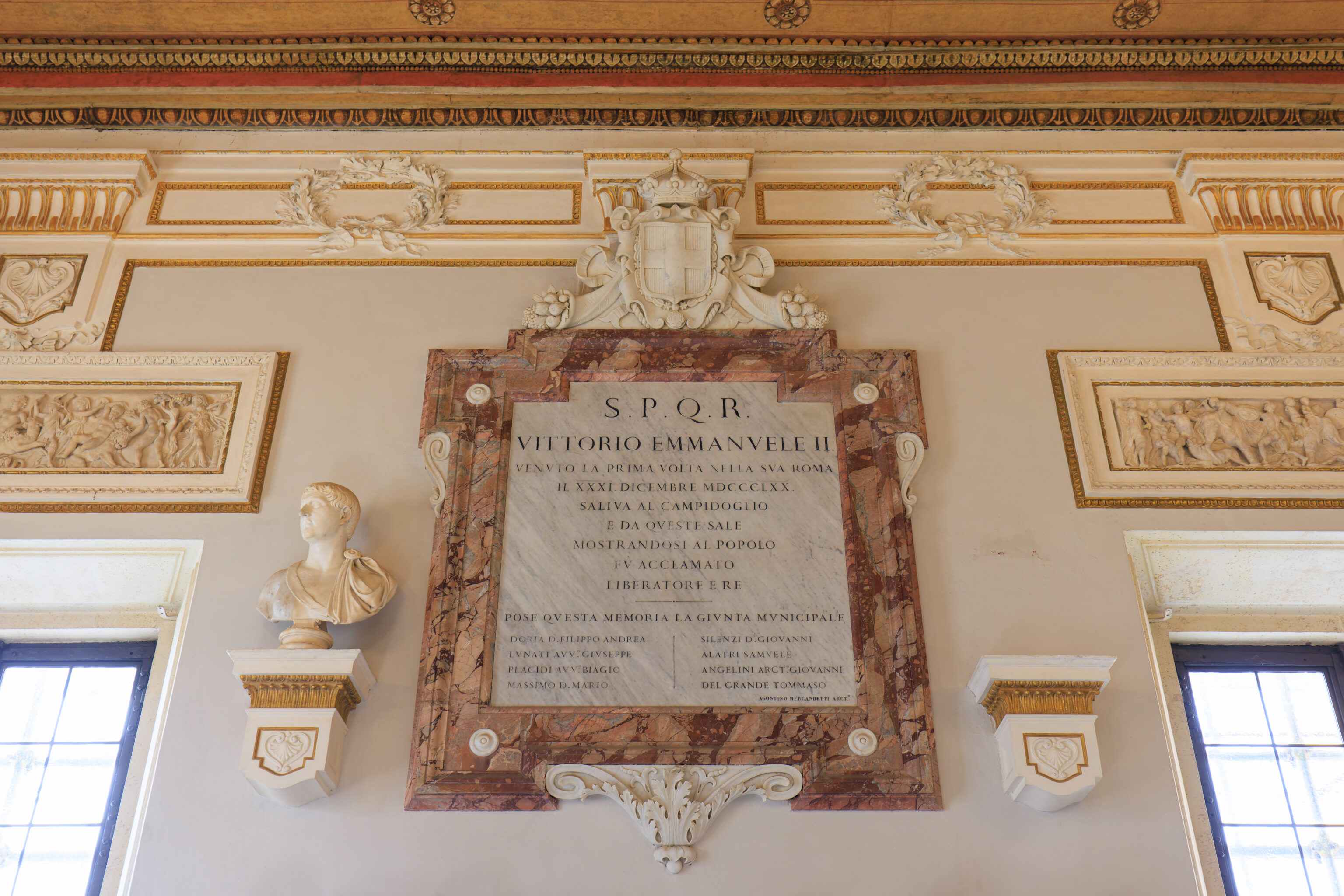
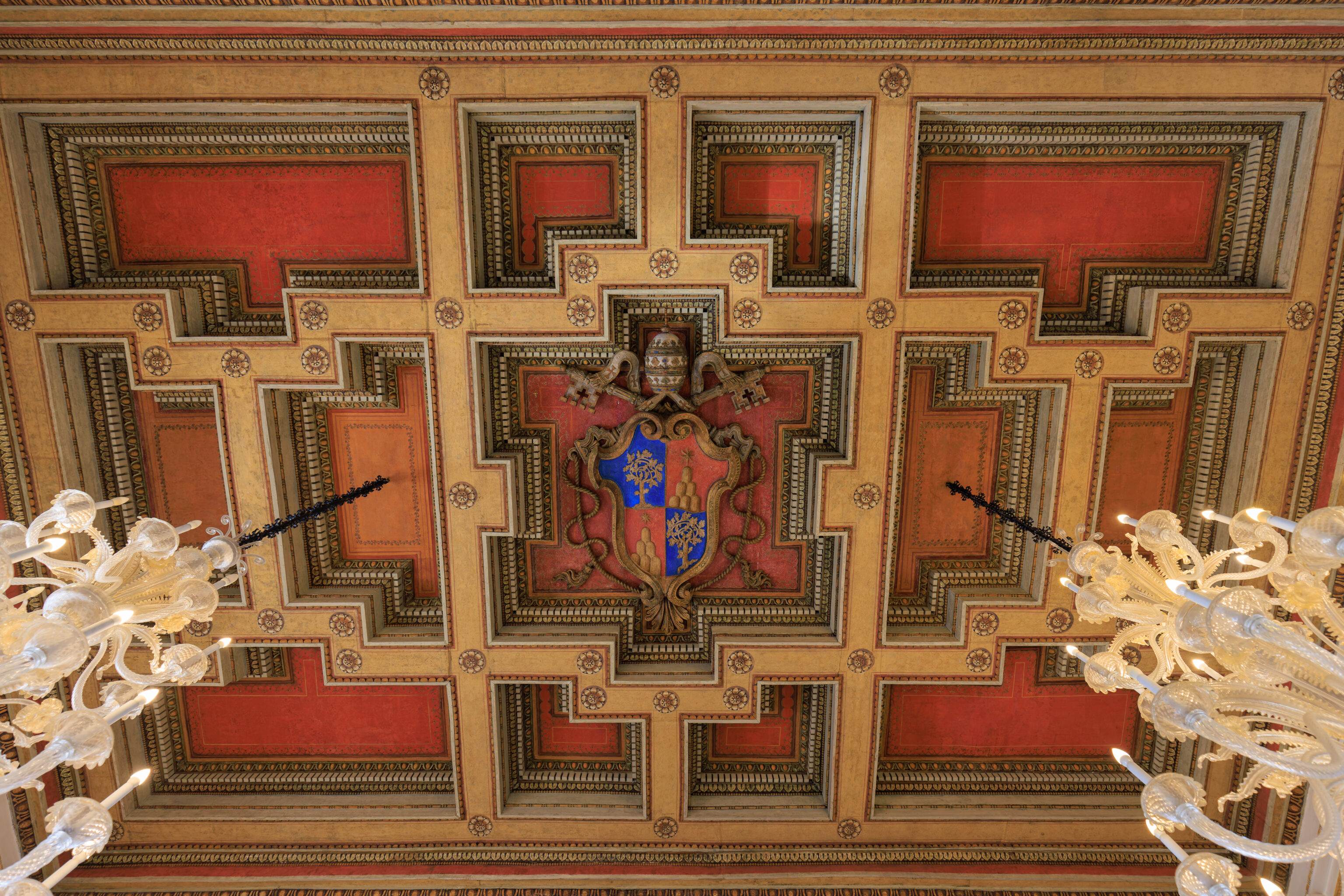
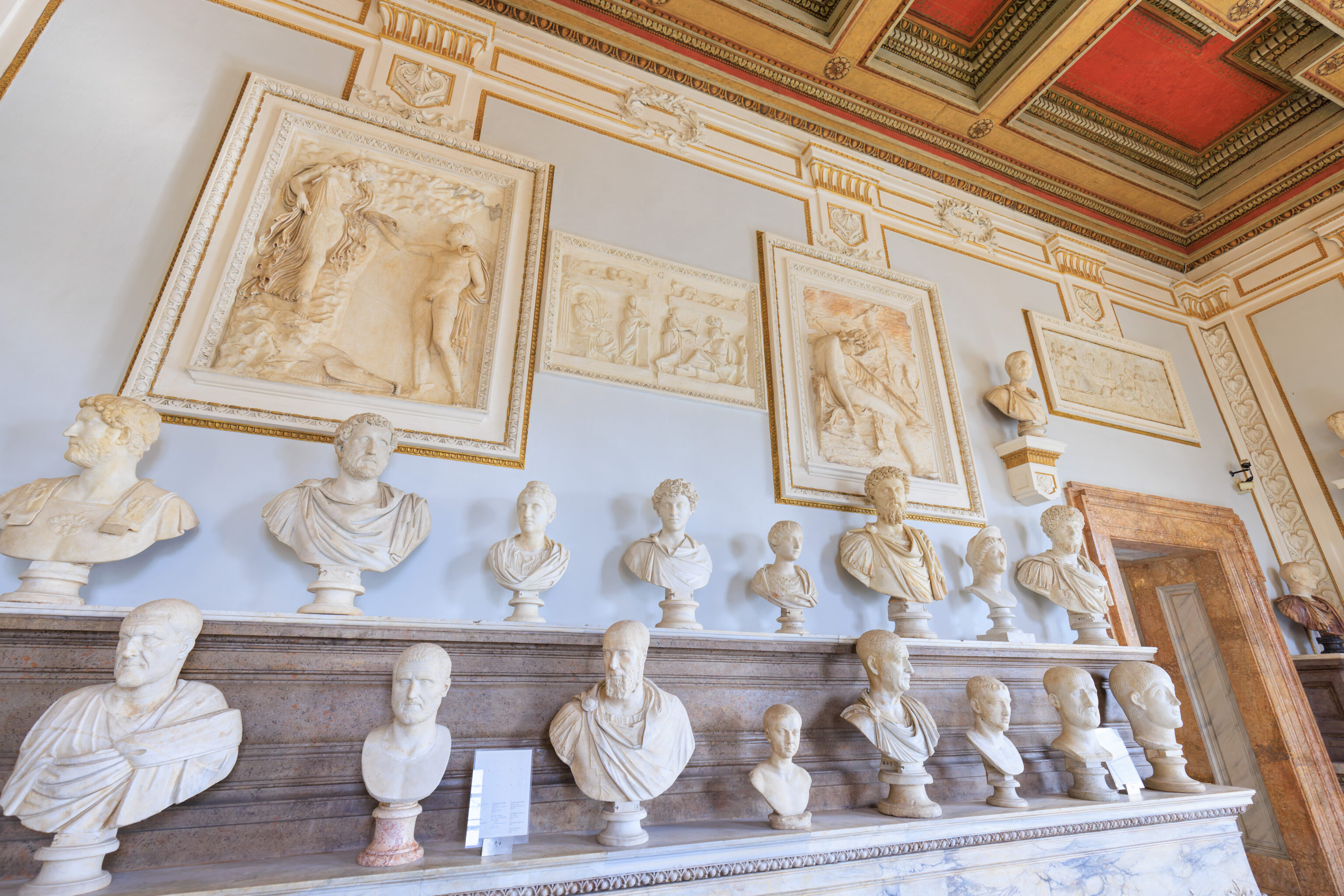
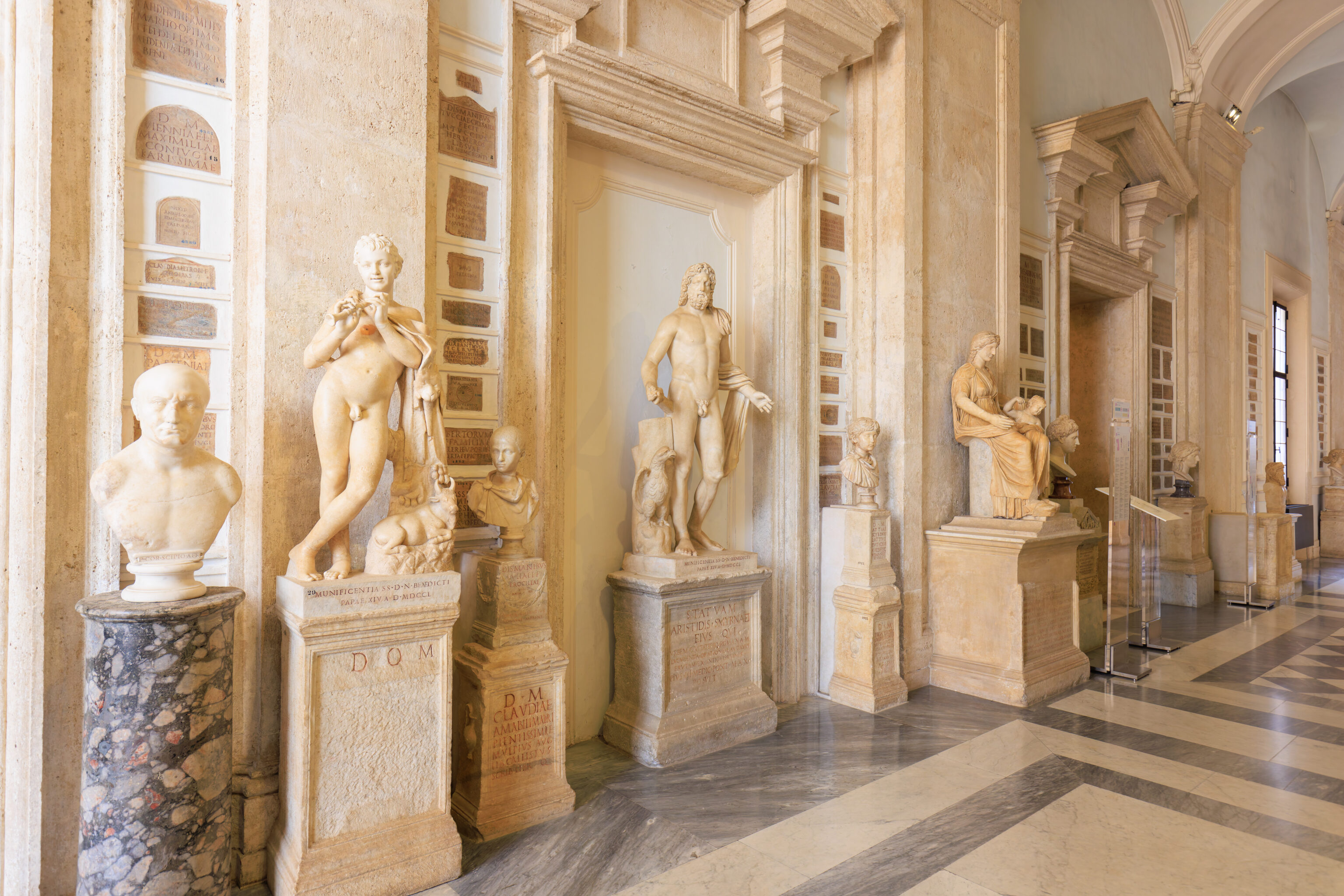
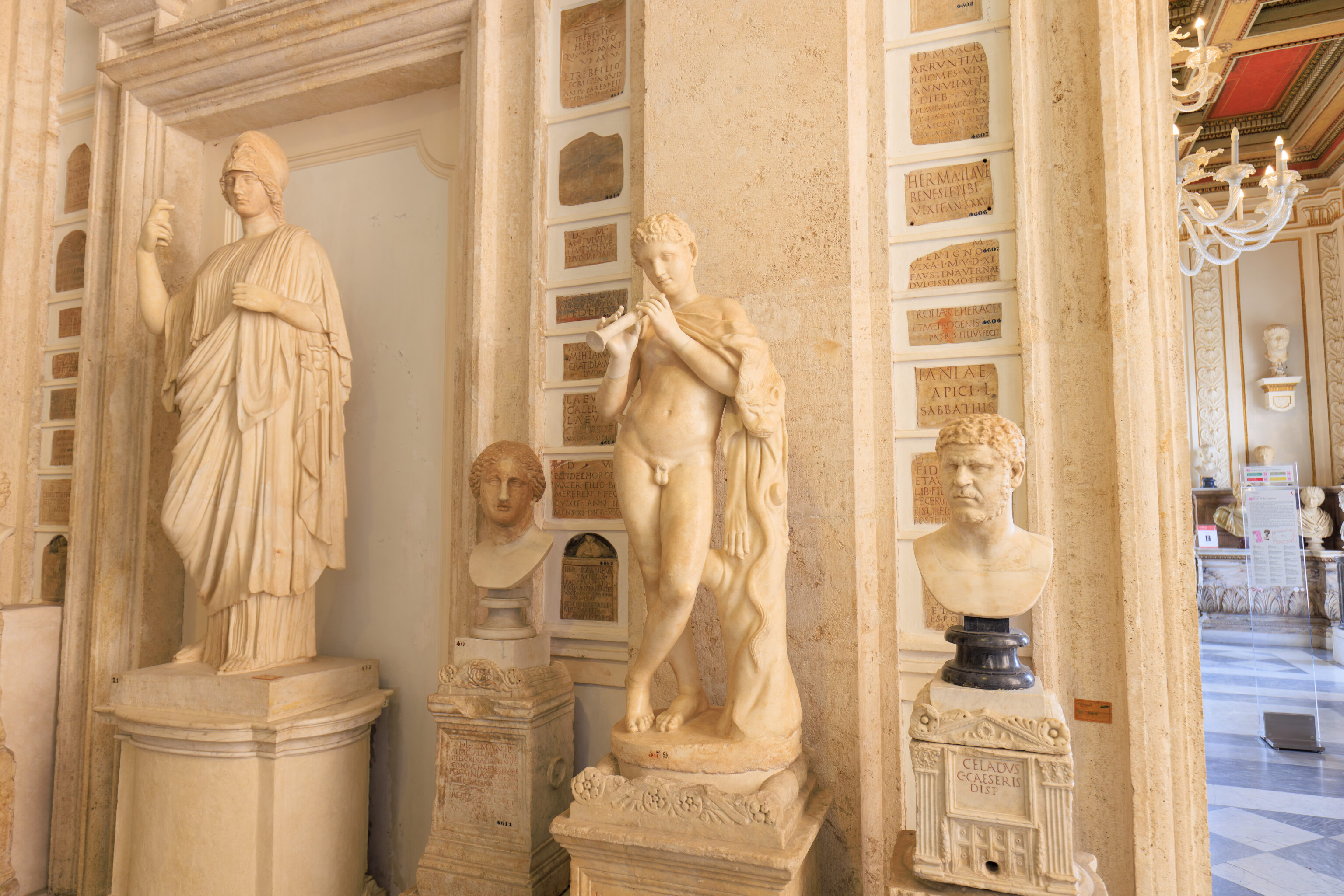
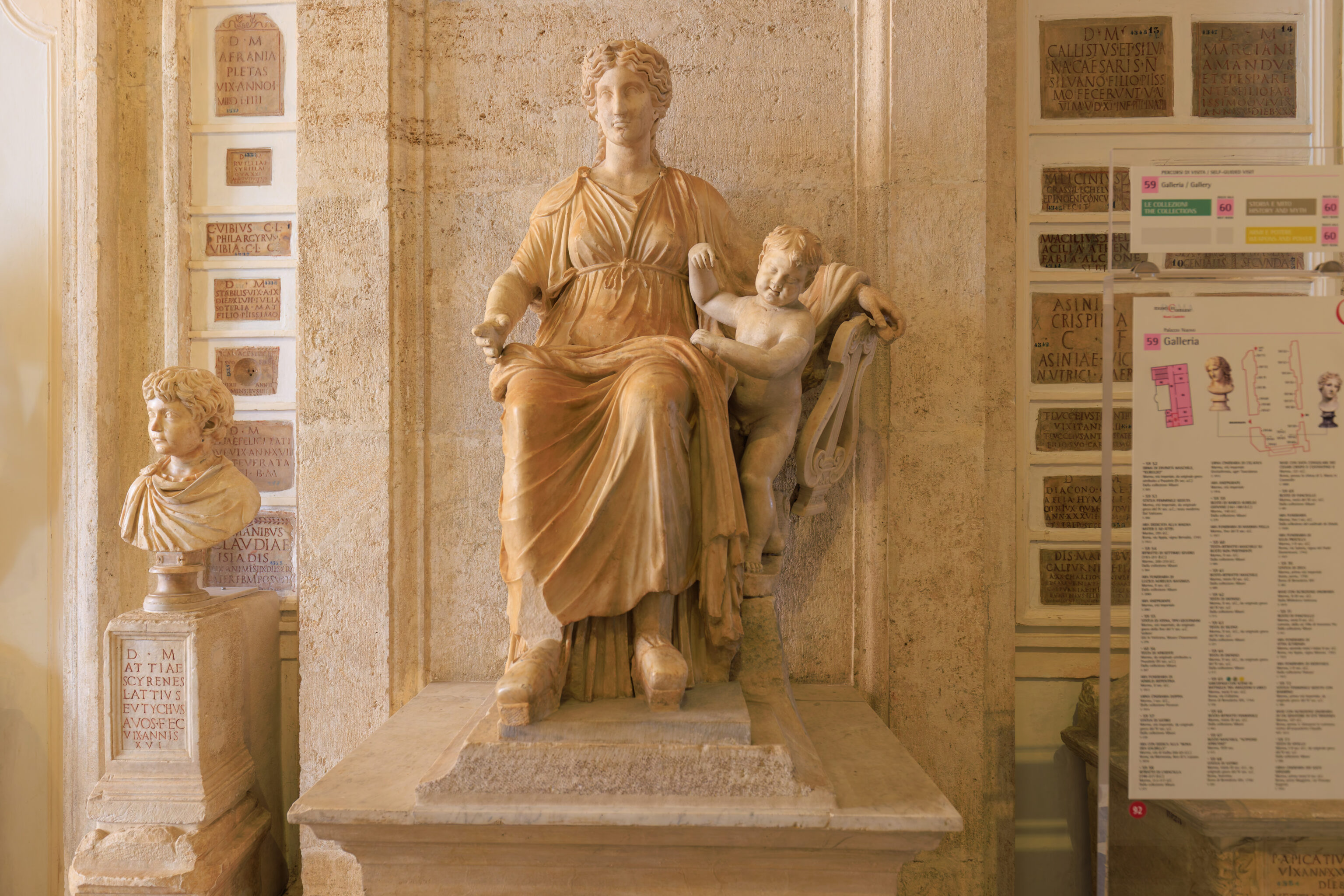
We walked around the first floor, enjoying all the fine sculptures. Unfortunately, we didn’t photograph any signs up to this point.
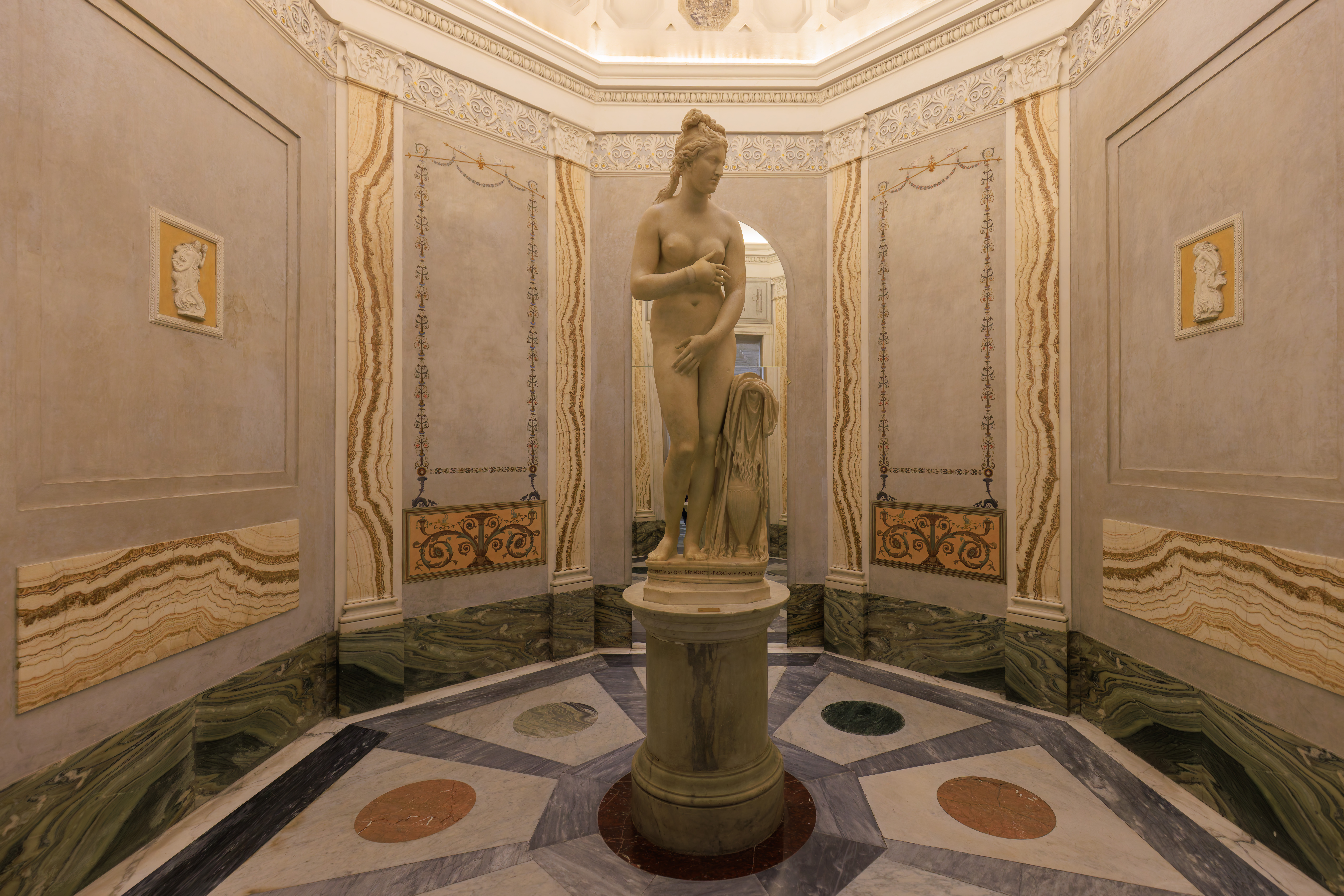
This room continues the Capitoline Venus:
THE CAPITOLINE VENUS - This small octagonal room was built in the early 19th century to provide an evocative setting for one of the Museum's most famous sculptures: the Capitoline Venus.
This statue, slightly larger than life-size, was found sometime between 1667 and 1670 near the basilica of San Vitale (between the Quirinal and Viminal Hills); it was given to the Capitoline Museums by pope Benedict XIV in 1752.
The goddess is nude, portrayed in a sensual but modest gesture, her arms attempting to hide the harmonious shapes of her body from the viewer's sight. The objects at her feet, her nudity and the arrangement of her hair indicate that she is bathing. This statue is a variant of the Aphrodite sculpted by Praxiteles in the 4th century B.C. for the goddess's shrine at Cnidus.
The number of known replicas and variants of this work attests to its success in the Roman world. The high value ascribed to this statue is borne out by the fact that it was discovered hidden in a walled-up space, where its owner hoped to save it from some impending danger.
This particular statue on display here might be from the 2nd century AD1.
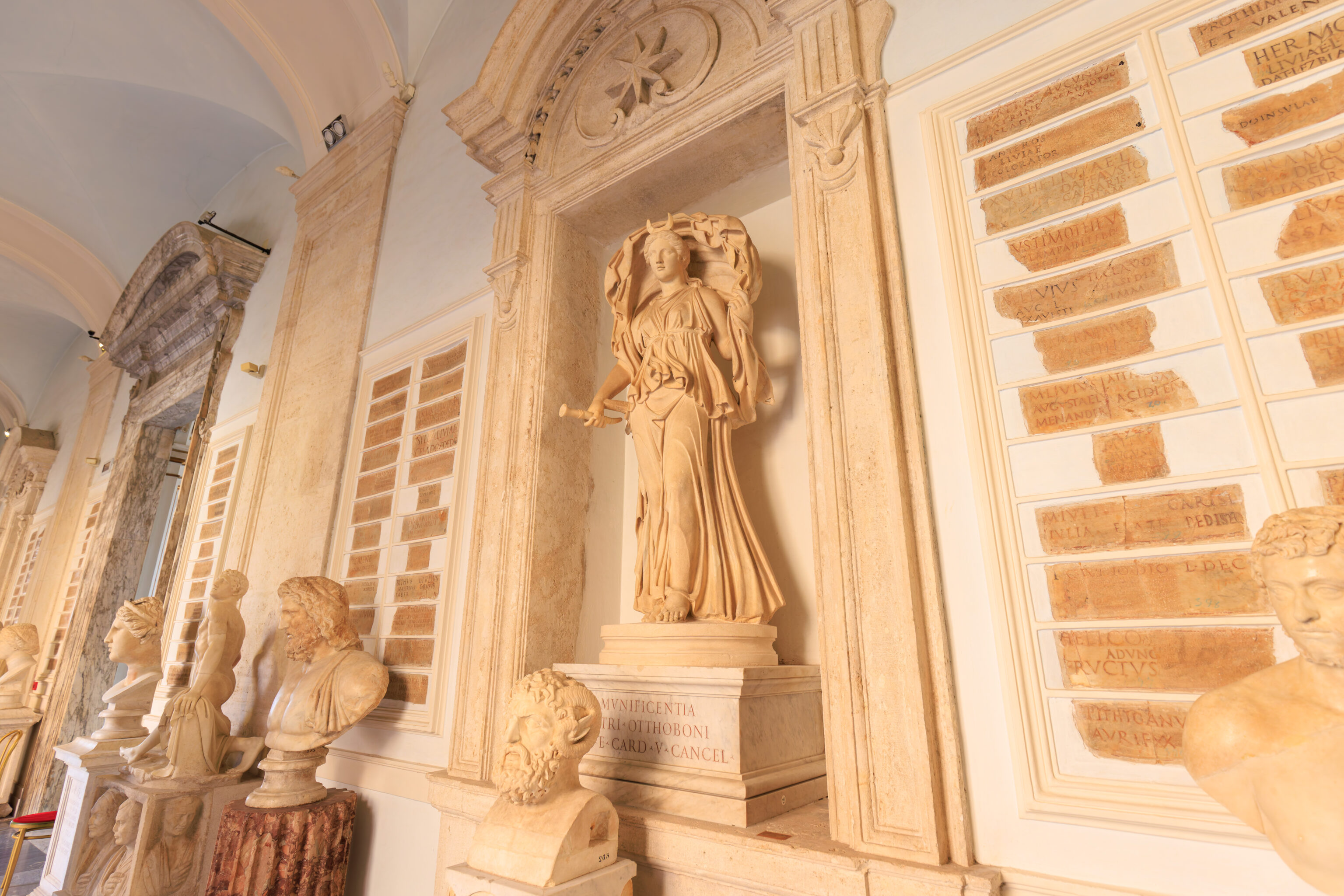
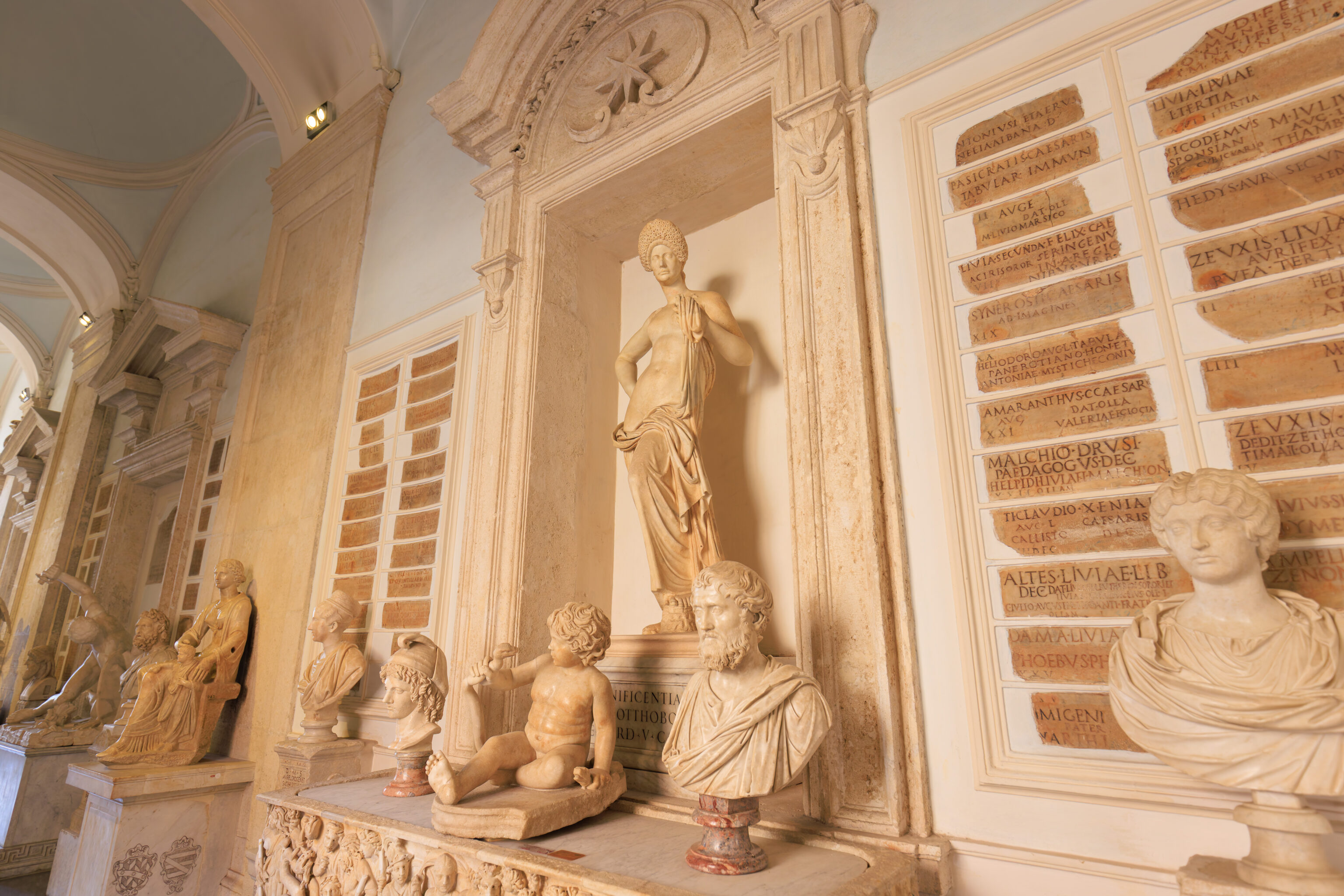
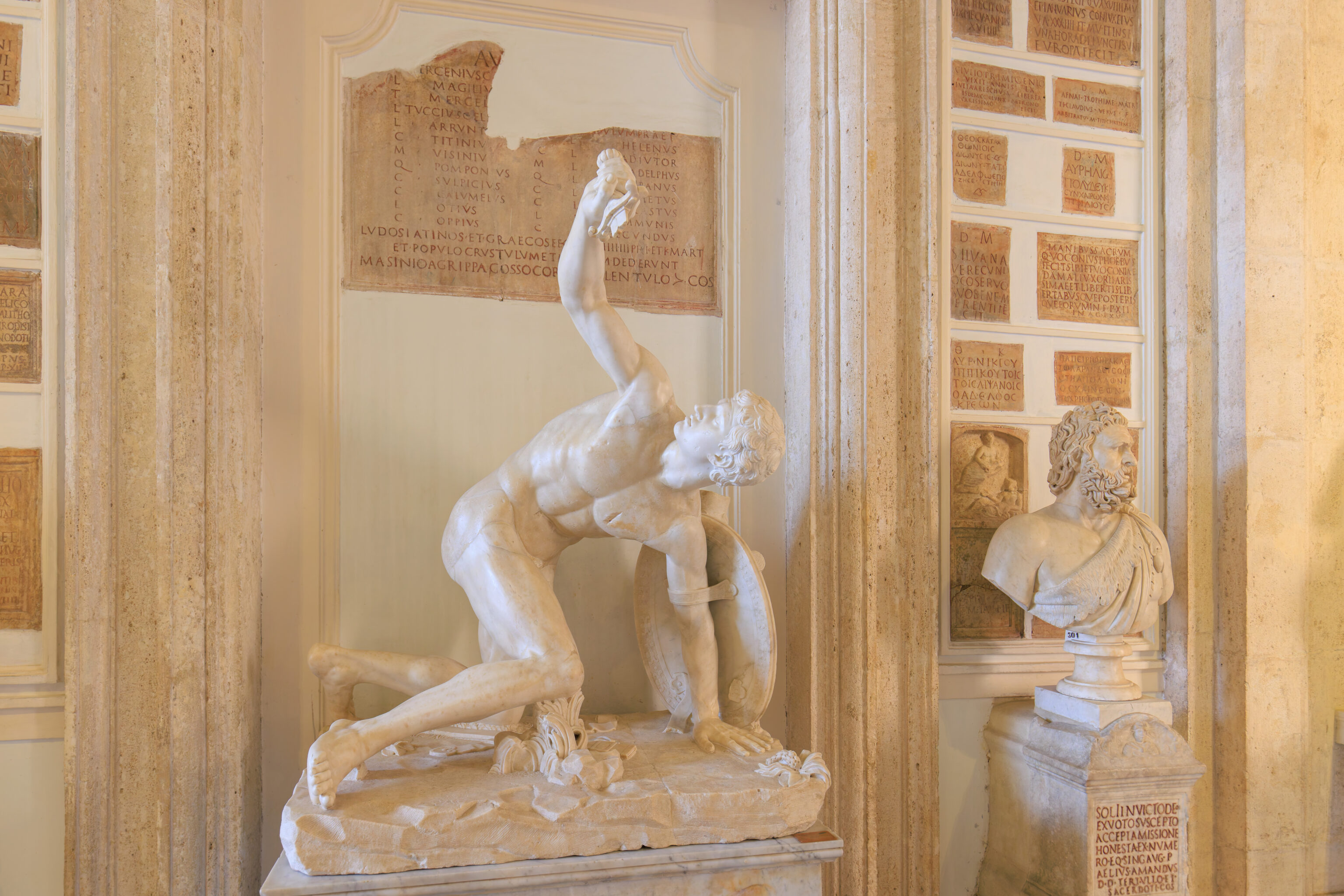
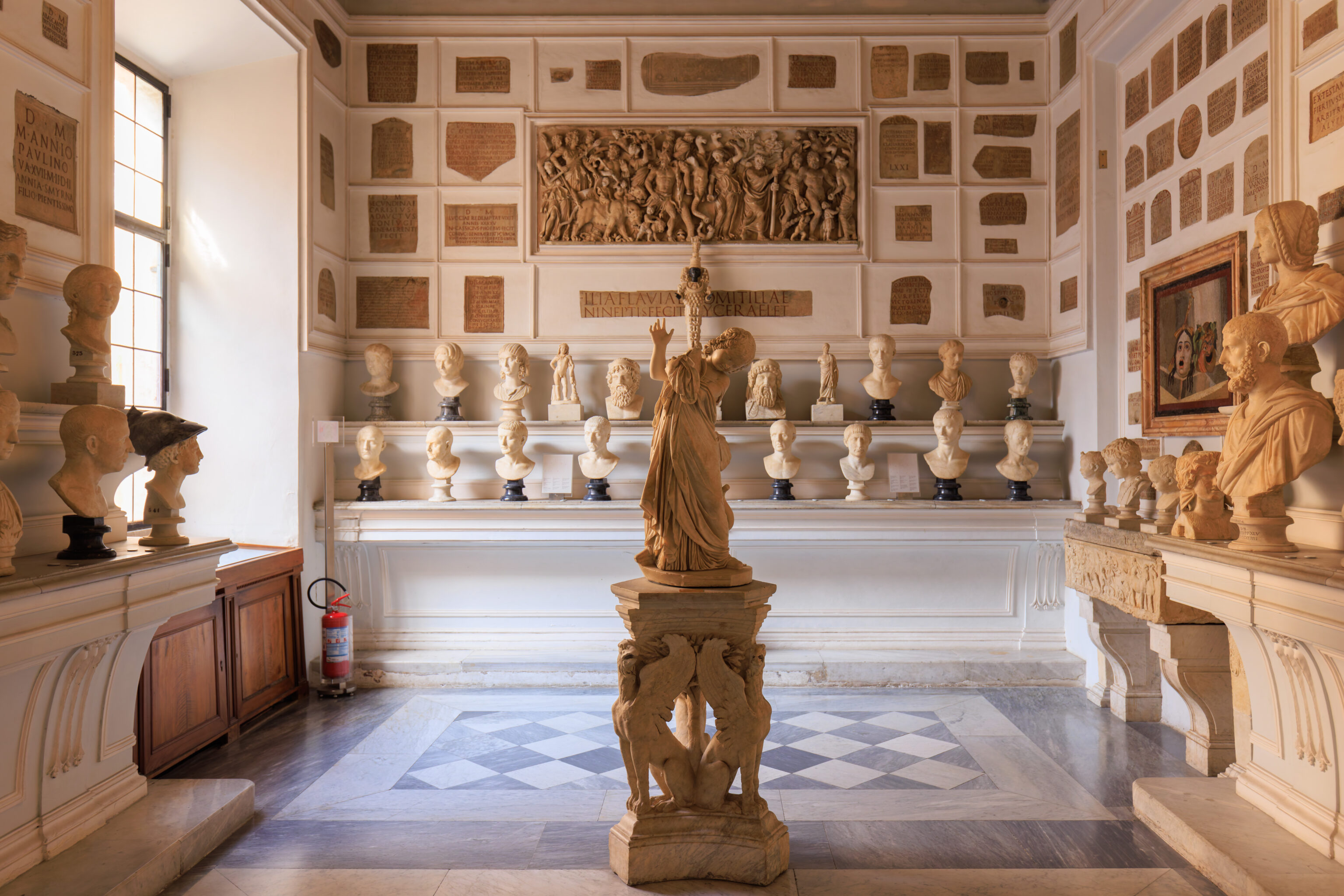
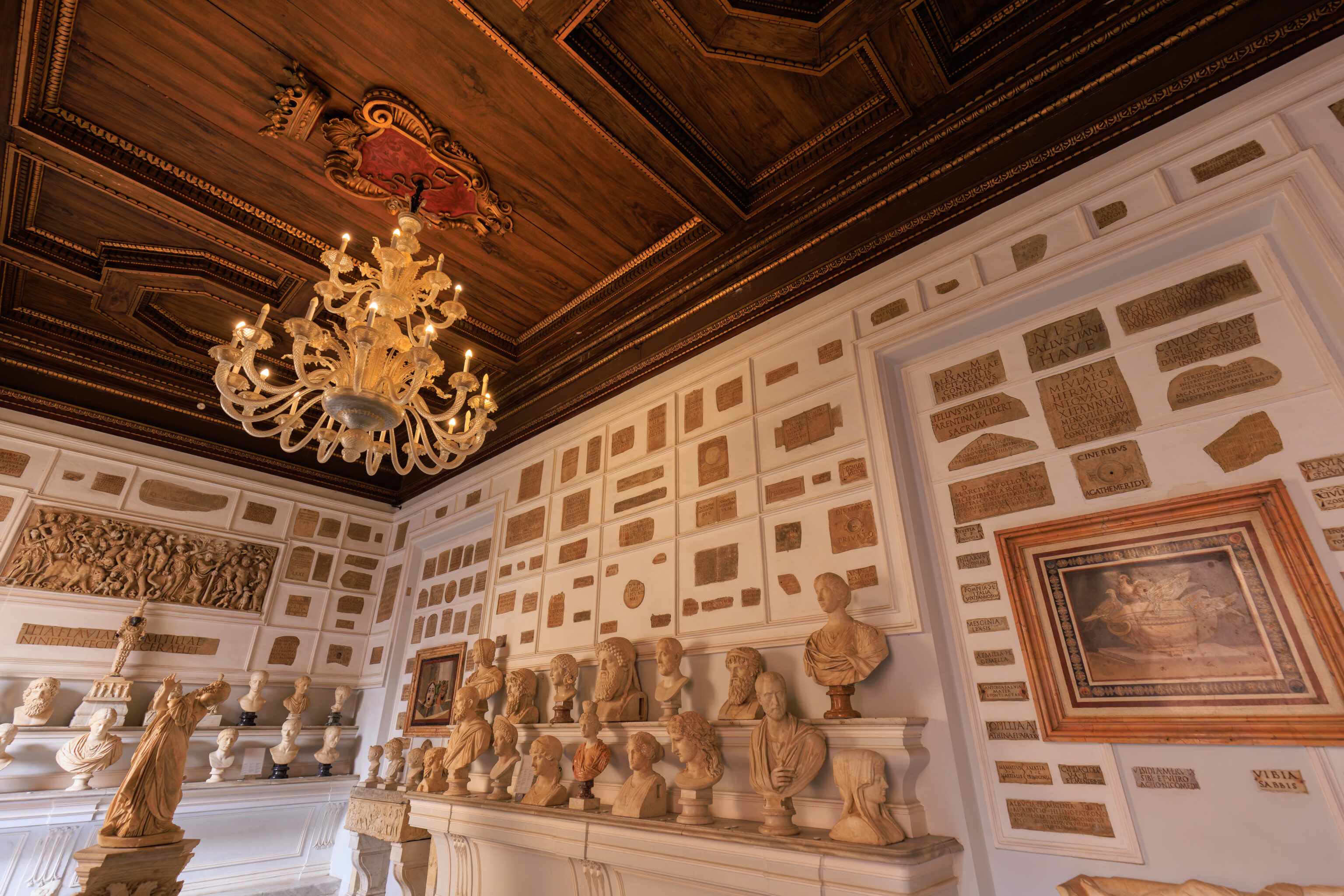
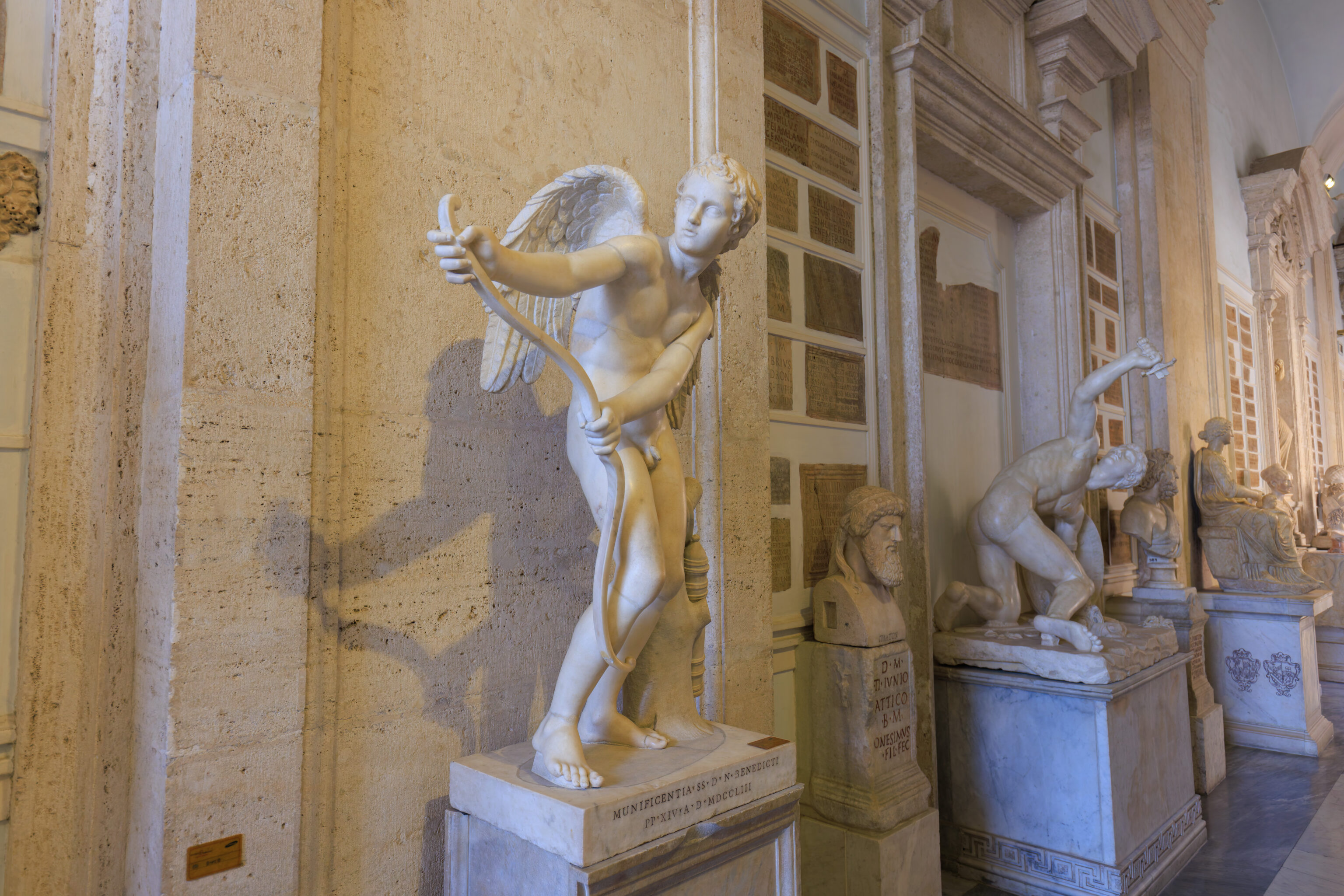
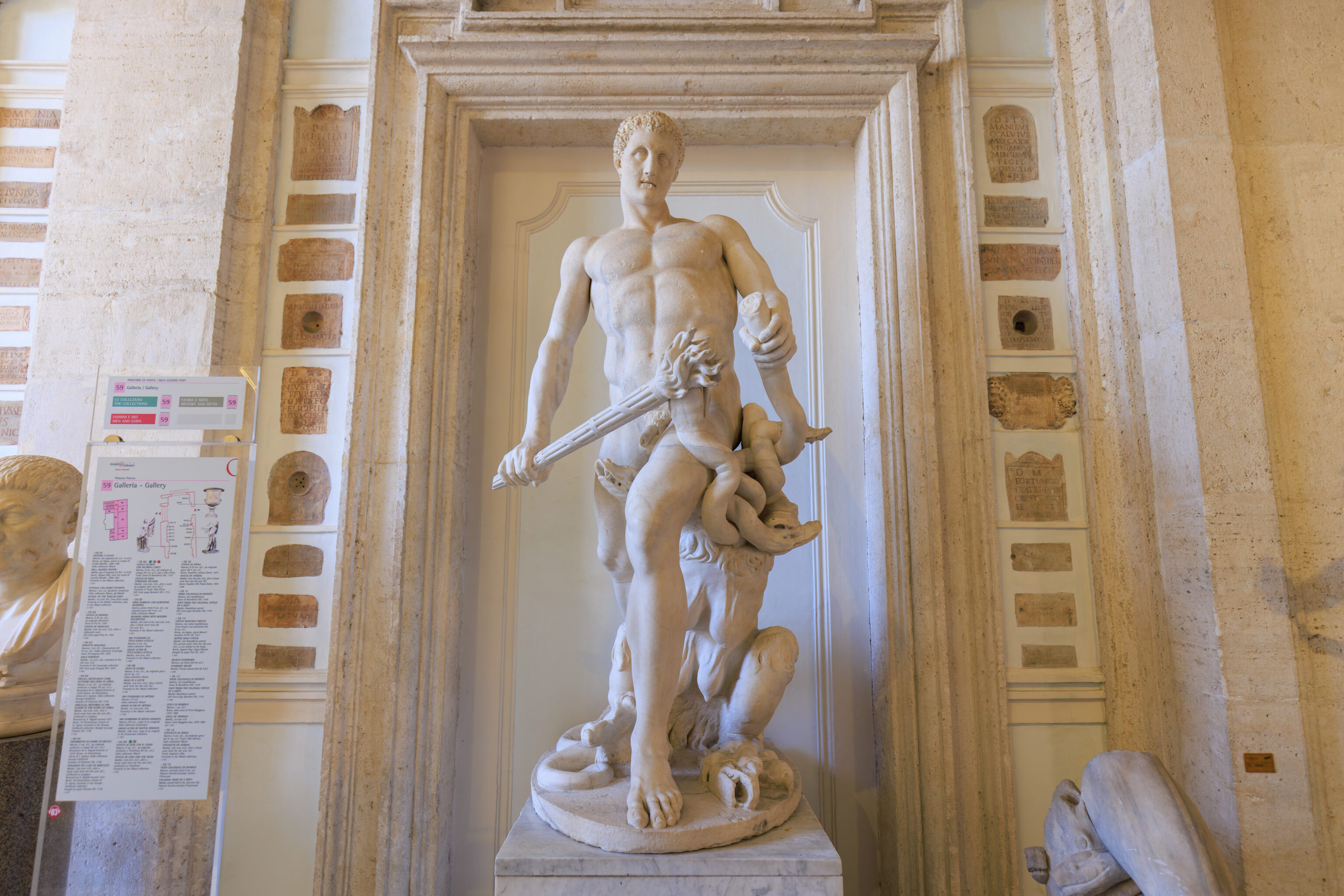
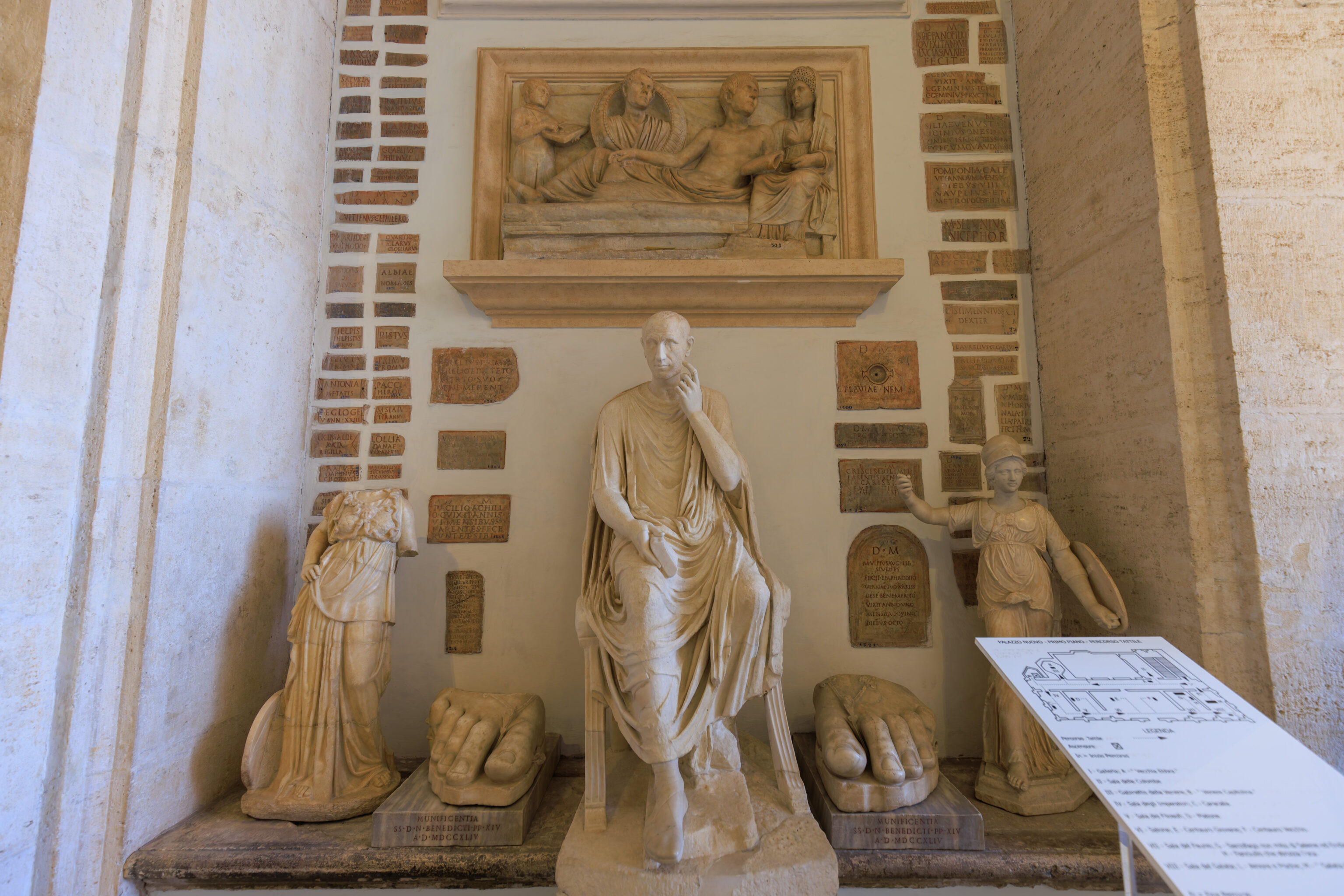
We continued walking through the galleries on the first floor.

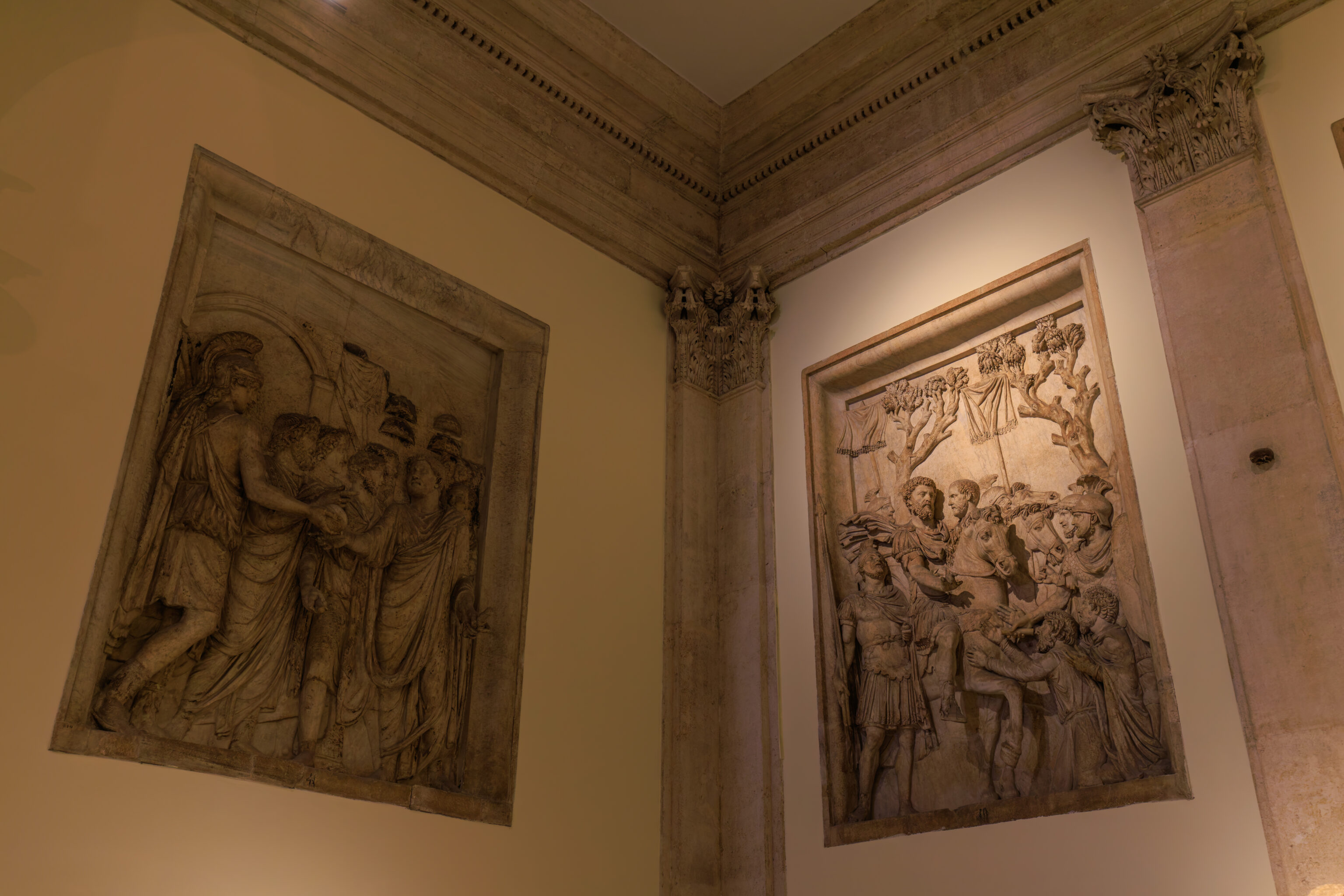
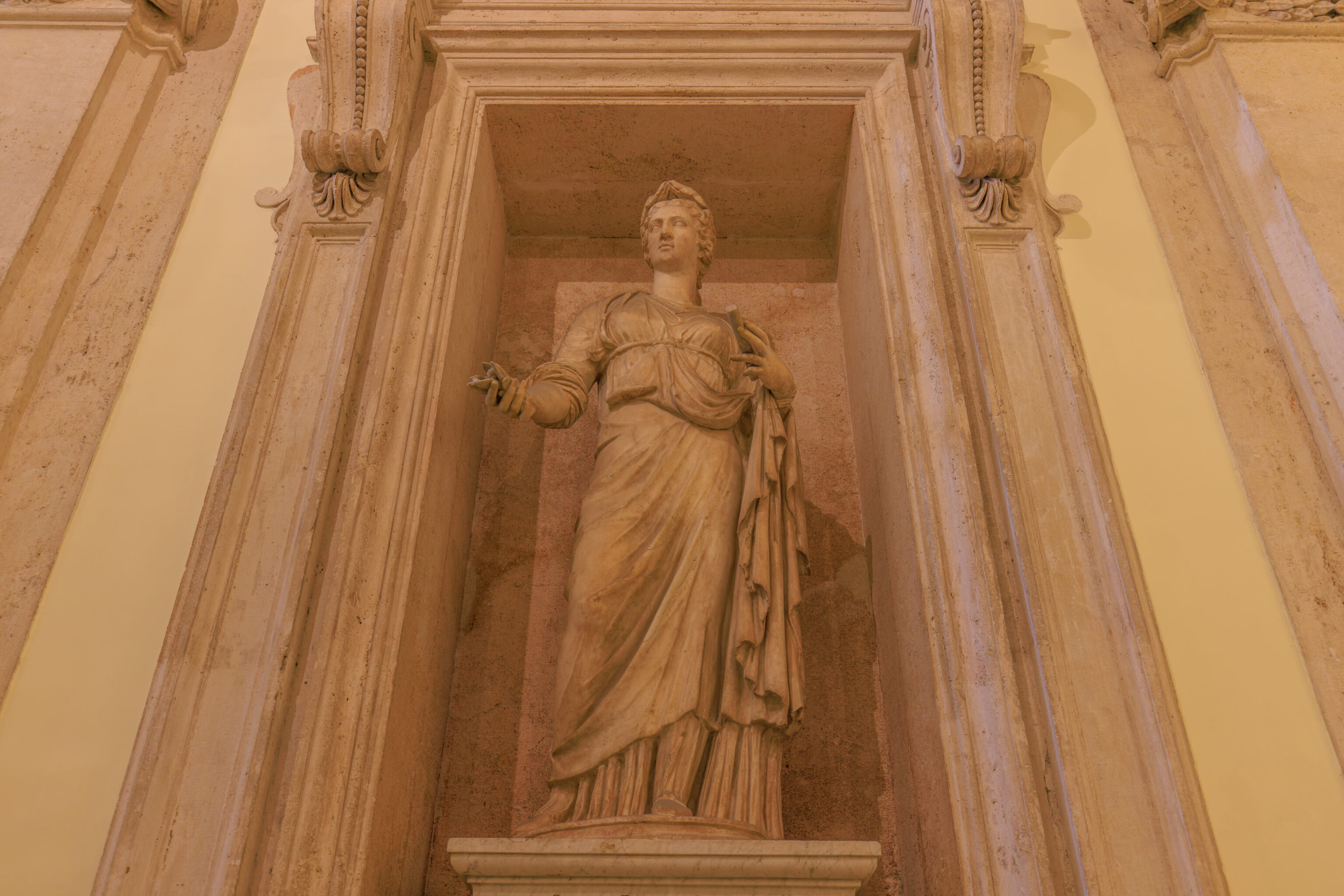
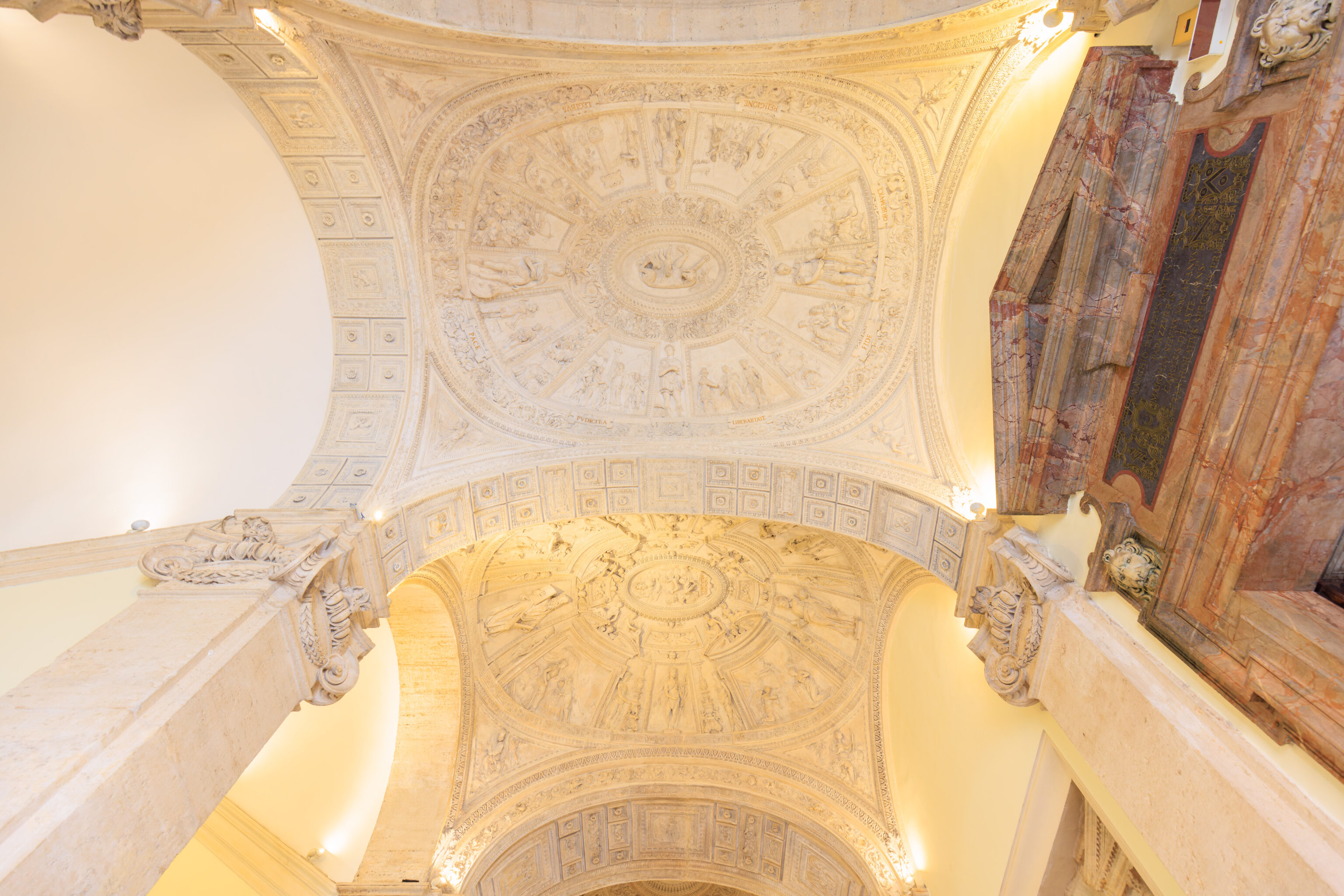
We then had to backtrack and ended up at the Palazzo dei Conservatori. This is the building we started out in on the south side of the Piazza del Campidoglio and is the largest section of the Capitoline Museums.
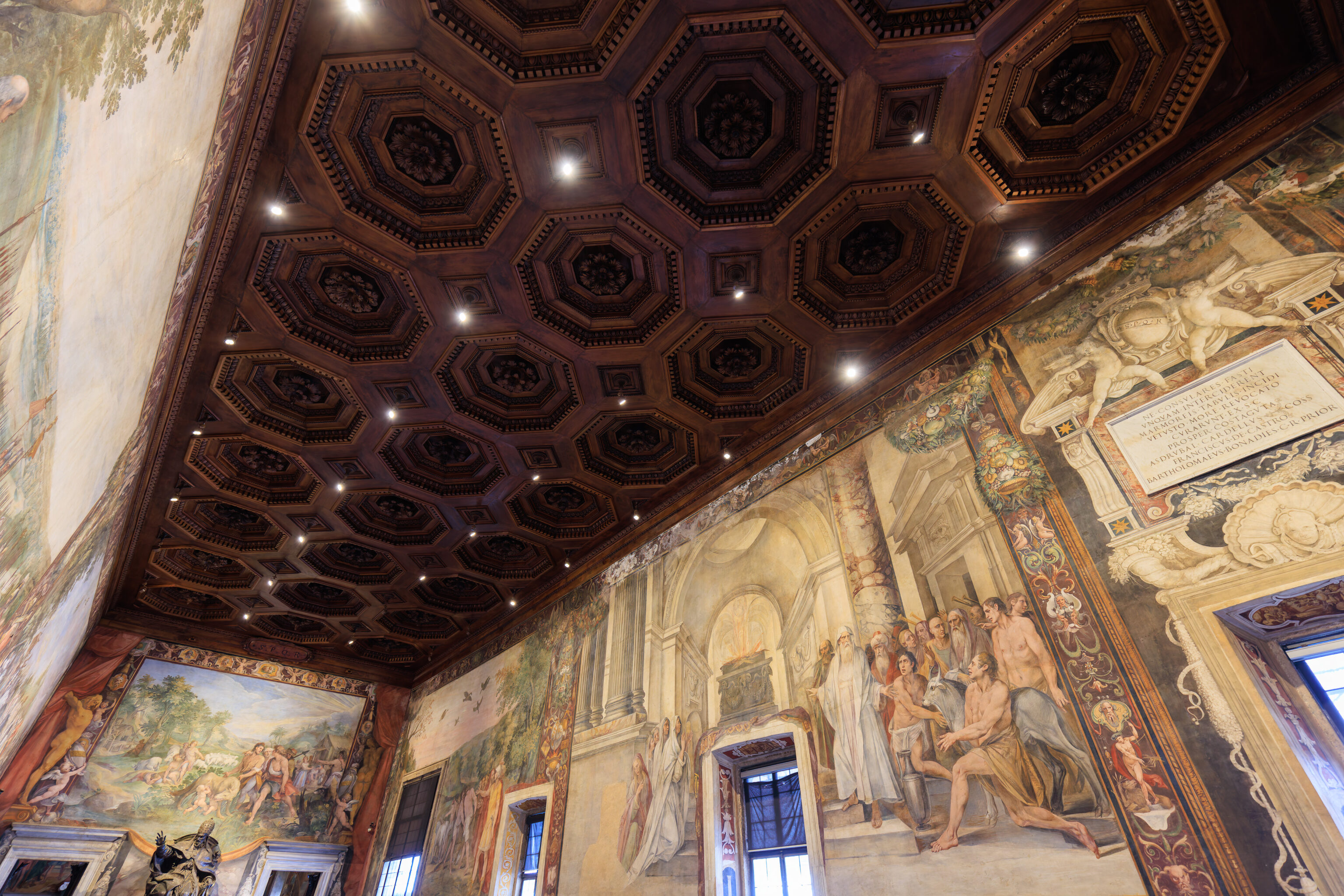
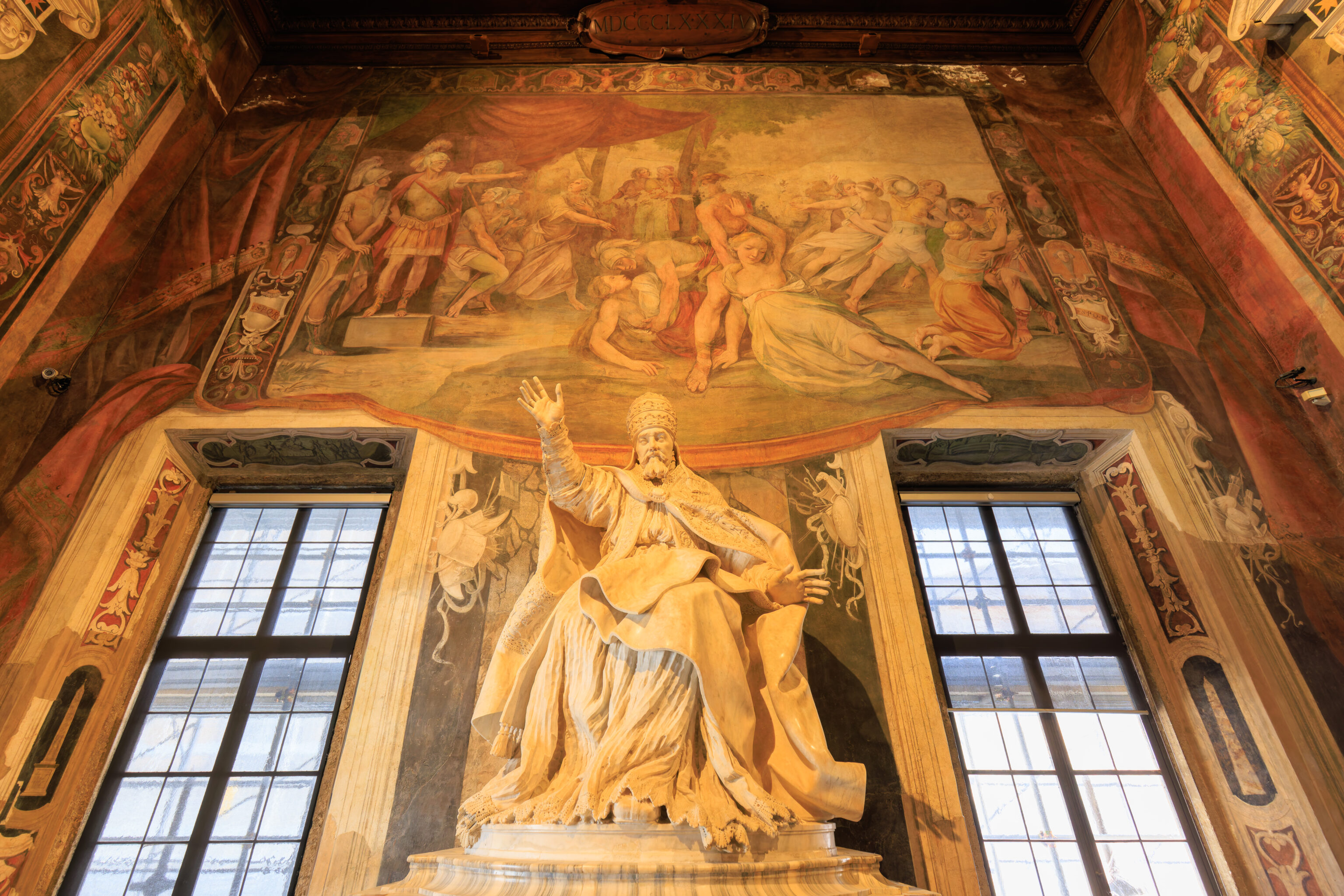
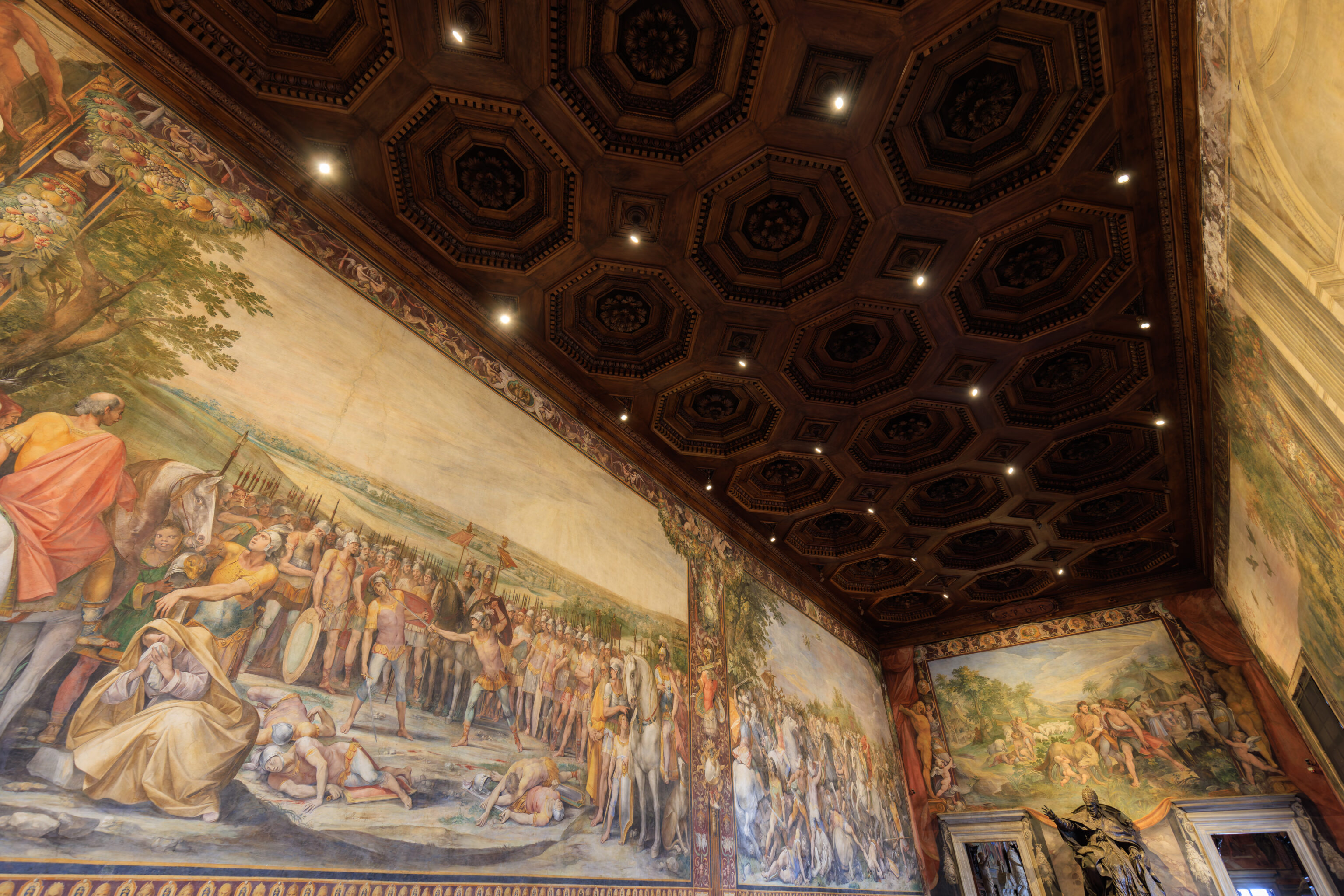
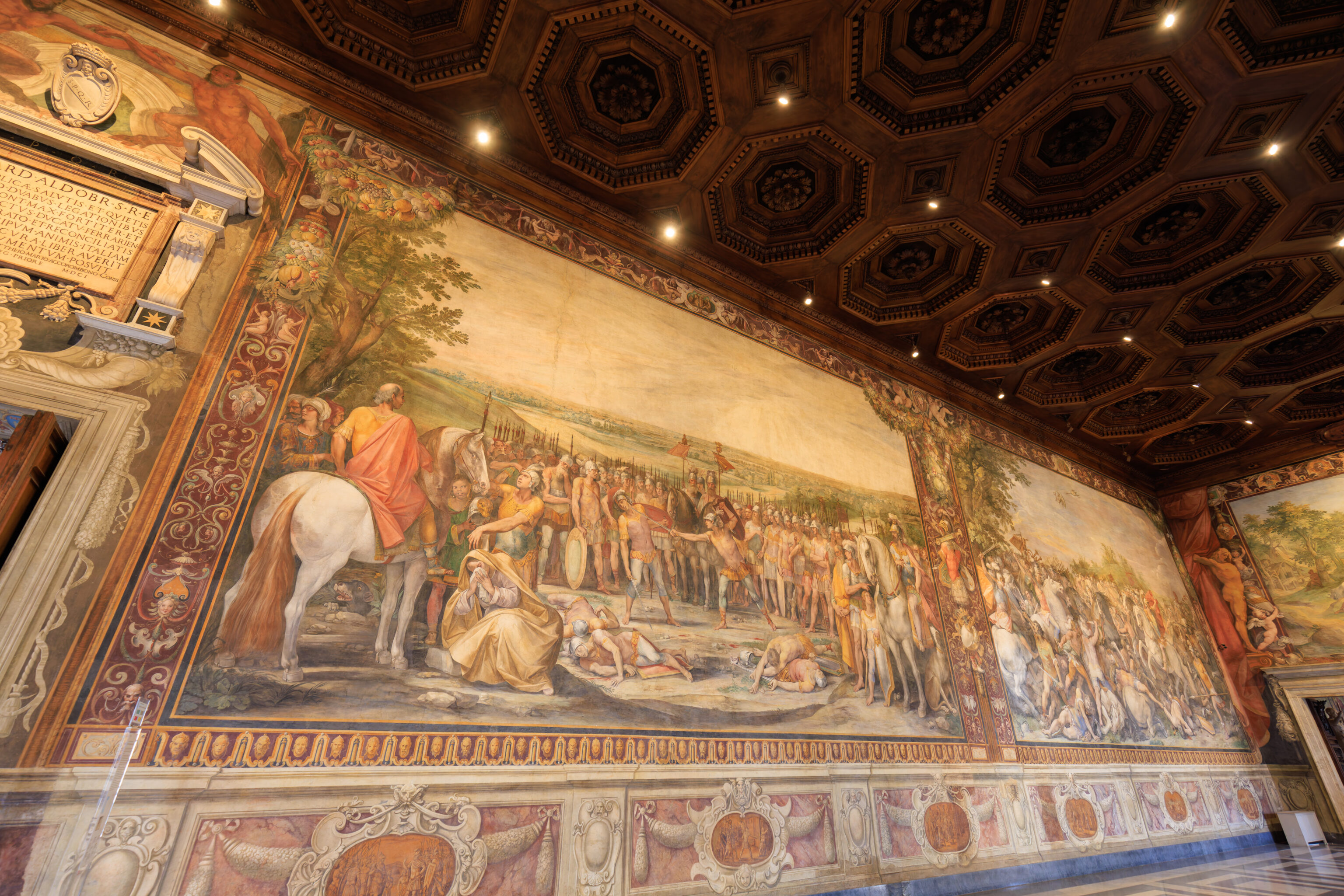
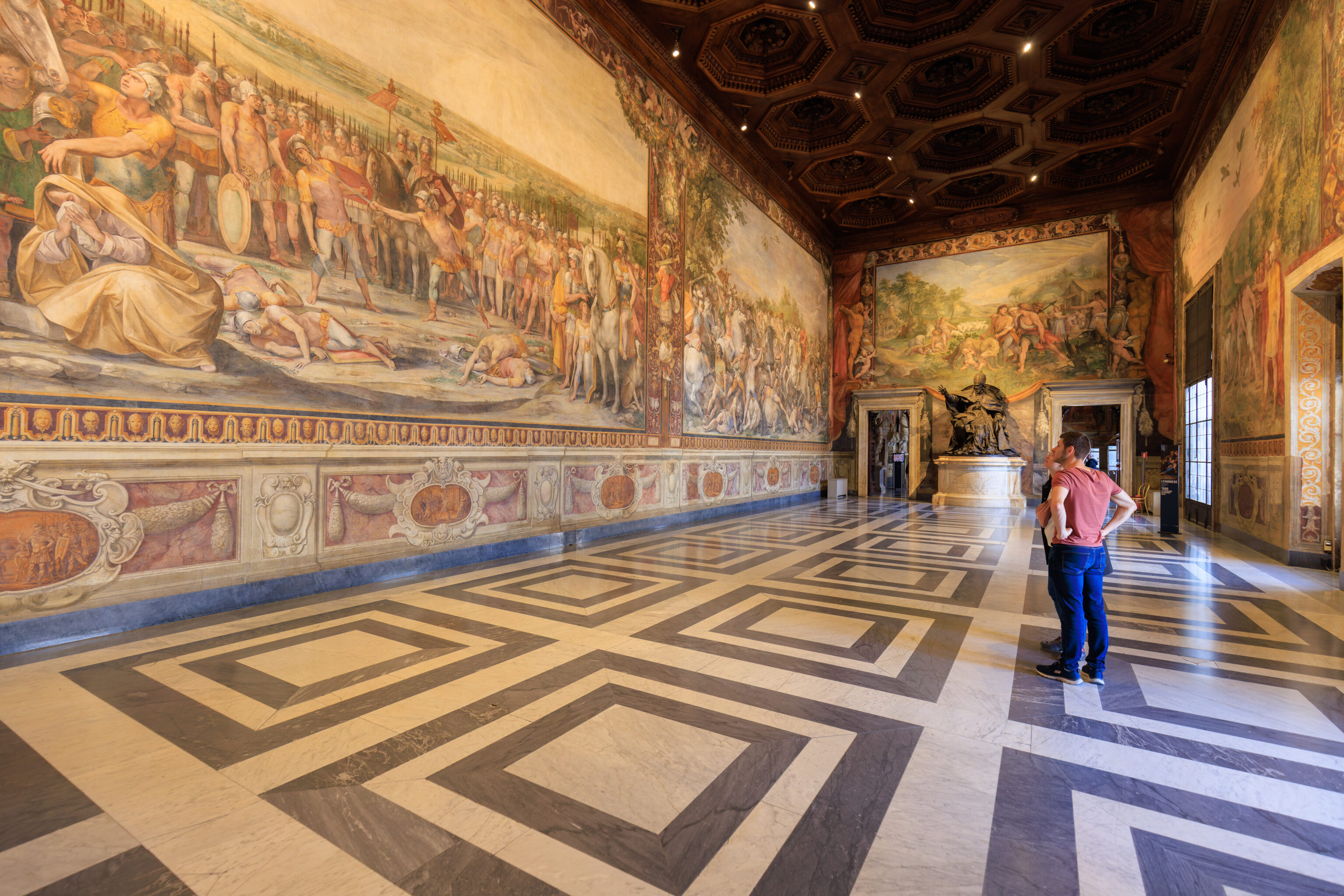
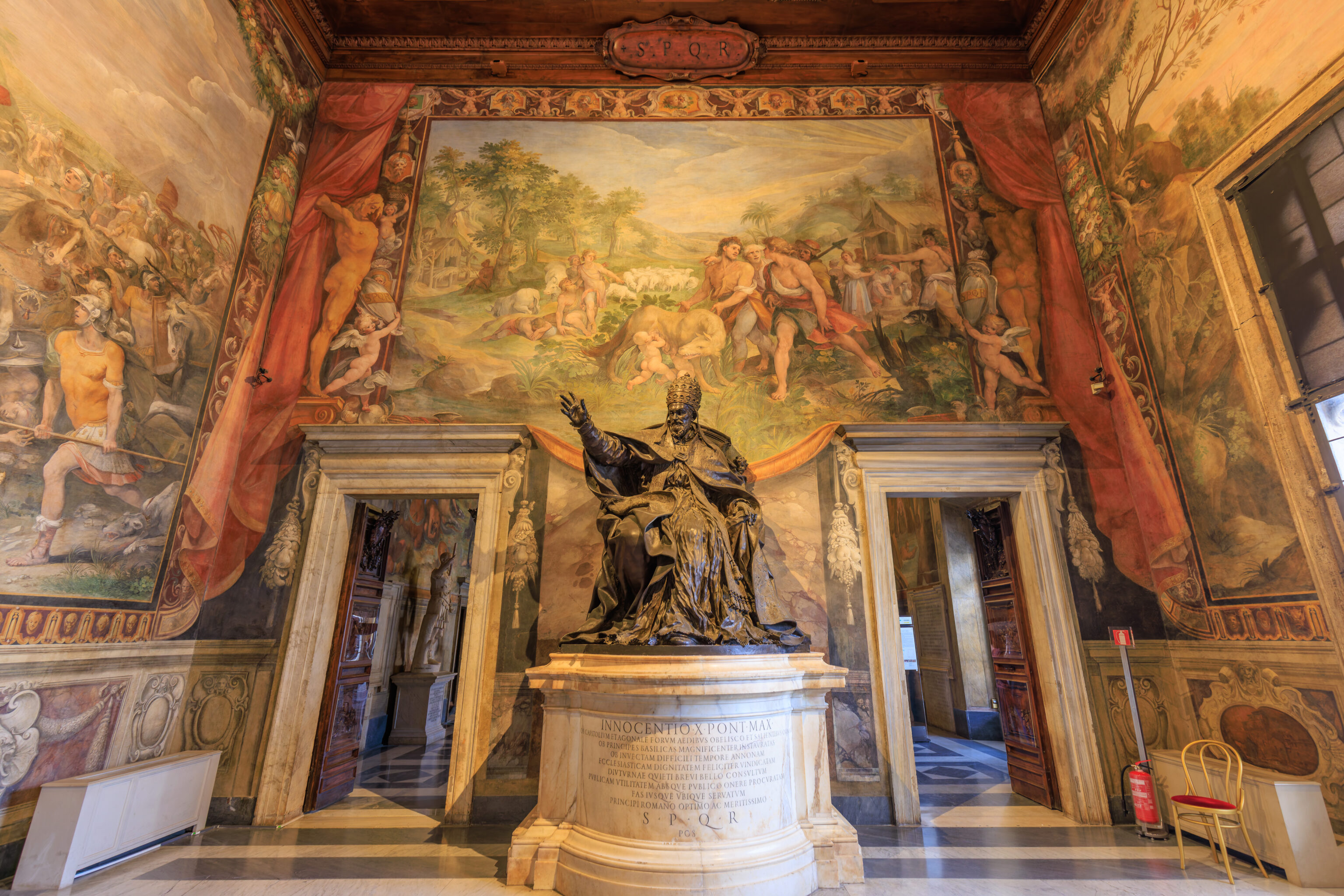
We ended up in this large hall with huge murals on all the walls.
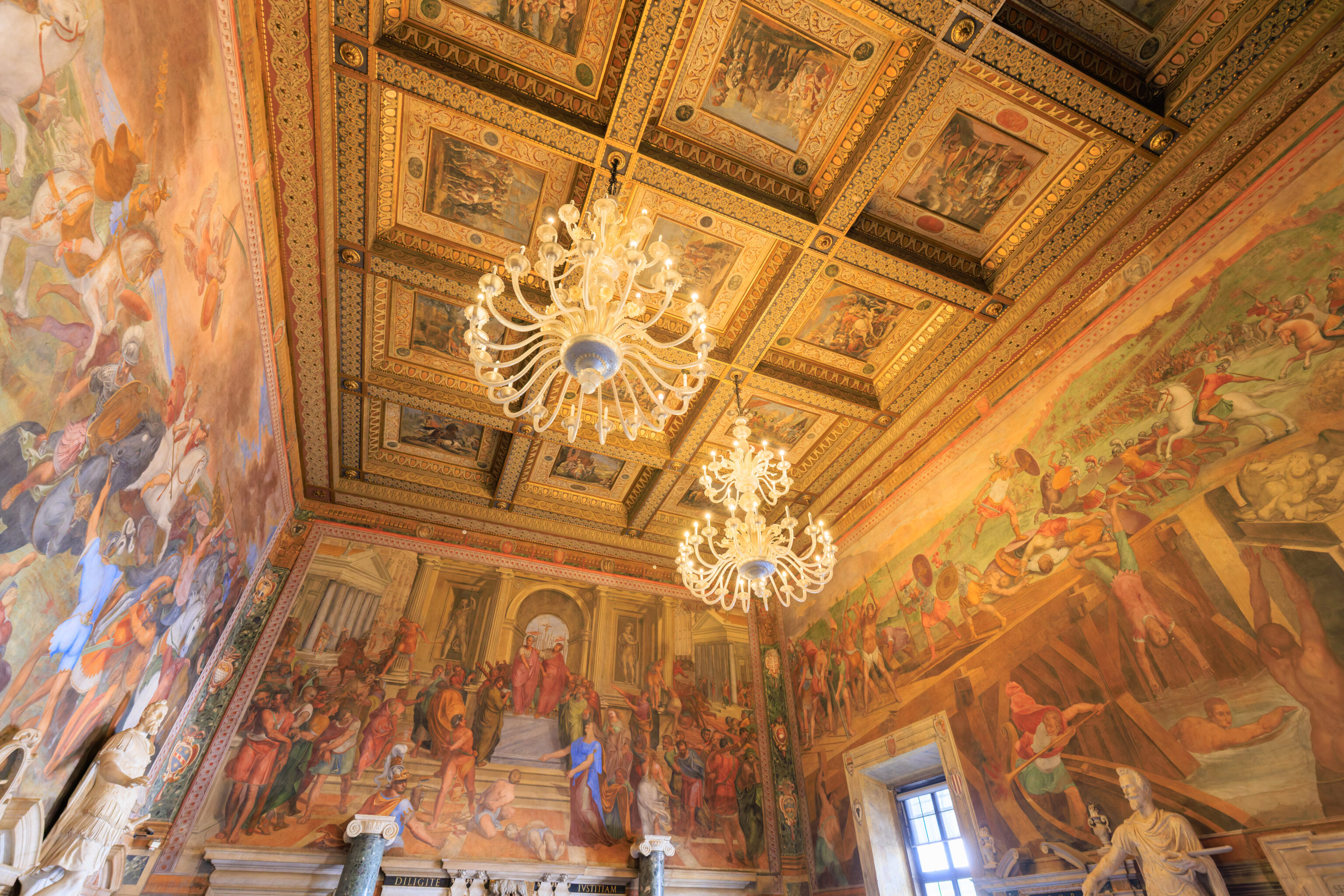
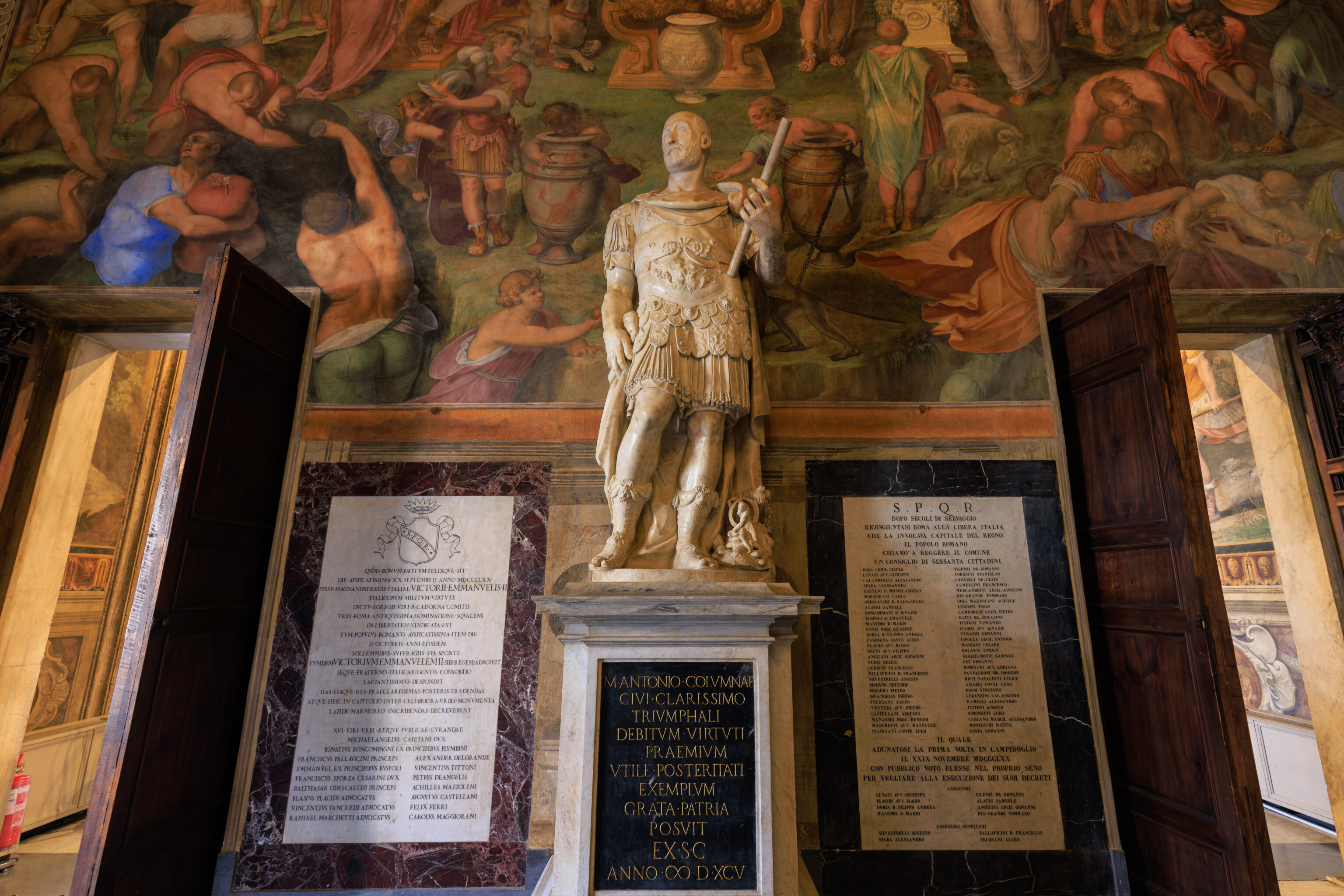
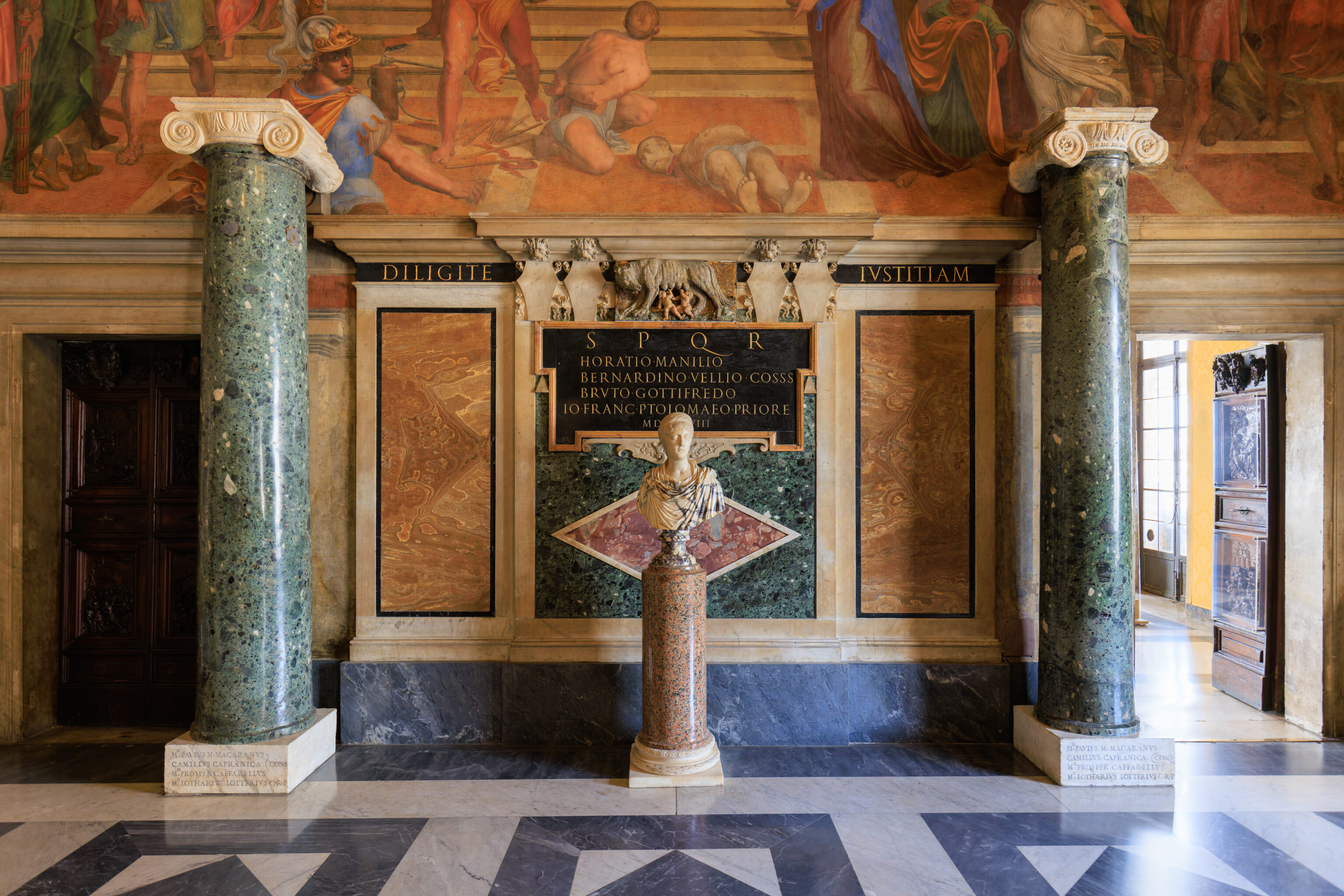
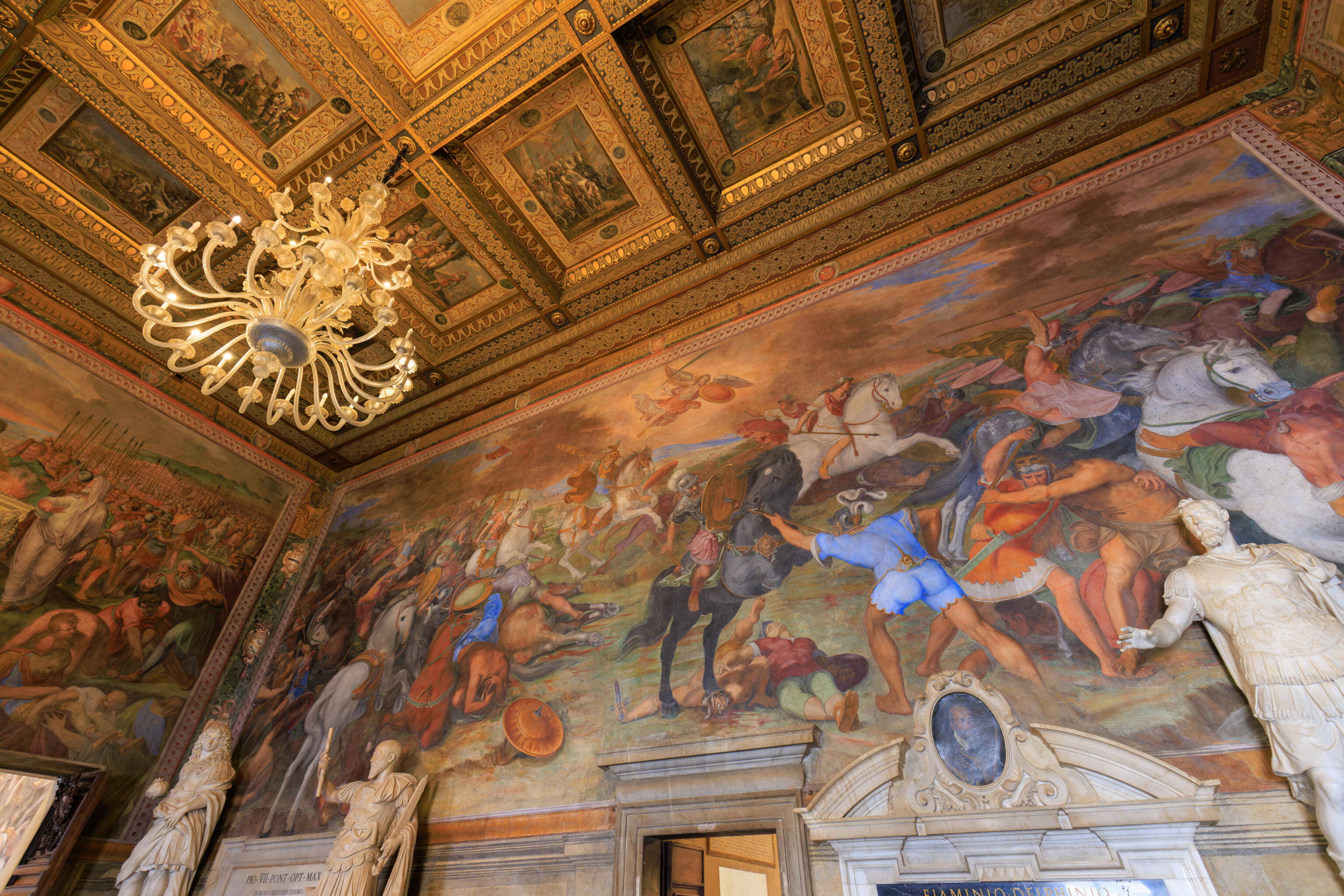
The next room was similar in design but much smaller.
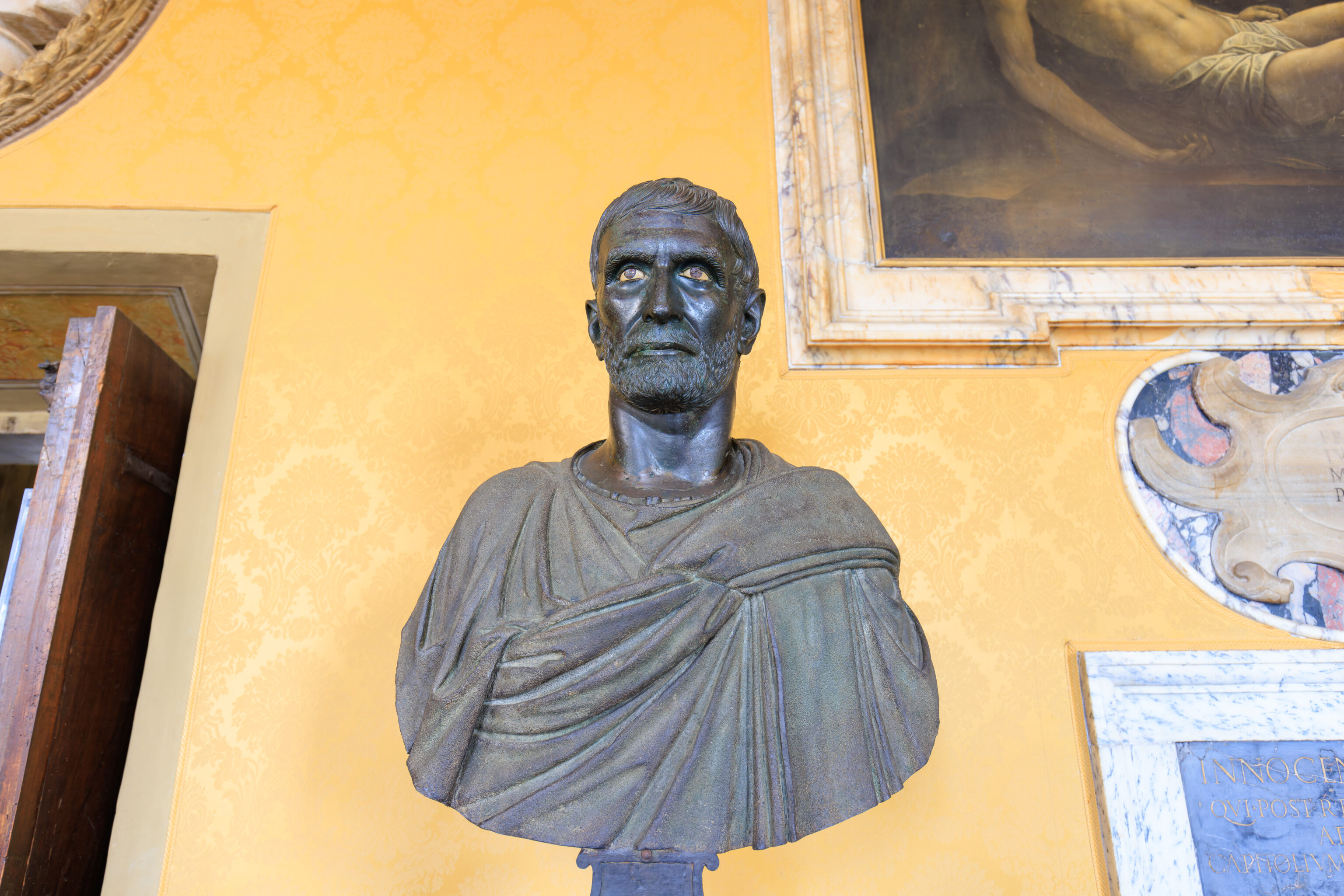
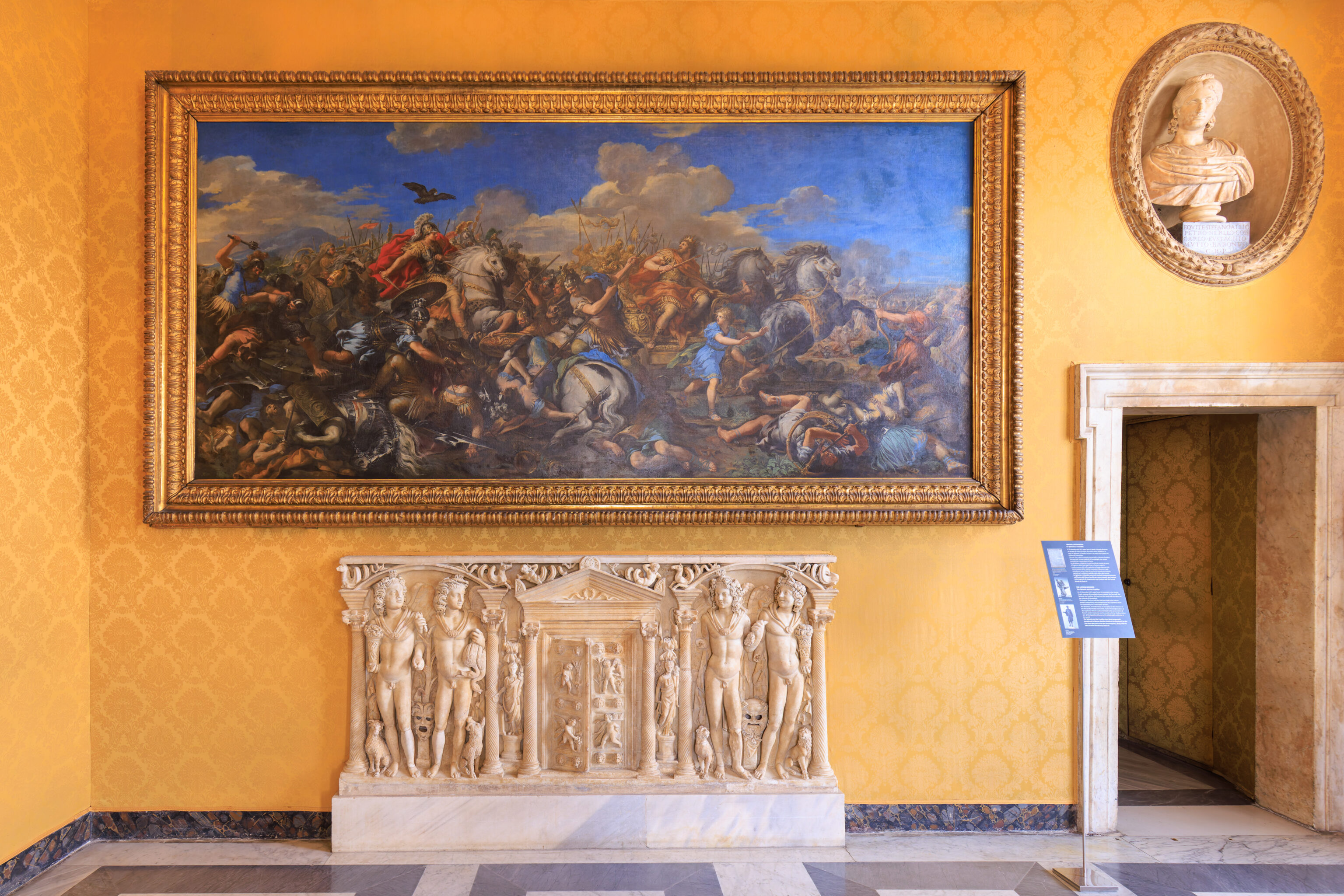
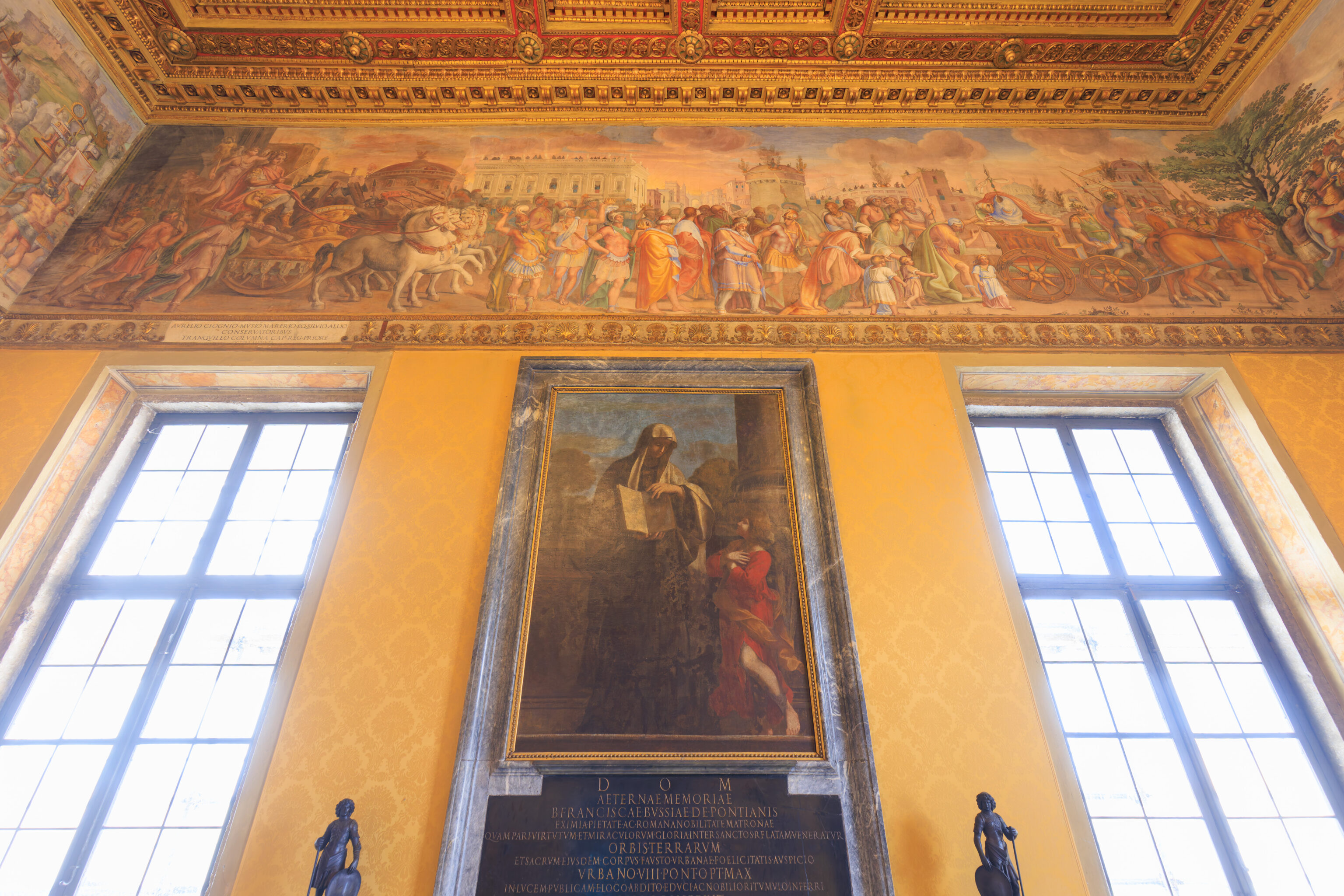
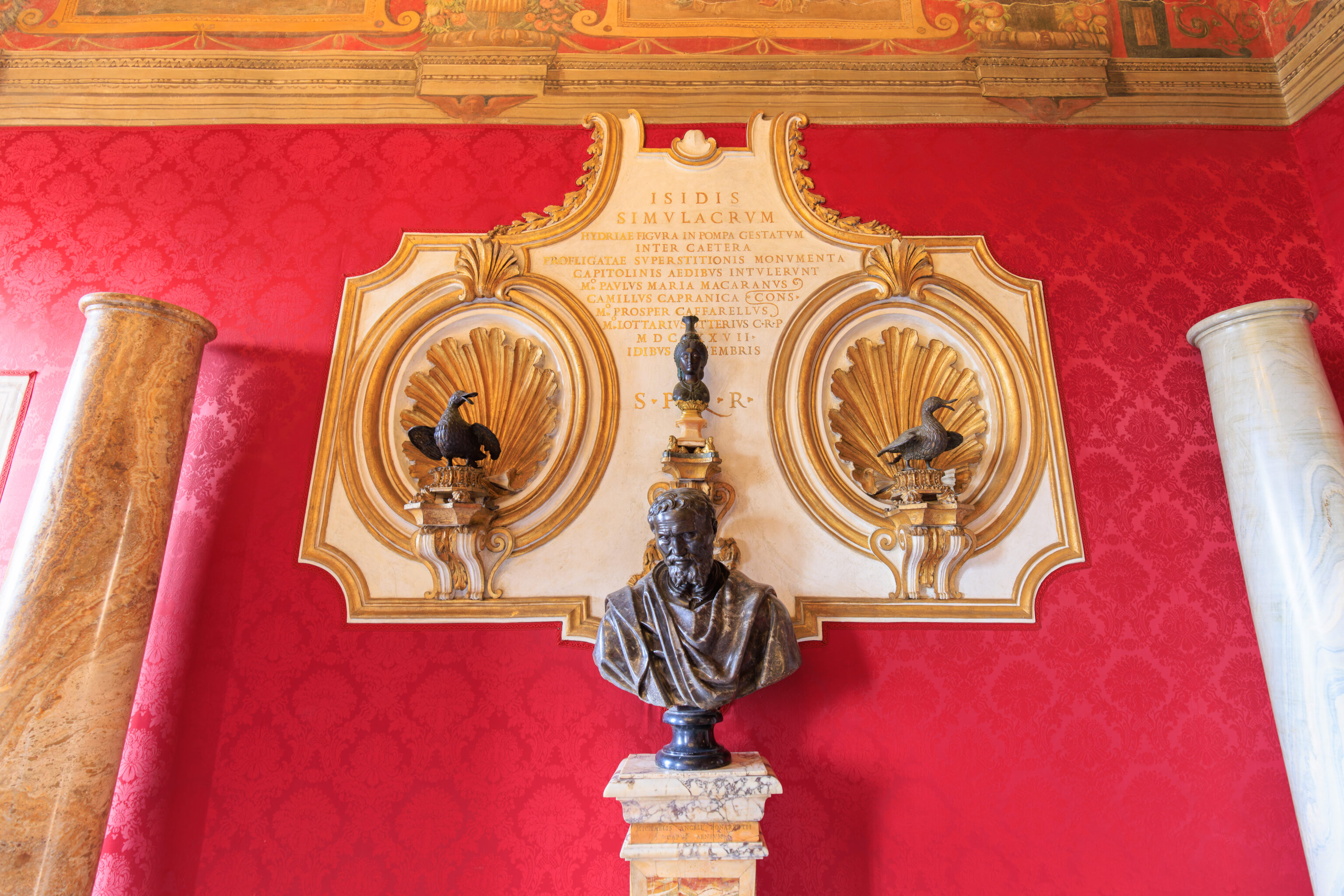
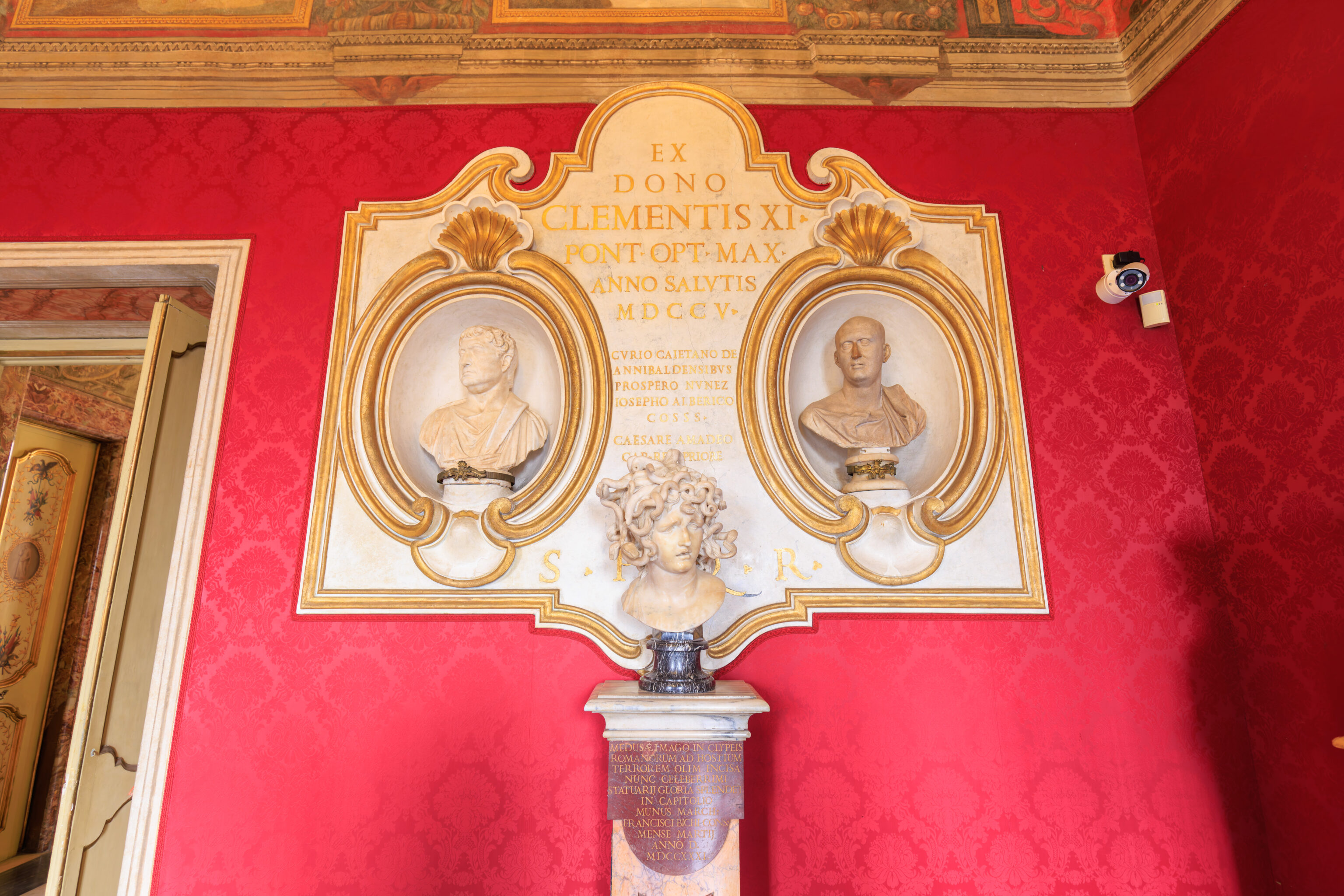
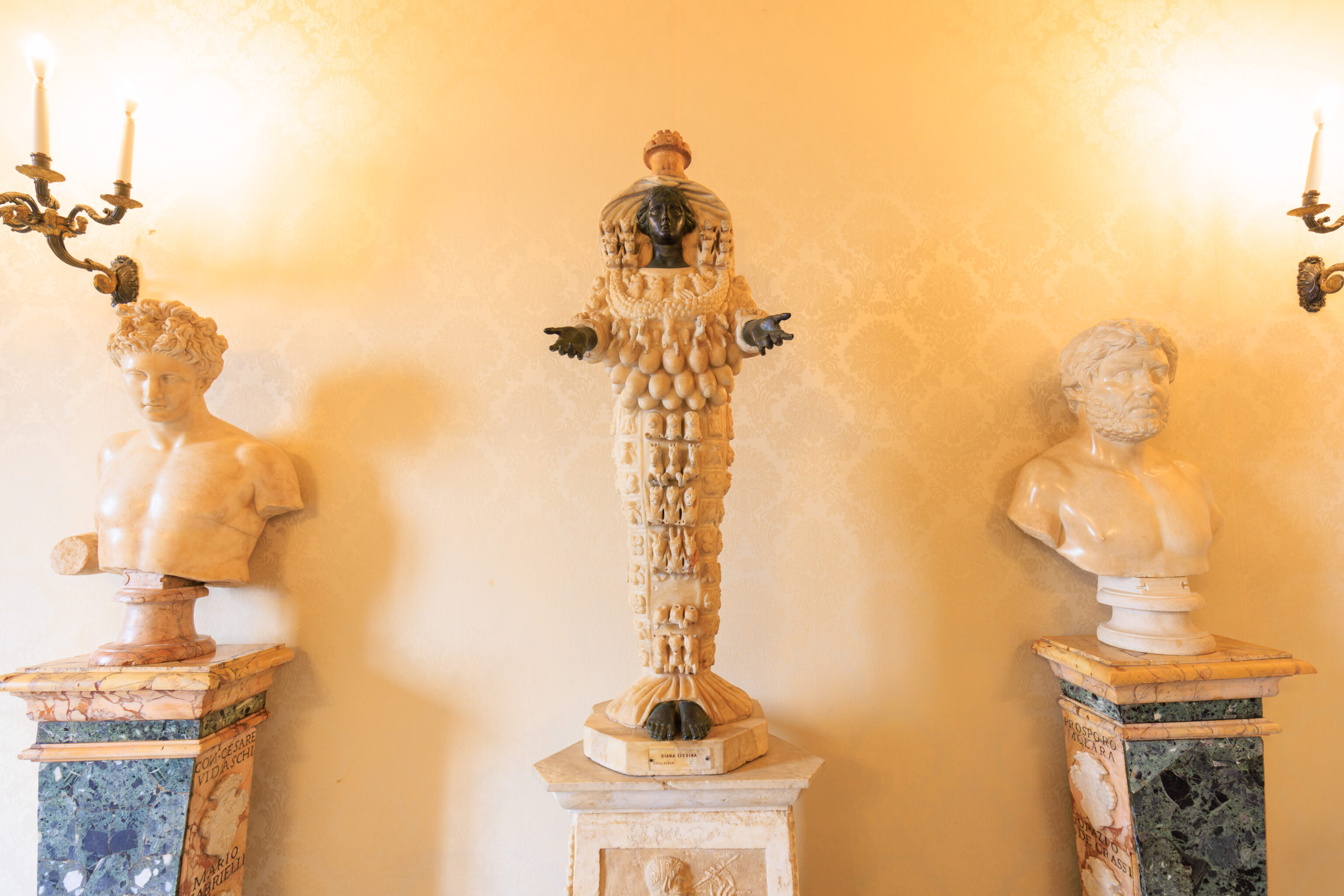
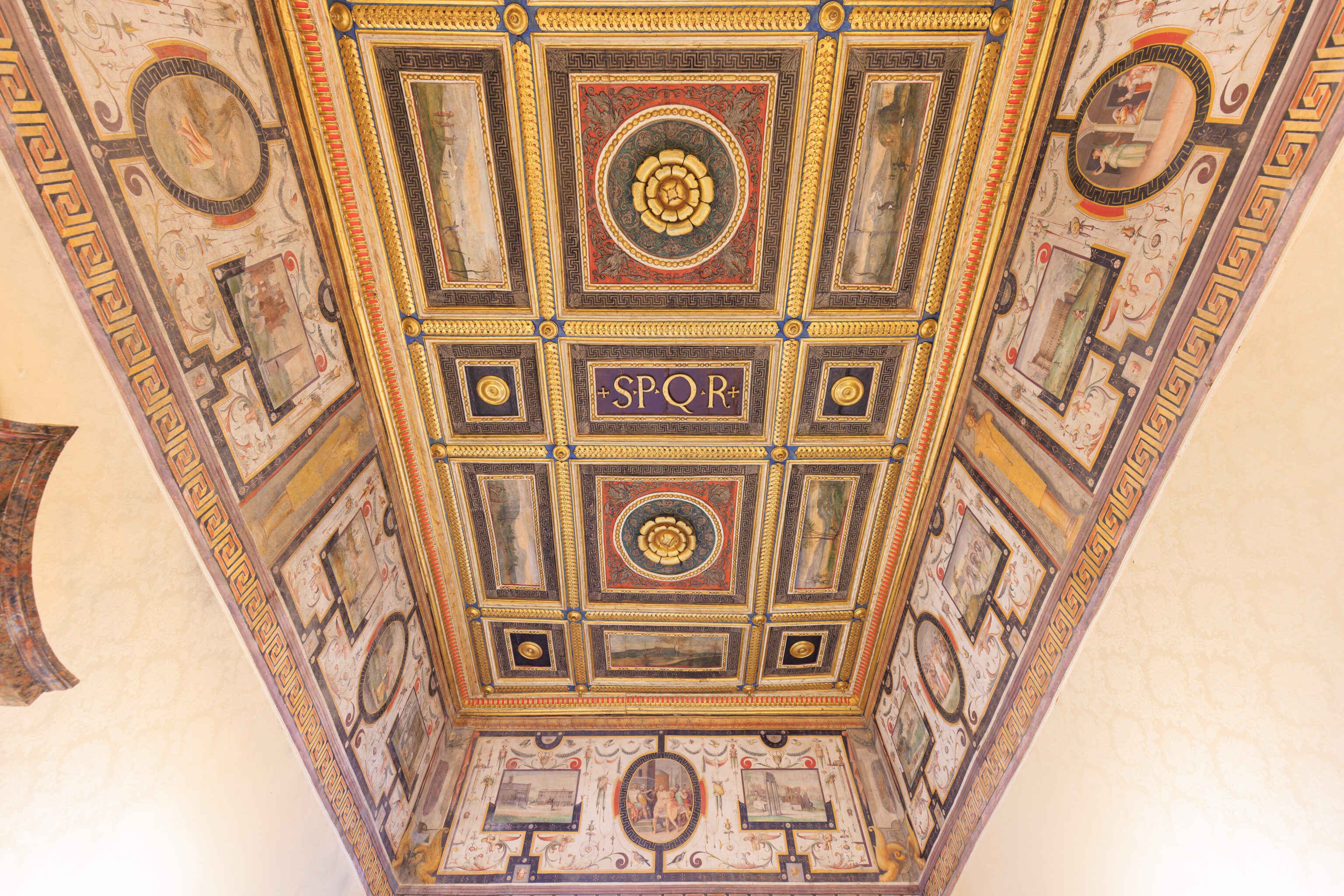
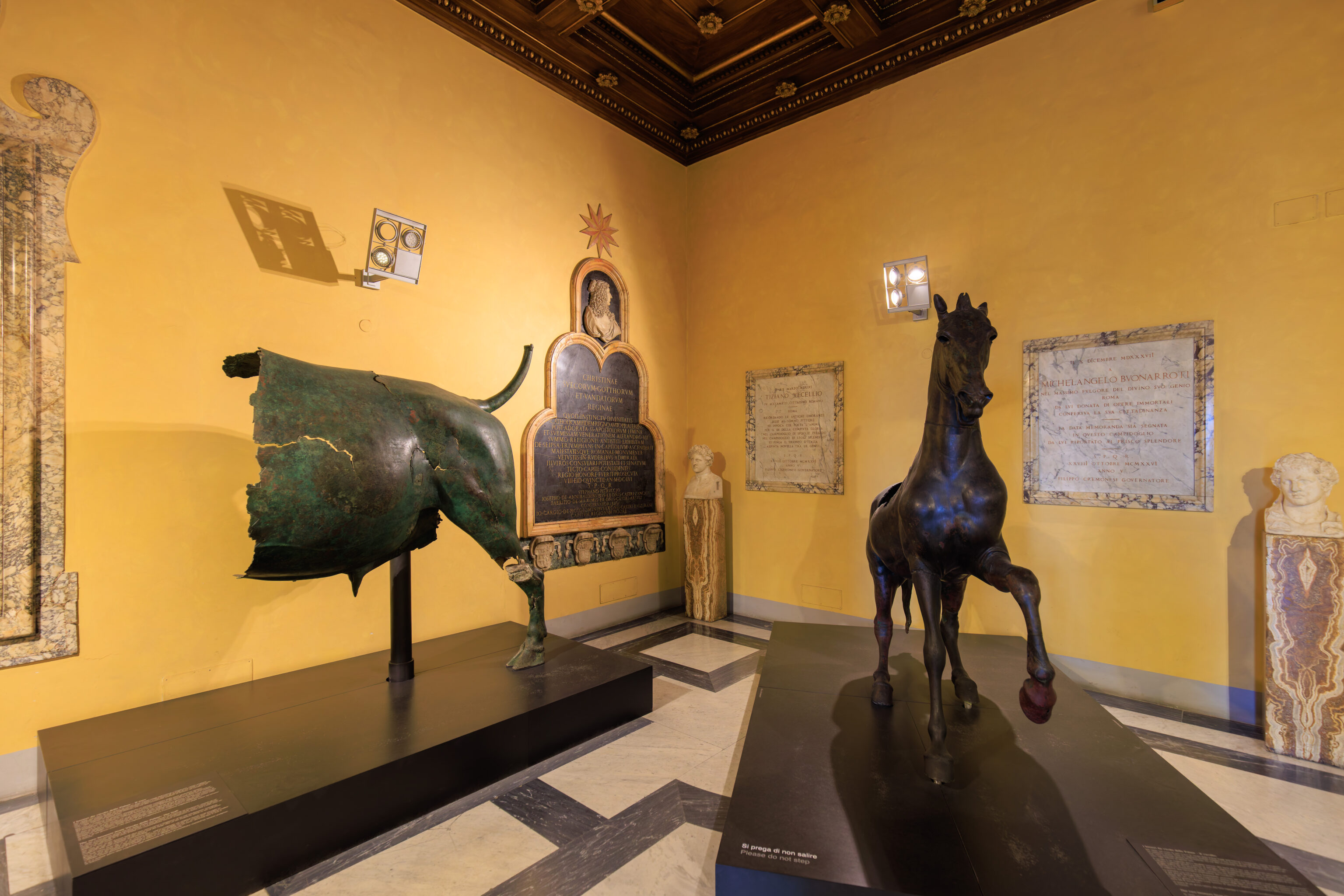
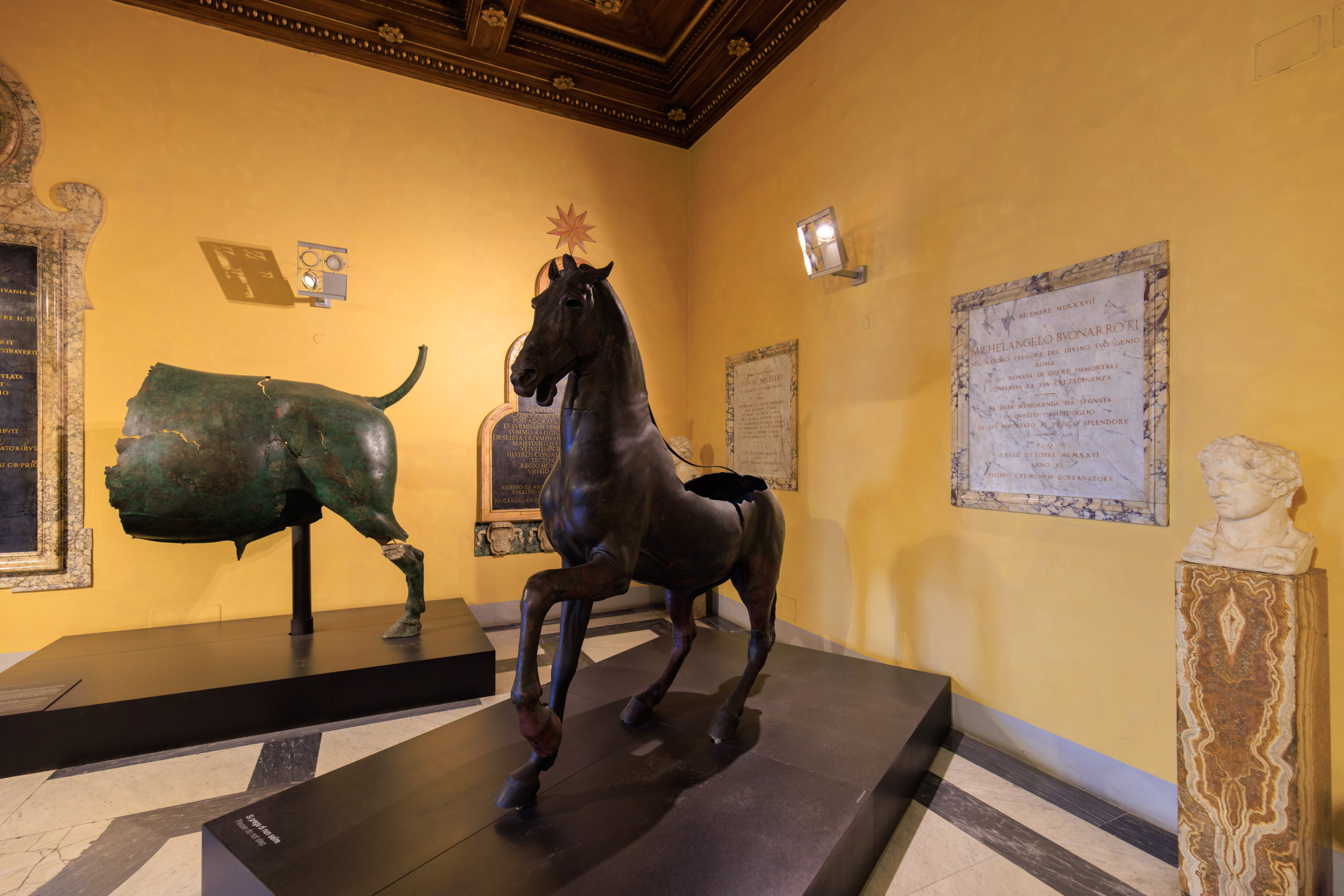
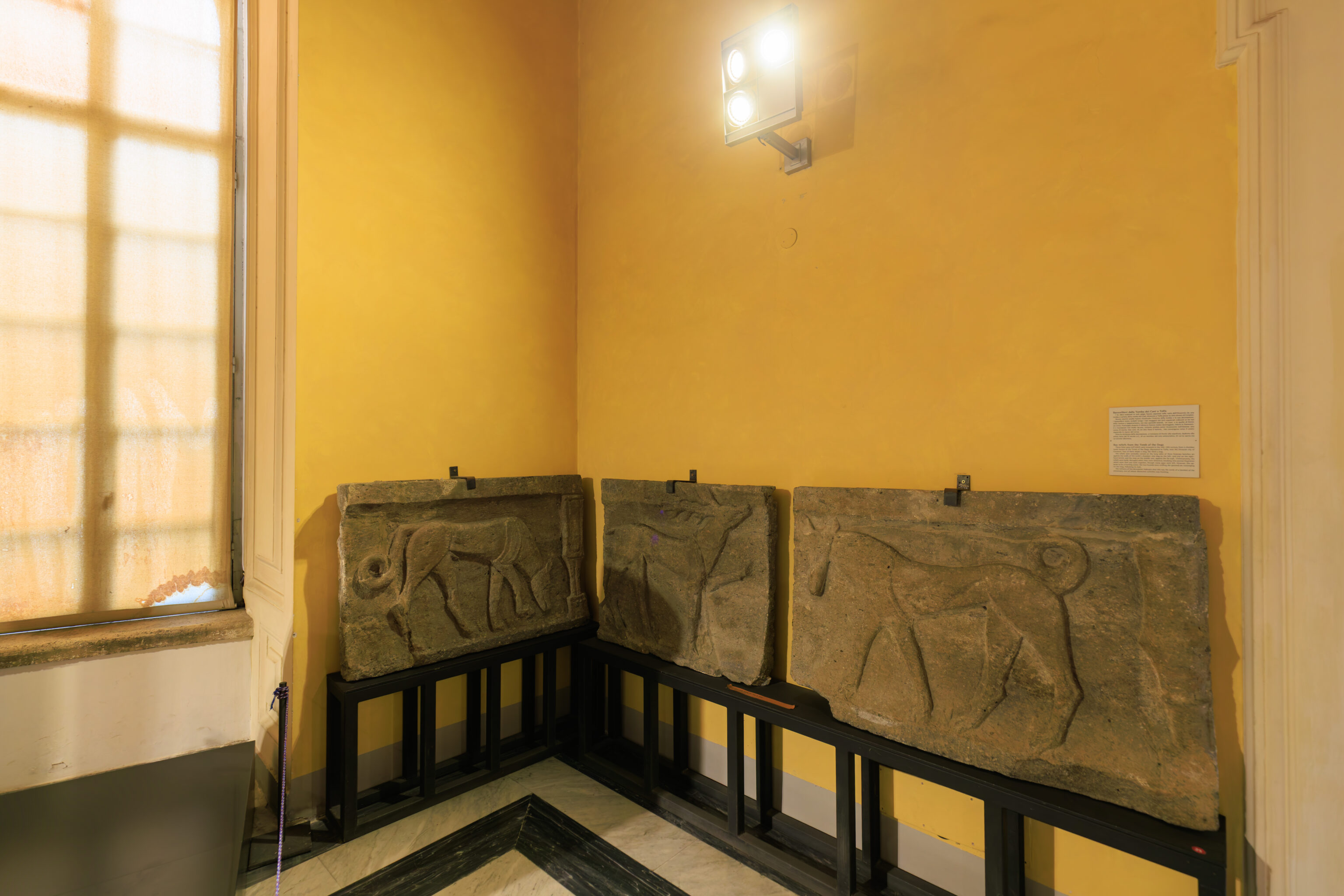
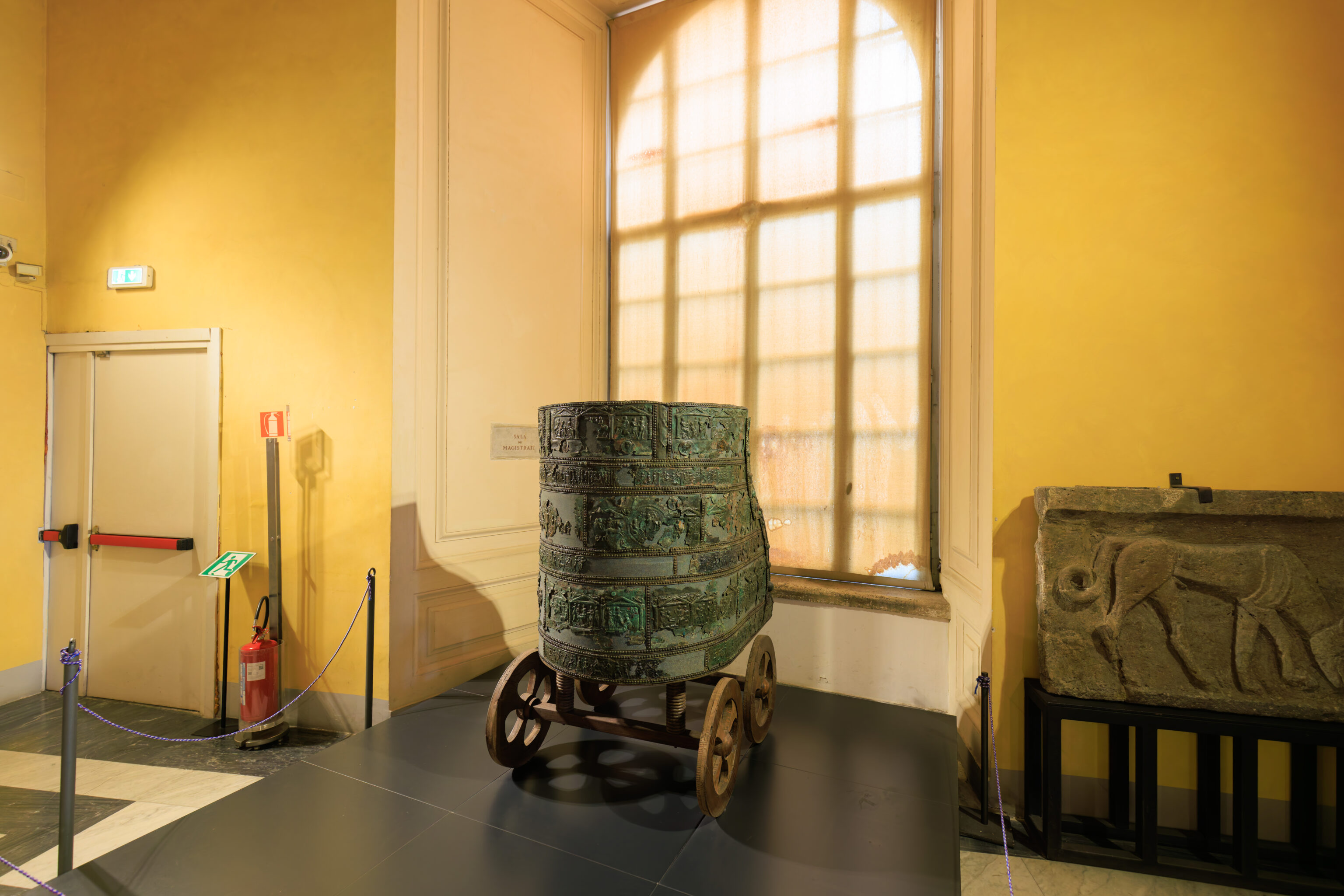
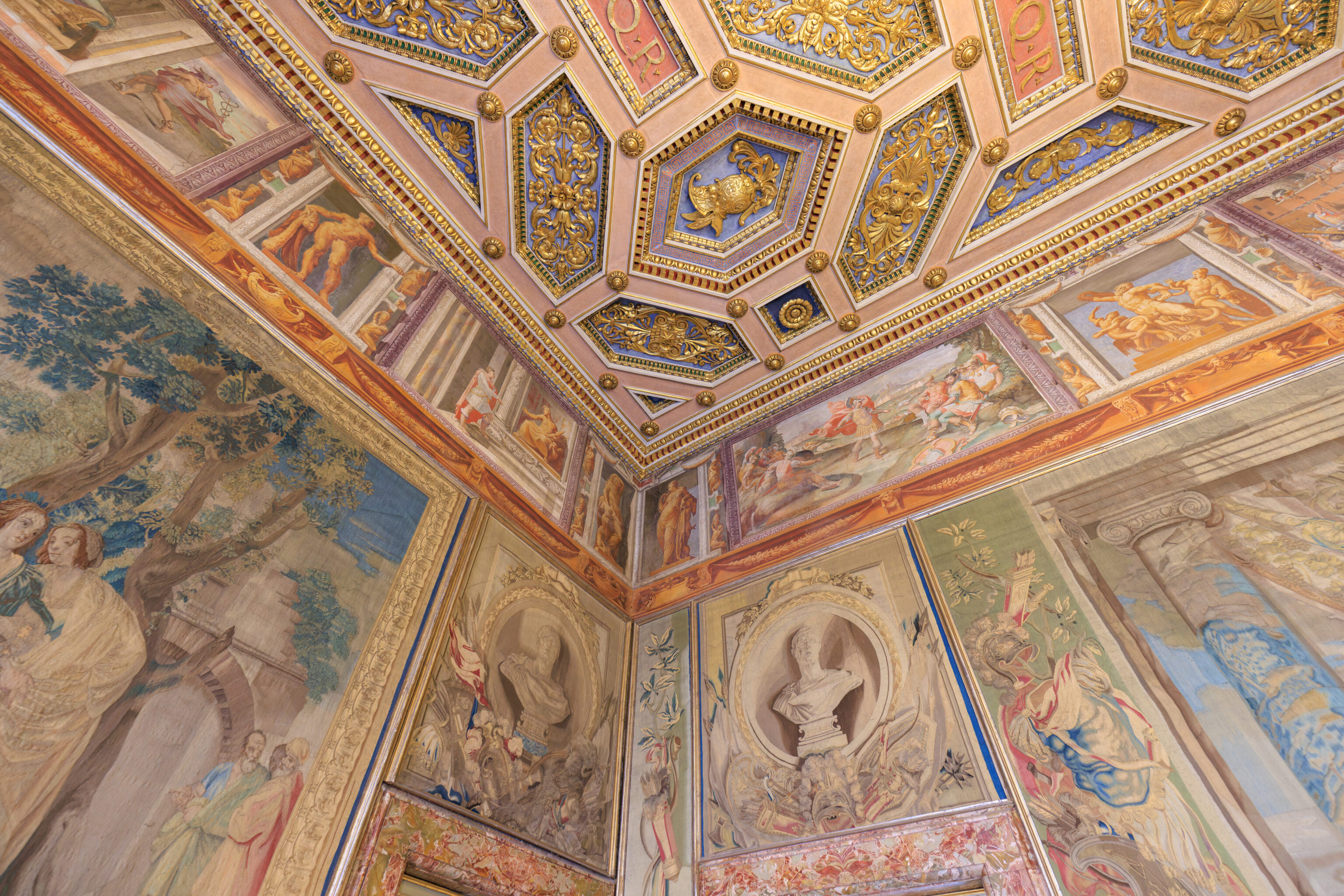
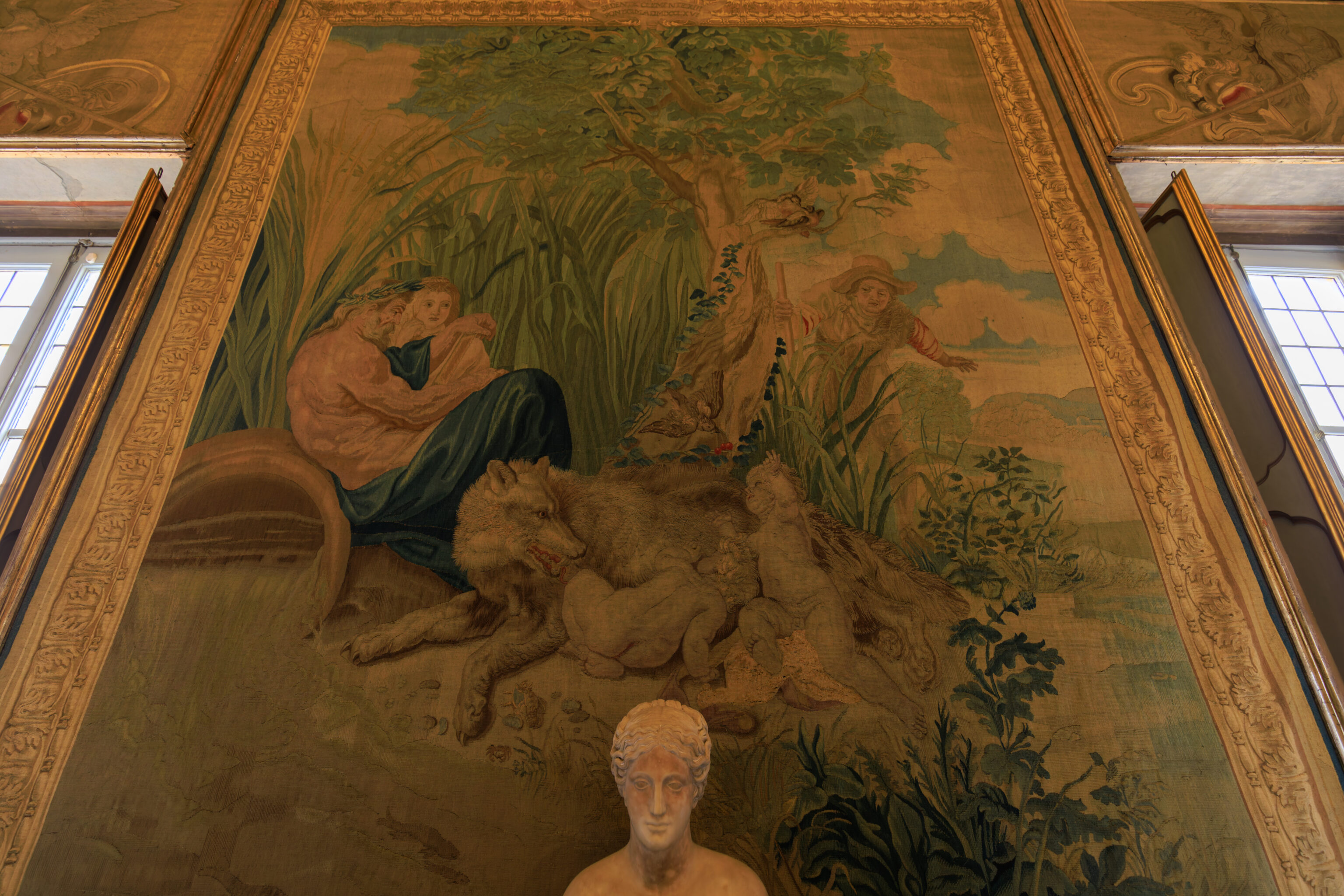
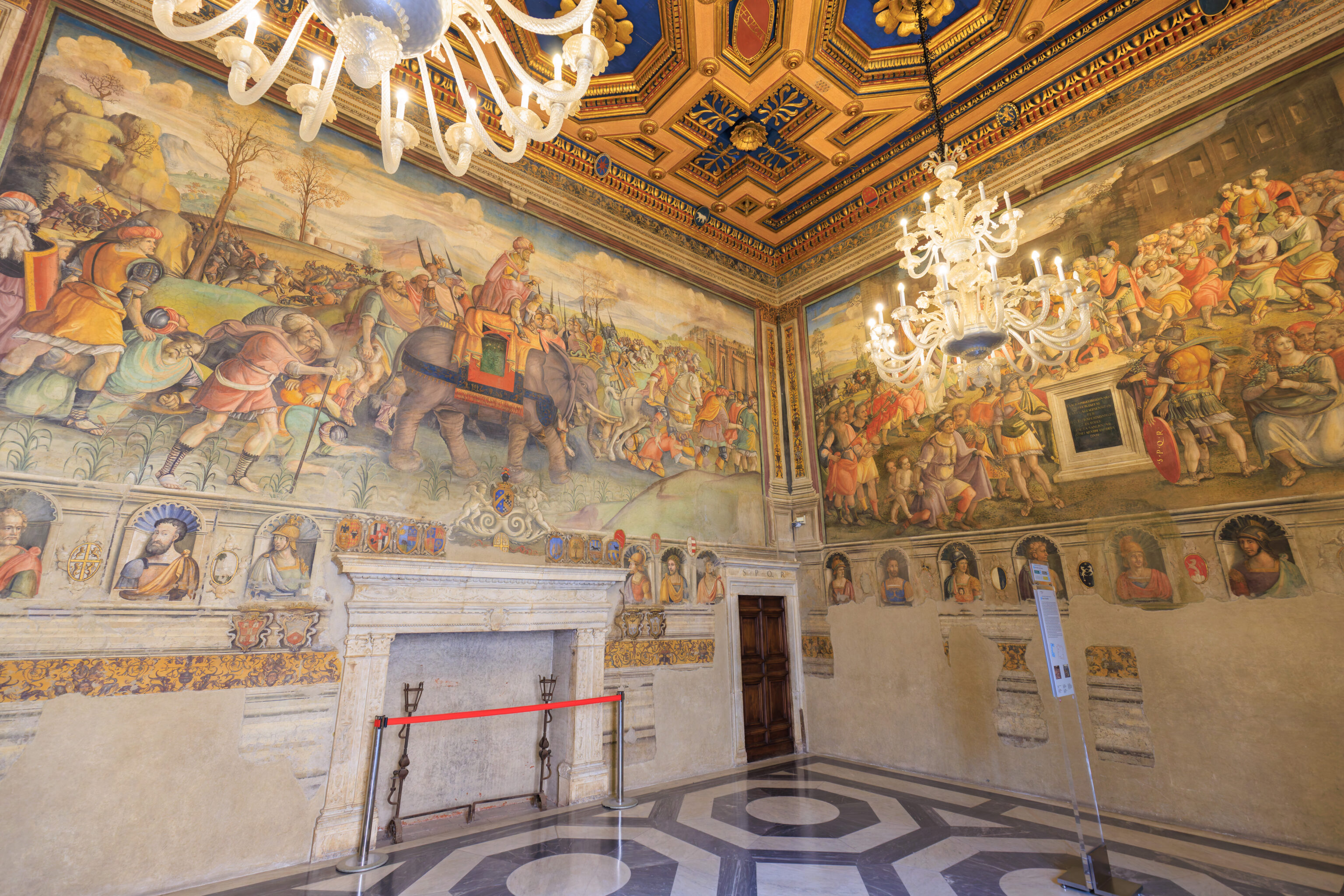
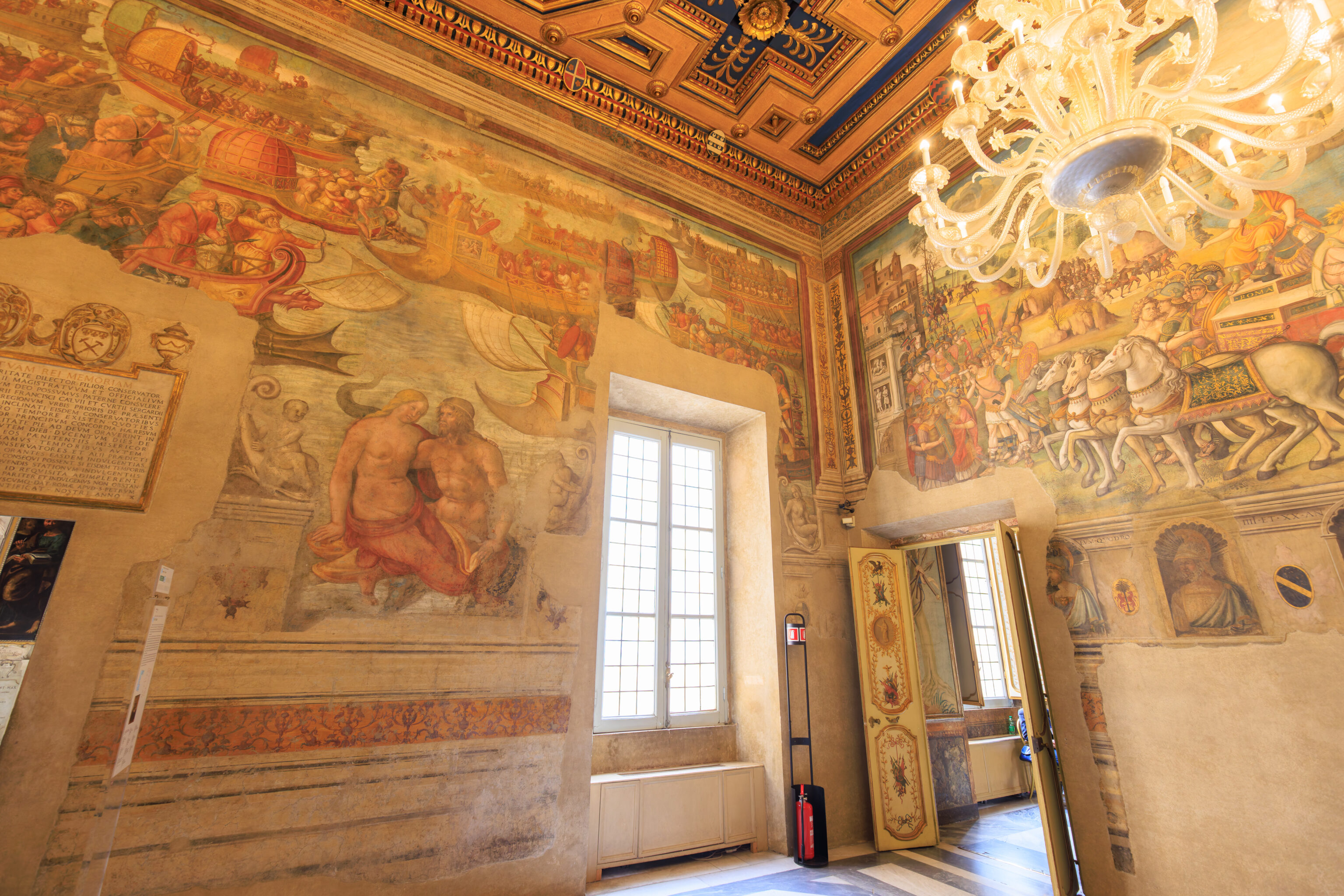


We continued walking through the Palazzo dei Conservatori.
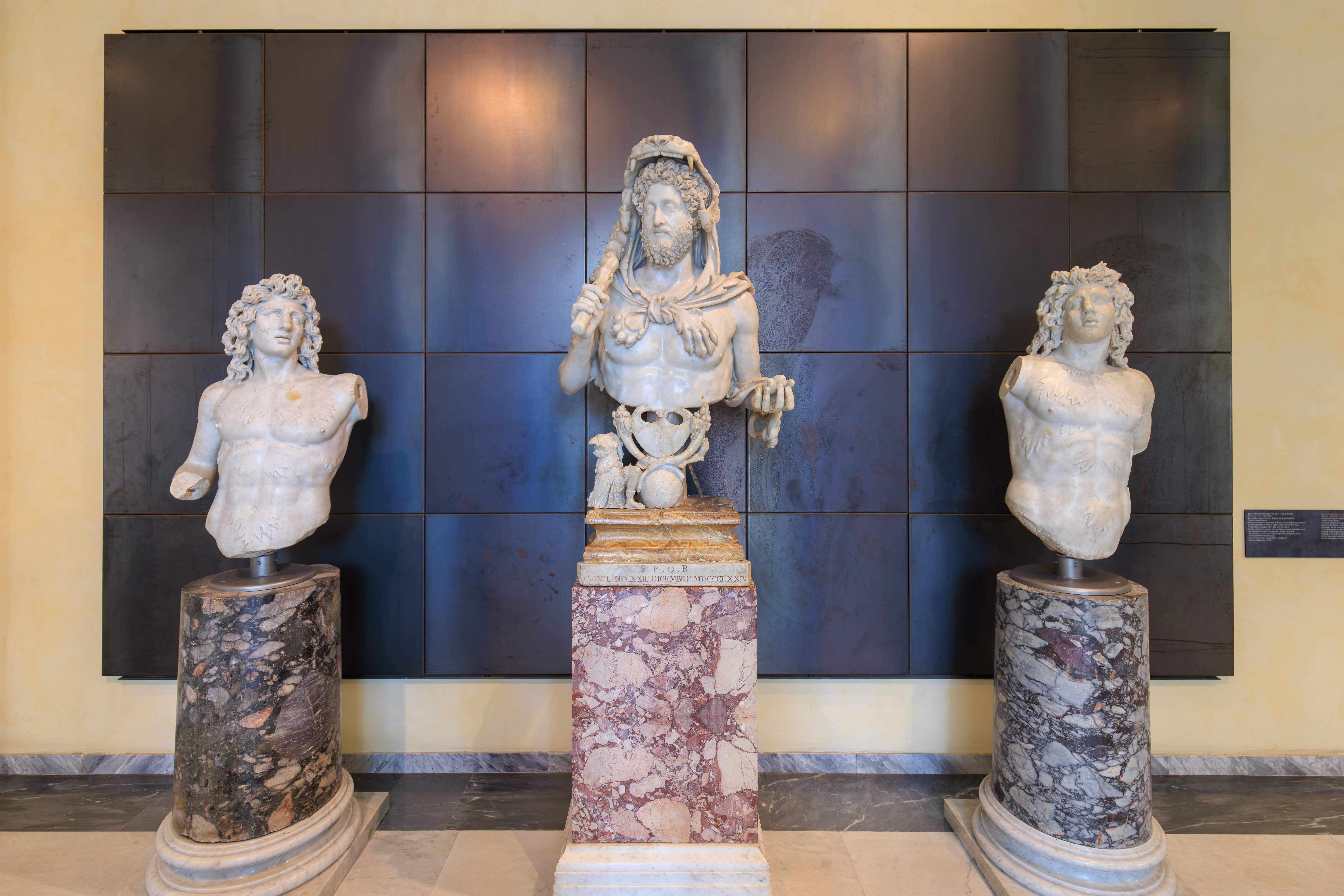
This bust at center, from the second century AD, depicts Roman Emperor Commodus cosplaying as Hercules.
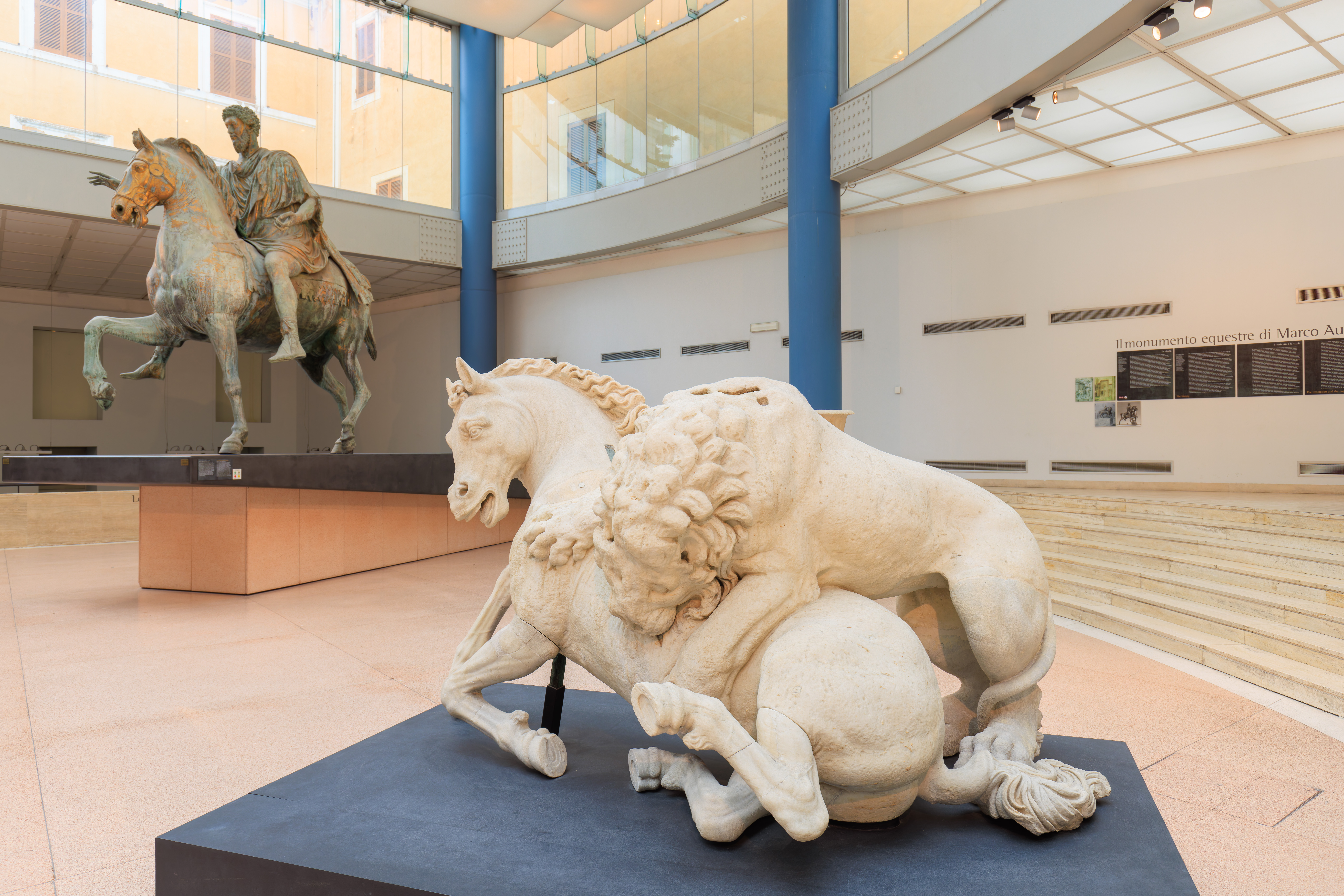
We ended up in a vast hall, the Marcus Aurelius Exedra, with a few fantastic sculptures in the bright and airy space. This one depicts a lion eating a horse! It is extremely detailed.
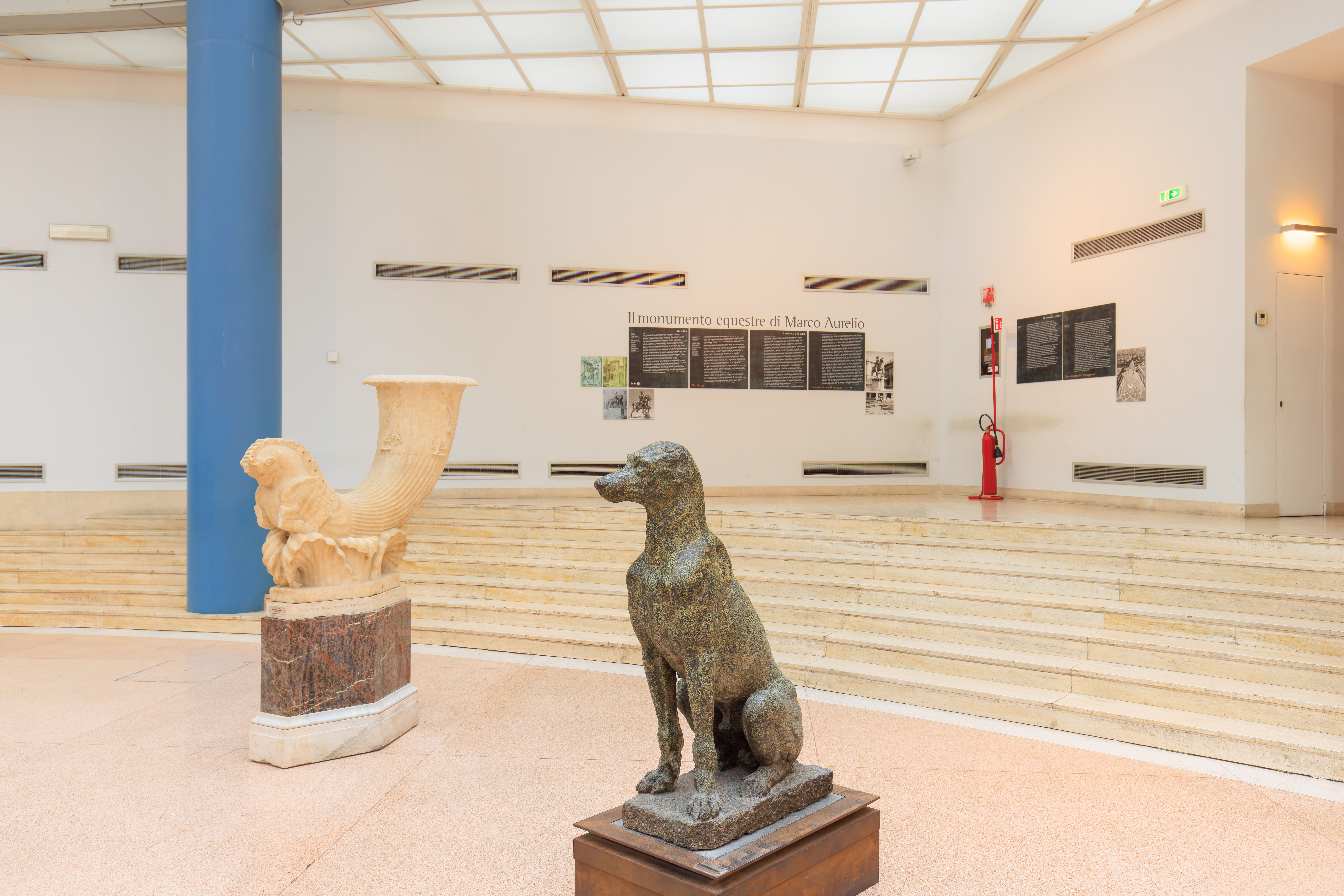
Here, we have a dog and something a bit unknown to the left.
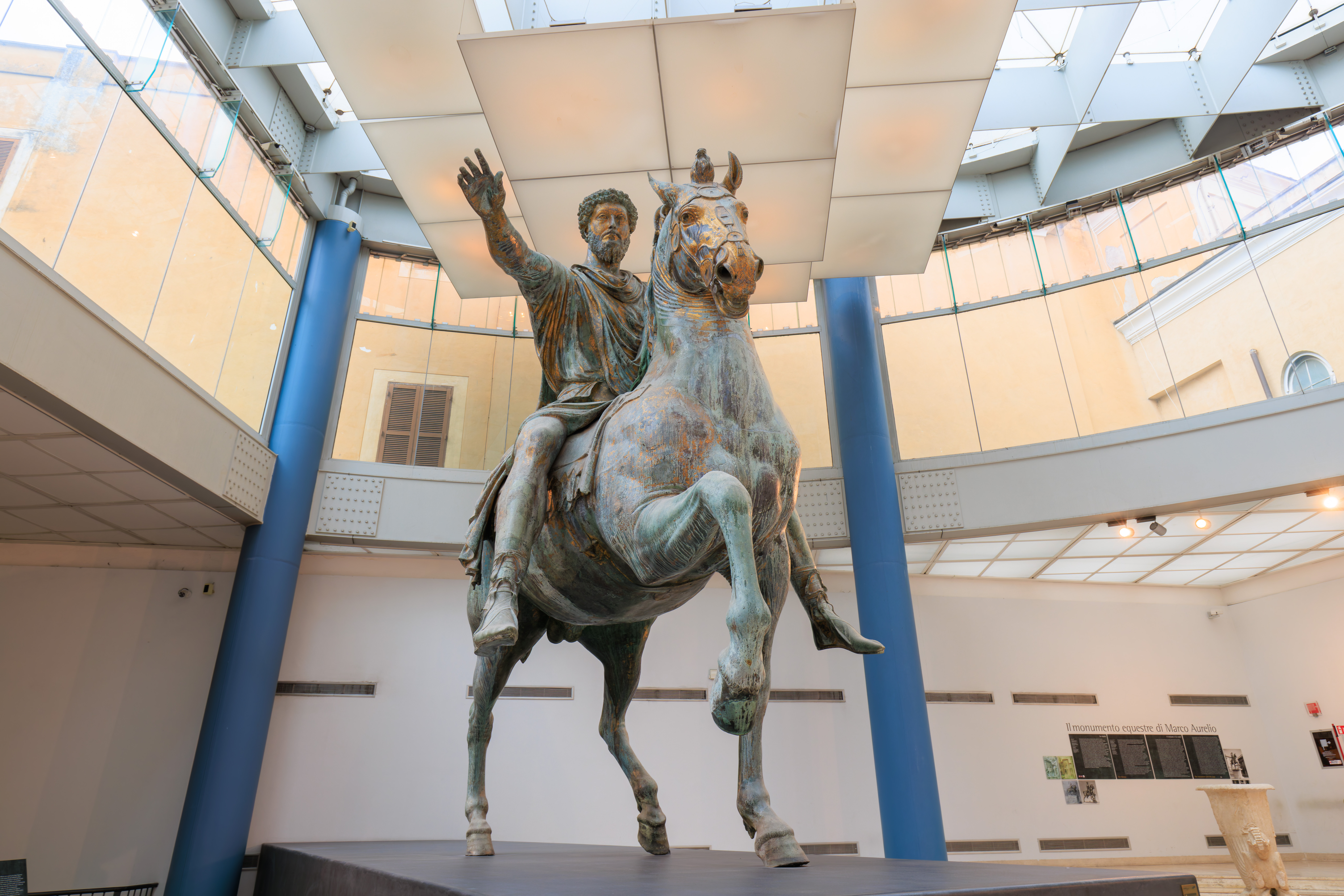
This equestrian statue of Marcus Aurelius is the original statue that stood outside in the Piazza del Campidoglio. It was placed here to shield it from the elements.
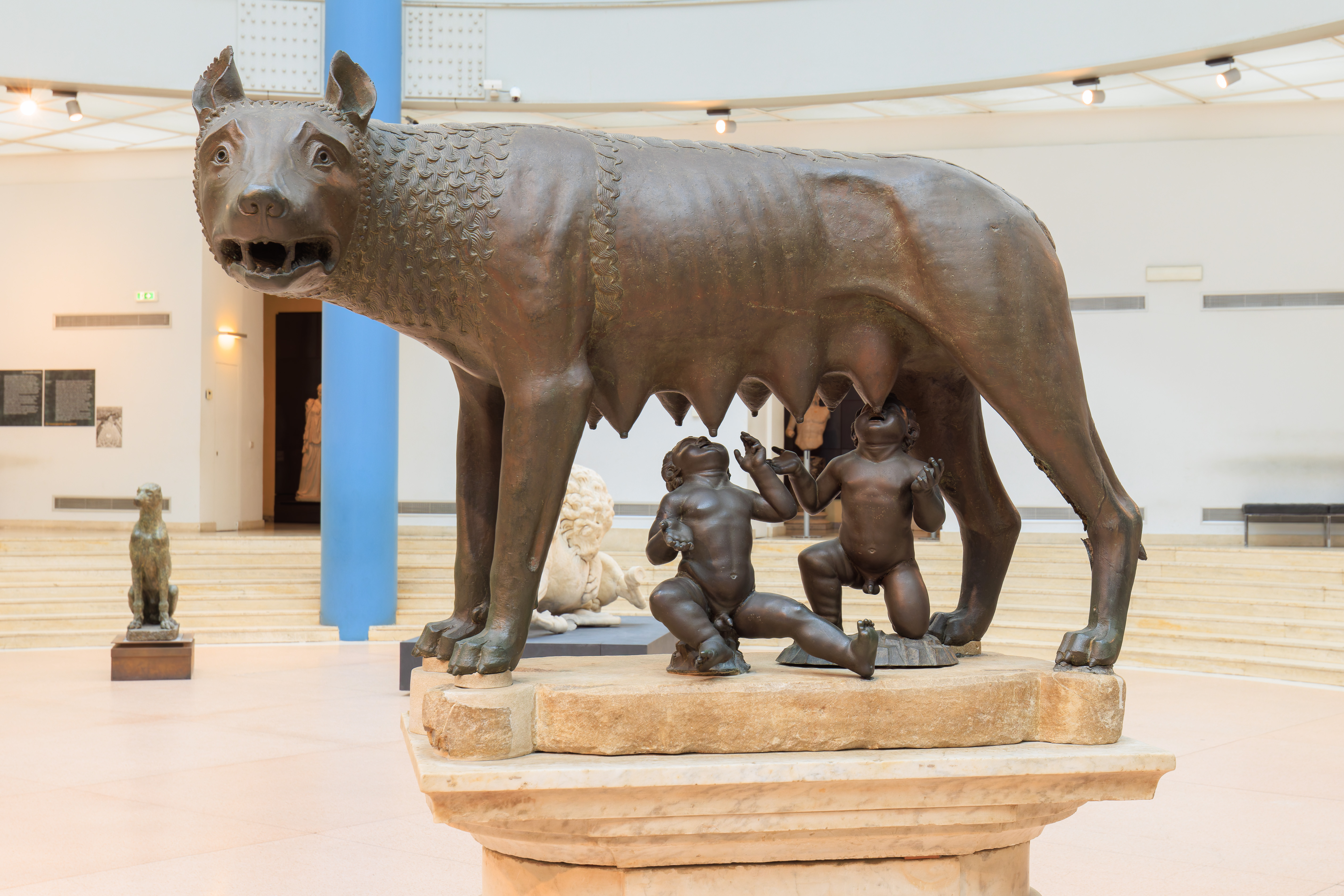
This bronze sculpture is identified as the Capitoline She-wolf. It depicts the origin story of Rome with the twins Romulus and Remus being nursed by a wolf.
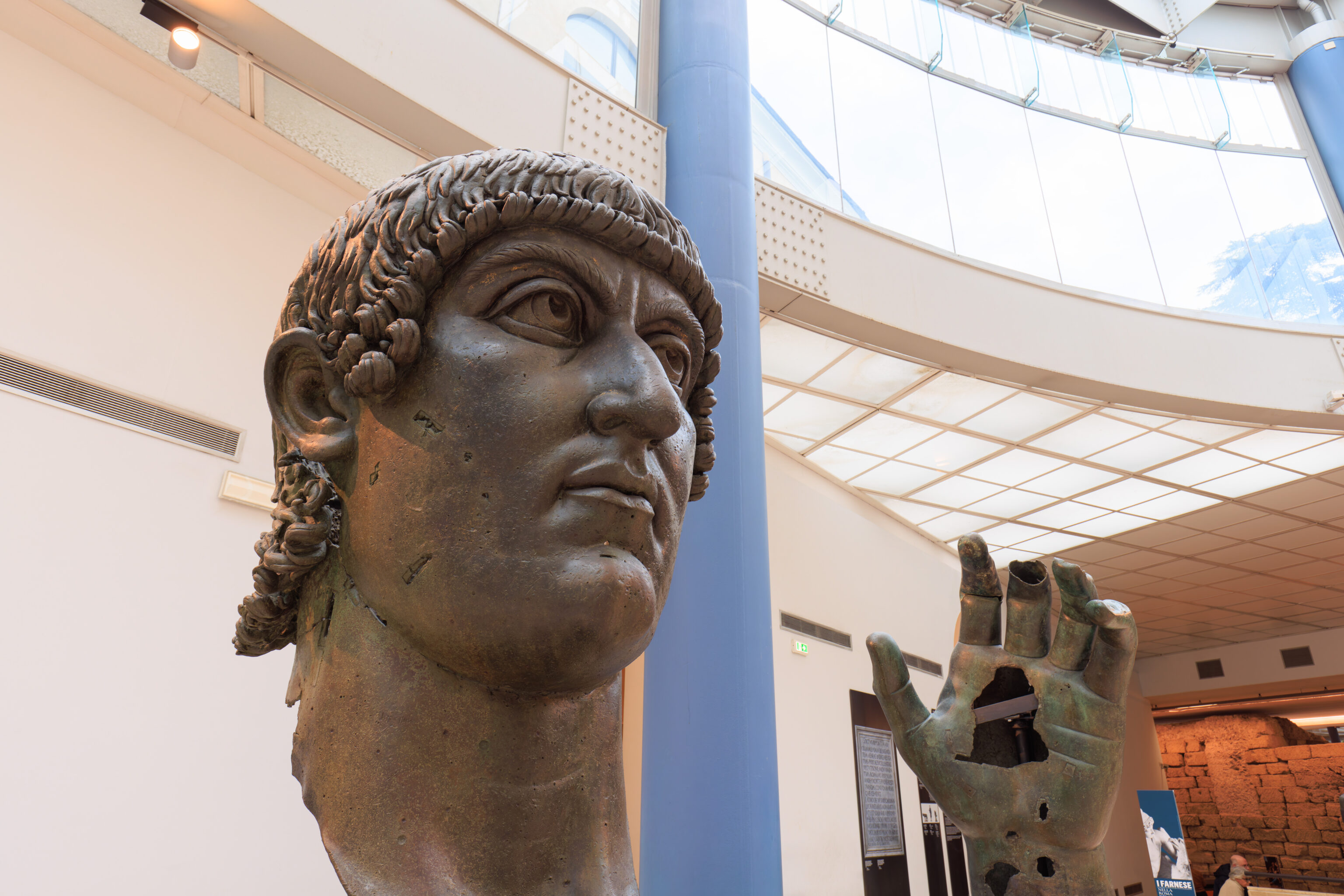
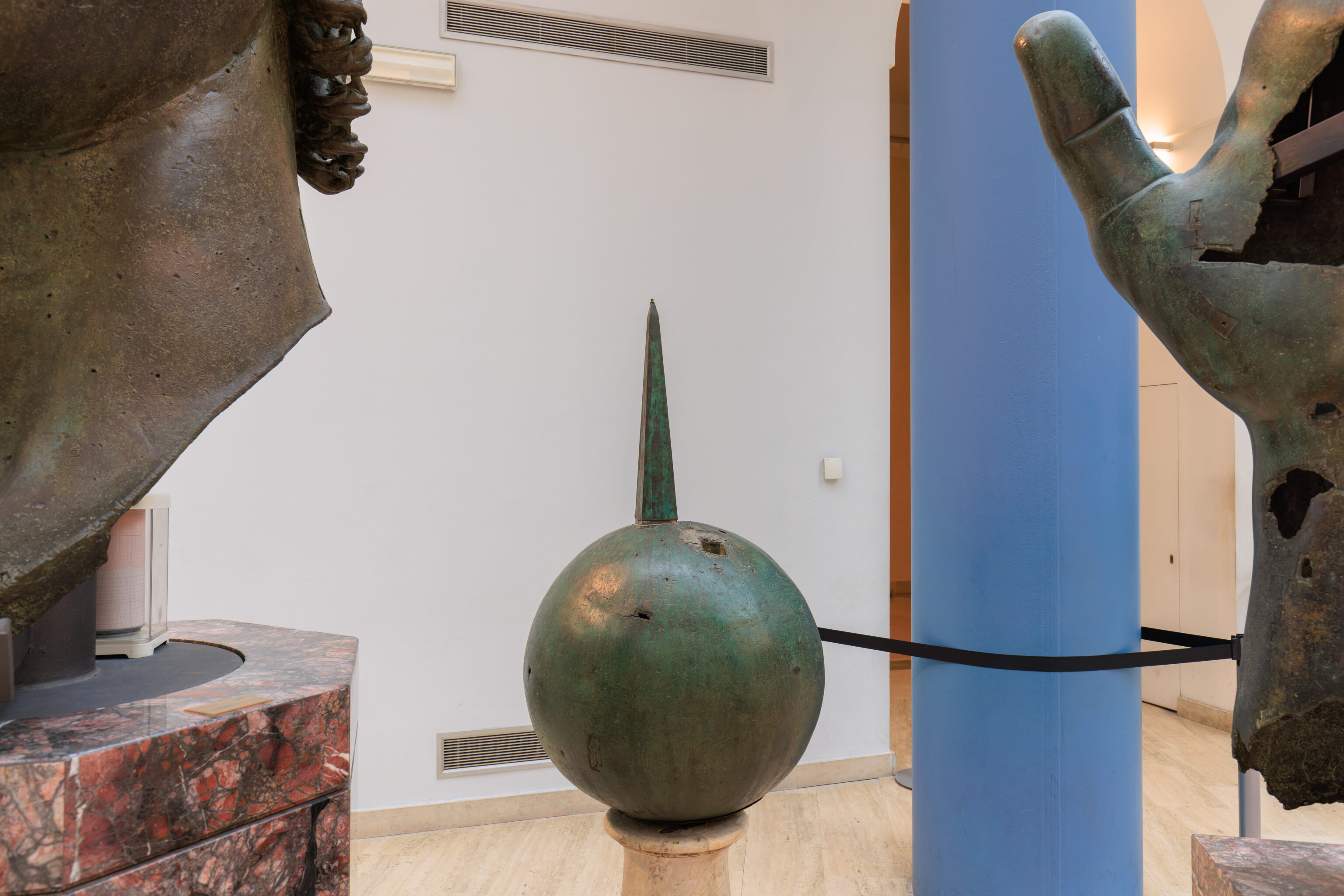
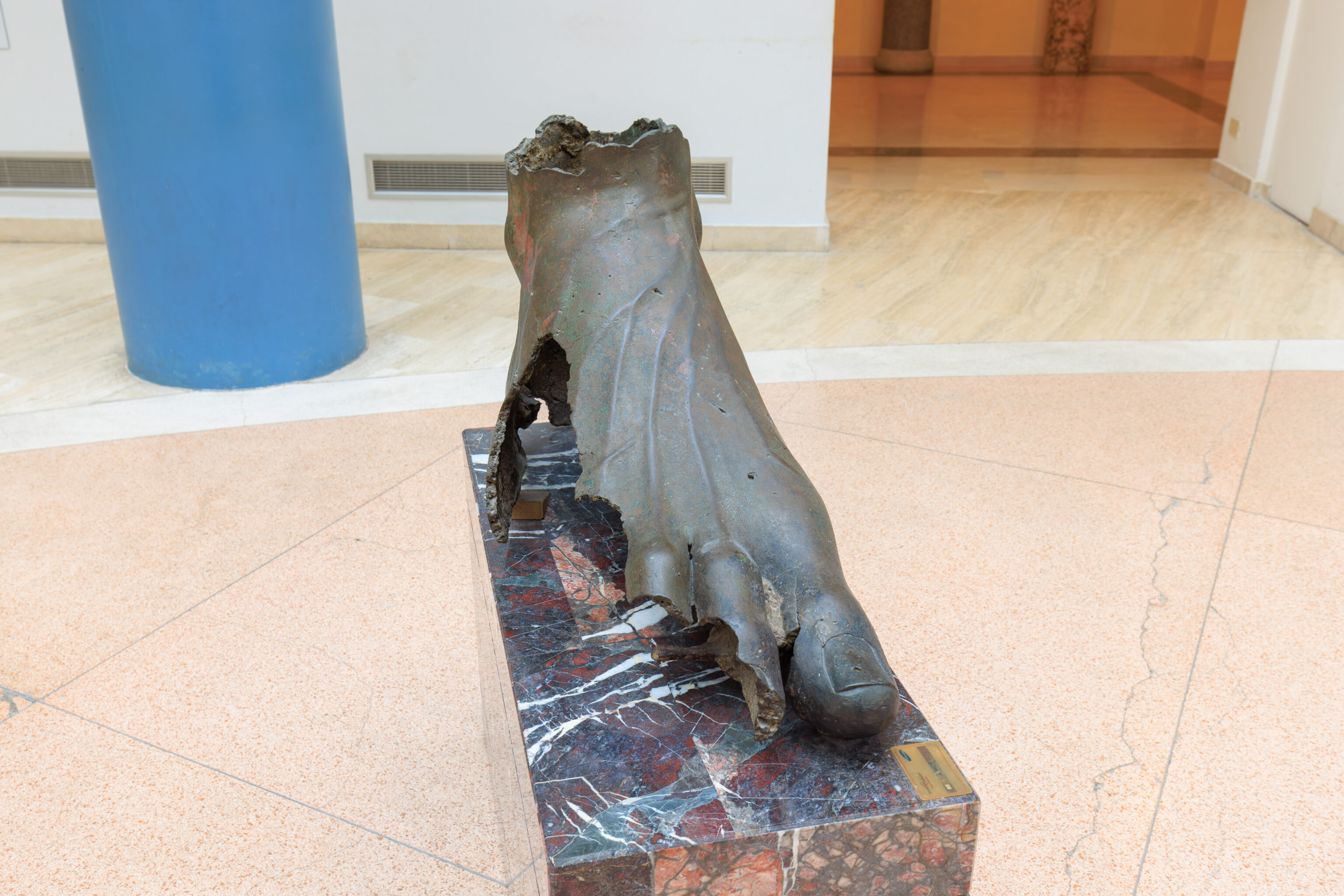
When we first entered the Capitoline Museums, we saw the remnants of a large statue of Constantine the Great. These are pieces of a bronze statue of Constantine.

This is described as a base with greyhounds.
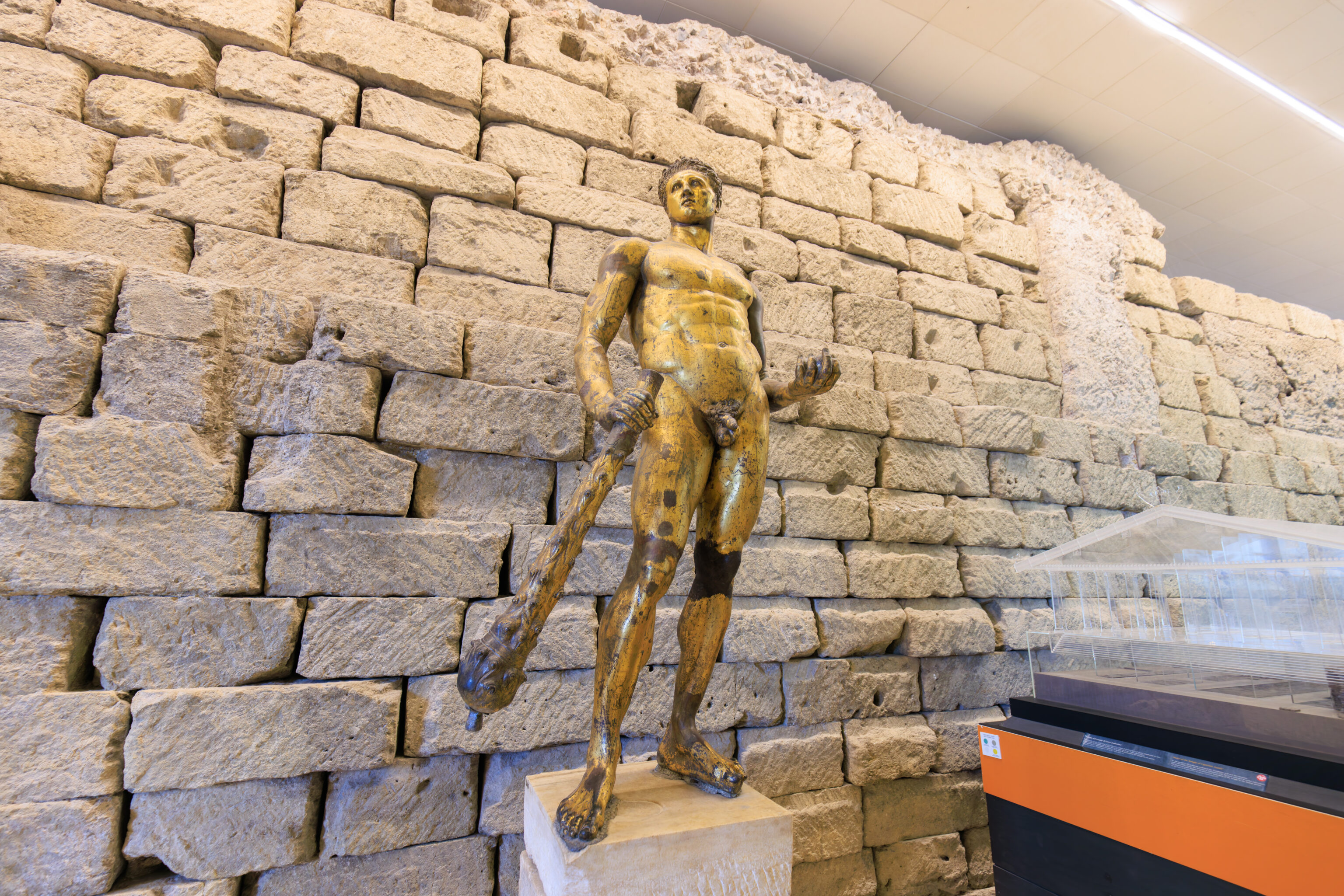
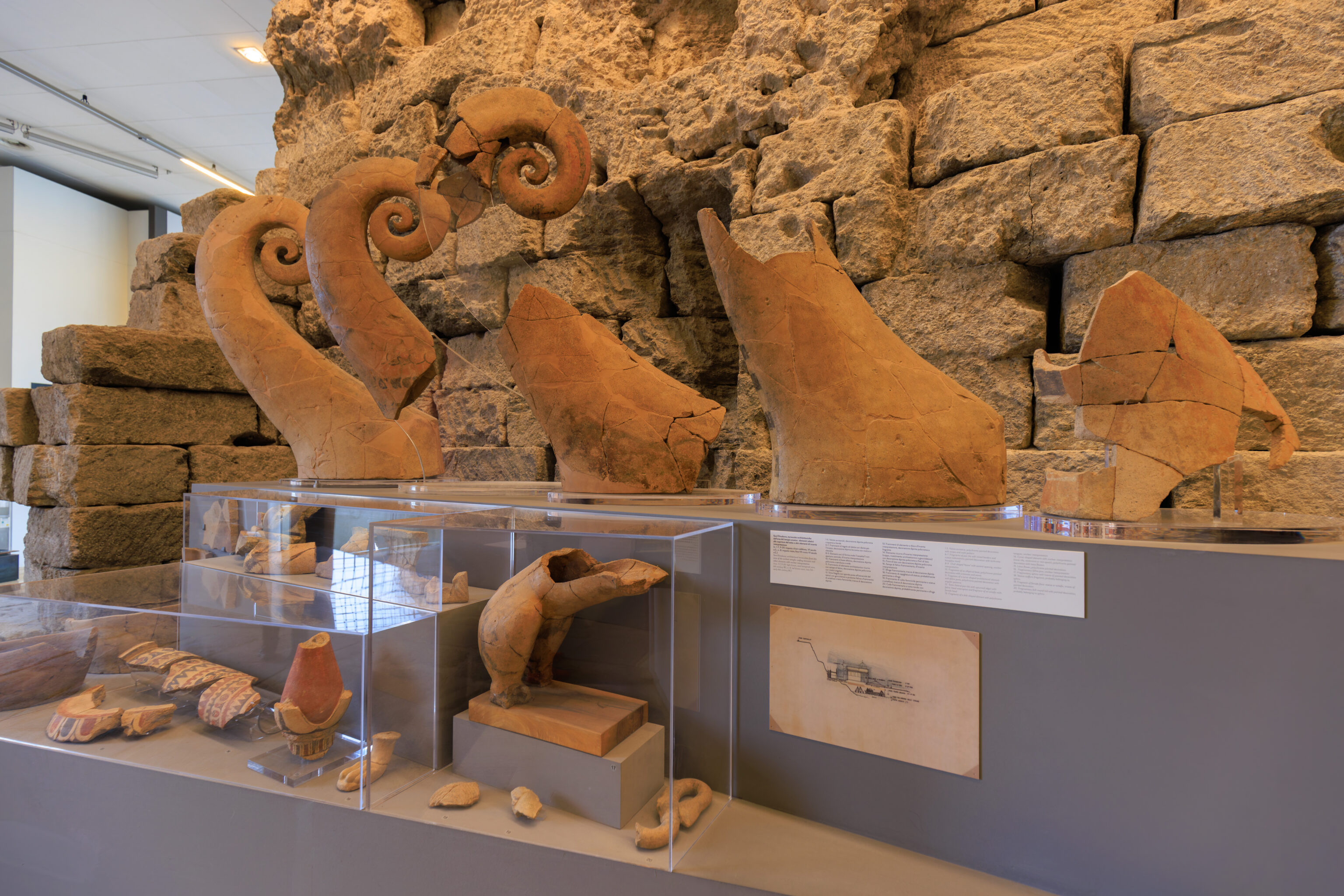
We continued walking through this area of the museum.
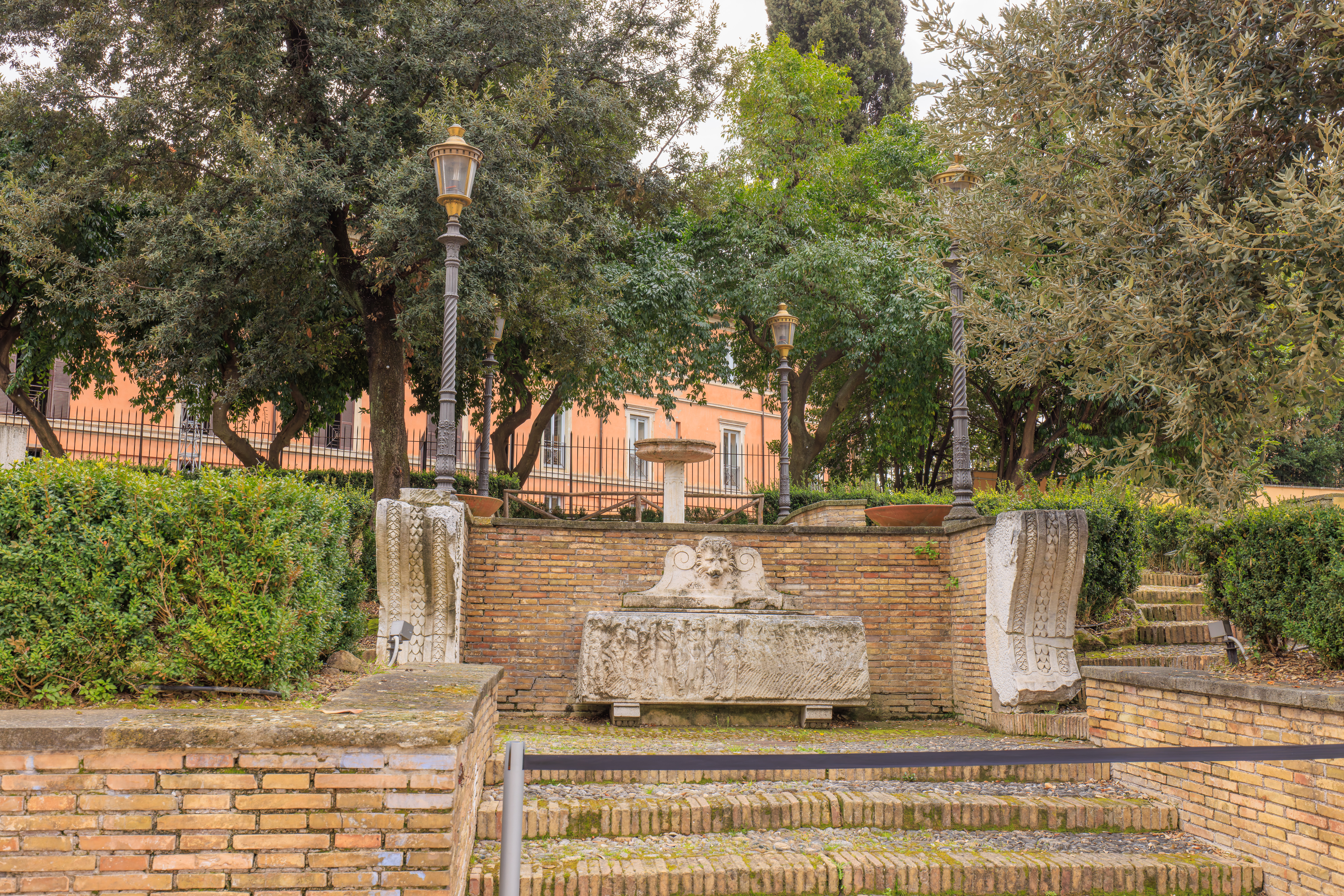
We ended up by a door to an outdoor garden area. This seems to be a back entrance to the museum but we were able to go outside to take a look.
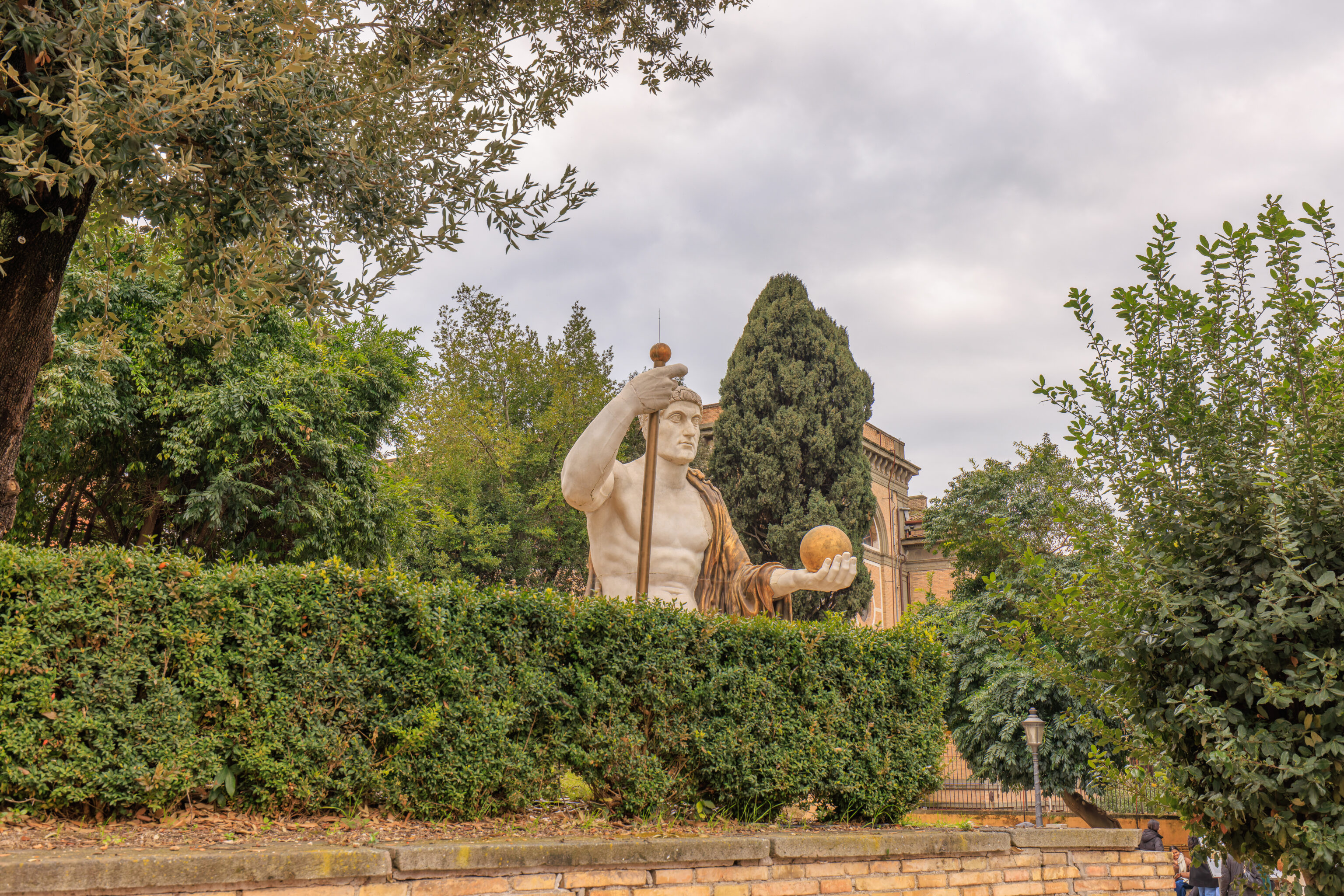
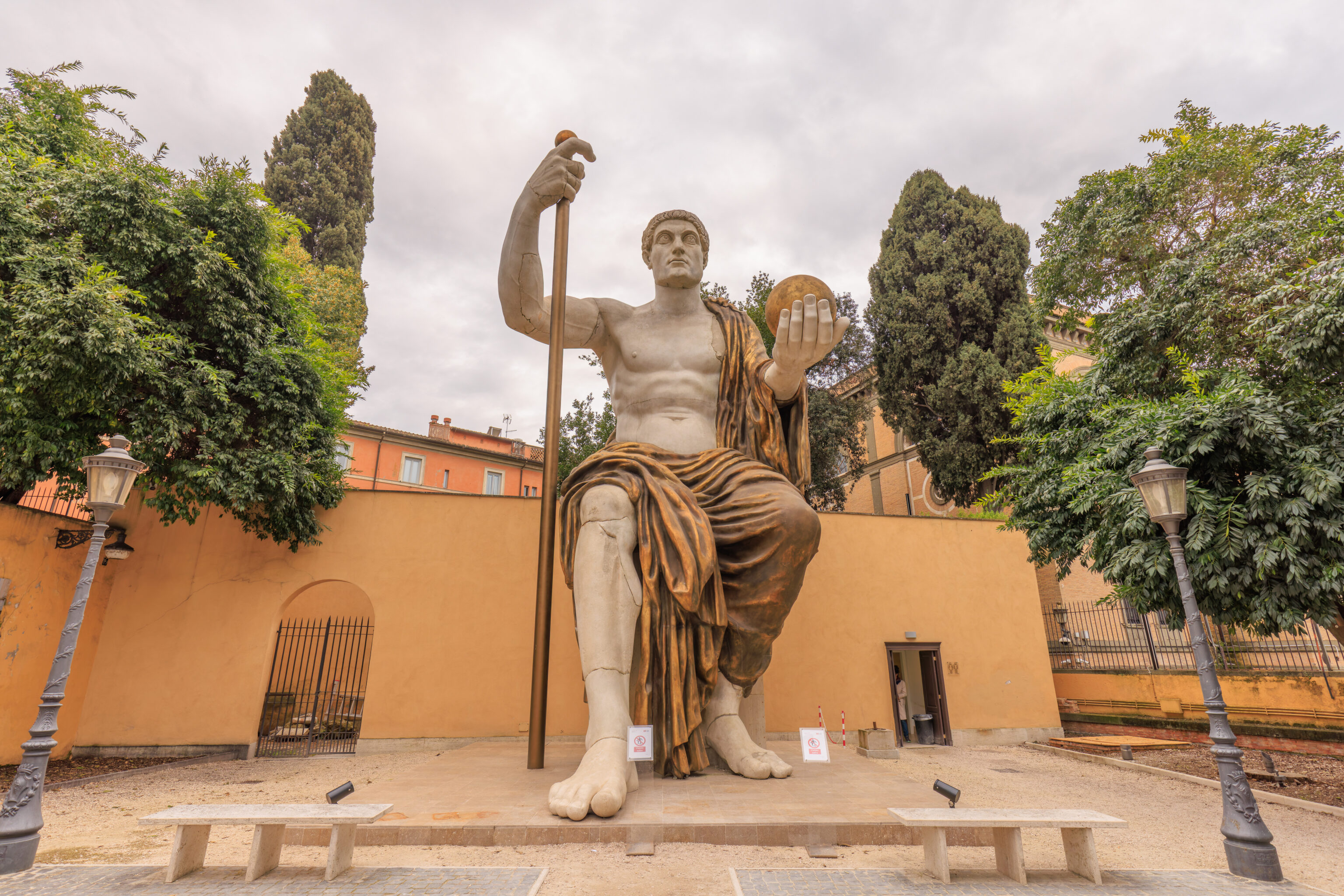
This large statue is a modern reconstruction of the Colossus of Constantine, the marble statue whose remnants are in the Palazzo dei Conservatori’s courtyard.
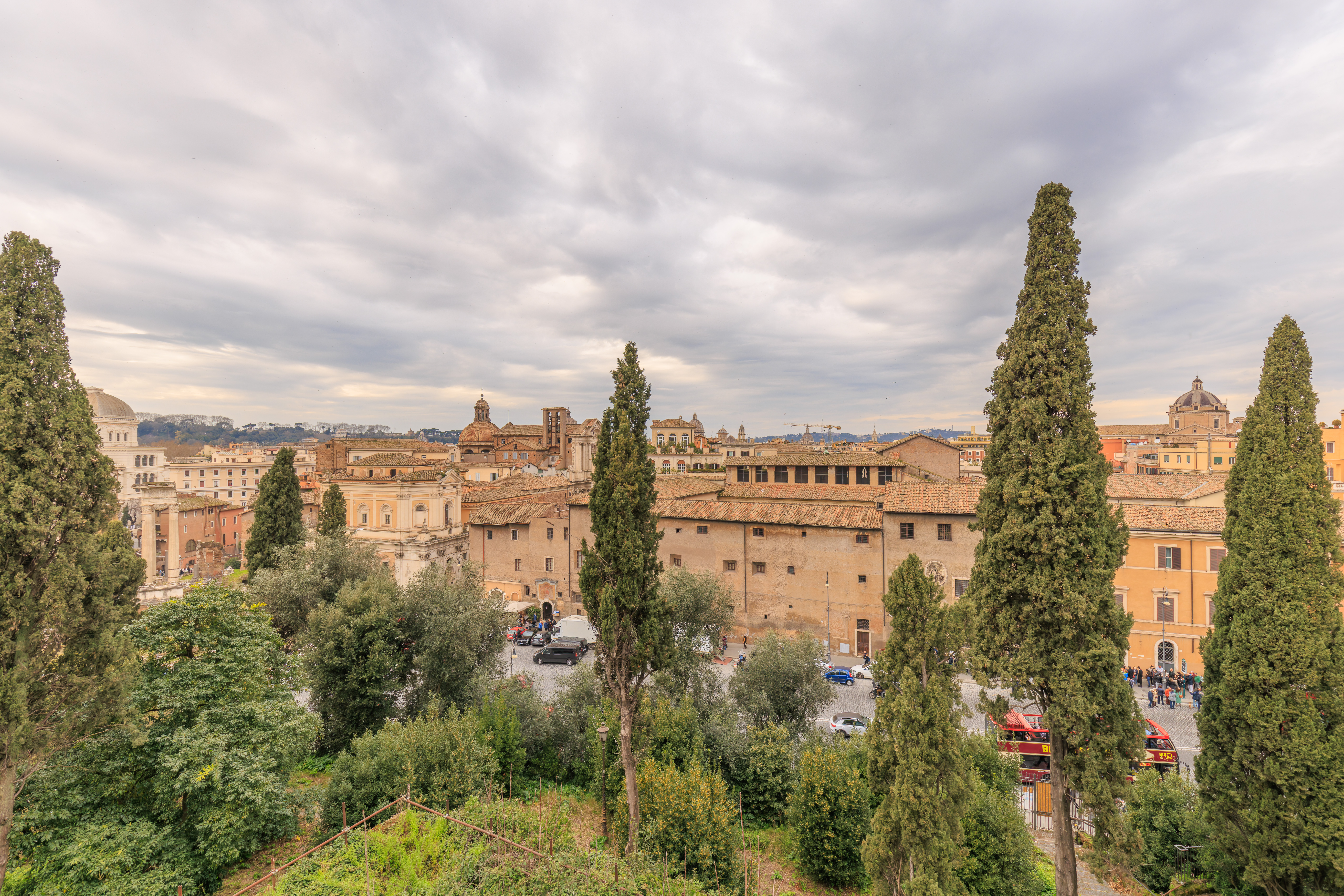
We walked around outside a bit and had this view to the west.
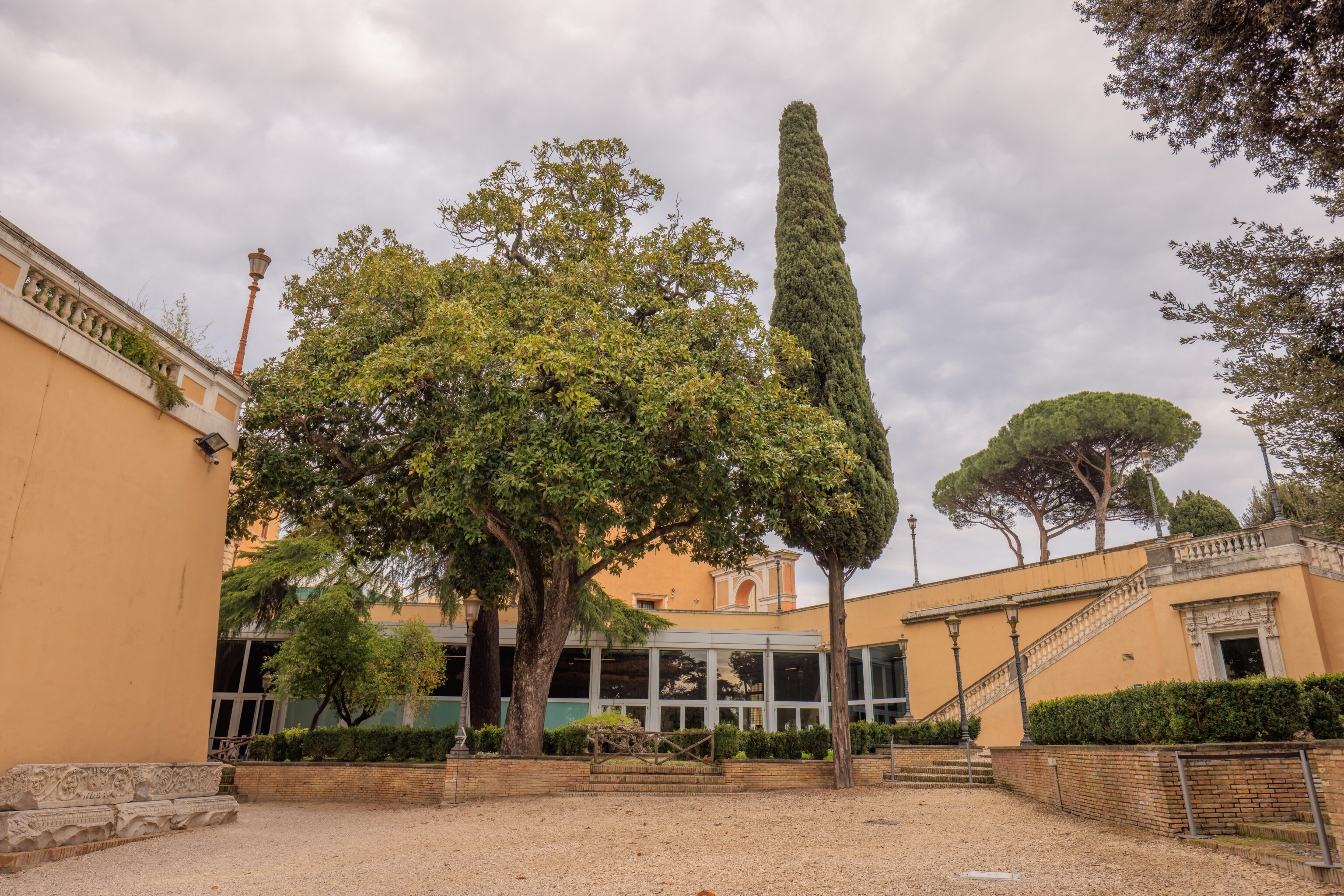
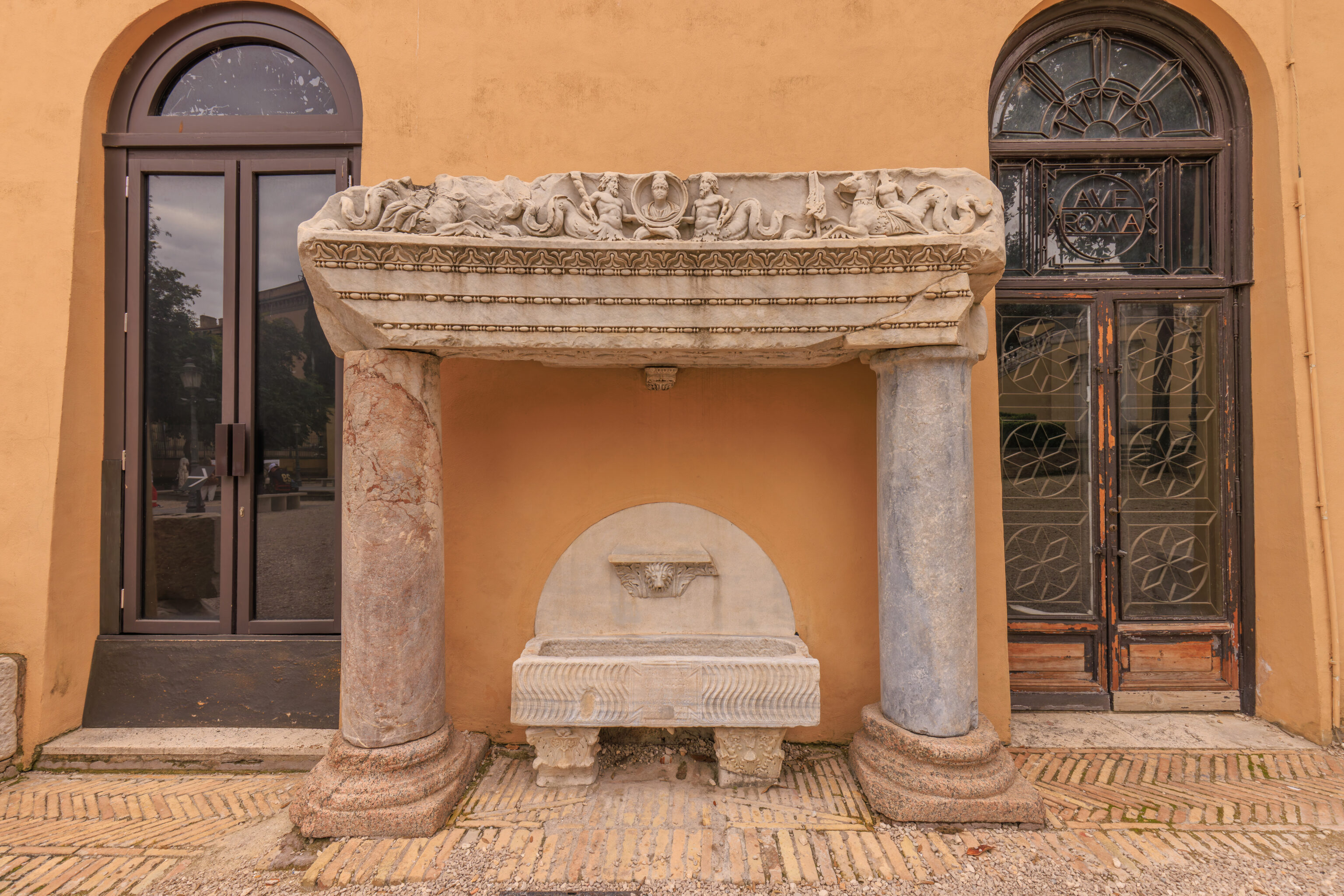
We soon headed back inside.
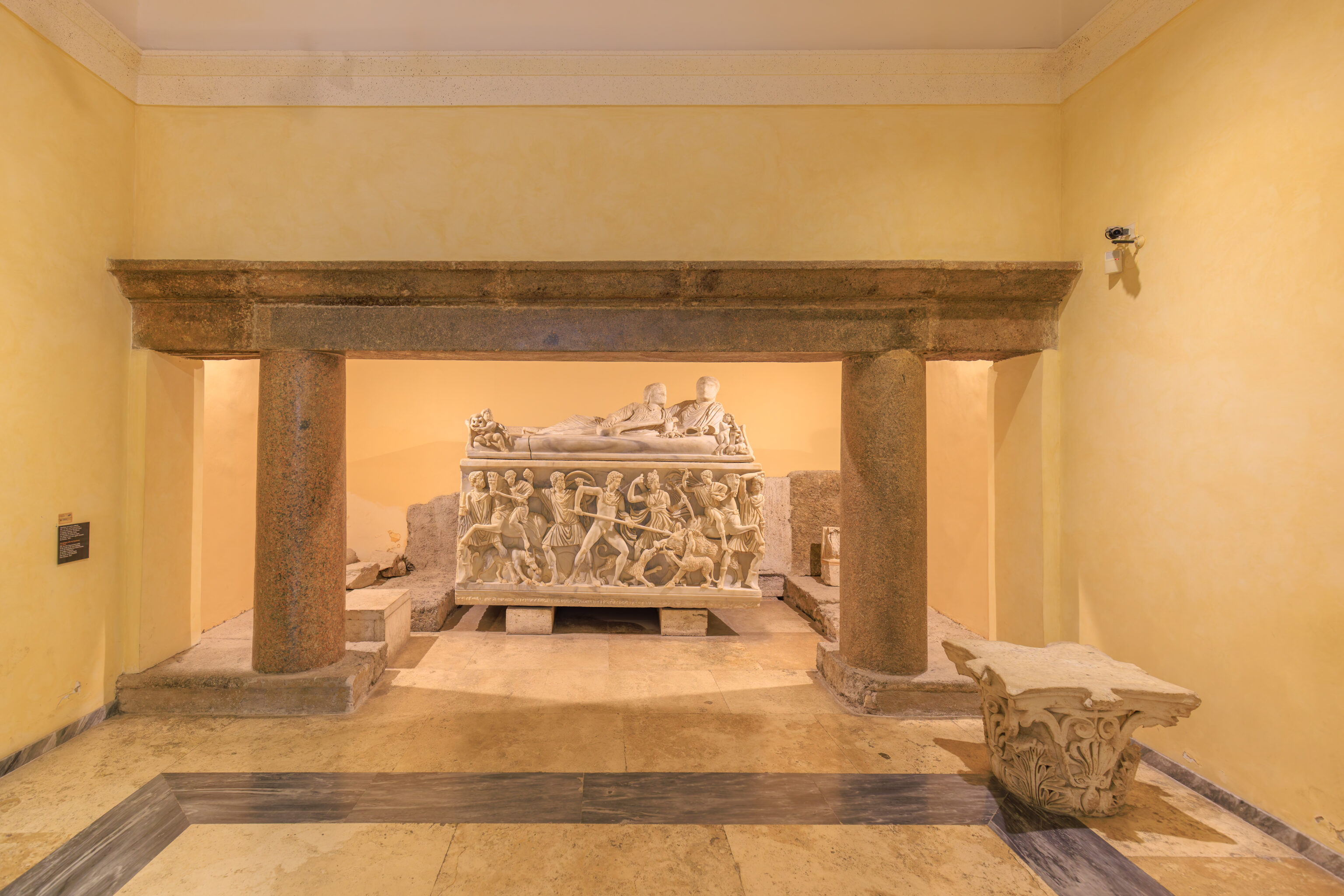
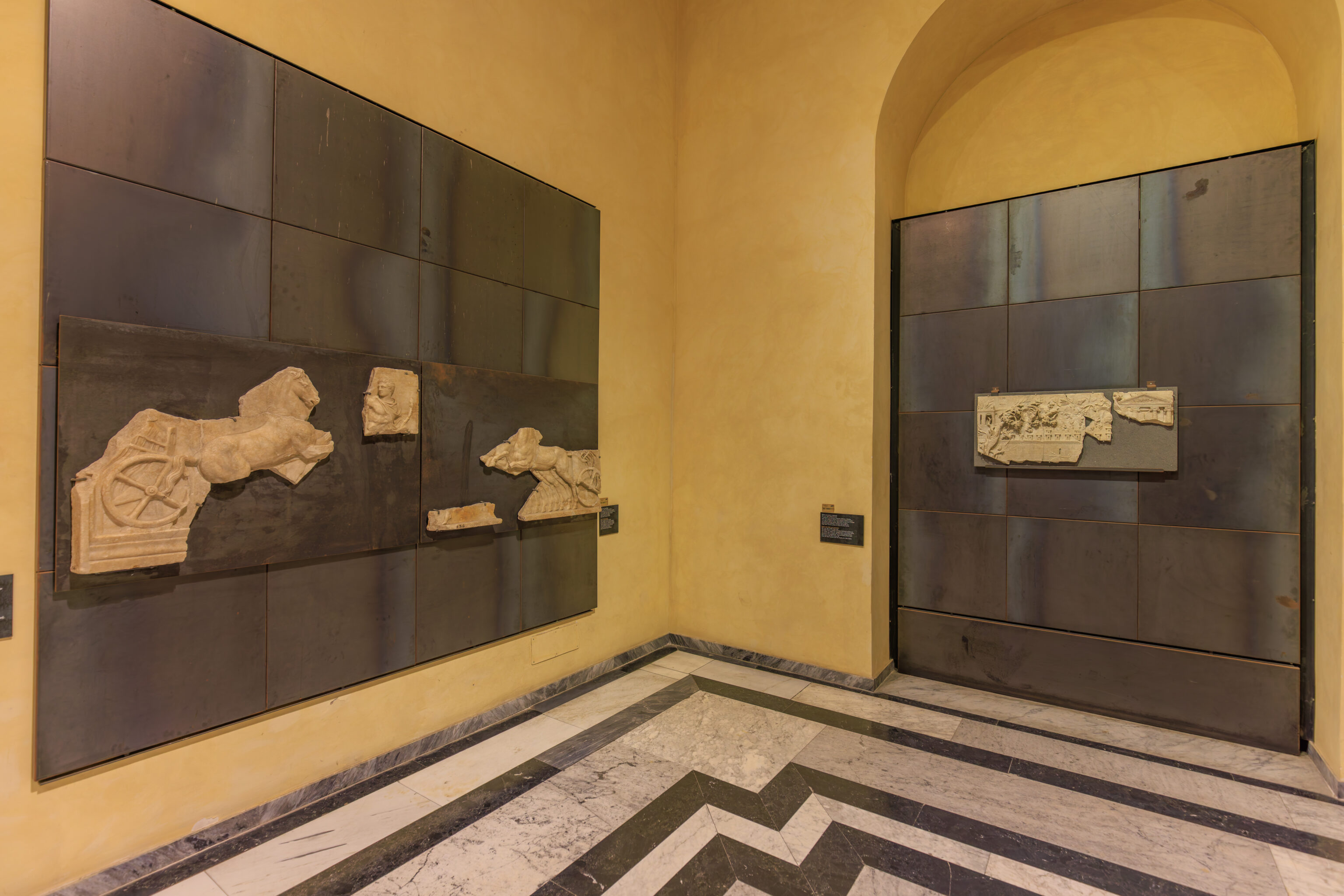
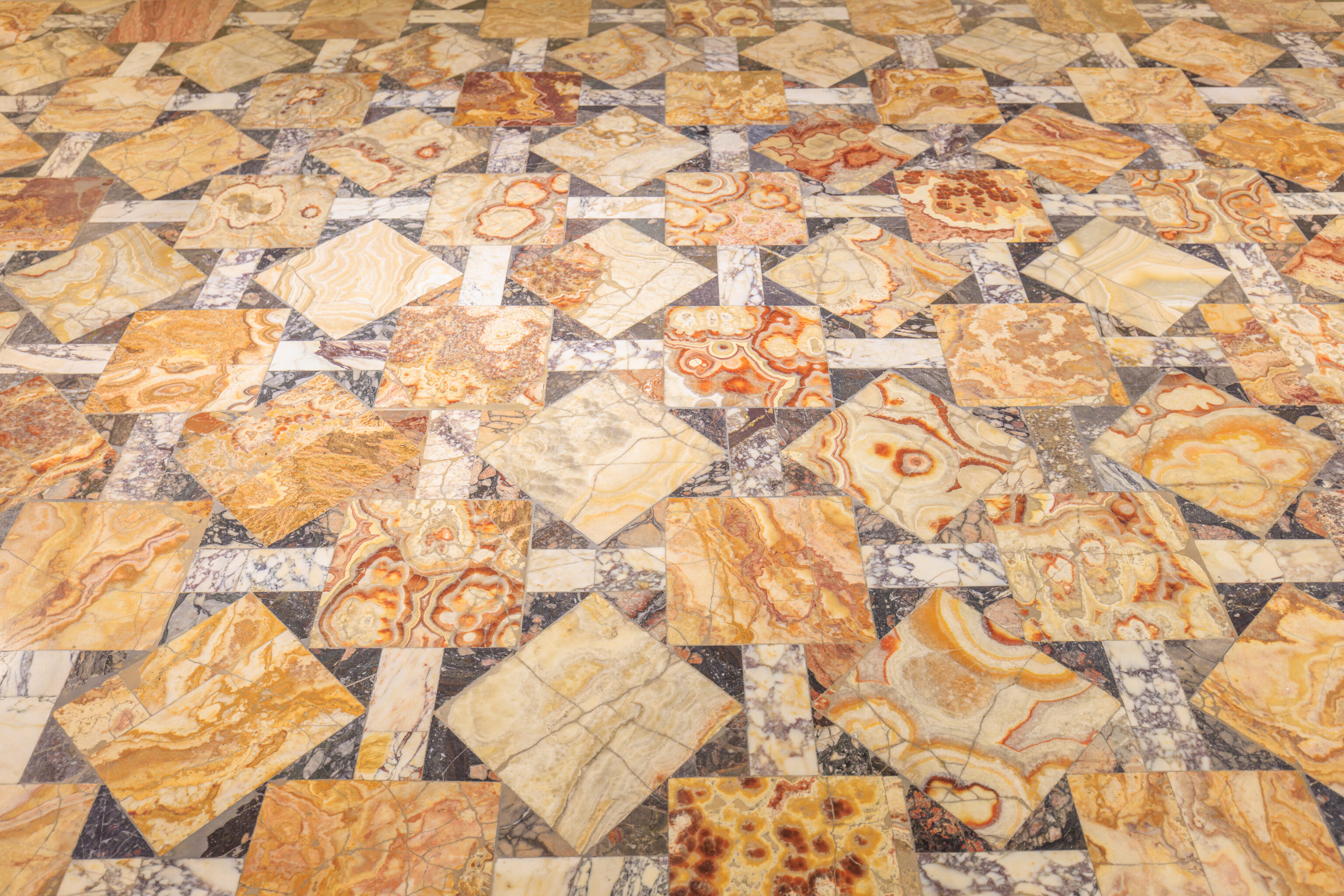
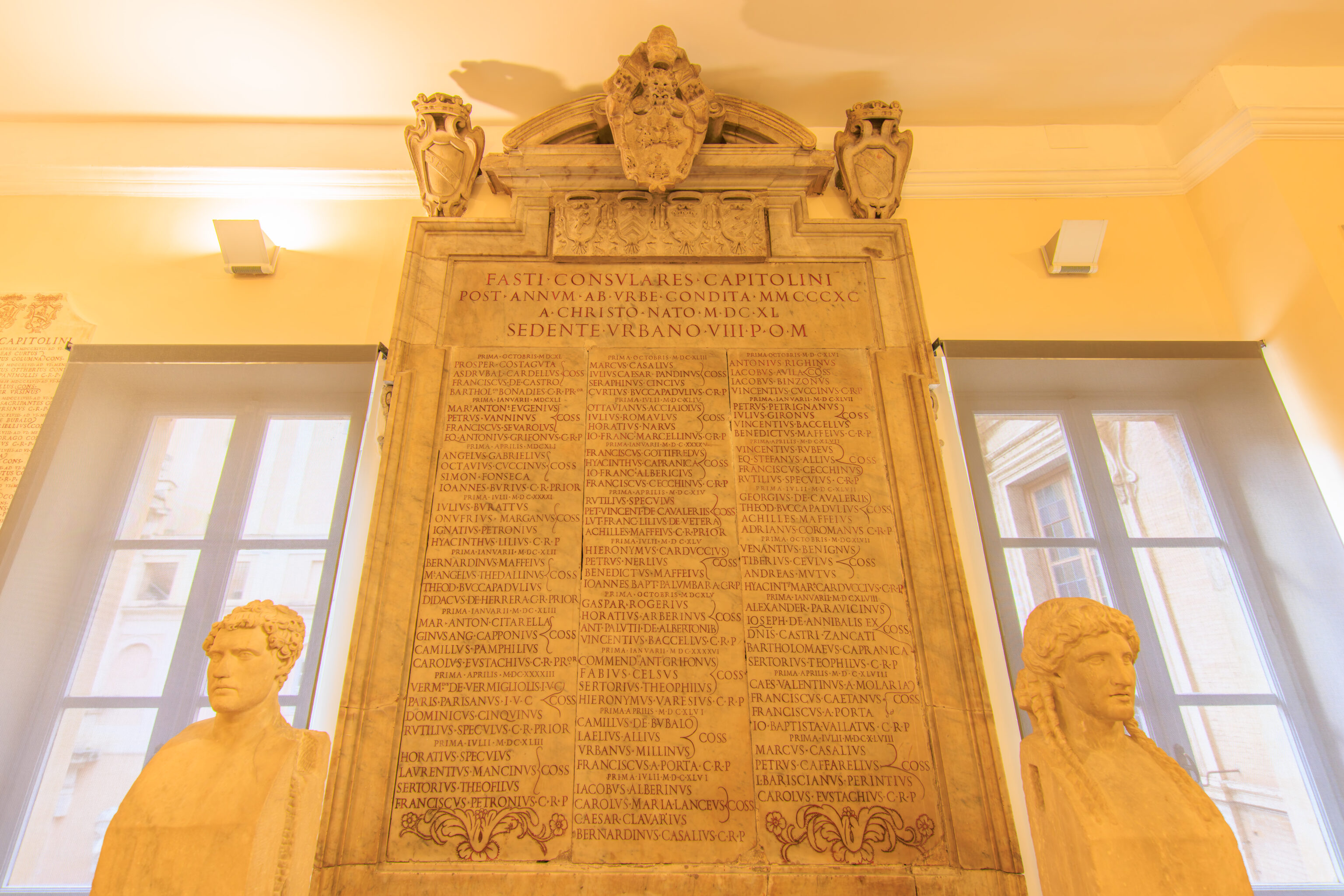
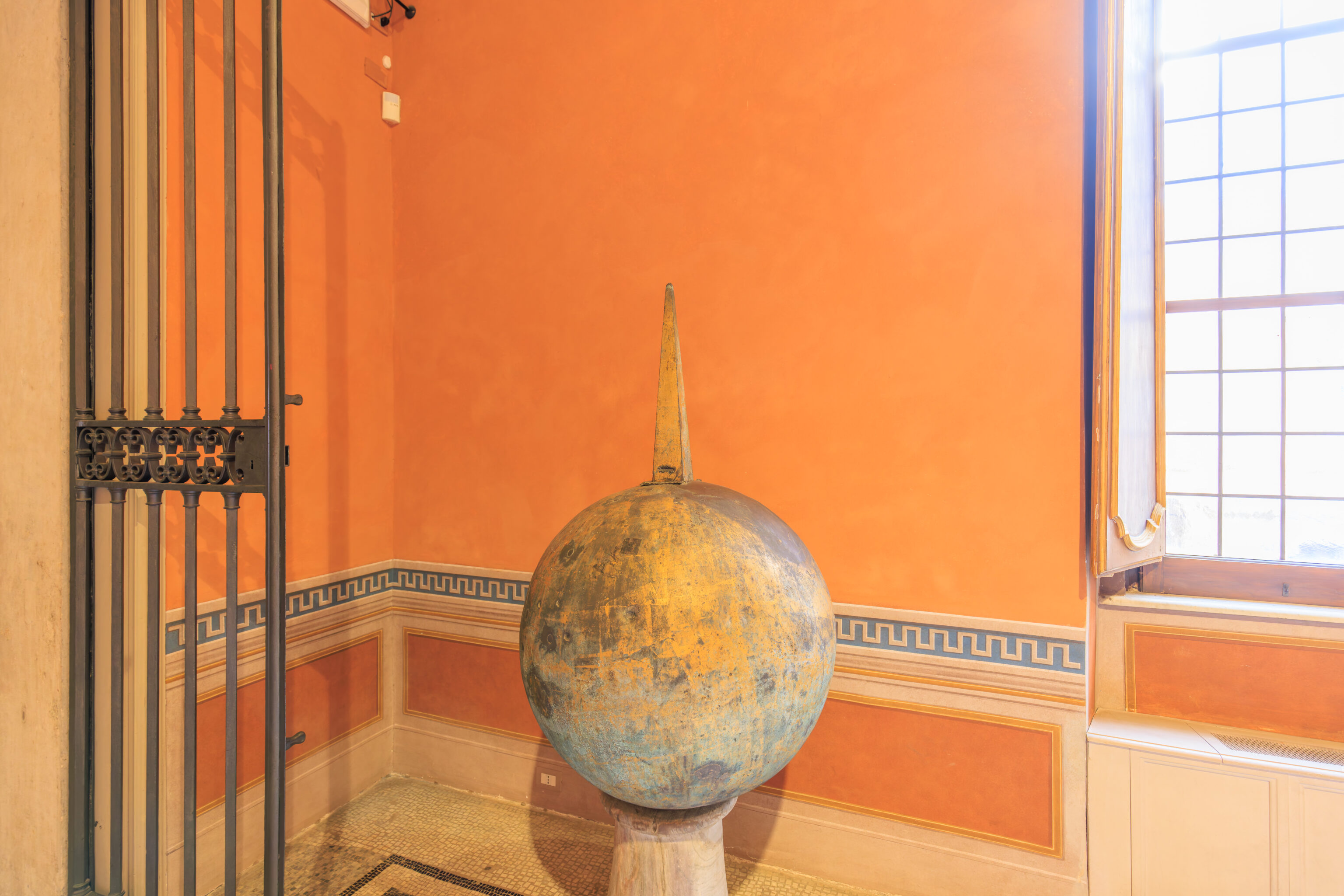

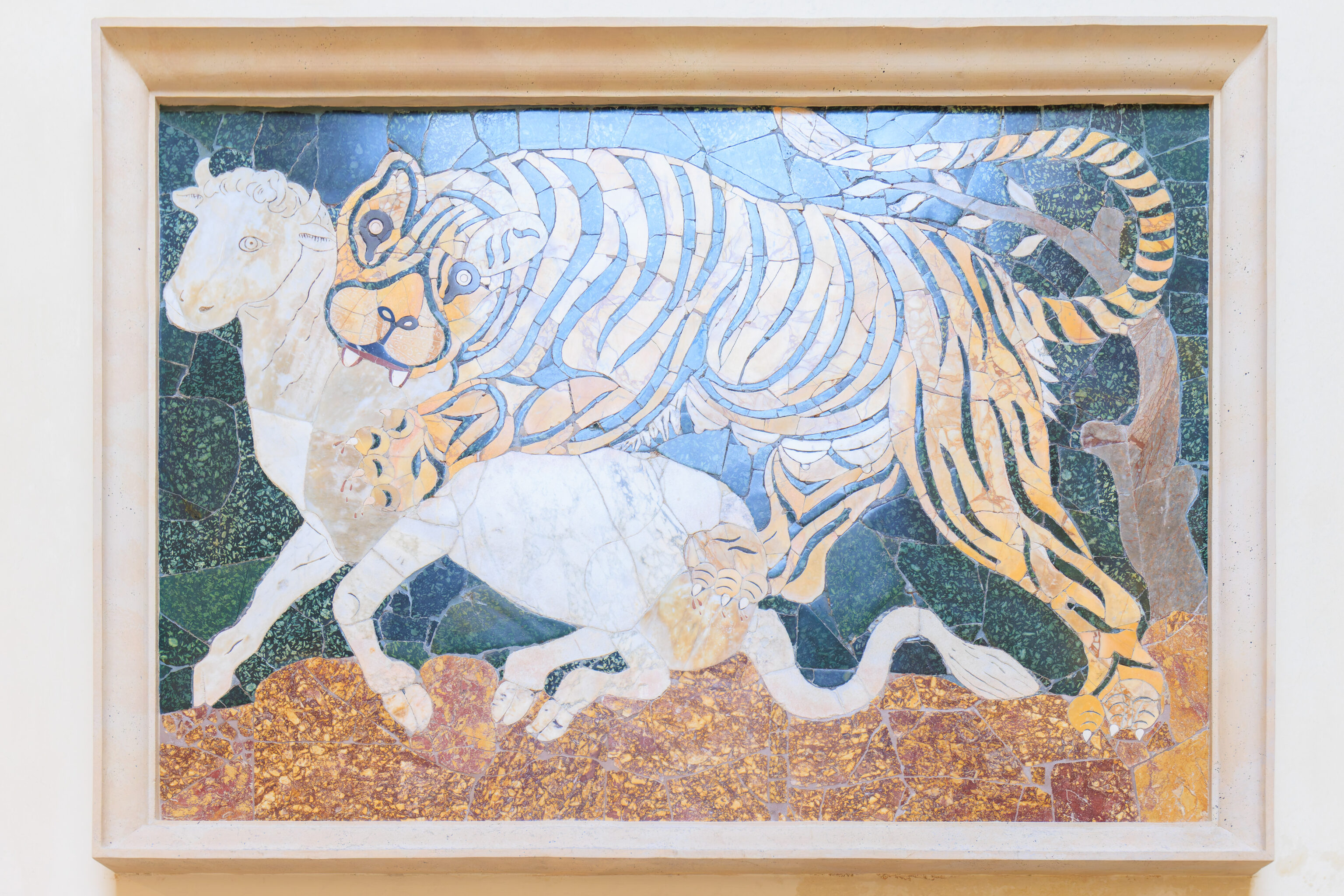
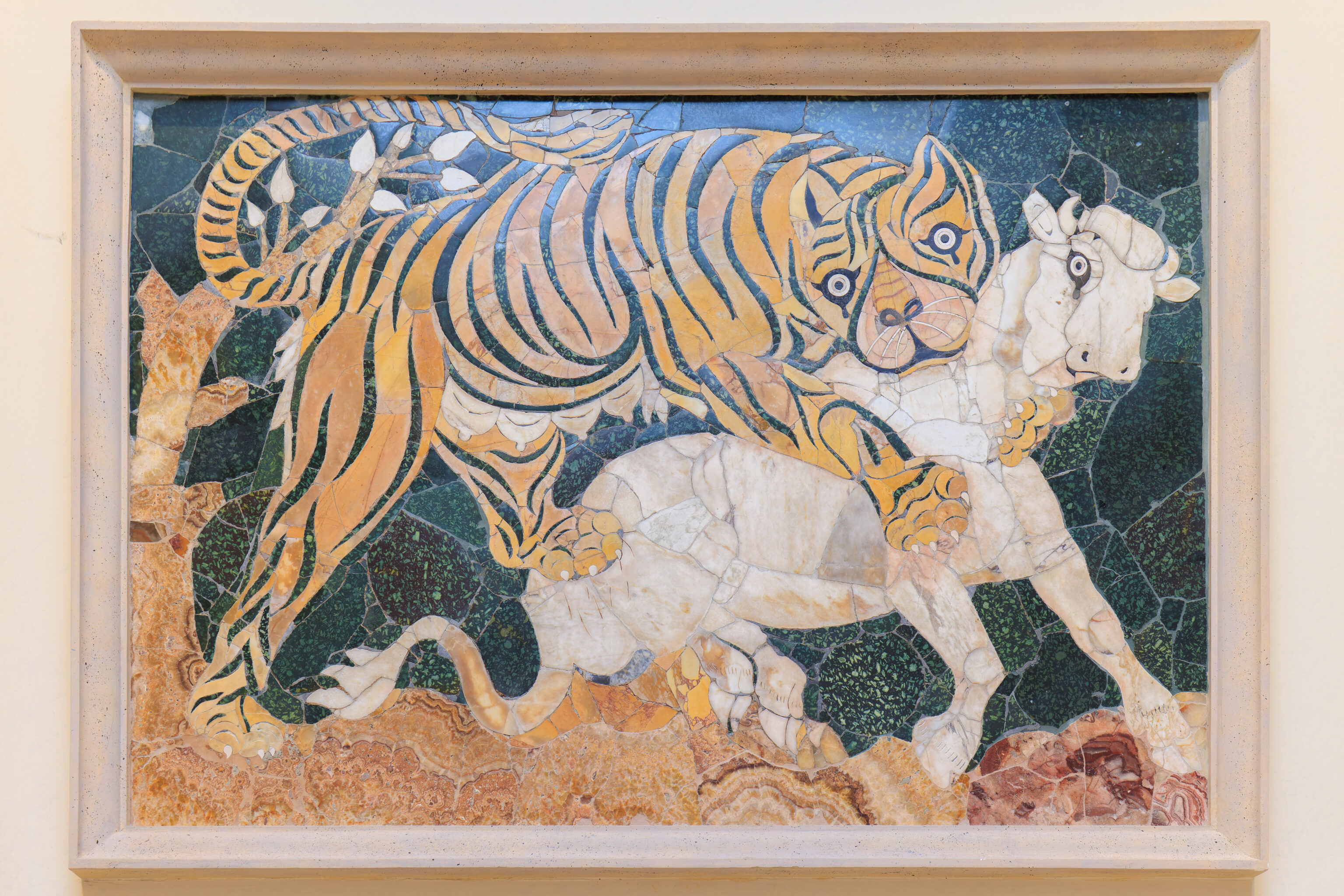
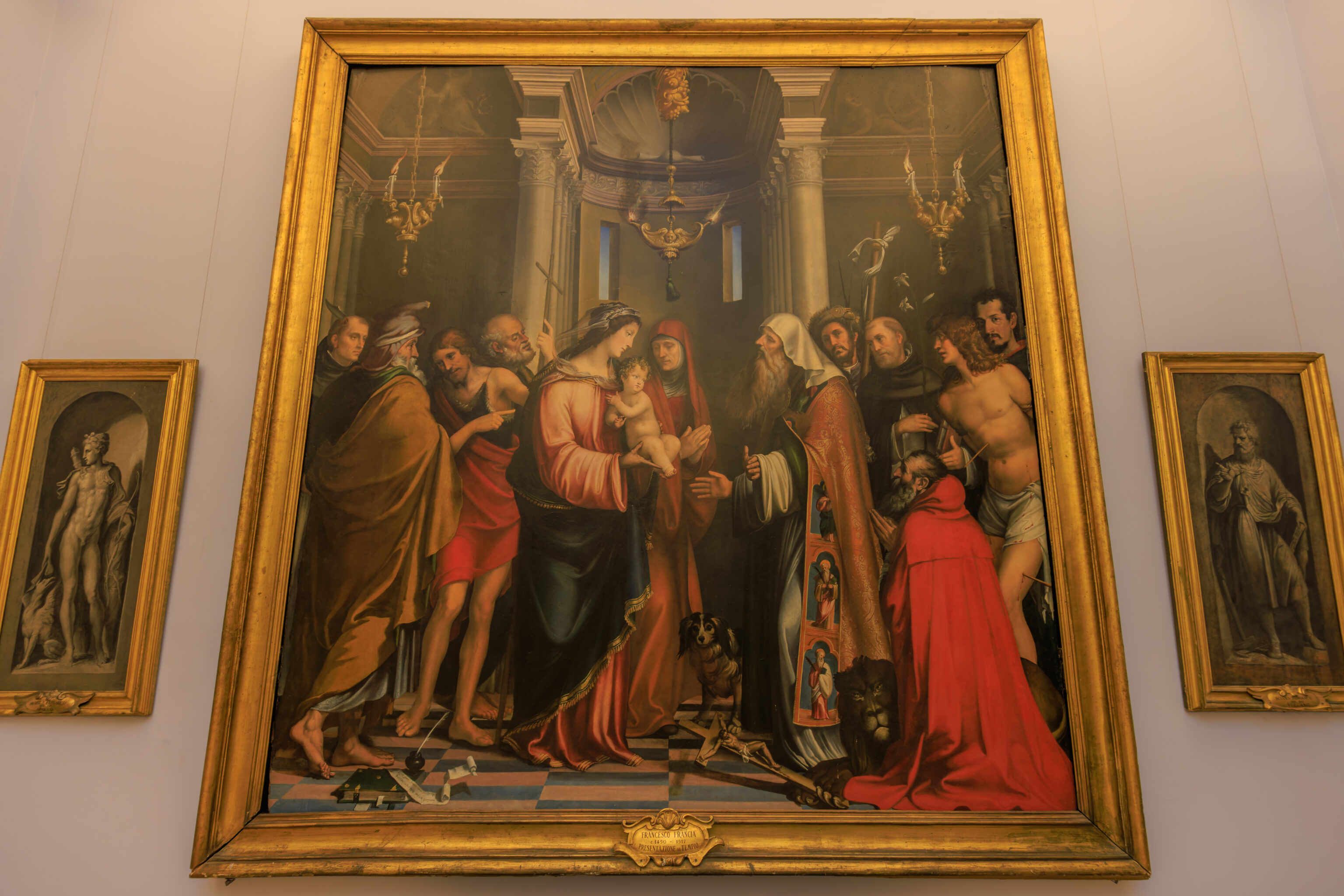
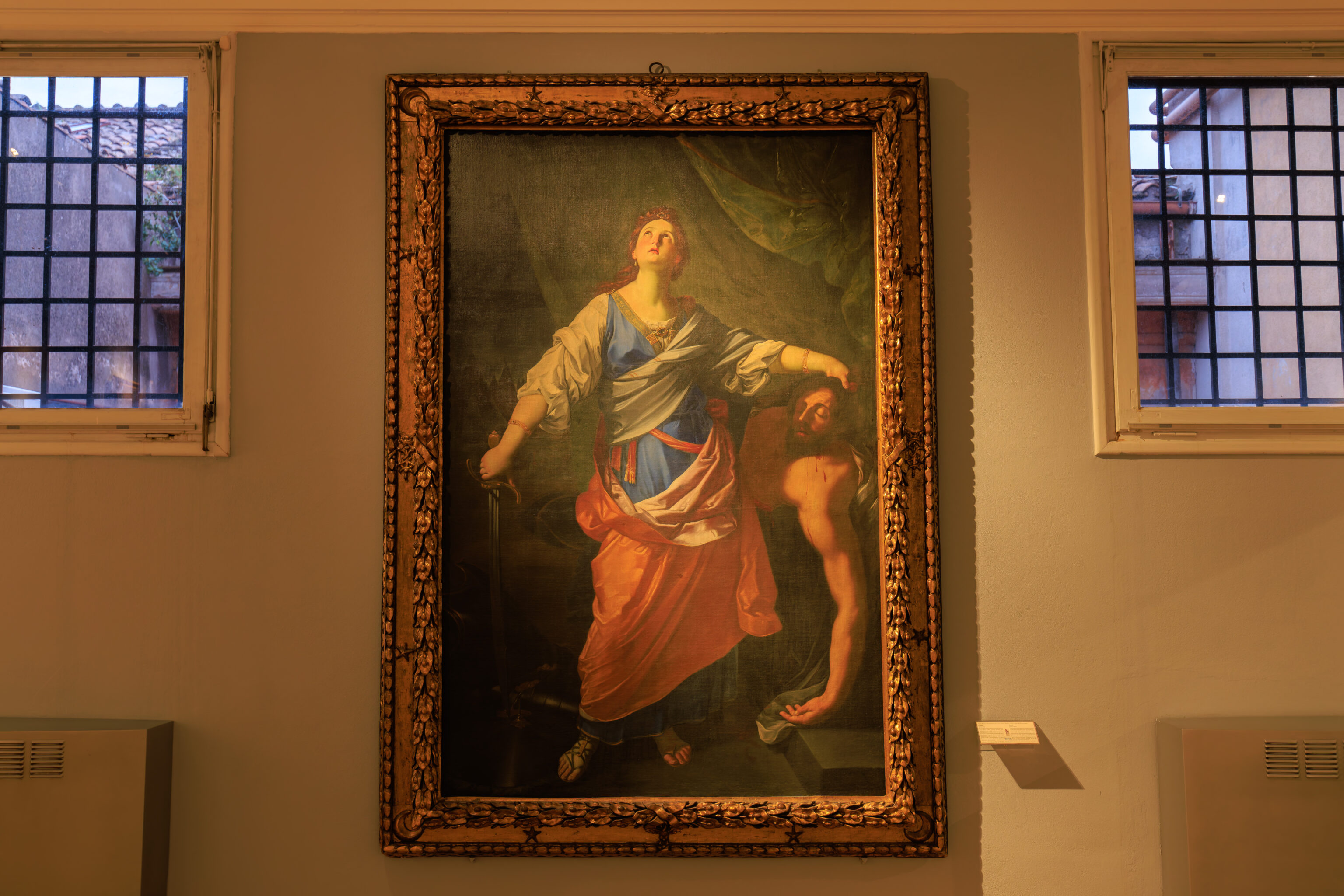
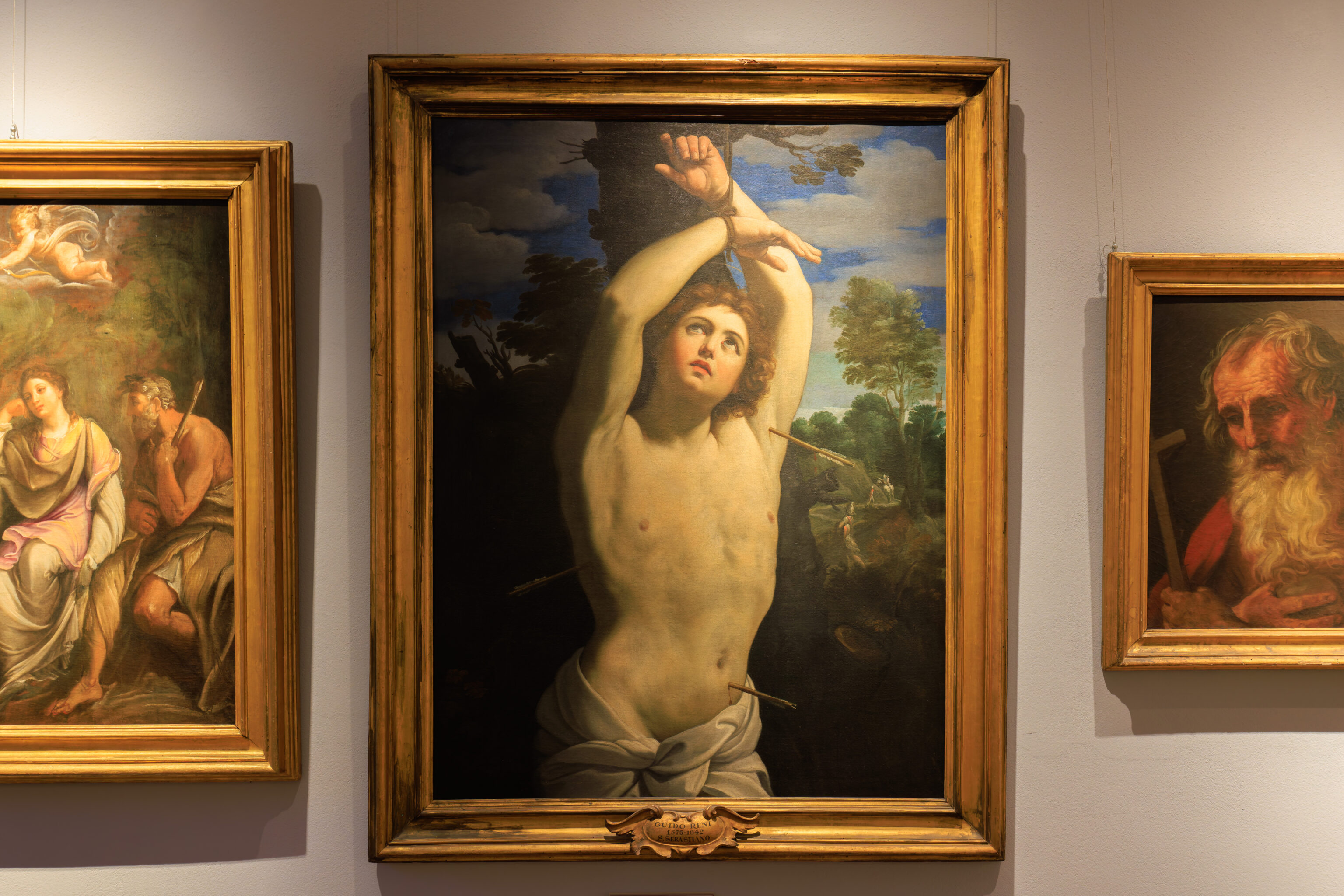
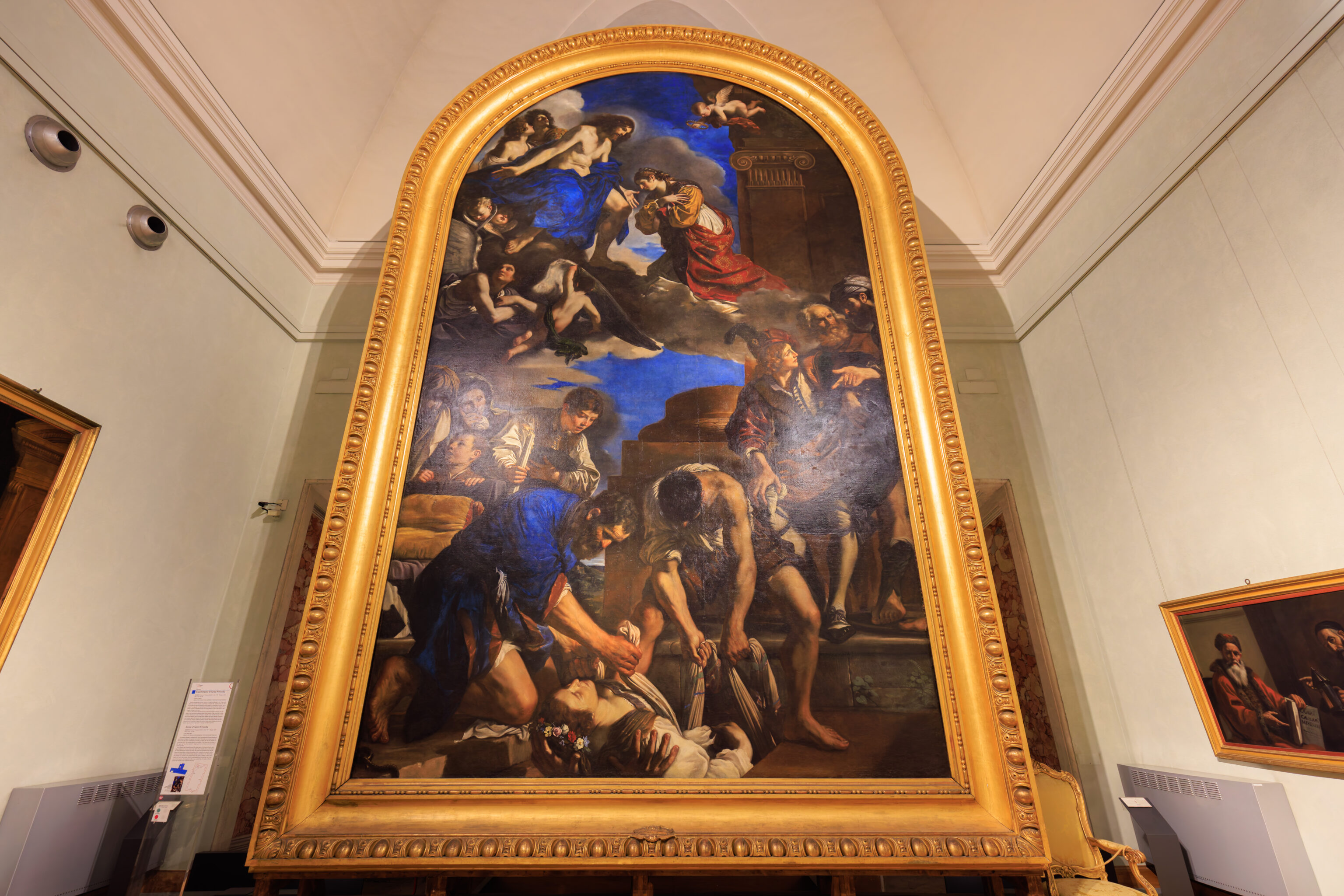
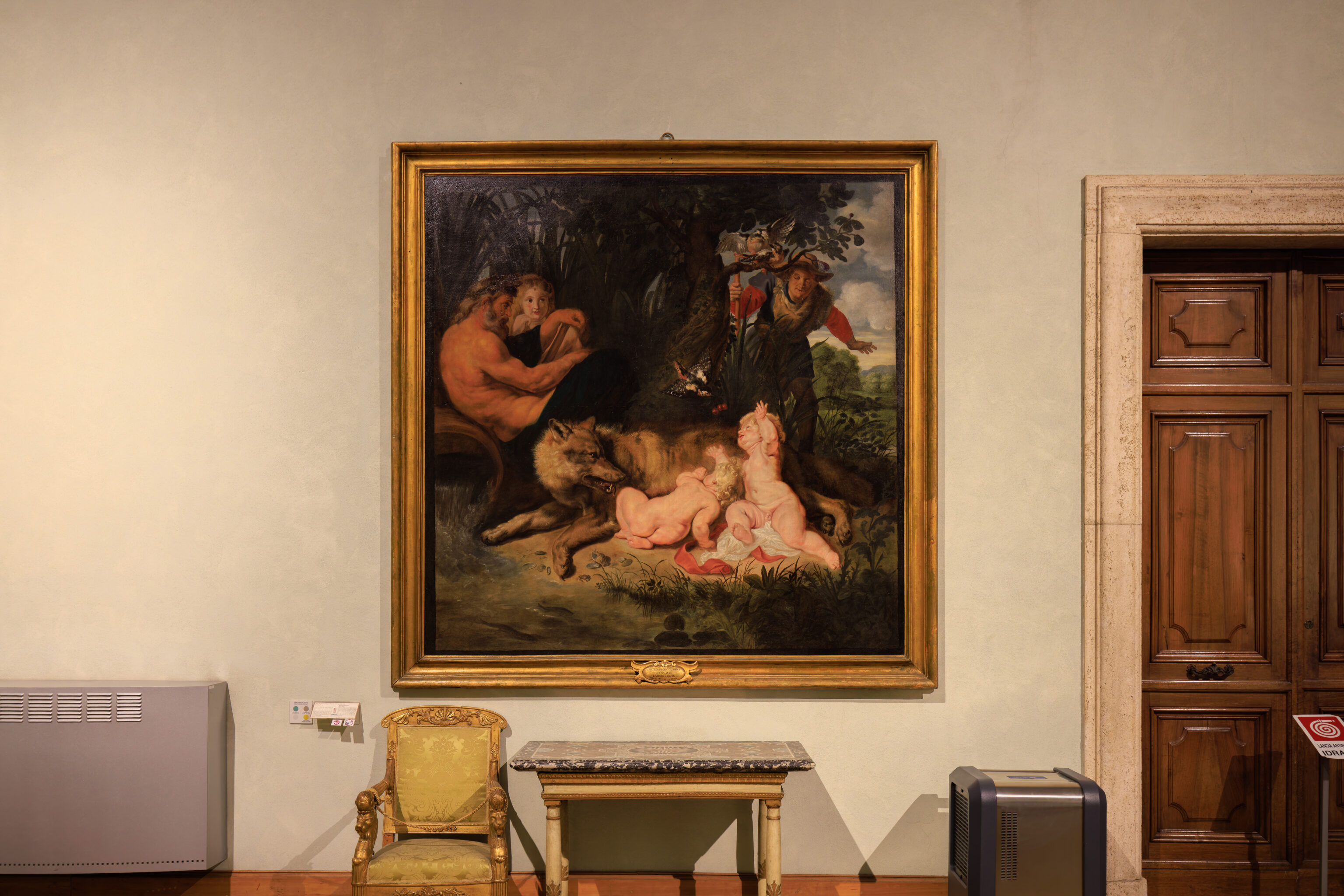
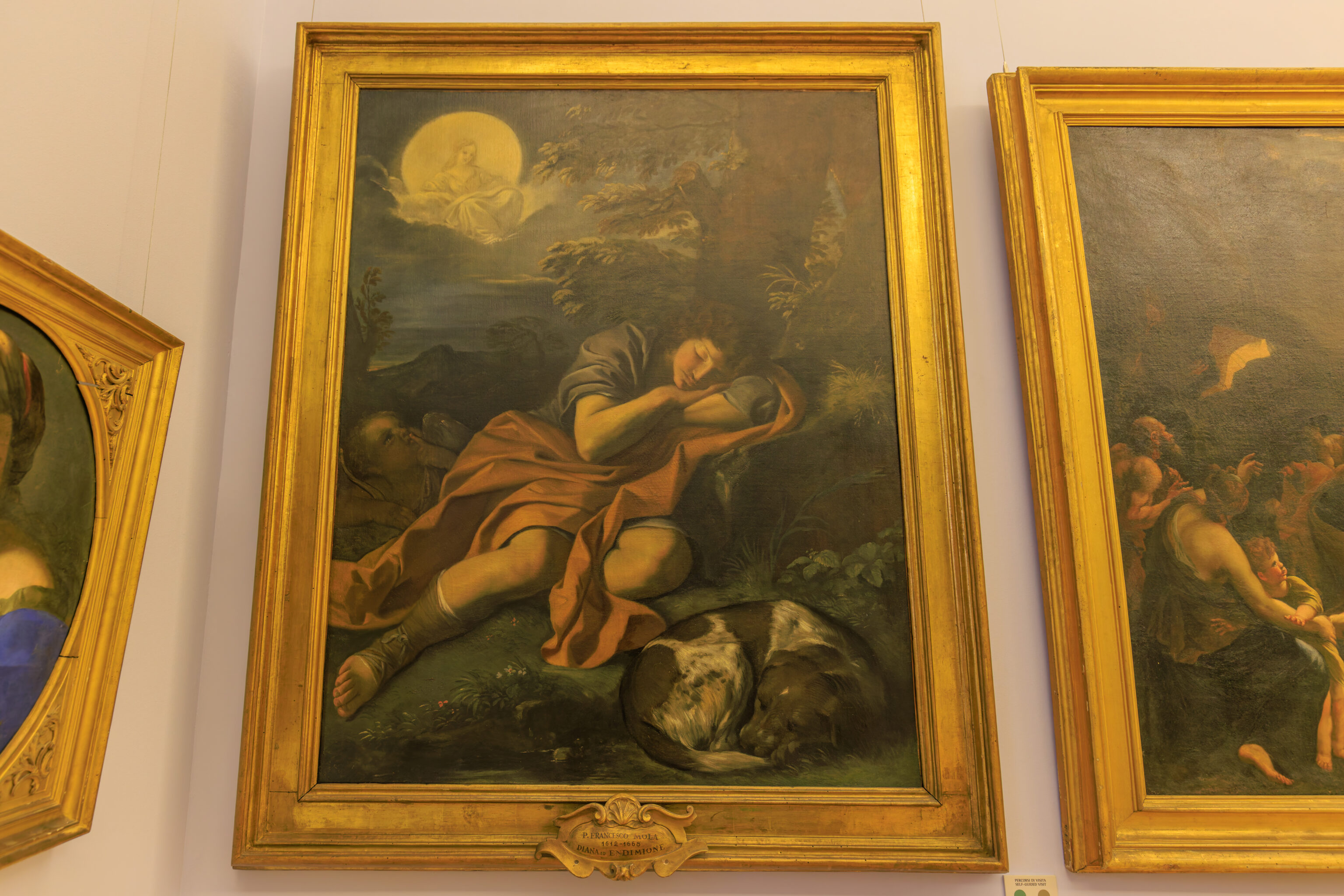
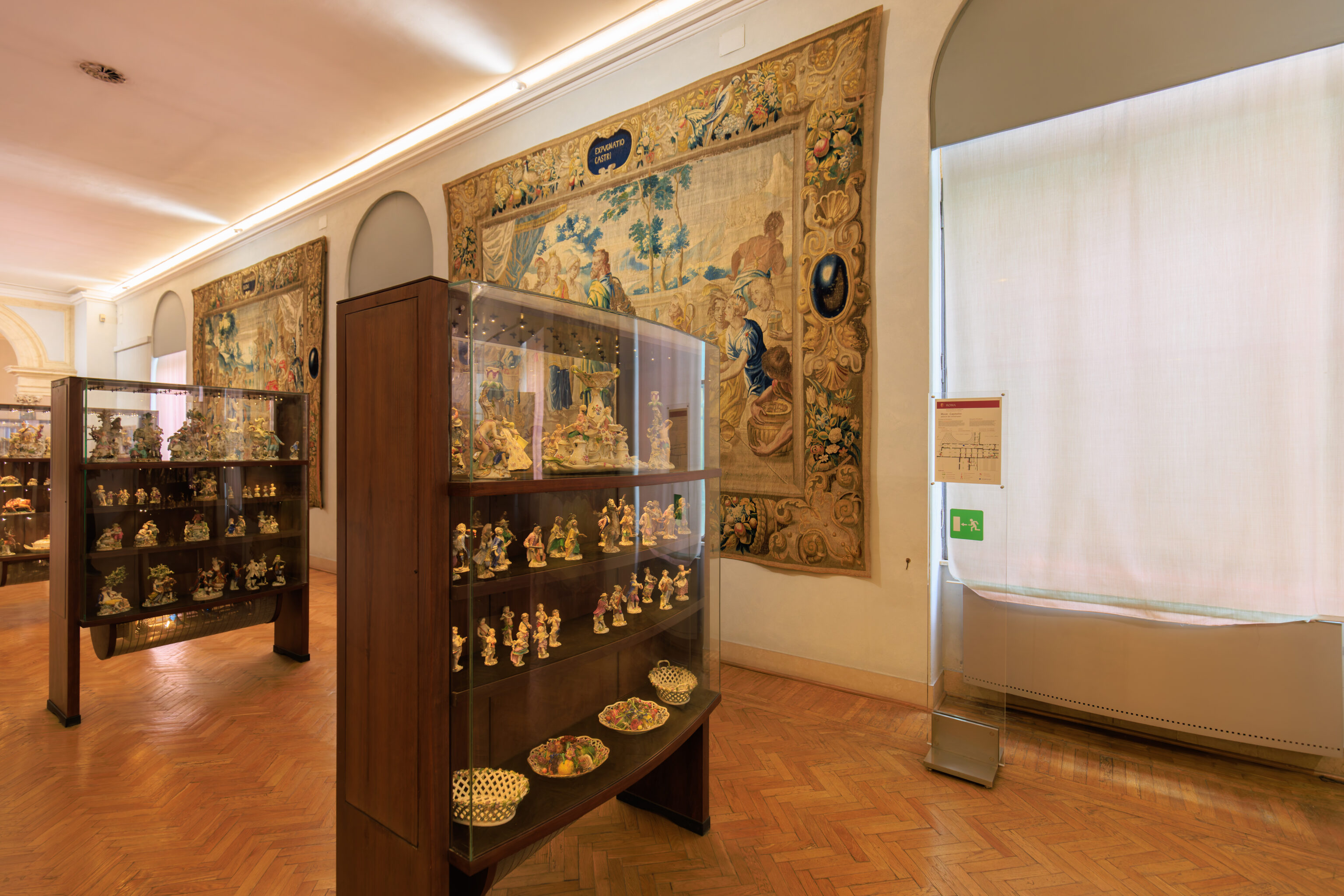
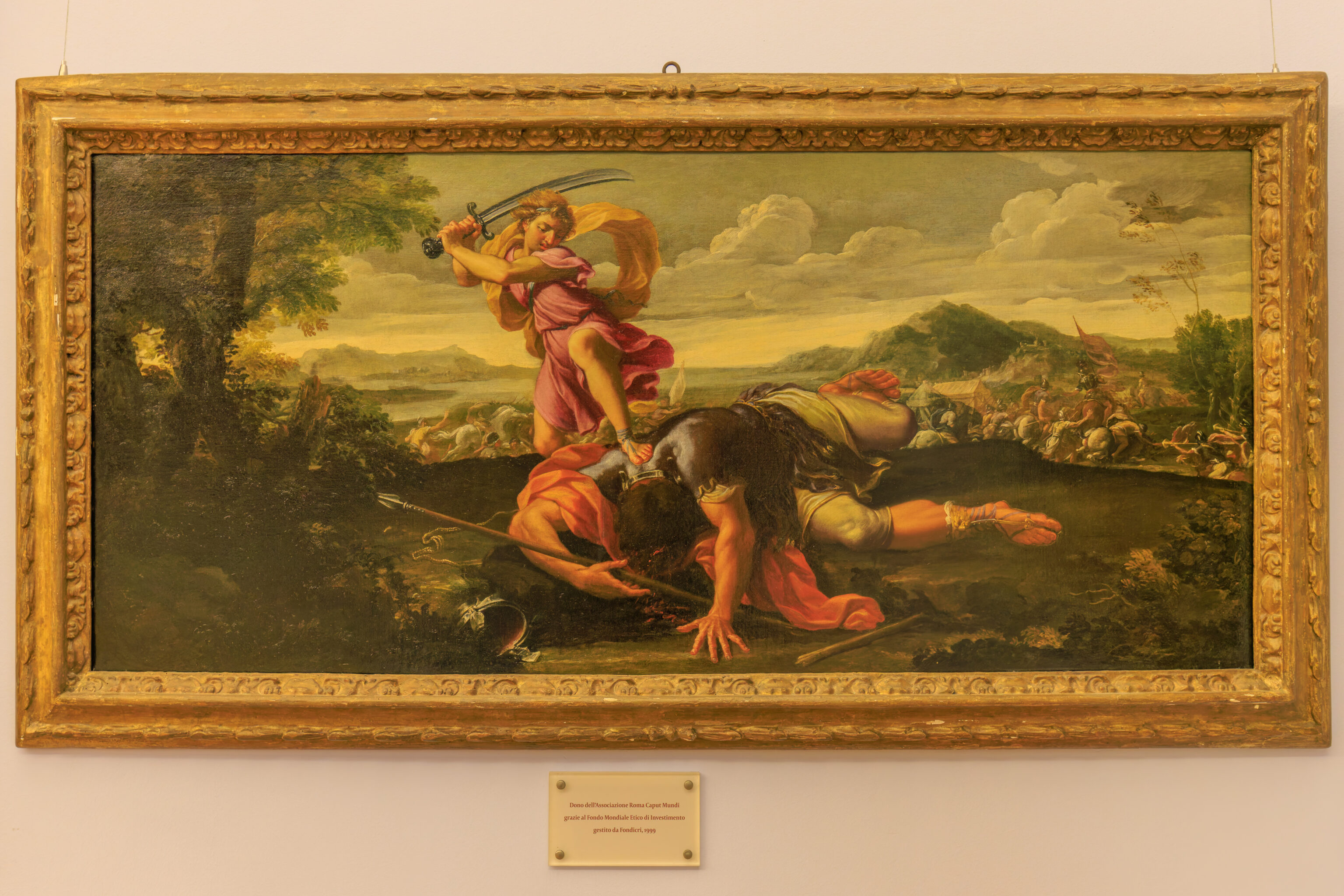
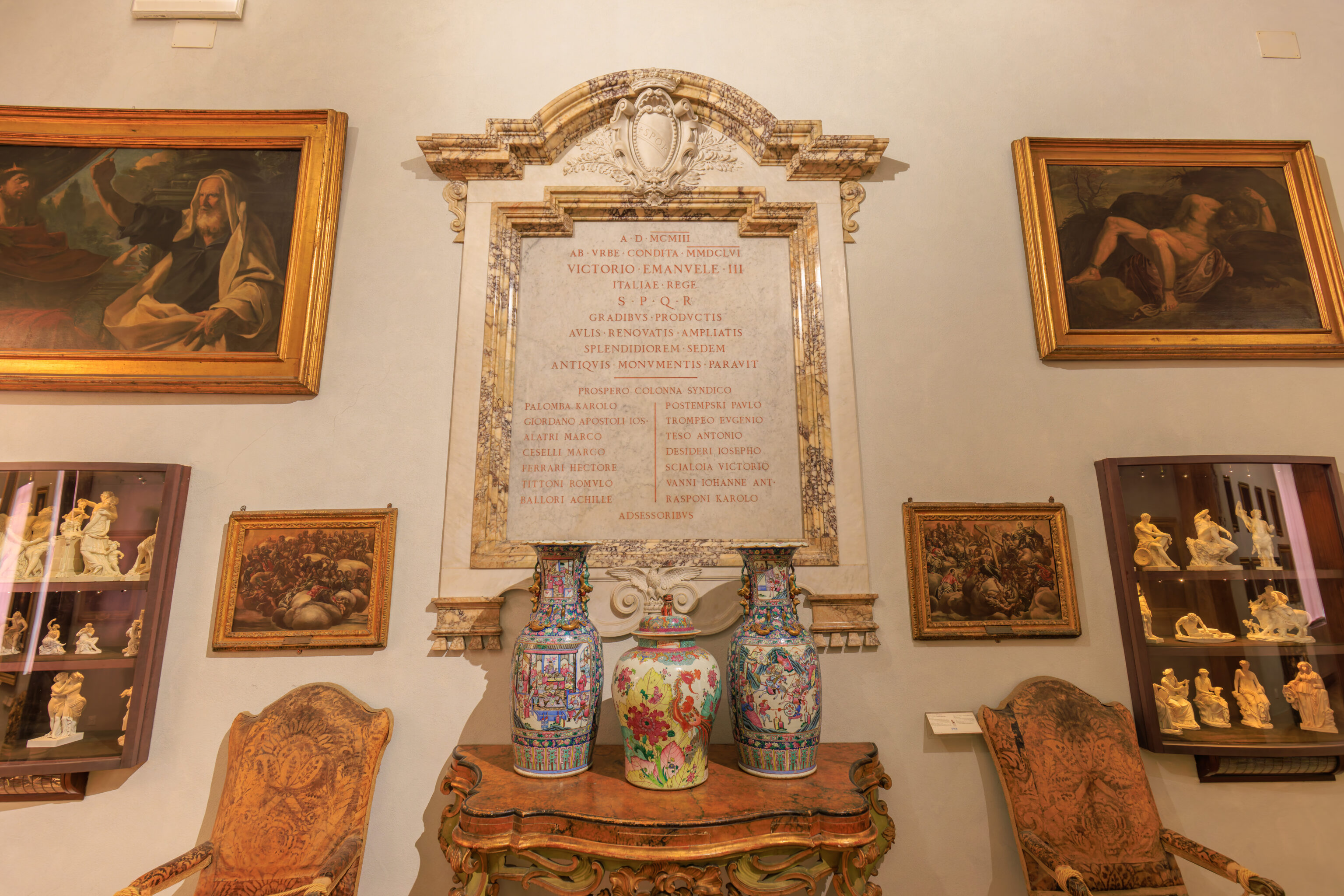
We continued walking through the museum before ending out visit at around 4:30pm.
South of the Capitoline
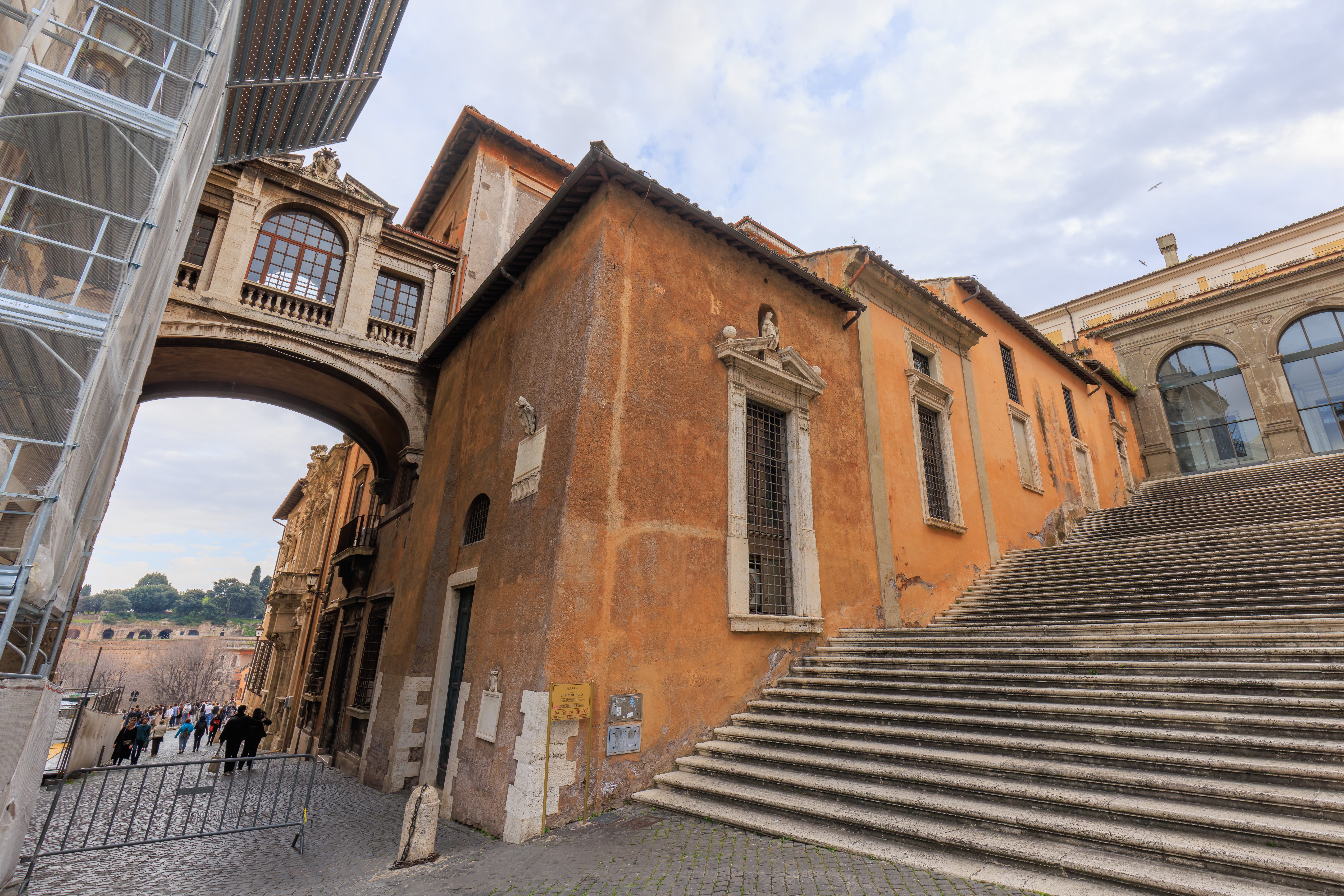
We decided to take a different path upon exiting.
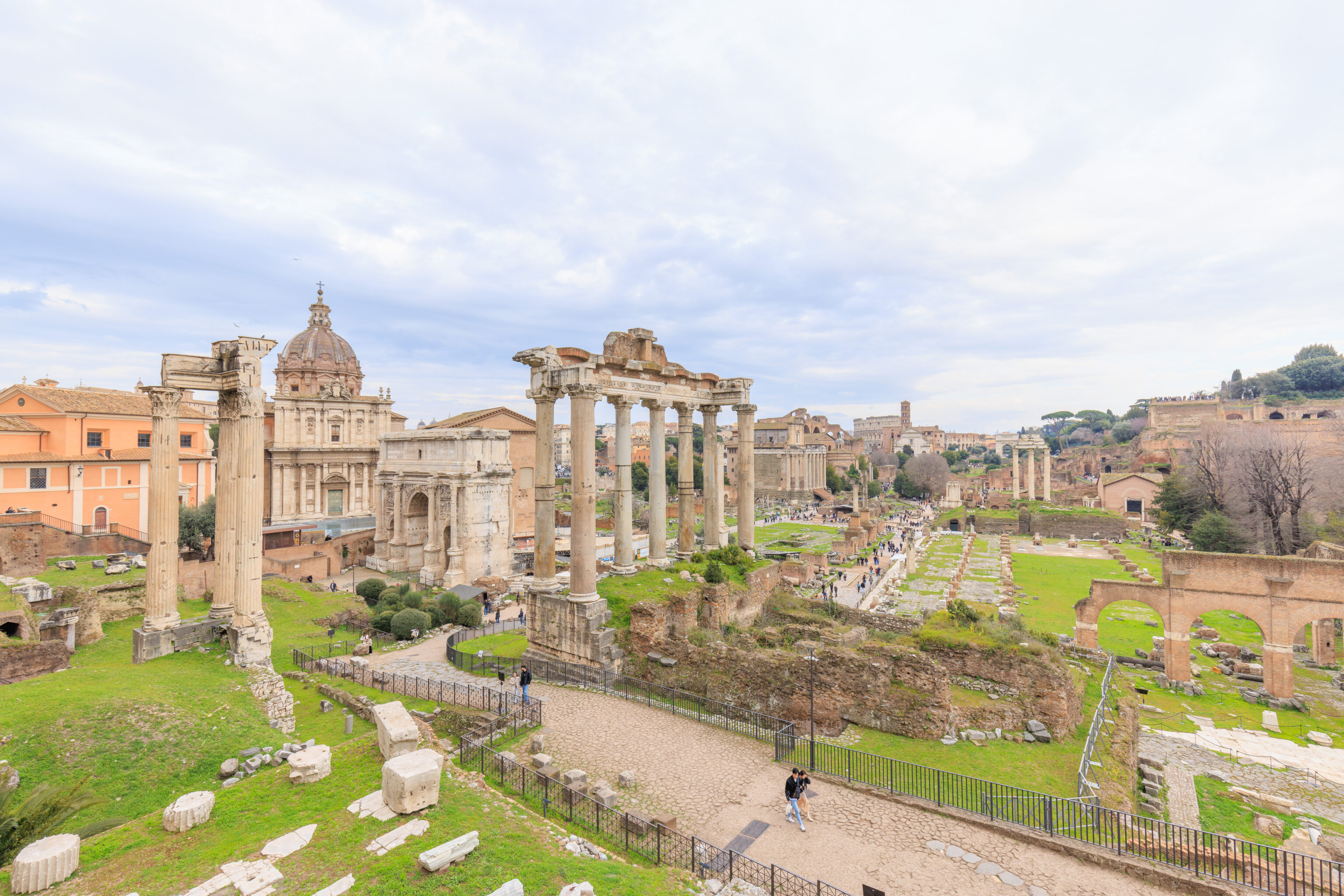
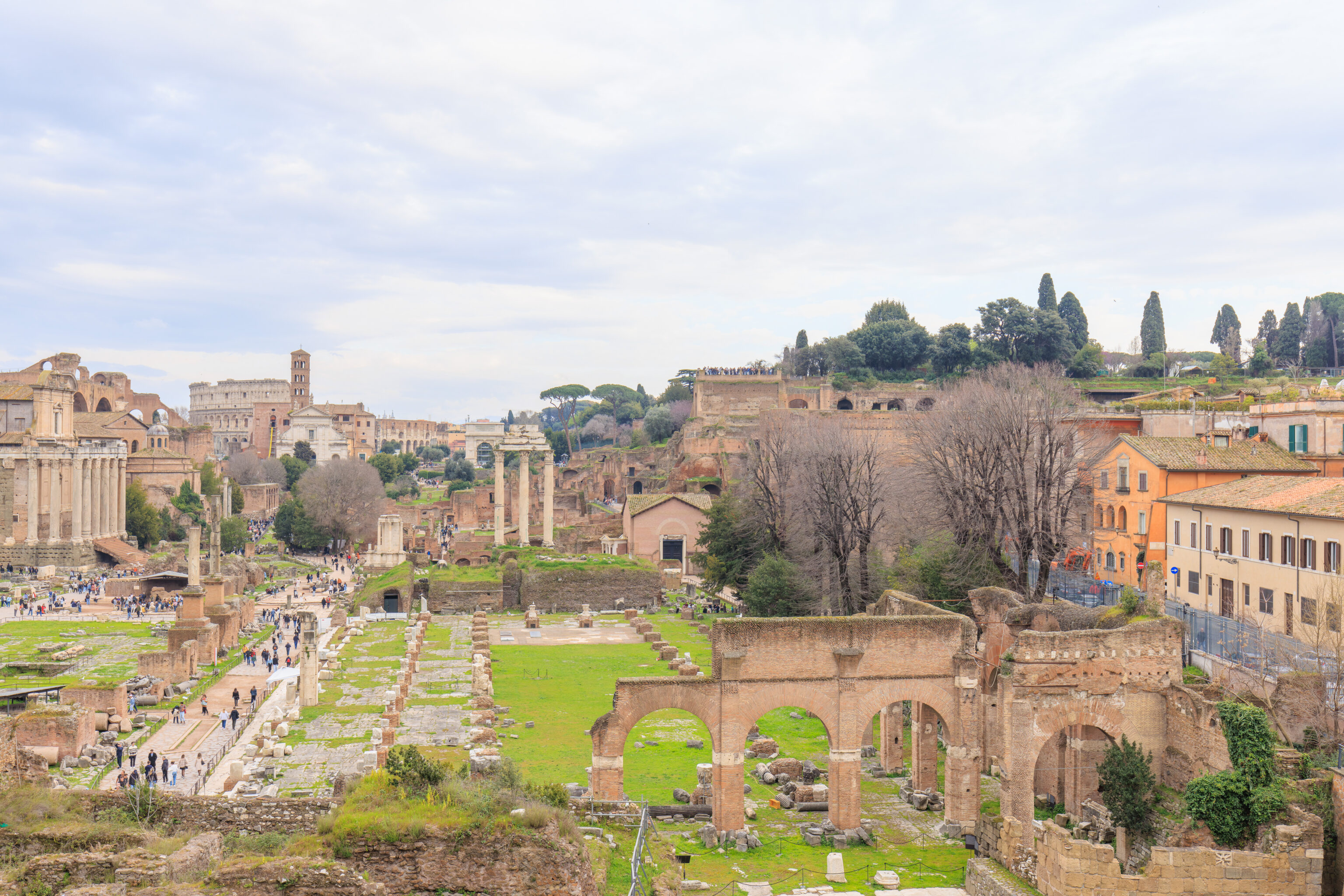
We ended up on the east side of the Capitoline with a view of the Roman Forum.
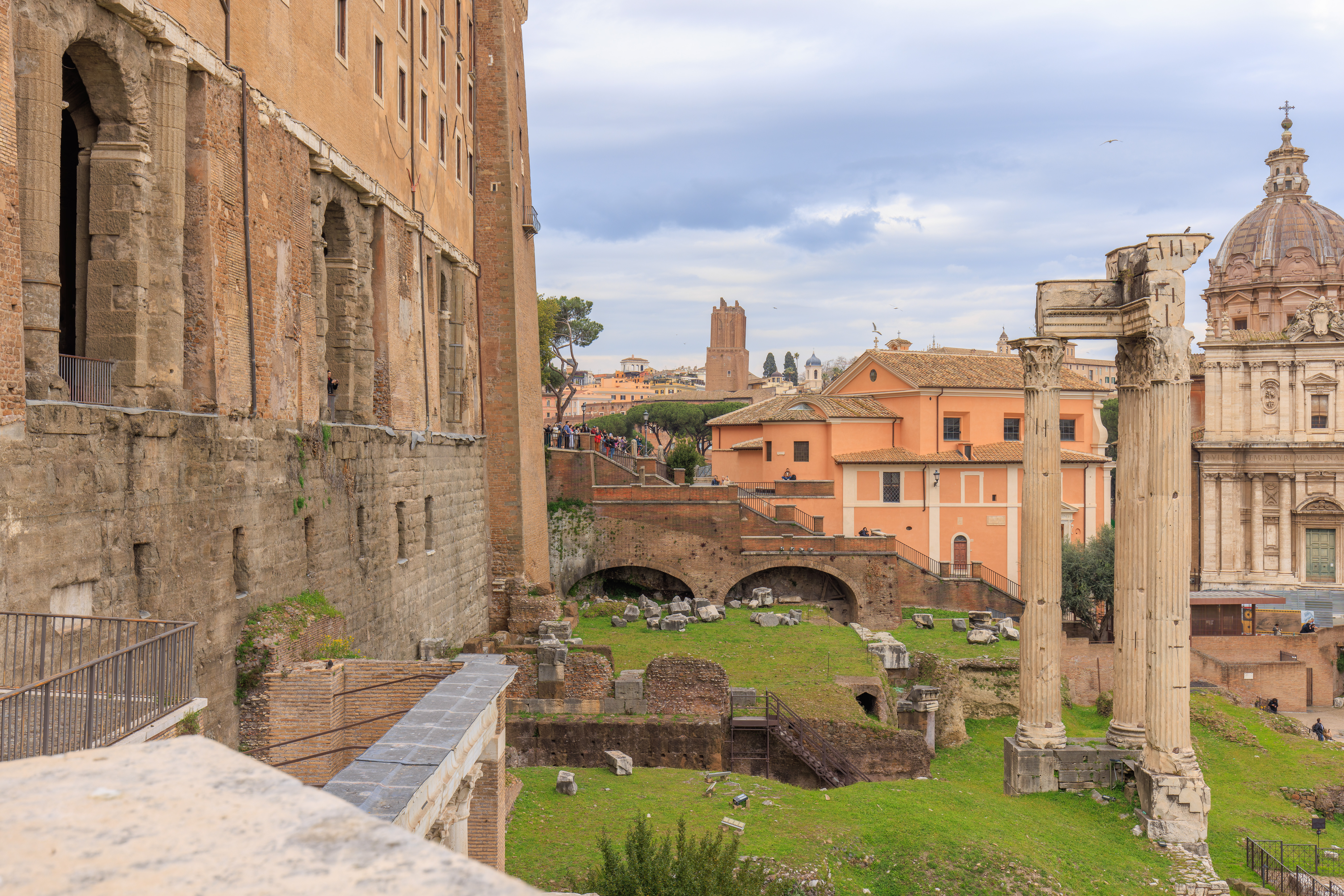
The large arched windows to the left is where we were earlier in the day at the rear of the Palazzo Senatorio.
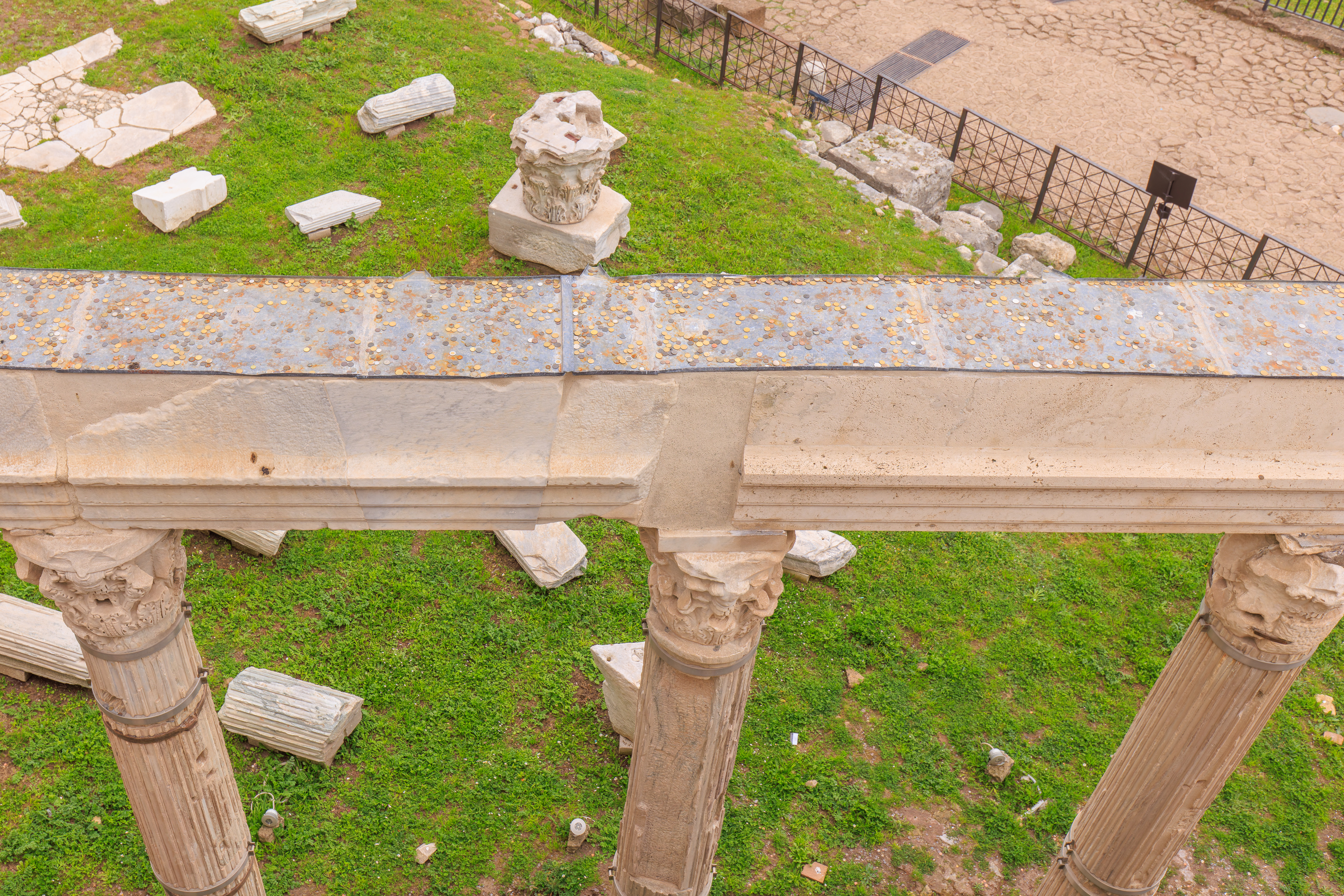
Who needs a fountain to throw away money!
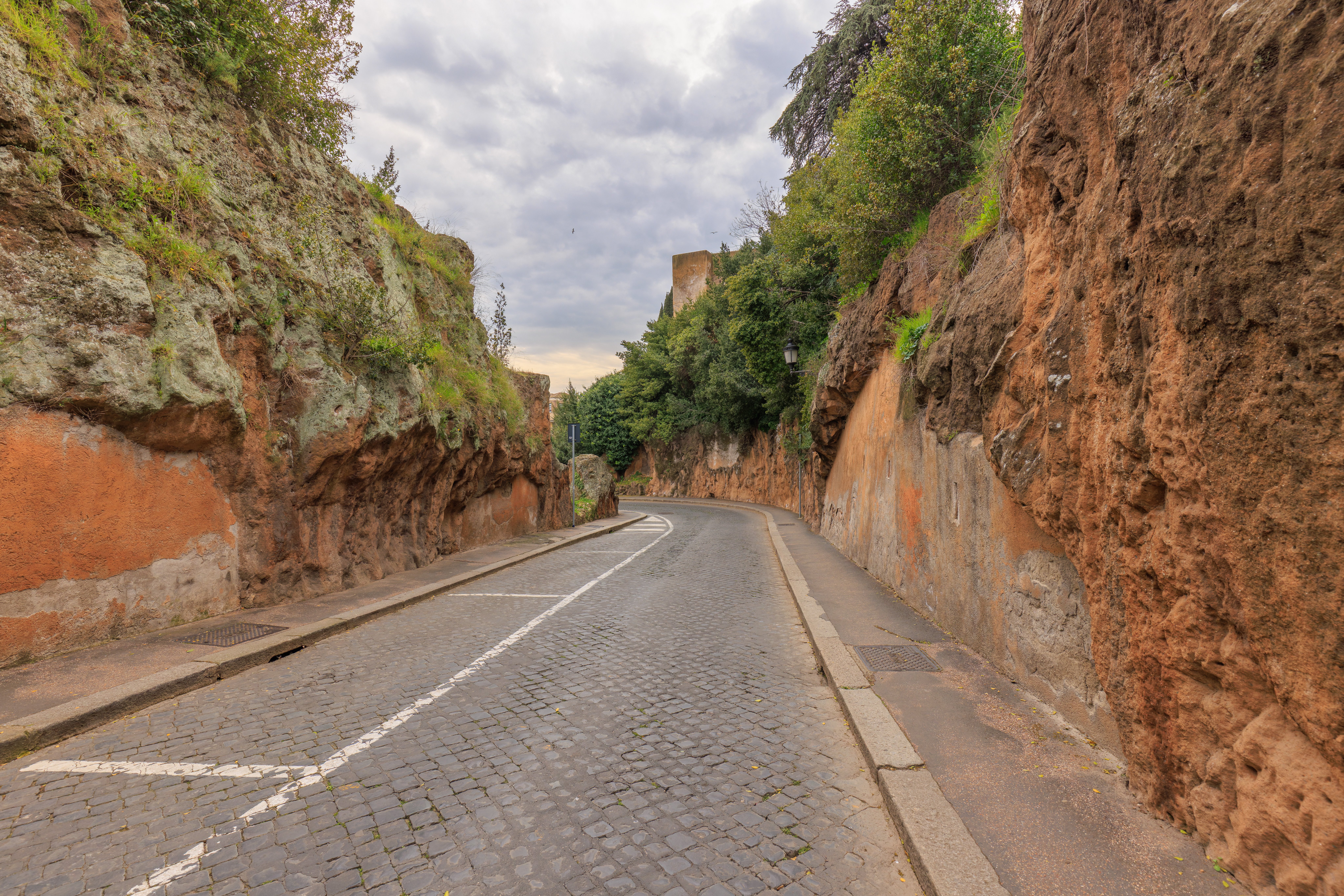
We ended up walking down this small narrow road to the southwest.
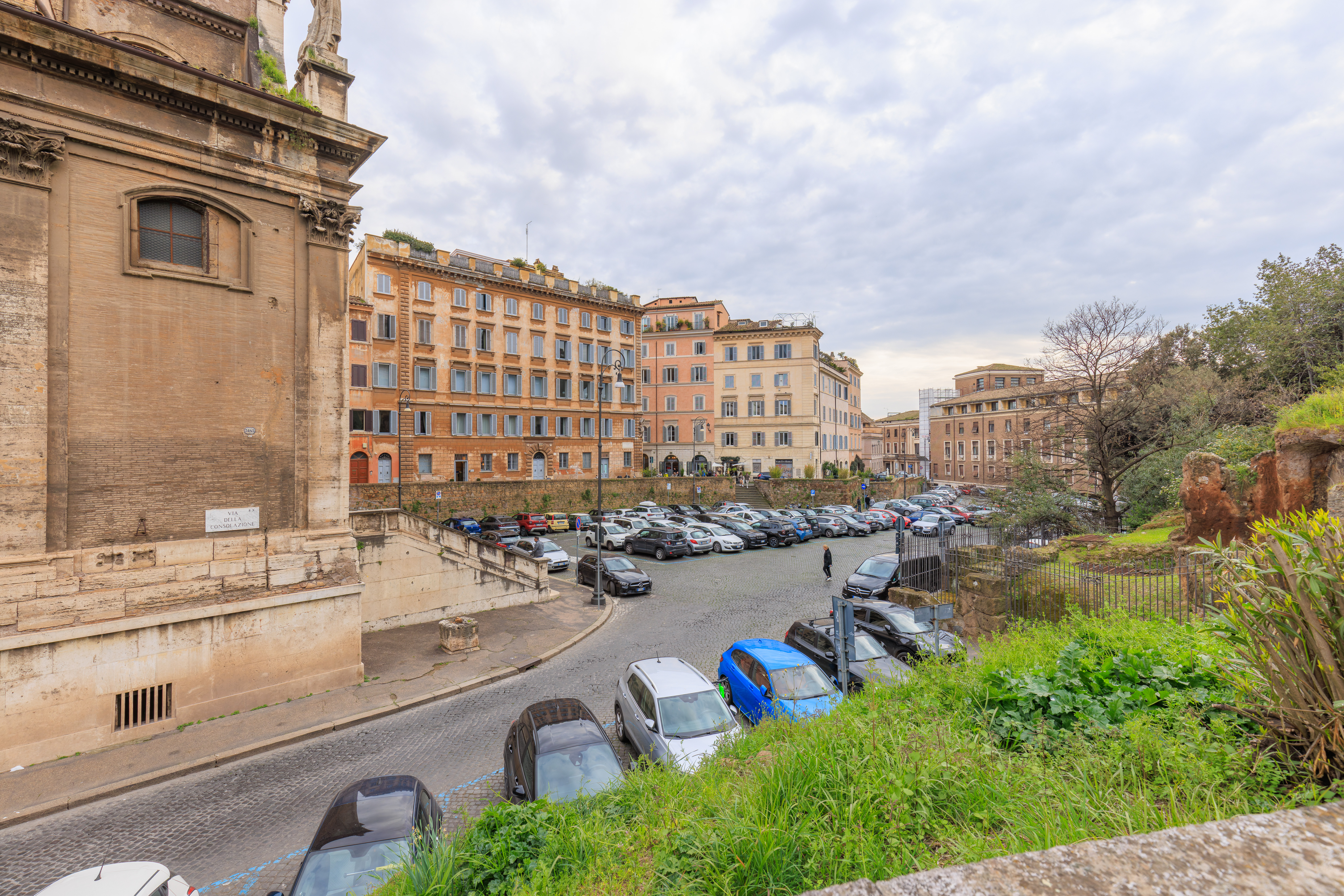
We ended up below the Capitoline.
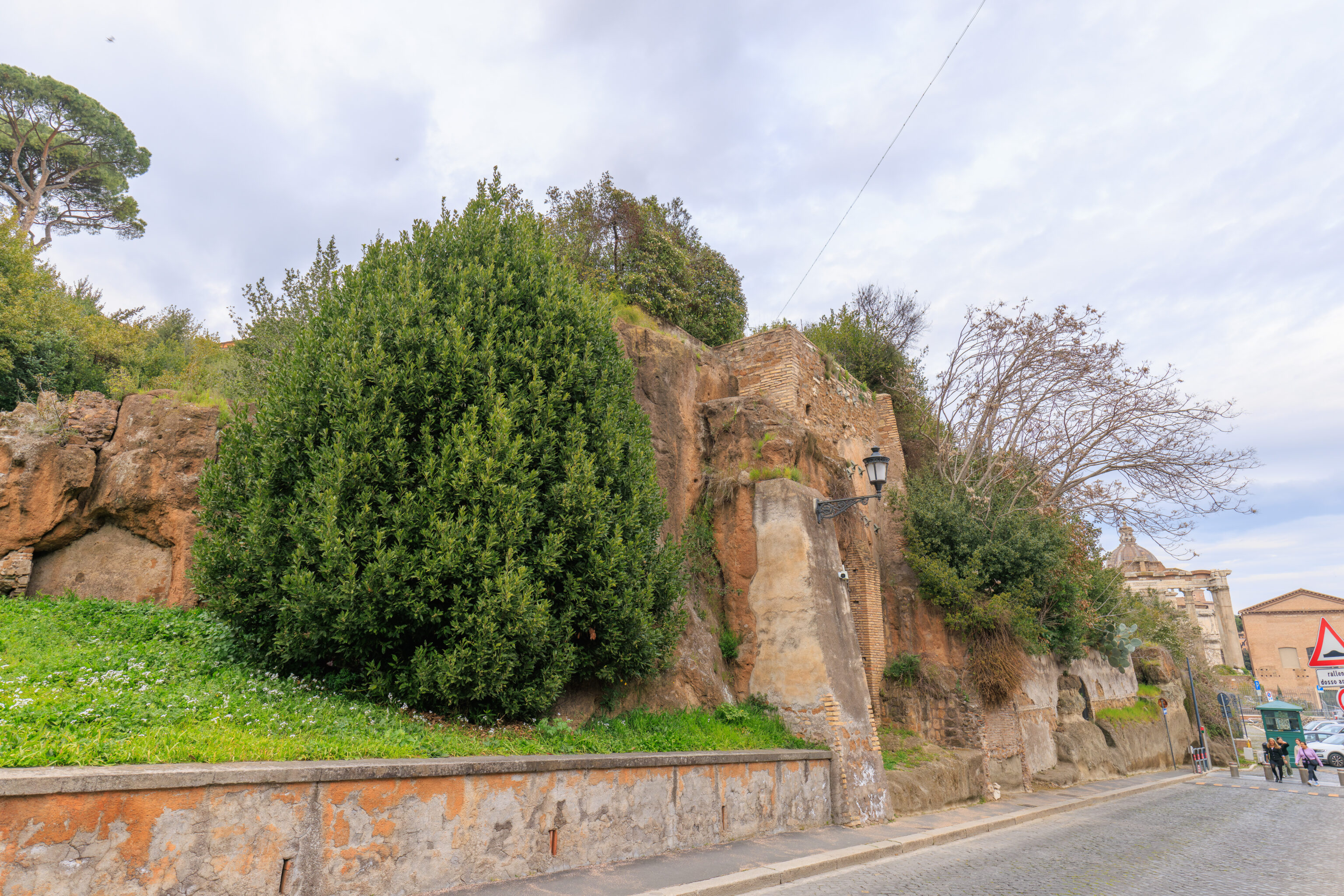
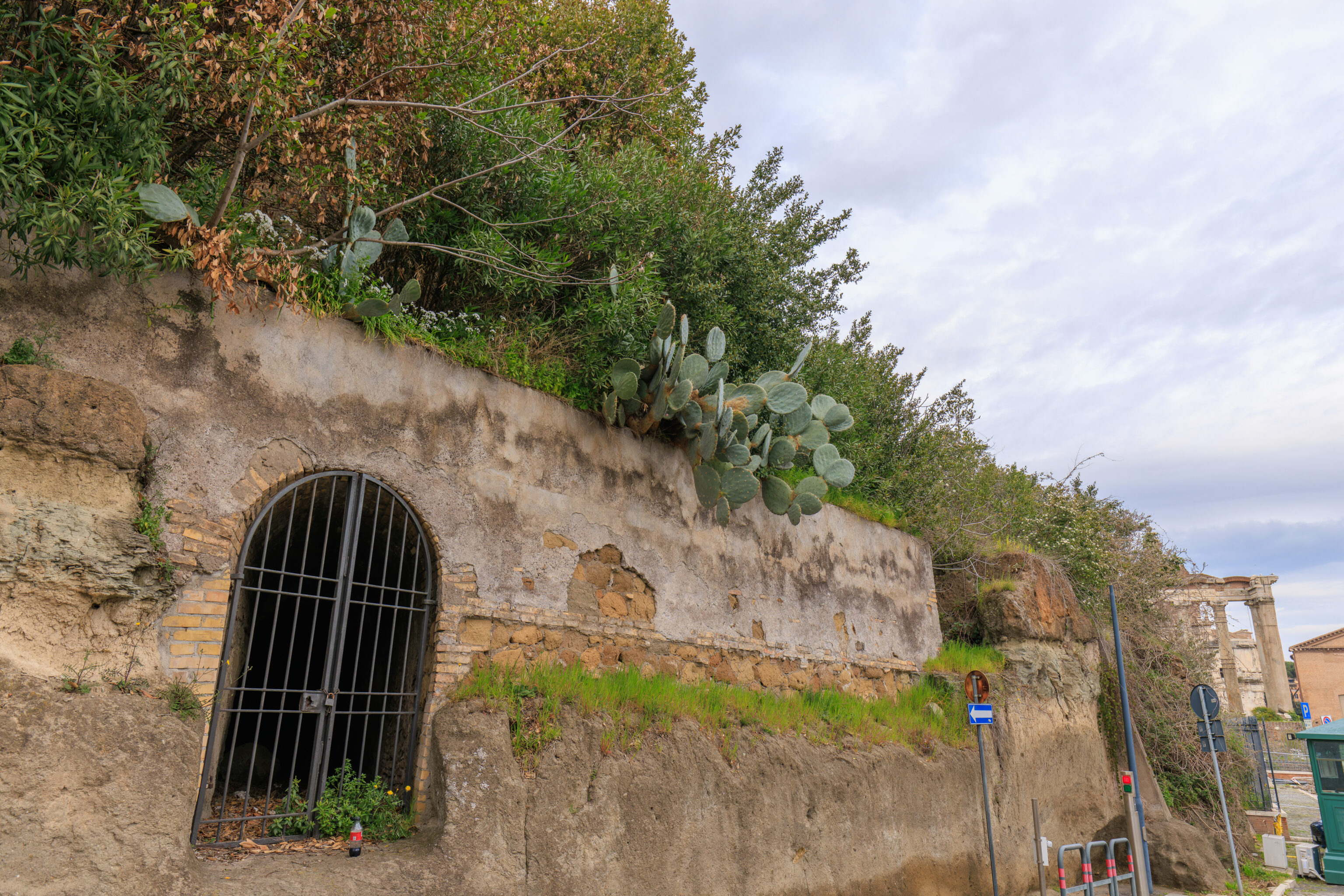
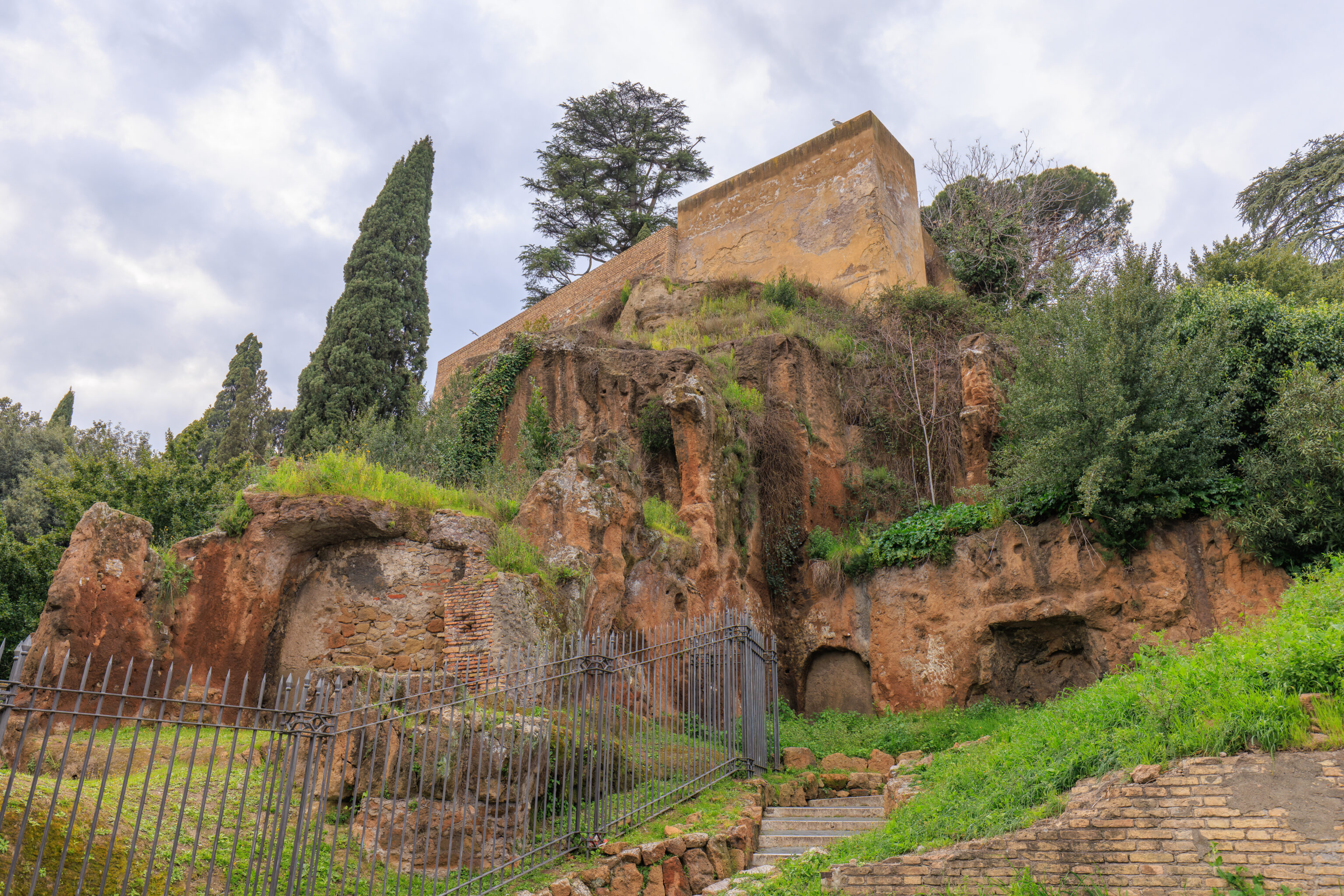
The view, looking back up, as we continued to the southwest at the edge of a parking lot.
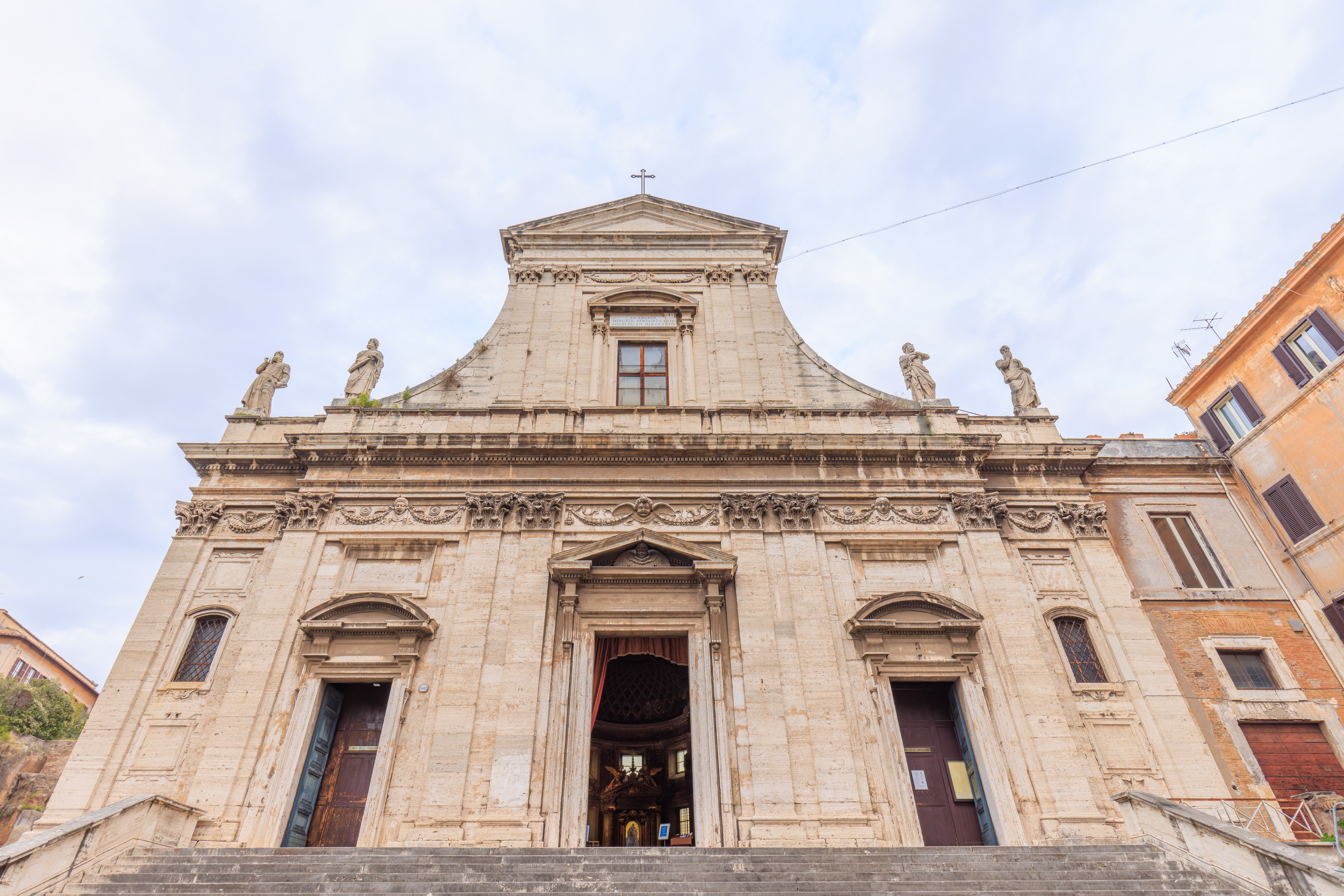
We decided to visit this church, the Chiesa di Santa Maria della Consolazione al Foro Romano (Church of Our Lady of Consolation at the Roman Forum). It is just south of where the Roman Forum meets the Capitoline.
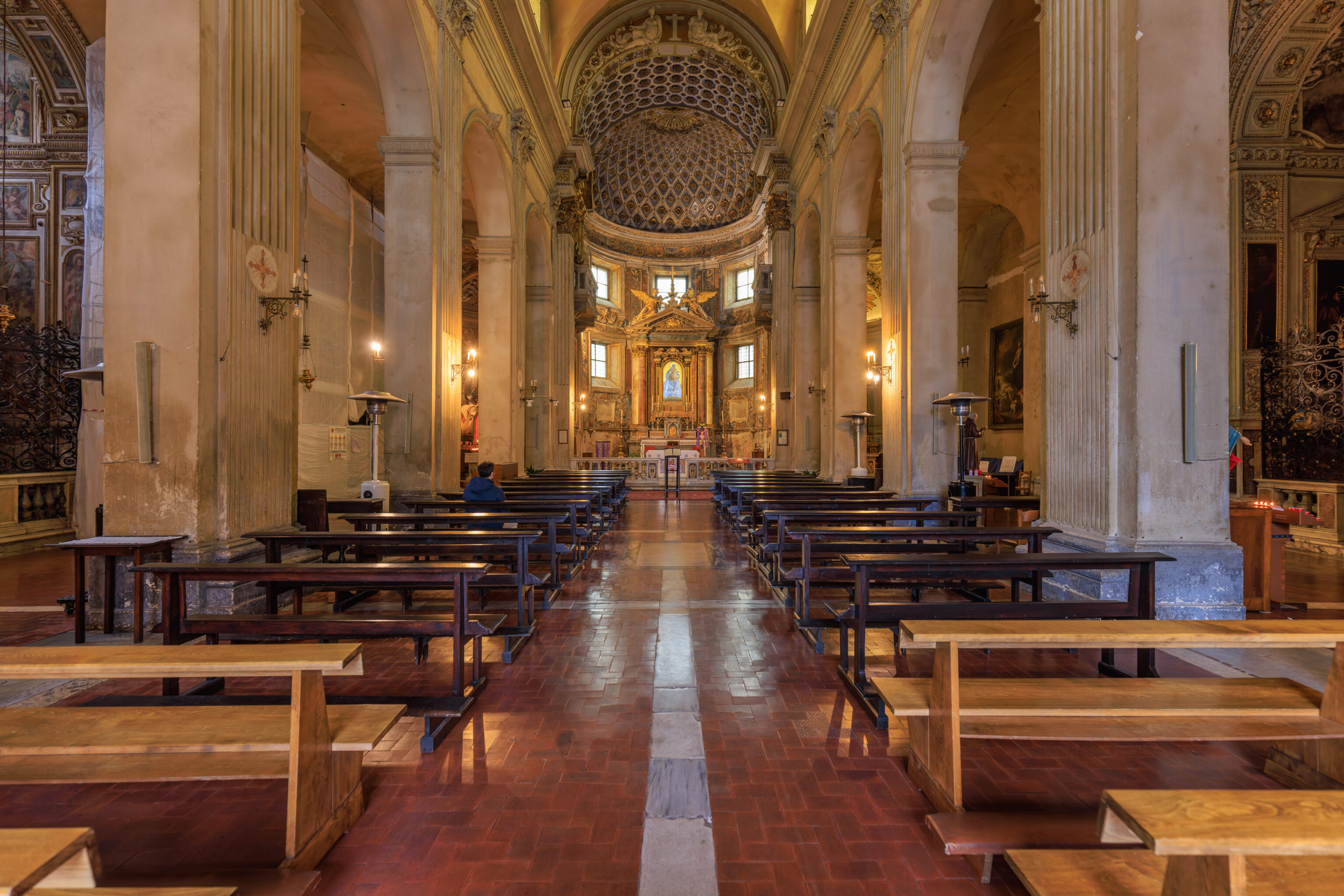
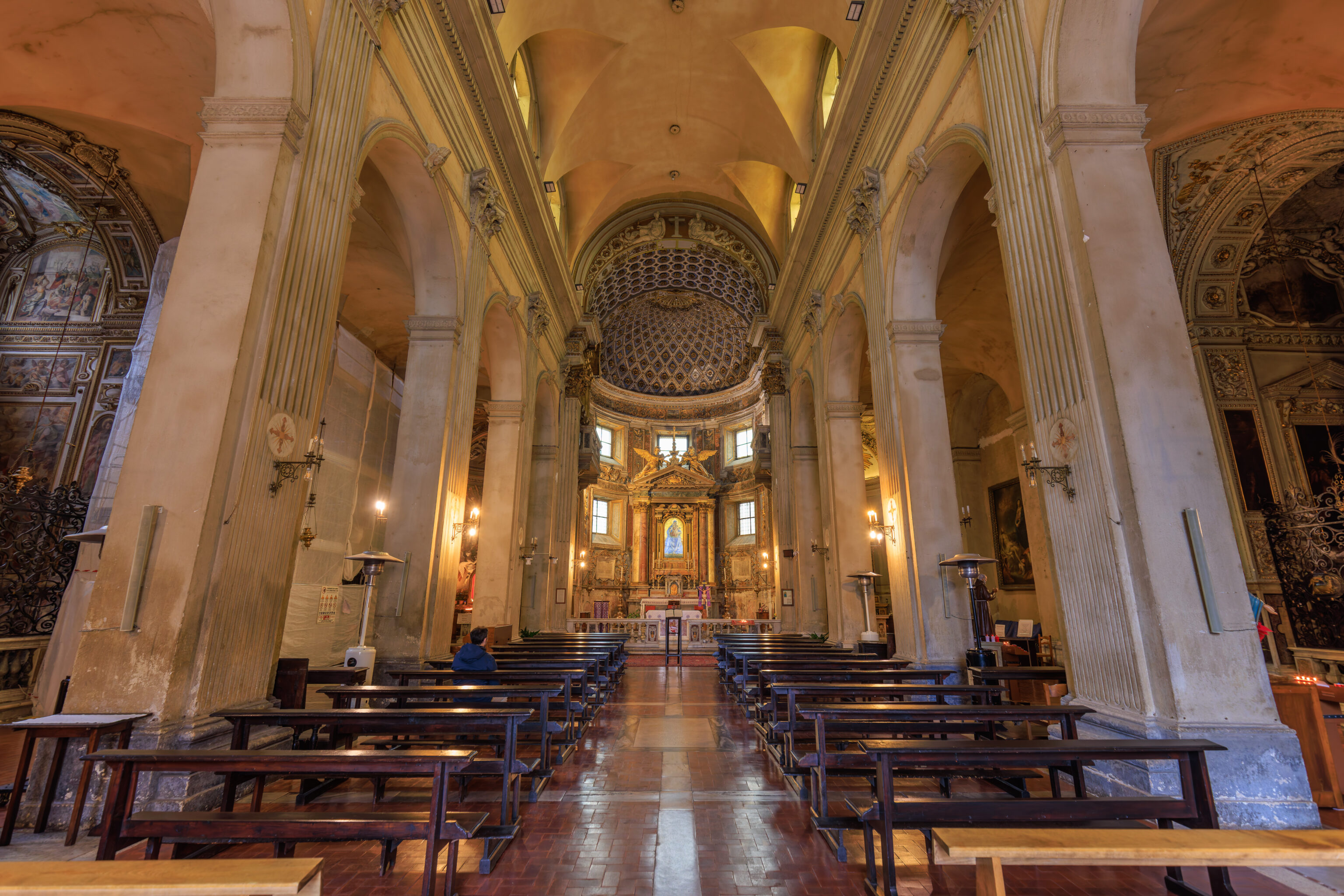
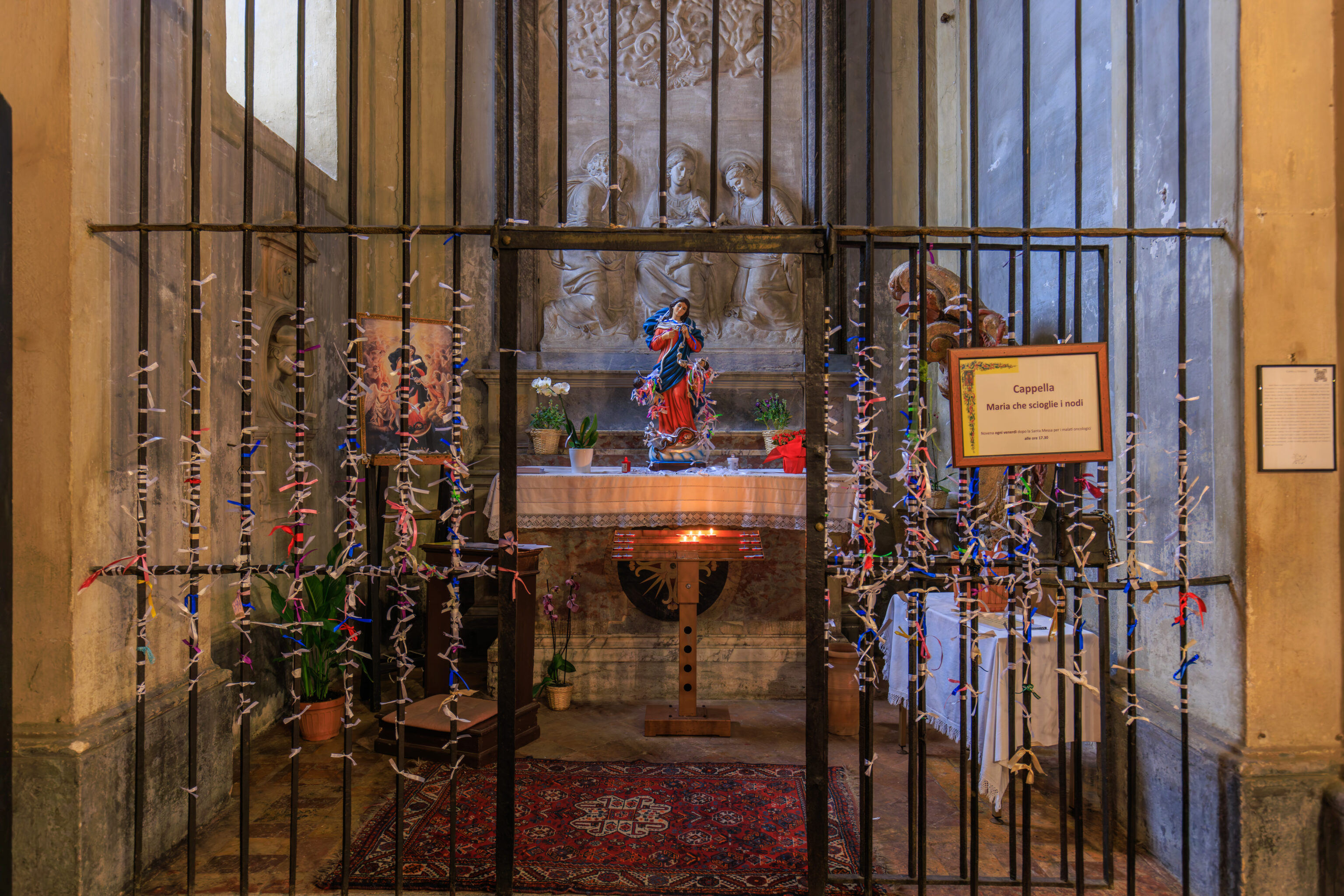
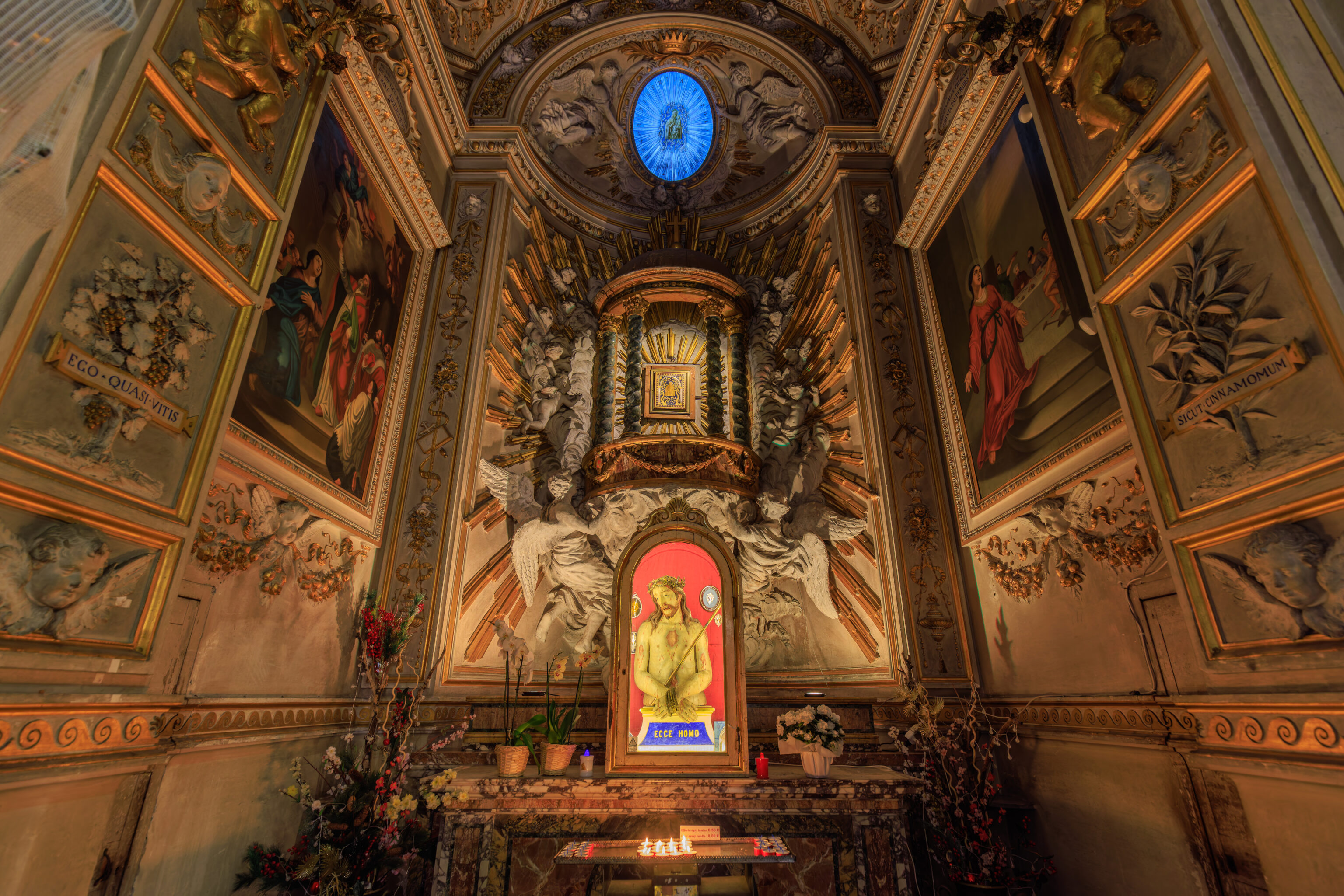
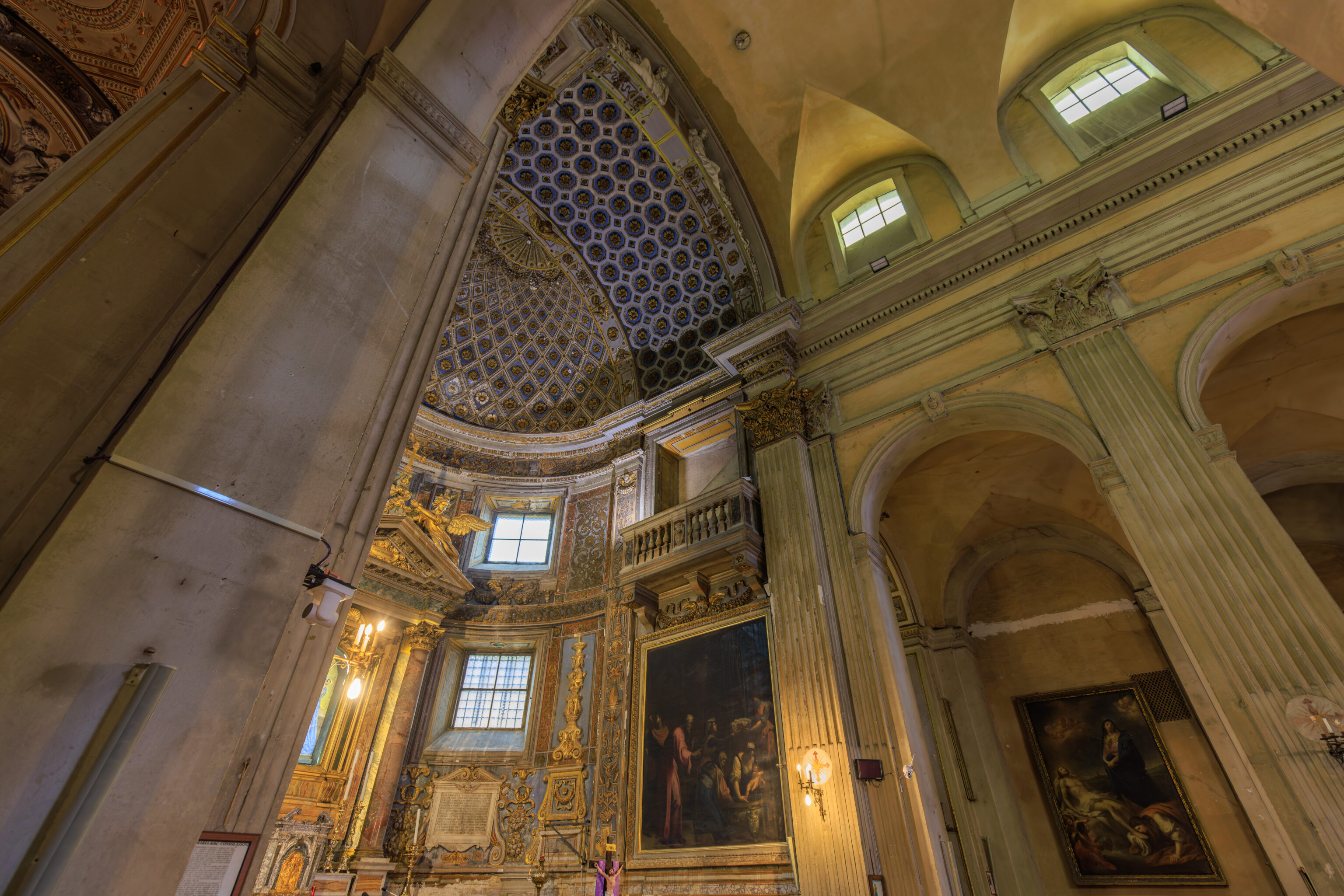

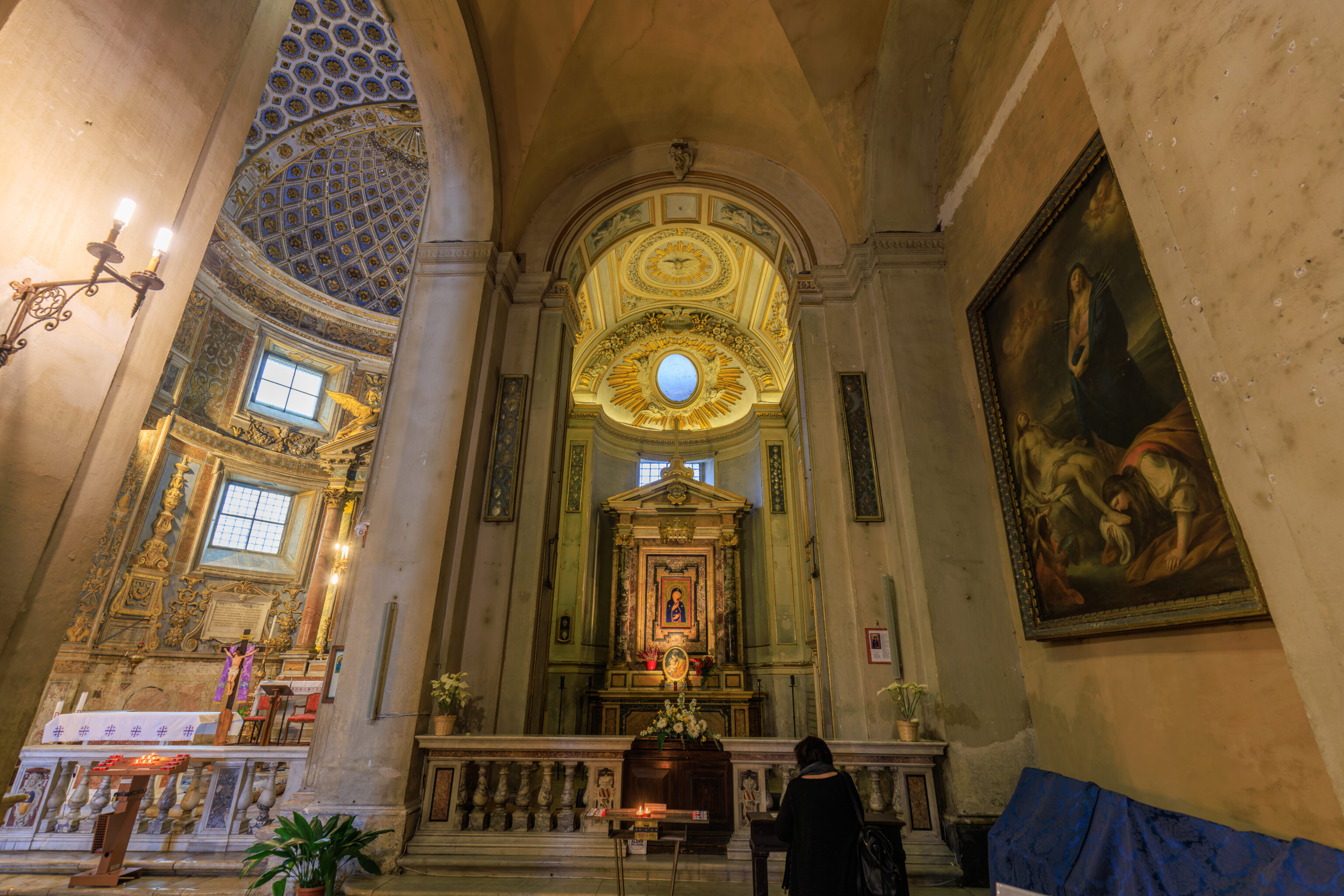
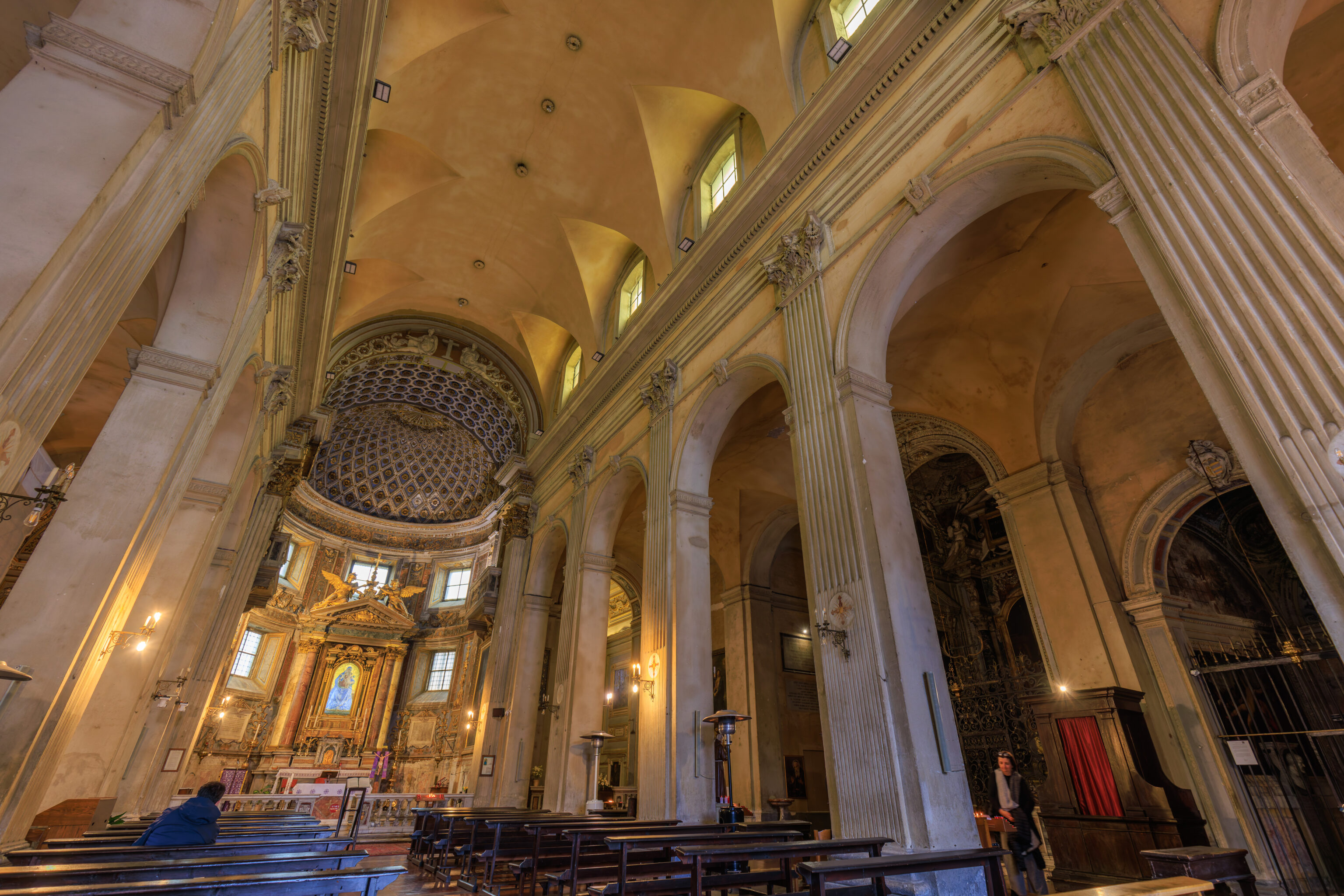
This is a much smaller and plainer church than the various other churches that we’ve visited so far in Rome!
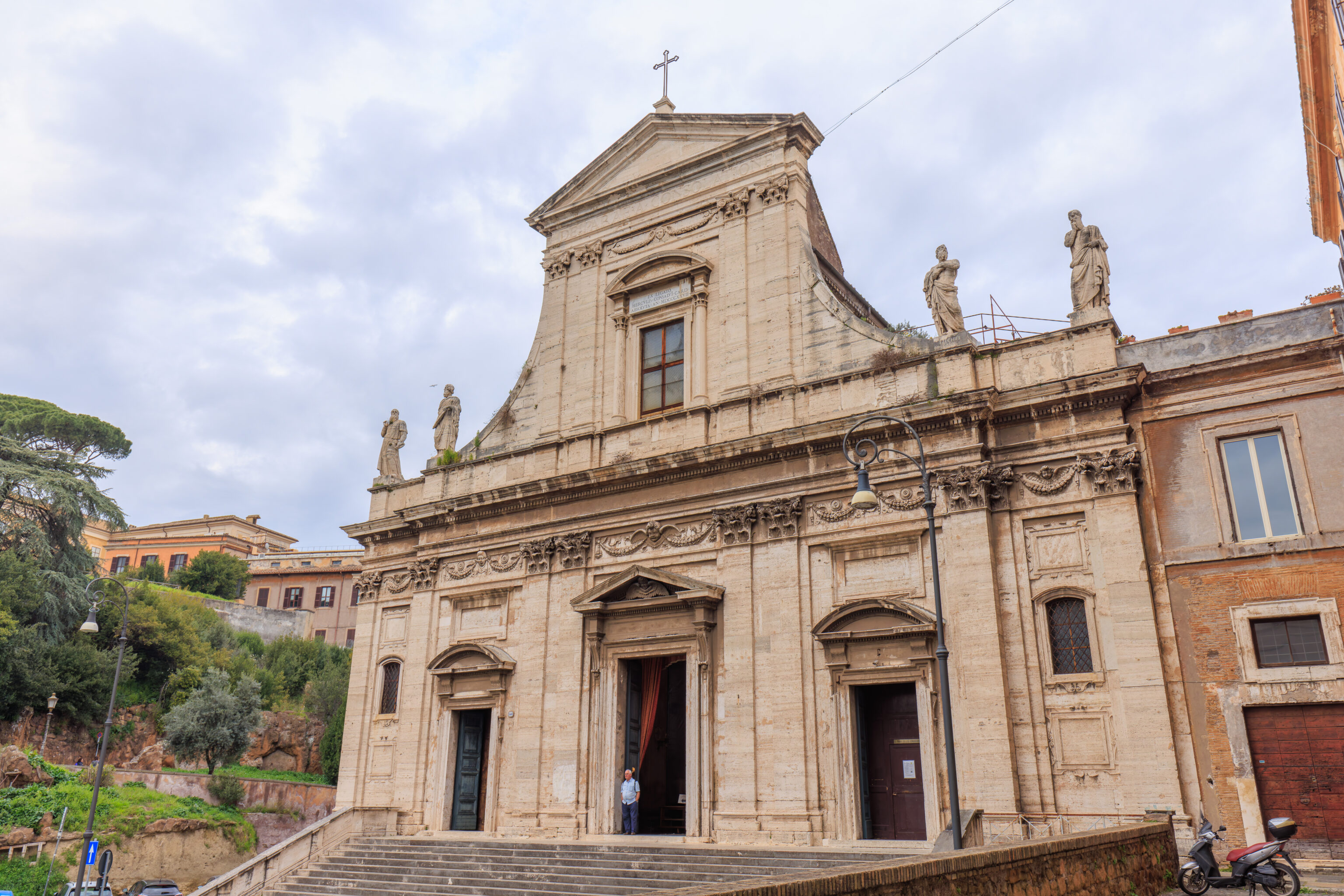
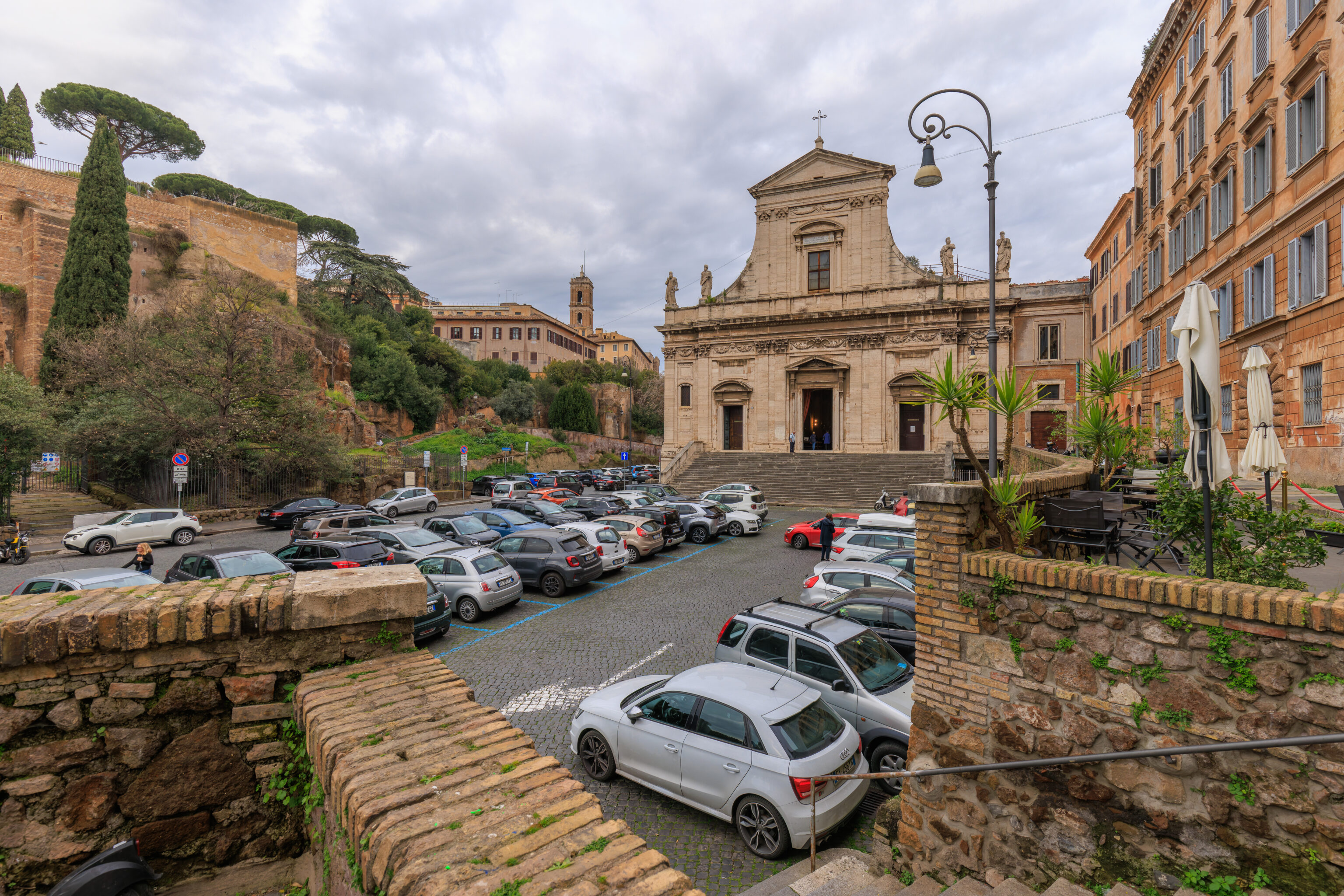
After exiting the church, we continued walking to the southwest through the parking lot. We decided to walk to a cluster of restaurants between the Circus Maximus and the Palatine, which is to the south of here.
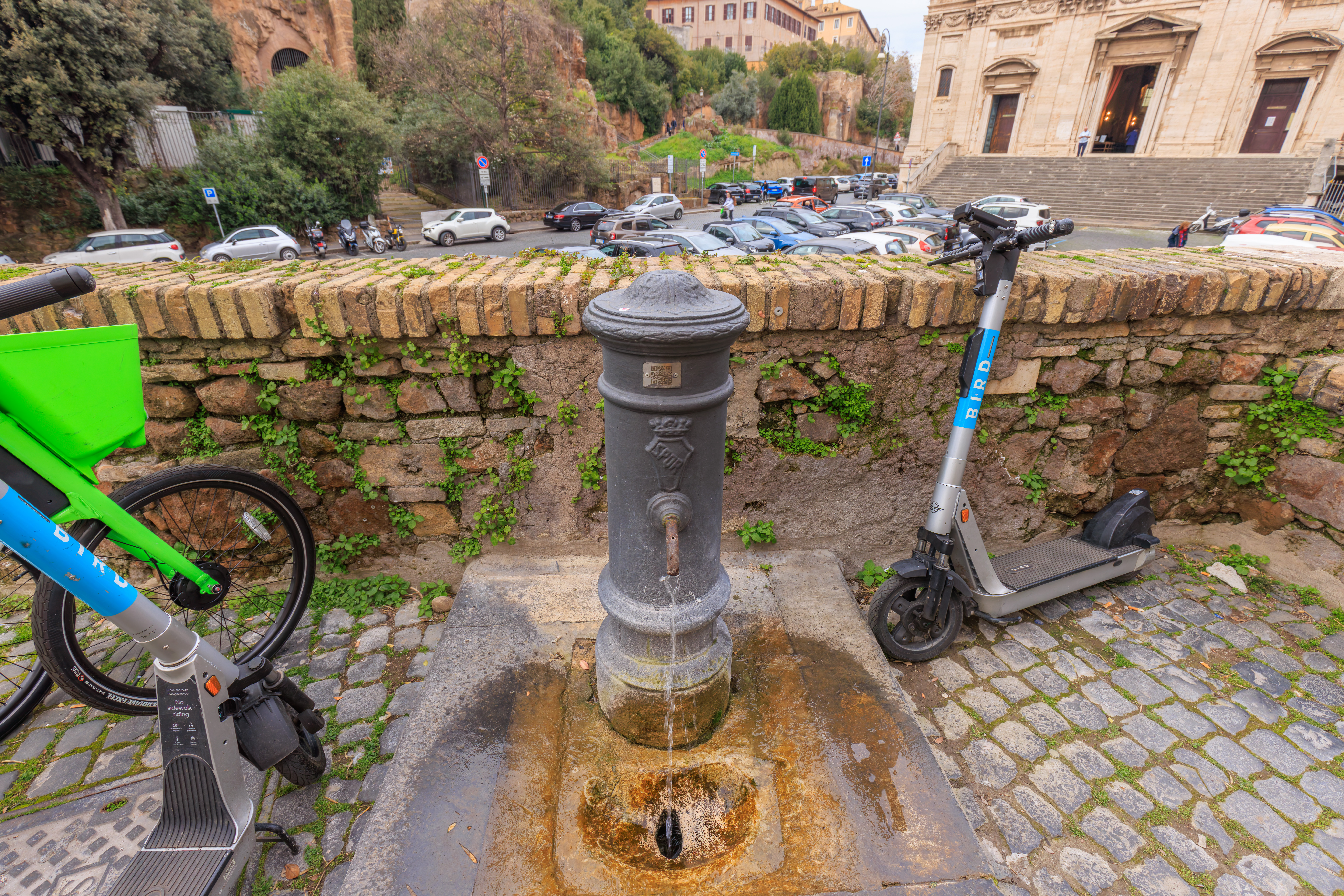
One of the many very useful Roman water fountains!
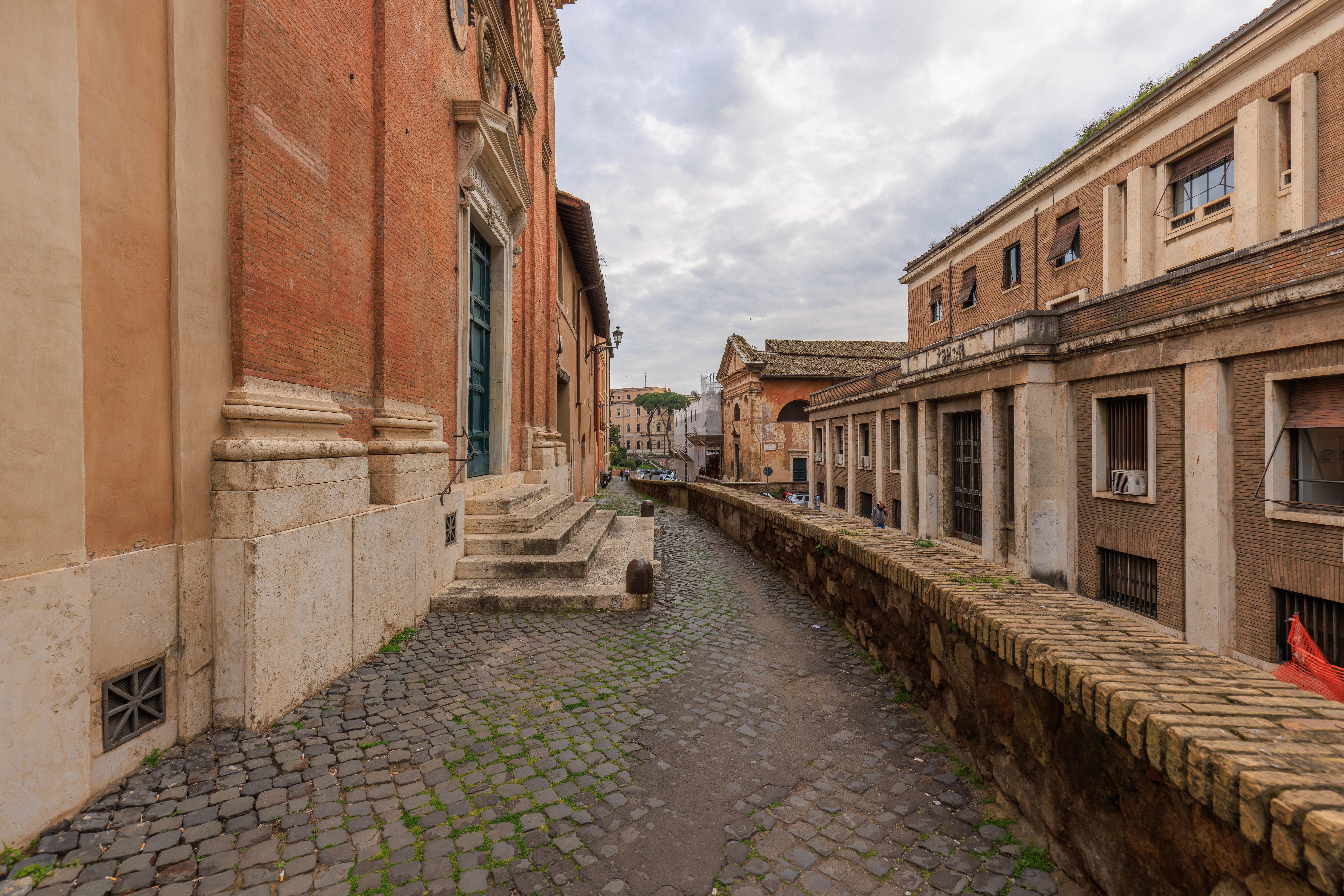
We ended up following this path to continue walking to the south.
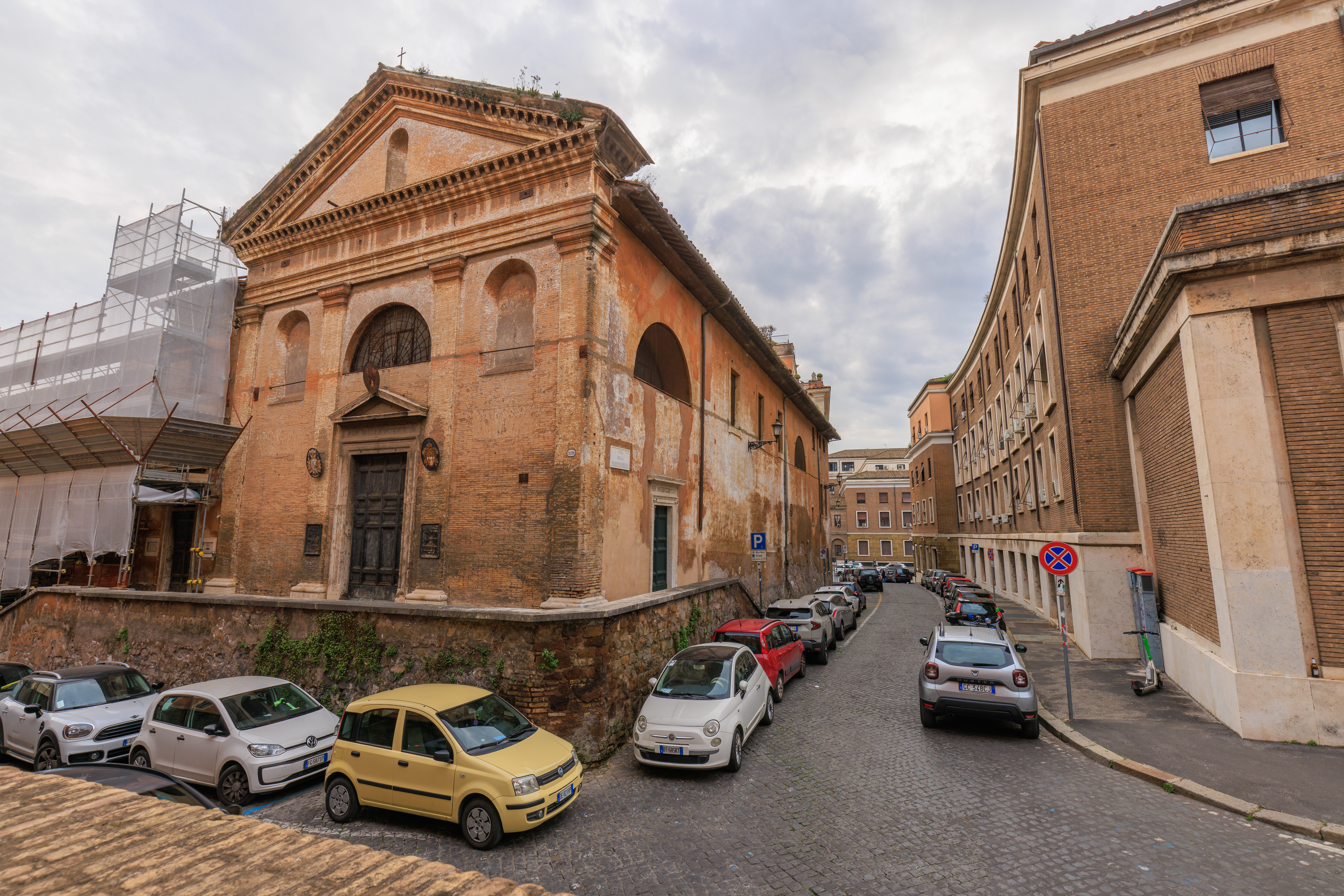
This church that we walked by is the Chiesa di San Giovanni Battista Decollato (Church of Saint John the Baptist Beheaded). The Saint John here is the one whose skull fragment is at the Basilica of San Silvestro in Capite, one of the churches we visited earlier today. This church is interesting as it was dedicated to criminals who were sentenced to death. They were allowed to commute once sentence per year.
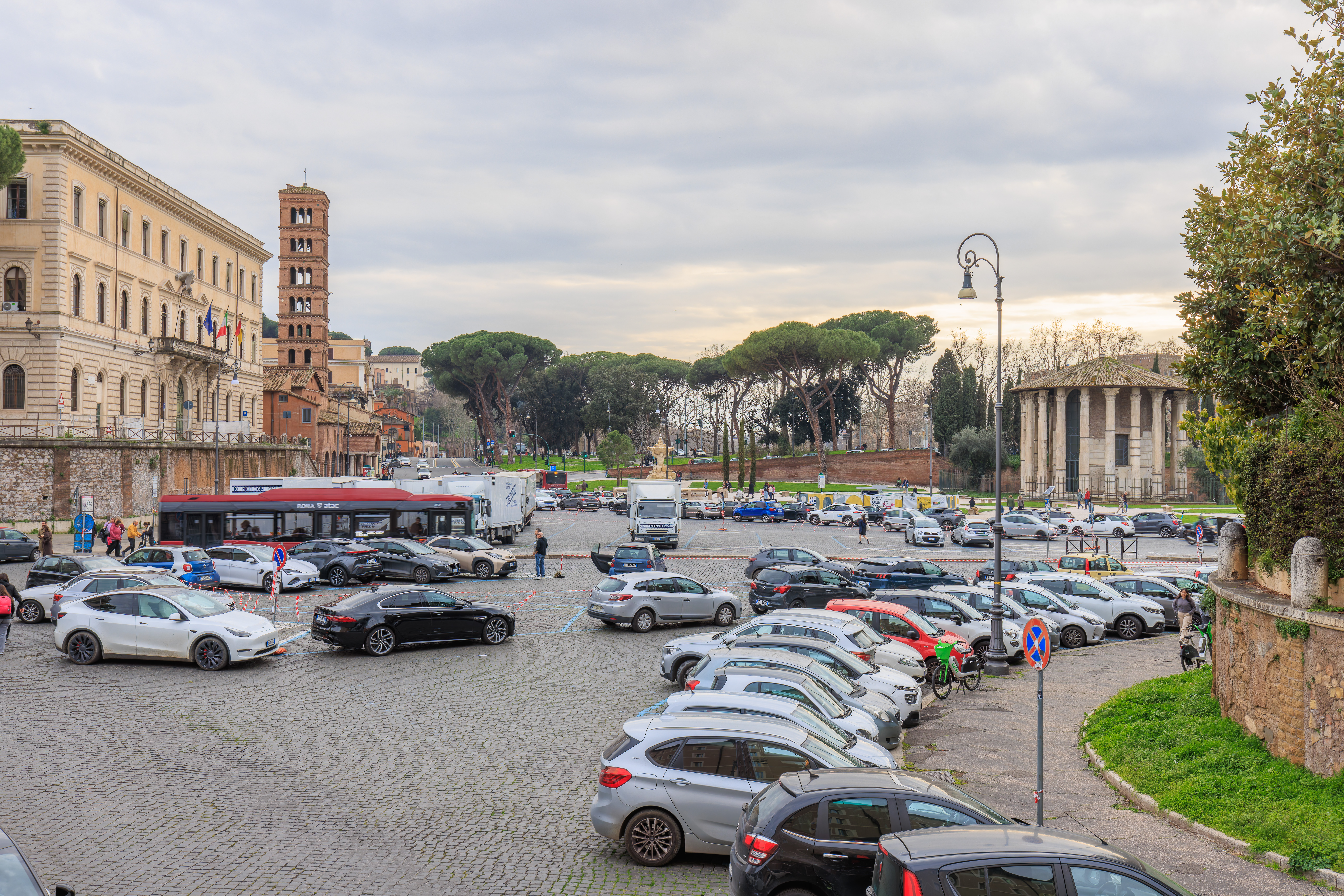
The circular building to the right is the Tempio di Ercole Vincitore (Temple of Hercules Victor). Although we had marked it on Google Maps, we unfortunately did not visit. Circular buildings aren’t too common in general and this is possibly only the second circular church that we’ve seen, with the first being the Chapel of Reconciliation in Berlin when we visited in 2023.
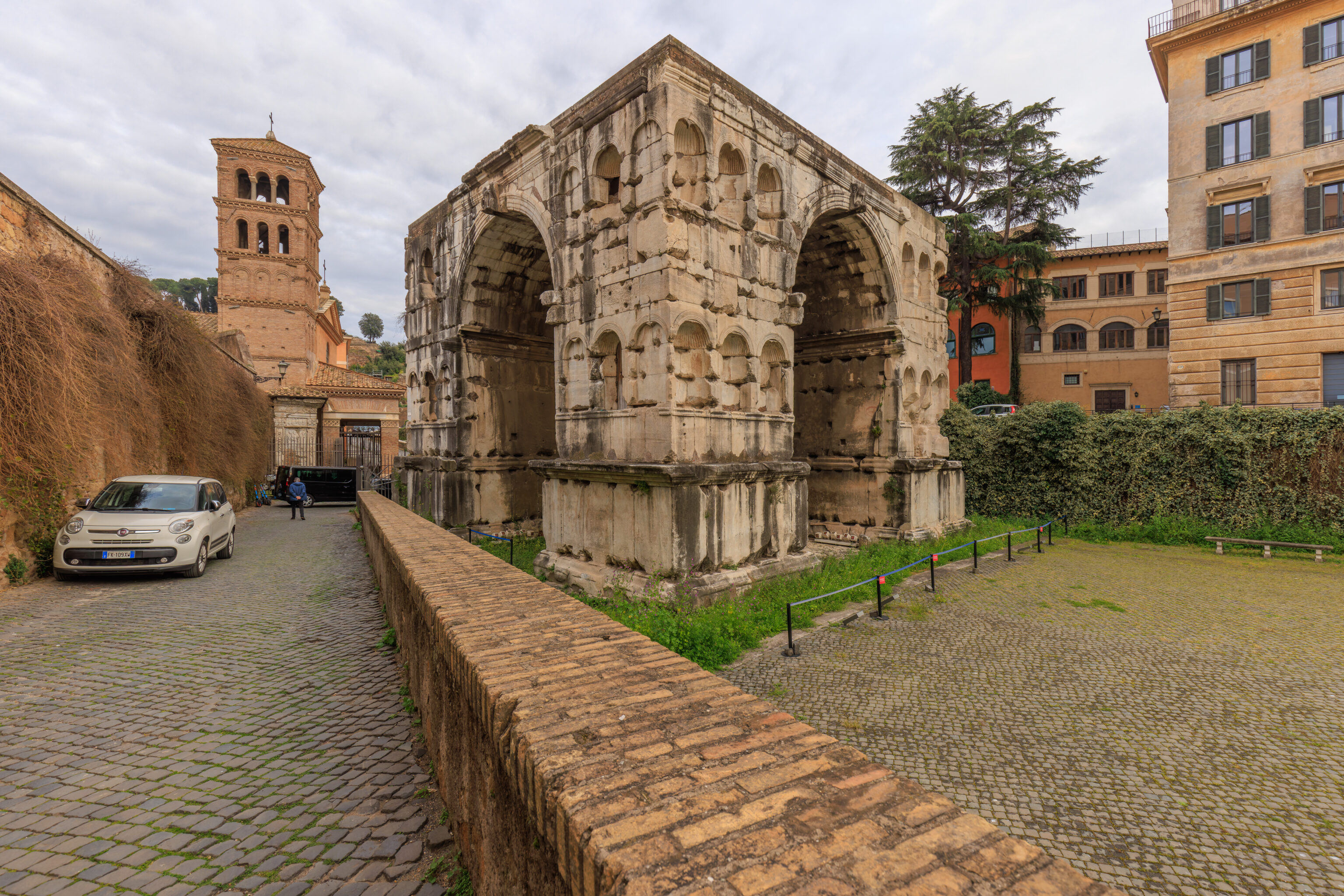
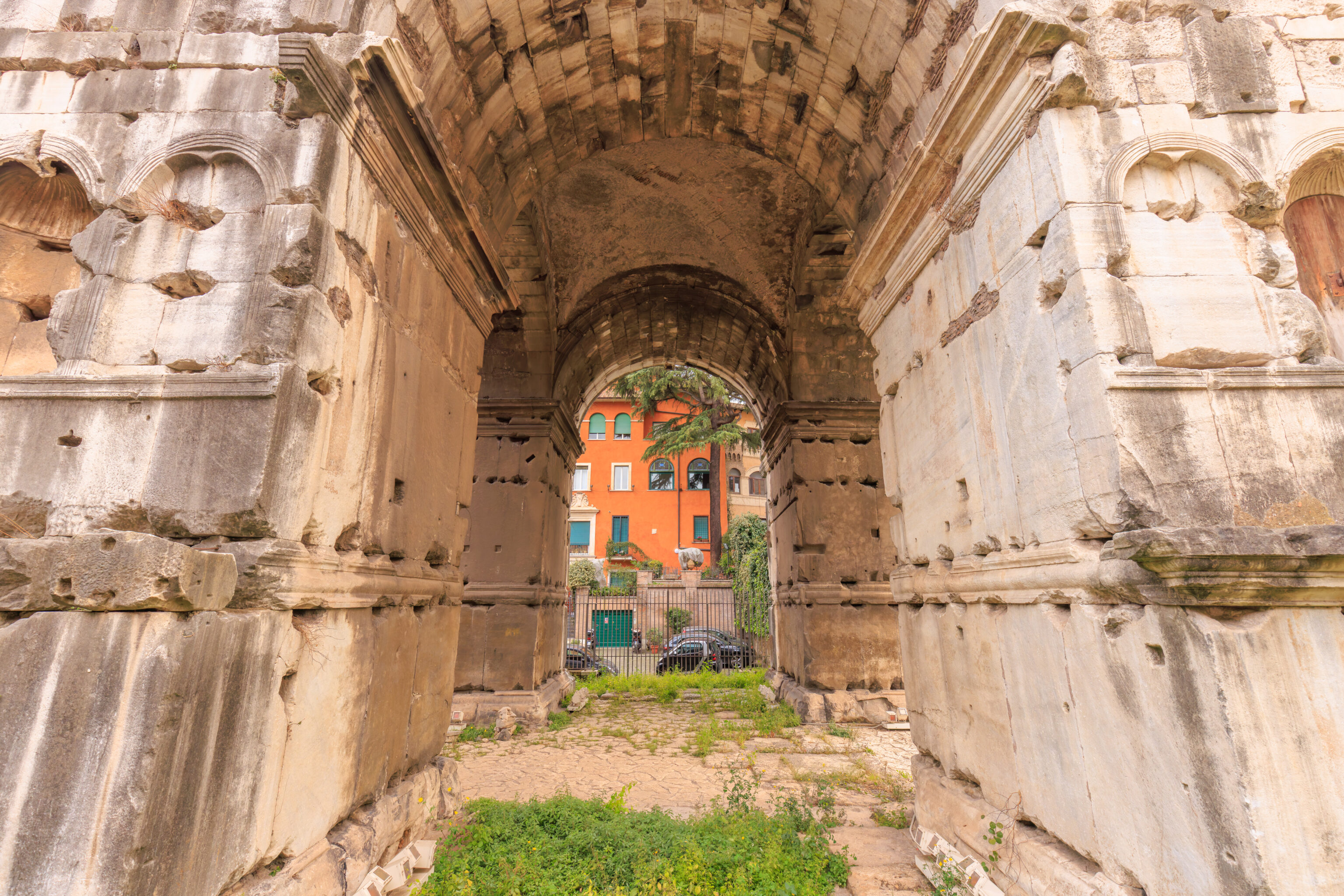
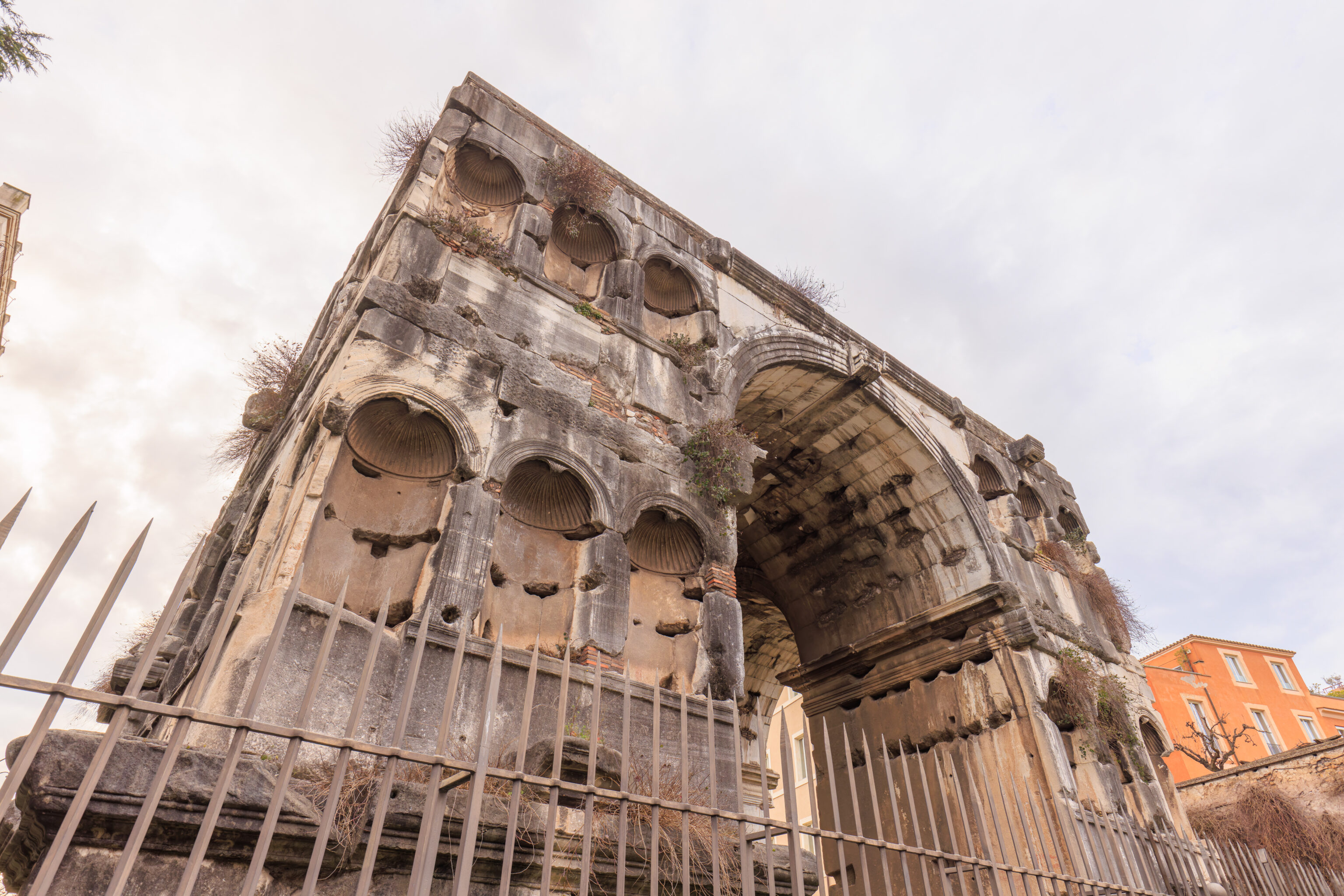
Thus cube-like structure is the Arco di Giano (Arch of Janus). It is a four sided arch built by Emperor Constantine’s sons in his memory. Unfortunately, all the statues in the alcoves have been lost.
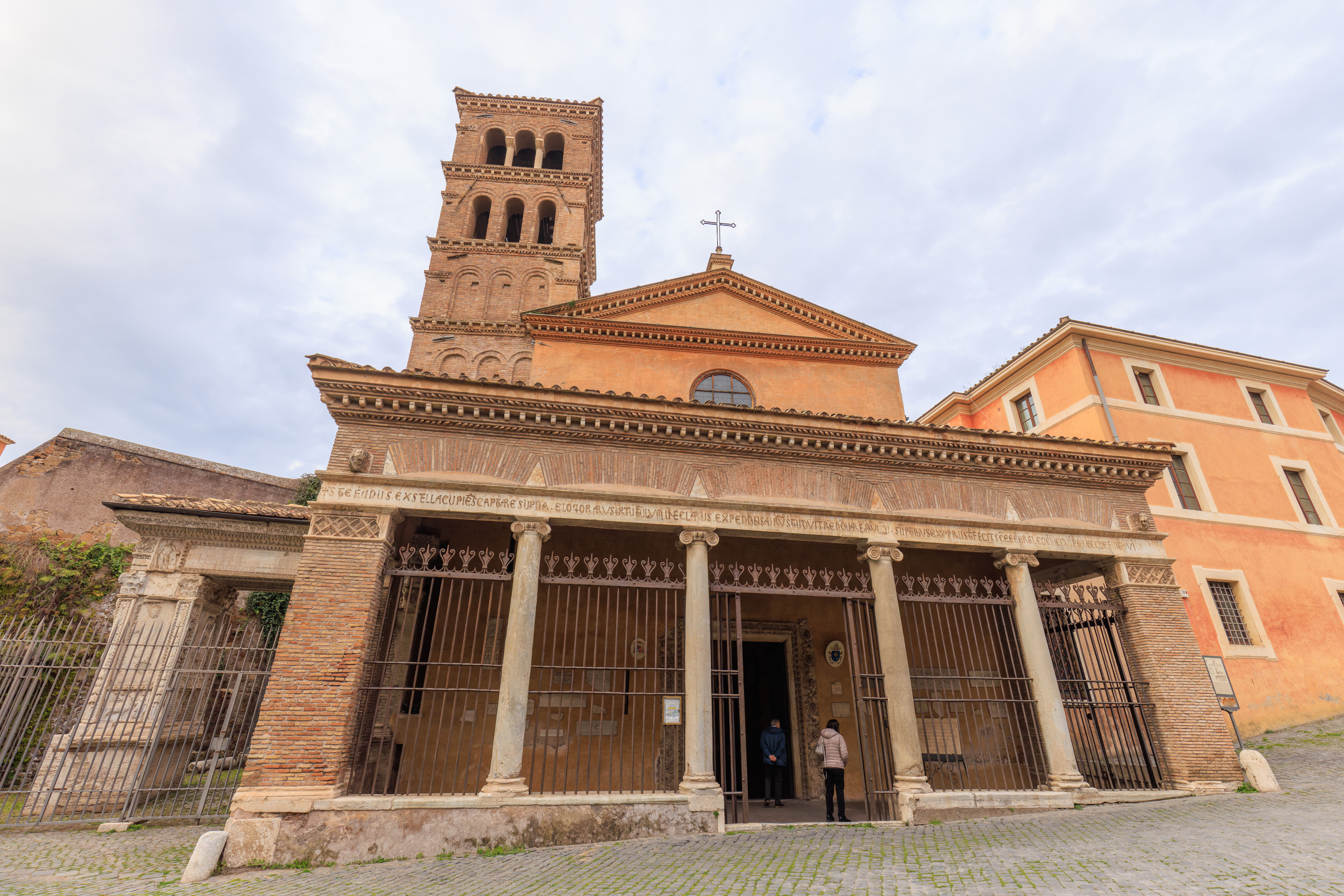
We decided to take a quick look at this church to the west of the arch. It is the Chiesa San Giorgio in Velabro (Church of Saint George in Velabro).
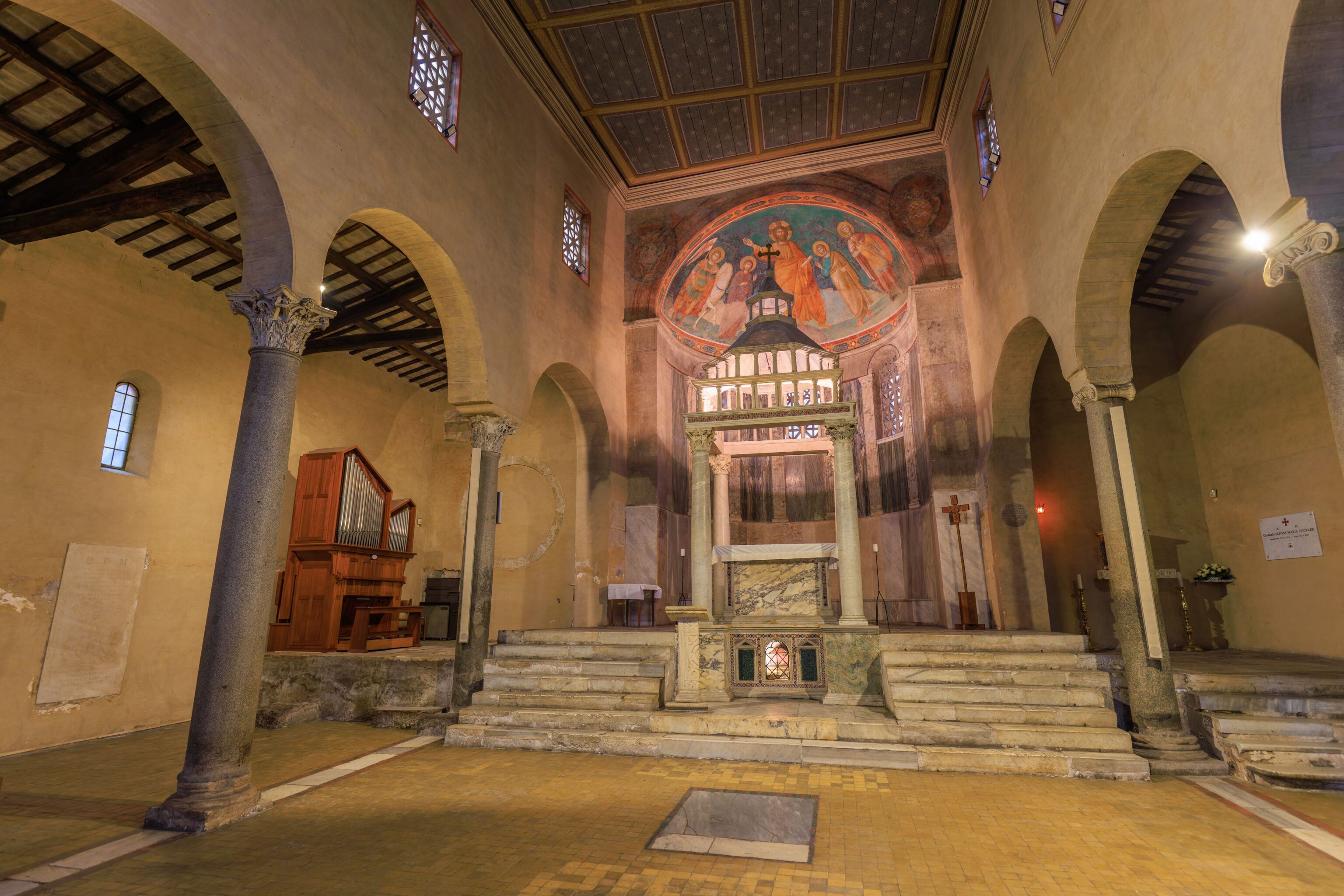
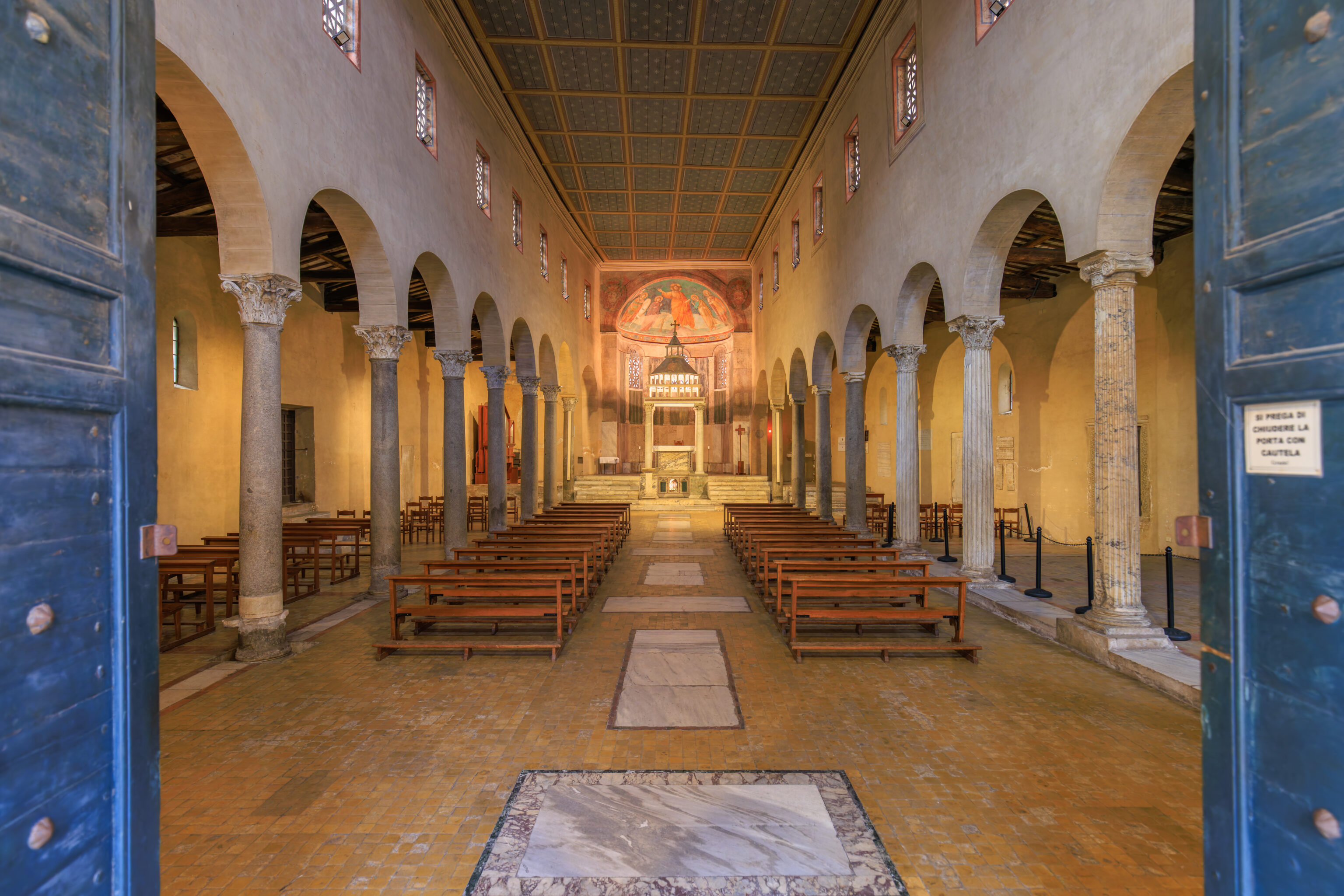

The interior of this church is the plainest that we’ve seen so far in Rome.
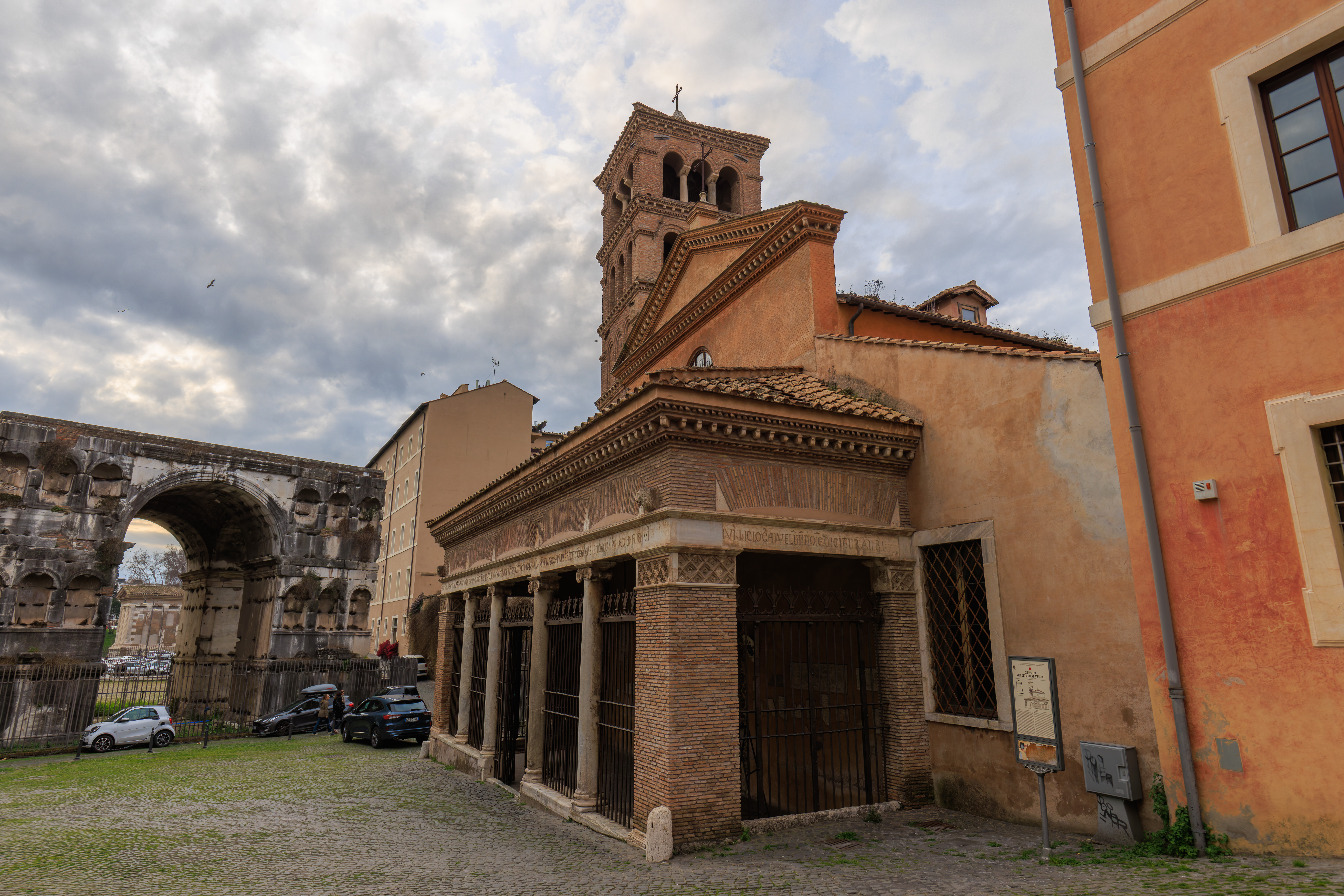
This church was the site of a Mafia bombing in 1993. A sign reads, translated to English:
NEAR THIS PLACE OF PRAYER
ON JULY 28, 1993
A MAFIA BOMB EXPLODED
BRINGING RUIN AND DESTRUCTION
THIRTY YEARS LATER ROME DOES NOT FORGET
THE DUTY TO PASS ON
THE VALUES OF JUSTICE
OF LEGALITY AND DEMOCRACY
S.P.Q.R. 2023

We continued walking to the east, turning right at the next corner and heading to the south. We passed by yet another church, the Basilica di Sant’Anastasia al Palatino (Basilica of Saint Anastasia on the Palatine Hill).
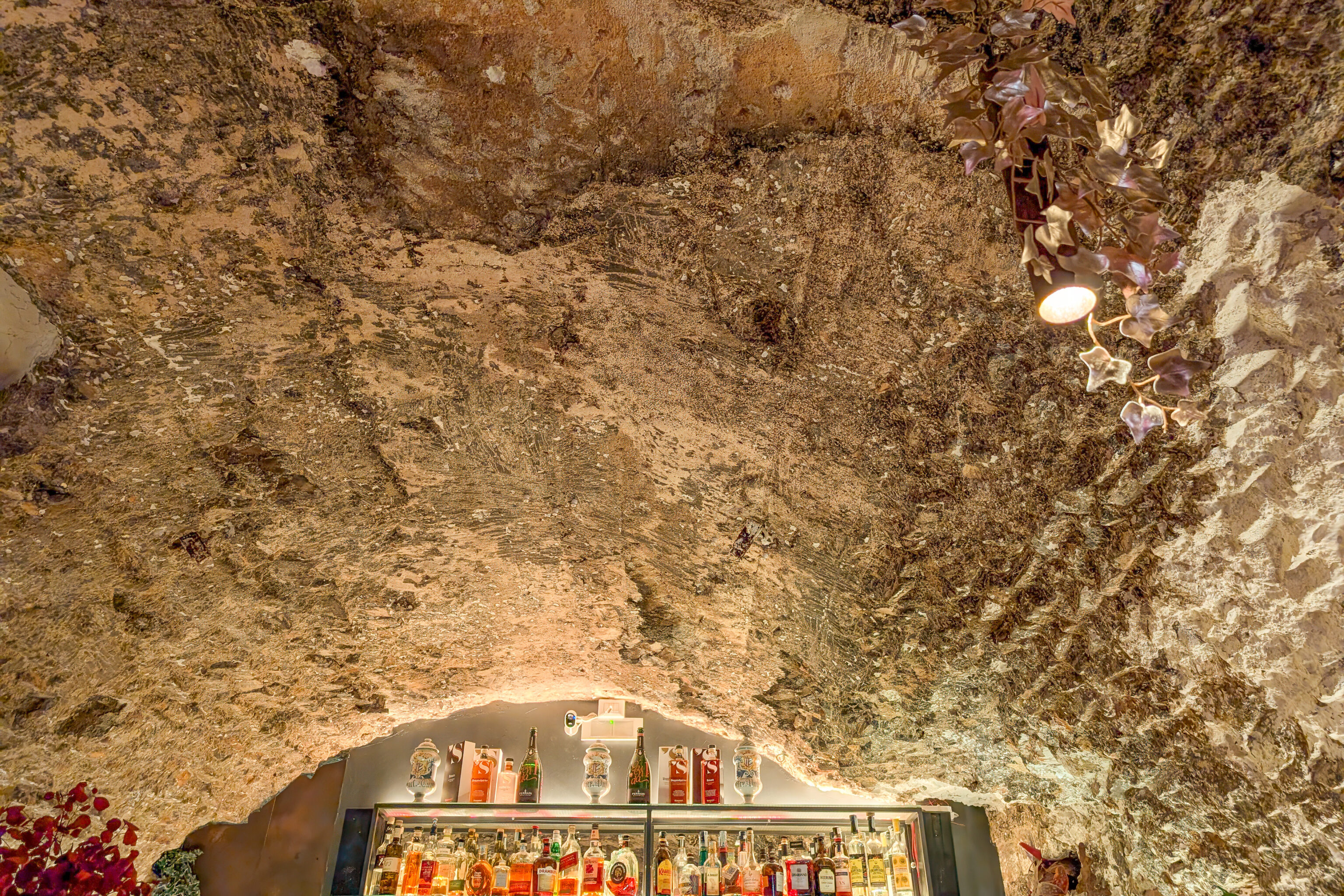
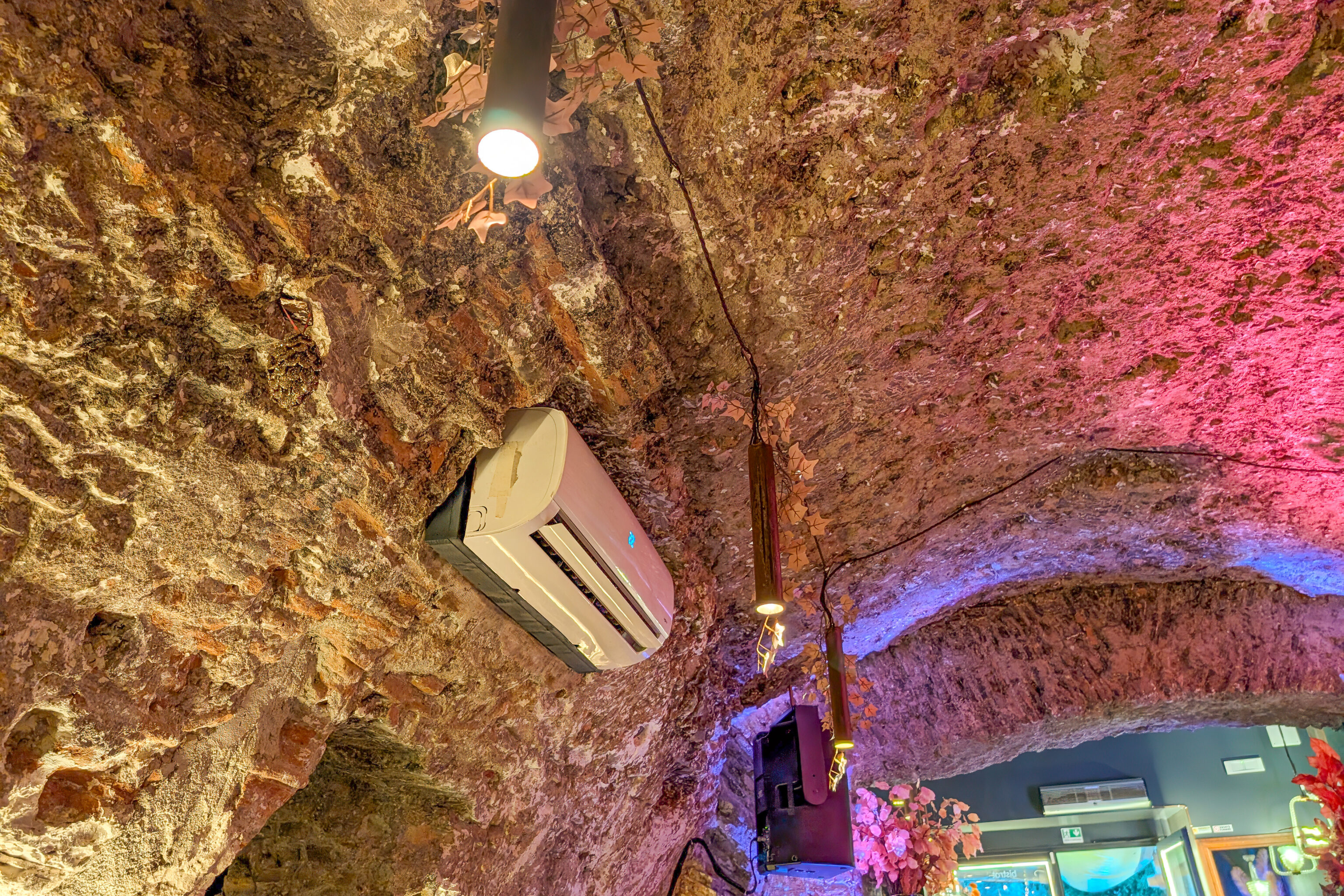
We turned left at the next corner onto the Via dei Cerchi and quickly reached our destination, Guenda.
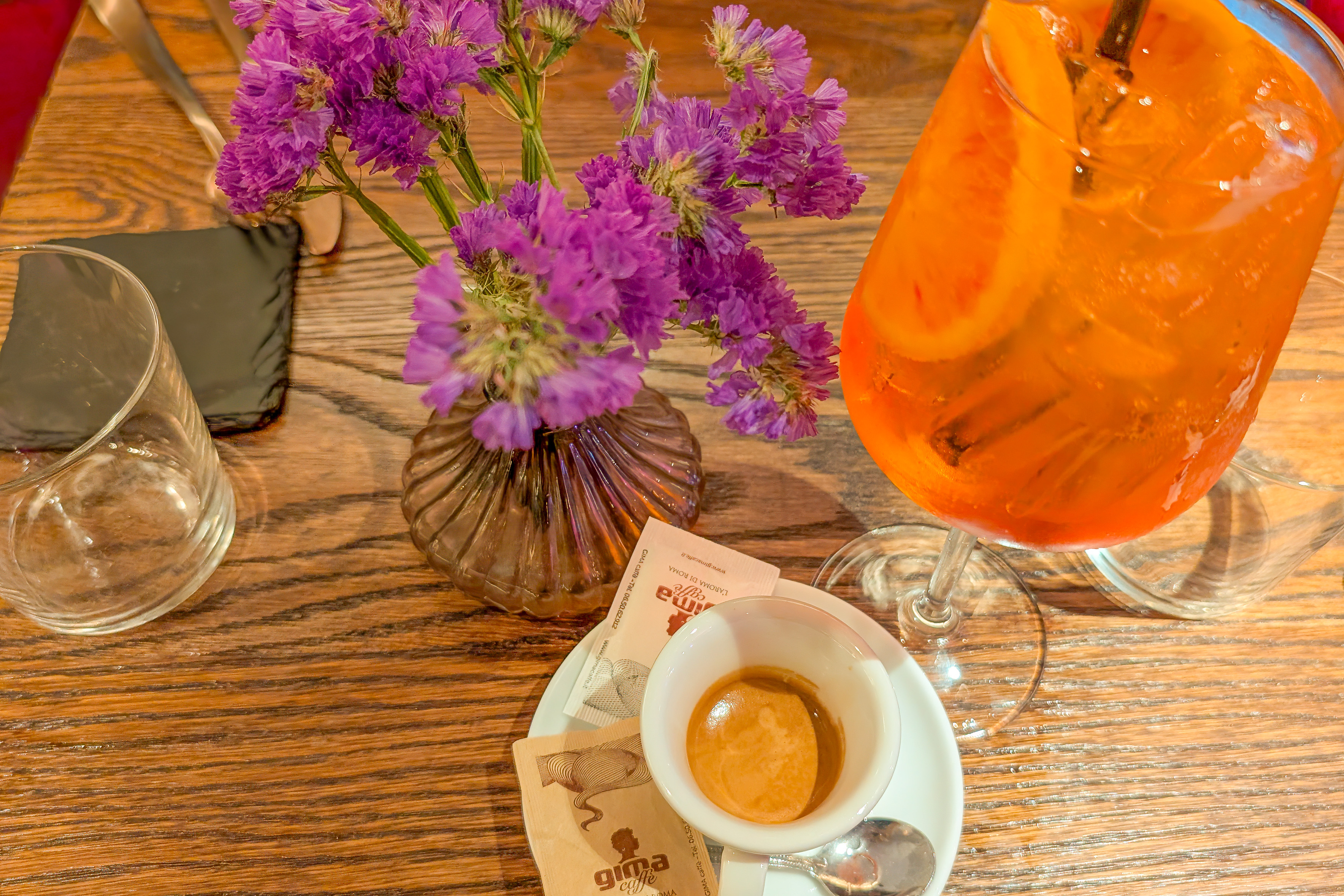
We, of course, had some espresso with a drink as well.

We ordered the carbonara, our first time having this dish in Italy.
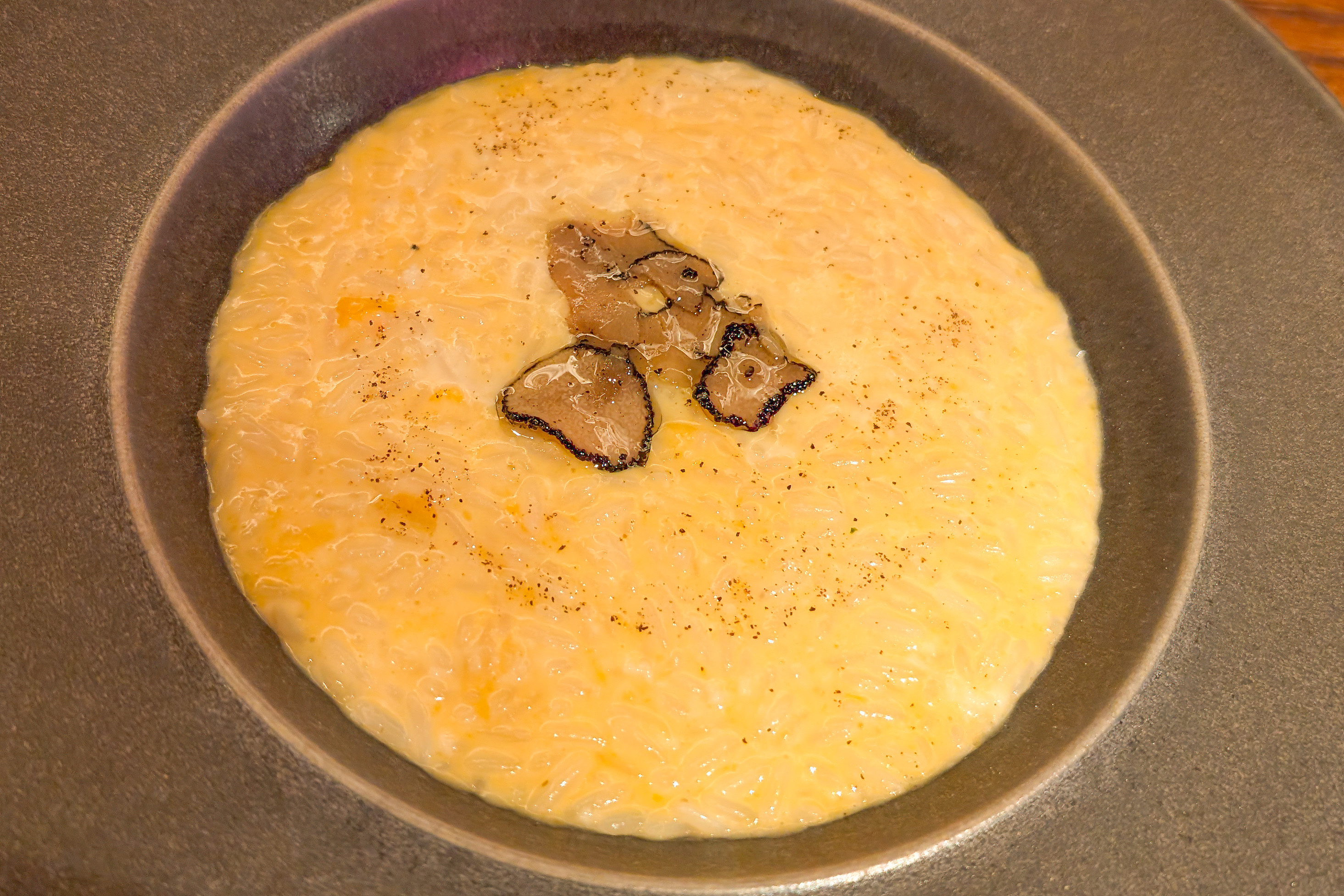
We also ordered the risotto.
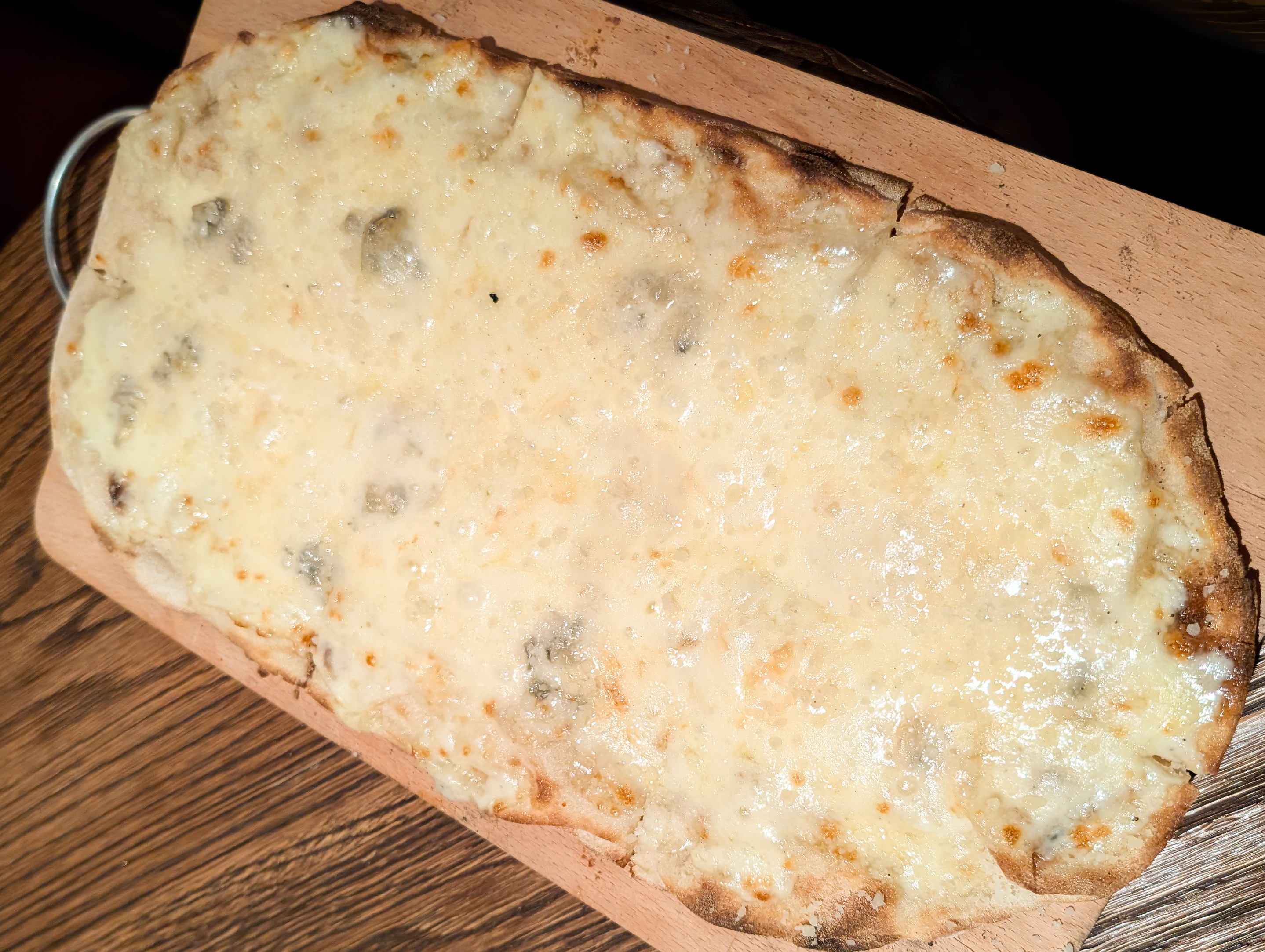
And we had a four cheese pinsa, which is basically an older form of pizza. It was an excellent dinner!
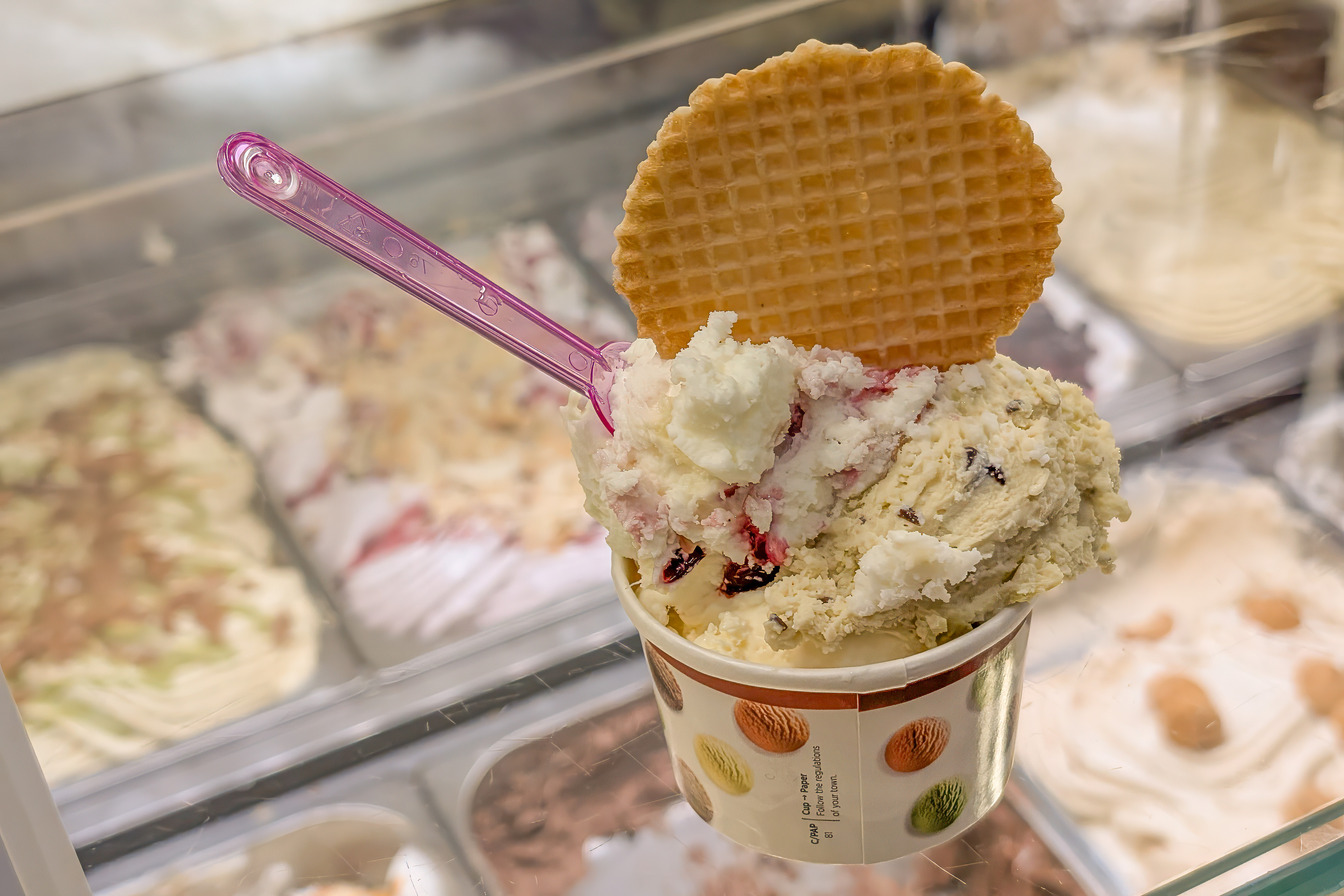
After dinner, we visited the Gelateria ai Cerchi Flavia which was just a few doors down. We had a gelato with pineapple, panna cotta, and crunchy pistachio.
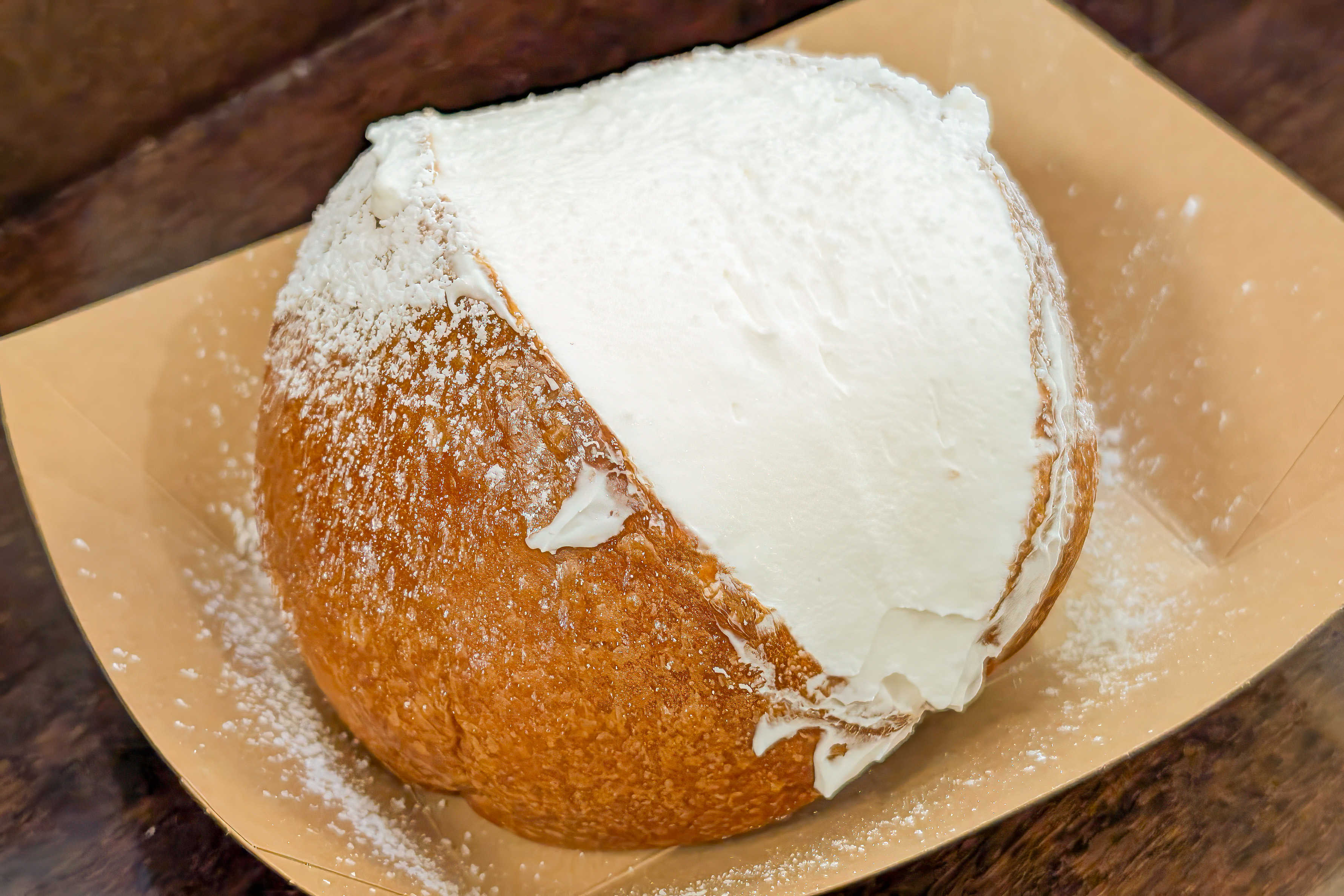
We also got a maritozzo, a kind of Roman pastry. It’s something like a good dinner roll almost cut in half and filled with a very light cream. All was good!
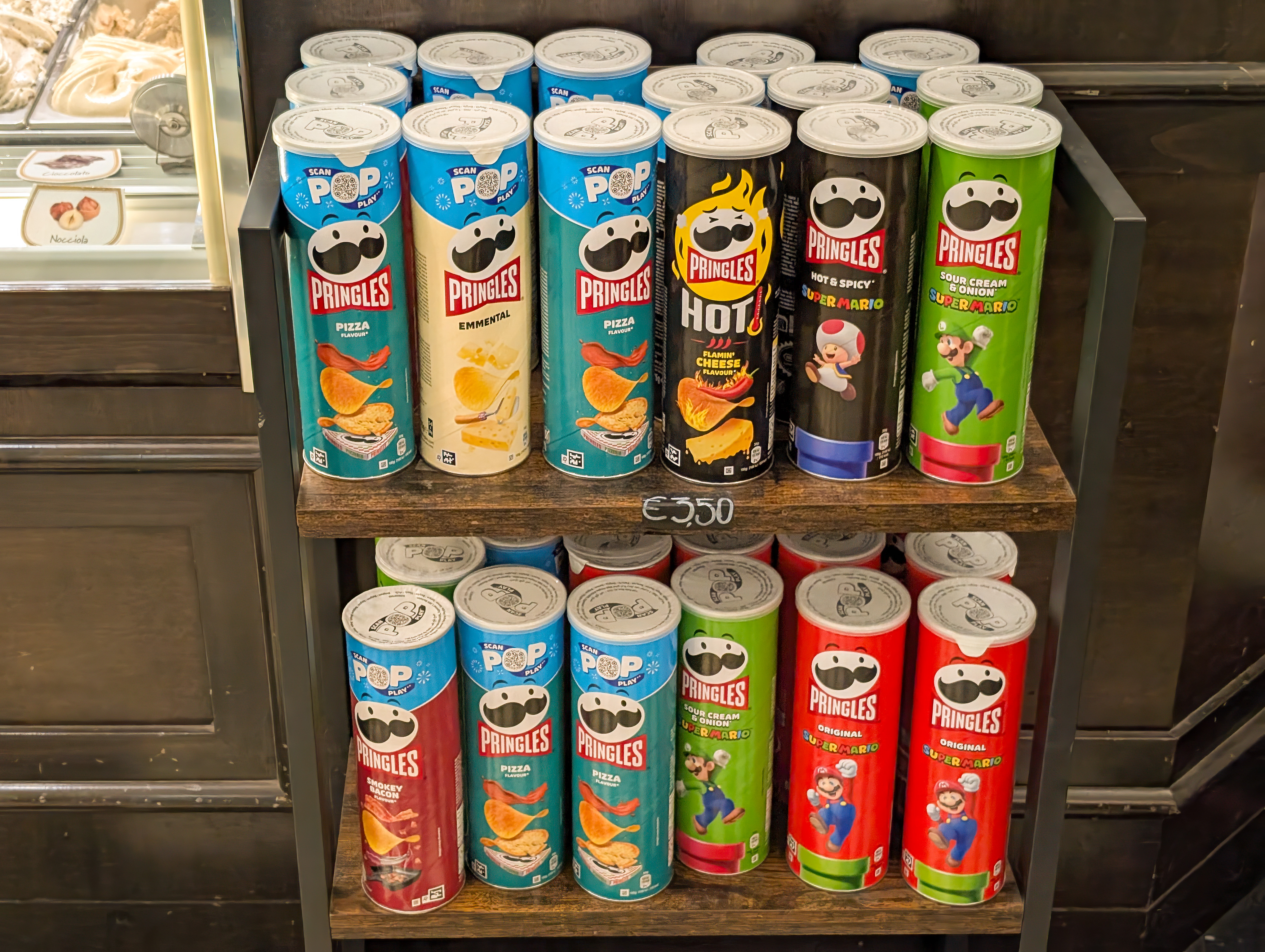
We were surprised to see that Italy has a variety of Pringles flavors. It felt a bit like being in Japan! They even had the most famous Italian plumber duo, Mario and Luigi! And their little buddy Toad.
We then caught a bus from the nearby Cerchi/Bocca Della Verita bus stop to return to the W to end the day.
- Dr. Steven Zucker and Dr. Beth Harris, “Capitoline Venus (copy of the Aphrodite of Knidos),” in Smarthistory, April 5, 2016, accessed April 30, 2025, https://smarthistory.org/capitoline-venus-copy-of-the-aphrodite-of-knidos/. ↩︎
